Notes From Don Pedrillo
Some suggested readings
With the Covid, Beth and I have had a lot more time to read. Some of the books we have read have turned out to be exceptional. We thought we’d make a list of some of the books that have had the most impact on us or that we found especially interesting. I’m going to include a couple of reads from years past that also were standouts. My descriptions can be supplemented by going to Amazon where comments are also available.
It was in the late seventies or early eighties when I found a copy of The Naked Ape, by Desmond Morris. This was a big game changer for me. Drawing from the field of Sociobiology, Morris’s claim was that a lot of human behavior could be explained by linking the past to our present in an evolutionary manner. Obviously this book isn’t going to be for everyone. I’ve included it because of the impact it has had on me personally.
The Grapes of Wrath, by John Steinbeck was also a standout. The Grapes of Wrath is a novel about a family in Oklahoma during the Depression who decides to move to California where they were not exactly welcome. Steinbeck was a Socialist which is apparent in the book. None the less, it’s a powerful story which captures the desperation of the family. Steinbeck’s ability to create strong scenarios is impressive. He had the ability to create very powerful images with his words.
A book that I fell in love with was Stephen Ambrose’s Uncommon Valor. It’s a factual account of the Lewis and Clark expedition. Ambrose was a wonderful storyteller. Both Lewis and Clark were exceptional people. They were both in their early thirties when they made the journey to the Pacific. They lost one man from a burst appendix (who probably would have died had he not have made the trip), and killed one Native. What impressed me was the incredible responsibility these young men took on. Historians believe that Lewis was bipolar. There is also speculation that during at least part of the expedition Lewis was in a depressed state, which makes his accomplishments even more incredible. Tragically, Lewis later took his own life. As a side note: Benjamin Rush was a leading physician of the time. Lewis studied under him before the expedition. Mr. Rush was a proponent of bloodletting. Thinking about the practice and how it is viewed today reminded me of the futility of viewing the past from a modern lens. I have come to believe that it has become a political tool. Groups conveniently choose who and what to isolate as it fits their agenda. I mostly ignore that argument. I’m more interested in how groups have evolved. Mr. Ambrose was a prolific writer, his Nothing Like it in the World was about the building of the Transcontinental Railroad. It’s another book that I regret giving away. He wrote several books on WWII, but almost entirely on the European theatre. I read several and all were very engaging, but I have always been more interested in the War in the Pacific. In reviewing his work, I see that he wrote a couple of biographies on Dwight D. Eisenhower. I don’t know how I missed those, but given his attention to detail and his ability to make a story come to life, they are both on my to read list. I did recall that he’d written a couple of volumes on the life of Richard Nixon. I have them both, but have never been interested. The same can be said for Bill Clinton. I have also never read anything on Abraham Lincoln
David McCullough has several books that I would recommend. He wrote two extensive biographies on John Adams and Harry Truman. His Path Between the Seas is an intriguing story of the building of the Panama Canal. Transportation of materials was a grand challenge. Mosquito ridden jungles added to the dangers of the project. Reading the section about William Gorgas’ breakthrough tying the mosquito to the illnesses which brought deaths from illnesses almost to zero makes the book worth reading. Mr. McCullough has several other good reads but these three are my favorites. McCullough is another great storyteller. When I read my first book by McCullough, I was transported to being a child, sitting in a semicircle, and devouring every word spoken by my teacher as she read us stories. I love stories. I have come to favor authors that are good storytellers. Because of Mr. McCullough, I later read a book called, The Mosquito: A Human History of Our Deadliest Predator, by Timothy Winegard. You don’t have to be a scientist to enjoy Winegard’s research. It’s a fairly easy book to digest.
Micro Histories, as the name implies, are events or subjects that are viewed as if under a microscope. Micro Histories explain how the events or subjects evolved and the political and economic effects they had on the world. For me, these are books that are difficult to put down until finished, and tend to be very, very interesting. A couple that I vigorously recommend are,
Salt: A World History, By Mark Kurlansky
Cod: A Biography of the Fish that Changed the World, also by Mark Kurlansky
Uncommon Grounds: The History of Coffee and How It Transformed Our World
The Power of Gold: The History of an Obsession, by Peter Bernstein, is on my to read list
A couple more novels that I can’t leave out are, Larry McMurtry’s Lonesome Dove and Nevil Shute’s A Town Called Alice. McMutry’s book is a story of a couple of ex-Texas Rangers who live in South Texas. When not quarrelling amongst themselves, the two (with a few other ex-rangers) are trying not to be killed by renegades or Indians. McMurtry is also a great storyteller. Some of his other books I found to be almost bizarre, but Lonesome Dove is a true masterpiece.
A Town Called Alice, is a story of Allied soldiers and civilians being held by the Japanese during WWII. I have more to say on this topic when I reach the books on the war in the Pacific. There is a bit of a love story intertwined In a Town Called Alice which is a contrast amongst all of the sorrow and brutality. I loved this book. I was really drawn to the characters.
I recently read a couple of books of two separate accounts of escapes from North Korea. They were, A River in Darkness, by Masaji Ishikawa and Escape From Camp 14, by Blaine Harden. I was pretty ignorant about the goings on in North Korea. Both books are pretty explicit in their descriptions about conditions in NK, which are almost beyond belief. Entire families are punished for crimes, real or alleged, for a single family member.
Beth and I have over nine years now living in Mexico and we are both grateful that this government has allowed us to be here. Having said that, neither of us has had to hold down a job, we don’t have kids in school, we don’t run a business. If we were involved in any of these scenarios, I don’t believe we could have lasted. To not exaggerate, not a week goes by that I don’t think about how lucky I was to grow up in America. These two books have drastically reinforced that feeling. For years Beth and I have been astounded by the things Americans complain about. If you want a peek inside of North Korea, I highly recommend either of these books. Aside from the information you’ll glean, I believe you’ll never look at America the same.
Skeletons on the Zahara, by Dean King, is a story of twelve American sailors who were taken prisoner in North Africa in 1830. The book recounts their struggles to survive and the hardships they endured. It’s well worth the read.
Into Africa: The Epic Adventures of Stanly and Livingstone, by Dugard Martin is the familiar story of the two American and British explorers. Much of the book centers on the search for Livingstone, but there are several sub stories. If you, like me, were intrigued as children by mysterious Africa, you’ll enjoy this book.
Swearing is Good for You, by Emma Byrne, is an intriguing read. As someone who has had a foul mouth for most of my life, it’s comforting to know that there might have been some scientific benefits to being a potty mouth. You’ll be entertained and might just increase your vocabulary.
The Shining Path, by Orin Starn tells about the rise of a Communist movement in Peru, beginning in the eighties. I had no idea. The story centers around a couple that went to great lengths to establish a Communist government no matter the cost.
A Majority of Scoundrels, by Don Berry is a detailed account of the American fur trade that took place in the West. The main years covered are from 1825 to 1845. If you know any of the more famous mountain men, you’ll find them in this book. More info than I wanted over tonnages of beaver taken with dollar amounts. There are some incredible stories of survival of men who wandered the Western wilderness in search for beaver. This too, was one of my favorite reads. If you are interested in the fur trade, this is a must read.
Rock music lovers will enjoy My Life, by Keith Richards. Keith is one of the guitar players for the Rolling Stones. I honestly don’t remember a whole lot of detail about the book but I do remember that I found it very entertaining. I think I’d already heard a lot of the stories. My favorite Keith story is when he fell out of a tree. I remember thinking, what was a man in his mid-sixties doing in a tree. That kind of epitomizes Keith Richards. I started an autobiography by the drummer of the Grateful Dead, but found it too decadent for my taste. I’ve read several autobiographies and biographies of musicians but Keith’s was the only one I found exceptional.
I really enjoy listening to and watching videos of Jordan Peterson. For that reason I bought his 12 Rules For Life. I couldn’t get through it. I suspect that it’s an important book, and I am sure I’ll make another attempt. I’ve put books down before, returned to them, and for some reason my second attempt was successful. I think JP is very analytical. I like the way his mind works. He seems to think carefully before he speaks.
I’m not big on books about politics. I did read a book about Fast and Furious because I didn’t understand what it was about. An exception to the rule is Thomas Sowell. I kind of think of him as a Will Rogers of politics. I also enjoy listening to him speak. I am currently reading Maverick, a biography about Sowell, by Jason L Riley. Sowell’s story is very compelling. Like JP, I admire Mr. Sowell. The only book of his that I didn’t enjoy was Black Rednecks and White Liberals.
Dead Reckoning: The Untold story of the Northwest Passage, by Ken McGoogan, as the name implies, is about the search for the Northwest Passage. Most of the voyages (there were several) were done before the advent of modern equipment. There were lots of frostbite cases and deaths from the cold. Politics kind of dirtied the search. The Inuits were often mistreated and mistrusted even though they were a great help to the Europeans. There are lots of names and dates in this one.
Another book that I am currently reading is War Before Civilization, by Lawrence Keeley. Keeley’s premise is that there have been very few cultures that didn’t engage in warfare and that deaths due to warfare were often more deadly when total populations and death percentages were taken into account. The beginning of the book was difficult but it has become very interesting. A new book, The Dawn of Everything, has recently come out with an opposite thesis. Their claim is that the advent of states led to more wars and higher death rates per populations. Although skeptical, I was intrigued. I viewed the comments on Amazon and found some compelling arguments against the book. I searched the authors and saw that one of the authors is listed as anthropologist/activist. When I was younger having the title anthropologist/activist would have been blasphemy. It certainly doesn’t encourage any sense of objectivity.
I’ve long been skeptical of the Idea that our Civil War was fought over slavery. I mentioned above that I hadn’t read a biography of Abraham Lincoln. I recently purchased, Lincoln Unmasked: What You’re Not Supposed to Know About Dishonest Abe, by Thomas L. Dilorenzo. I’ll admit that I didn’t finish the book. I found the book extremely disturbing. His thesis is that the war was fought to rid the country of a Jeffersonian states rights system to one of a country with a strong Federal government that favored large corporations. Far from the humble Lincoln, Dilorenzo paints Lincoln as a ruthless railroad lawyer that strongly favored Federal and corporate power. Dilorenzo claims that no other country fought a Civil War to abolish slavery. After a search, maybe you could possibly make an argument for Haiti. This is a skeleton that I am content to keep in the closet.
I failed to include any of James Michener’s books because he has a theme for each of his histories. If you enjoy the theme, they are good reads, but if you don’t they drag. For instance his book on Mexico centers around bullfighting which I was not the least bit interested in. The gentleman who reads his audiobooks is great. His voice is clear and captivating.
I read for entertainment and curiosity. I’m a lazy reader. I don’t normally worry about exact dates and specific locations (obviously there are exceptions). I like to rip through books and end up with a general understanding of the material. To give an example, I’d be hard pressed to write a biography of President Truman from memory, but I have developed an opinion about him personality and his presidency. I don’t read as though I am preparing for a test. For that reason, some of my summaries are a little thin.
The Attack on the Liberty, by James Scott, covers the attack on the USS Liberty by the Israelis in 1967. The book questions whether the attack was an accident as the Israelis claim or that is was intentional. The book draws attention to the murky, dishonest relationship between the US and Israel.
A Troublesome Inheritance, by Nicolas Wade, explores the possibility that IQ is affected by race. What I took away from studying IQ is the importance of helping young adults discover an area where they can become exceptional.
Honor and Betrayal: The Untold Story of the US Navy Seals Who Captured the Butcher of Fallujah, by Patrick Robinson, relates the story of three Navy Seals who were prosecuted for mistreating a prisoner on flimsy evidence. It became a political issue, which made discovering the truth all the more difficult.
The Aztecs, by Michael E. Smith, is an in depth study of the Aztec Culture. I found some areas dry and tedious, but if you, like me know little of the Aztecs, it’s an informative read. I had a university student to the house a while back and was surprised to hear that one of his professors denies that the Aztecs sacrificed humans. The professor told the class that the Spanish conjured up the lie to justify the Conquest.
Another good storyteller is James Bradley. Bradley wrote Flags of Our Fathers, which Clint Eastwood went on to make into a motion picture. The China Mirage: The Hidden History of American Disaster in China, is one of my favorite reads on the list. The book details how the British and later the US forced trade on China. The opium market became a major product that made millions for British and American businessmen, including the grandfather of Franklin Roosevelt. It’s a book that’s hard to put down, even though it’s a long read. Another great book by Bradley is Flyboys: A True Story of Courage. Flyboys is set in the Pacific during WWII. I somehow missed the Imperial Cruise, which I’ll be starting in the next couple of days. I highly recommend reading Bradley, he’ll keep you on the edge of your seat.
The rest of my list centers on the war against Japan during WWII. If that’s not an area you are interested in, you might want to stop reading.
James Swift wrote an essay called 5 Reasons Japan was more terrifying than Nazi Germany. The complete essay can be found at: https://thoughtcatalog.com/james-swift/2016/12/five-reasons-imperial-japan-was-more-terrifying-than-nazi-germany/
Briefly, his reasons are:
- Imperial Japan conquered and occupied a much larger part of the globe
- The Japanese held those areas for a longer period of time
- They probably killed more people than Hitler
- They killed in more gruesome ways than the Germans
- They really have never apologized
In my opinion, the Japanese were monsters during the war. They were savage and brutal beyond belief. I can’t imagine what it must have been like to have fought that war with the possibility always in your mind of being taken captive, especially for pilots. When America entered the war, we already had an idea of how the Japanese were going to fight. We knew how they had treated the Chinese. Negative thoughts about the Japanese were reinforced quickly as our troops discovered mutilated bodies of Americans that had been tortured.
My list of books covering the war in the Pacific is long. I don’t have a clear memory of each book. But I can assure you that if it on my list, it was a read that I valued. I think in most cases the title of the book is self explanatory as to its content. The fighting in New Guinea stands out due to the terrain. It must have been the most inhospitable place on earth to wage war. On many islands like Saipan and Okinawa civilians had been brainwashed by Japanese soldiers to believe that American soldiers were going to commit horrible atrocities against them, so many civilians chose to kill themselves and their children. The banzai charges of up to five thousand men were terrifying. Remains confirmed that the Japanese were eating Americans in some cases. The Building of the Burma Railway by starving Allied soldiers is difficult to read about. The battle of Manila was the epitome of Japanese brutality against civilians. The stories of how America slowly gained air and sea dominance is hair raising. Our submarine fleets along with air power slowly choked Japanese supply lines that left thousands of Japanese soldiers without food or ammunition. I believe it while reading Retribution by Max Hastings, that I thought of the term, bringing down the wrath of God. The Japanese surly must have felt that way. Towards the end, the Japanese suffered horribly. The politics of the war is frustrating. Egotism cost the lives of many soldiers, sailors, and airmen. But there were many great leaders. I don’t think it’s a stretch to say that the American industrial machine was very instrumental for our victory. Through my reading about this war I learned a lot about sacrifice, honor, bravery, fear, incompetence (when a sitting Congressman exposed to the media that the Japanese were setting their depth charges at the wrong depth, (an error that the Japanese quickly corrected), and terror. The submarine commanders especially stood out. Their bravery and intelligence was admirable.
My list of books covering the Pacific War are as follows:
If you don’t have a lot of time to read but are interested in the war. My recommendation for a single read is The Conquering Tide, by Ian Toll. It’s a magnificent book.
Helmet for My Pillow by Robert Leckie
War Beneath The Waves by Don Keith
The Galloping Ghost by Carl P. Lavo, about a submarine commander. Great read.
The Bedford Boys by Alex Kershaw, follows the boys from one town who served in the Pacific
Goodbye, Darkness by William Manchester
Race of Aces by John R. Bruning, competition between pilots in the Pacific
Saipan by James H. Hallas
Ship of Ghosts by James D. Hornfischer
Guadalcanal Diary by Richard Tregaskis
The Ghost Mountain Boys by James Campbell
Behind Japanese Lines by Ray C. Hunt
Challenge for the Pacific by Robert Leckie, the battle for Guadalcanal
The Pacific by Hugh Ambrose
Red Sun Setting by William T. Y’Blood
MacArthur at War by Walter R. Borneman
Whirlwind by Barrett Tillman, the air war against Japan
USS Seawolf by Gerold Frank
The Conquering Tide by Ian W. Toll
Pacific Crucible by Ian W. Toll
The War Below by James Scott
The Burma Air Campaign by Michael Pearson
As Good As Dead by Stephen L. Moore
Pacific War Uncensored by Antony Ferguson
Okinawa by Robert Leckie
Neptune’s Inferno by James D. Hornfischer
Never Call Me a Hero by N. Jack Kleiss
Lost in Shangri-La by Mitchell Zuckoff
The Things Our Fathers Saw by Matthew A. Rozell, Vol I
Indianapolis by Sara Valdic
My Hitch in Hell by Lester Tenney
The Fleet at Flood Tide by James D.Hornfischer
The Burma Campaign by Frank McLaynn
Disaster in The Far East by John Grehan
Operation Vengeance by Dan Hampton
Tin Cans and Greyhounds by Clint Johnson
Their Backs against The Sea by Bill Sloan
The Battle for Leyte Gulf by C. Vann Woodward
All Hell Let Loose by Max Hastings
Voices of the Pacific by Adam Makos
Escape from the Deep by Alex Kershaw, one of my favorites
The Last Stand of the Tin Can Sailors by James D. Hornfischer
Pacific by Simon Winchester
The Heart of Hell by Mitch Weiss
I know I am leaving out some books, especially concerning prisoners of war, but I got tired of digging.
An unplanned blog
This was an unplanned blog. While reading a book by John Toland I came across this passage: “Its human nature that repeats itself, not history.” At two in the morning this struck me as a very profound and obvious statement.
Like most I grew up with Churchill’s quote: “Those who fail to learn from history are doomed to repeat it”. While I’ve always enjoyed the quote, and even liked to believe it’s true, I knew that there were too many examples when simply knowing about an historical event wasn’t a sufficient deterrent to keep it from happening again.
From the second I began to consider human nature as part of the equation, repetitive irrational decisions made more sense.
Putting the blog on hold
I pondered for over a year what to say in this blog. In fact, I wrote it several times and ended up deleting each time.
In my last blog, I commented on how my new neighbor had failed for over a year to make some kind of outhouse. My neighbor, his family, and everyone who visited, shit wherever they chose.
Out of the four hundred and seventy-eight people who read the blog, no one found that practice disgusting enough to comment on. I was pretty perturbed.
At first I thought, do people feel such contempt about Mexicans that they just assumed that’s how Mexicans are. But I had made it clear that is not normal here. I considered that people were apprehensive about criticizing a Mexican. That didn’t make sense to me. Since when is it inappropriate to condemn bad behavior?
I could or cannot fathom not being sympathetic enough to call out such uncivilized behavior if someone told me their neighbor was defecating in their yard.
After some research, I discovered that there are over two billion people in the world who openly defecate. Hundreds of thousands of people (mostly children) die or become gravely ill from the practice.
Finally a good friend (an American) confided that in his opinion no one had commented because of political correctness. I suspect that he is right. Given the consequences of open defecation, the practice, I’d argue is an open for discussion topic.
This led to another search about anti free speech movements in America. It turns out that there have been a few. It seems to me that the movements are usually led by bullies (often for personal gains), or by do-gooders who believe they have the moral authority to insist that everyone conform to their beliefs. Do-gooders often turn into bullies.
I’ve decided that until this latest attack on free speech is eliminated, I am going to put my blog on hold. After living here for over eight years I have made some observations, and have perceptions I would like to share. Given the present climate I don’t feel comfortable expressing them here on my blog.
I looked into starting a forum that would allow people to discuss books that they have read. I have taken to reading a lot and thought how I would love to share some of the incredible stories I have read. I would also love to hear from others, especially receiving tips on good reads. I was ready to download an application for a forum when I got the idea of checking out some existing forums. I’m glad I did.
It seems to me that debates have become more hateful. People are quick to label, to demonize those with opposing views.
In a way, I have the luxury of living in a bubble of sorts. I read no news, but do see recommended videos on Youtube. Usually reading the titles is more than I care to see. You can delete the channels but others pop up like flies.
If you’d like to communicate through email (more private), I’d welcome any discussion on books or about Mexico.
To those who read my blog, it was very special sharing those first years here. Thanks for taking the time to read them.
My email is [email protected]
A Change in Plans
When we first put our house up for sale, there was a lot of interest. For one reason or another, we could never make a deal. Our asking price in pesos was quite high, so we were dealing with a small portion of the population.
As we waited for a buyer, Beth discovered a dosage of lithium that kept her stable with minimal side effects. We also discovered that going to fiestas was one of the things that could set Beth off. The noise and events of a fiesta made it difficult for Beth to fall asleep once we returned home, and often the effects continued for days. Given Beth’s problem with fiestas, and the fact that I don’t drink, we stopped going to fiestas.
Eliminating fiestas from our regiment has also reduced the number of visits we receive. We spend a lot more time alone. We’d never been social butterflies in the States choosing instead to read, watch documentaries, and browse the internet. With all the free time, we’ve been able to return to our earlier pursuits. We don’t watch television but have a Netflix account which we might end.
We also found a local doctor that understands bipolar better than most. We are both very comfortable with her. Sometimes office visits last up to an hour. She seems to be as interested in us as we are in her.
As Beth began to recover, we both regained a renewed interest in Oaxaca and began to question the move back to the States.
Also, when the word got out locally that we were selling; we received multiple calls and visits from friends reminding us that we are not here alone.
Our second thoughts about moving grew to us both being adamant about staying. We are both content with the idea of living our lives out here.
Since our decision to stay, we have applied for and received our permanent residency. We’ll never have to reapply again, even if we leave Mexico for years.
Flying is hard on Beth but we’d like to try a trip to Washington maybe next year.
We are having a new well dug behind our house. I’m guessing the location is about twenty five meters higher than our first well. We are presently at twenty three meters of depth on the new well and have hit water. Hopefully, in another three or four meters, we’ll have enough water to live with.
Our first well was dug with a small sledge hammer and chisel. The new workers are using a jackhammer. Still tough, but much easier and faster. At twenty three meters, getting in and out of the well is a major challenge. I need to give thanks to Humberto for his generosity. The well would not have been dug without him.
Starting the well.
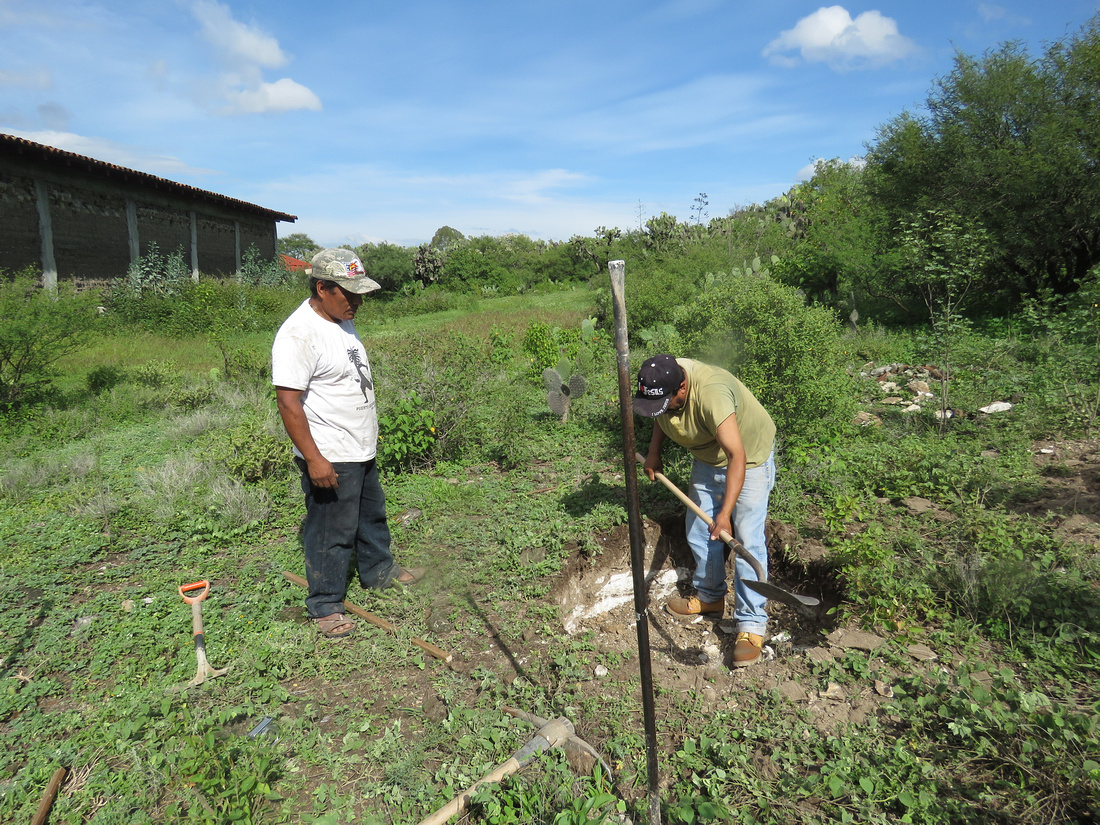

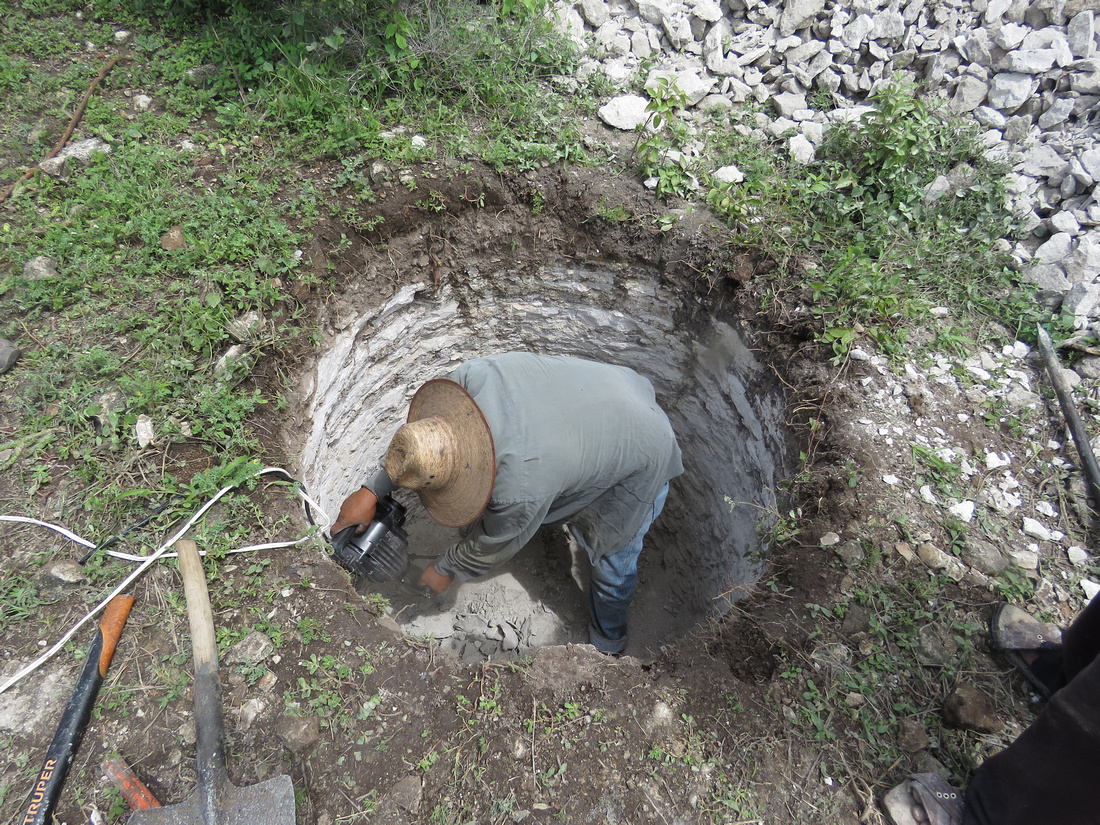

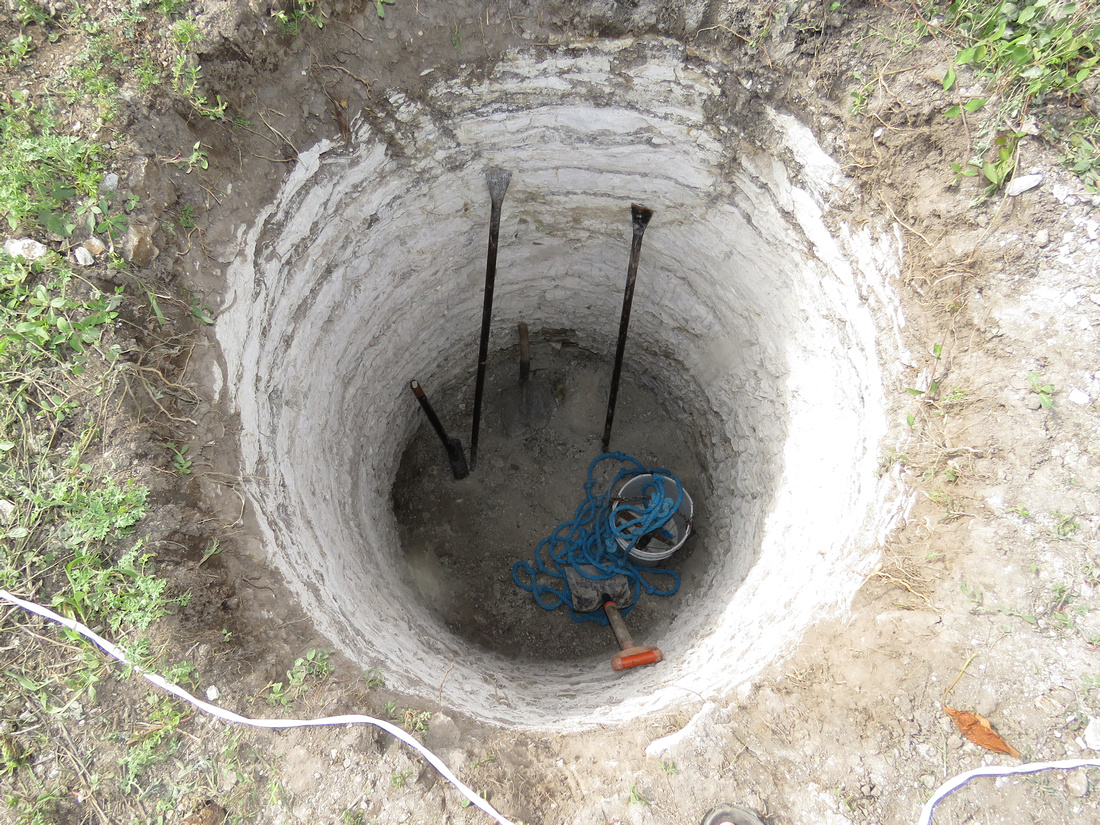

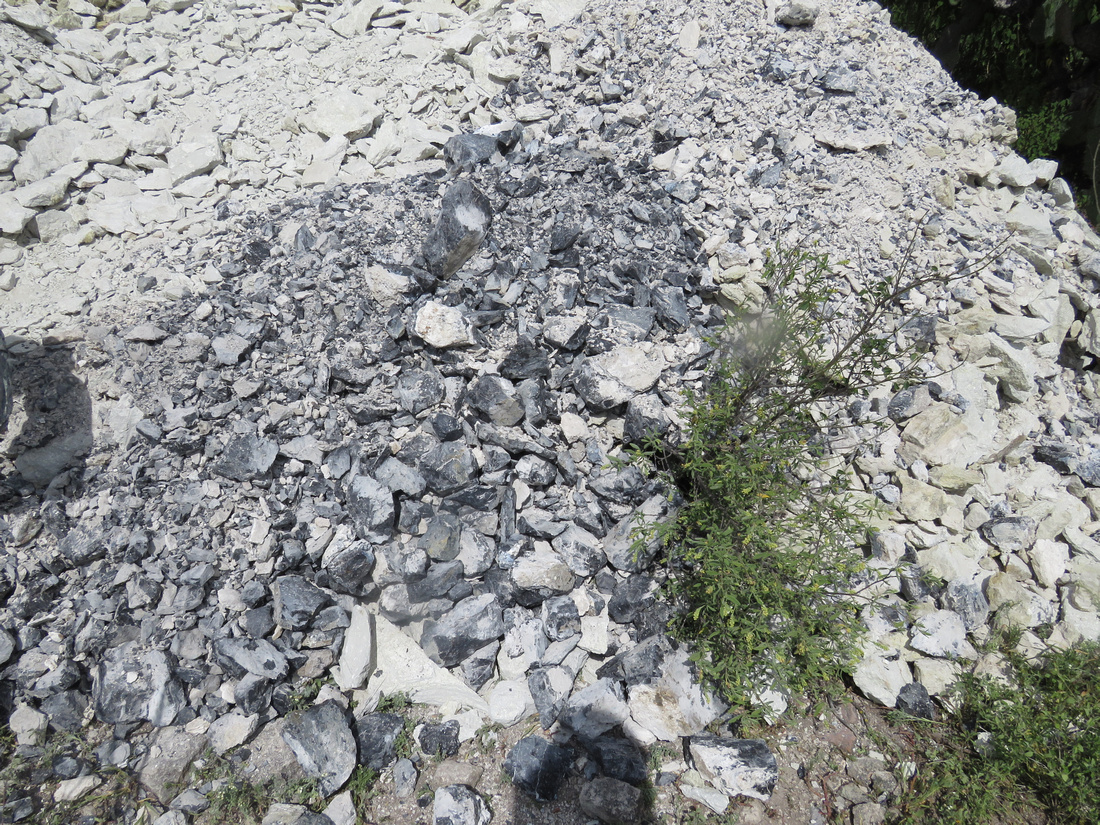

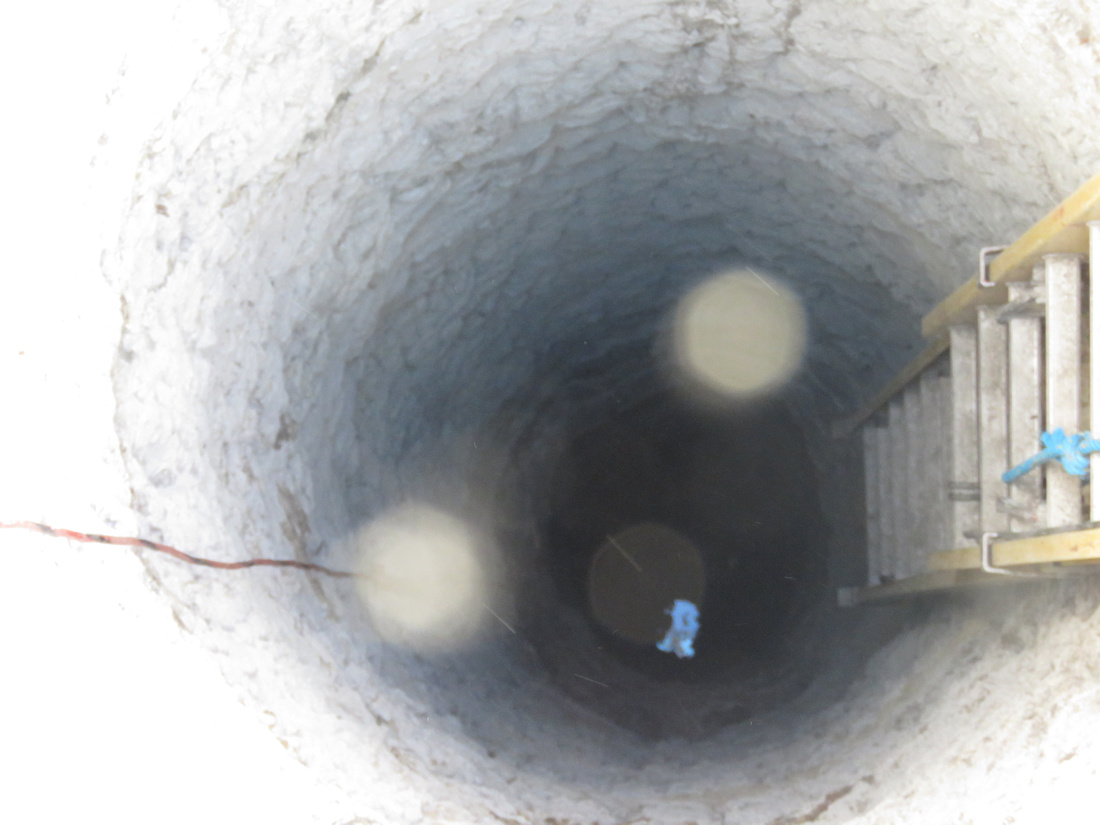

Our first bucket of water.
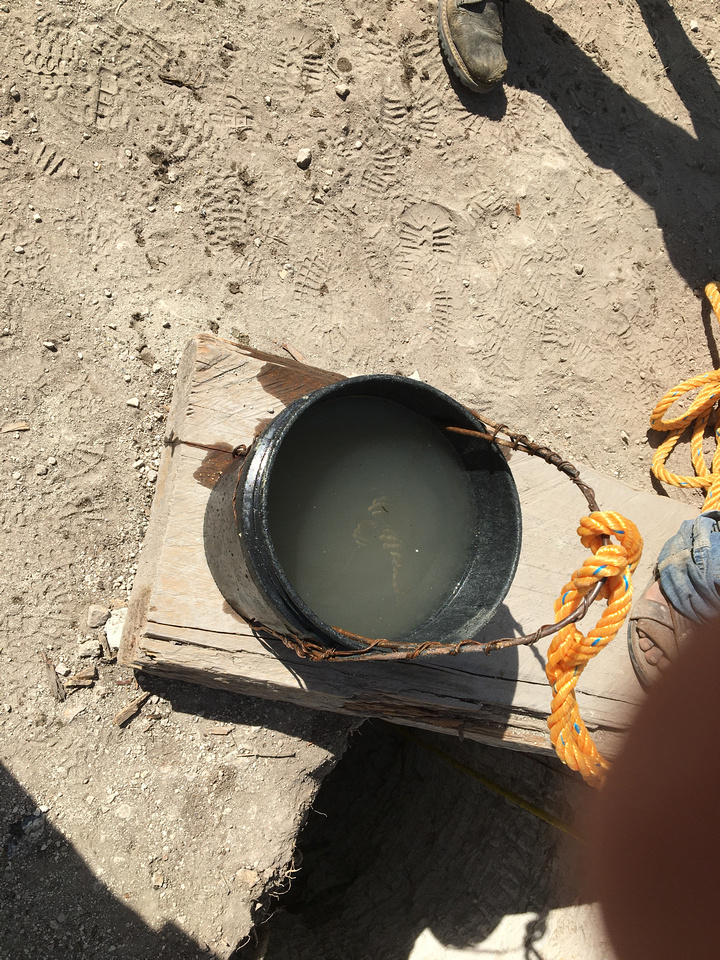

Beth and I love traveling to Cuajimaloyas. About eight miles past Cuajimaloyas is a small town call Llano Grande. In this mountainous region it’s difficult to find a stretch of level land that’s more than twenty meters long. The town of Llano Grande must be a couple hundred meters long and almost as wide. And it’s level. After having lunch in a restaurant/ general store the owner allowed me to video the interior. It reminds me of a general store from the past. It’s loaded with merchandise, made of wood, lots of old nick knacks, and the owners make you feel at home.

One dark cloud that hangs over us is our first full time neighbor. Aside from being dishonest, after he’d built his little wooden shack, he took over a year to build a bathroom. They just went wherever they wanted. And as family and friends came to visit, the accumulation of excrement multiplied. I understand that in large cities on the West coast of the United States, this might not be a big deal, but it is here. We were at first shocked. As time went on our shock turned to disgust, and then to anger at their lack of common decency. This is something we’d not experienced since our retirement. To make matters worse, the family had speears in the US which made it more difficult to understand this kind of behavior. As their home is only fifty meters from ours, our concerns over health issues escalated. I finally confronted the owner and he did build an outhouse. I’m still amazed that he chose to do all sorts of projects rather than build a simple outhouse.
I’ve made hundreds of photographs of the Sunday market in Tlacolula, but photos lack the movement and sounds of the market. A few weeks back I decided to video the market. The lack of people in the videos is due to our early arrival at the market. By noon many parts of the market are literally shoulder to shoulder with people. Many people from the outlying indigenous villages do not like to be photographed. I’ve always been respectful of that fact. In the video though, I chose to film an indigenous family. They weren’t happy about it, and I was uncomfortable, but I was determined to film their resistance to being filmed or photographed. It’s something that I still don’t understand.
Our purchases at the market are usually limited to fruits and vegetables. We make about three trips a month to a Walmart in Oaxaca and a trip to Sam’s Club once every two months.
A couple of videos of the Sunday Market. They are pretty much unedited.


I continue to ride my bicycle every day and recently switched to tubeless tires. Mickey talked me into switching and I’m so glad I took his advice. I haven’t had a flat since I switched.
Beth continues to crochet beanies and blankets for newborns. She still quilts and makes alterations for locals.
I’ve begun to give guitar lessons on Saturdays. This has proven to be quite difficult as I’m far from fluent. We manage to stumble along and my vocabulary has increased. I’d love to find an accordion player to make music with.
An emaciated puppy wandered into our yard about three months ago. We’ve fattened her up and she’s become part of our family along with our other two dogs. We rescued Big Boy from Tlacolula, and purchased Nellie from a farm down the road. I believe she’s a mix of Jack Russell and who knows what. She’s smart as a whip and has proven to be a loving companion.
Returning to America
The last thirty days ended up being our most stressful month here in Oaxaca. Beth began to have some pretty serious side effects from years of taking lithium for several years. A local doctor recommended that she slowly wean off the lithium and try marijuana to help her sleep. That worked but did little to curb manic episodes. Reluctantly we both decided that returning to the lithium was the best choice. Fortunately she’s able to take a smaller dosage. About a week after she began taking the lithium again, while putting on her pants in the morning, she was stung on her thigh by a scorpion. We’ve both been stung and although it hurts like hell for a while it eventually becomes similar to a bee or wasp sting. This time it was different. Throughout the day she began to develop new symptoms. Her lips and lower legs began to tingle. I took her to the hospital where they administered anti-venom and observed her for a couple of hours. The next day we went back to our doctor for blood work as she’d began taking the lithium. Some of the results were not good. She was prescribed additional medicines to counter her problems. Of course the new medicines had side effects. Through trial and error she has stabilized. She’s controlling her high cholesterol and high blood pressure with a very strict diet. What became apparent from these events is that if I pass before she does, there is no way that she could remain here alone. So we’ve decided to move back to the States. We believe that it’s best to do this move while we are still able. We are considering Washington State. Fortunately the decision to move back was an easy one. We didn’t have to go through the process of weighing the positives and negatives of returning to the States. We are in the process of making our house more saleable and are unsure how long it will take to find a buyer. Anyway, this could be our last blog. It’s likely though that we’ll post once the house sells. Neither of us feels any desperation so hopefully we can continue to enjoy our remaining time here. We’ve enjoyed writing the blogs and reading all of the comments. We expect to keep the donpedrillo@yahoo email, at least for a while.
6th Year Anniversary
My driver’s license from Texas expired so I acquired a Mexican license. It was a bit of a hassle but ultimately I was able to procure one. No eye test, no written test, and no driving test. Paid my eighty dollars and that was that. I won't have to worry about it again for 5 years.
We had to have one of our dogs put to sleep. He developed a neurological disorder and was in a lot of pain. He was born with several defects so we suspected his life might be short but when the time came; it was tough. Coby was the best dog I ever lived with. He was also the first dog that I never struck. Coby was kind, patient, very loving, and extremely loyal. It’s been months since his passing and we still miss him dearly. We buried him close to the house to remember him daily. Coby watched over our property like it was his. He used to sit on the front steps and just watch. There was always hell to pay when a stray dog wandered into our yard. His goal was never to kill, just to run off the intruder. Coby was with us for three years. The saying that dog is man’s best friend fit Coby to a tee.
This picture of Coby was taken in June 2017.
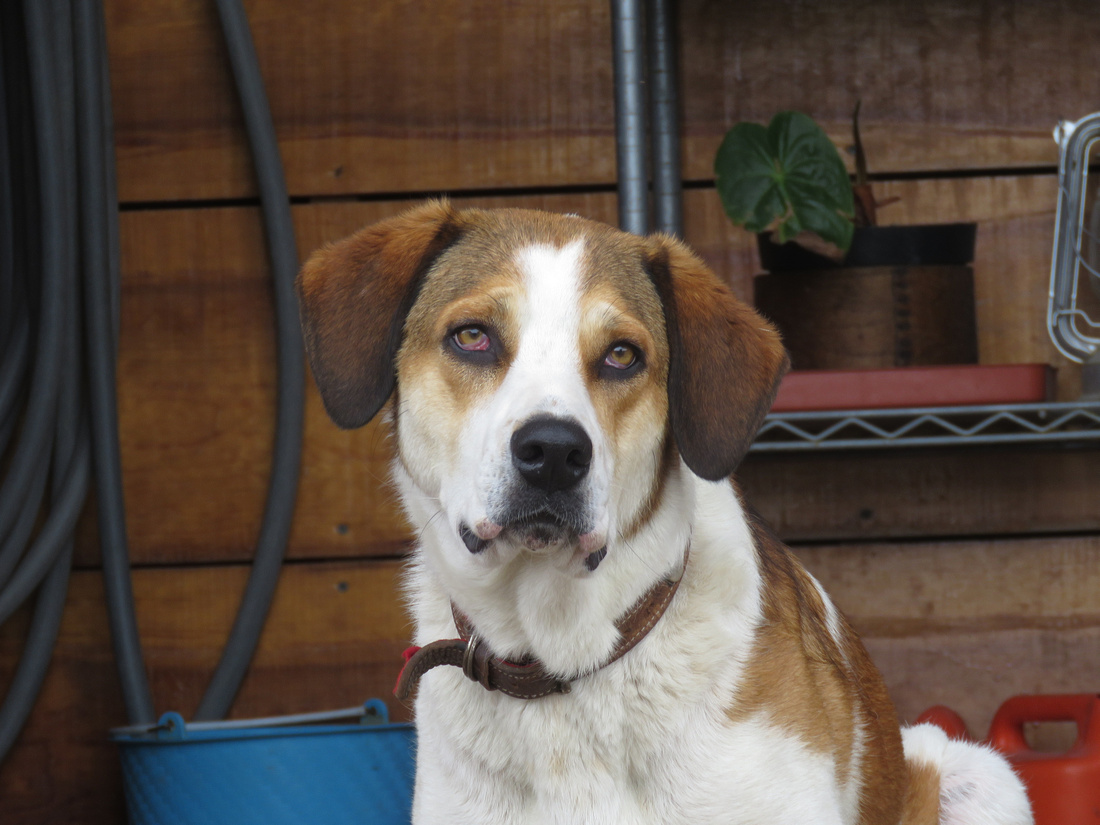

Scooter is over fourteen. We got him as a pup and brought him down when we moved. He mostly just walks around, sleeps, and eats. He’s always been a bit of a loner but it’s gone to the extreme. He has lost his hearing but we've had him so long he picks up on our body language and his loss is not an issue. He's a tough little guy. The eye was lost tangling with a German Shepard back in 2013.


One of our hens disappeared for a while and came back with a brood of chicks. We’ve had trouble keeping chicks alive so we gave them to a friend. They are a blast to watch though. We decided to keep the latest brood. There have been twelve chicks wandering around the property. Hard to believe there are twelve chicks under the hen. You can see that the chicks are pretty big. She is a great mom.


For quite a few Sundays I saw the same dog, usually lying next to someone that was selling fruits or vegetables. I always petted and talked to him. He looked like a chocolate lab and had a few years on him. A few weeks ago I ran into him again at the feet of a woman selling pineapples. After petting him I told the woman how beautiful he was. She then told me how unfortunate it was that his owners had moved and had left him to fend for himself. There are lots of stray dogs in Tlacolula, many on the edge of starvation. Because this dog looked pretty well fed, I assumed he had an owner. Apparently, others felt the same as I did and decided to feed him. With the permission of the women, I coaxed him to my truck with pork rinds. When we got to the truck, I tried to coax him in with the pork rinds. He wasn’t afraid. I concluded that he’d never been in a vehicle. I picked him up (wearily) and put him on the back seat. If he was afraid, he didn’t show it. He was very trustful. When we arrived home, he climbed down and immediately faced Lucky who was unhappy with his presence. Lucky has since accepted him. He suffers from a little arthritis, probably from years of sleeping on a cold surface. He sleeps in our protected patio now on a padded carpet. Because of his age I kind of think of our home as a retirement center for him, although after cruising around our property, he is limbering up and acting much younger. He’s already a part of our family and he loves to accompany Beth on her walks. He has also taken on the responsibility of protecting our home. He’s not aggressive but lets his presence be known. In many ways he’s like Coby. He’s a big old loving dog. We had a rooster once that we named Big Boy. Our new dog is now Big Boy. I hope we will have him around for years.
About a week after I wrote the above paragraph I made a trip to Tlacolula. While there I discovered that a woman had been inquiring about Big Boy. I’d been misinformed. The dog had an owner. I brought him back the next day. I ran into him a week later and could tell he was glad to see me. I missed him terribly. The following Sunday I again ran into Big Boy again. After playing with him for a while we continued on to the market. We took a mototaxi back to the truck. On the way back I saw Big Boy in front of his home with his owner. I asked the driver to stop so I could speak with the owner. I explained to the owner that I was sorry and that I’d been told that he’d been abandoned. We talked for a half an hour. As we were about to leave the owner asked if I was still interested in taking the dog again. The family lives in town on a busy street. She felt that Big Boy would have a better chance of surviving if he returned with us. The whole family was in tears but they all understood that Big Boy’s quality of life would be better with us. They were concerned that he would be happy with us. I assured them that he was very happy with us. I was asked if they could visit us and answered that they could visit any time. I could tell that Big Boy was happy to be at our home again. After two days he seemed totally content to be with us. We did learn that his name is Canelo (or Cinnamon in English) because of his color.
Unfortunately, the story doesn’t stop here. Two days after bringing Canelo home the former owners showed up. They’d decided they wanted Canelo back. We were crushed but gave him up. What a disappointment!
Incredibly, the Canelo saga continued. The Sunday after we’d given Canelo back, we ran into the owner at the market. She again asked us to take him. She said that the whole family was in agreement. This is the last time. If they change their minds, I simply won’t let him go. I don’t believe this will be the case though.
If it seems a little odd that we pursued this dog so diligently, it’s because Beth and I took such a liking to him. We both feel like he’s been searching for a home like ours.
This is Big Boy. What a great companion!!


We’ve never had good internet here. We are thankful when we have it, which is often confined to early in the morning. Sometimes there is no internet for days. We have a Netflix account and often watch YouTube. When the internet is down, we read more. If we are both in the middle of good reads, we’ll continue reading until current books are completed. There have been stretches of constant and acceptable internet. Thanks to Telcel, we have just obtained great internet. I tested the speed and discovered that it varies close to 9mps. That’s screaming for us. The price is about nineteen dollars a month.
If you are interested in the history of Mexico, an enlightening read is T. R. Fehrenbach’s Fire and Blood. I usually don’t read a book for pleasure more than once. I’m just about to finish up my third read. I honestly believe this book has been very instrumental in understanding the Mexican mind set. Losing is one thing; losing face is another.
After six years, Beth and I have finally realized that our comfortable SAS sandals are impractical. They are very comfortable but the soles are soft and cushy. They’ve proven to be magnets to the wide variety of thorns and stickers. I hate wearing closed shoes which is why it took six years to make the logical change. So, Beth and I have switched to low, hiking-type boots.
This is the sole of a pair of sandals. The white spots are thorns that have been broken off. This photo doesn't show the hundreds of thorns I was able to remove.
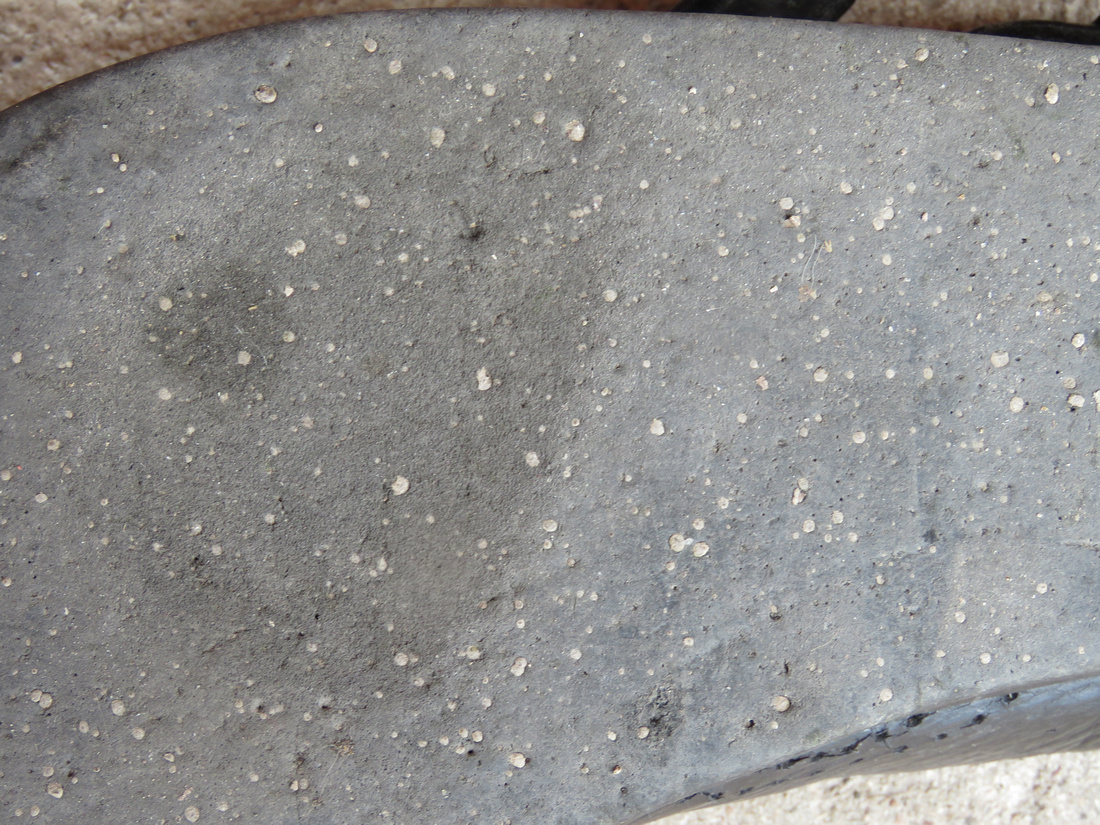

I spend hours listening to audio books. I have found these headphones to be the most comfortable. The hook fits over your ear and the spring loaded speaker lays against your ear. No discomfort whats so ever.
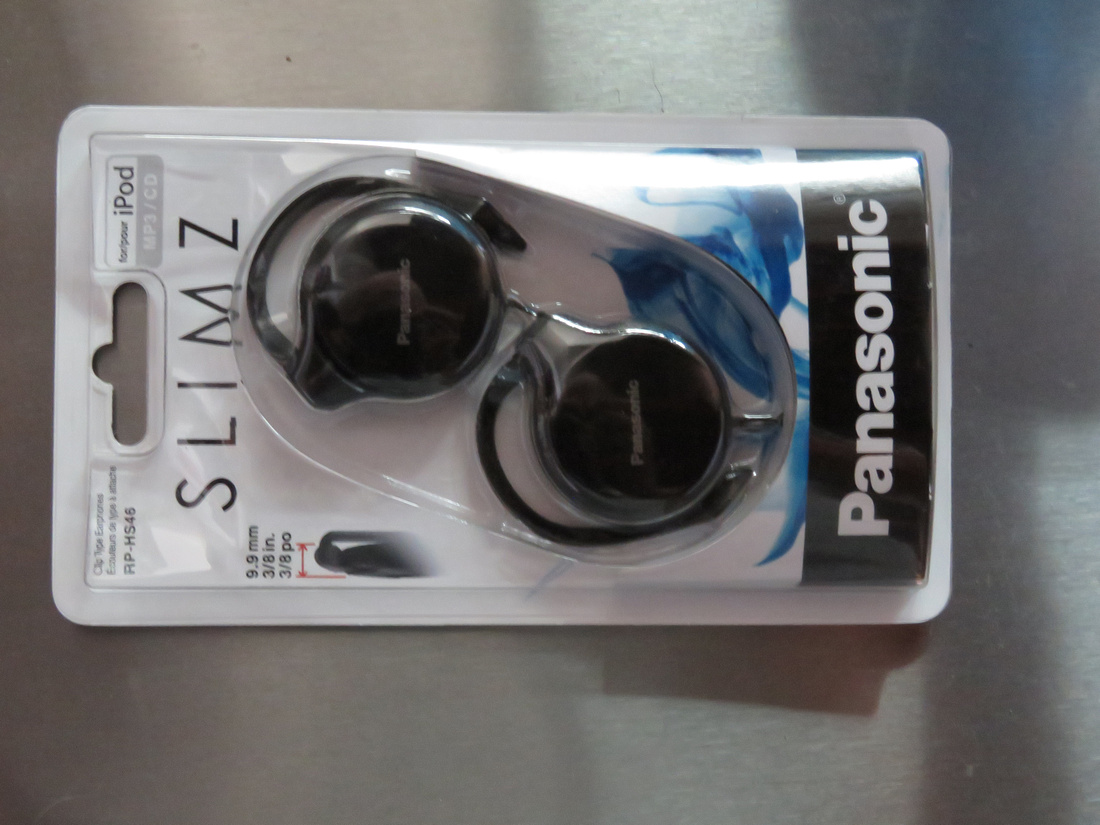

Last December we made our first visit to the Radish Fair in Oaxaca City. It’s held in the Zocalo (main square). People create statues and scenes from radishes. Some of them were pretty incredible. For most of the work radishes were used although corn husks and flowers were also used.
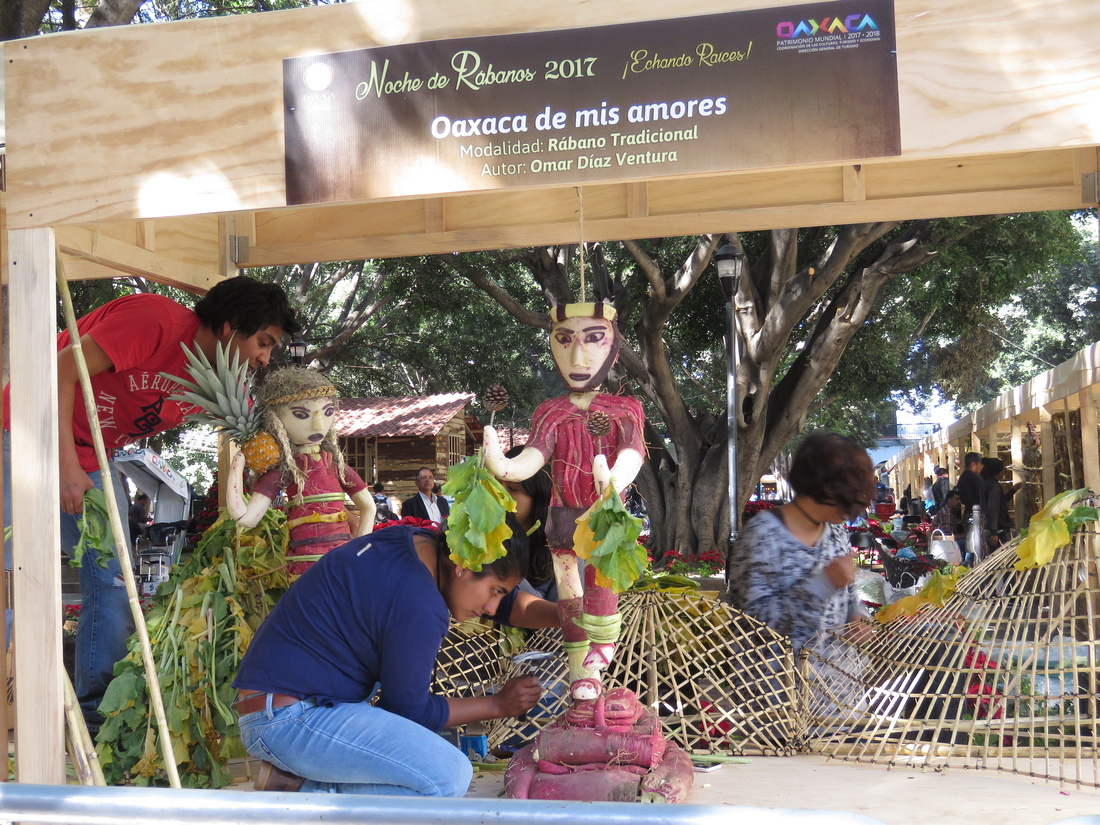

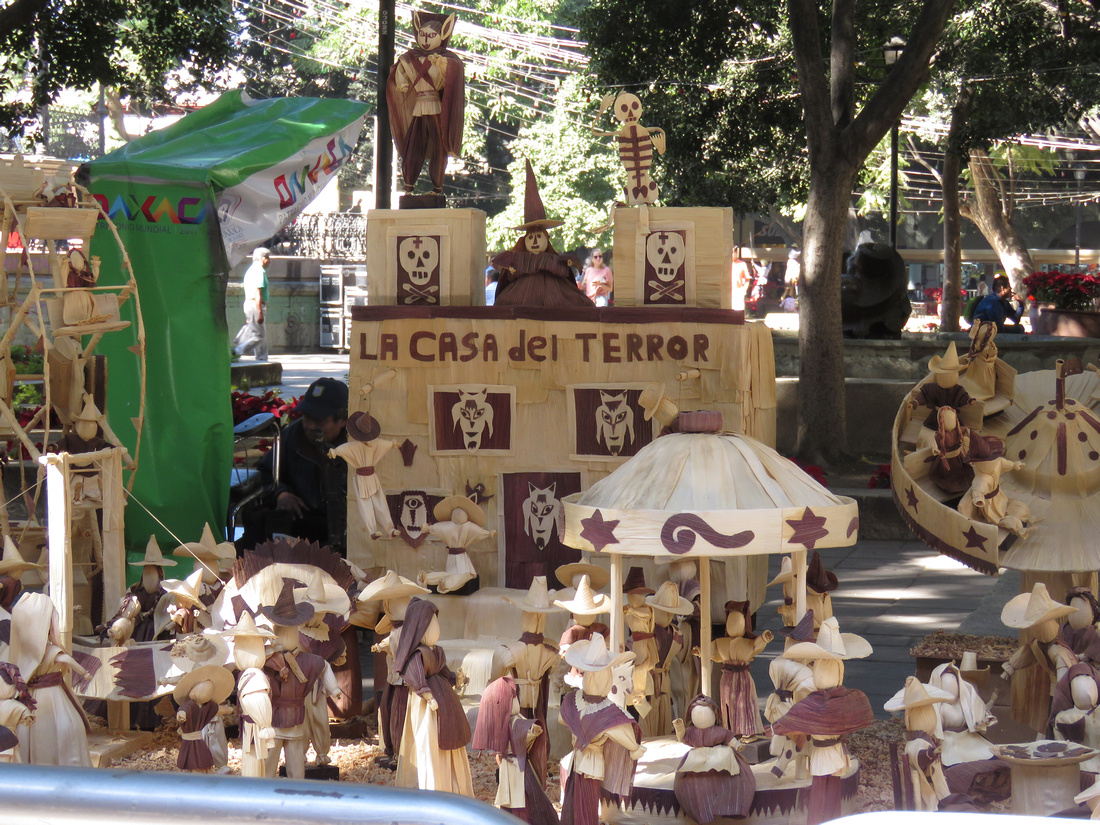

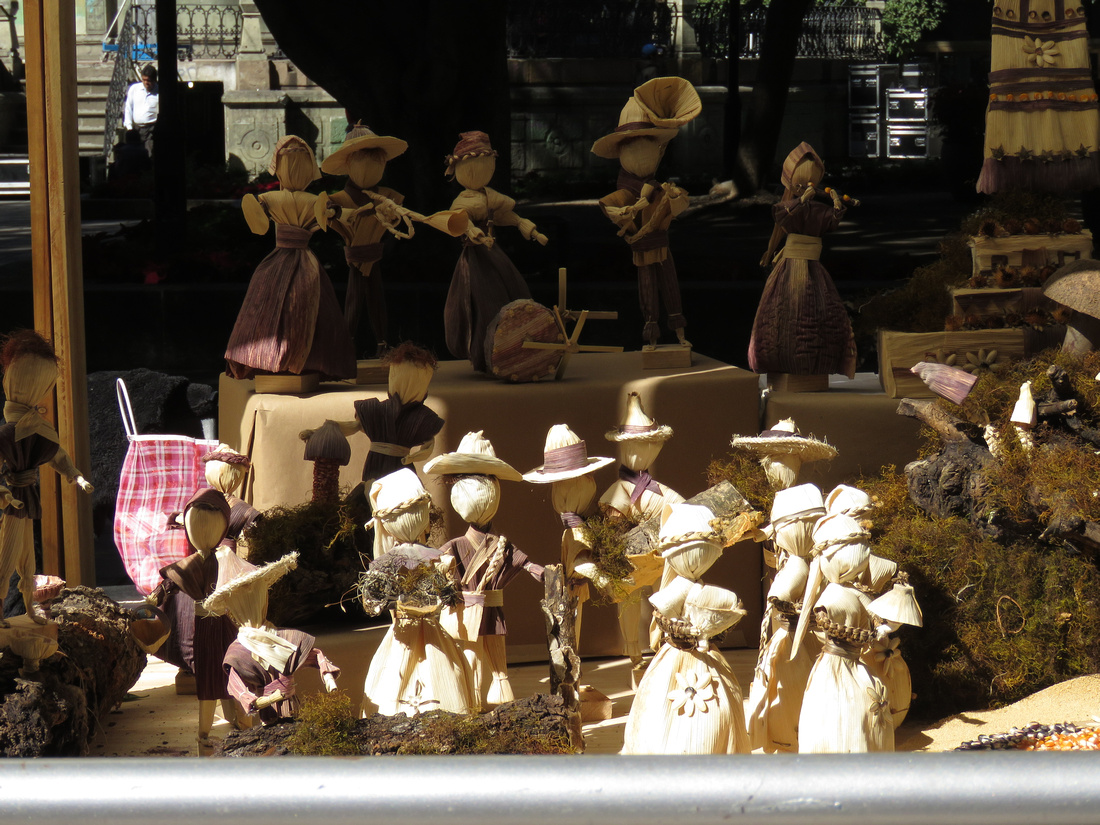

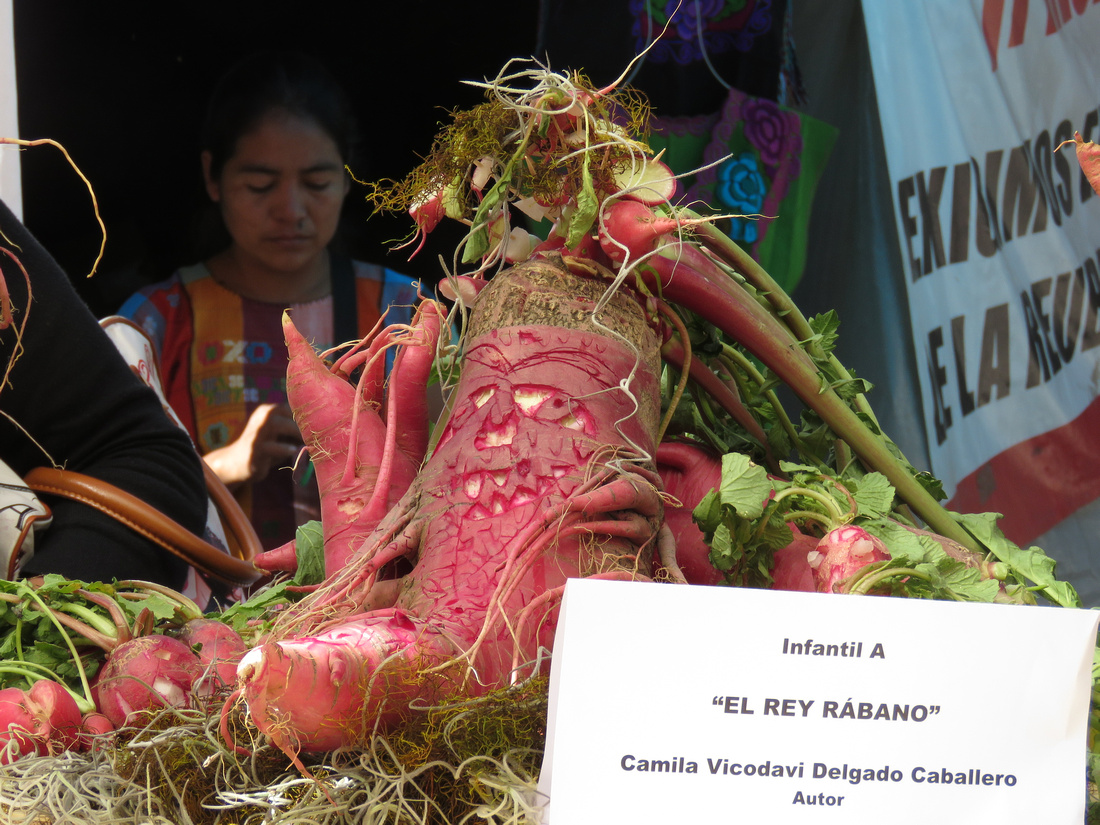

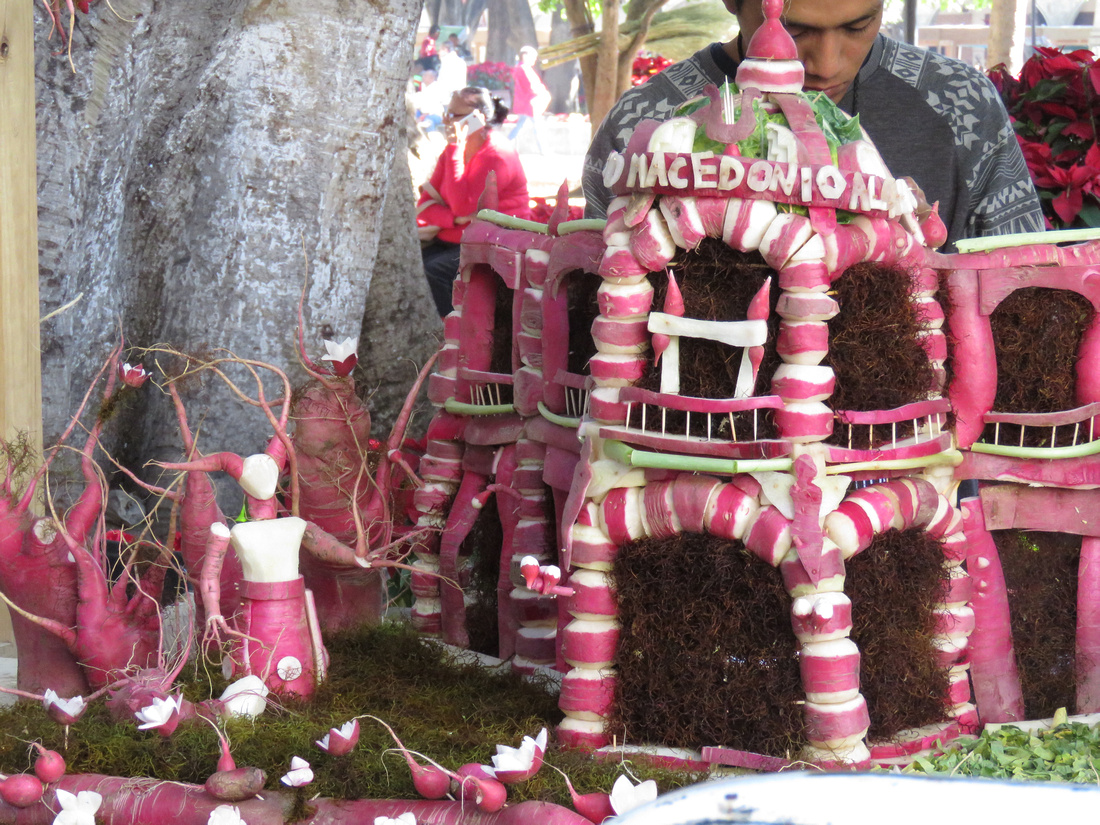

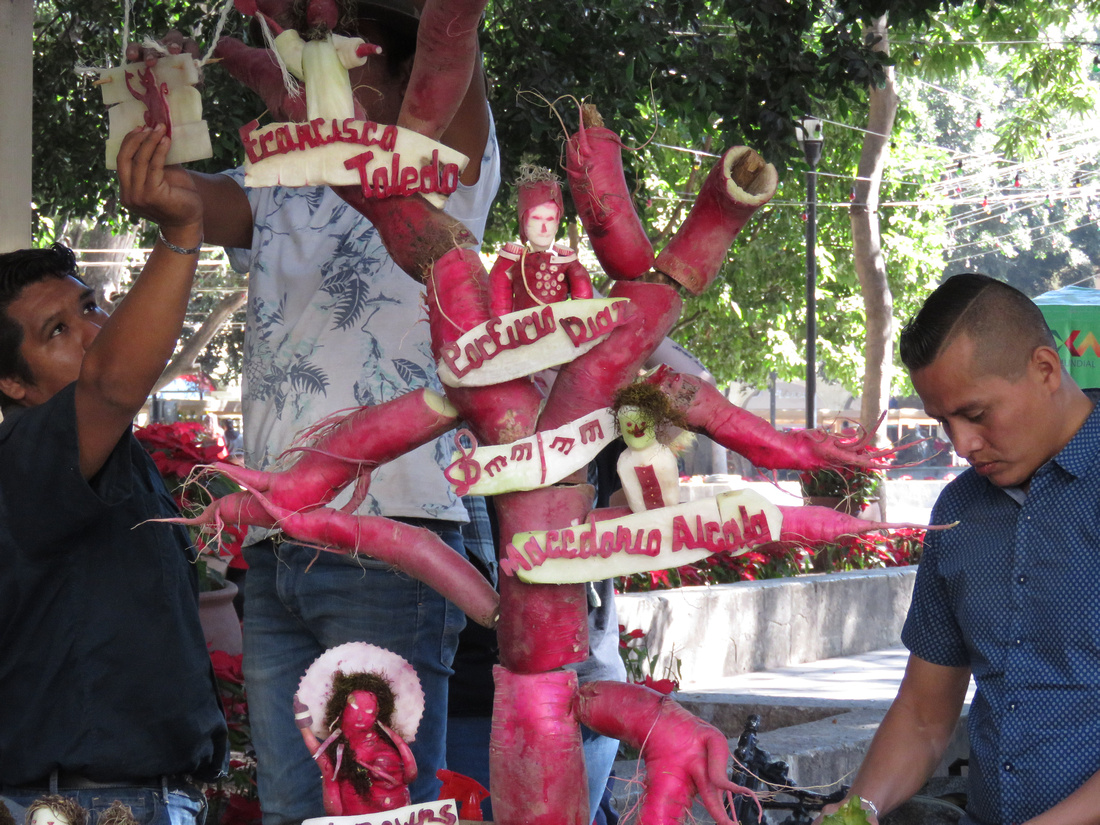





A fire that got out of control came a little too close to our property. Our property is cleared and it’s not likely that a fire could make it to our house; nevertheless, it was spooky watching the fire come closer and closer. The sound of the crackling didn’t help. I have a one inch hose outside just in case.
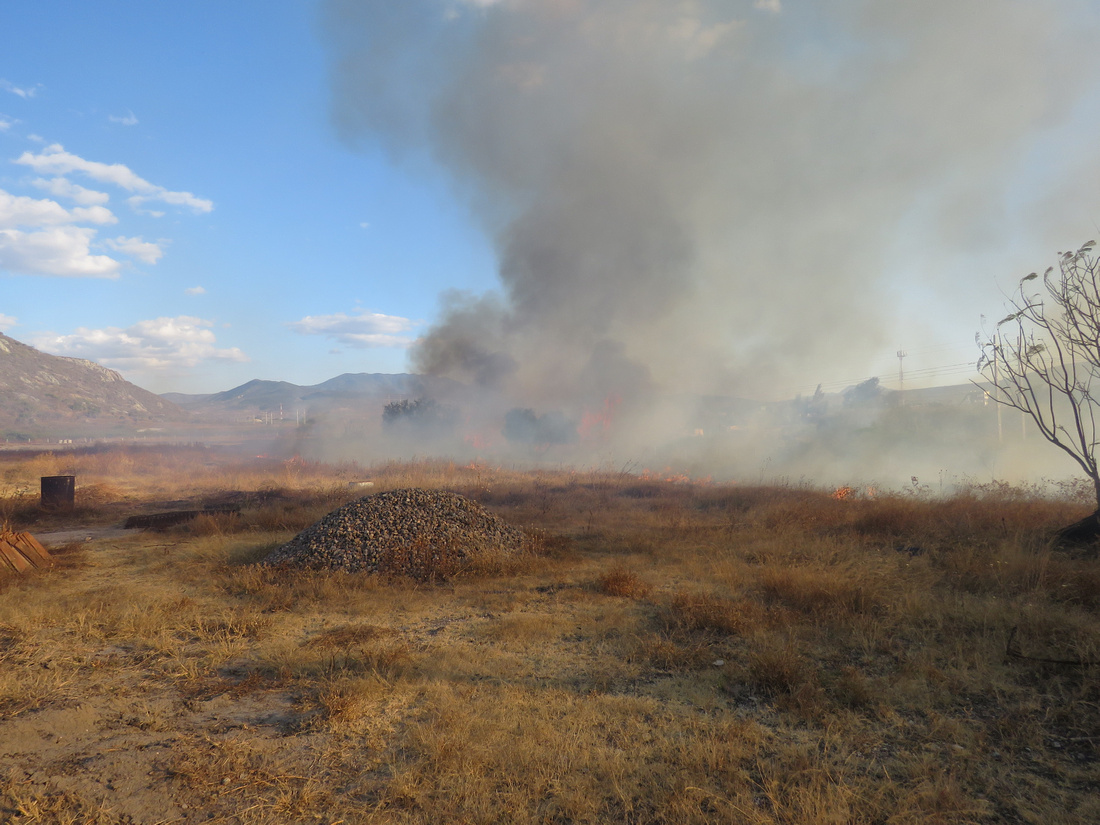

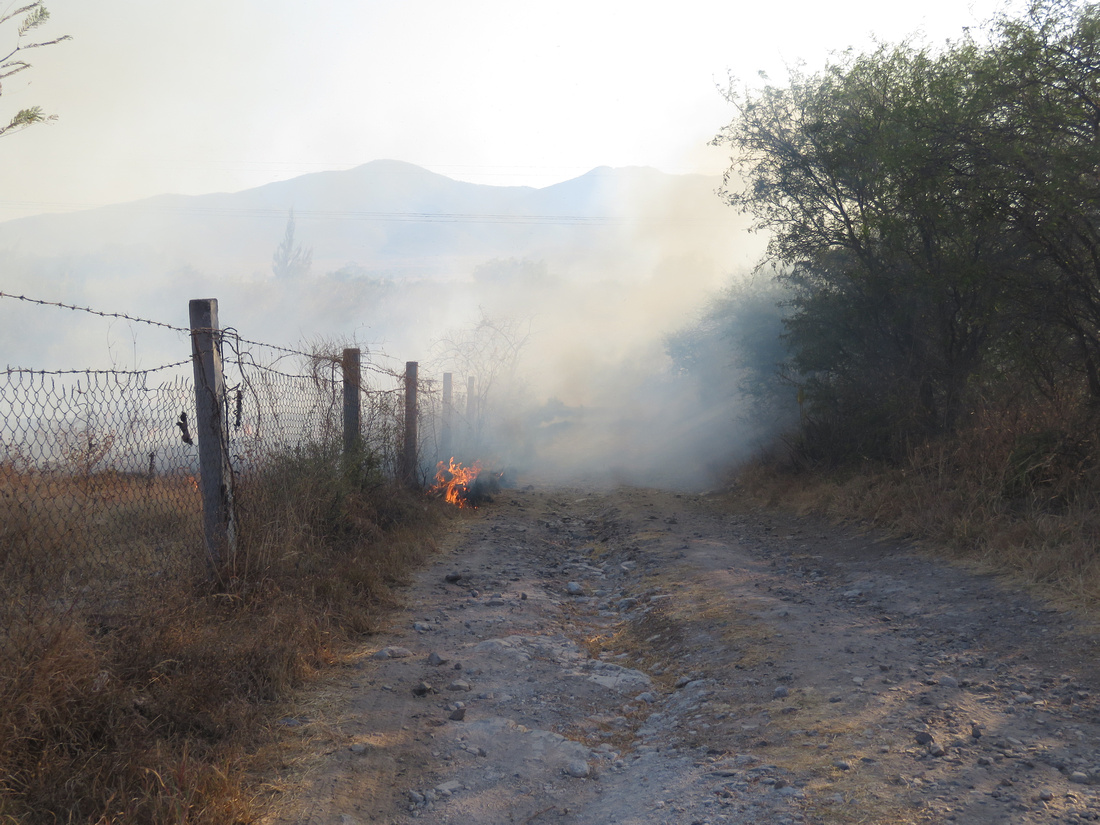

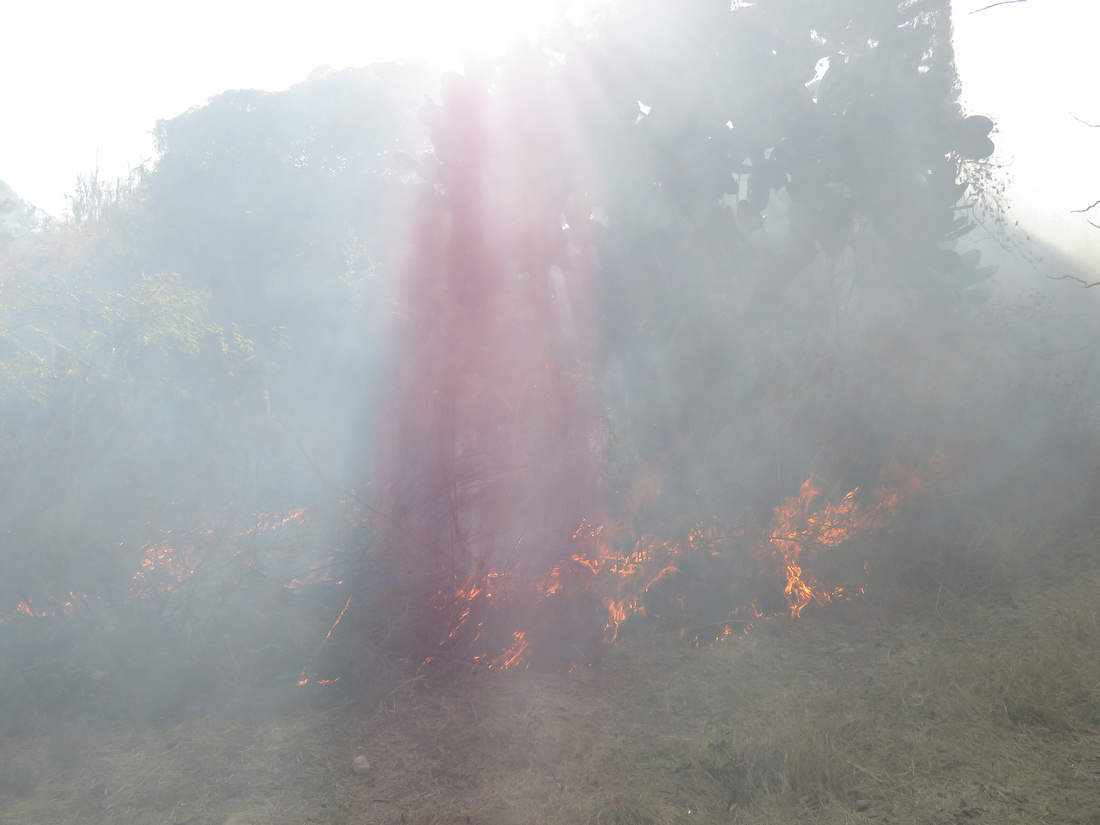

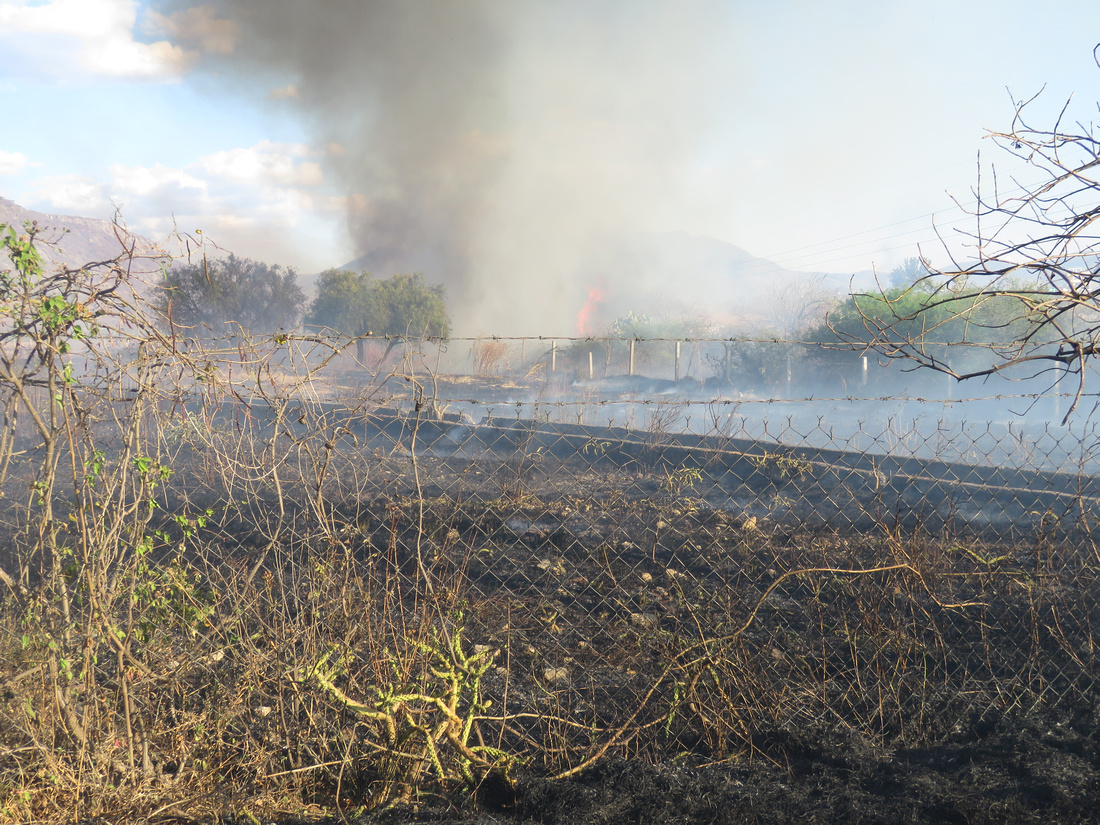

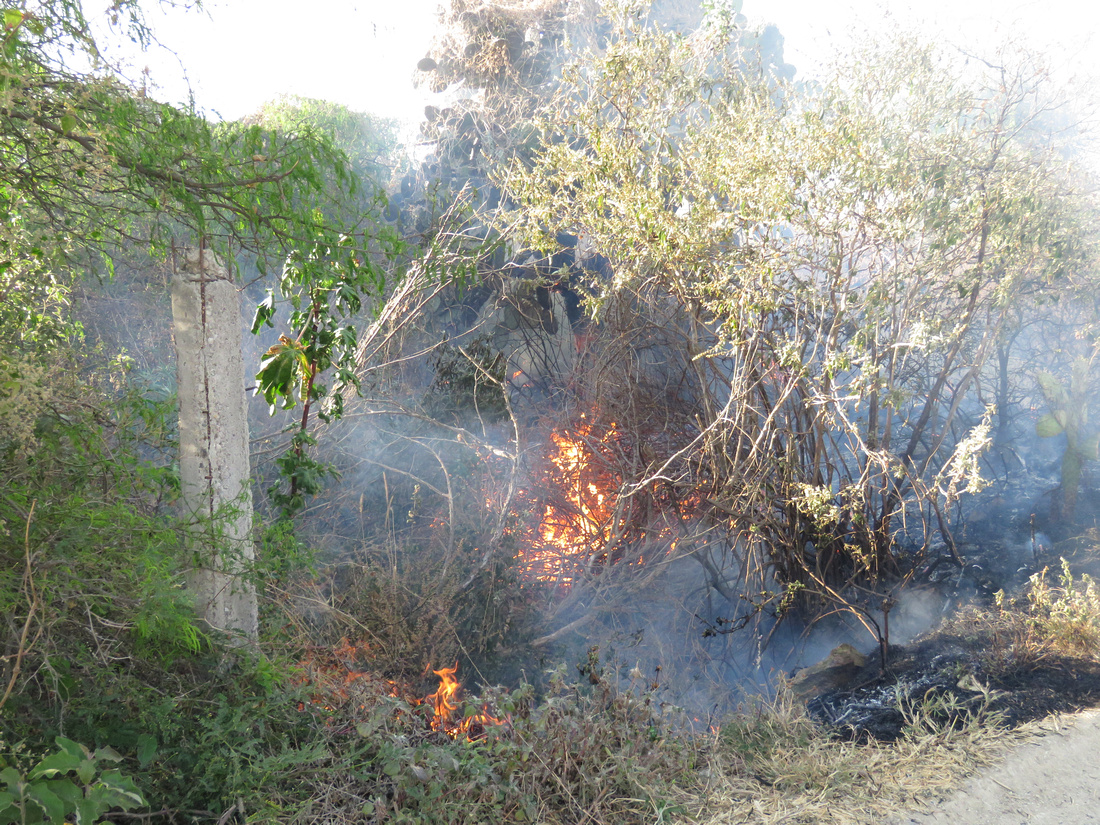

In February Beth and I were at the post office in Tlacolula. After we’d finished, I was getting in the truck when someone asked me for directions in English. Jonathan was from Sweden and ended up staying with us for four days. He’s quite a traveler. The Americas were his final visit. He’s been on and hiked on every continent except Antarctica. He had great stories and had to answer lots and lots of our questions. We hope he comes back after he finishes his travels in Chiapas.
Coming back from Cuajimaloyas the other day, three travelers from Germany asked for a ride to Tlacolula. We obliged, but soon regretted it. Neither Beth nor I were prepared for their insulting behavior. After minutes of listening to what we thought were bizarre positions such as there should be no borders in the world, I suggested that we listen to music. They reminded me of the videos of students protesting at colleges. I suppose in a way the three have gotten their wish. Ignorance knows no borders.
We've met many tourists from all over Europe. Most speak English very well. Apart from the three travelers from Germany, we've found them to be very interesting.
This is Jonathan.
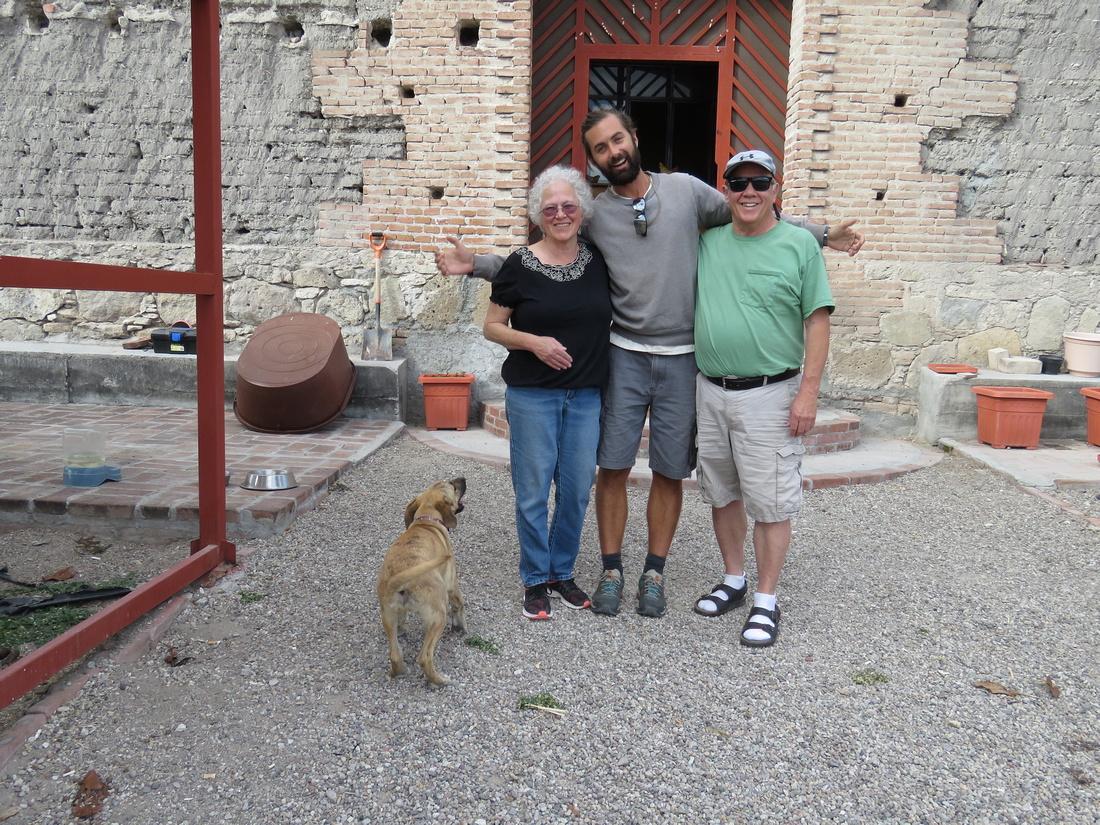

During a trip to Walmart, Mexico was playing against Germany. There were televisions all over the store being viewed by workers and shoppers alike. When Mexico scored or made a good play, there was yelling throughout the store. Reminded me of Superbowl Sunday.
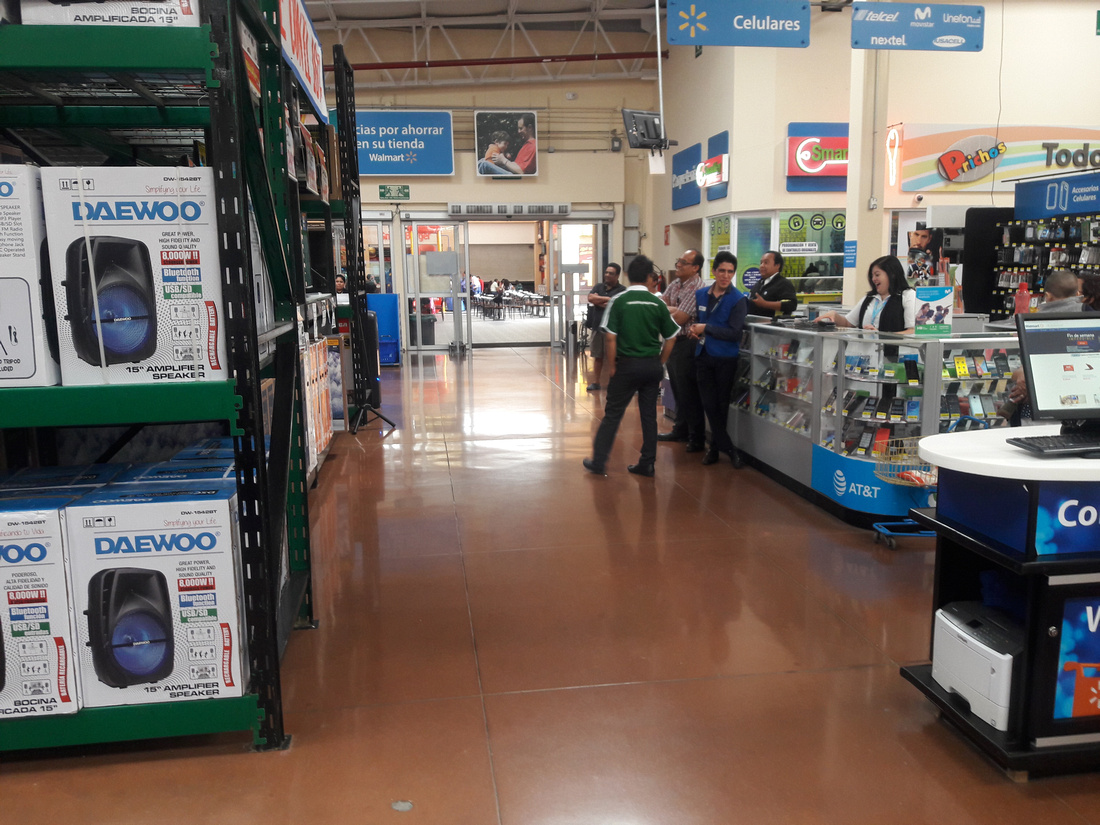









Beth and I were invited to a baptism in San Bartolo which is a Zapotec village. I believe that the majority of men from this village are in America. I couldn't help but take this shot of this gentleman. Later I'll clean up the background.


This is a help wanted sign that stipulates that they are looking for a young woman. These kinds of signs are very common here. Often help wanted signs include the type of worker they are looking for.
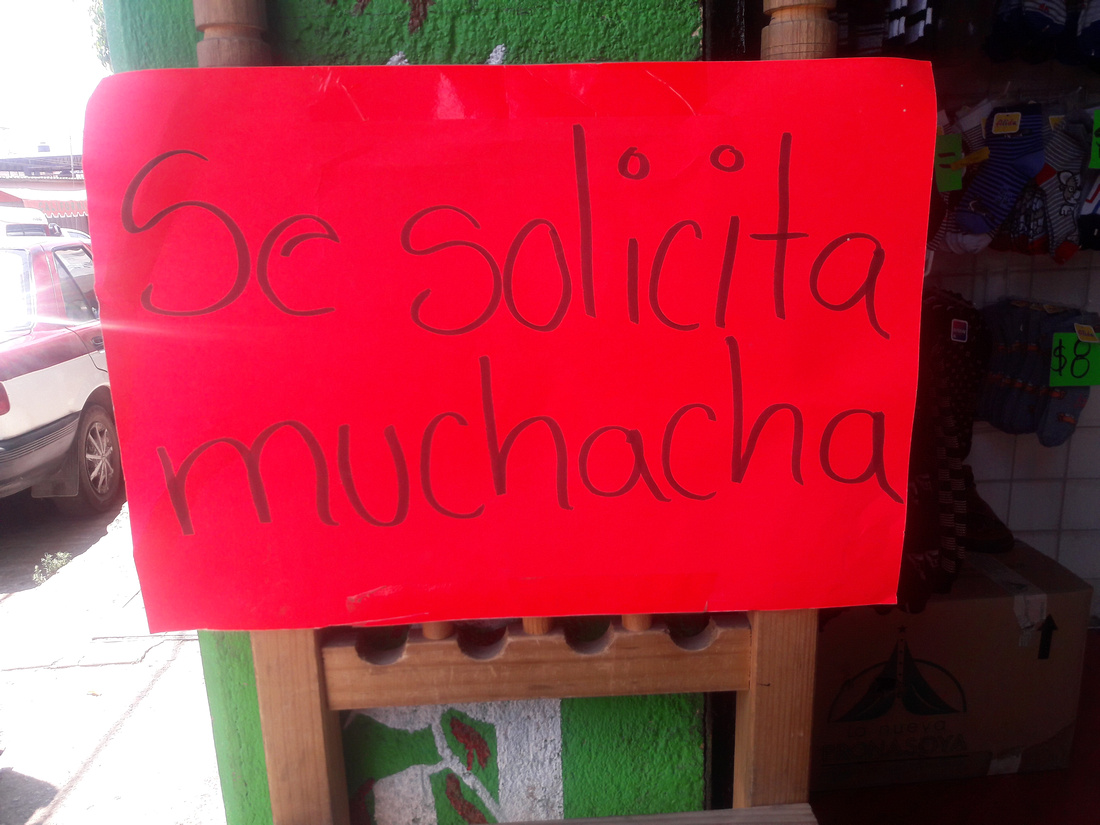

Beth has been crocheting beanies and blankets for newborns. It’s something she enjoys and there is certainly a need. She’s given away five sets so far. She recently finished a quilt for our queen-sized bed that she made with scraps from the many clothes she made for her two granddaughters.
Beth just booked her flight to Lubbock for a week in November to visit with our son Chris, his wife Danielle, their daughter Aly Marie who just turned 4, and their son Wyatt who turned 1 in June. She will get to celebrate Danielle’s birthday on Nov 8th and hers on the 12th before returning home to Oaxaca on the 13th. Beth has been so anxious to see her grandchildren face to face instead of on Skype. I'm sure she'll produce a blog over her trip.
Here is her beautiful quilt.
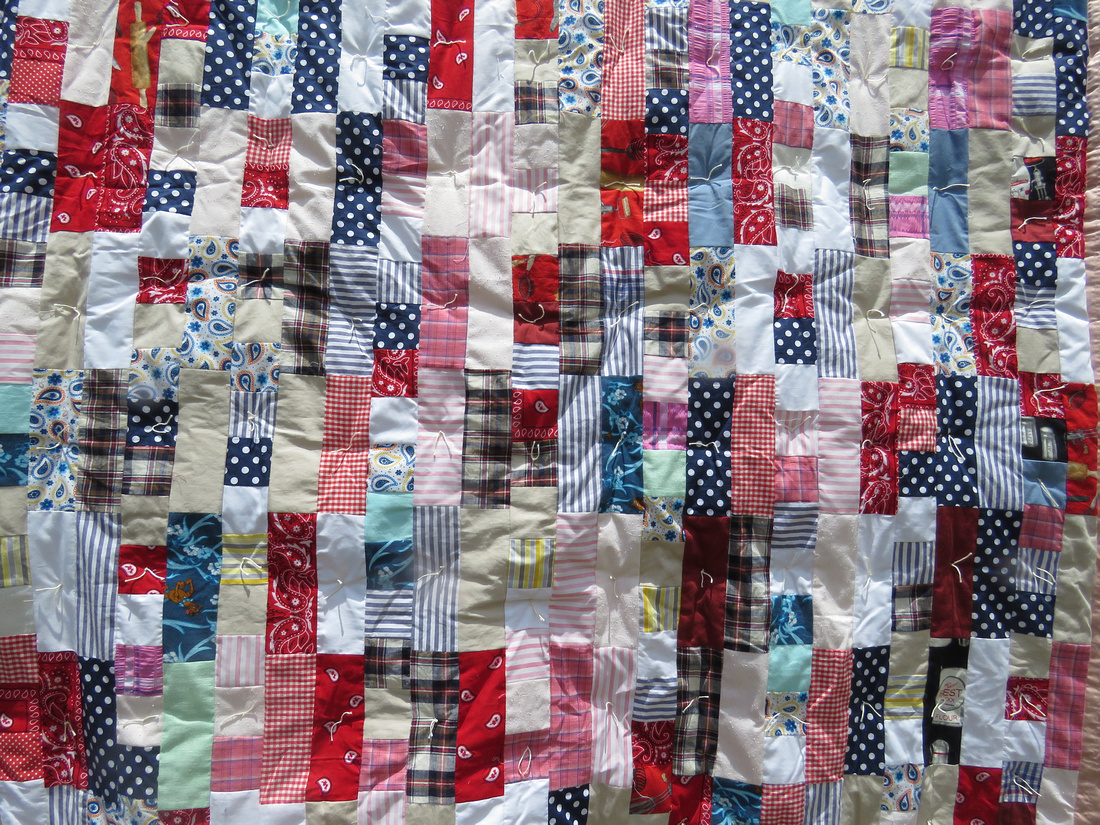

I passed this couple on the highway coming back from Oaxaca. I had to pull over and get a pic. It's not unusual to see whole families on a scooter.
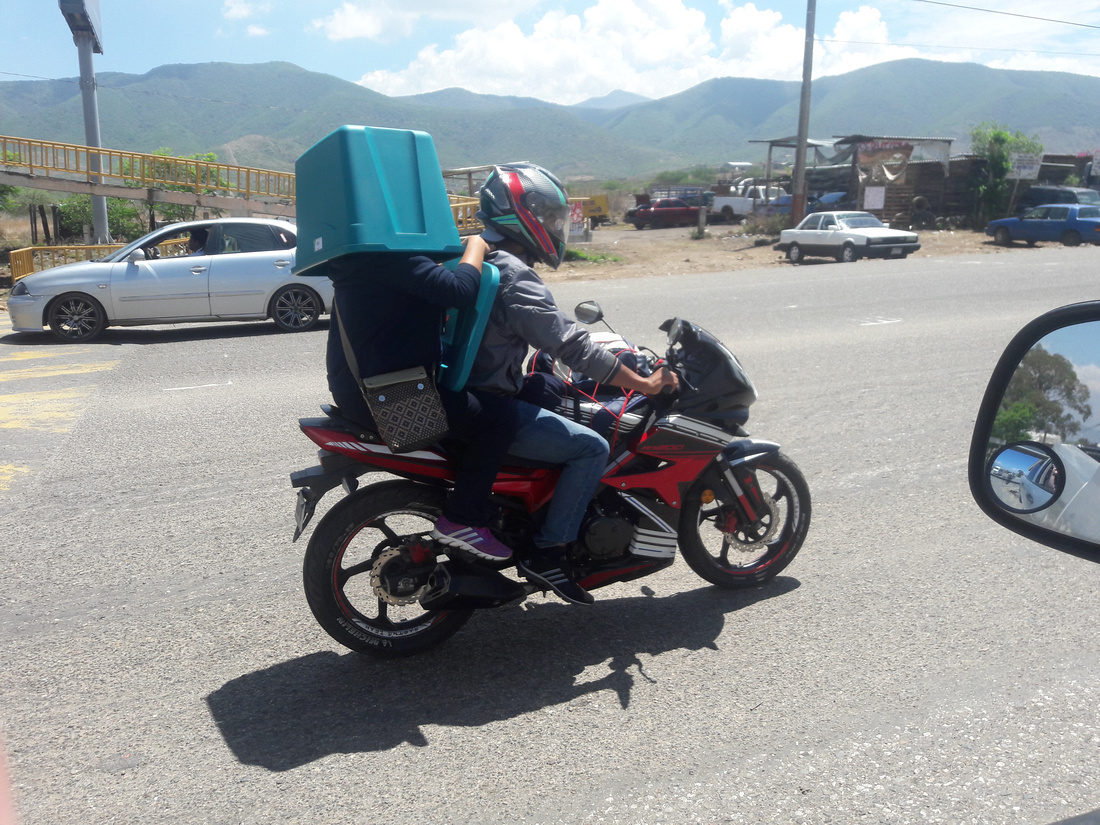

I just finished a book called A Prayer Before Dawn (a somewhat deceptive title). A Brit serves time in a Thai prison. He’s allowed to serve the last part of his sentence in a prison back in England. The book is a quick read and the story is interesting, but what I found intriguing were his observations about the prison and prisoners in England. He found the prison to be very comfortable and the prisoners to be very whiny and ungrateful. After being held in deplorable conditions for years in Thailand it's easy to see how he would perceive the English prisoners in such a manner. Beth and I find ourselves in a similar position. I'm not comparing being in Mexico to being in a Thai prison, but I am comparing the difficult conditions here to conditions in the US. The sacrifices that some parents make to get their children an education is very humbling to see. Beth and I are usually invited to graduations every year and we always attend. This year we had four. Watching these young people graduate with pride and being aware of the challenges they face demands respect and elevates their accomplishments.
Beth and I have learned some lessons here. We've learned that you can be tolerant without being accepting, a lesson that seems to be lost in much of America. We've learned that life works much better when you use what you have to help others. We've learned to be nicer to each other. We've learned to value life more and how important it is to be grateful for our good fortune. We've re-learned the importance of having spirituality in our lives. We've learned to overcome new obstacles. We've learned to respect and appreciate the lives that our sons are living.
Beth's Birthday
Sunday we celebrated Beth's birthday. It had been a couple of years since we had a fiesta, and Beth's birthday was a wonderful opportunity to get together with friends. I usually take photos at events, but I decided to enjoy the fiesta and have someone else take the photos. Beto's daughter Yesenia volunteered to capture this event. Beth and I thank her for her work. We also want to thank Vic and his crew who worked hard. Vic came to Beth's birthday from Puebla by bus. That's a five hour trip! We sure appreciate his expertise with sound and lighting.
This turned out to be a special fiesta for us. Having so many friends at the same place at the same time was incredible. Beth and I never could have made it here in Oaxaca without the help of so many people. Aside from celebrating Beth's birthday, the fiesta gave us the opportunity to say thanks.
We began preparing for the fiesta about four weeks earlier. The custom here is to invite your guests personally. Emails, messages, and calls are considered impolite. So.... we invited everyone personally. Many of our guests arrived by bus or taxi which made their attendance even more special.
A family from Union Zapata makes pork carnitas. We purchased a pig and they did all the preparation which included refried beans, salsas, a salad, pork rinds, and guacamole. Beth and I purchased twenty kilos of tortillas to complete the meal. We also bought twenty cases of beer and twelve liters of mezcal. Many guests also contributed additional bottles of mezcal and cartons of beer. After the fiesta we ended up with eleven liters of mezcal and six cases of beer. We had several visits the day after from folks that couldn't attend or just wanted to stop by to visit.
The cake we purchased is call tres leches. Three types of milk are used. Evaporated, condensed, and regular milk make the cake moist and very rich. The kids quickly learn that the cakes are about to be cut and are right there in front waiting for their piece.
I normally play Latin music at our fiestas but decided to play American music, mixed with a little Latin.
Beth and I talked and talked and talked. Having the food prepared by others gave us the time to spend with everyone. This was the most diverse group we've had at our home, from farmers to businessmen to professionals. Because things are so different here, I doubt I'll ever tire of listening to people. Five people spoke English! How sweet it is to be able to converse in our native tongue.


Yesenia made the letters while her sister, Shela, and brother, Armando, assisted hanging them.
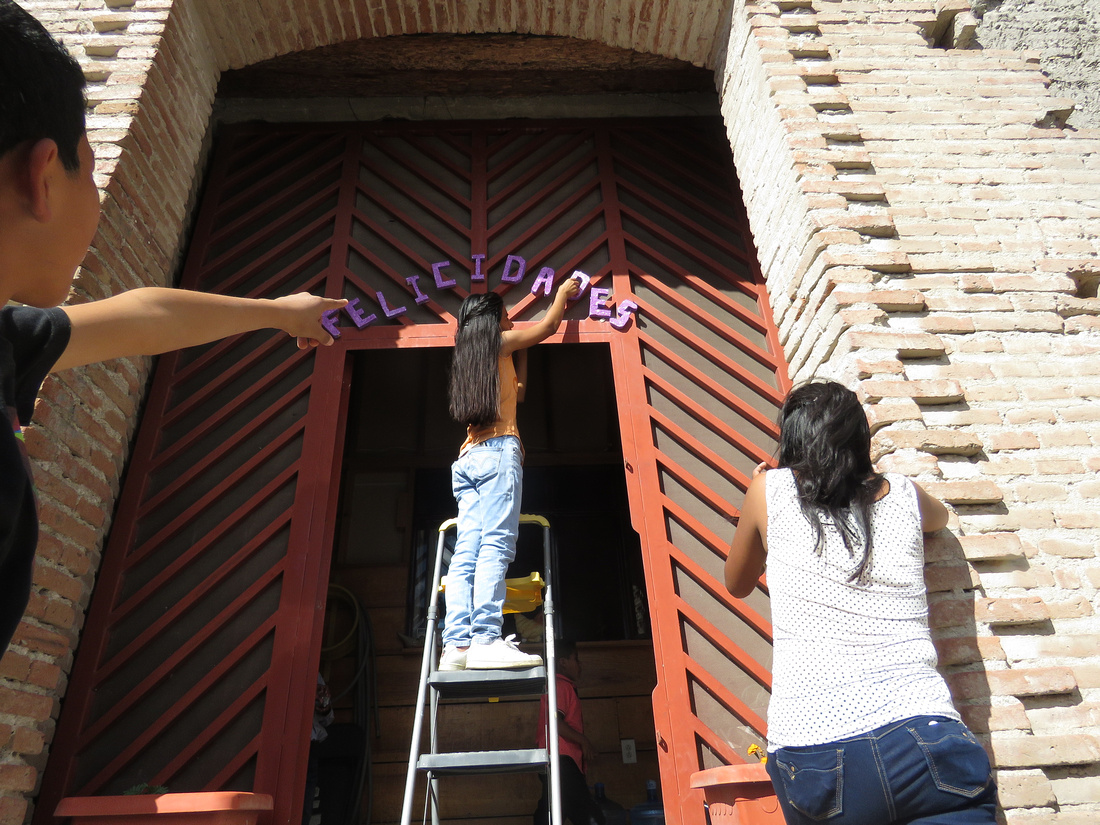

Everette is serving mezcal to our friend Rodolfo and his wife, Holga.
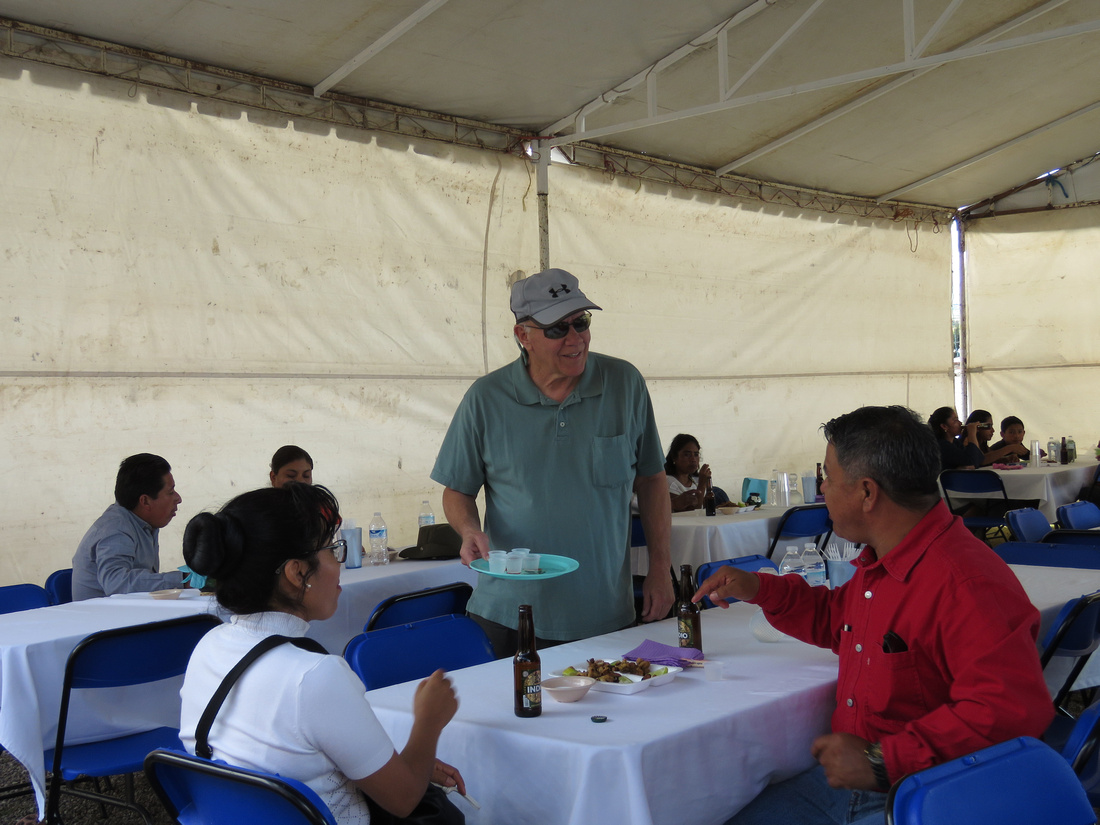

Getting ready to serve carnitas.


I believe in total we had about a hundred guests.
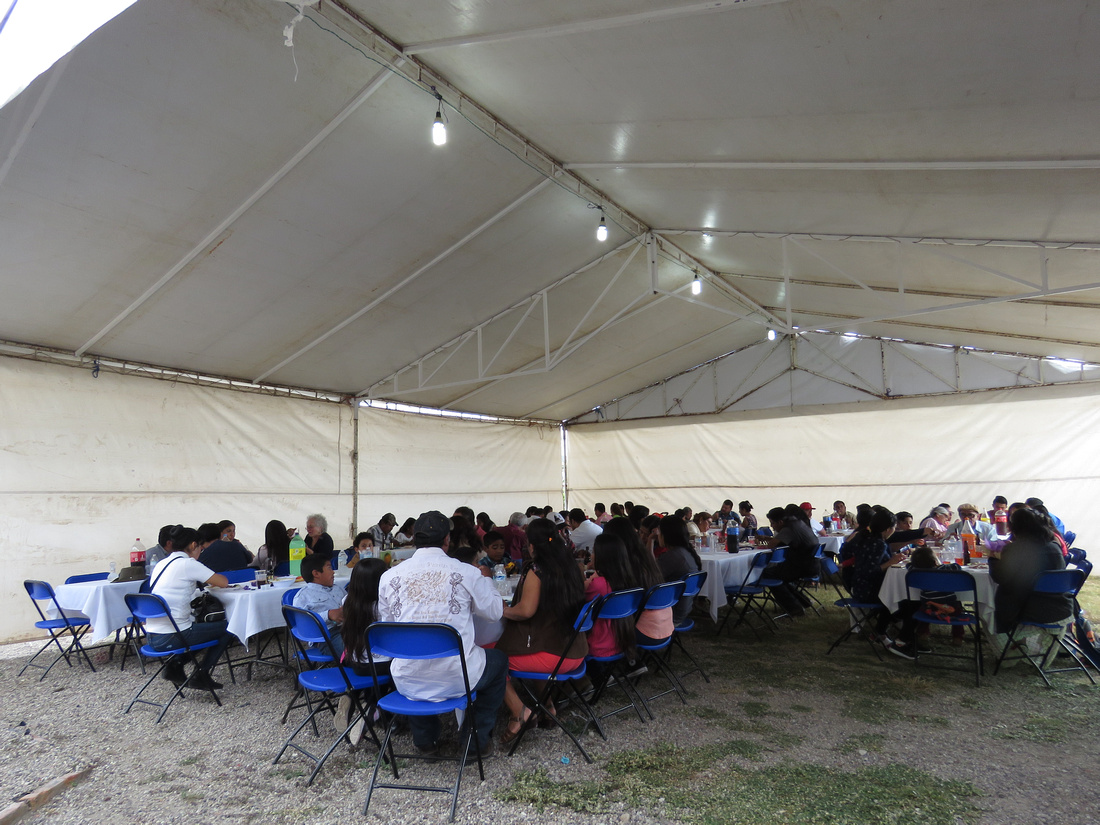

I have no idea how many cups of mezcal I served.


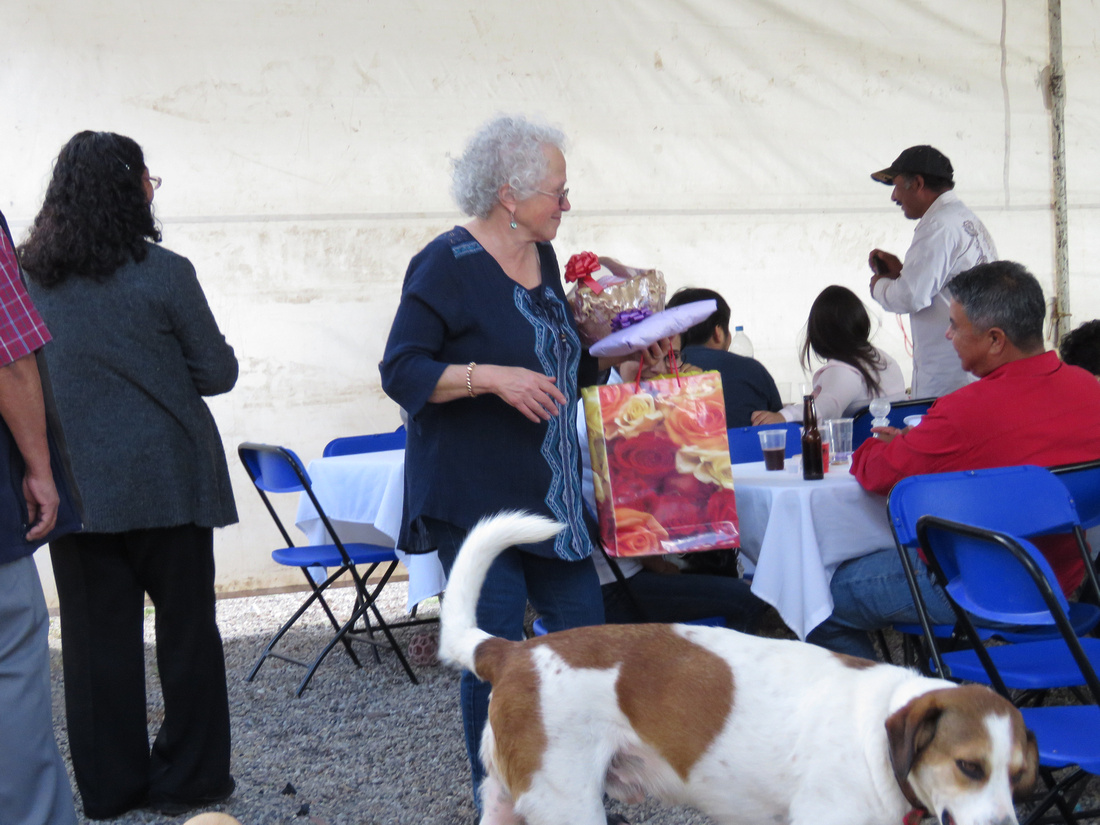

I've known Lalo for many years. In the background are his wife, Victoria, and one of his daughters.
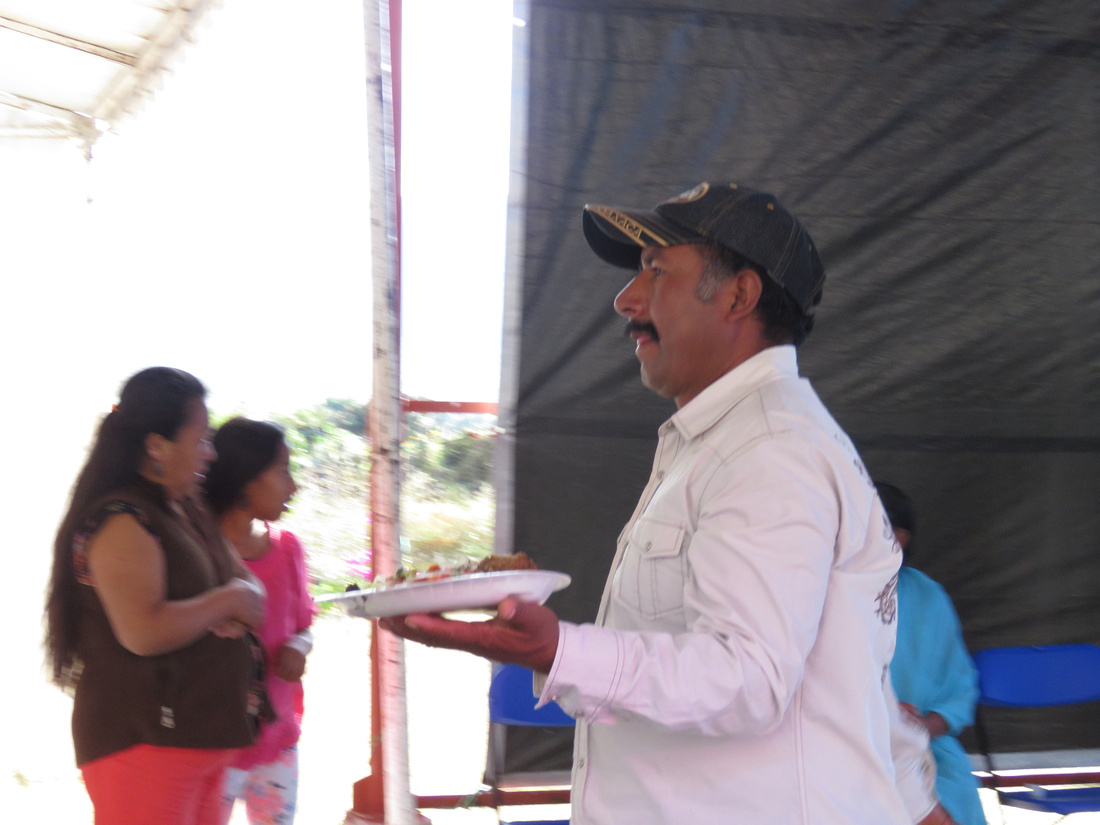

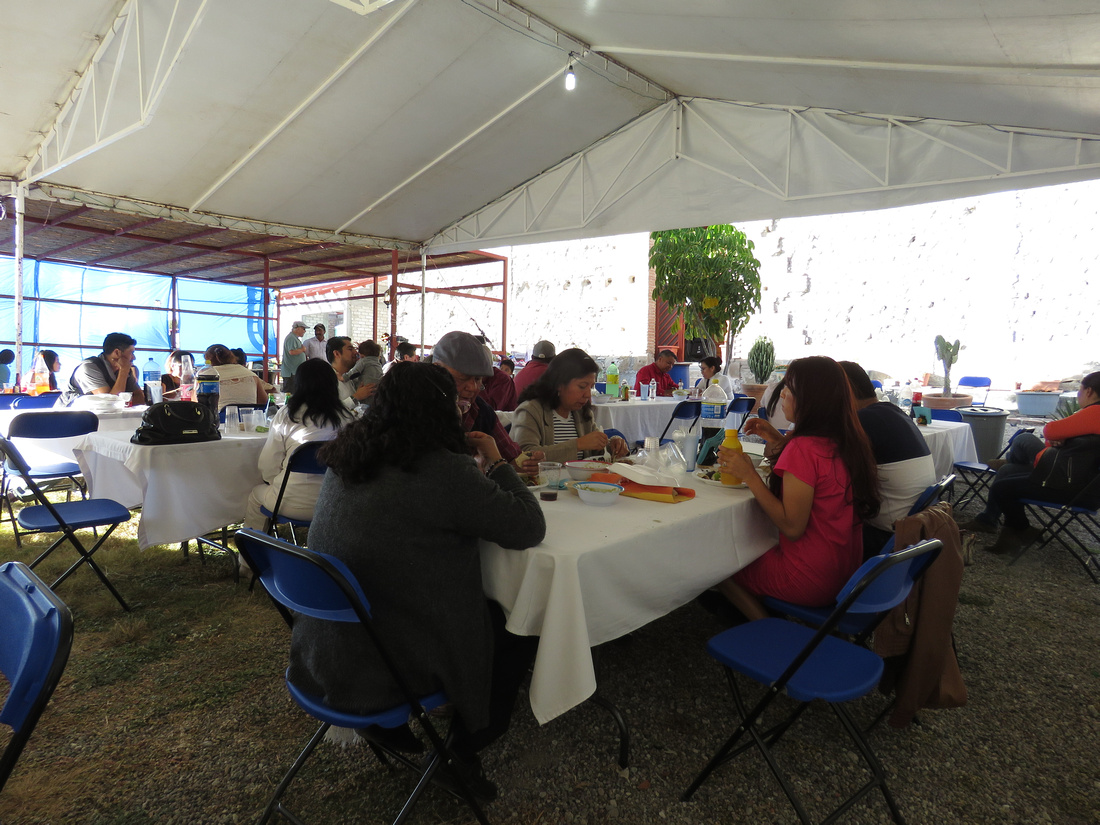

Dancing in front of everyone was a little embarrassing especially when some friends started to clap.
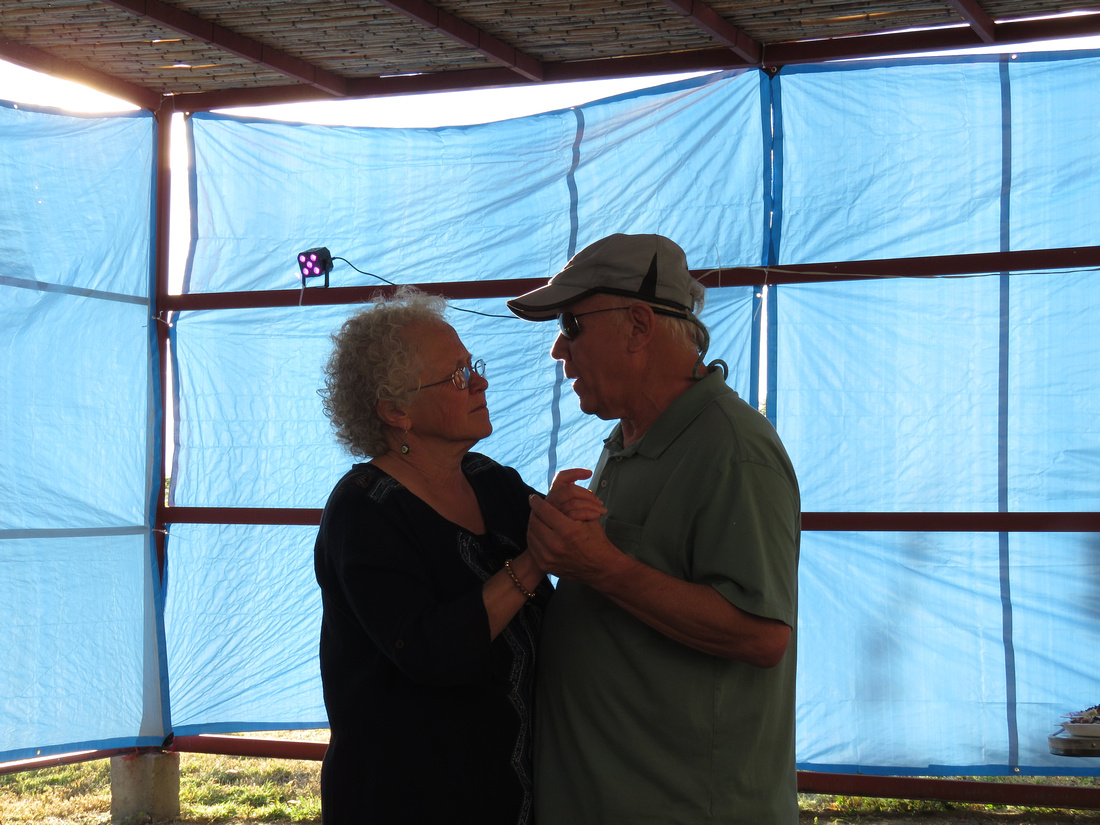

Beth enjoyed dancing with Lalo's mom.
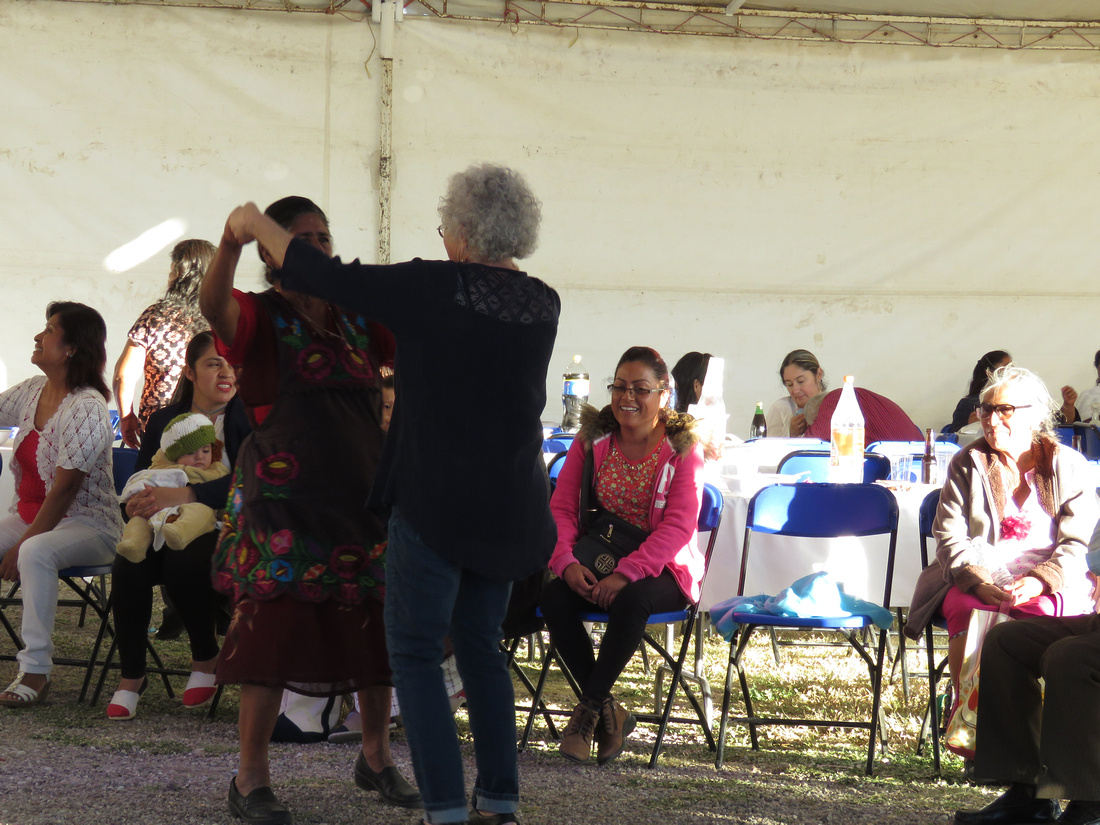

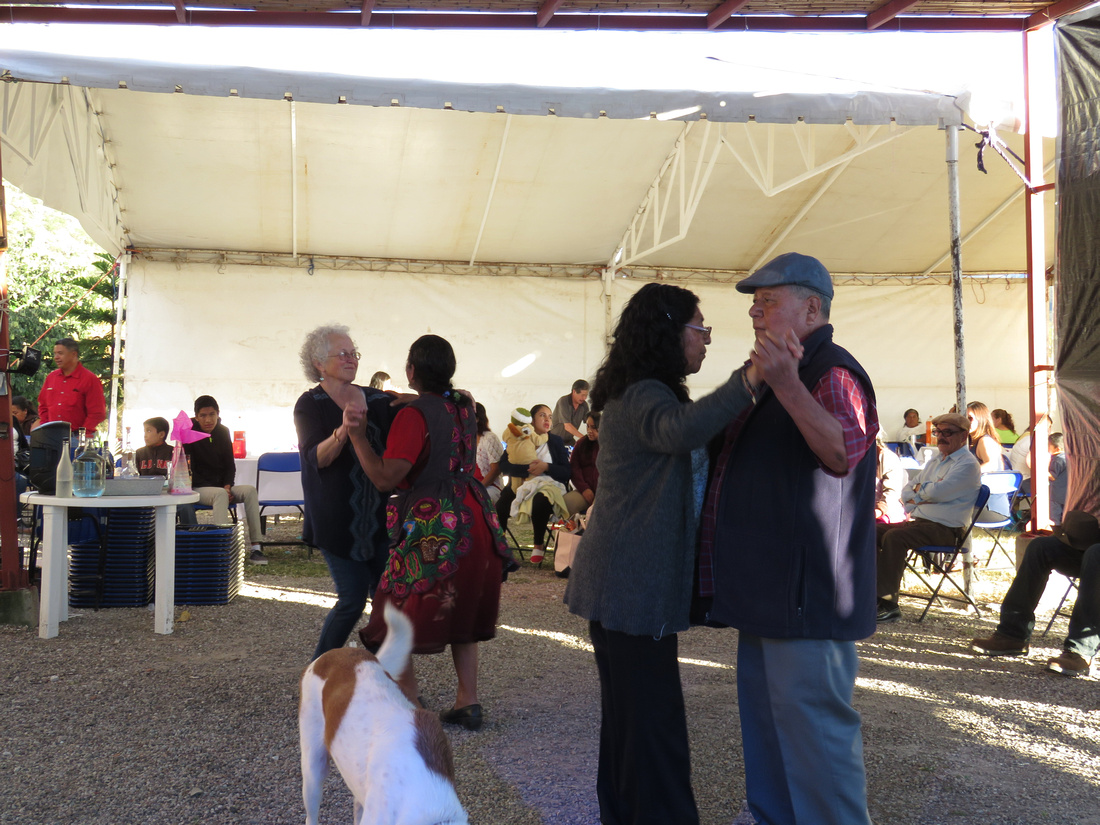

We loved watching the kids enjoy themselves.


Beth and Yolanda shared the same birthday but they each had their own cake.


Everyone loved watching the two bite into their cakes.
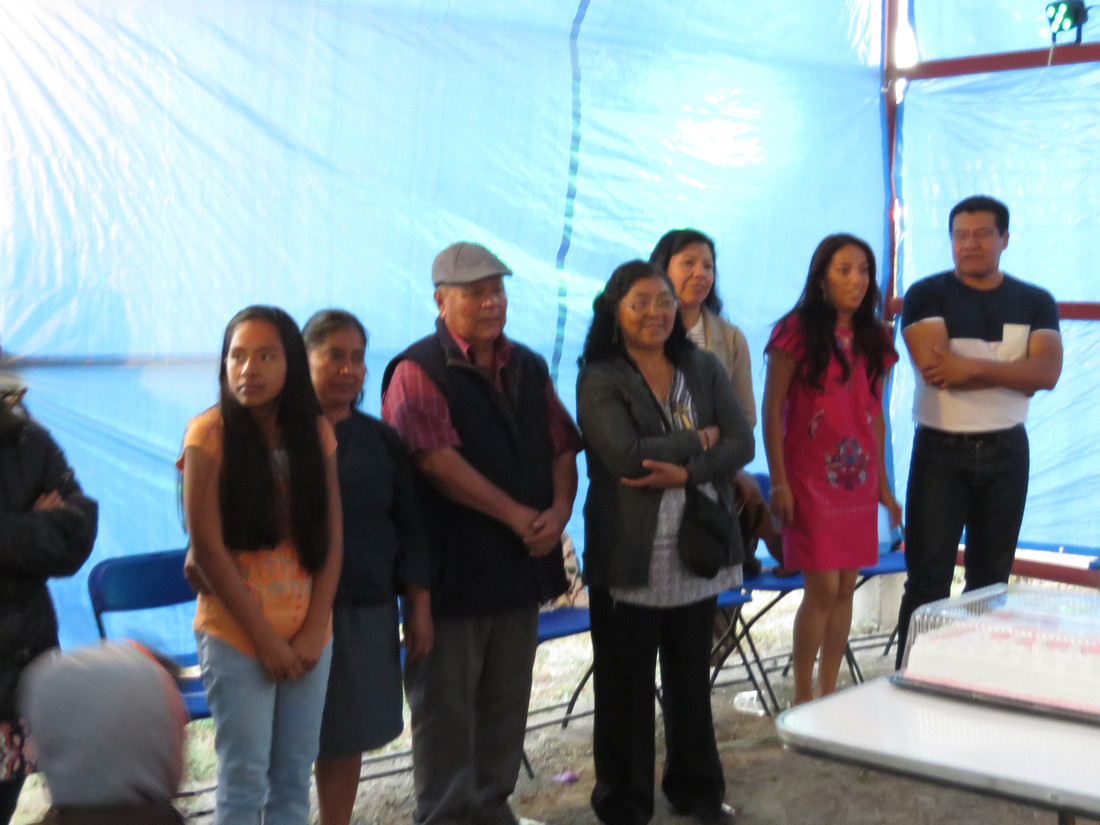

And some captured the event.
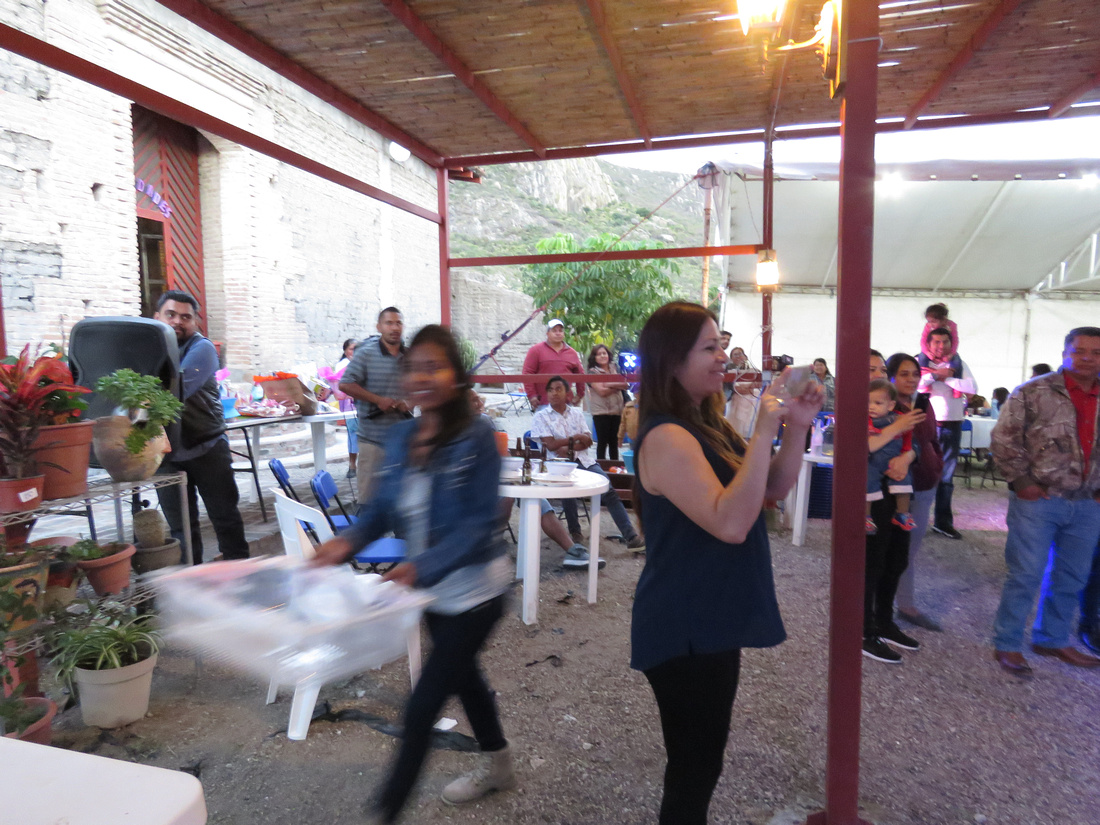

Everyone loves cake!
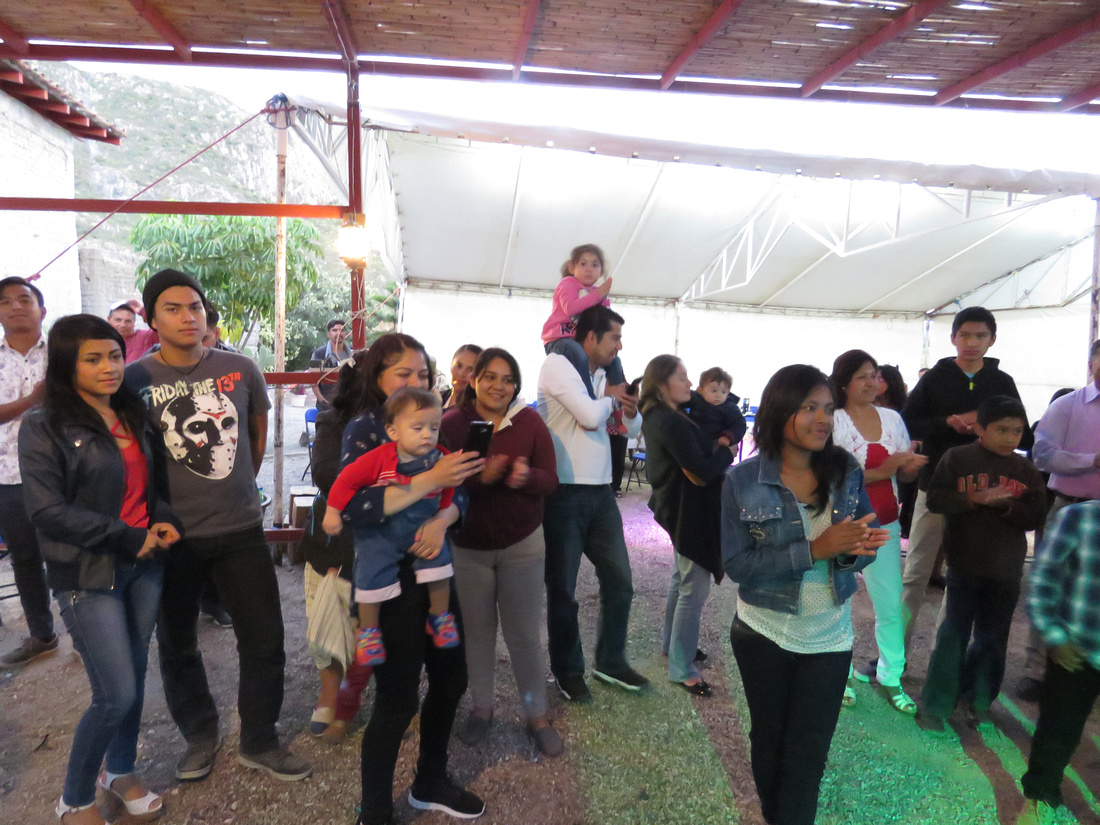

Agustin with his granddaughter Diana.
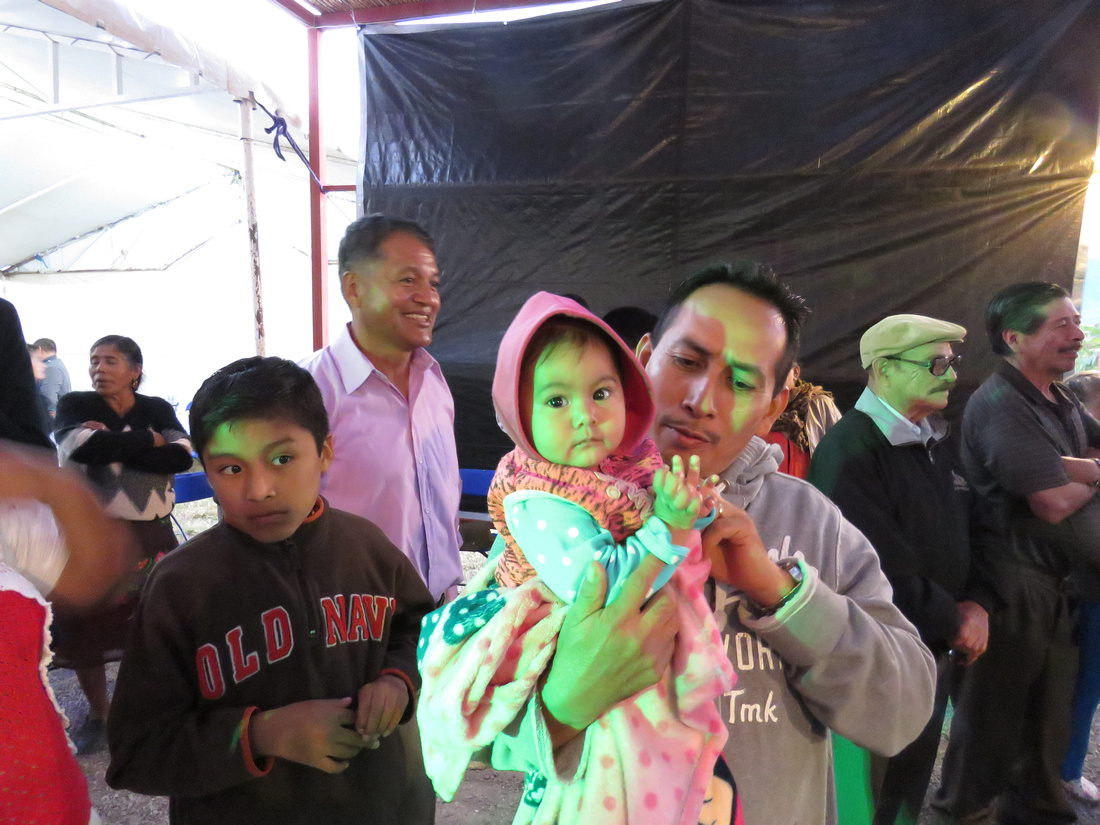

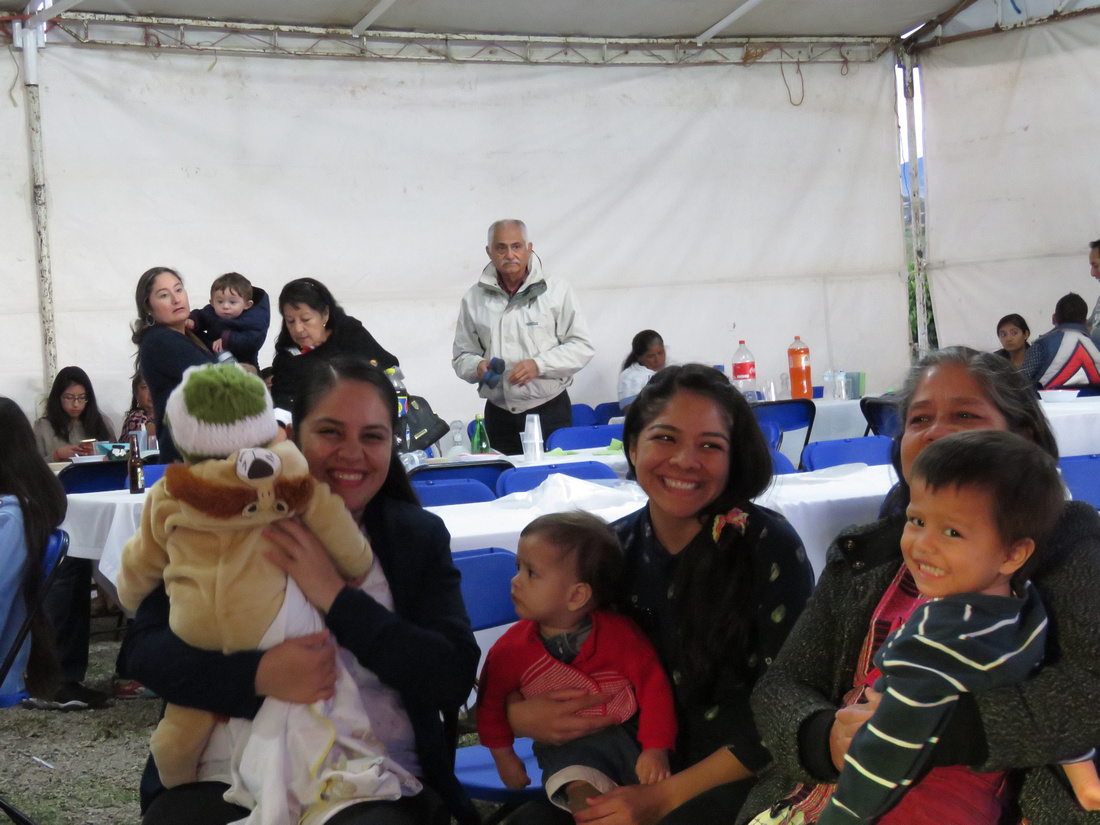

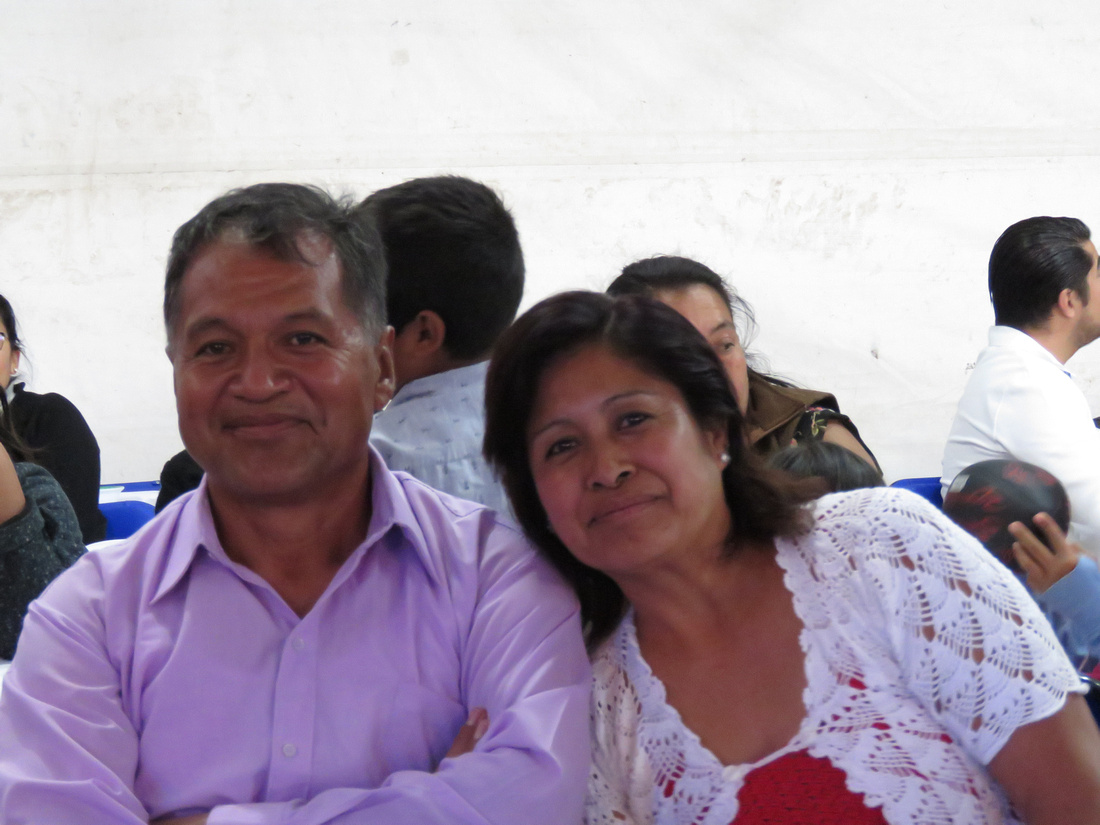

We became friends with these men through Felipe before we moved down. Right after we moved in they all showed up and made tamales in front of the house.
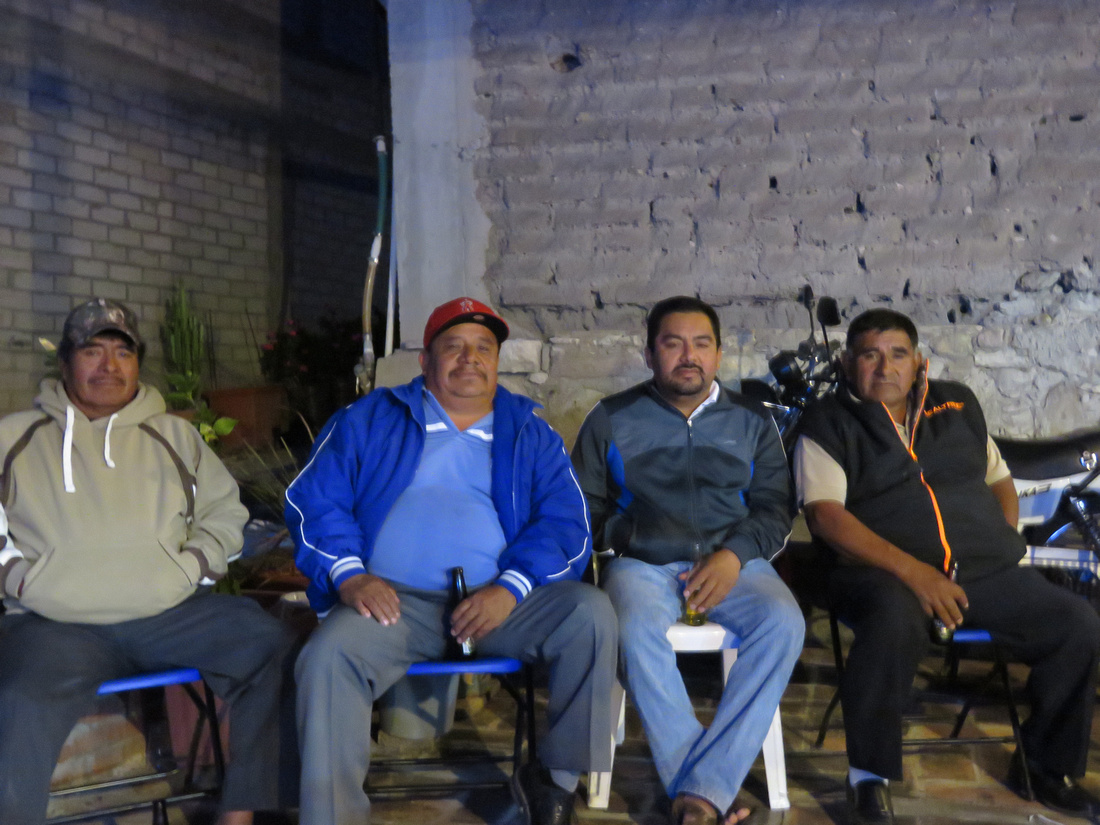

Rodolfo works for the electric company and his wife, Holga, is a high-quality seamstress.
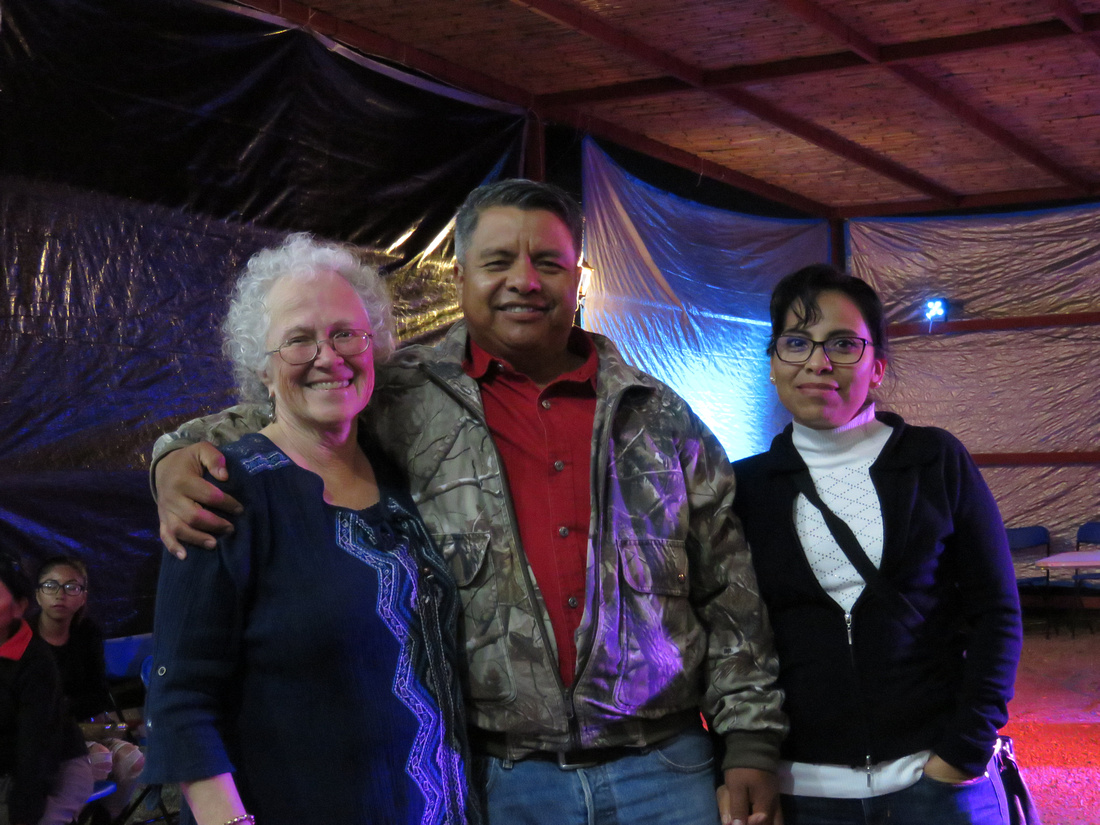

We met Lidio back in '94 when he was just a kid; we have become good friends. He is one of the few Christians here in the valley.
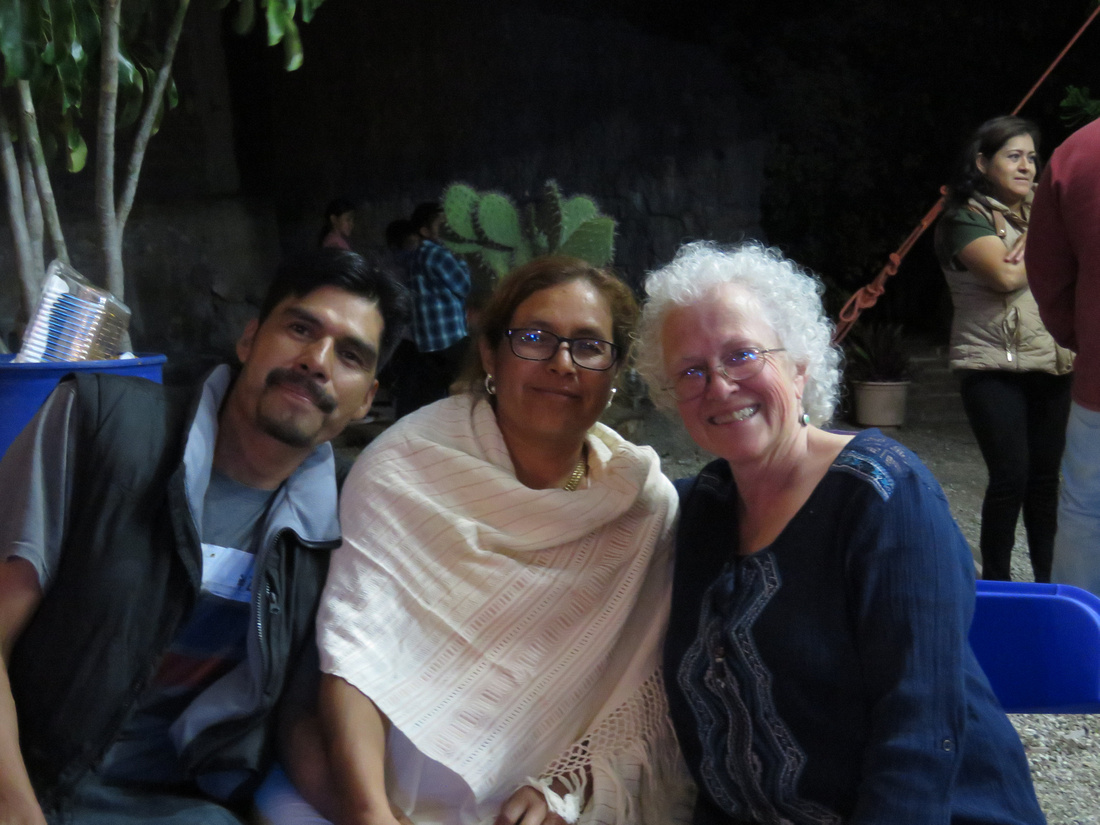

Jose delivers propane to our house. He is a wonderful gentleman


This gentleman came with his daughter. You can see his personality in the photo.
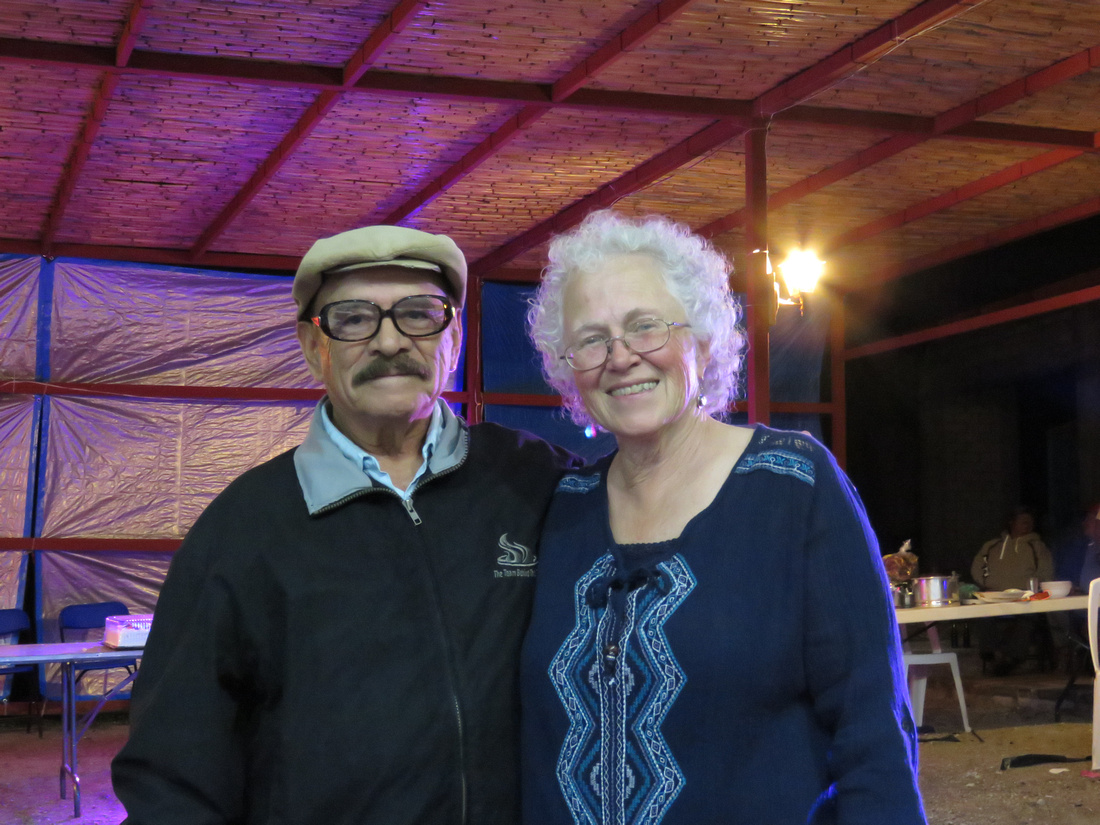

The gentleman on the left is our auto mechanic. The young man and young woman (Armando's daughter) are both studying Linguistics in Oaxaca. We are going to spend Christmas with them. Ricardo, the young man, plays guitar to American music.


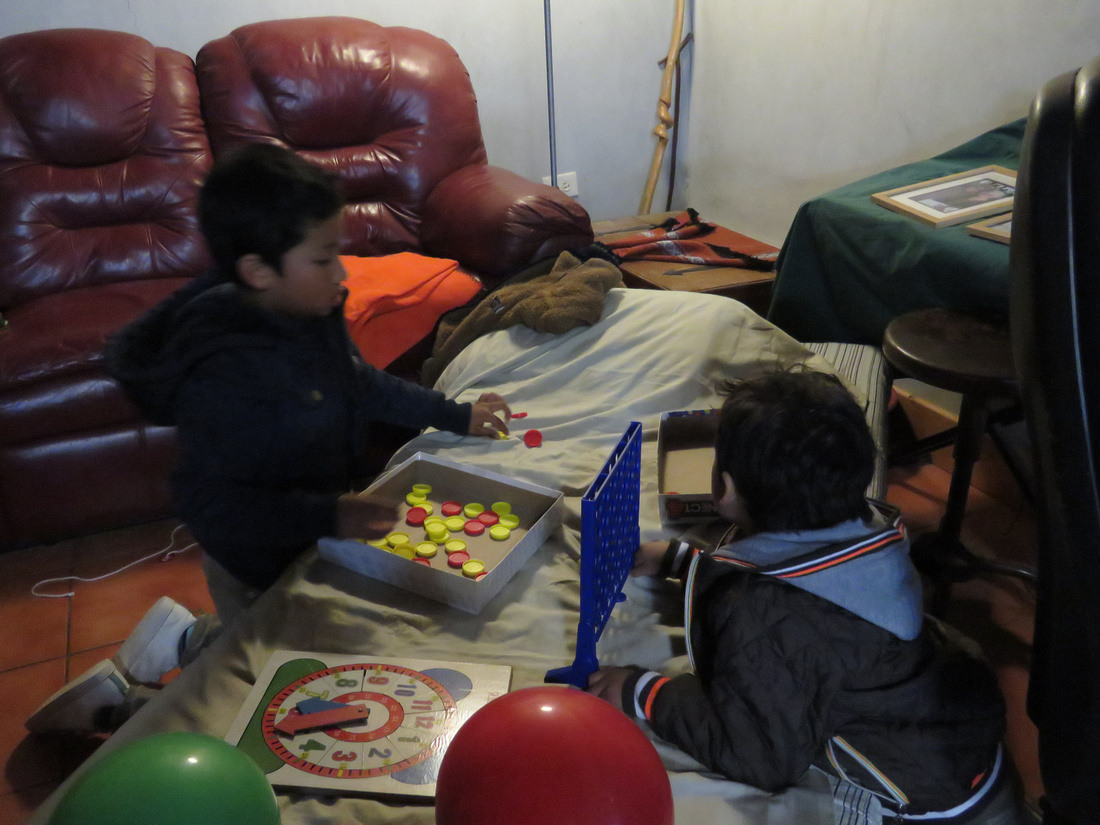

The husband of this woman owns a nuts and bolts store. They have been very good to us.
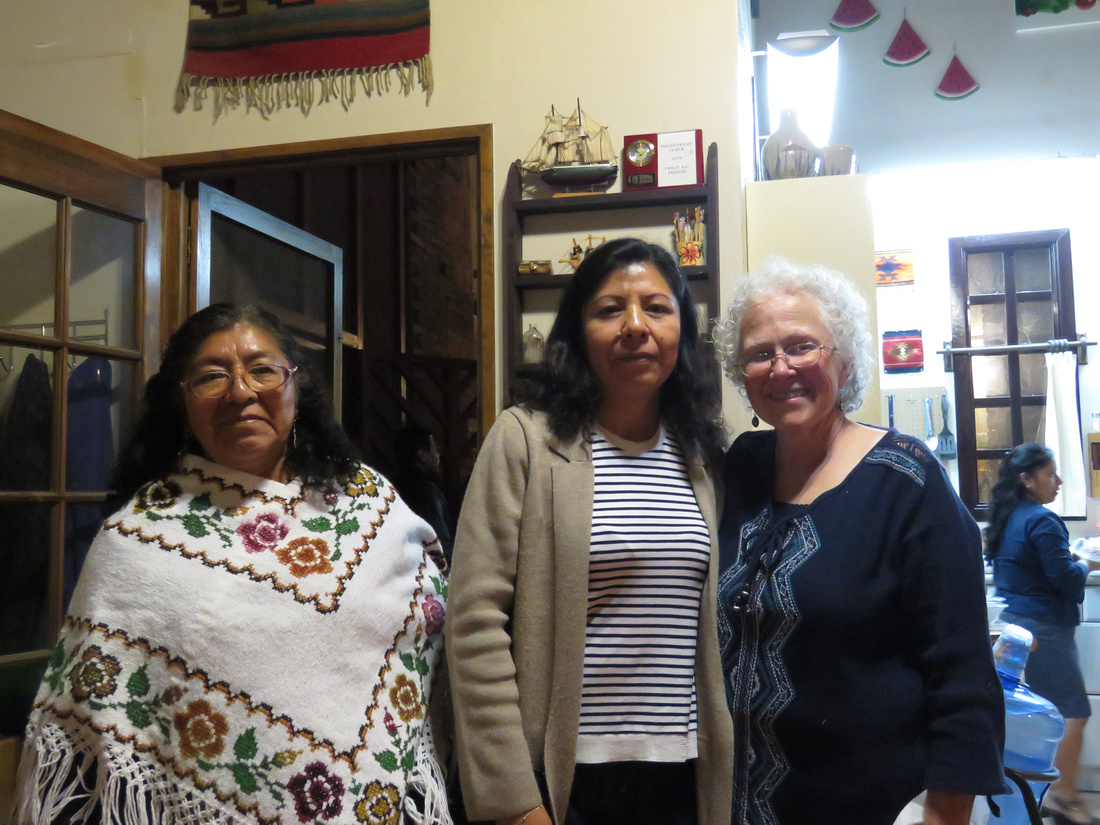



Lalo's family from Tanivet.
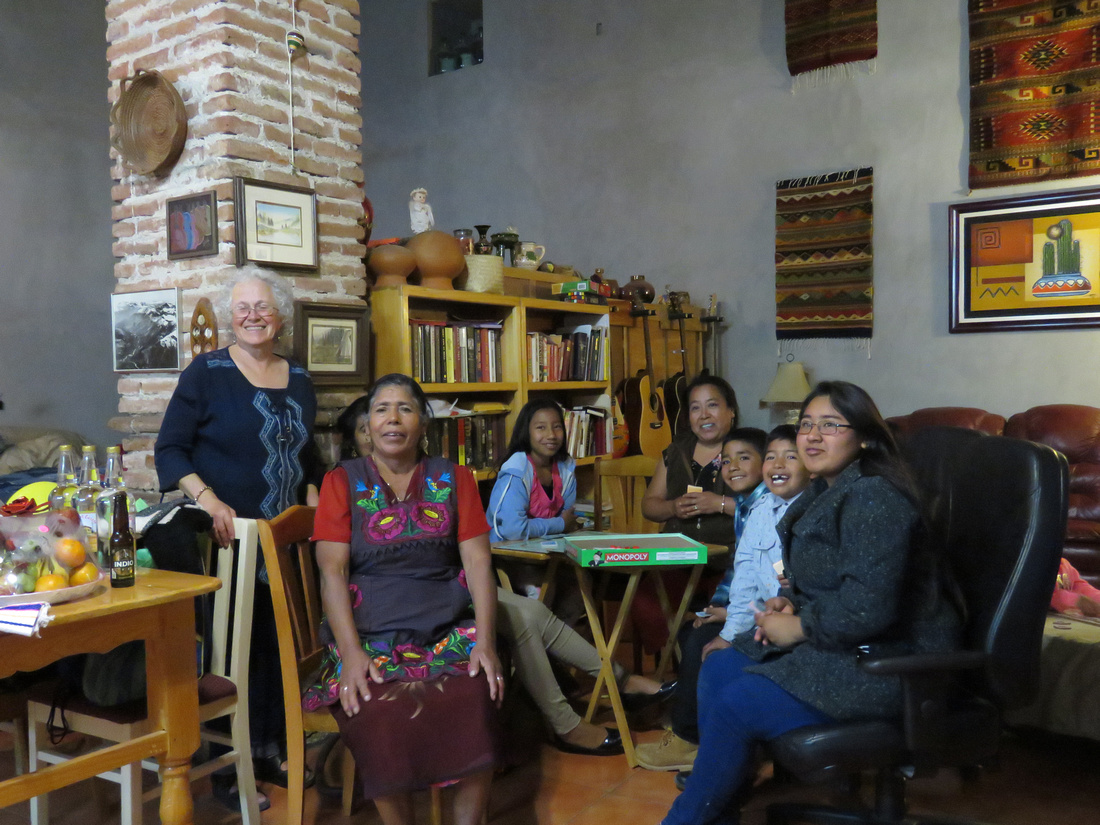

The other birthday girl. Yolanda.
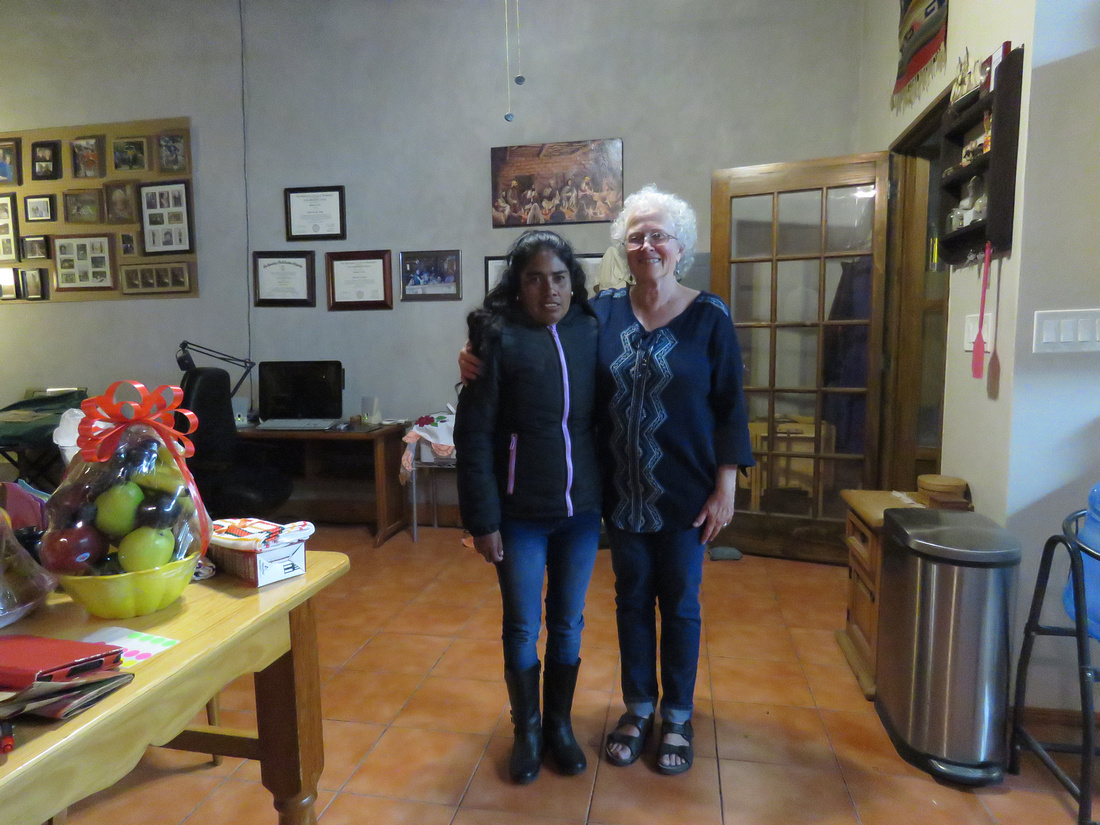

Beth and I are going on a month without listening to or reading American news. The change has been very dramatic. We both feel more peaceful inside.
Emily's first visit
It took a visit from Mickey, Yadira, and Emily, to motivate me to write another blog. It’s been over a year. I’d started several, but because of the elections, I’d always end up addressing political issues then reading back, being uncomfortable with what I’d written, and deleting everything.
I'd also developed cataracts in both eyes which made it difficult to read and write. I've since had one eye operated on. The total cost which included a pre-consultation, a blood test, an examination by a general practitioner, the operation, and two follow up consultations was five hundred and fifty dollars. With the new lens I can actually see better that before the operation.
Since our last blog, we had a carport made to keep the truck out of the sun. We don’t actually have that many days of rain here so the roof was made out of carrizo (a bamboo like material). Cleaning, cutting, and tying the carrizo was extremely labor intensive. I think they ended up cutting a couple thousand stalks, but only about half were usable. We received our new residency cards. They are good for three years after which we can apply for permanent residency.
Thank goodness I have a chop saw. People usually use a hacksaw to cut the carrizo which takes a long time. The three of us cut about fifteen hundred pieces in a few hours.
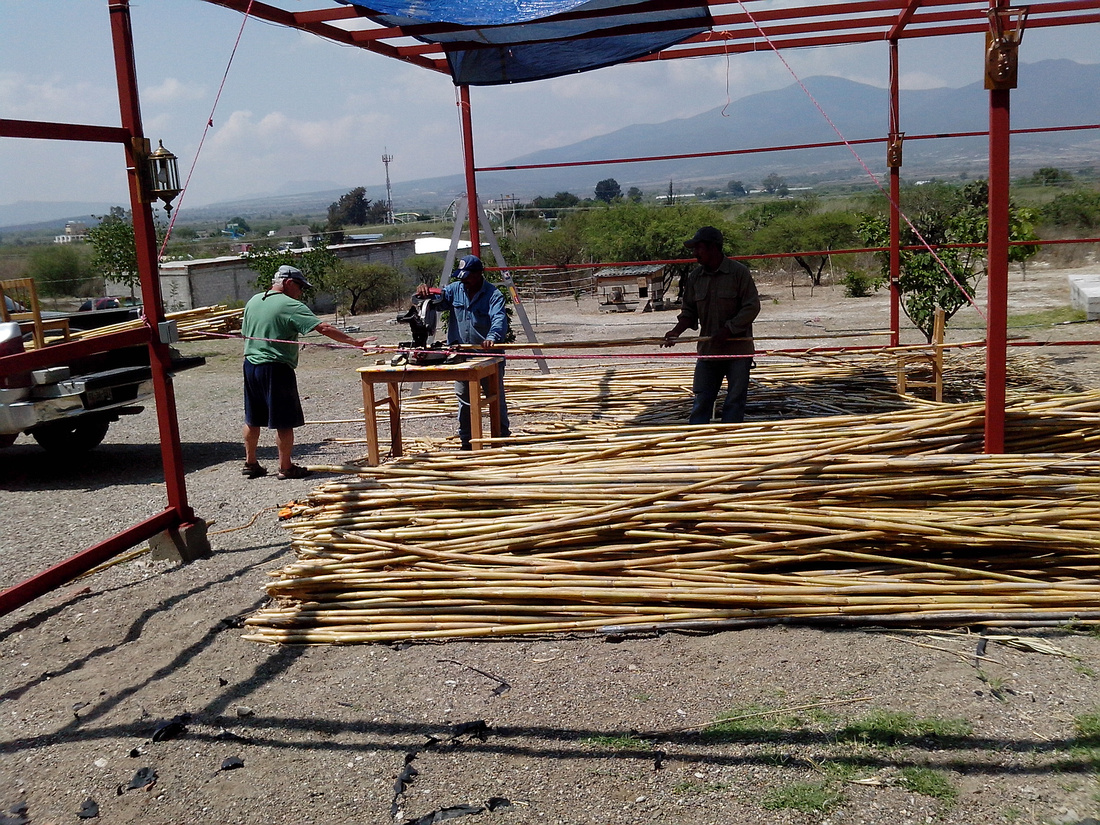

Even though there are gaps in between the carrizo, it's nice and cool underneath.


Mickey brought his family down for two weeks. Beth and I attended Emily’s birth last June. Seeing her again as a one year old was very special. Mickey and Yadi are wonderful parents. Emily is as sharp as a tack and very inquisitive.
We drove to the mountains one day. The roads are very similar to logging roads.
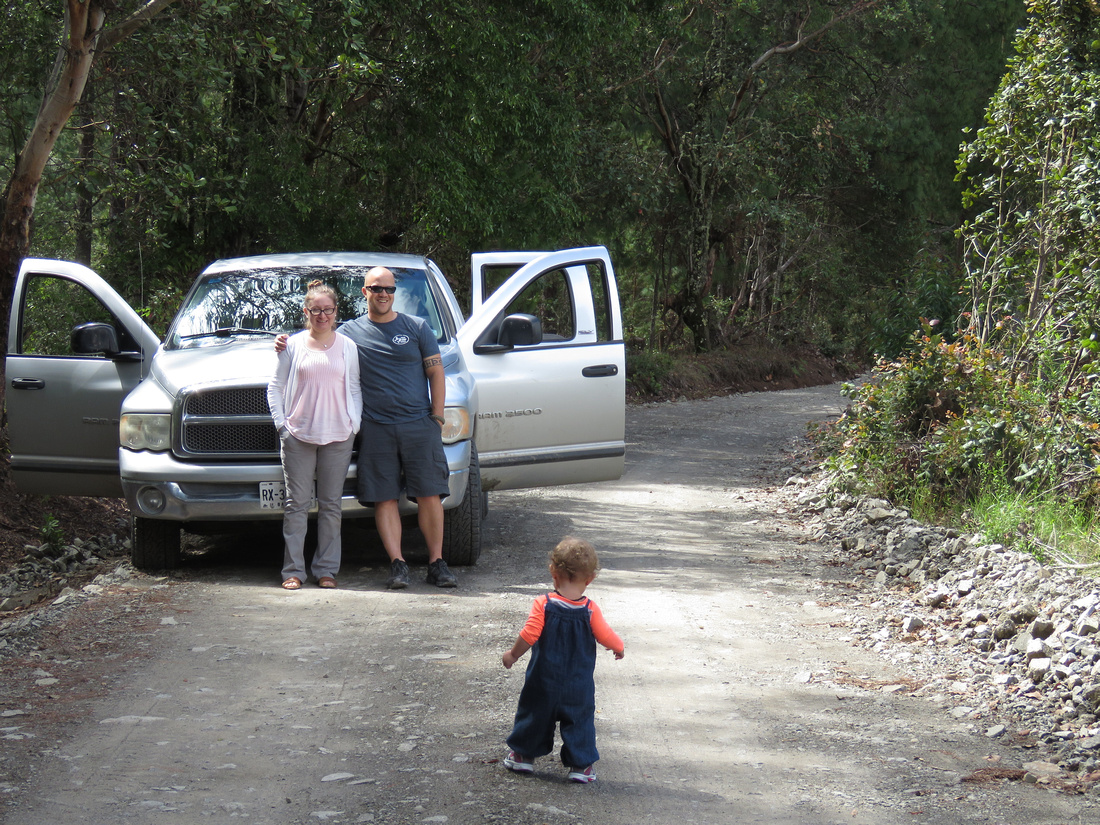

This store is in Cuajimaloyas. It was very similar to an old general store in the States. I took a taxi home so Mickey and Yadi could stay the night in one of the cabins.


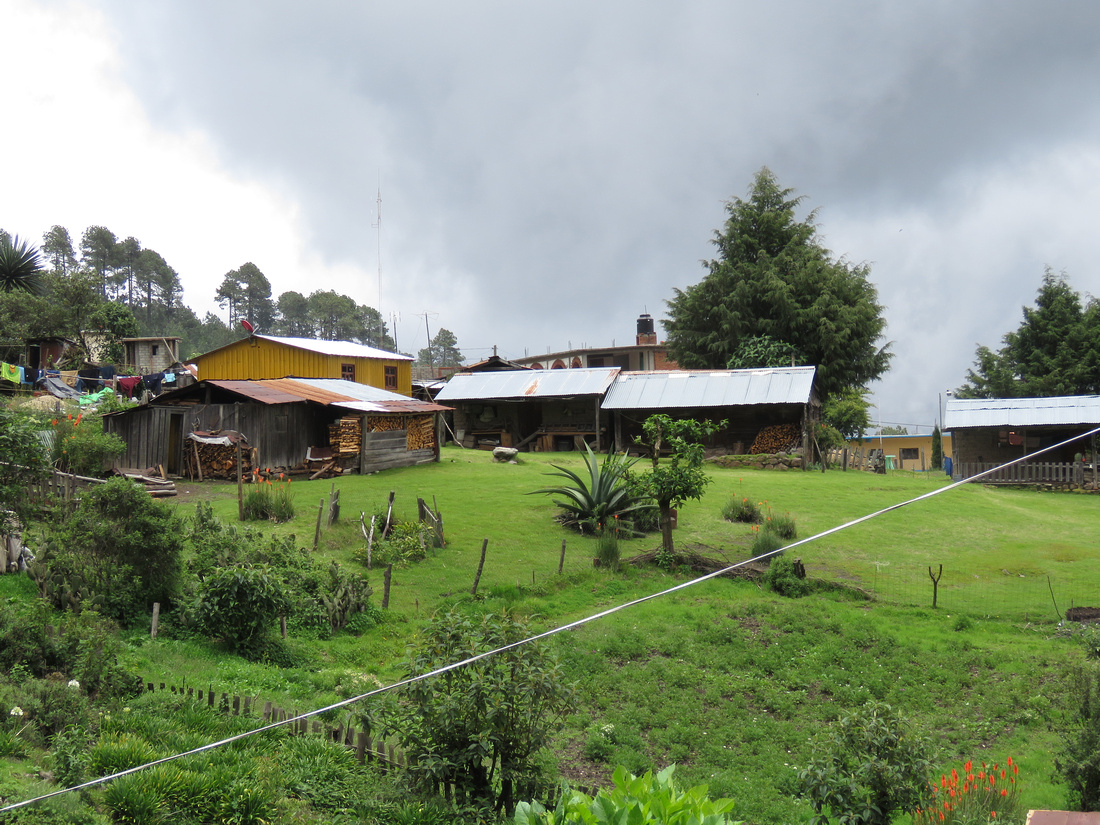

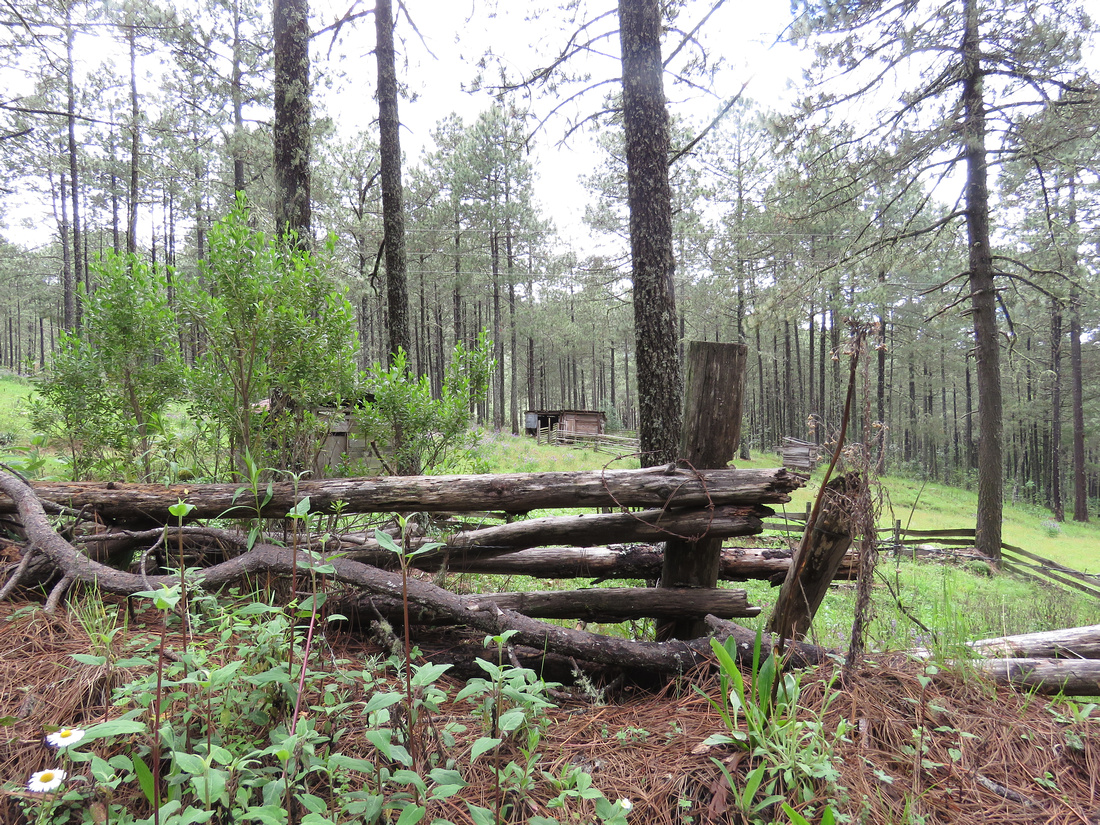

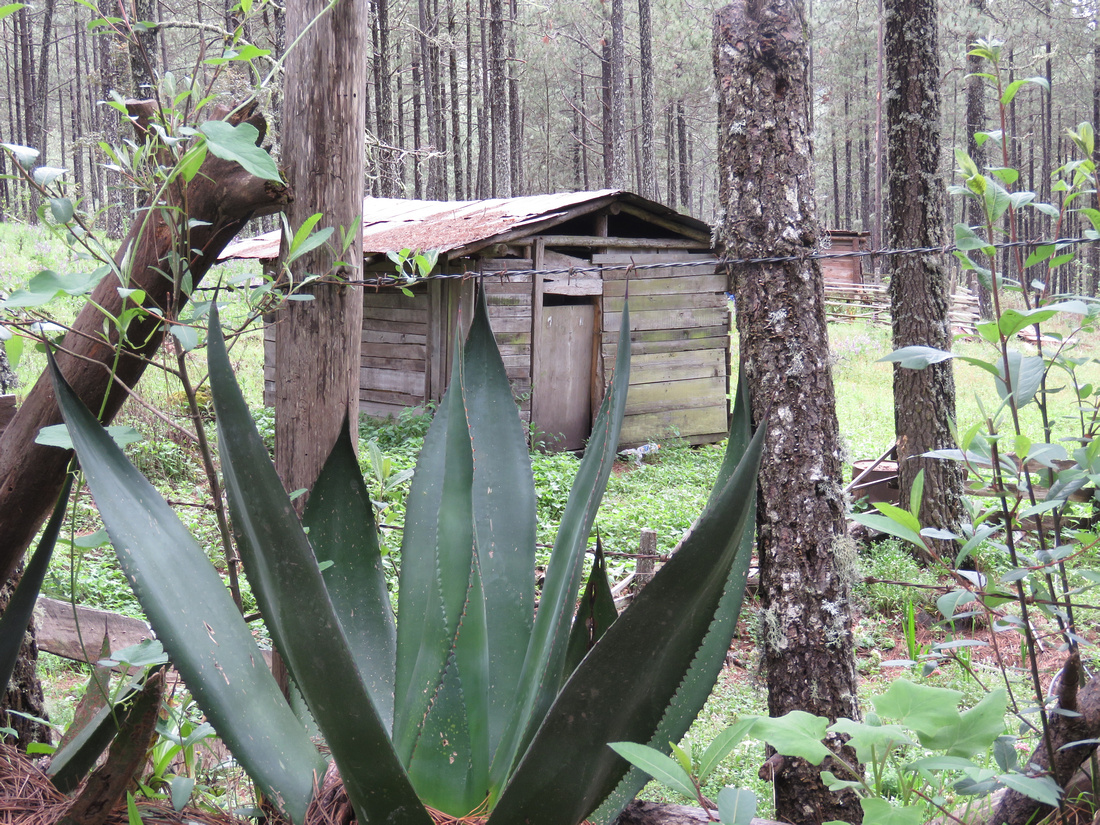

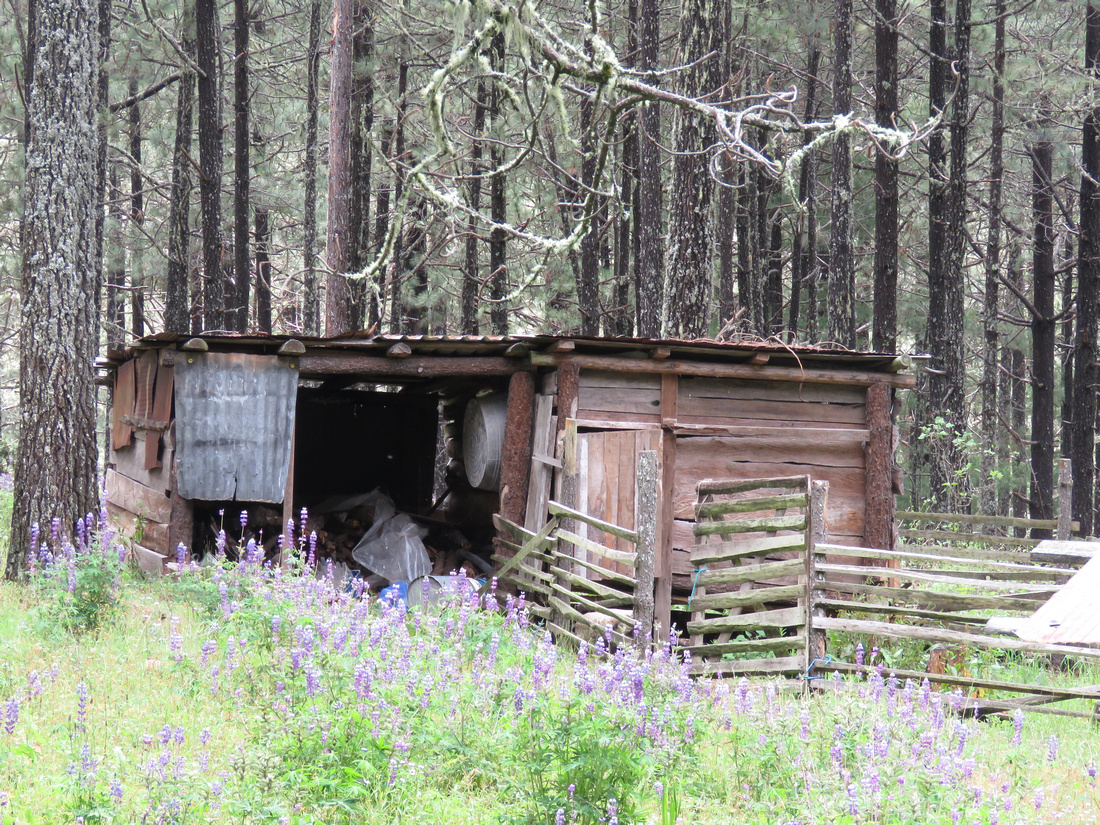

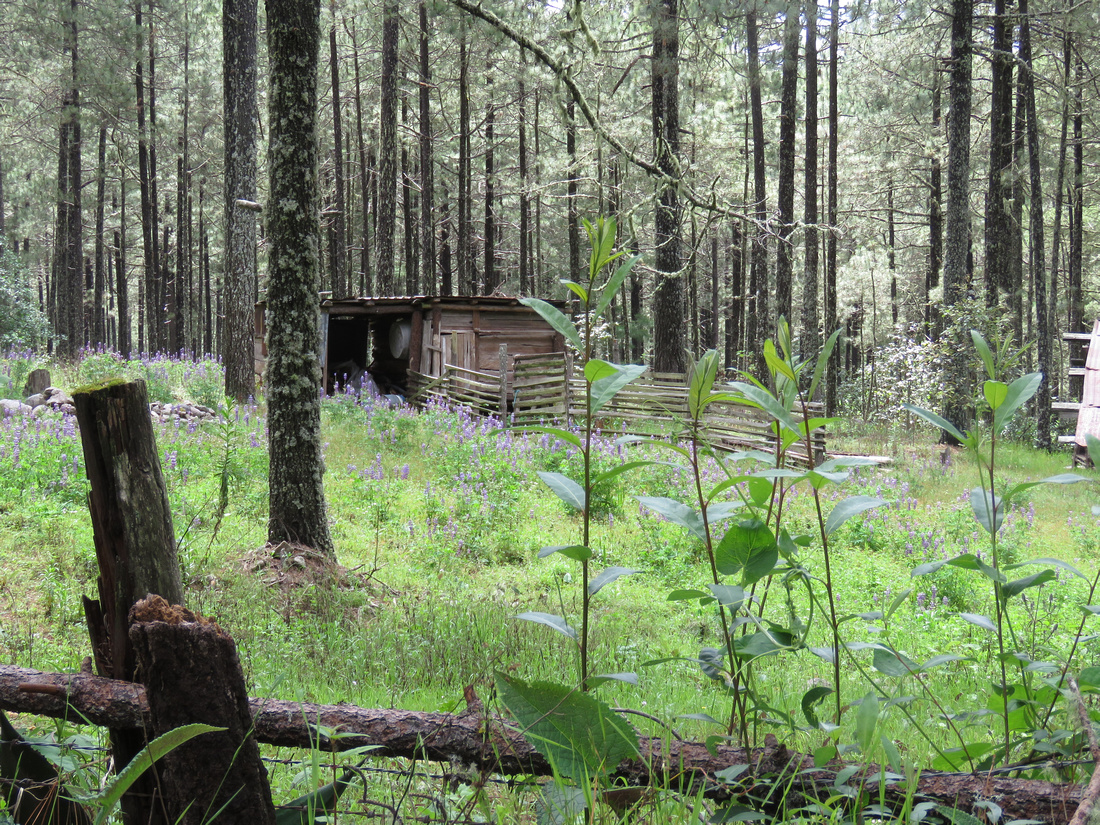

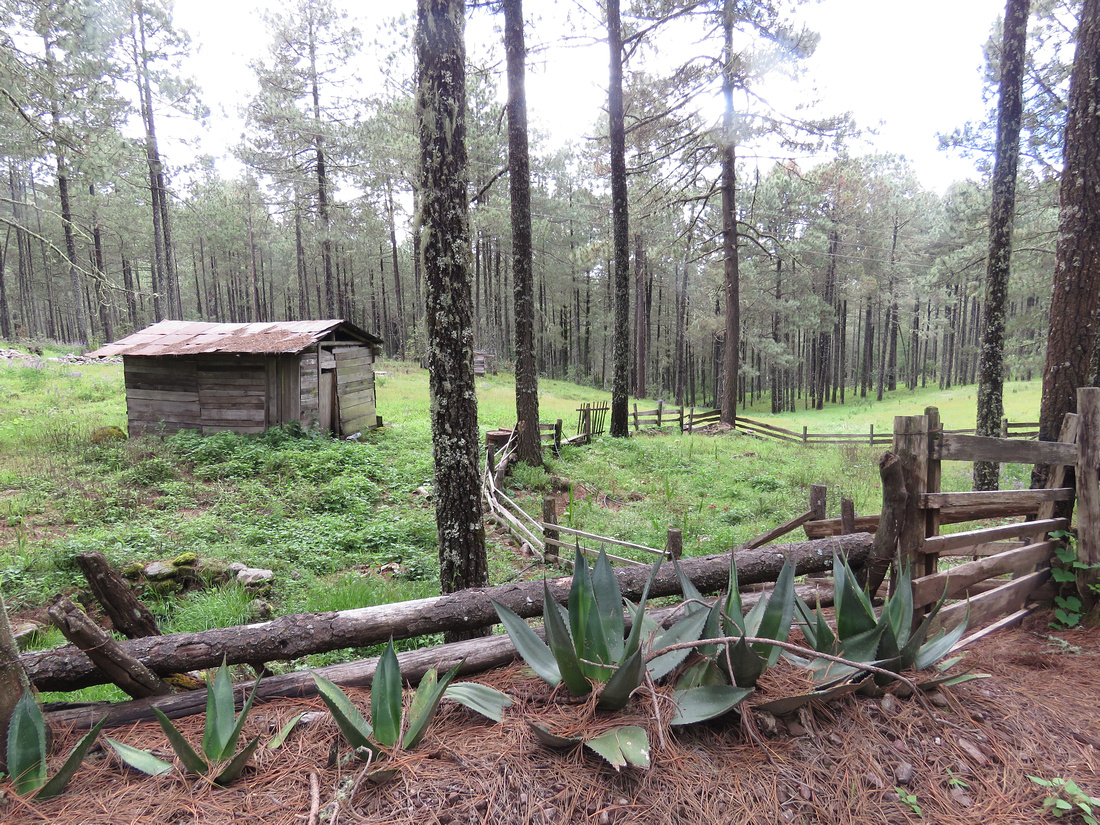

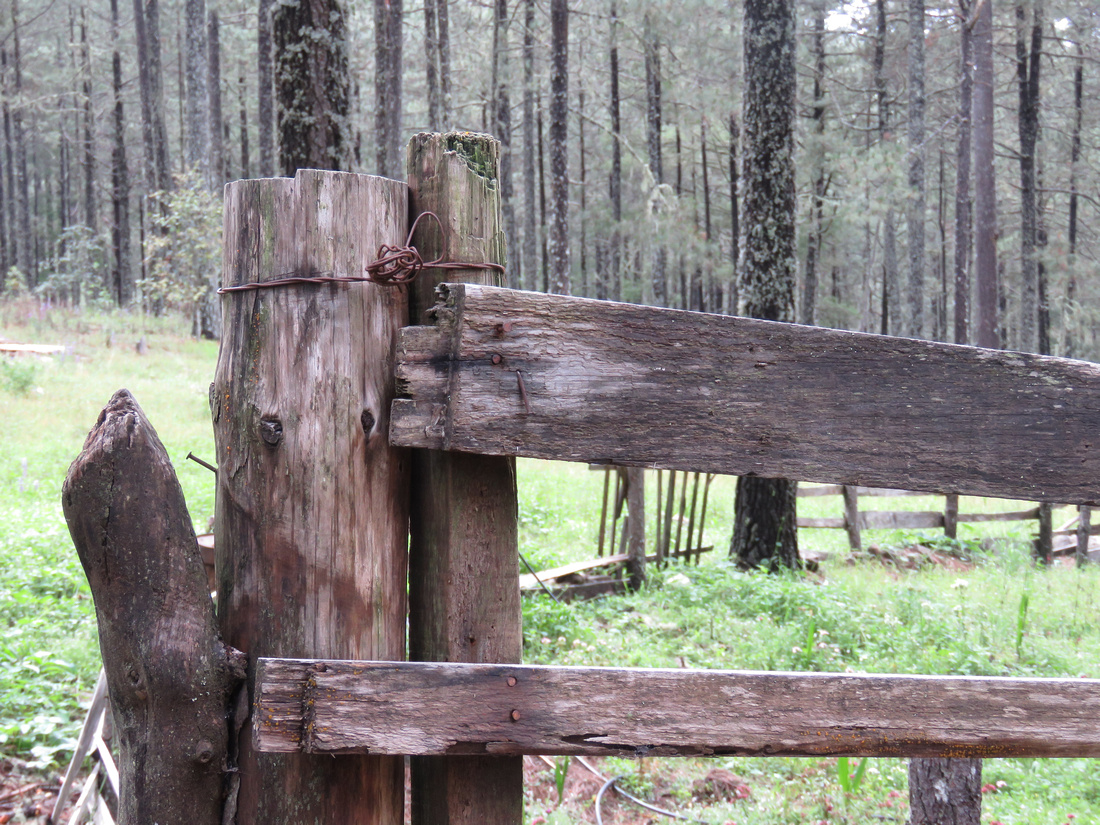

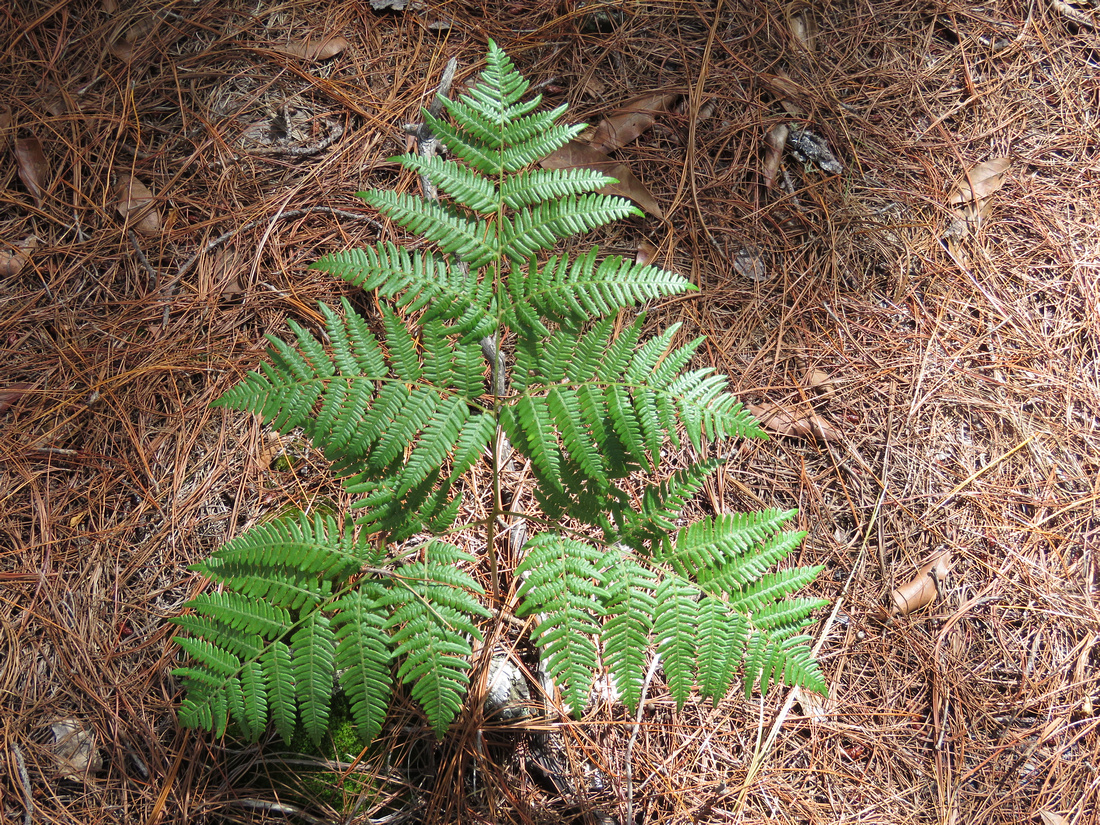

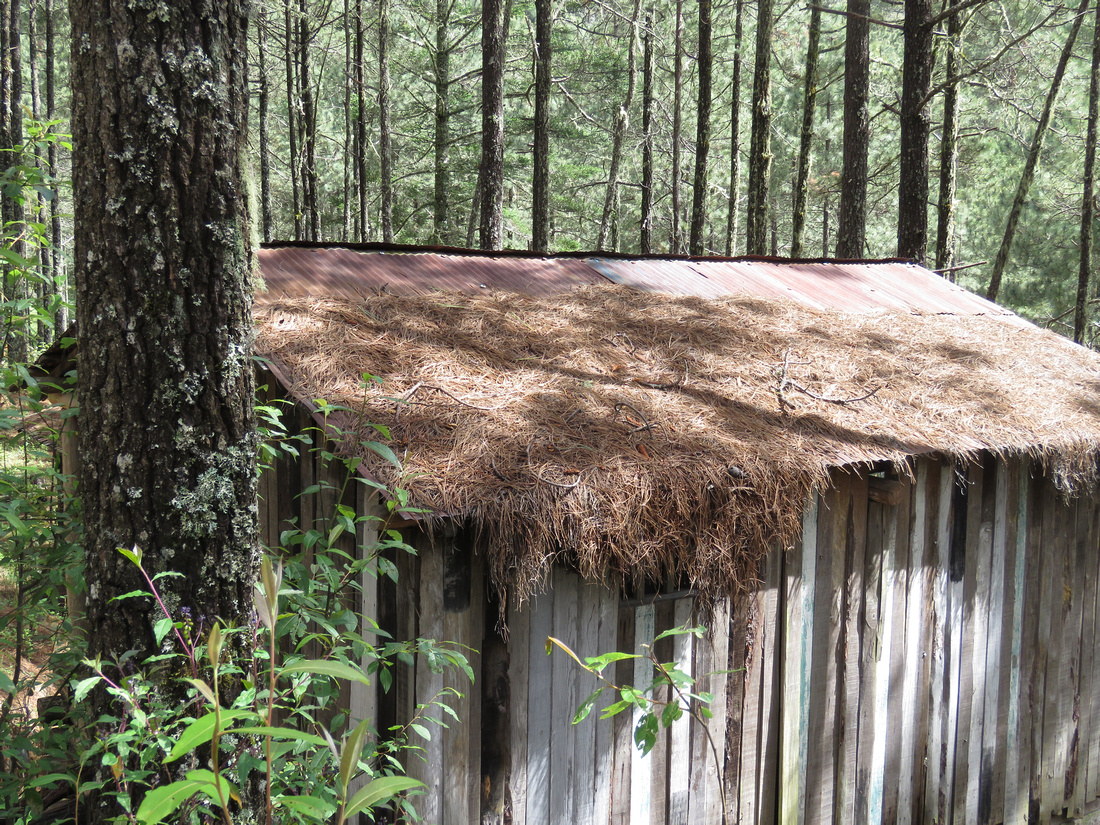
 It was a surprise seeing this home in Plano Grande. I thought the owners were Americans but they were Mexican.
It was a surprise seeing this home in Plano Grande. I thought the owners were Americans but they were Mexican.
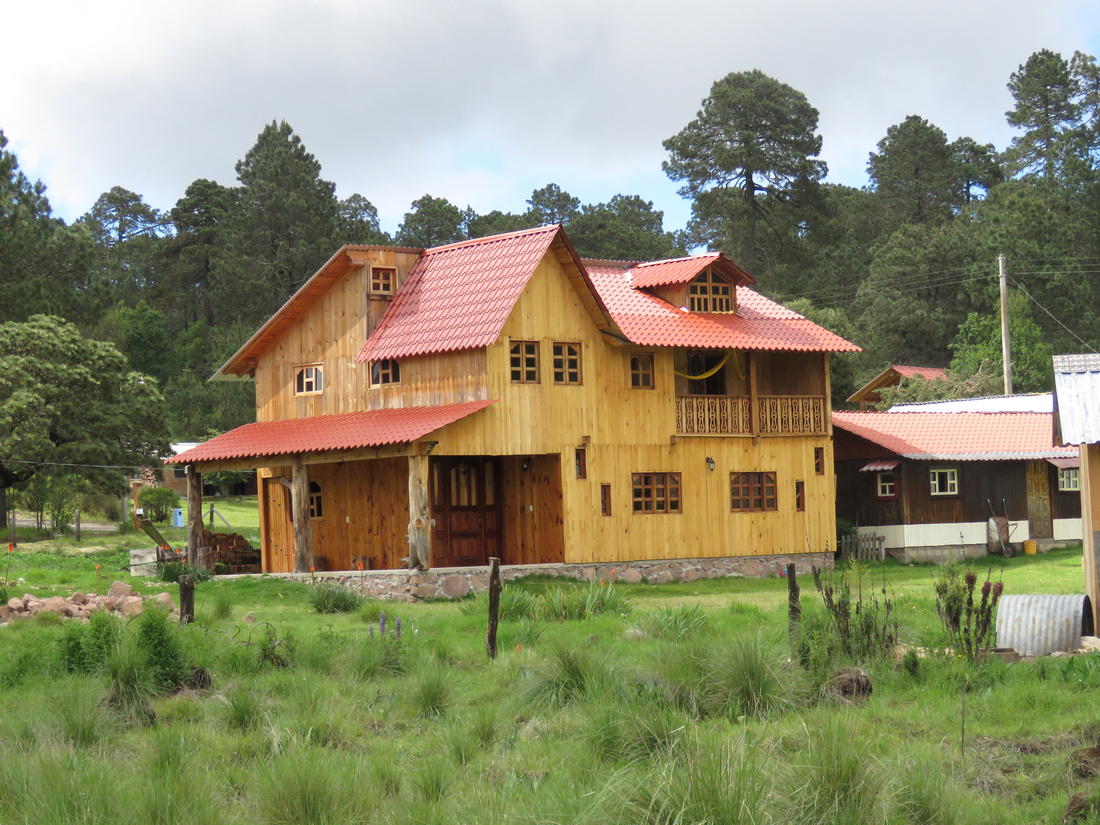

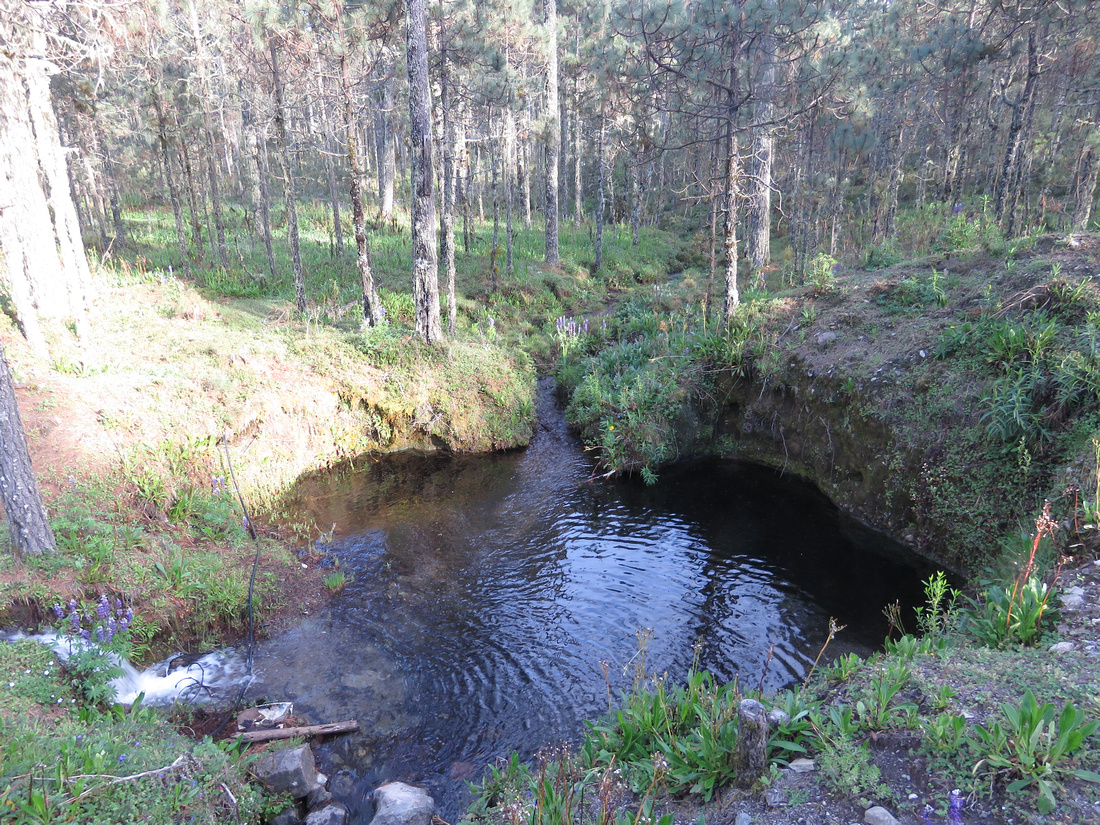

Gotta include some photos of Emily




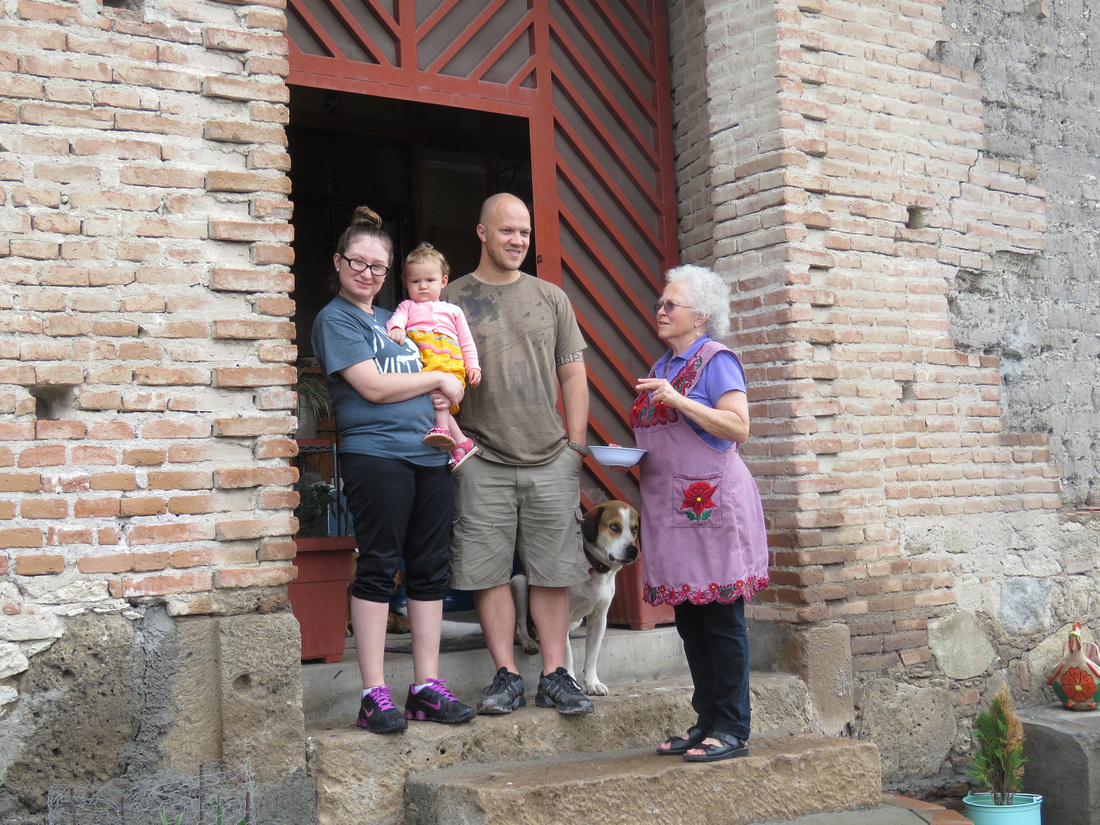



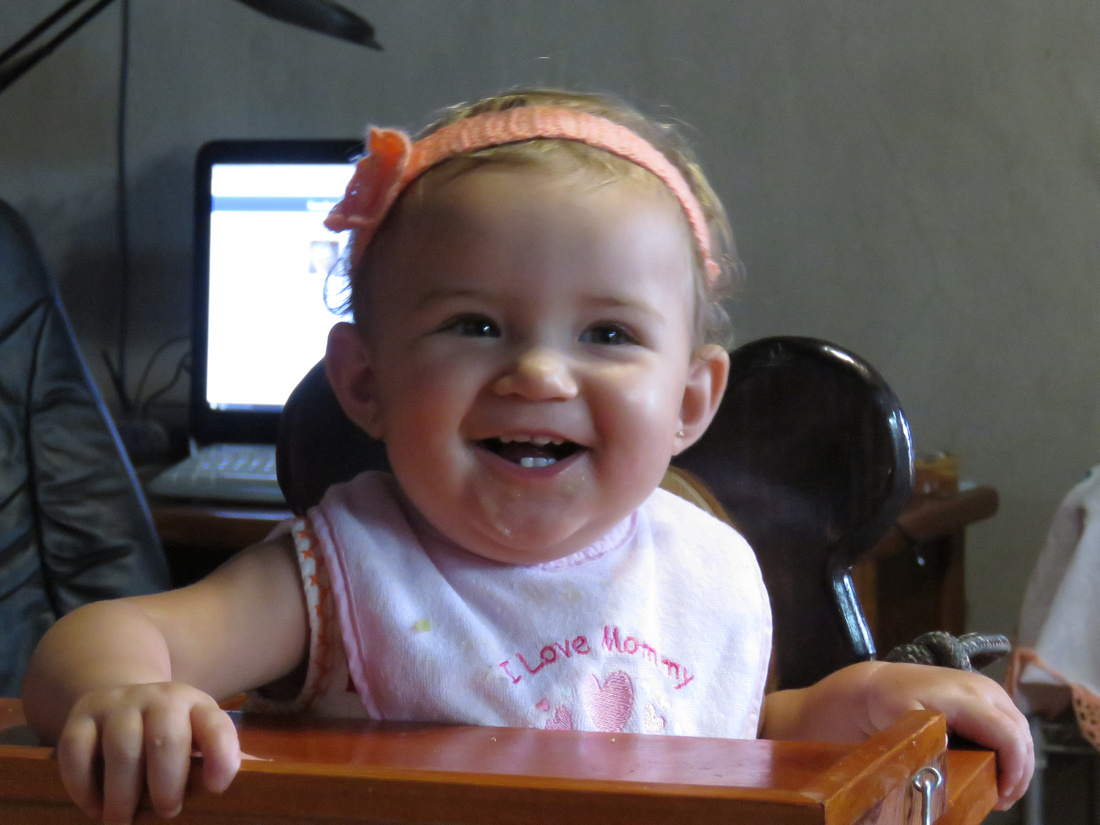

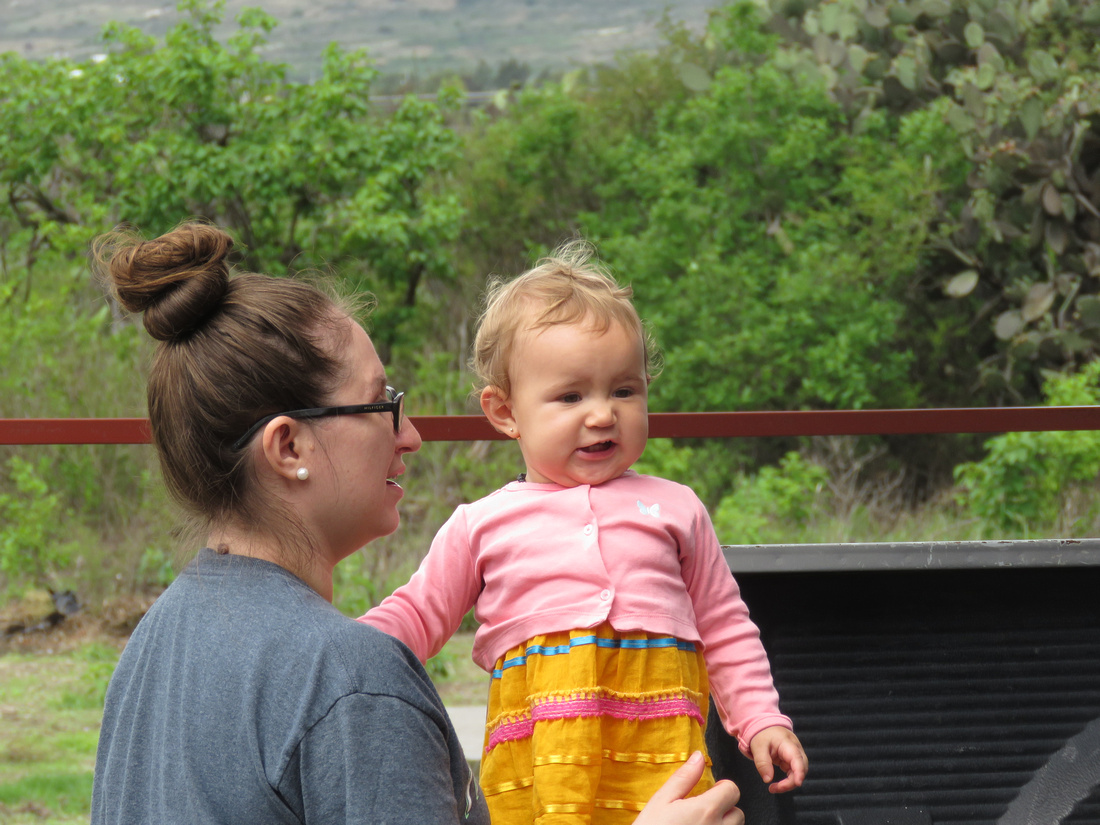

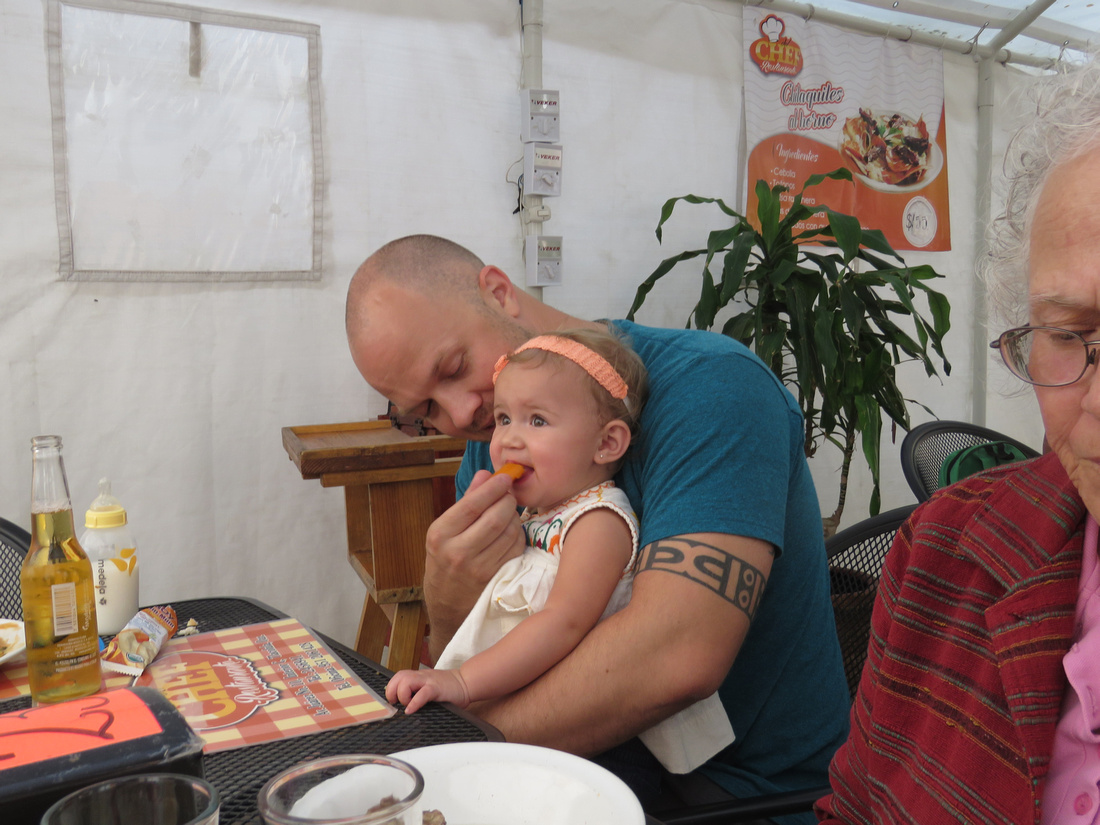

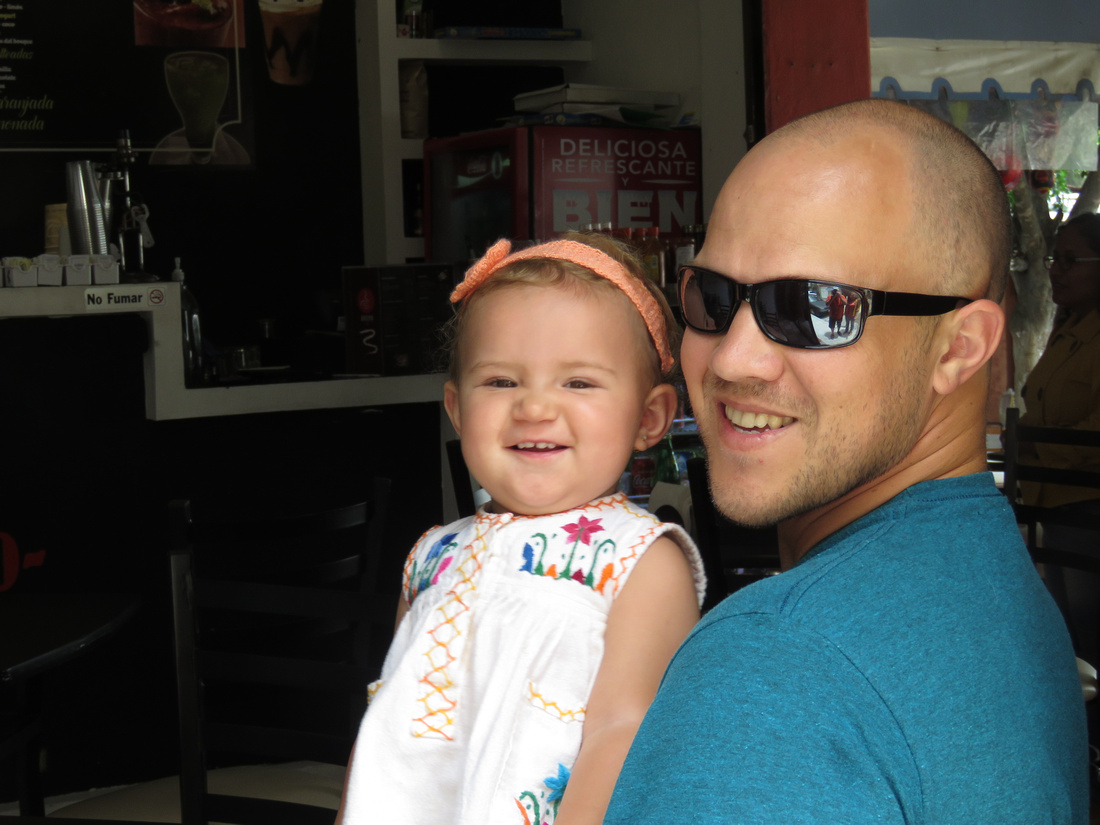



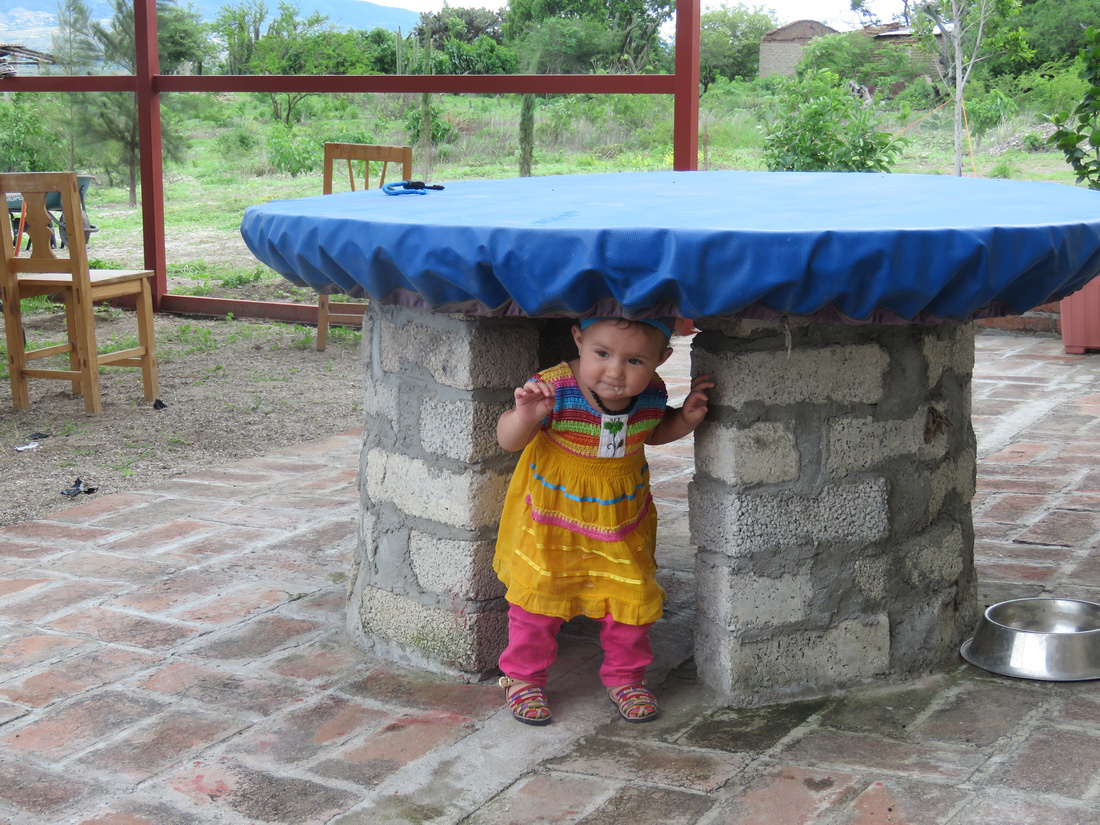

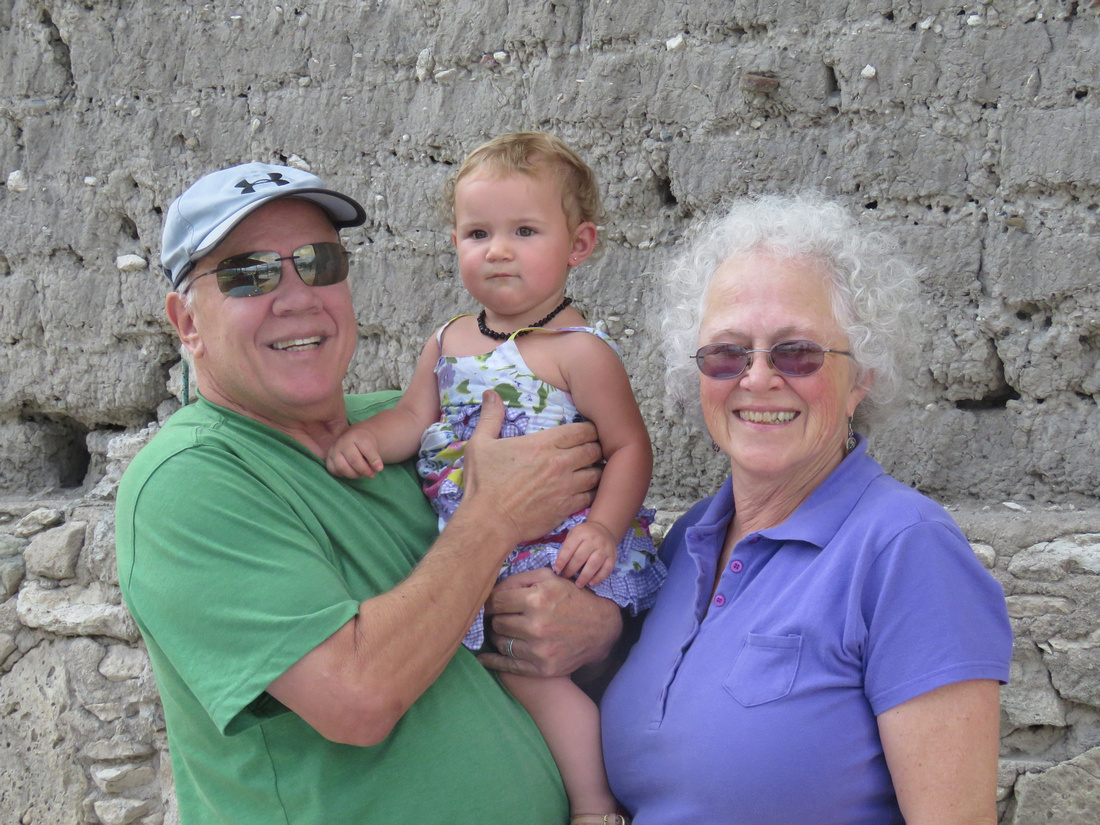

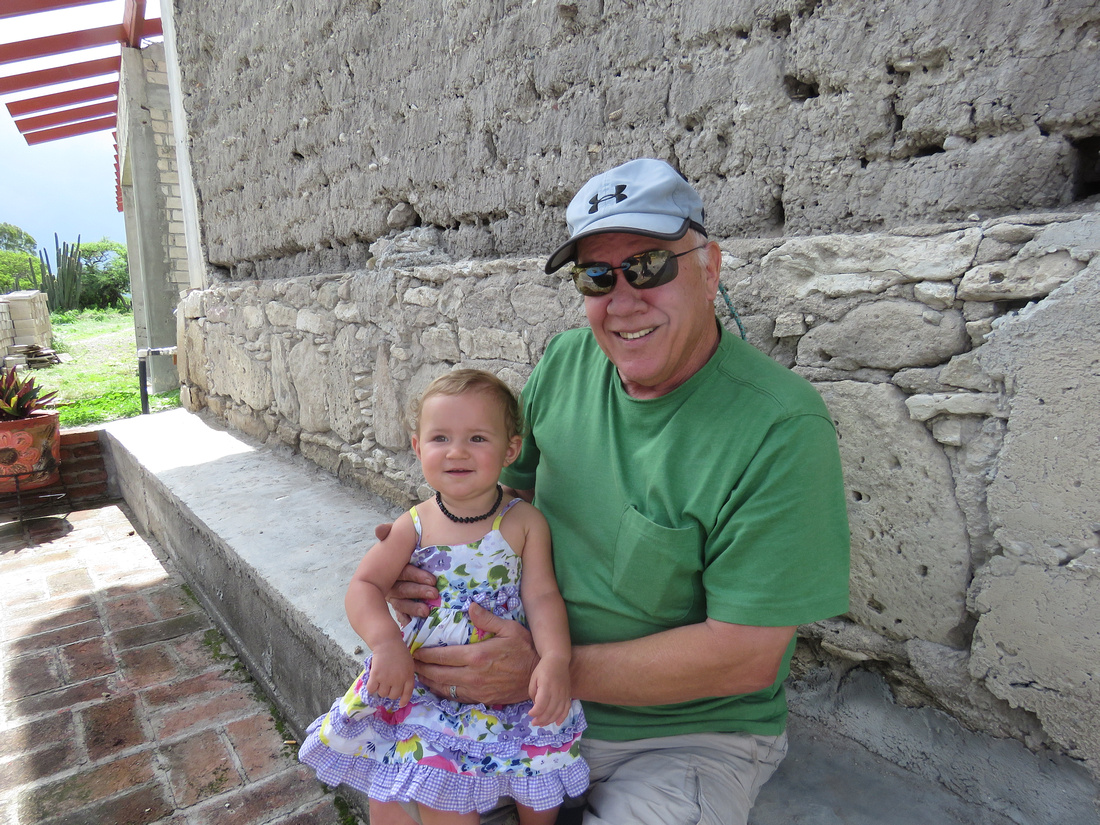

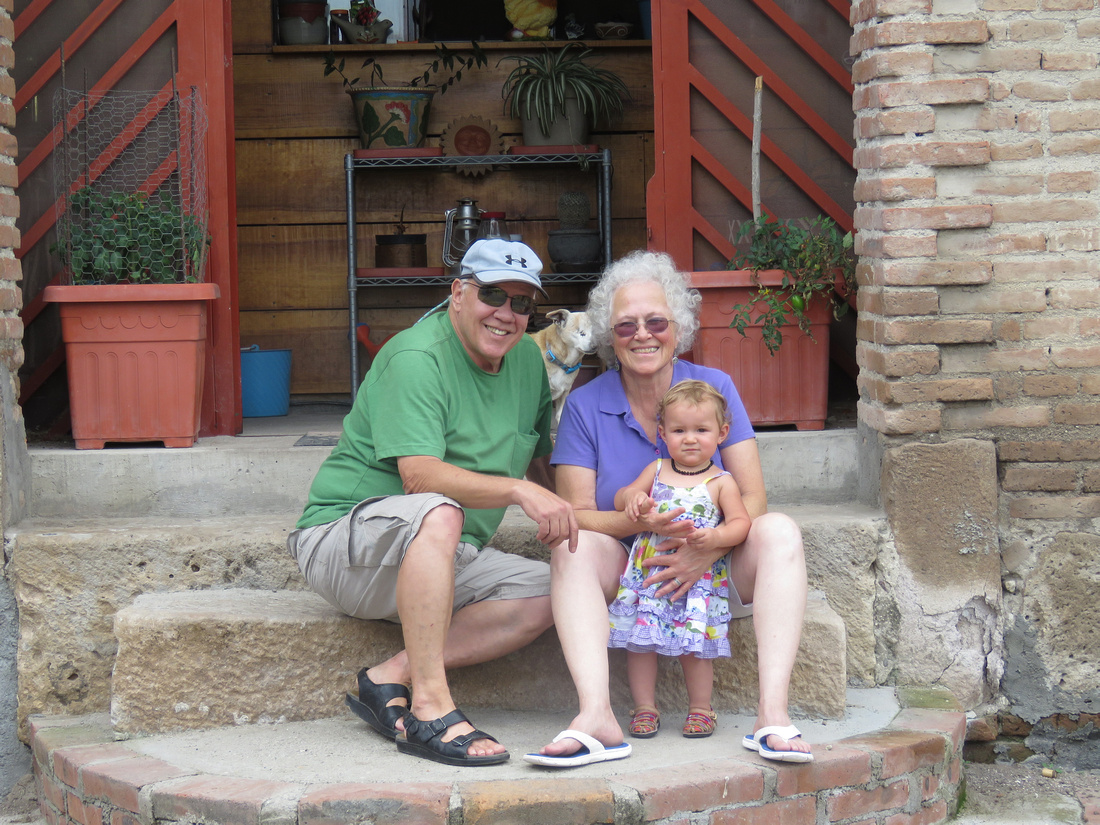

Our dog Coby is huge but very gentile. Can't say the same for Scooter.




Mickey bought a motorcycle when he was here in 2014. We never really got it going, so before this visit I got it running: it’s a 150 so it can be driven on the highway. We had a lot of fun on it. I’m a little afraid of it, so I don’t know how much I’ll use it.
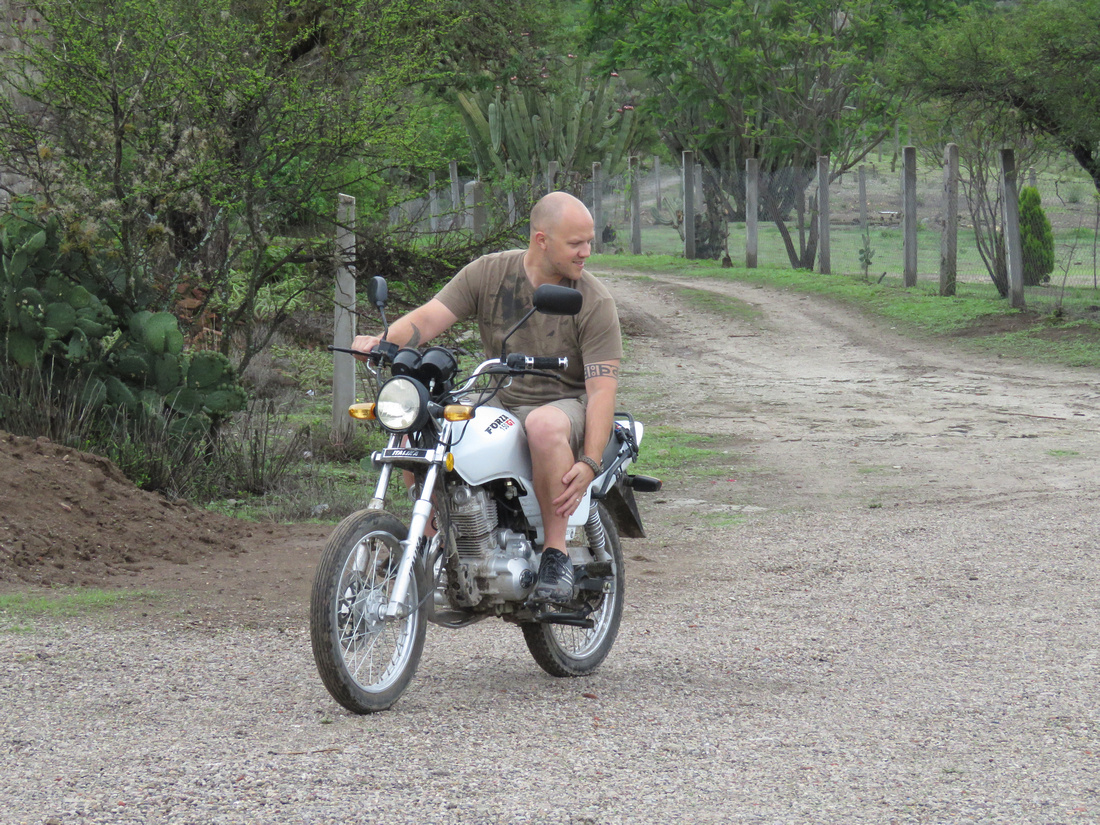

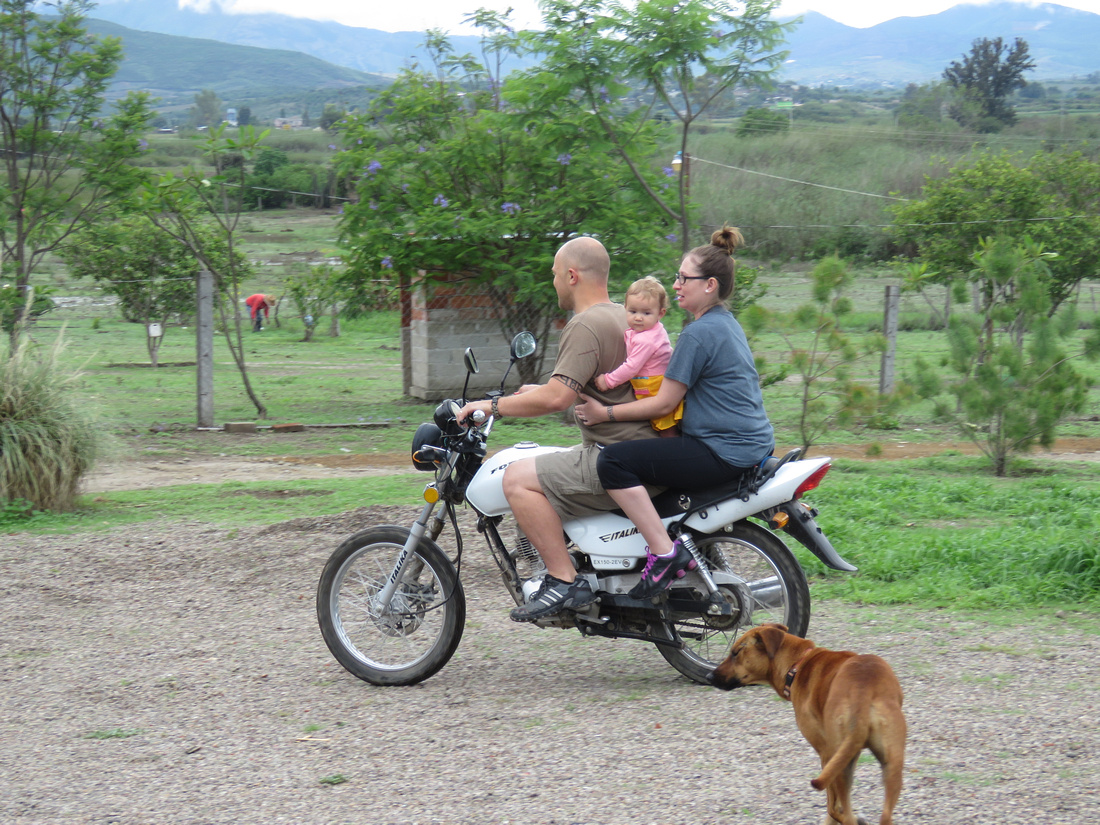

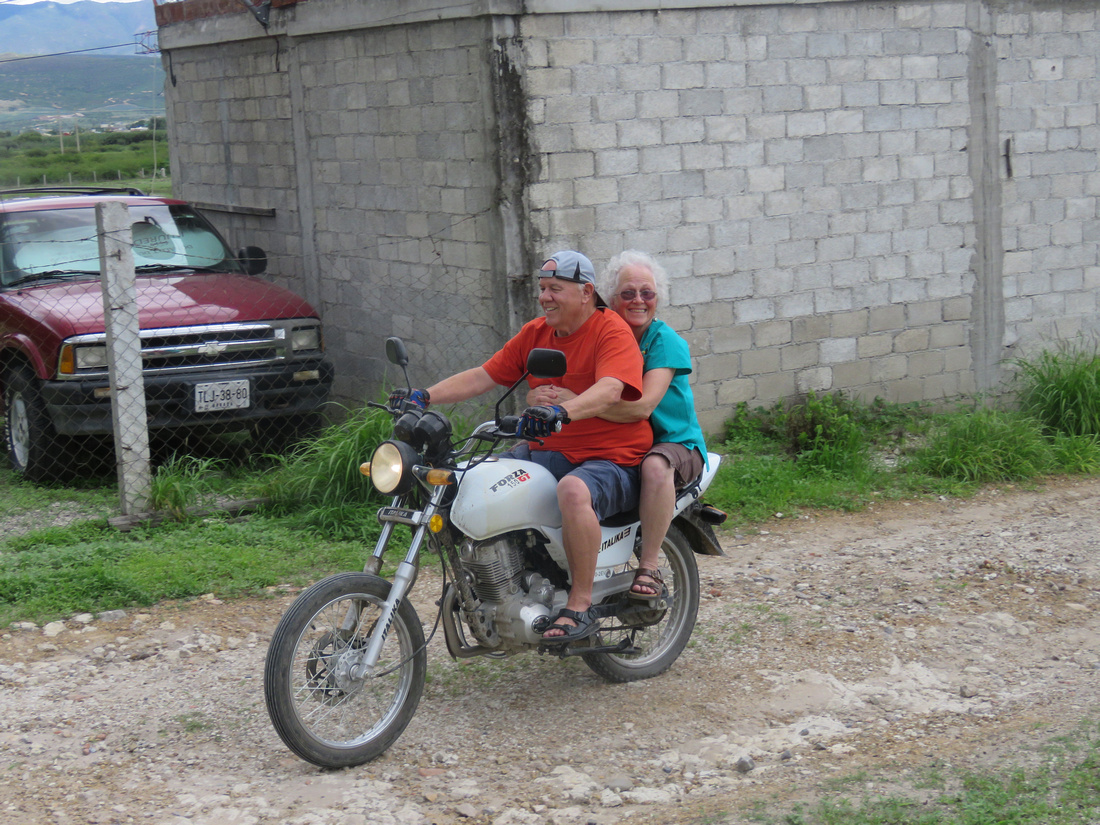

One week we had to take Gonzo (our rooster) to have his spurs cut down. He could hardly walk without cutting the insides of his legs. His spurs also cut into the backs of the hens while mating. He’s part fighting rooster which accounts for the large spurs.
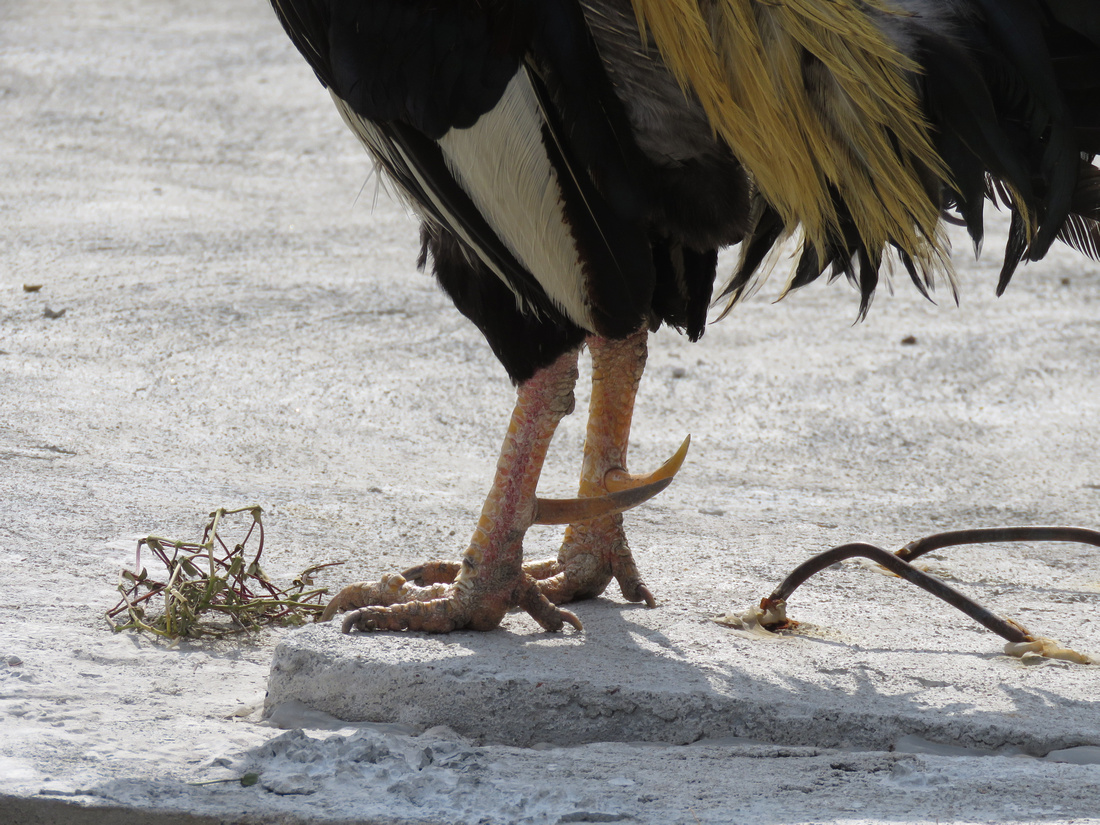

Cuajimaloyas is a little over an hour from our house. Mickey talked me into taking a ride on a zipline. The entire hike up was steep. I had to rest several times. Aside from not being in shape, I felt like the altitude was like walking around on top of Mt. Baker.
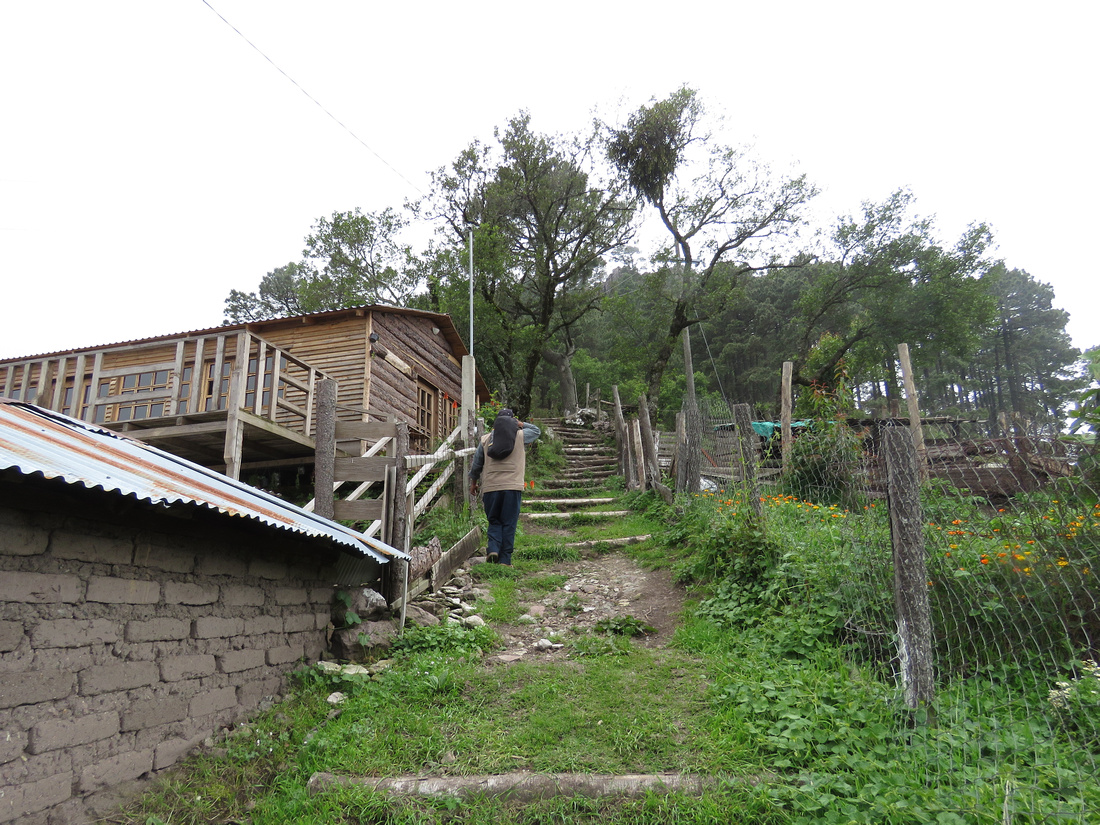

Geared up and ready to go! The gentleman who helped us said that some people change their minds once they arrive at the top. After that hike there was no way I wasn't going.
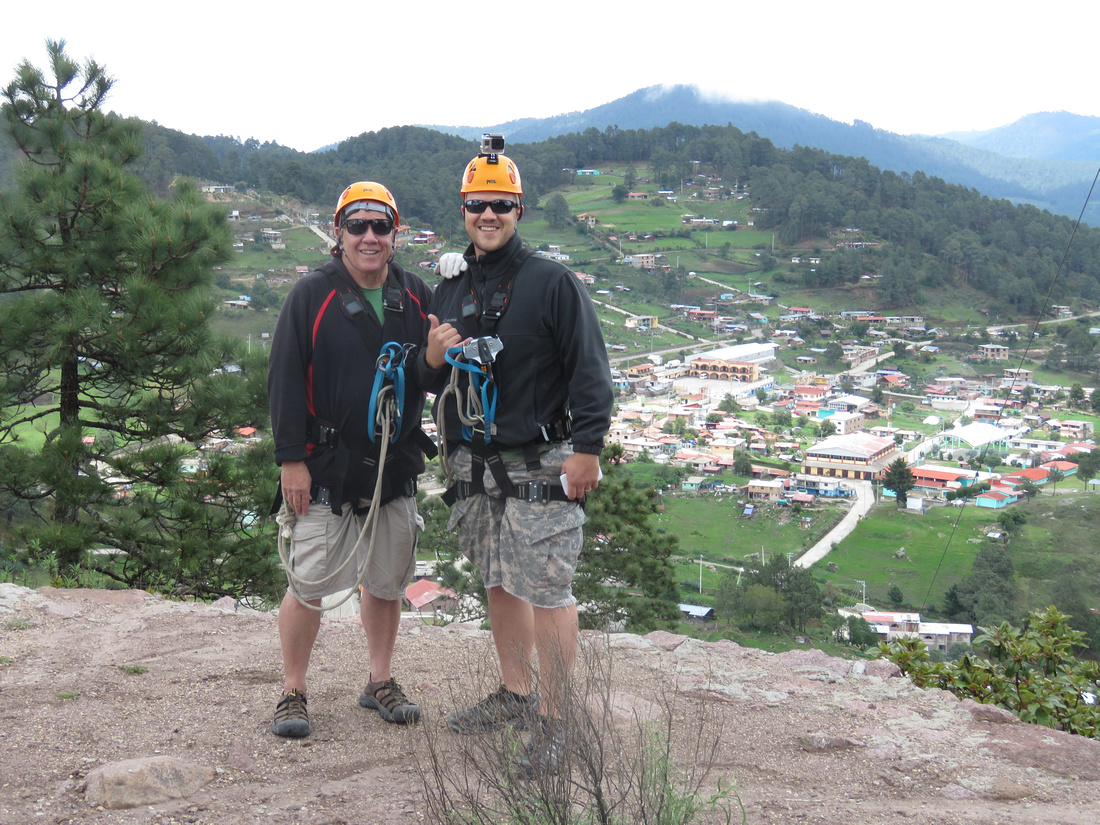

Mickey had a go-pro on his helmet. I don't know if I'll ever do it again. I think once will be enough. The trip lasts for a minute.

Mickey did a ride around here on the motorcycle. He mounted his go-pro on the front of the bike and later sped it up. It's long but the reason I posted it, is that it shows a lot of the terrain close to the house. For those of you familiar with the area, he left the house traveling towards Mitla. He crossed the highway a little past Union Zapata. Traveling back to UZ, he went past the graveyard to San Lucas then into Tlacolula and back to our house.

We took a drive to La Neveria and had to pass through Teotitlan. I'm guessing the population of Teotitlan to be about ten thousand. I had never noticed how large their church was.
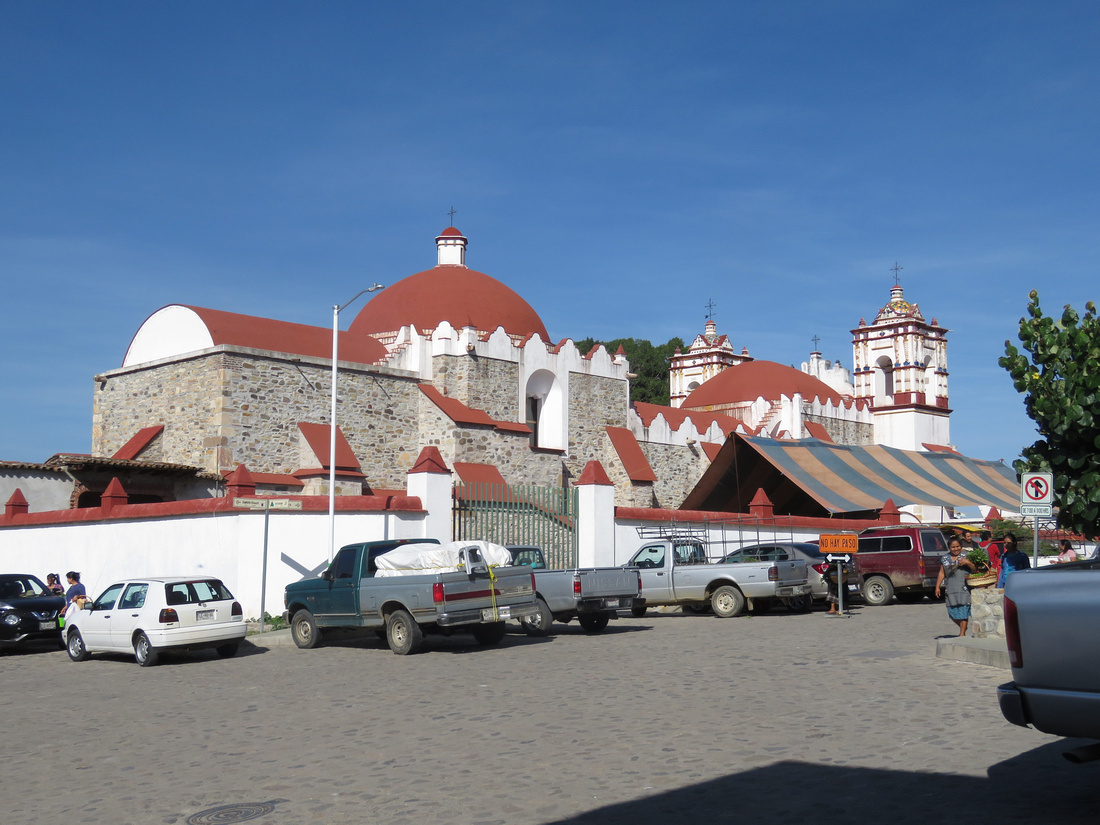



Reyna and Ricardo are college students studying linguistics. They speak English very well; both are very bright. Ricardo also plays guitar and knows quite a bit about American rock. He turned me on to Keith Richard's style of playing in open G.
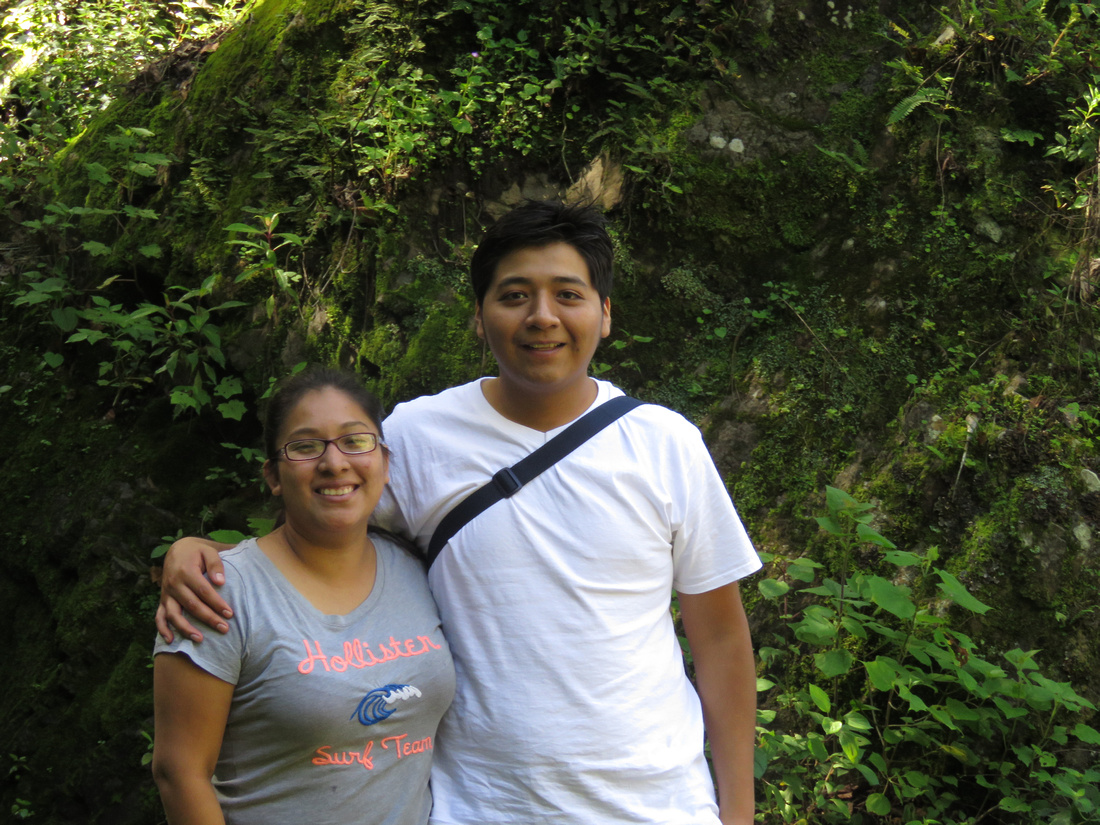

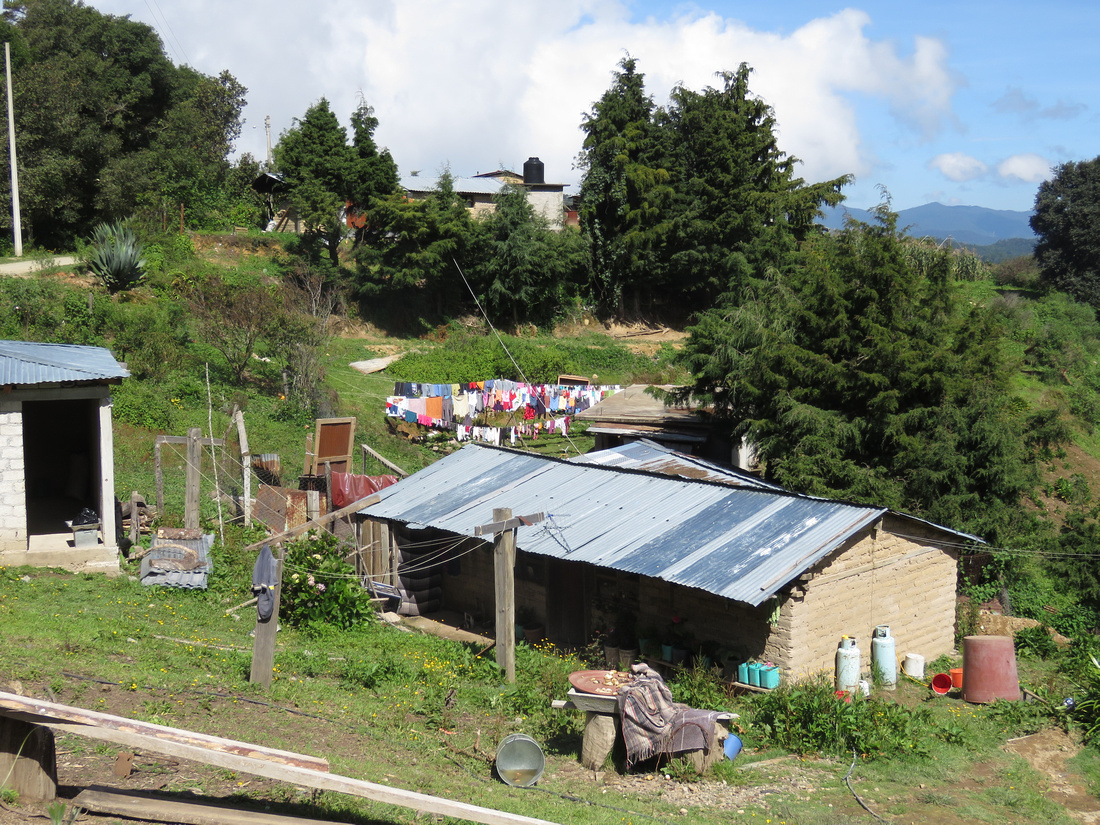

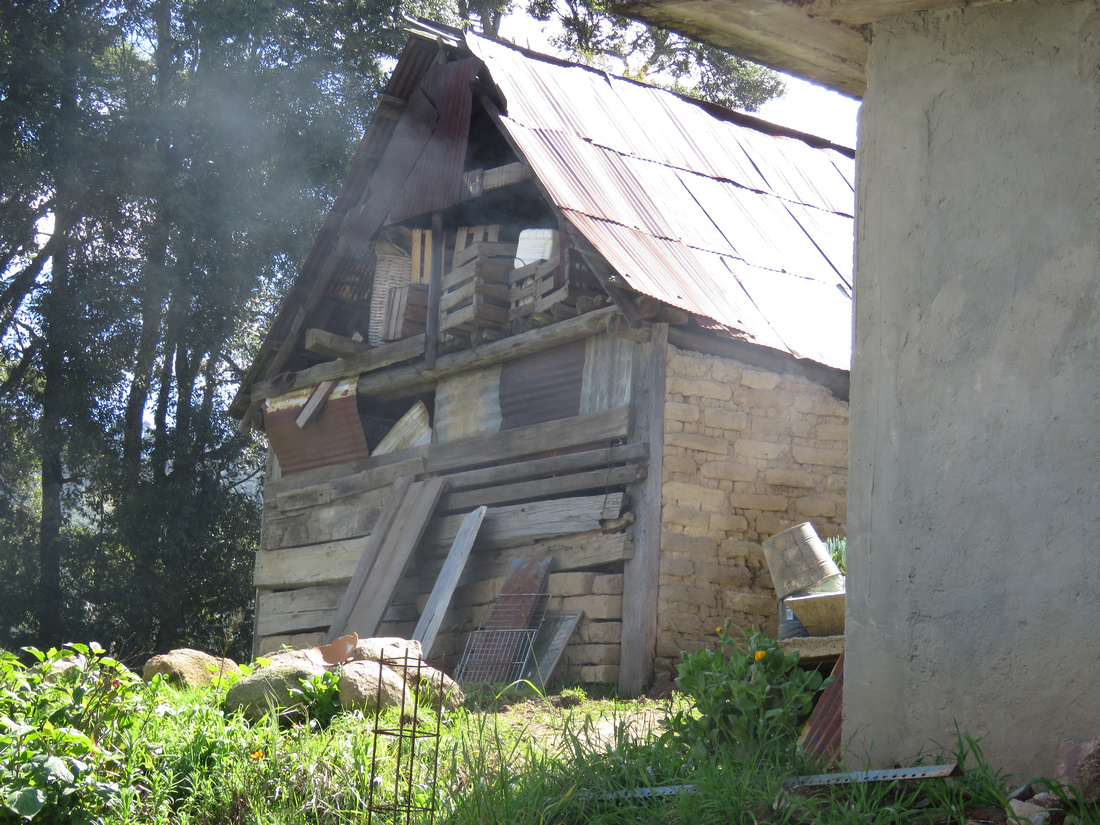

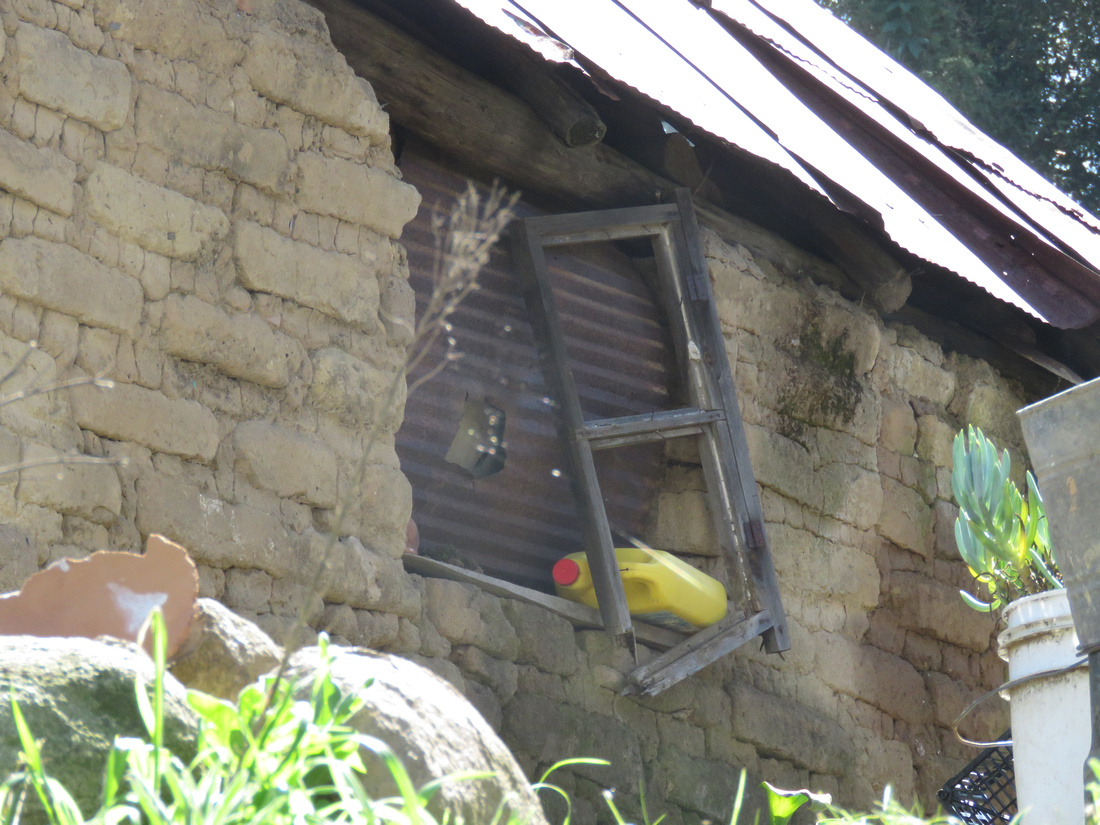

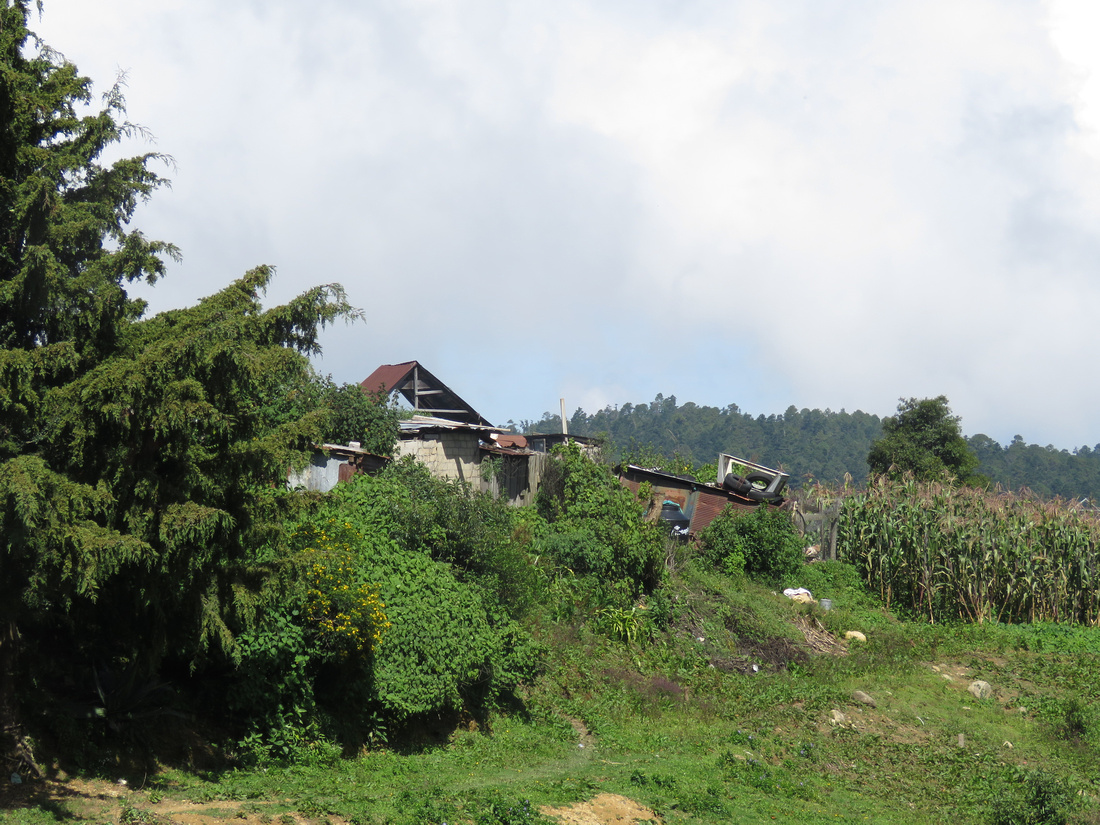

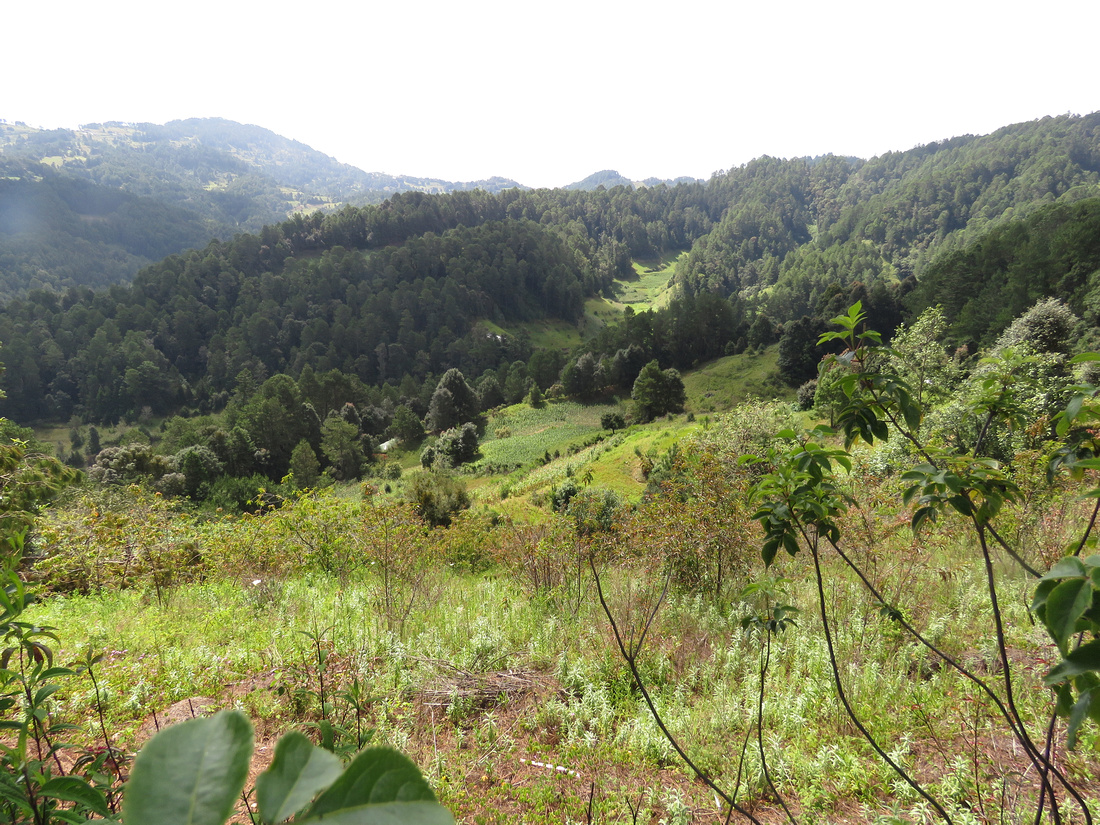

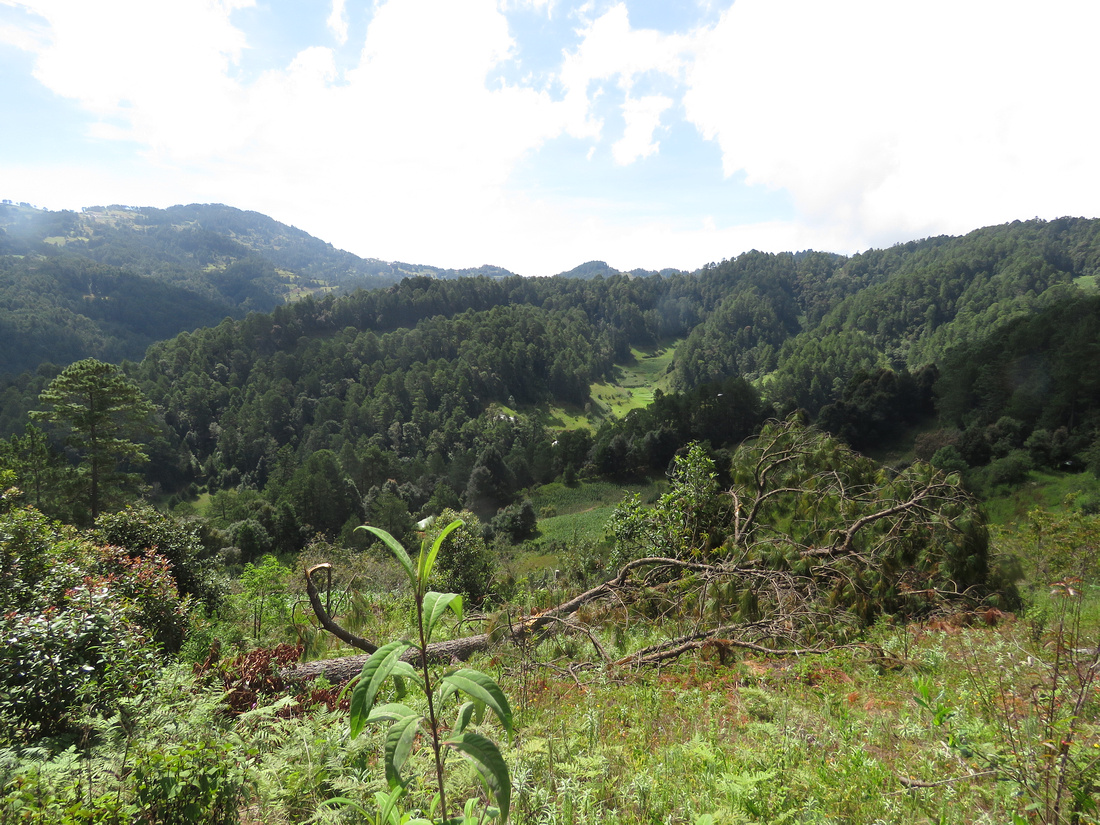
 La Neveria is hidden in the mountains. It's a beautiful little village with about eighty families. One of the men I talked to told me that if you were walking and dropped something you could be assured that when you returned, whatever you dropped, would still be there. There are no drugs in this village. This is probably the most innocent place I've ever visited. Unfortunately, there is not much work for youth, so most leave to a large Mexican city or pass to the US. I couldn't help but imagine how difficult it must be to leave and endure the challenges of the outside world.
La Neveria is hidden in the mountains. It's a beautiful little village with about eighty families. One of the men I talked to told me that if you were walking and dropped something you could be assured that when you returned, whatever you dropped, would still be there. There are no drugs in this village. This is probably the most innocent place I've ever visited. Unfortunately, there is not much work for youth, so most leave to a large Mexican city or pass to the US. I couldn't help but imagine how difficult it must be to leave and endure the challenges of the outside world.
I asked a gentleman what happens in case of a heart attack as they are so far from civilization. He replied that no one has ever had a heart attack. In the past thirty years they have had two cases of cancer. One case involved a man that had worked for years in the States and the other was a man who'd worked in Mexico City for years.




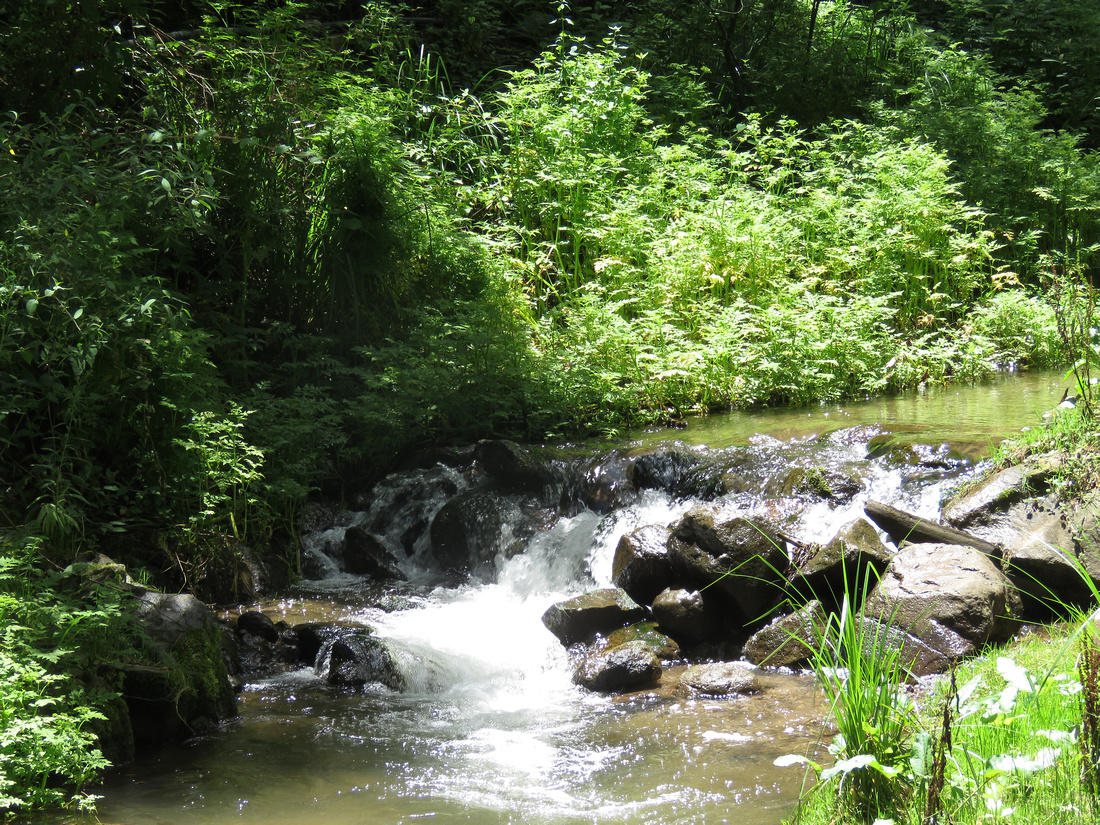

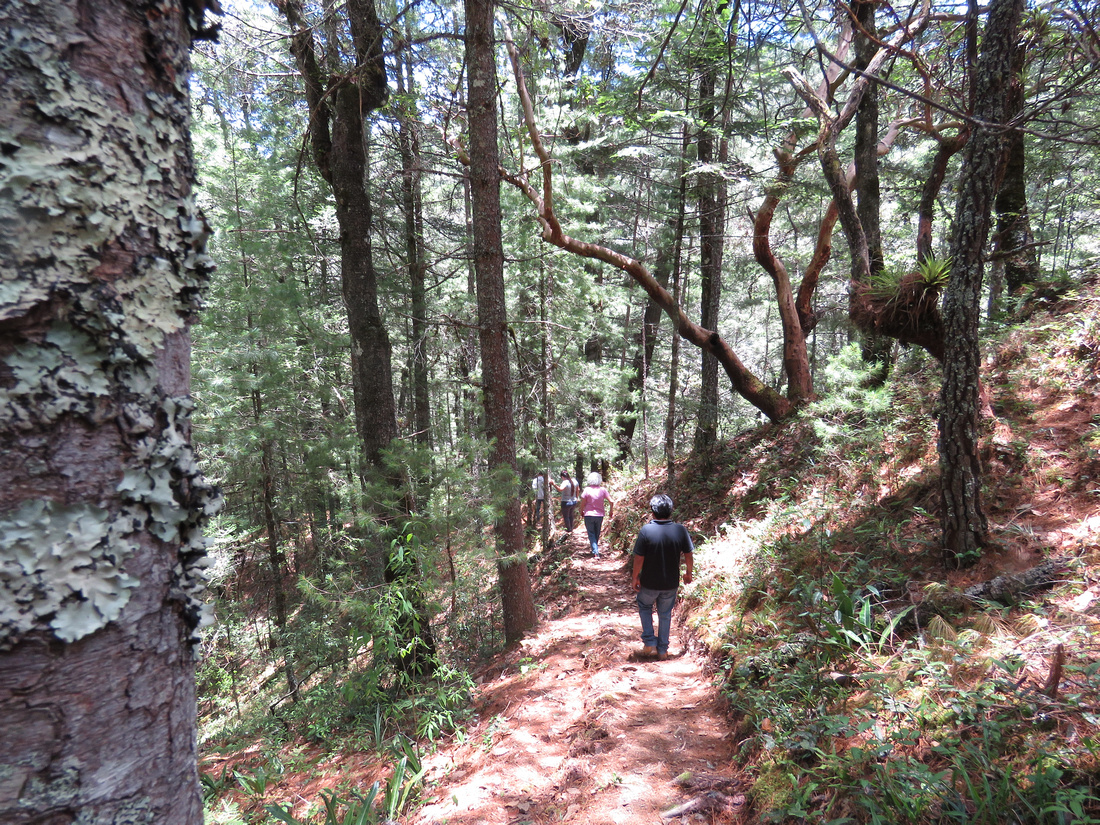

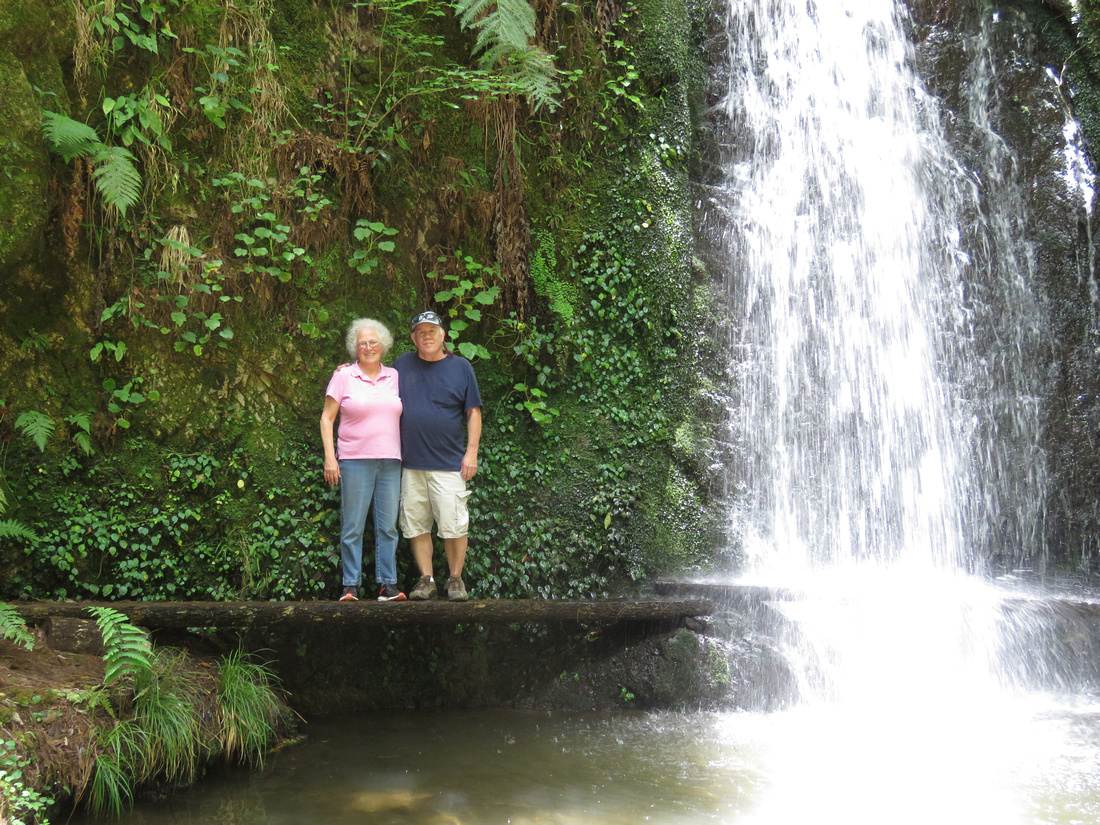
 We don't see a lot of moss. It's so dry in the valley.
We don't see a lot of moss. It's so dry in the valley.
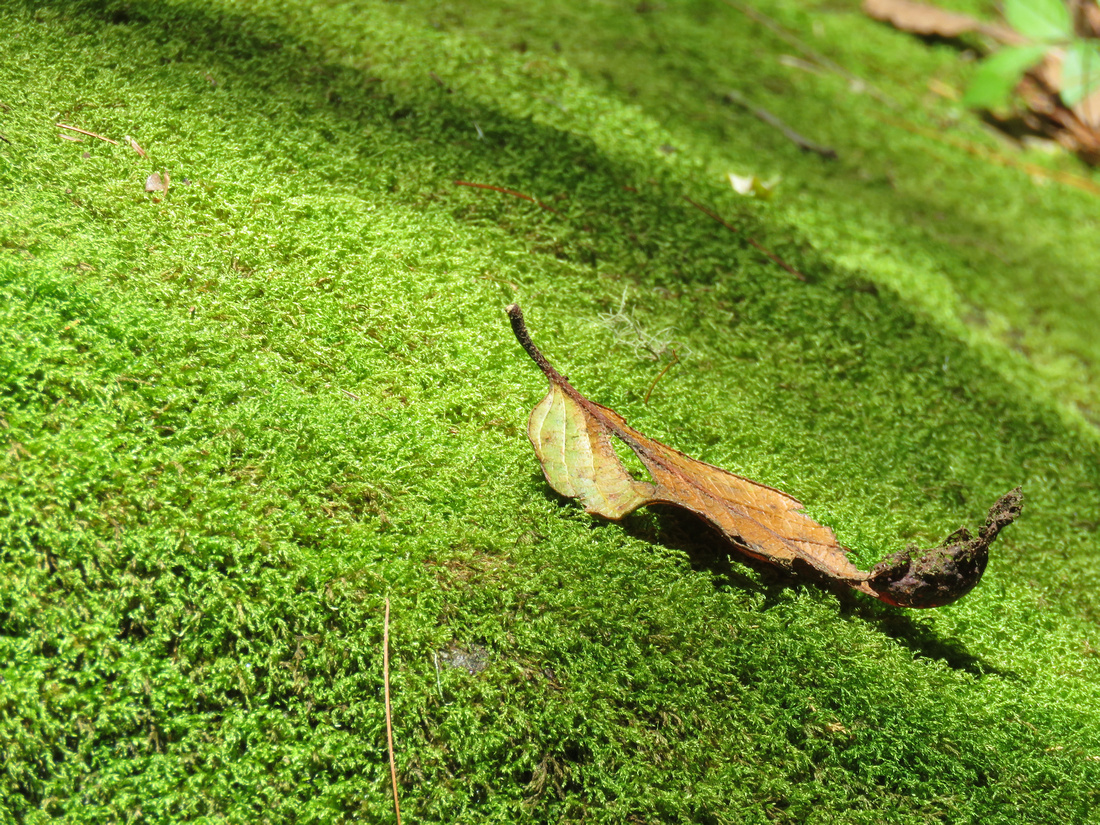
 This little sweat lodge was built for tourists.
This little sweat lodge was built for tourists.


Beth had the chance to do a small zipline. She loved it!

We just found out that a McDonald's will be opening in the MacroPlaza in Oaxaca. This is where the closest WalMart is located and where we do most of our grocery shopping. Now we can eat American-style when we shop.
Tale of the truck
When we left our truck in Texas (due to the high cost of nationalizing it), I had no idea how long it was going to take to replace it here in Oaxaca. I hadn’t noticed before, but missing here are car lots with used cars. Ok, there are a few. They are all of the name-brand agencies (more about that later).
We spent the first month back using taxis to get around. The walk out to the highway wasn’t bad, but coming back loaded down with groceries, etc. was uncomfortable especially on hot days. We learned to respect the majority of the folks here that don’t and never will own a vehicle. Planning ahead is crucial and we got a peek into the lives of how the vehicle-less survive. Grocery items don’t present too much of a problem but there is feed for dogs and chickens, and filtered water to be purchased and transported. It turns out the taxis are accustomed to hauling items apart from passengers. They were very accommodating, including delivering items right to our door (for a reasonable fee).
We were adjusting quite well, spending more time at home, and making fewer trips. However, it did drastically cut into our social life. We literally stopped visiting friends. But our friends came to see us and on several occasions gave us rides to run errands. Our friends often showed up with fruit, bread, tortillas, and other basic items. I don’t believe we ever appreciated company as much as we did that month.
One Sunday we were at a comida at our neighbors when the subject of transportation came up. They had no idea that we were without our truck. Feliciano offered us the use of a vehicle but Beth and I were uncomfortable. We’d been offered other vehicles, but we were reluctant. A friend (Rosendo) had offered me his only truck.
A couple of days after the comida, Feliciano showed up at our house with a Jeep Wrangler. He had all the paperwork and proof of insurance. We were floored! Beth and I will never forget this act of kindness. We accepted the Jeep and have driven it for almost three months.
We diligently searched for a truck. We were adamant about wanting a four door pickup. Buying a vehicle in the States can be tough. Here, it’s scary as hell. Totaled vehicles can be repaired and resold here. They do a very good job repairing and painting. I almost bought a couple of trucks, but fortunately I spotted small signs that they had been repaired. There is also the problem of buying stolen vehicles. I probably passed on a couple of good buys, but I had bad vibes.
I bought a 2002 Ford pickup that had been brought down from the States but discovered that the original paper making it a Mexican vehicle was missing. We tried for a week to get it changed into our names without success. Ultimately, our money was returned and we returned the truck. We were sorry. It was a beautiful four door Ford truck.
We became a little desperate and applied at the Nissan dealership to buy a basic four door new pick up. We filled out all the forms, supplied several references, and waited for an answer. A week went by, then two, and by the third week we became frustrated.
We looked at a few more trucks but were either wary or dissatisfied.
One evening we got a call from a friend who knew of a truck for sale. It was a 2002 Dodge Ram pickup with four doors. It was owned by a doctor who’d bought it new. We made arrangements to see the truck. It turned out to be the deluxe model sold that year. It had everything including a V8. But it was the smallest V8. In fact the motor wasn’t available in the US. The doctor was a nice man, pretty straight forward about the truck. The truck was built in Mexico for use in Mexico. I converted the kilometers to miles and came up with ninety eight thousand miles. Not bad. I had read the reviews online and was impressed by its rating. I could see immediately that the truck had been well maintained. I bought the truck that night for eighty thousand pesos ($4,200 USD).
After driving small vehicles for years, Beth and I are both amazed with the comfort. Converting kilometers to miles and liters to gallons, I calculated we’re getting a little over 14 miles per gallon. Not bad as we don’t do an extreme amount of driving.
I was proud that I was able to change names, register the truck, and buy insurance by myself. A couple of times I had to have things explained a little differently but overall it went pretty smooth.
So, we finally have our land in our names, our residency, and a vehicle with Oaxaca plates. Life is good!
Our Jeep for three months. It was a blast to drive although a little chilly in the morning. Again, we thank Feliciano for the loan.
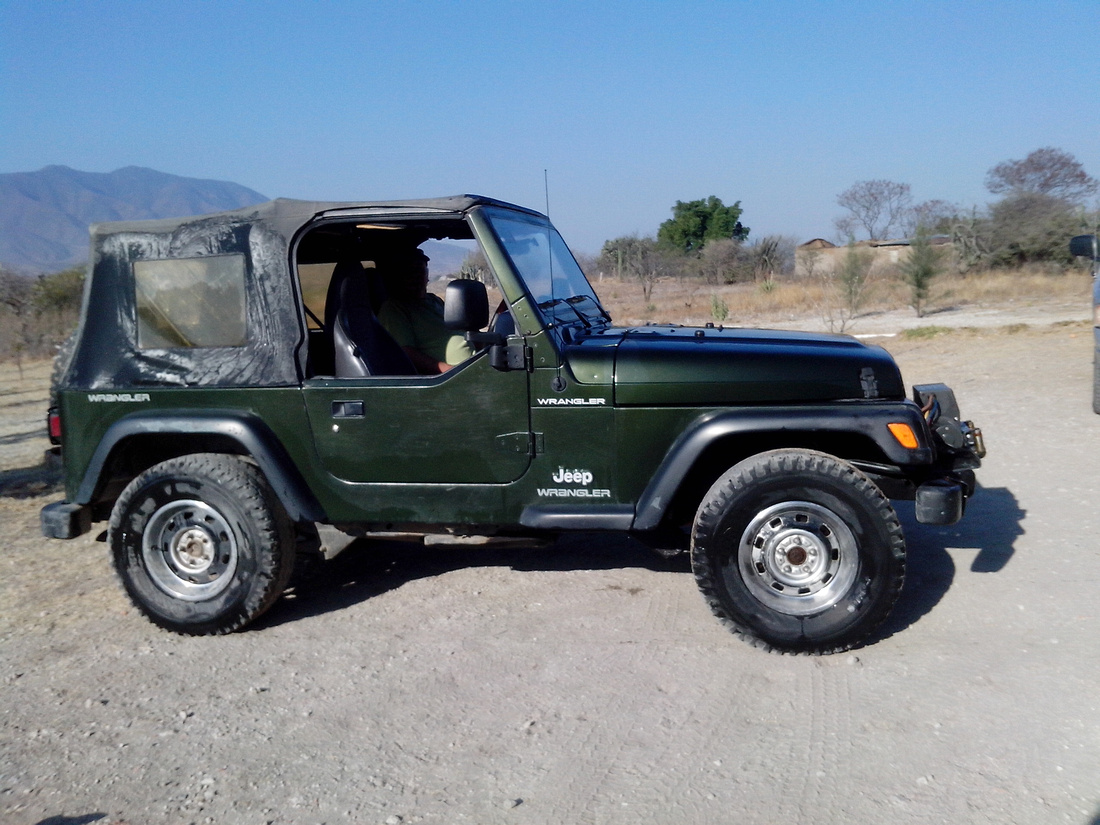

Our new truck. Very comfortable and we now have the space for friends to ride inside instead of having to ride in the bed. It's a little tricky maneuvering in Tlacolula. Most of the streets are pretty narrow. The doctor we bought it from had just had the air-conditioning repaired. It gets very cold!!!
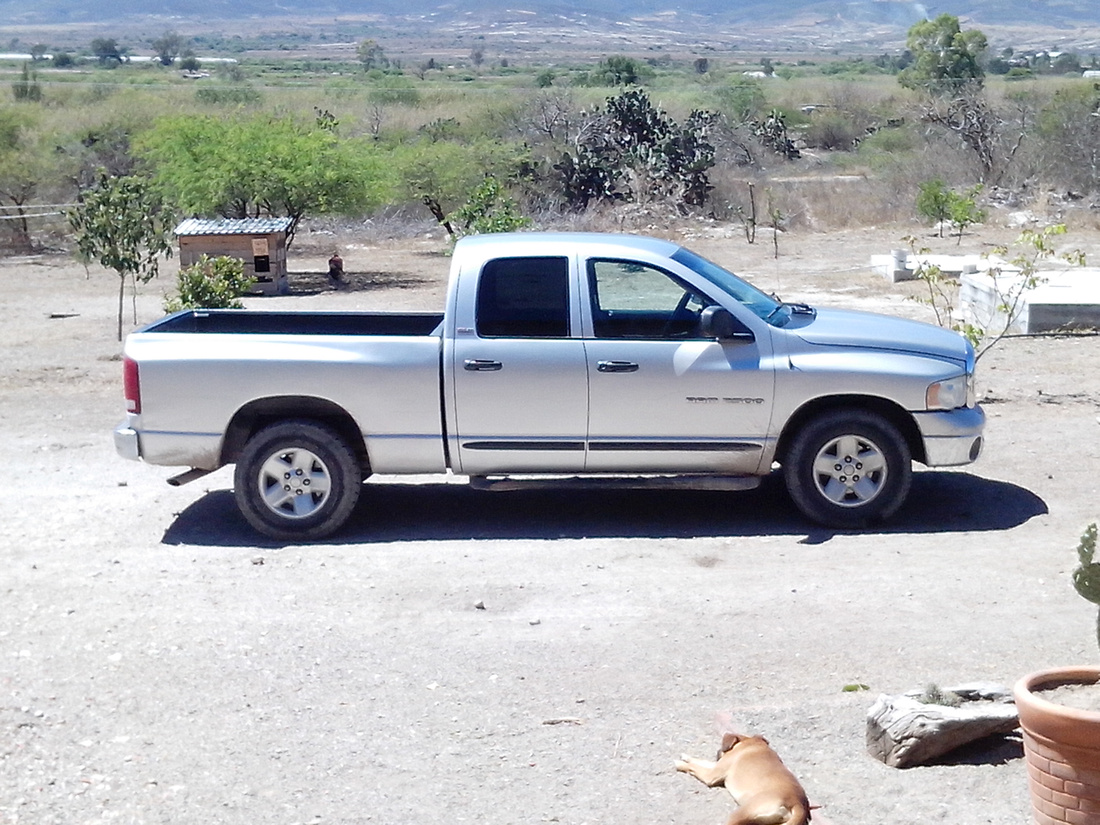

A trip to Texas and a return to the Tlacolula market
We made a trip to the U.S. in November. It had been three years since our last trip. We'd forgotten how different other Mexican states are. It was a shock to see how progressive some of the northern states are. Oaxaca is very traditional and industry is almost nonexistent especially on a large scale. Oaxaca relies on tourism. We found many cities comparable to cities in the US with an obvious amount of U.S. influence. The trip reconfirmed why we chose Oaxaca. Life is much slower here.
When we reached the border. we checked into nationalizing our truck. The cost was almost three thousand dollars. Apparently Mexico doesn't want older vehicles entering the country to stay. That drastically changed our plans. We had hoped to bring back lots of things from the flea market. The need here is so great it's difficult to make a trip to the States and not bring something back. We would have feelings of extreme selfishness. We did bring back four suitcases but it was a paltry amount. Mickey is going to sell our truck so we can buy a Mexican plated vehicle here.
Our major goal was to receive our Visas and we did accomplish that. When we returned to Oaxaca we applied for Temporary Residency. We have two more trips to make to Oaxaca, one to be fingerprinted and the last to pick up our residency cards. Having residency status will keep us from having to leave Mexico. We made the drive to the States in twenty one hours. Eleven hours the first day and ten the second. It has become very tiring. Our future trips will be by plane. I have to say that the drive has changed considerably. Most of the trip was comparable to driving in the States. The roads are maintained much better than in the past and there are many new freeways.
We visited with a few friends and were able to spend time with Mickey and Yadira. Within thirty miles of our home here in Oaxaca, there are two traffic lights. What a shock it was to drive in Brownsville. Wherever we went, there was traffic, lines of it with so many traffic lights. Of course we see traffic in Oaxaca de Juarez but those trips are becoming few and far between. I enjoy driving here locally. Most of the driving is in the country. We were stopped a few times on the trip north, mostly by the military. These young men were very polite.
After our trip I got the urge to make some photographs of the market in Tlacolula. I think being away made me appreciate it even more.
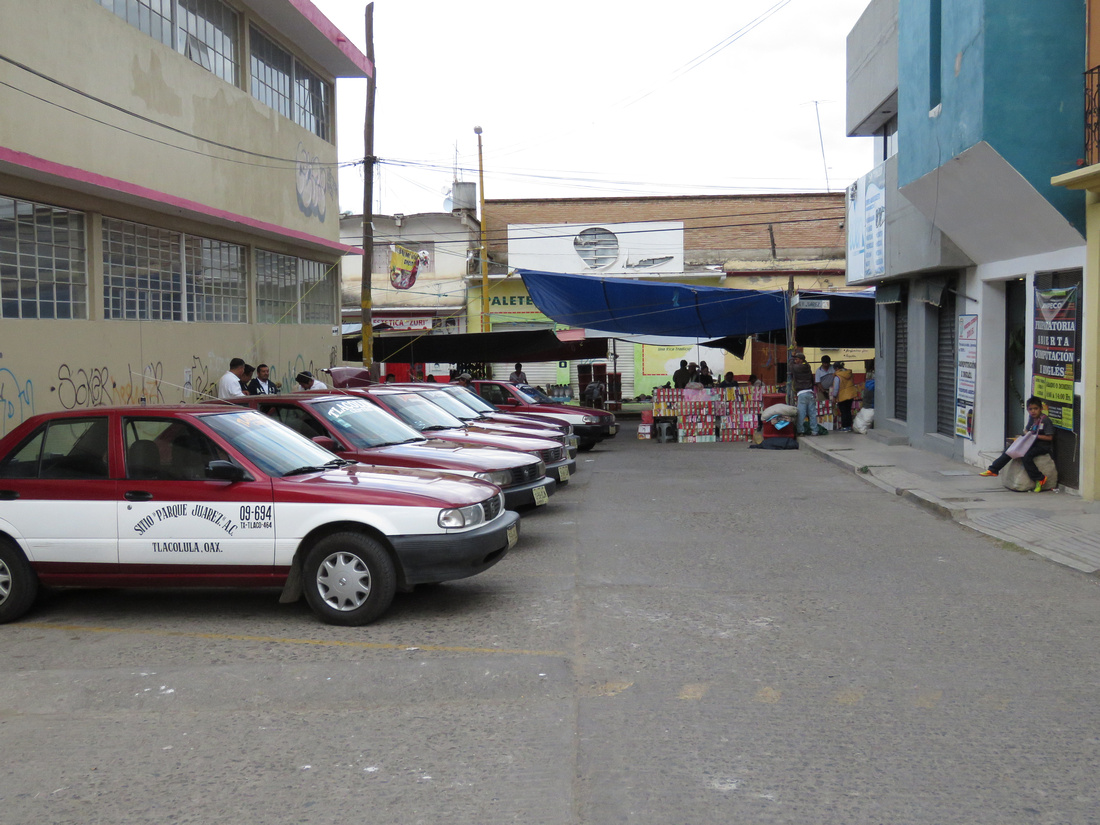

It's illegal to bring used clothes into Mexico except for personal use. I was told that the law protects folks like these who make their living selling used clothing.
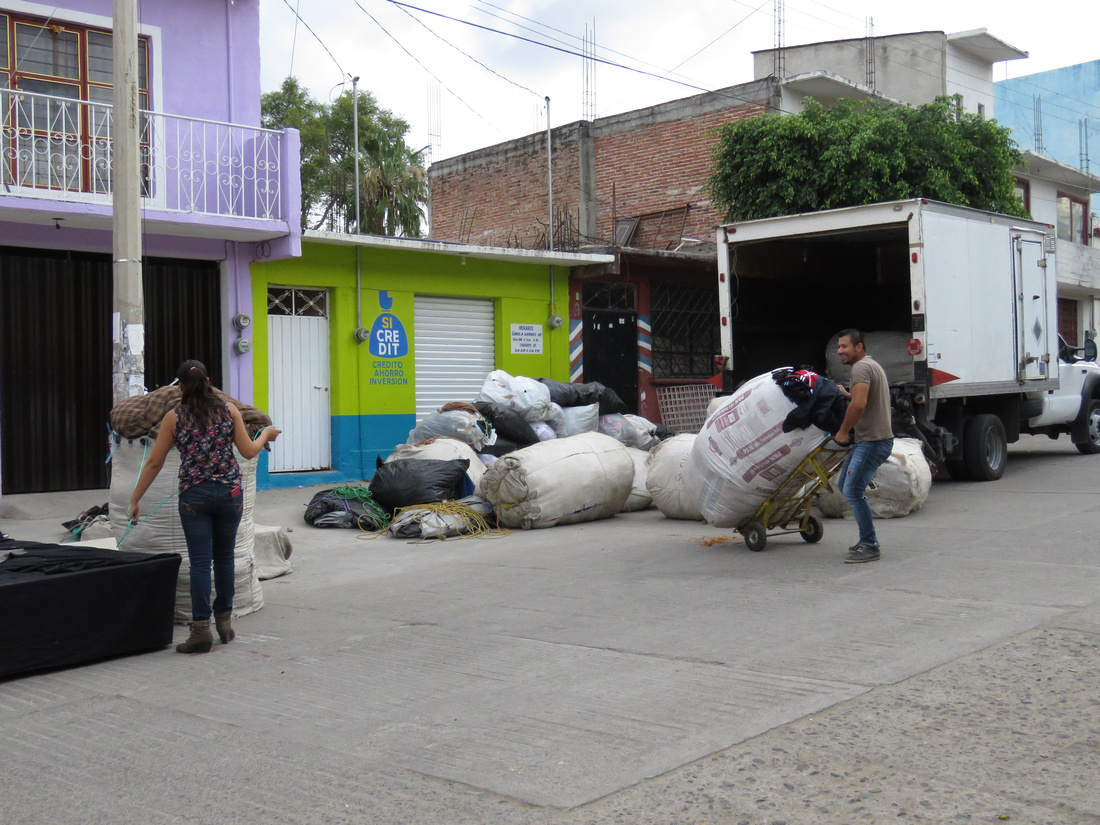

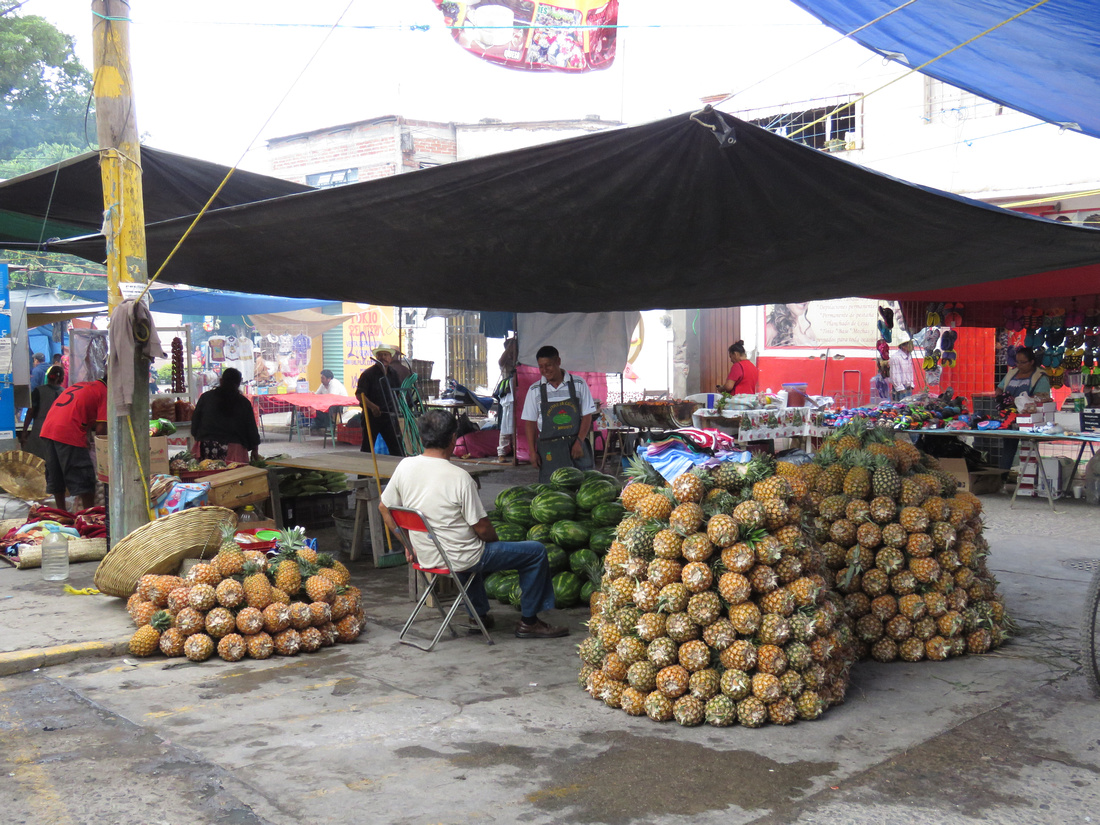

Even though there are hundreds of mototaxis, Sundays still provide an opportunity for people with these bicycles to make some cash.


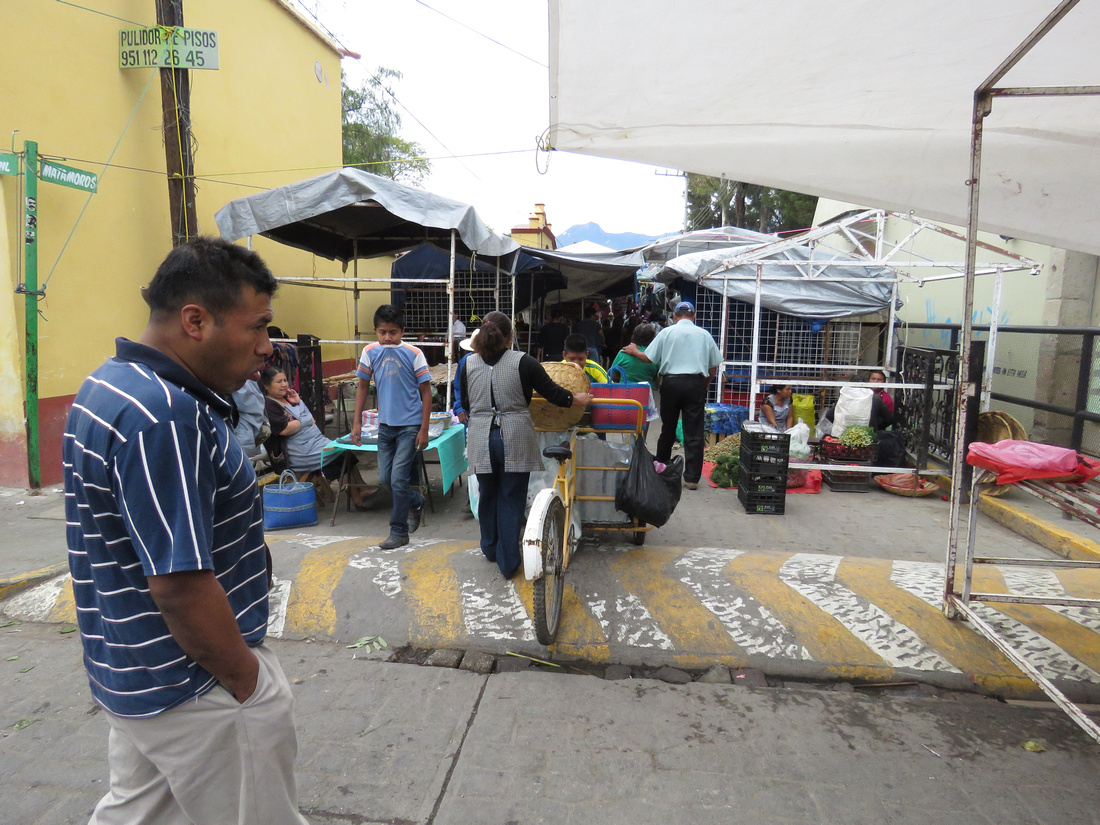

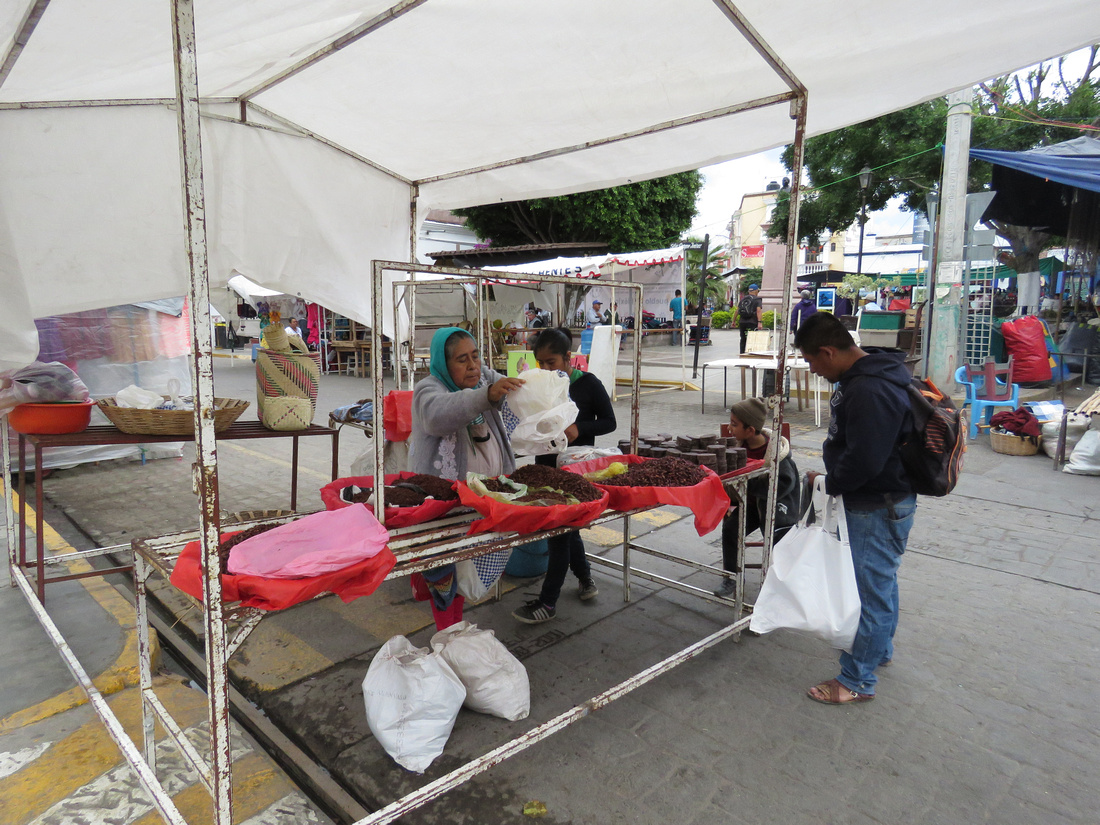

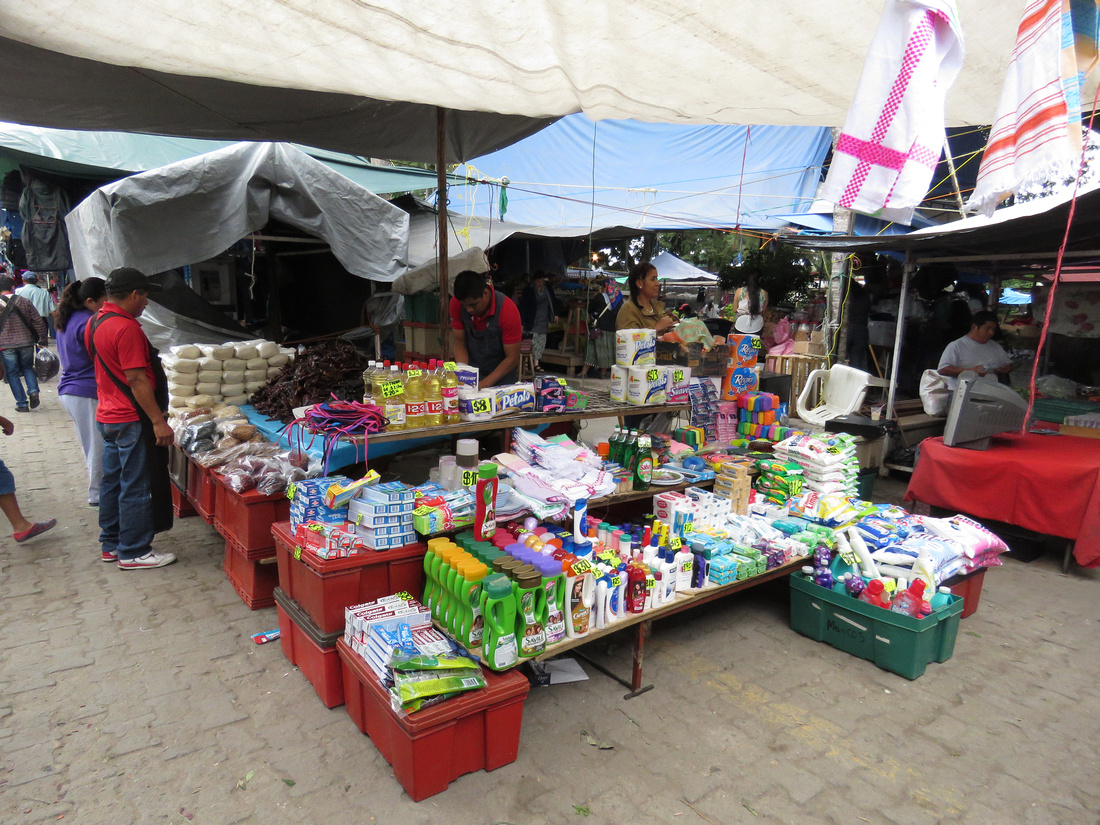



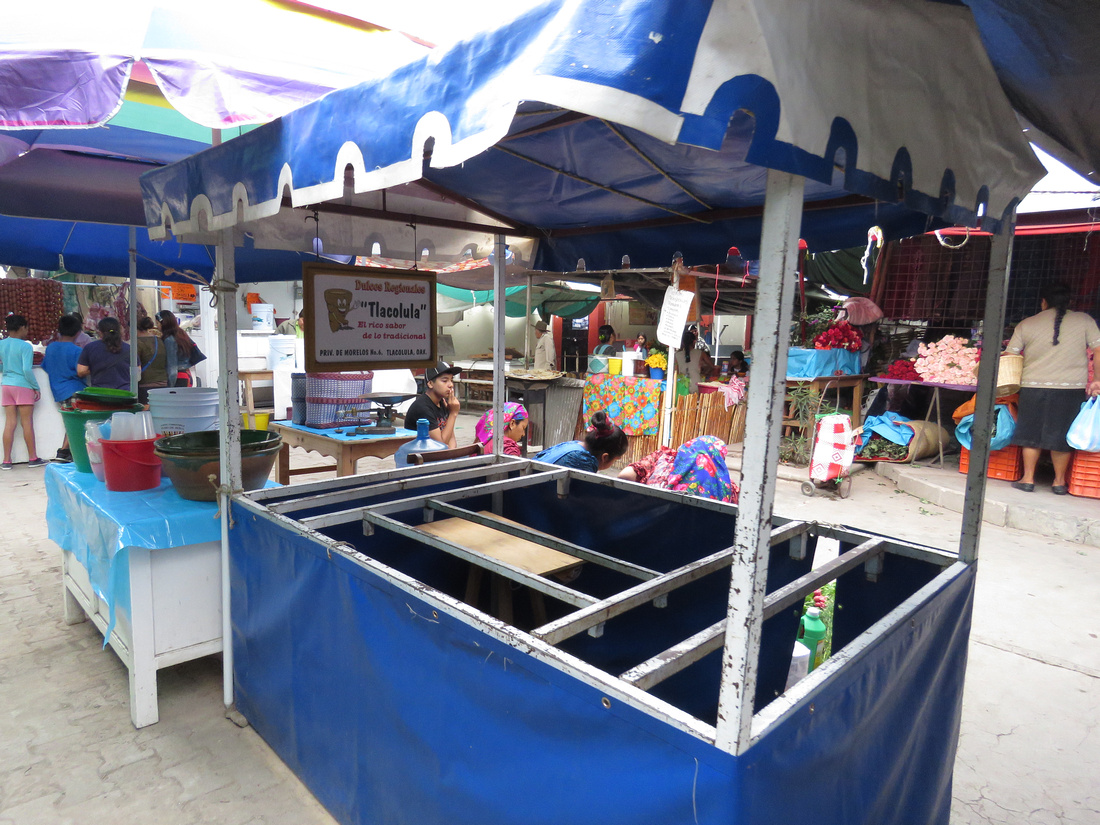

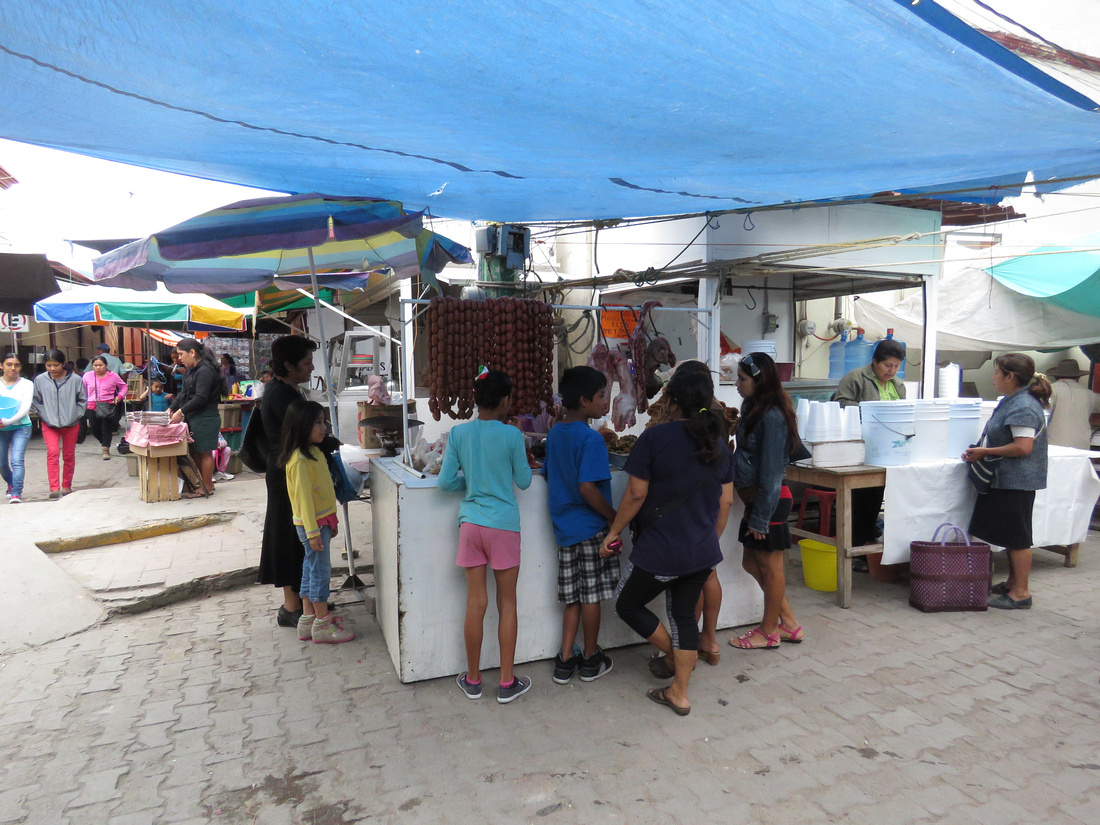

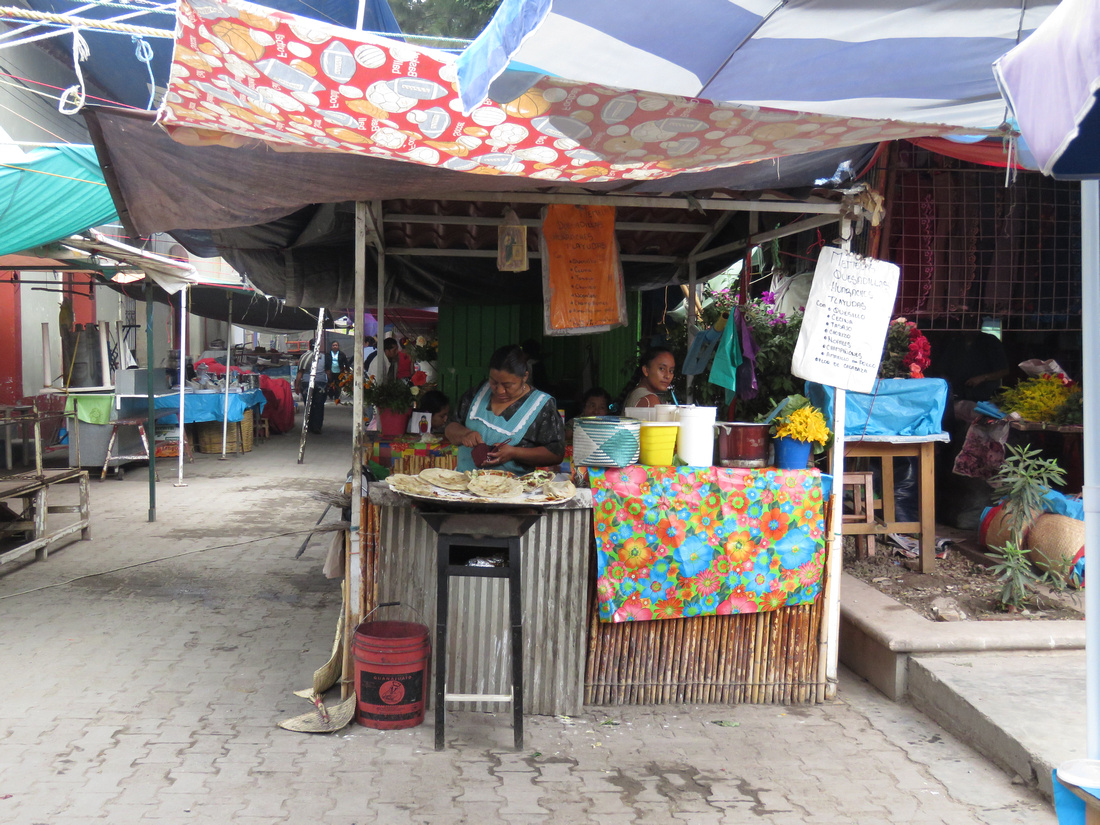

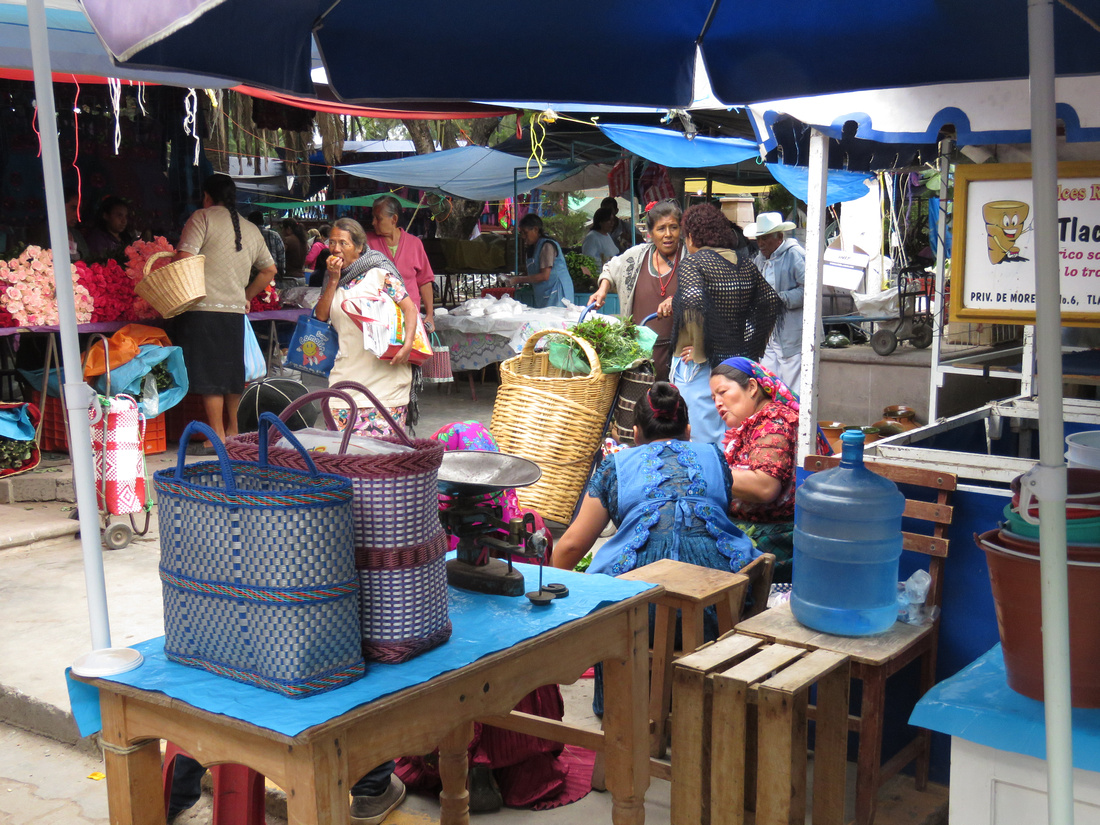



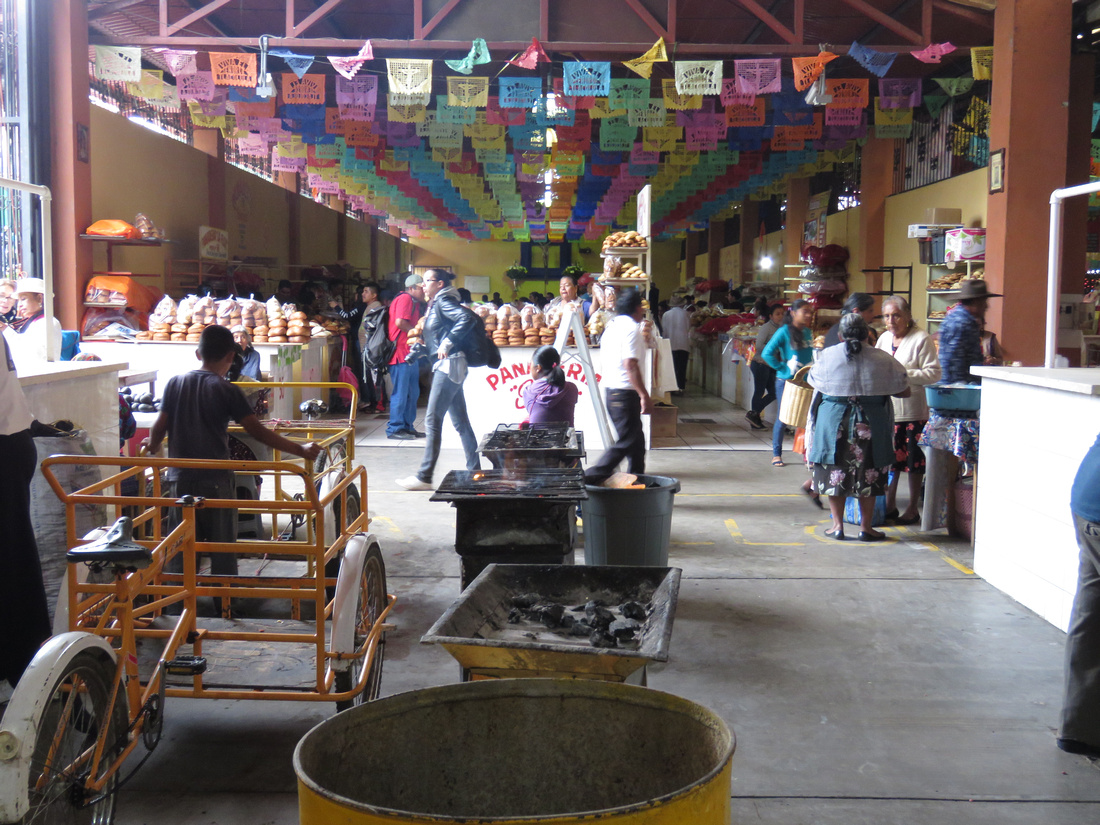

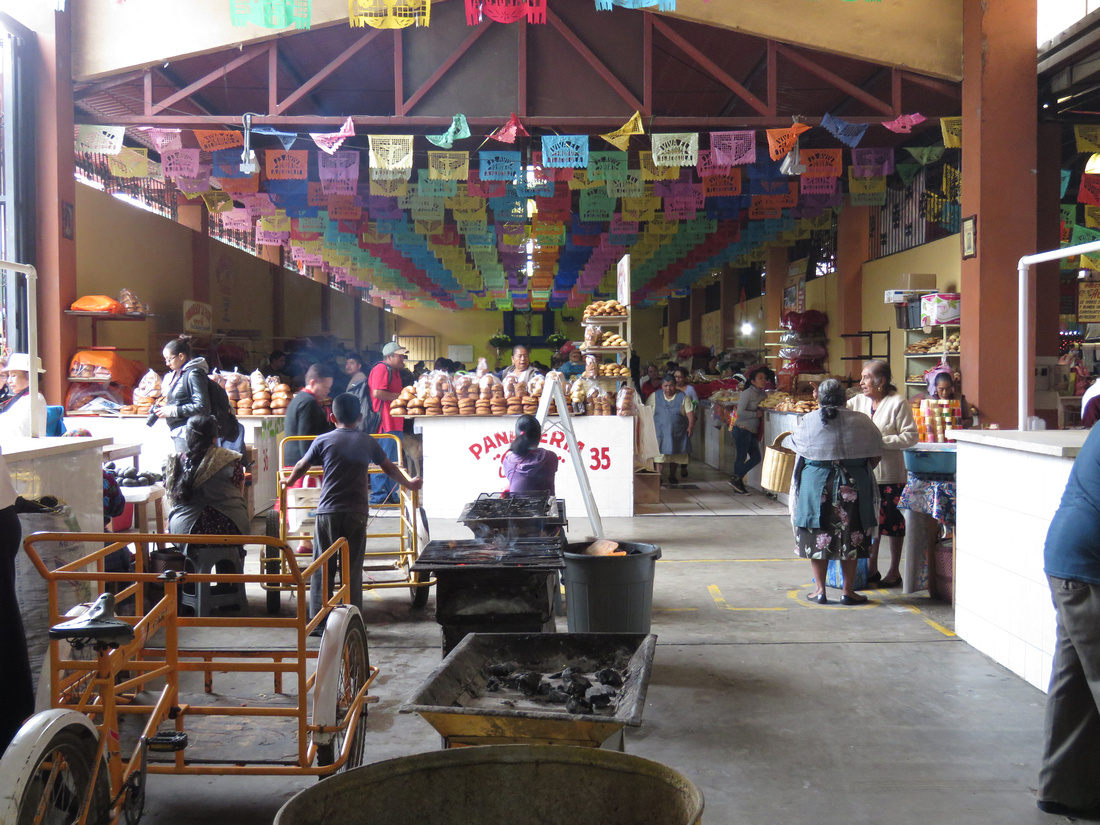

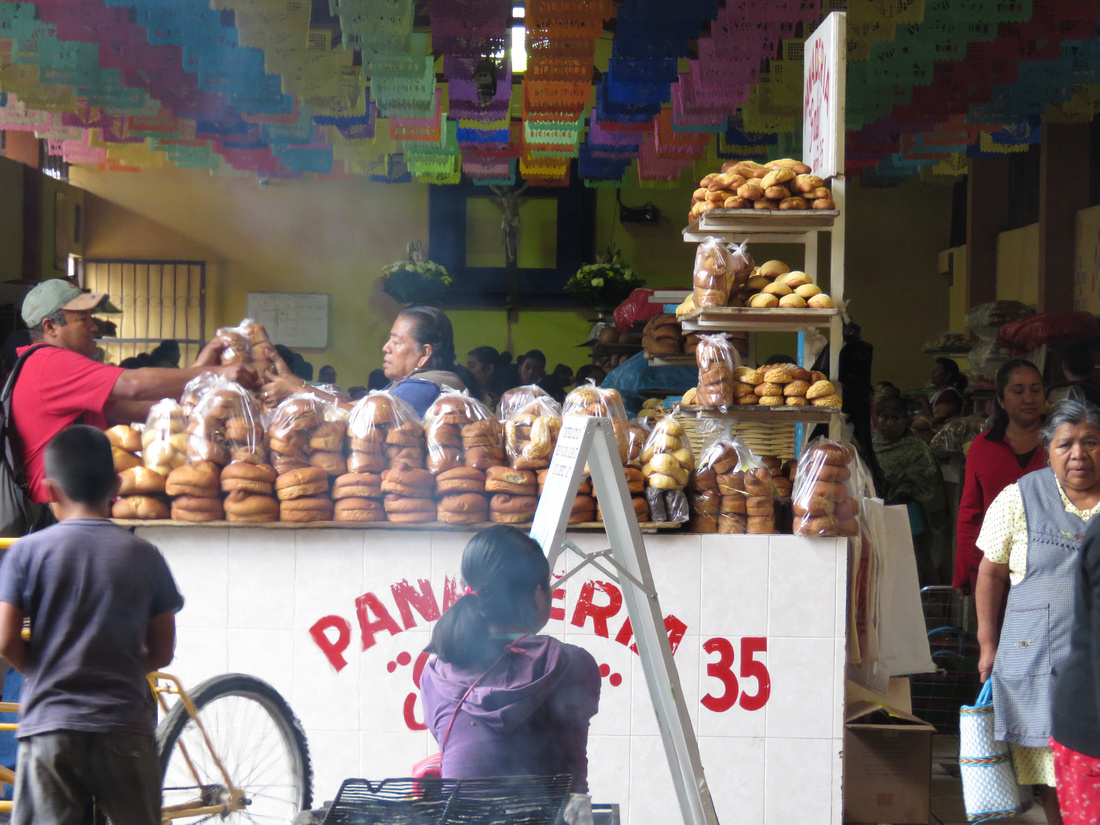

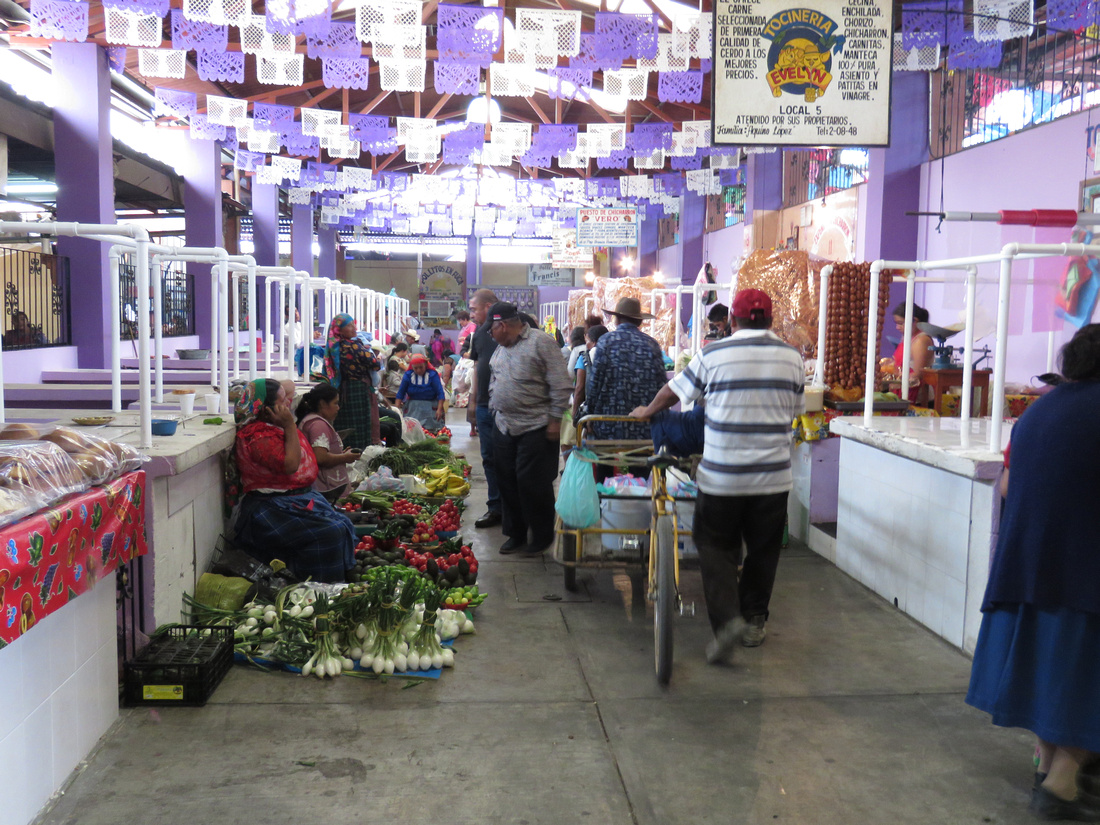

Oops, some Americans snuck into my photo. These ladies are selling handmade tortillas.
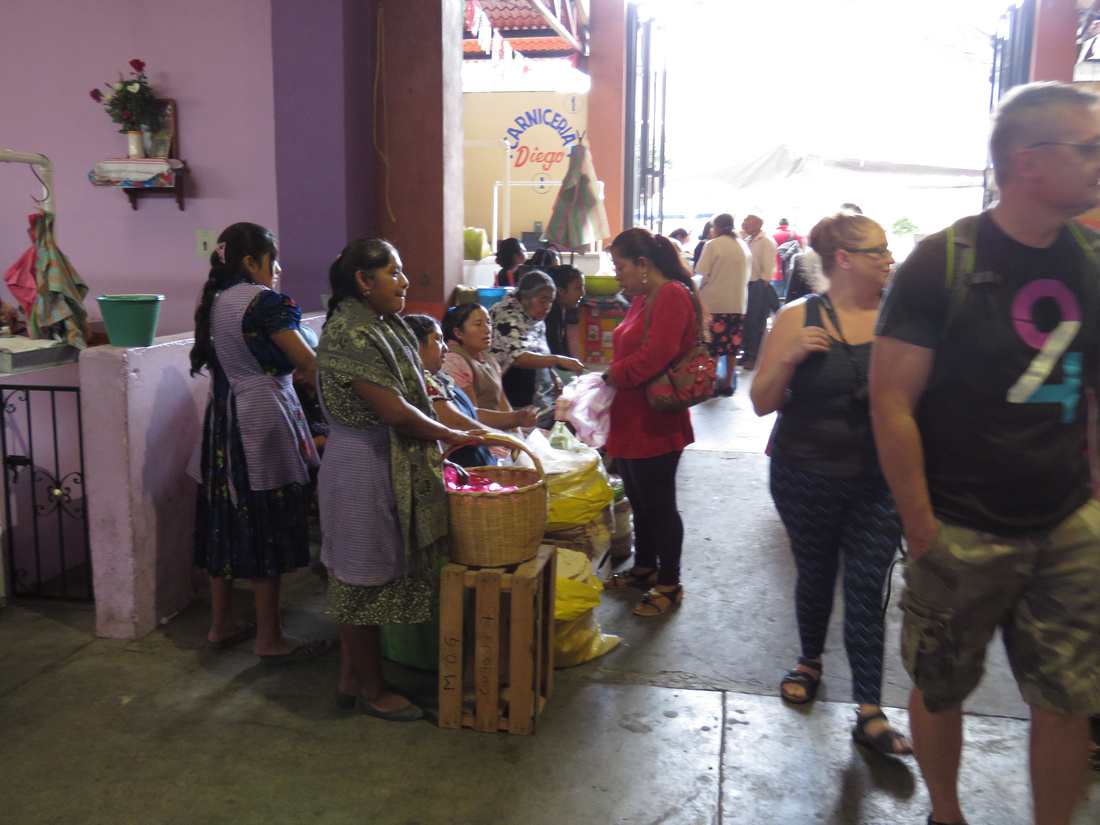

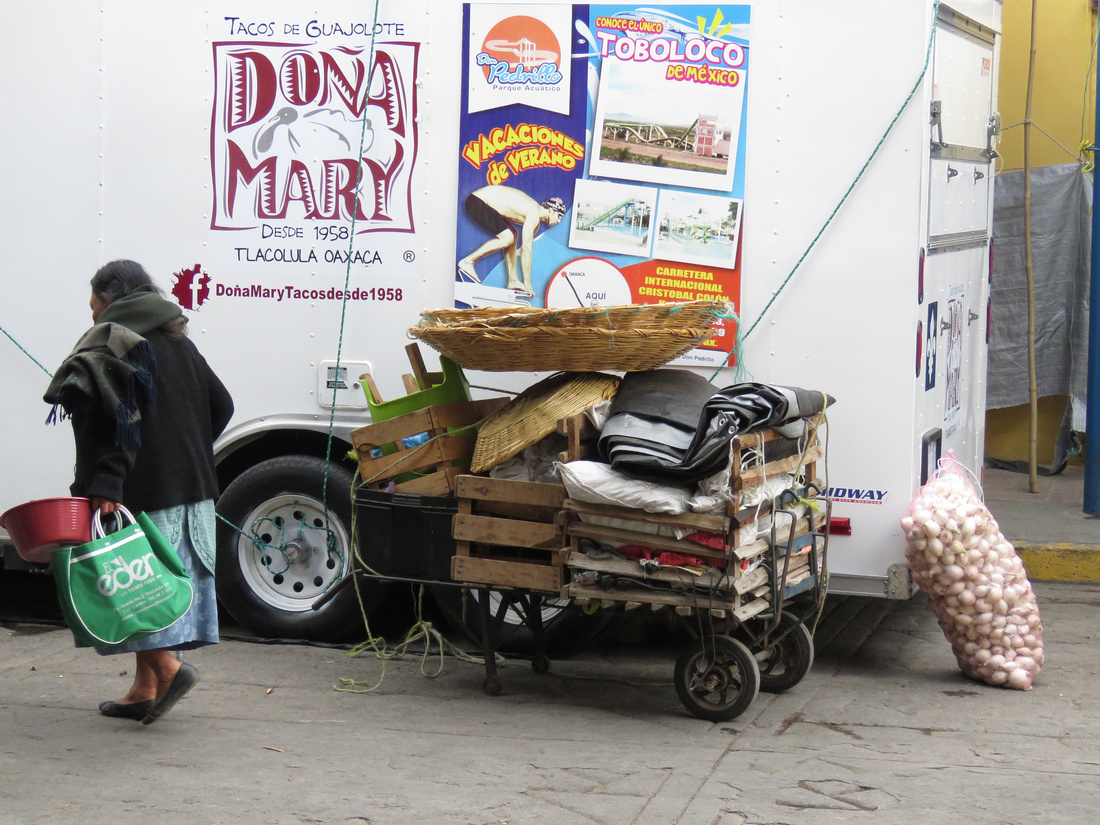

An addition to the market is being constructed so for now the park is being used.


Notice the difference between the clothing of the buyer and that of sellers. The women selling are from out lying villages.
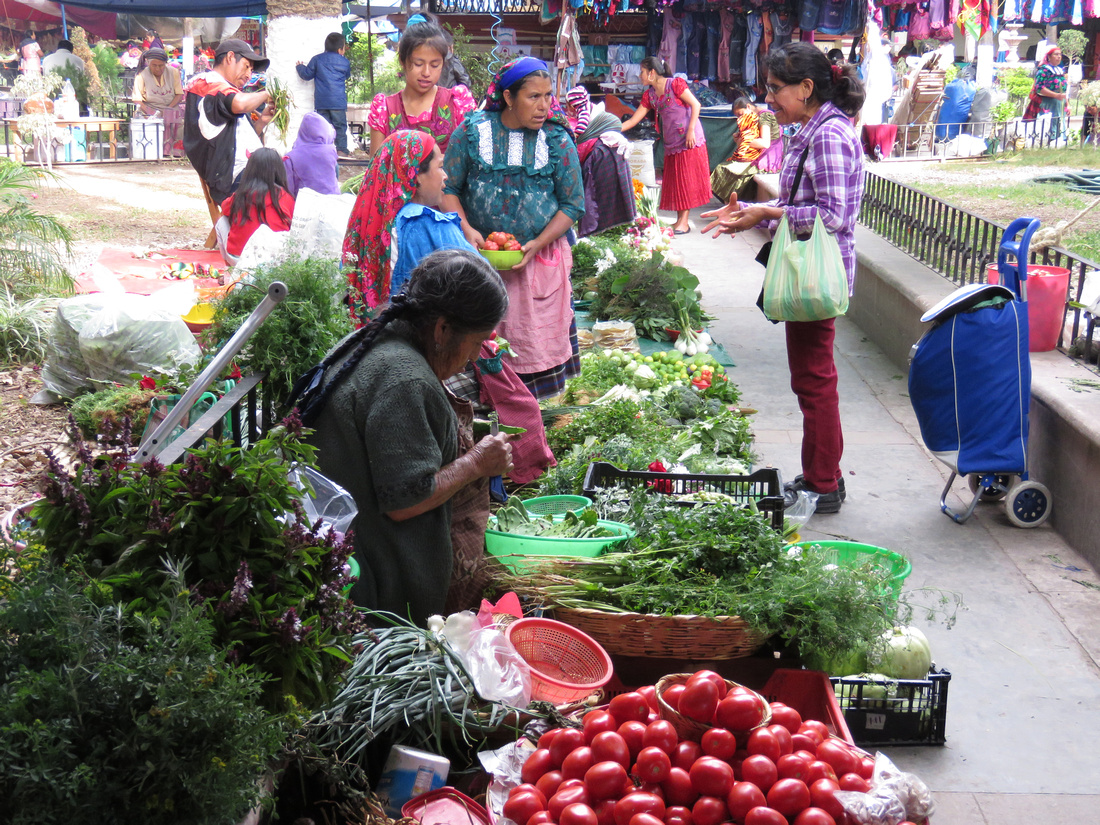

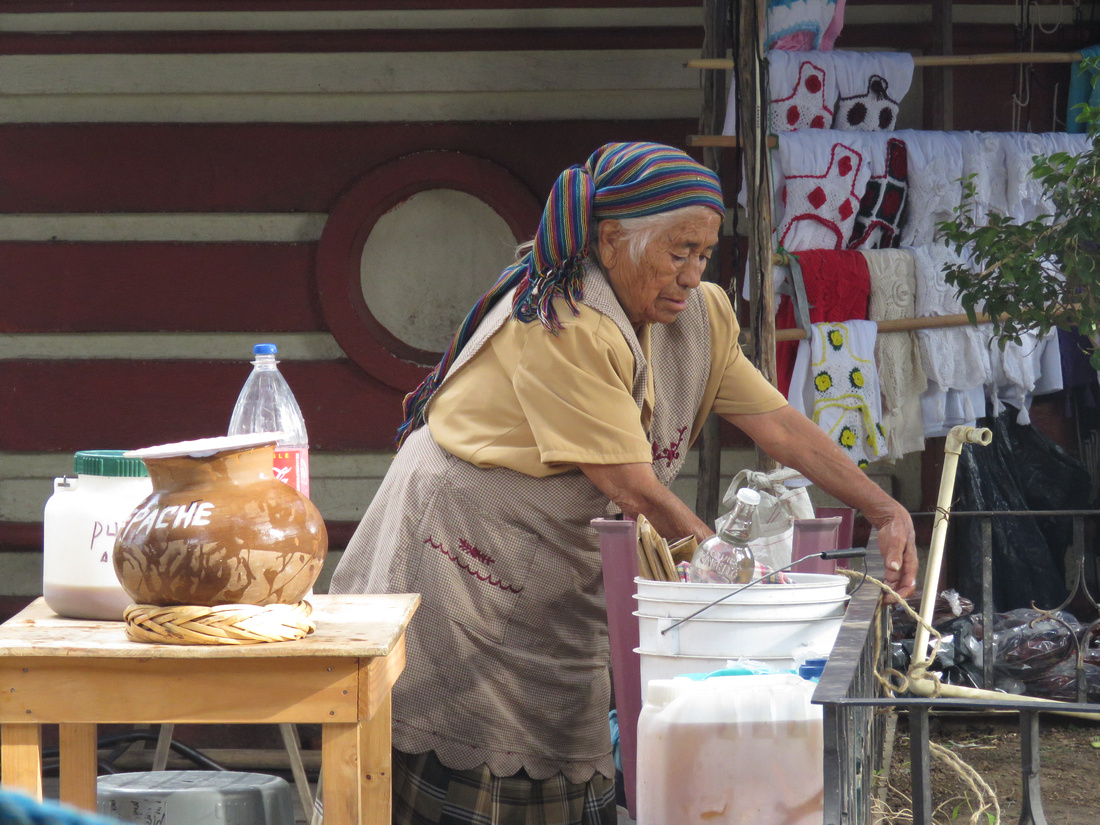

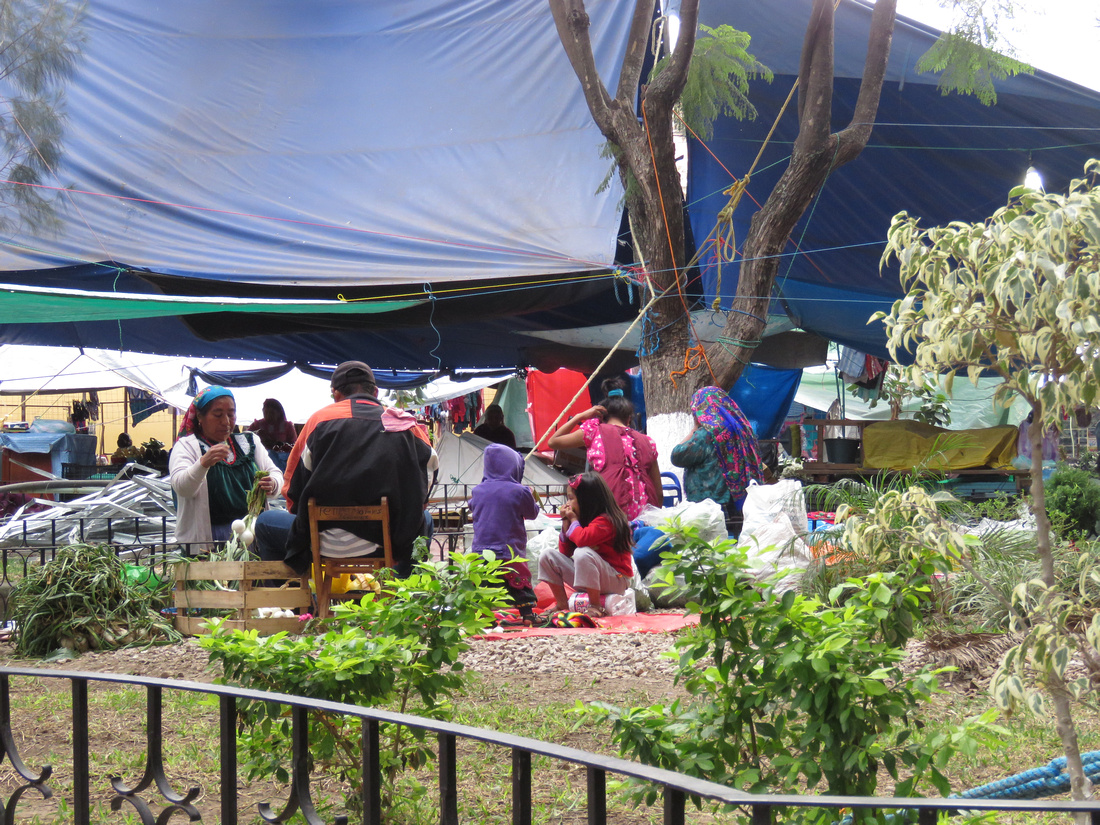

Trees are painted with lime to keep the ants out of the trees. Everything stable is used to anchor tarps.


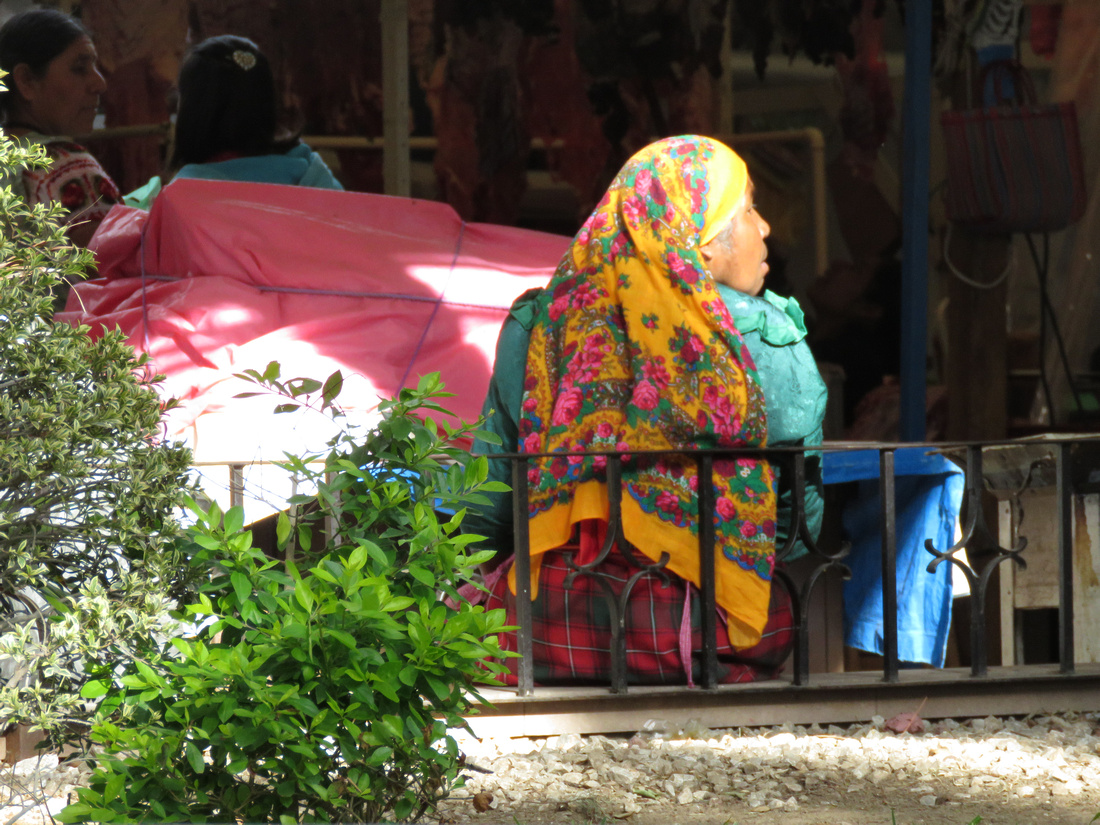

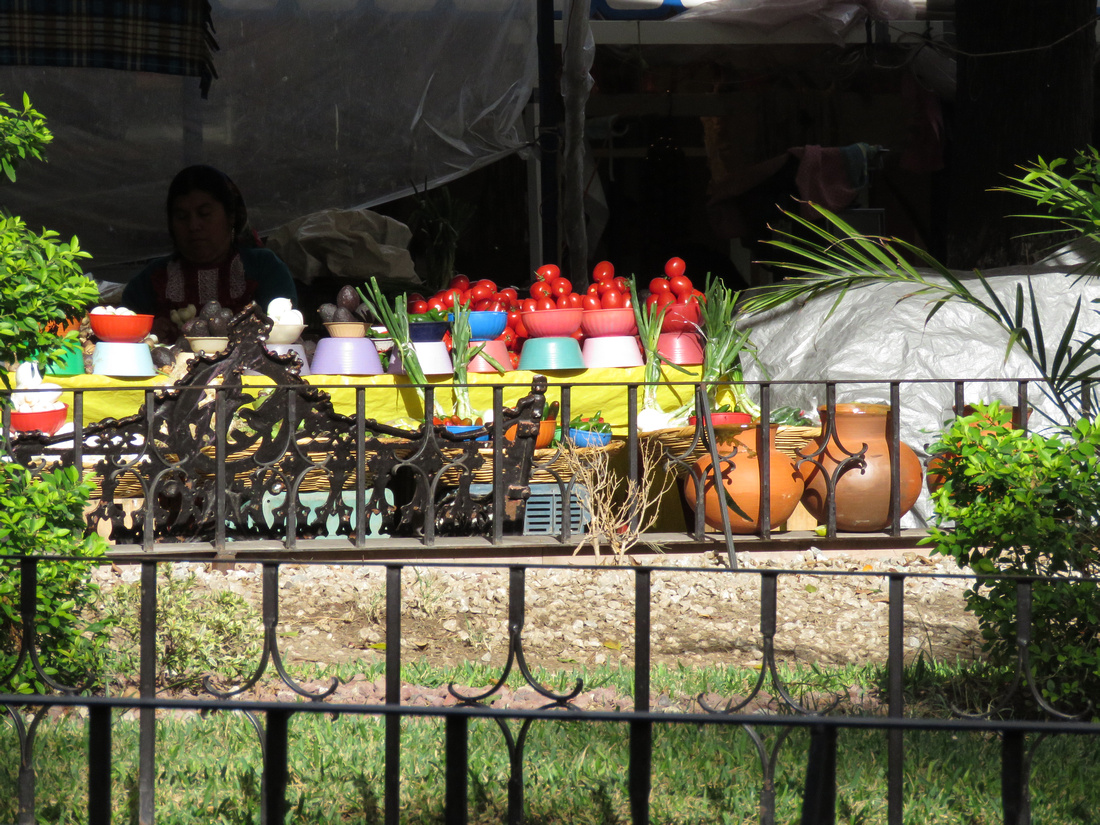

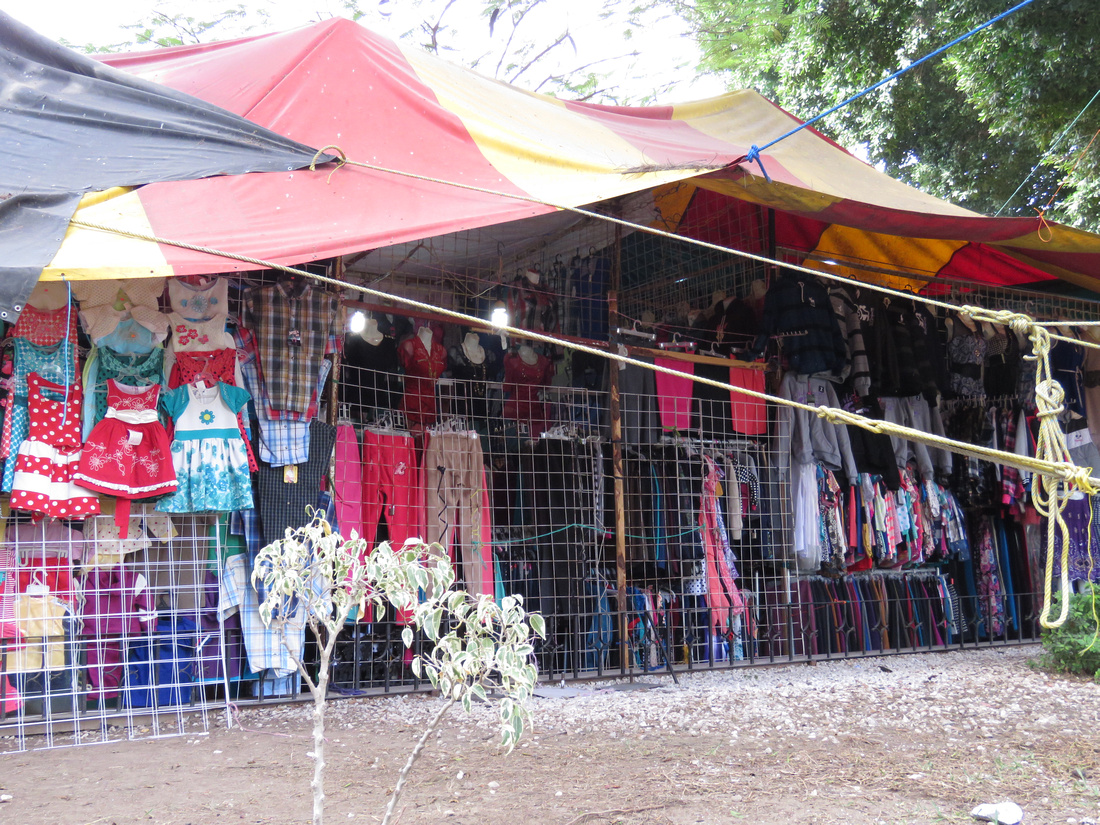

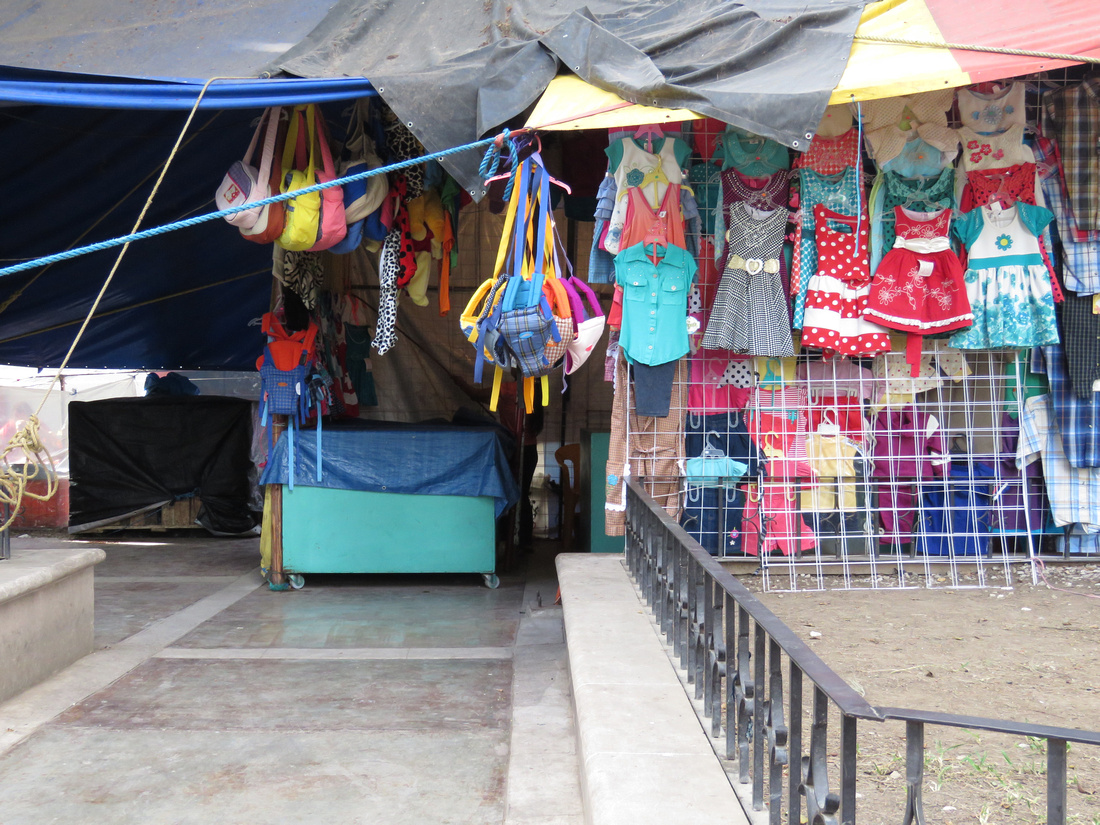

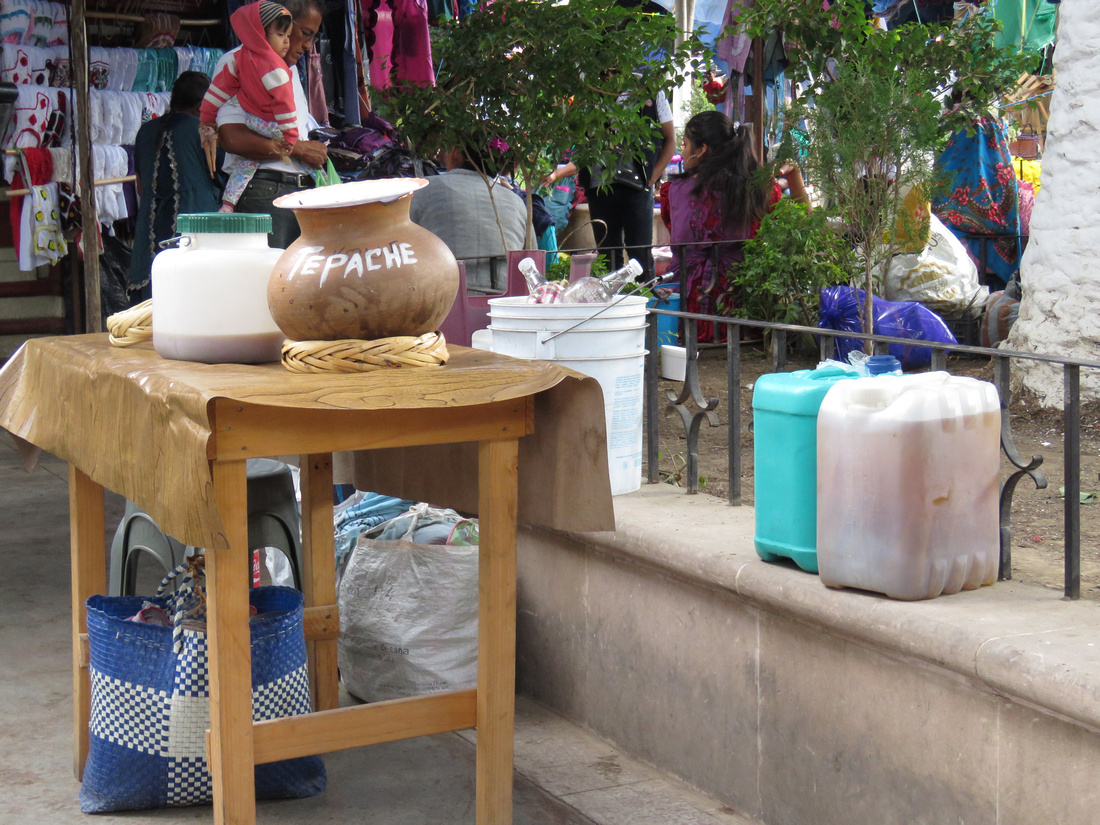

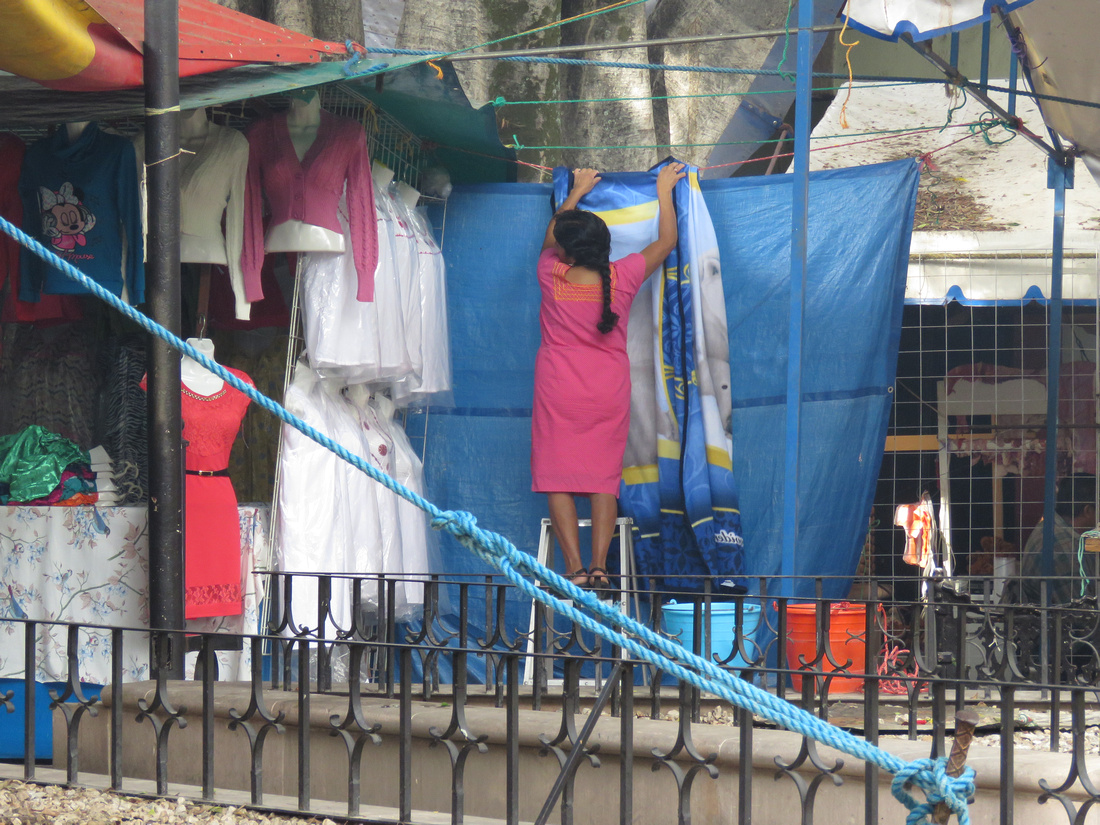

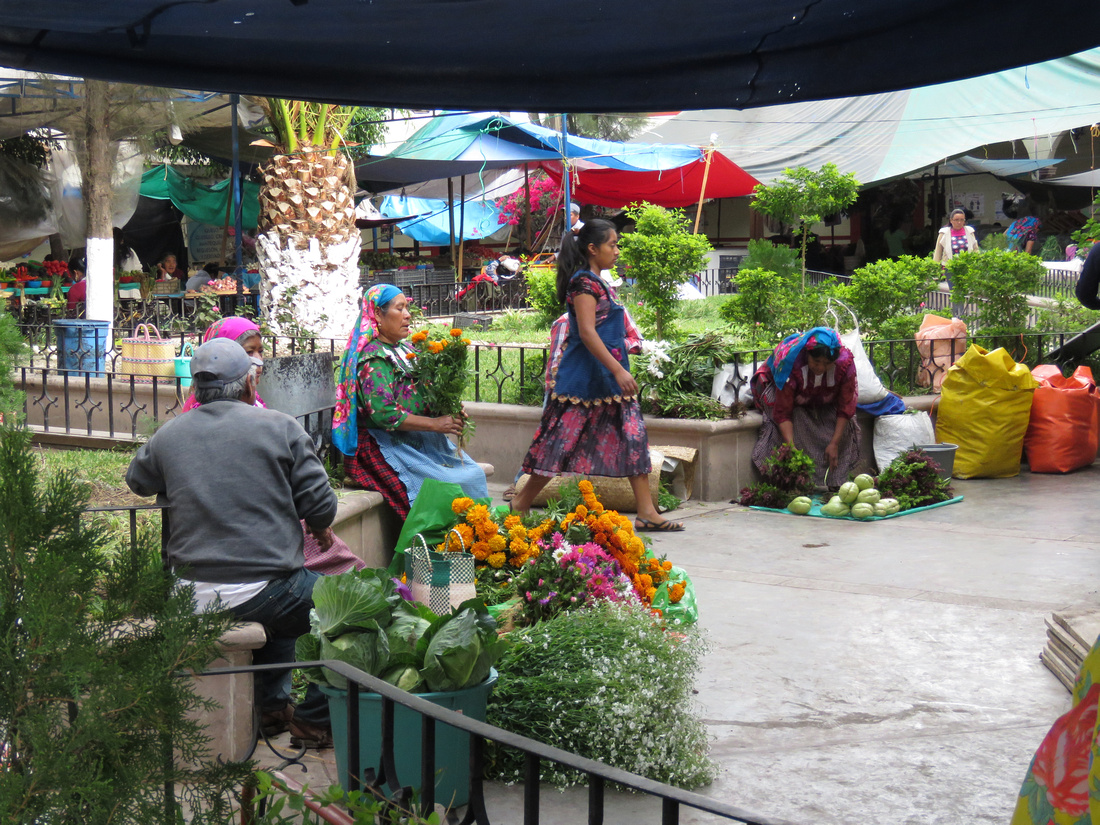



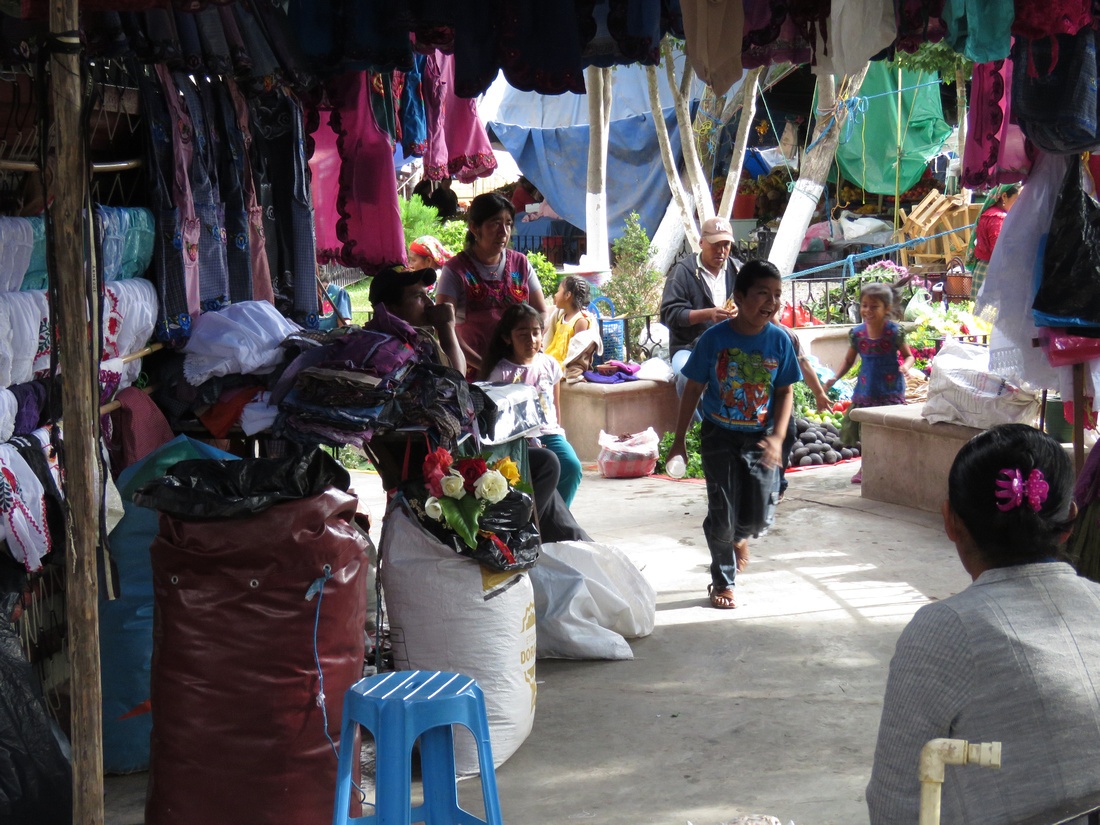

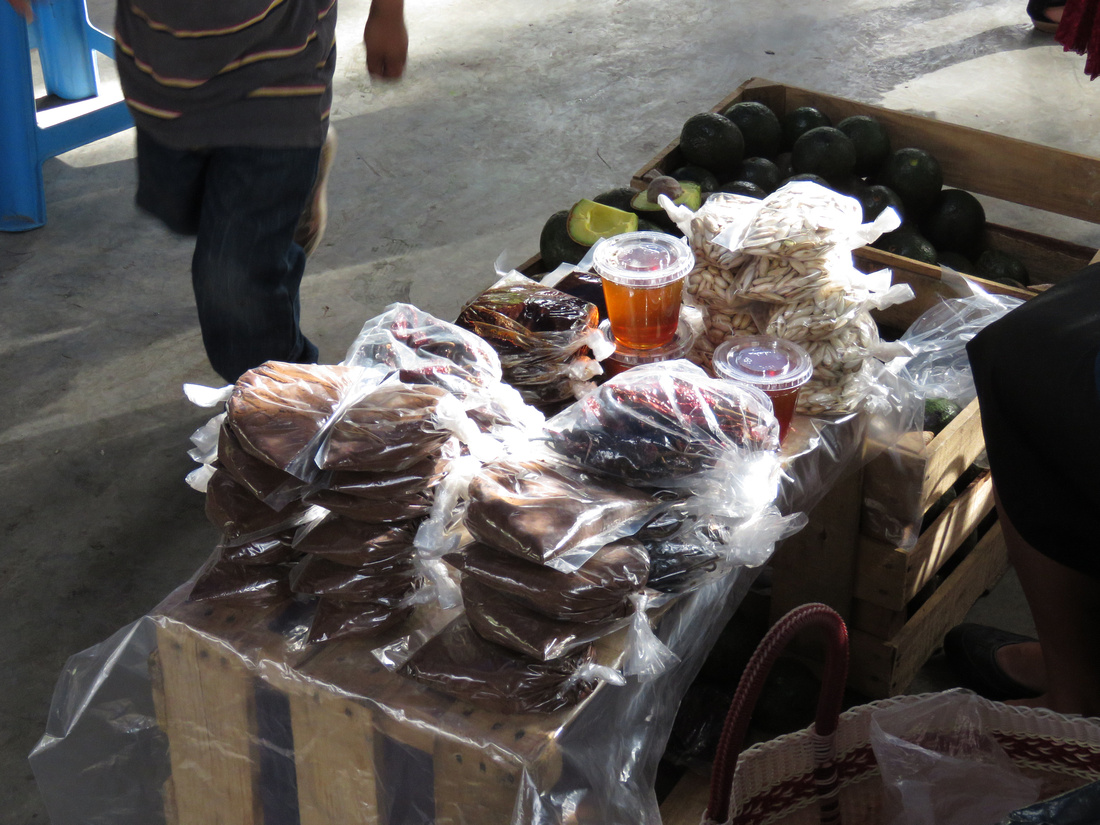



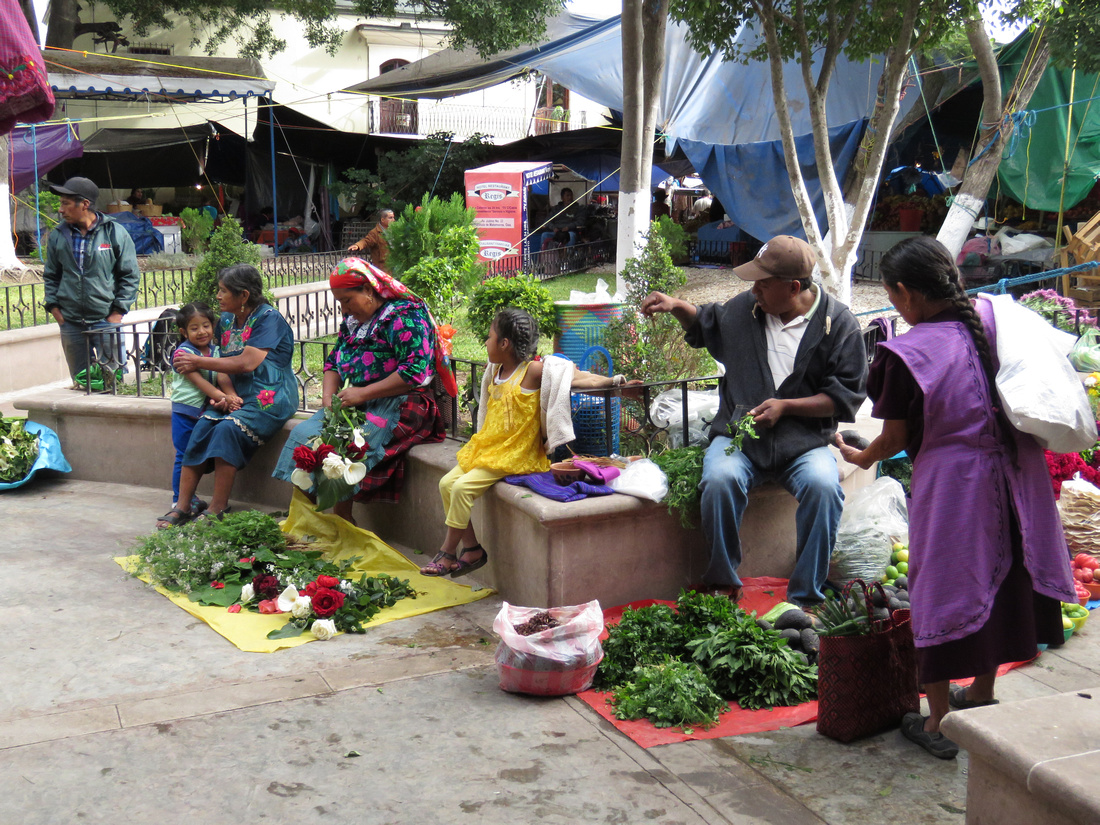

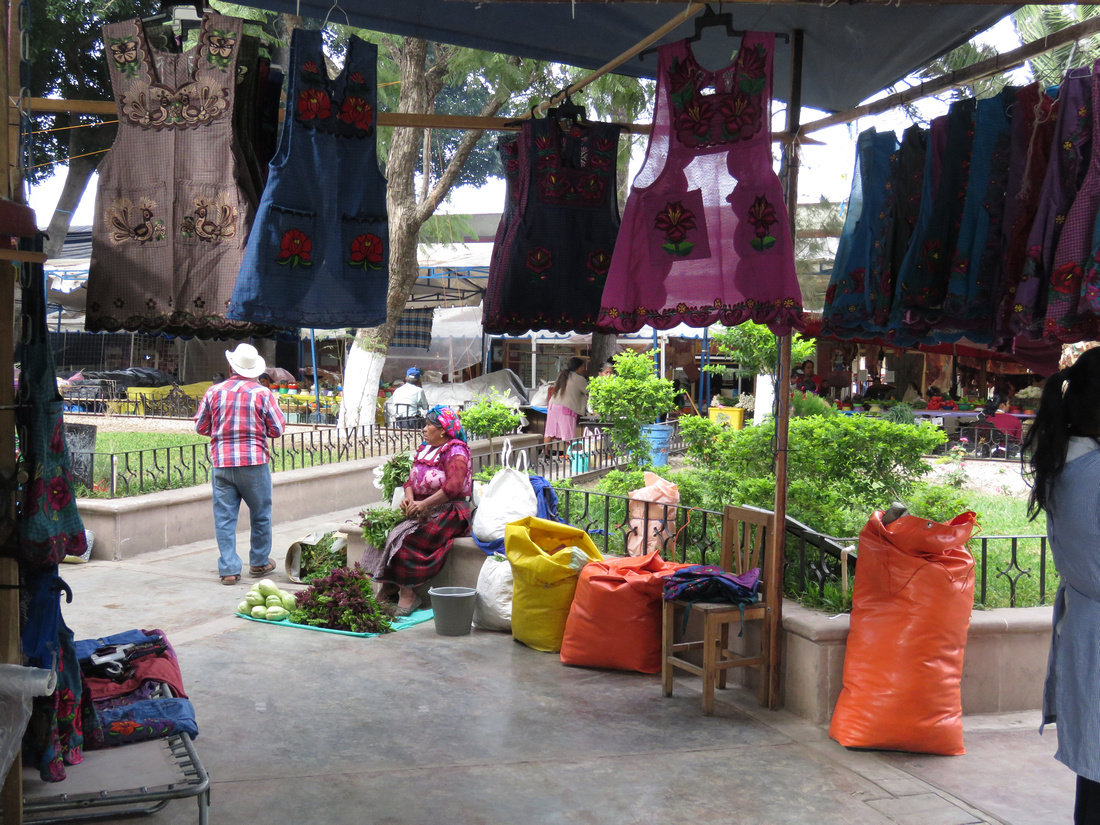

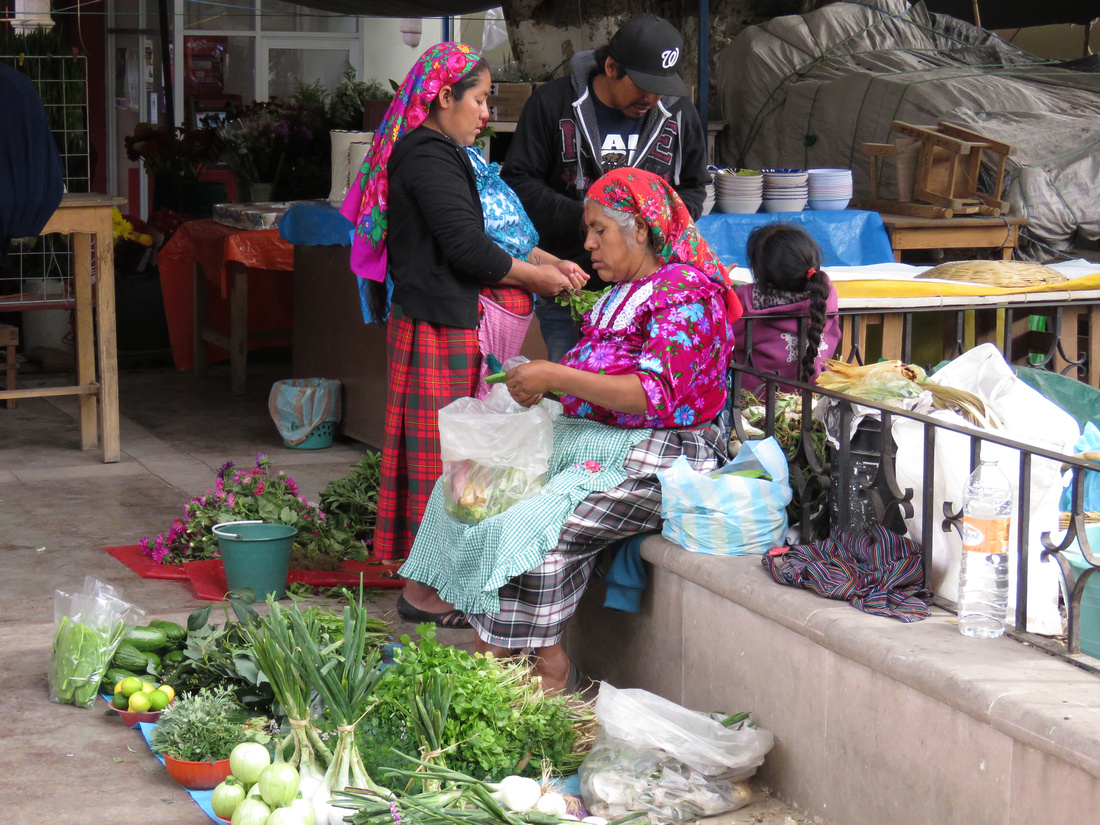

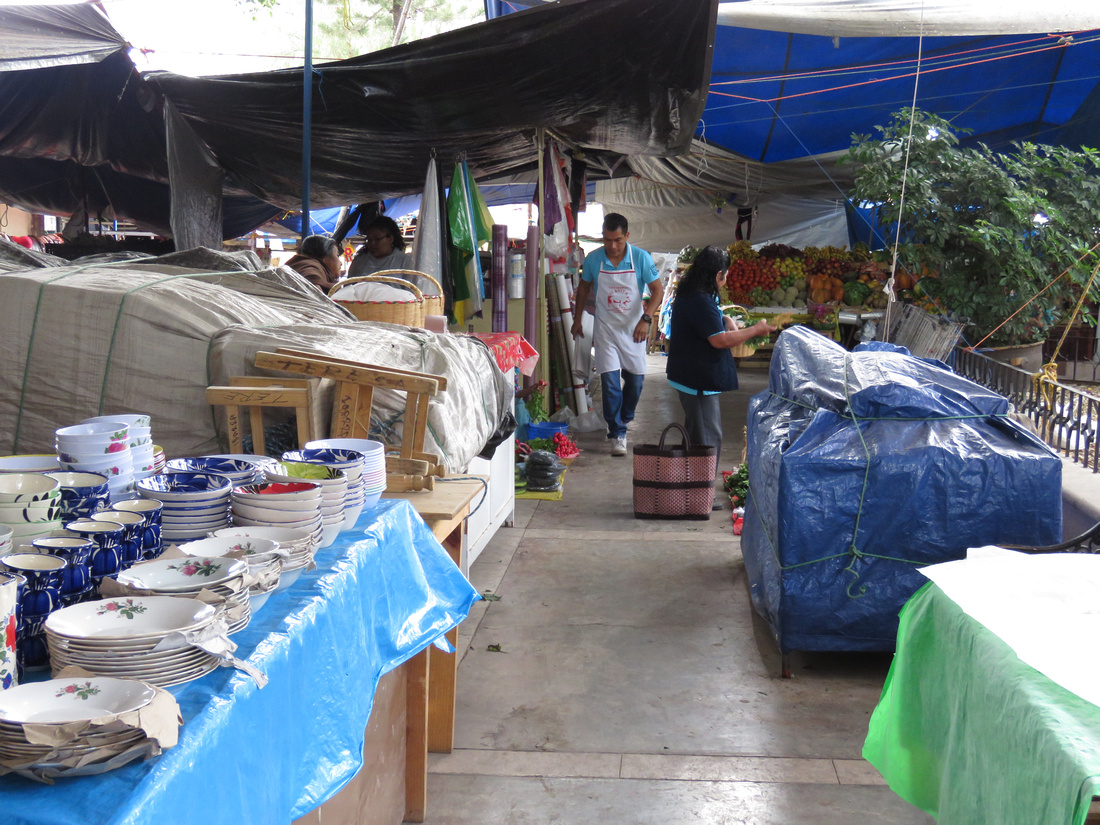

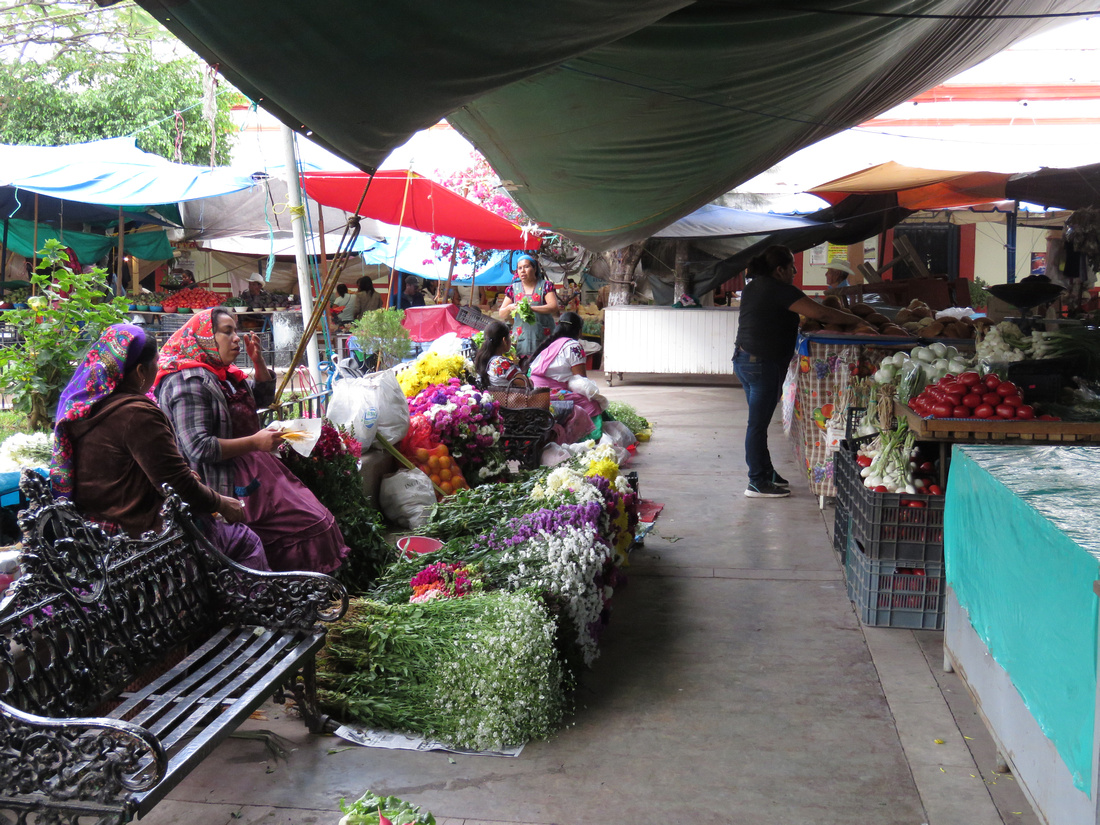

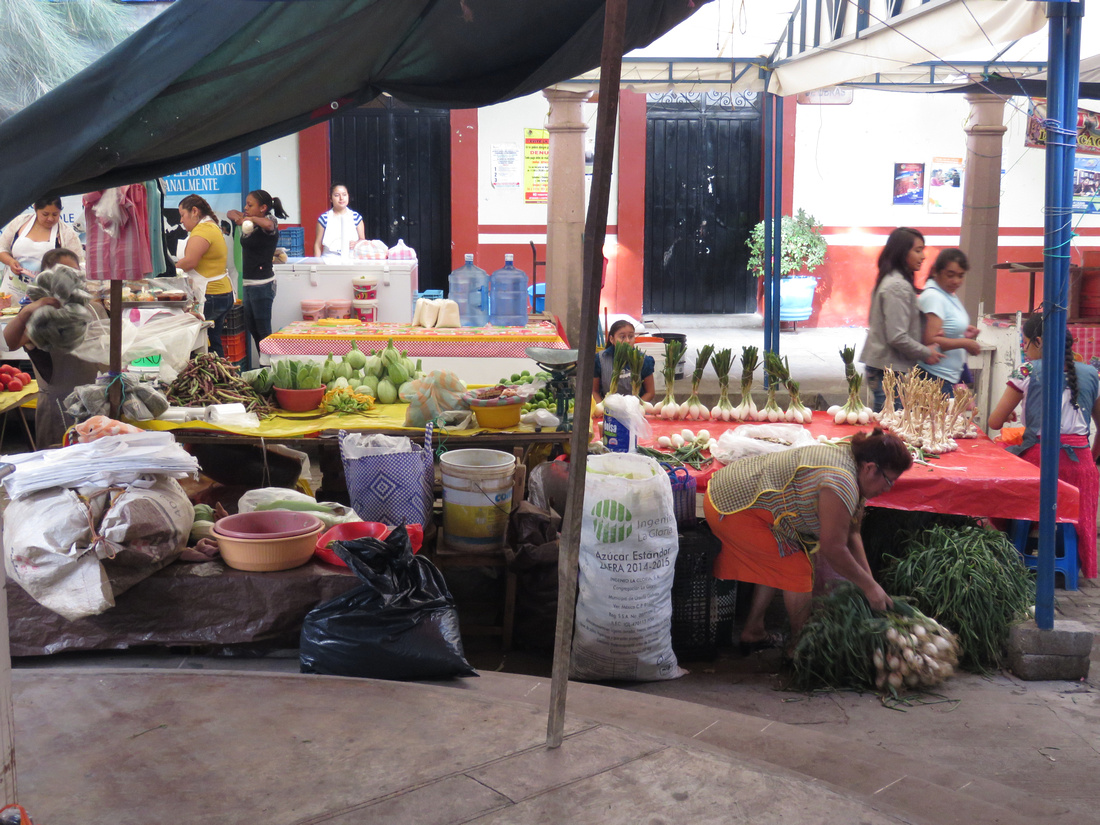

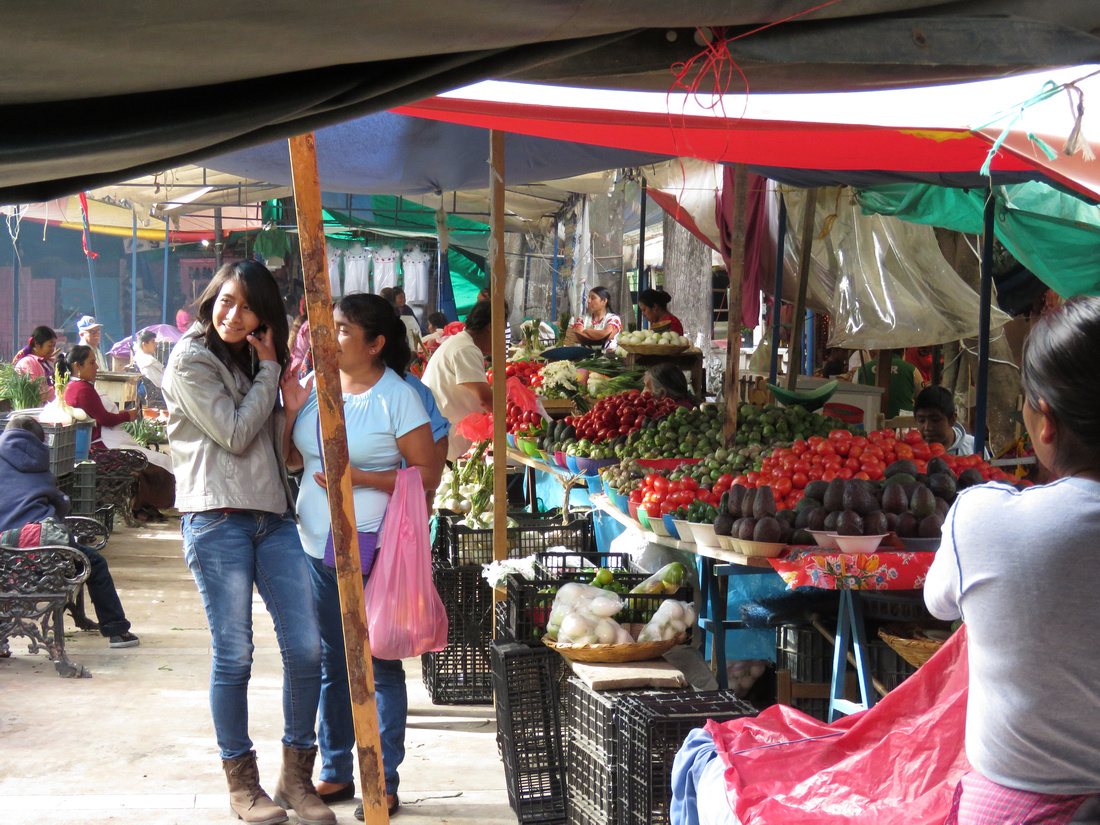

We seldom buy meat at the market. We are much more comfortable buying meat that's wrapped and stored in a refrigerator.
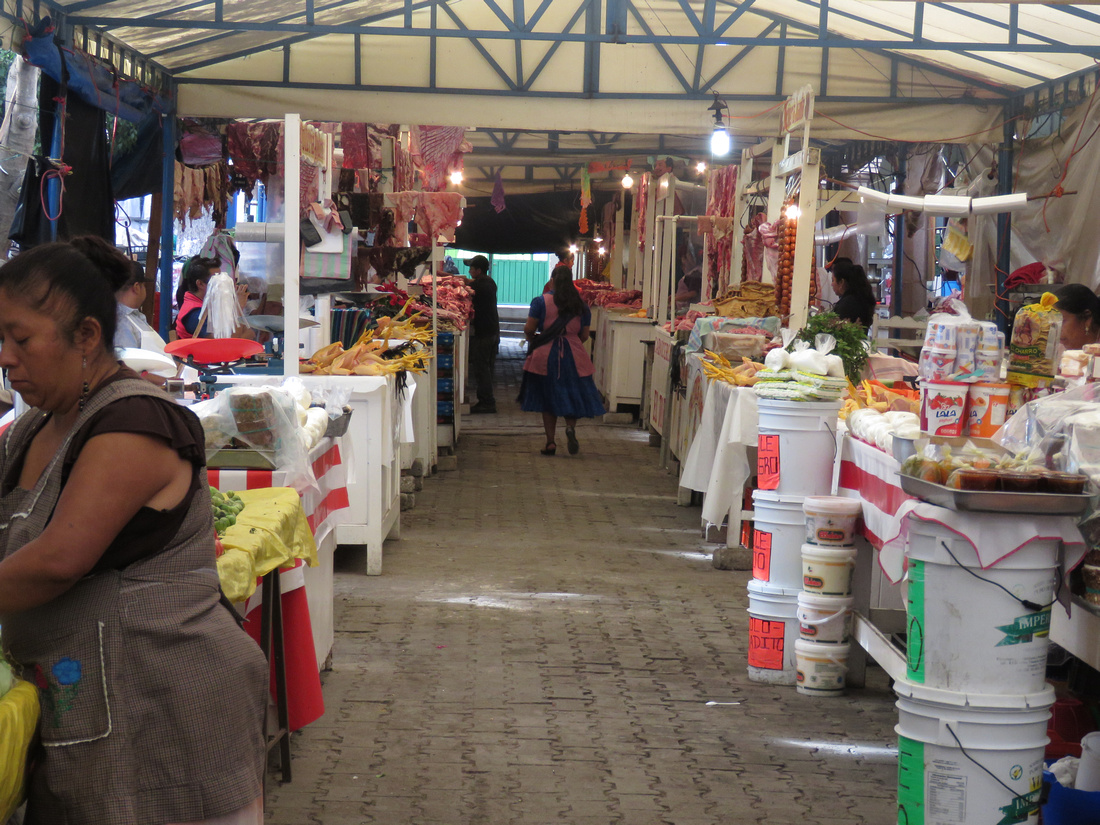

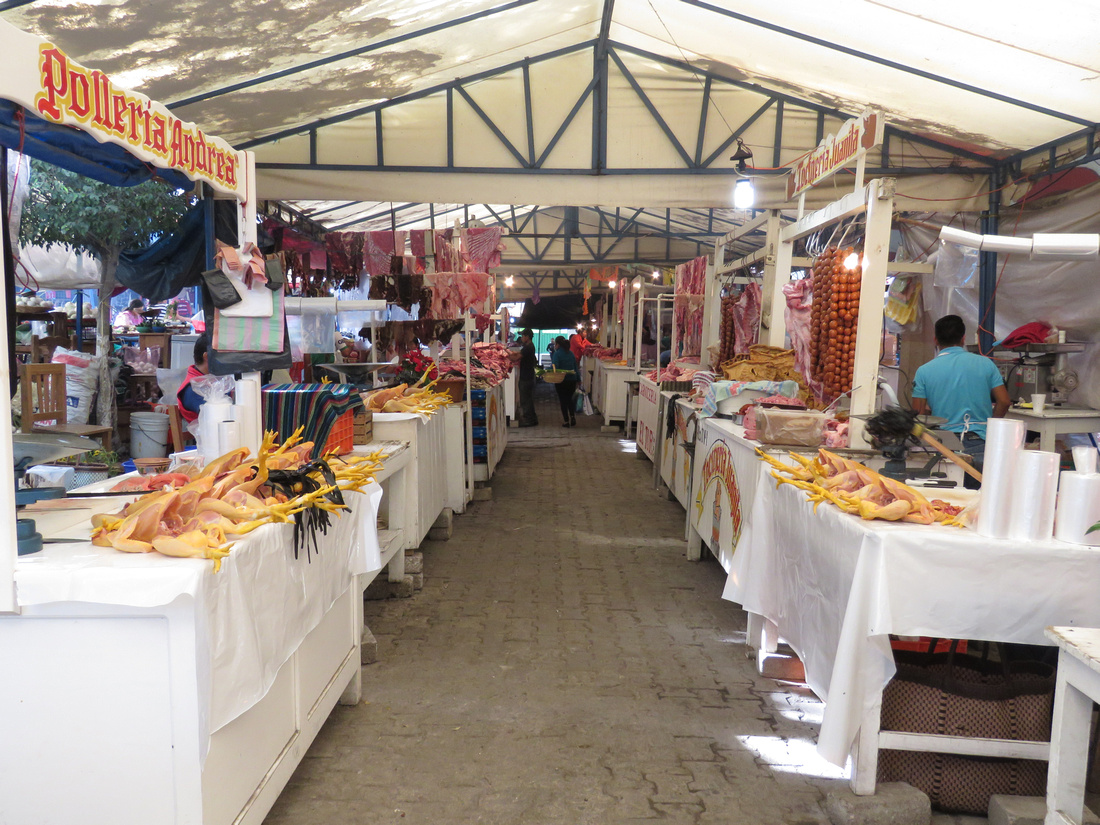

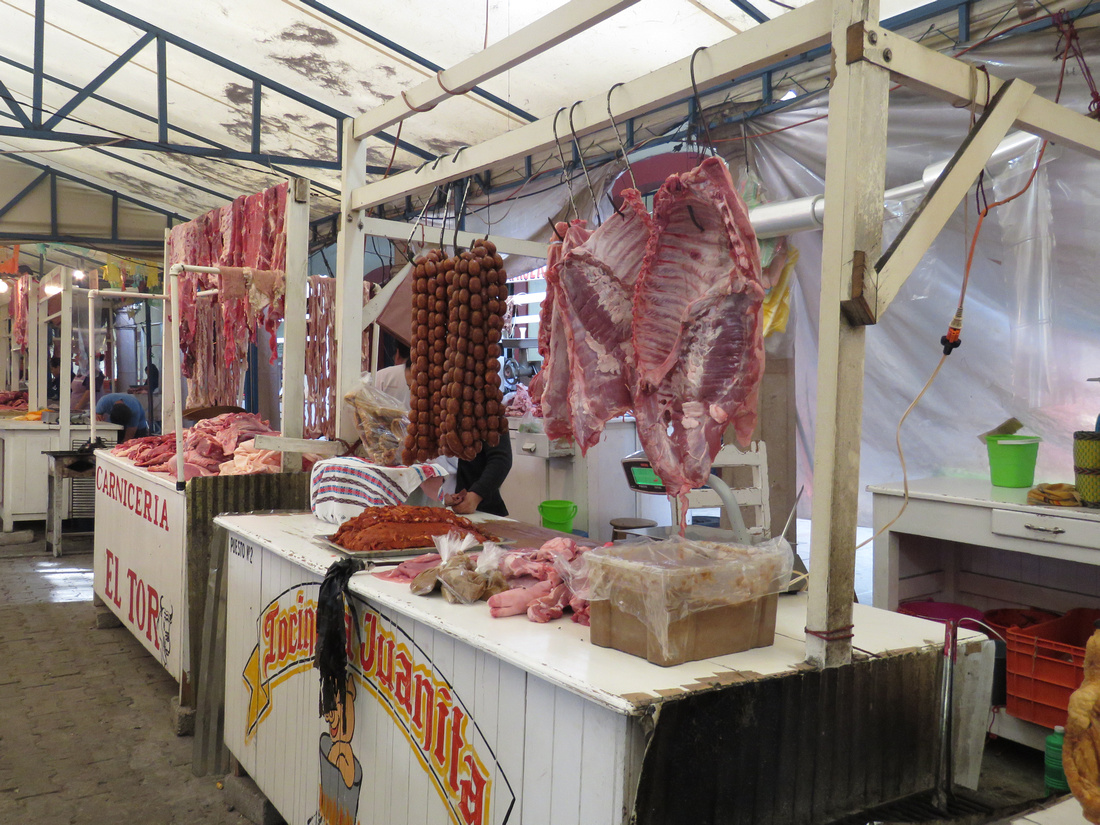

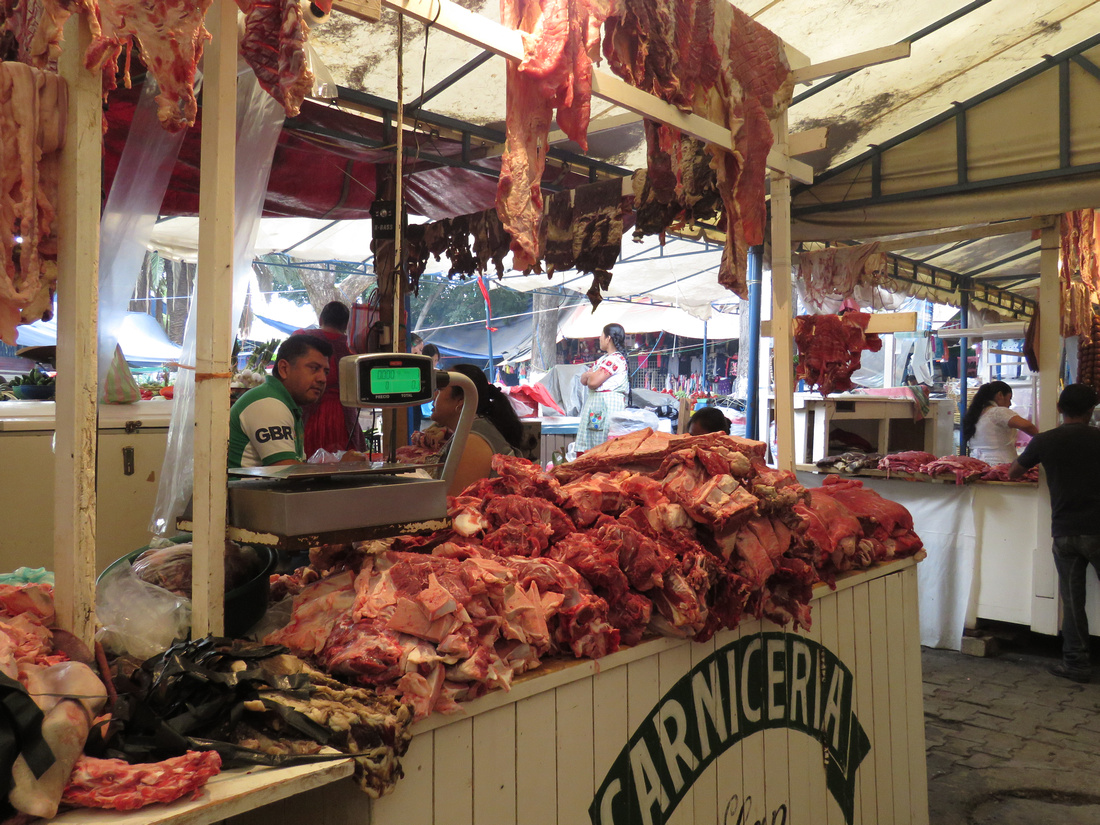

The police allowed me to take a photo showing the inside of the jail. In the past women and children lived inside with their incarcerated fathers and/or husbands.
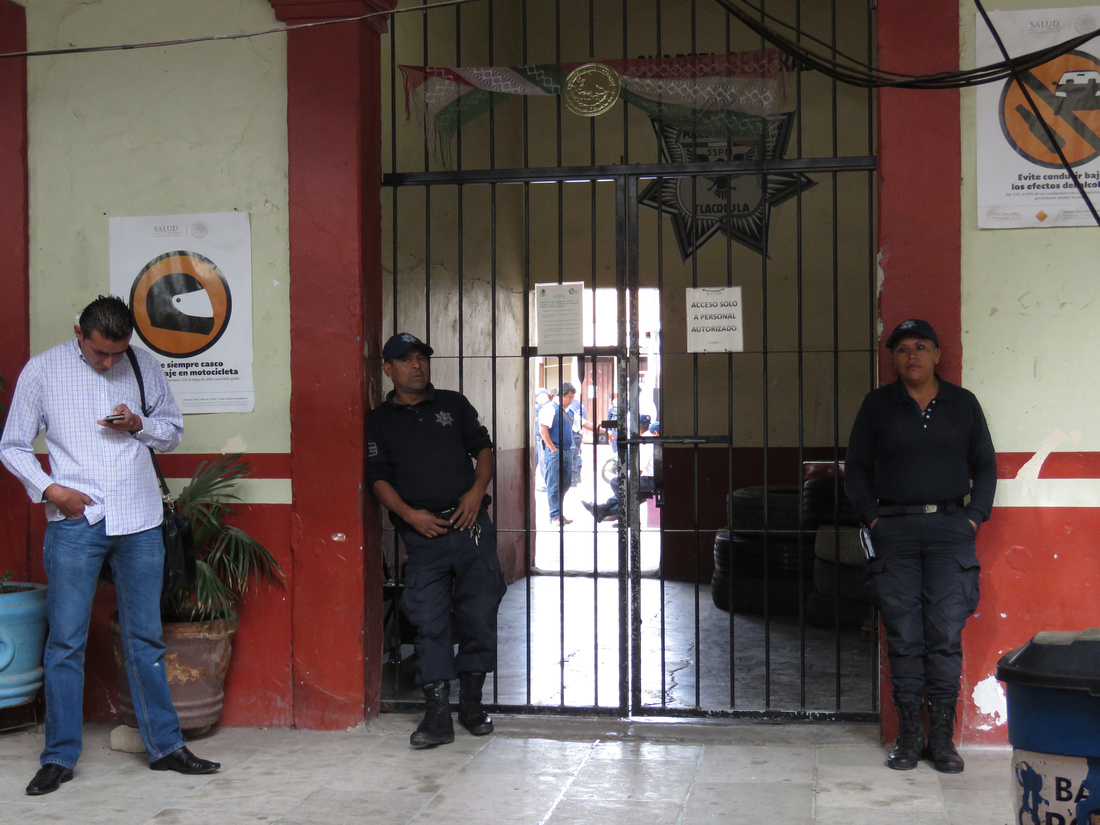

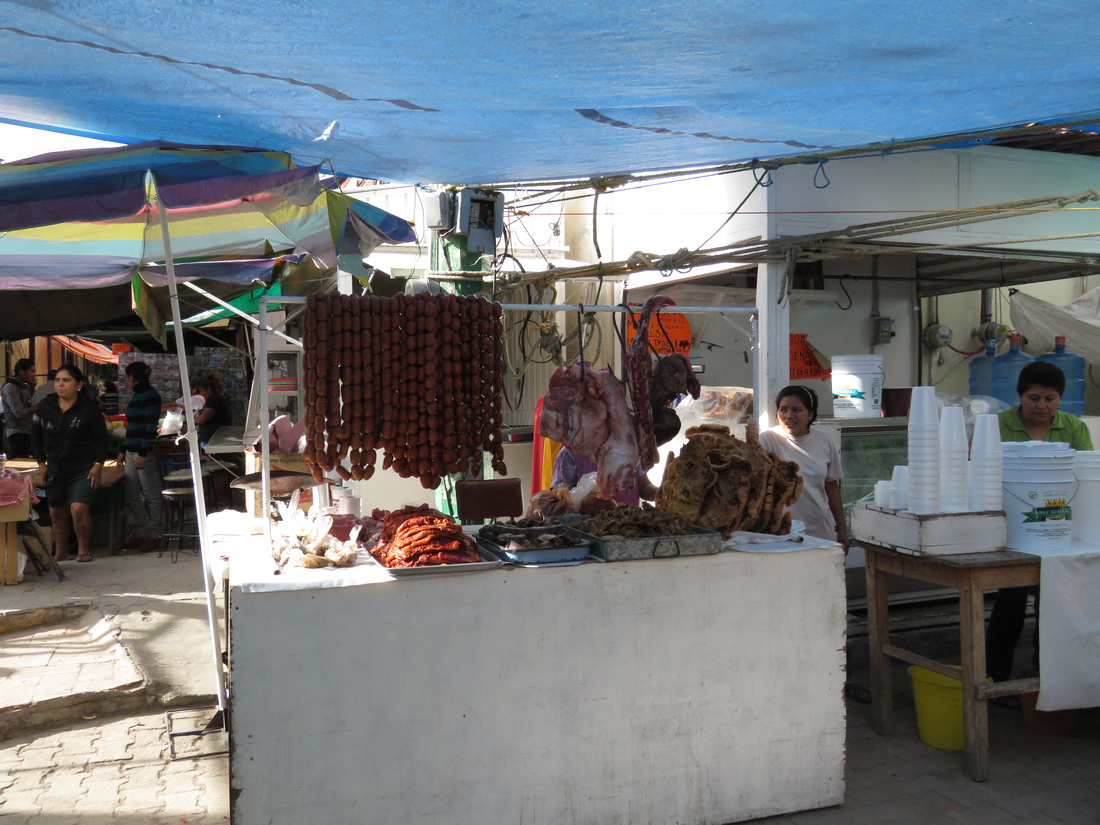

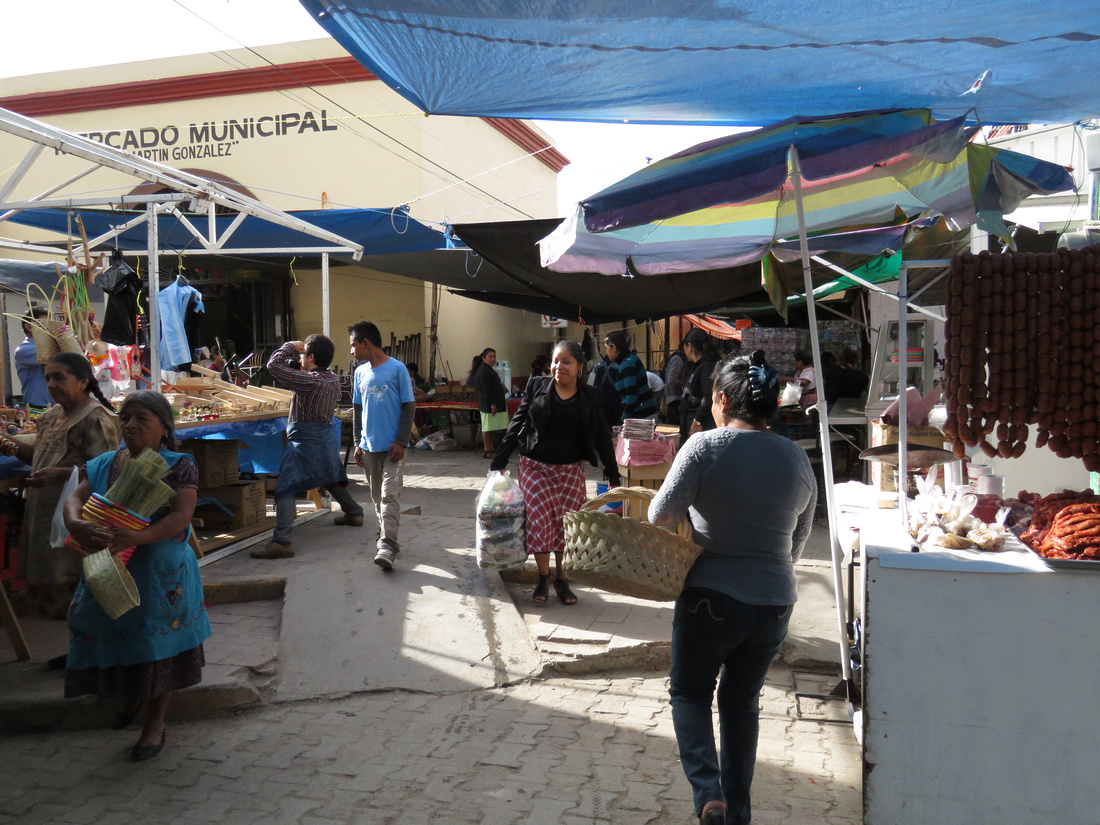

We go to the market early so there aren't many people. By twelve o'clock it's difficult to move
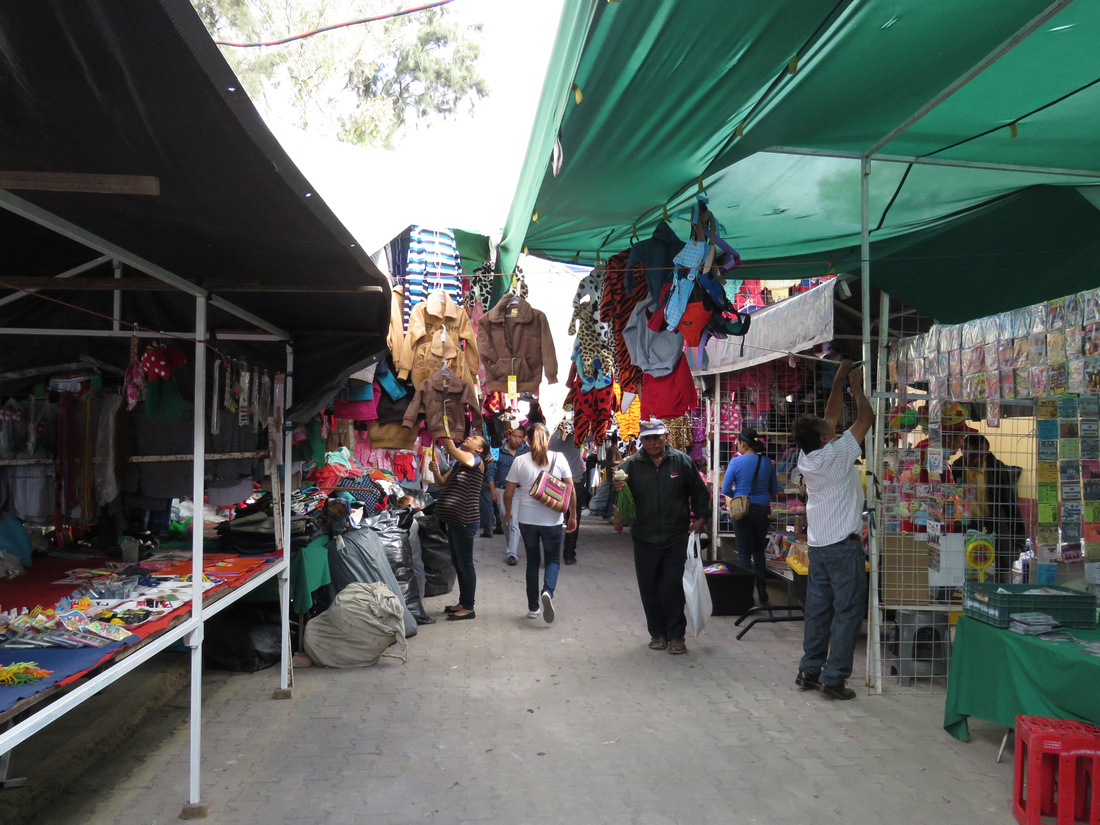

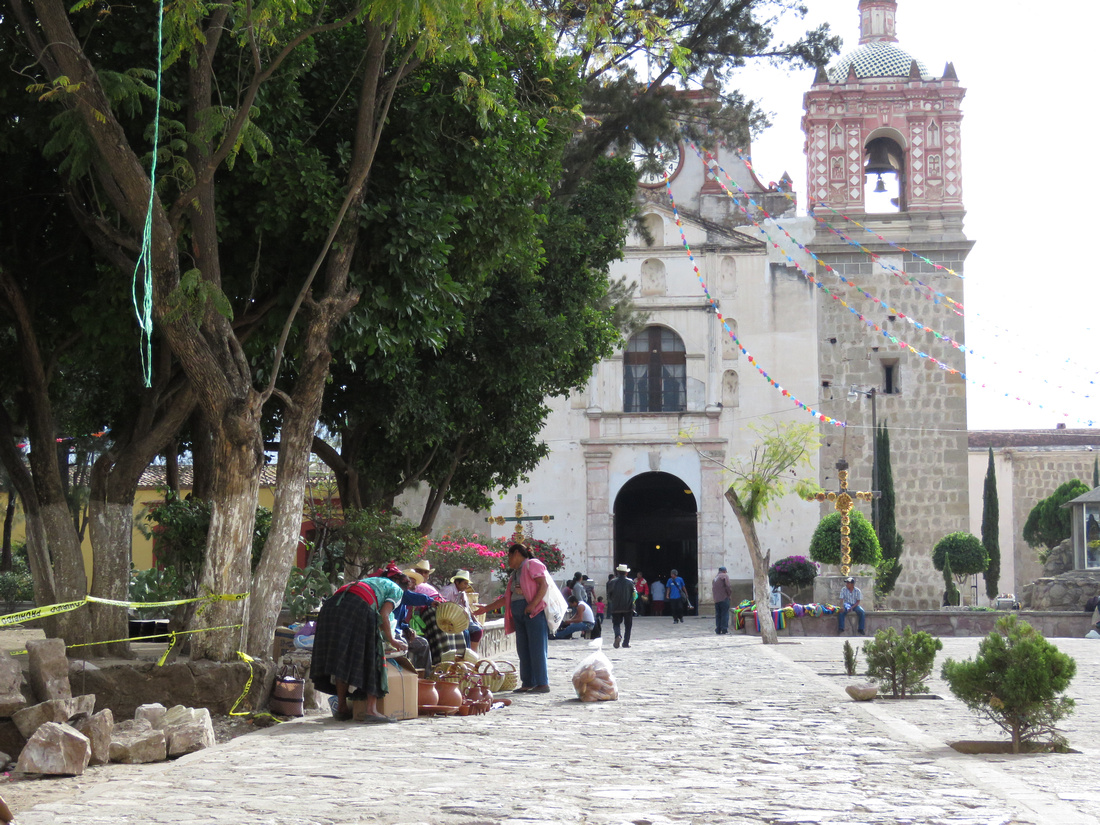

We still haven't acquired a taste for these toasted grasshoppers.
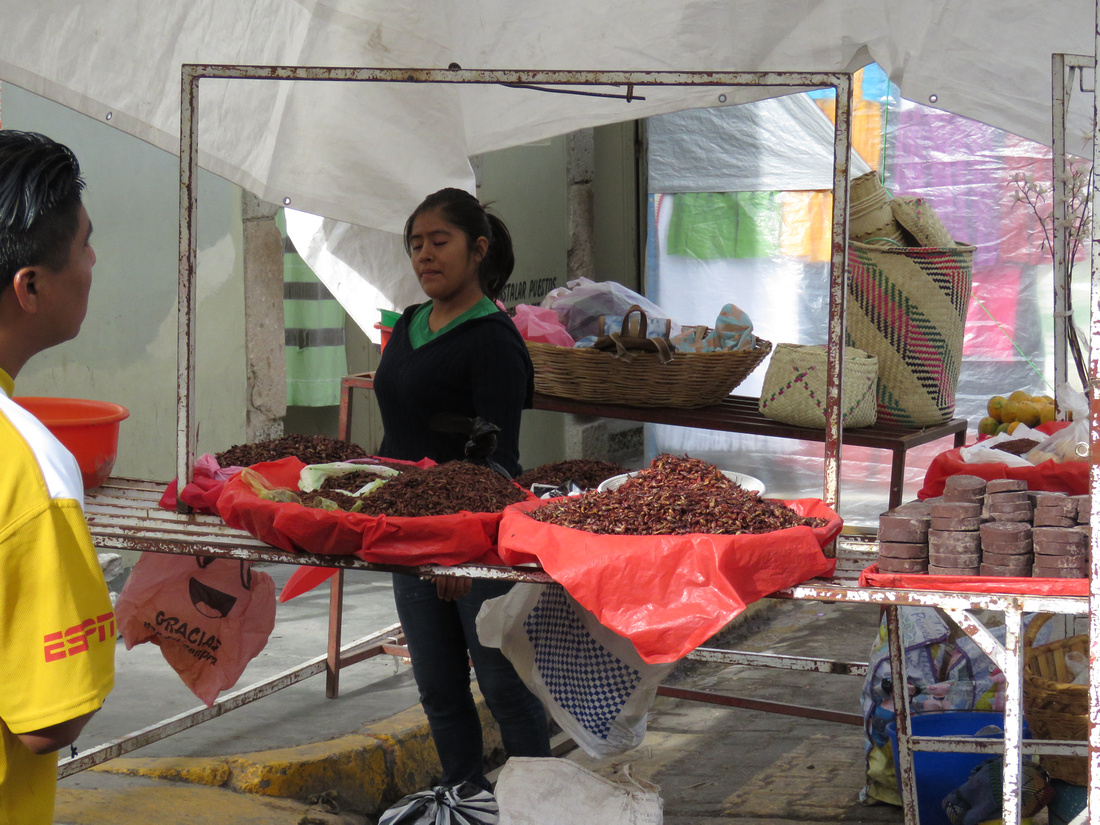



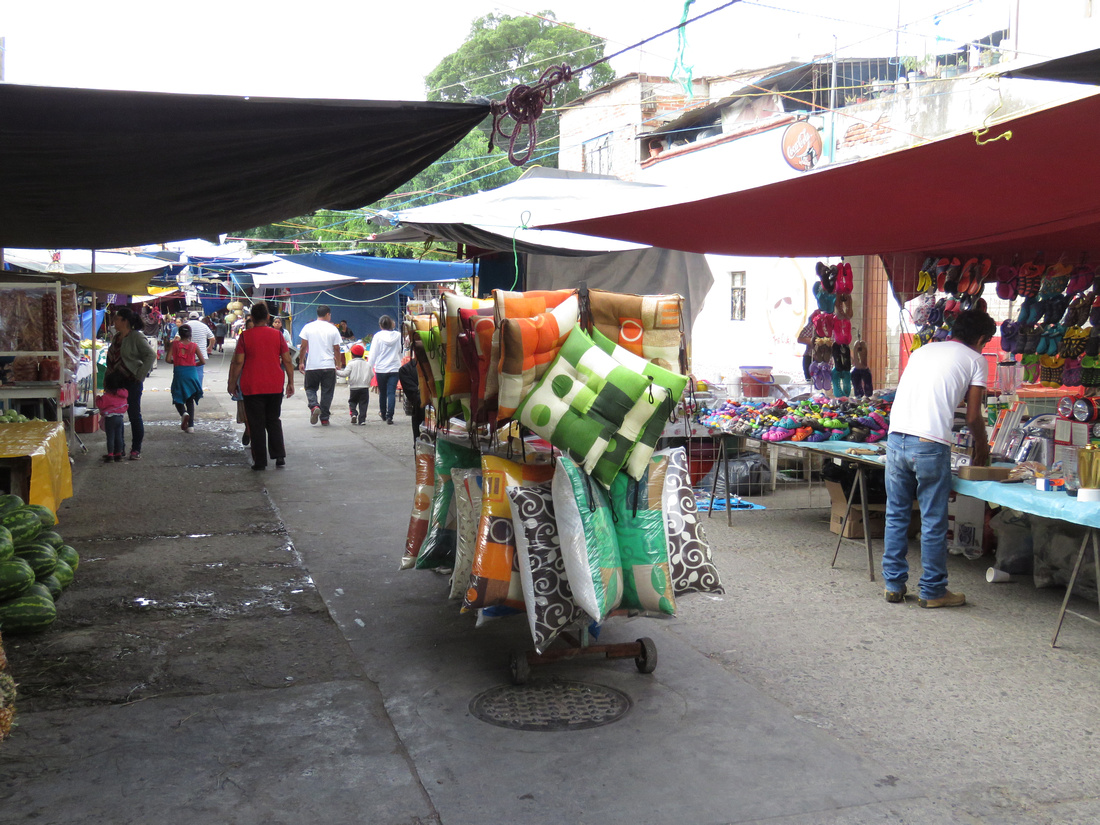



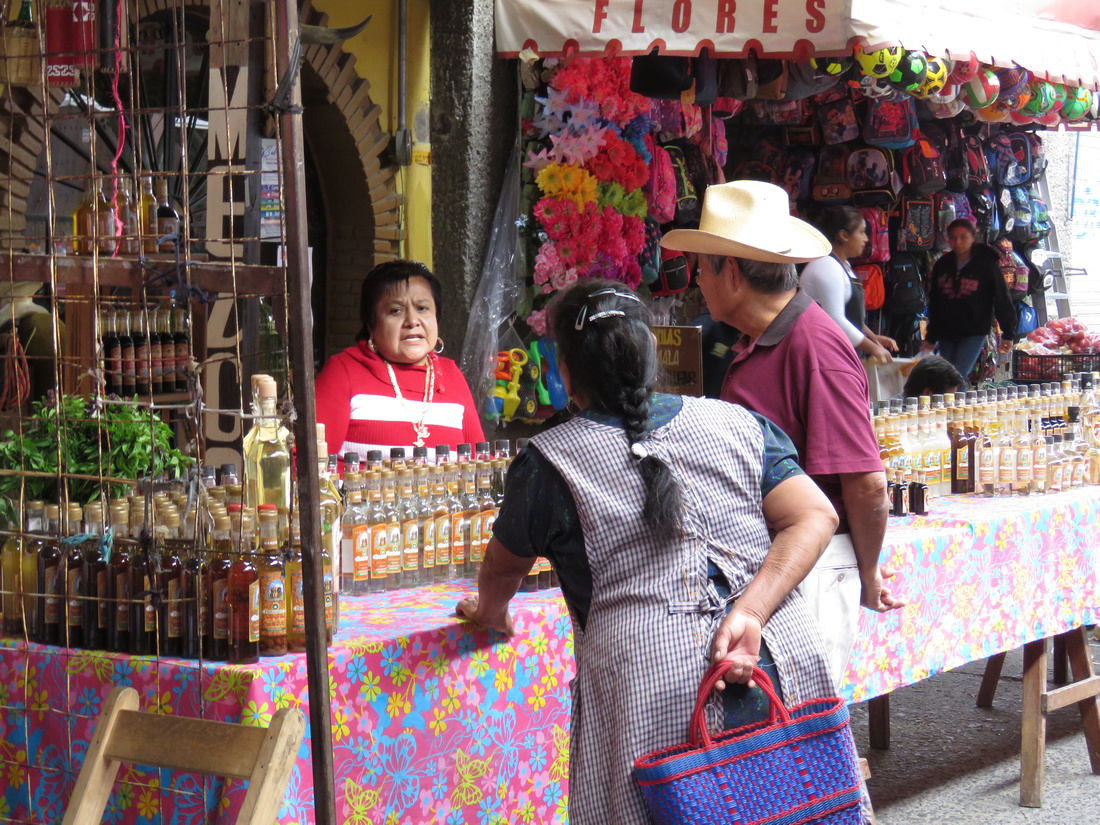

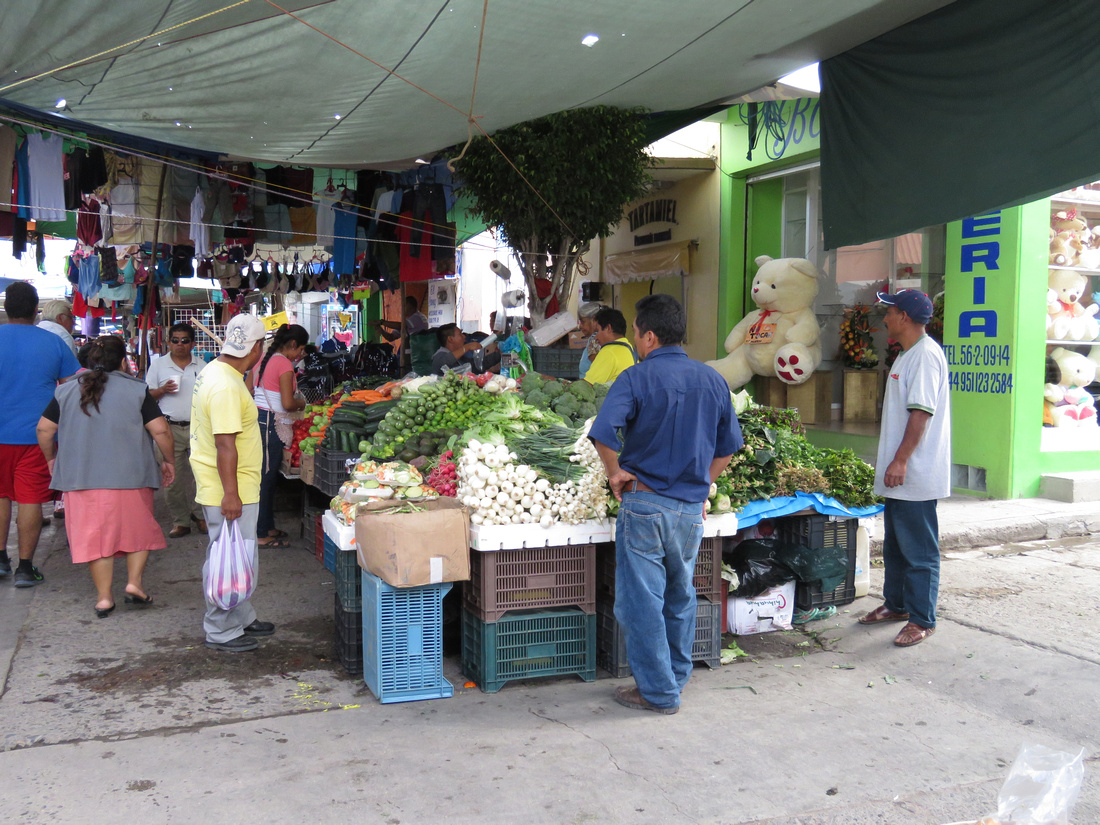

There's not much control over pirated movies and music. Three movies are about three dollars.
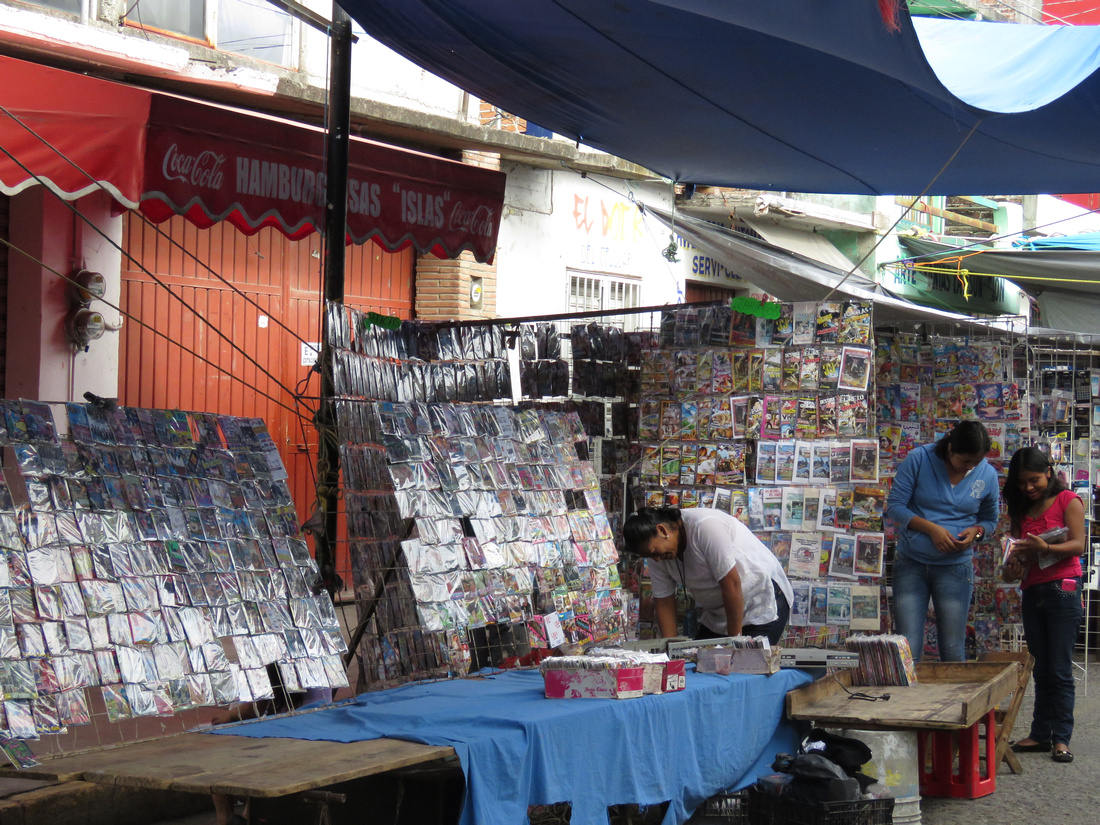

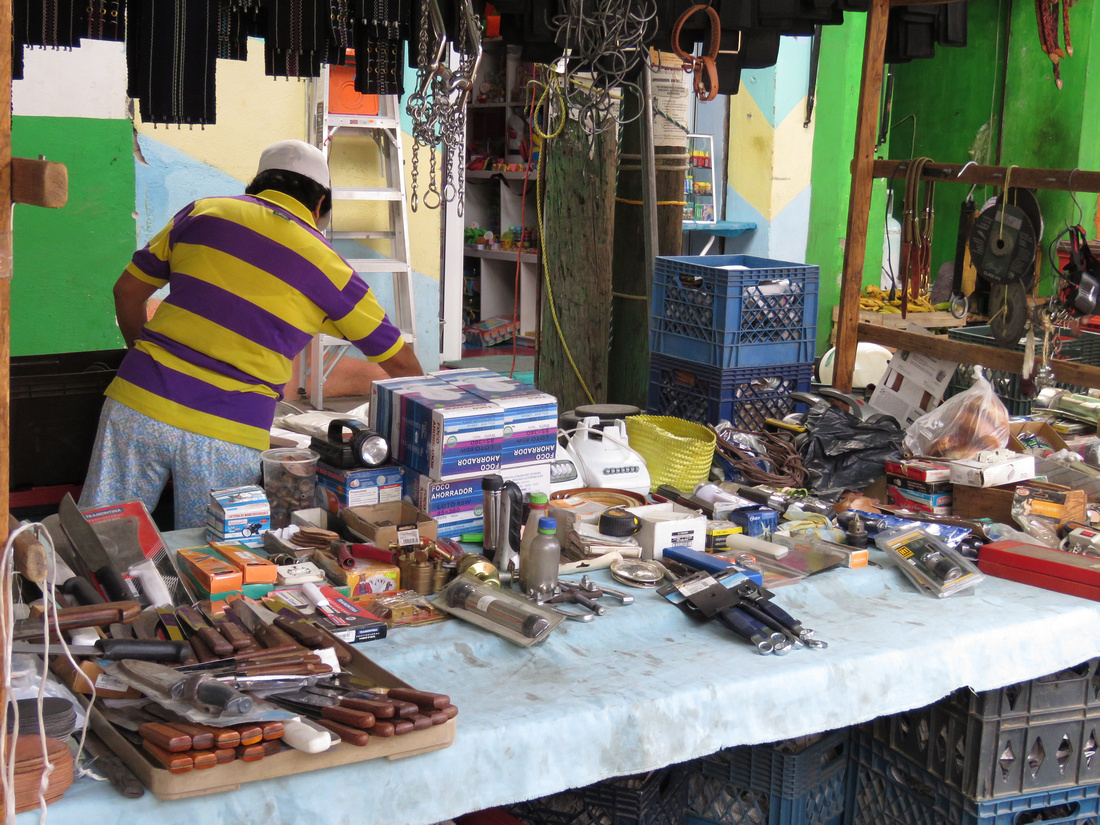

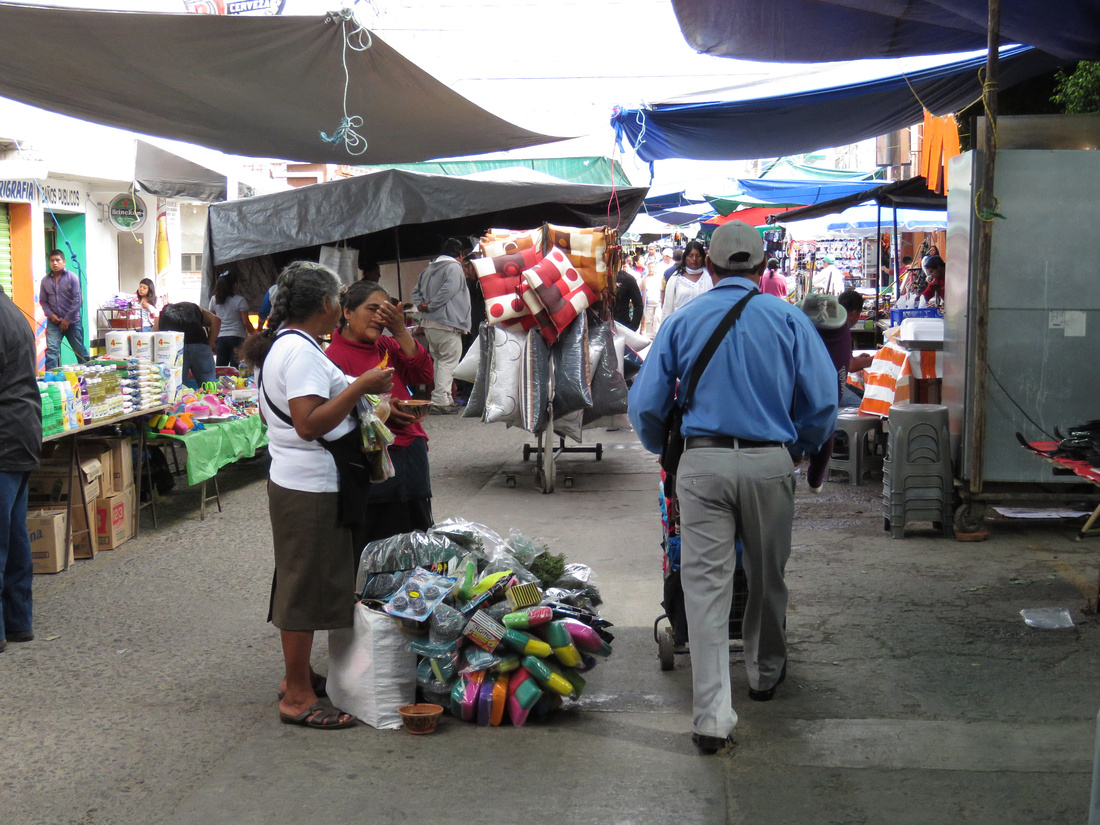

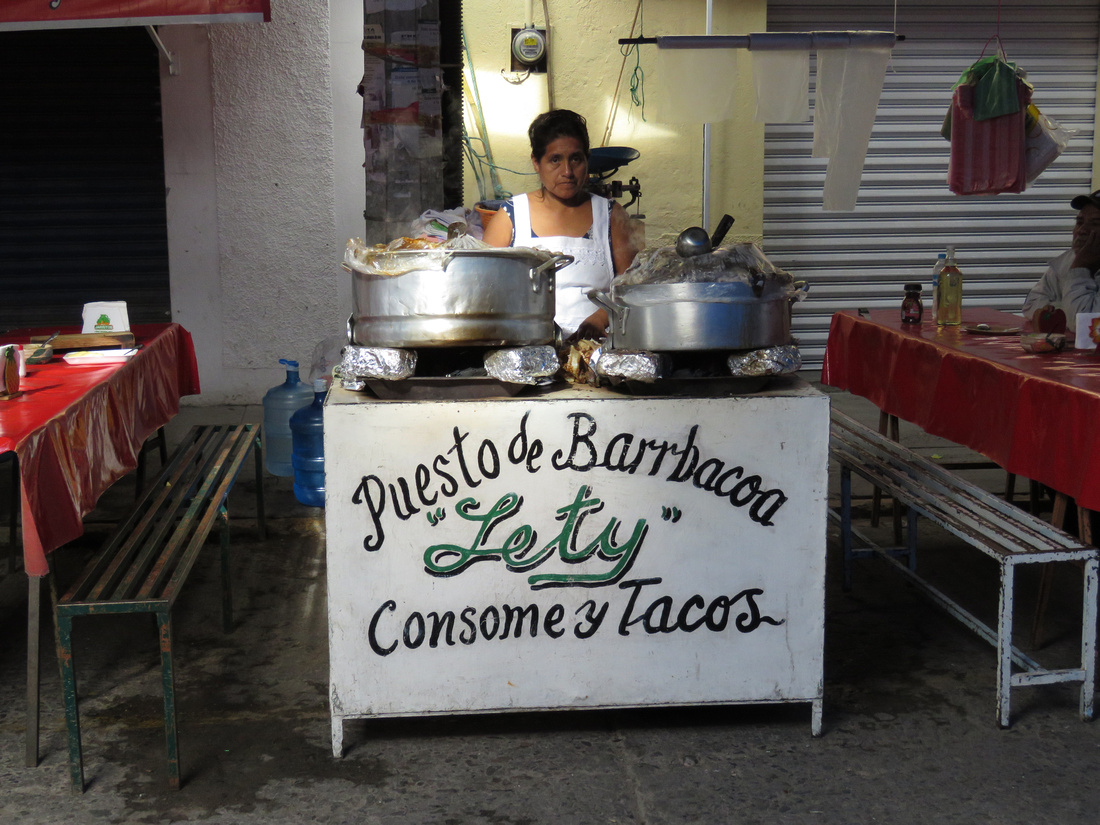



We often buy from this young woman and her mom; nevertheless, the woman refused to be photographed. The mom enjoyed her daughter's embarrassment.
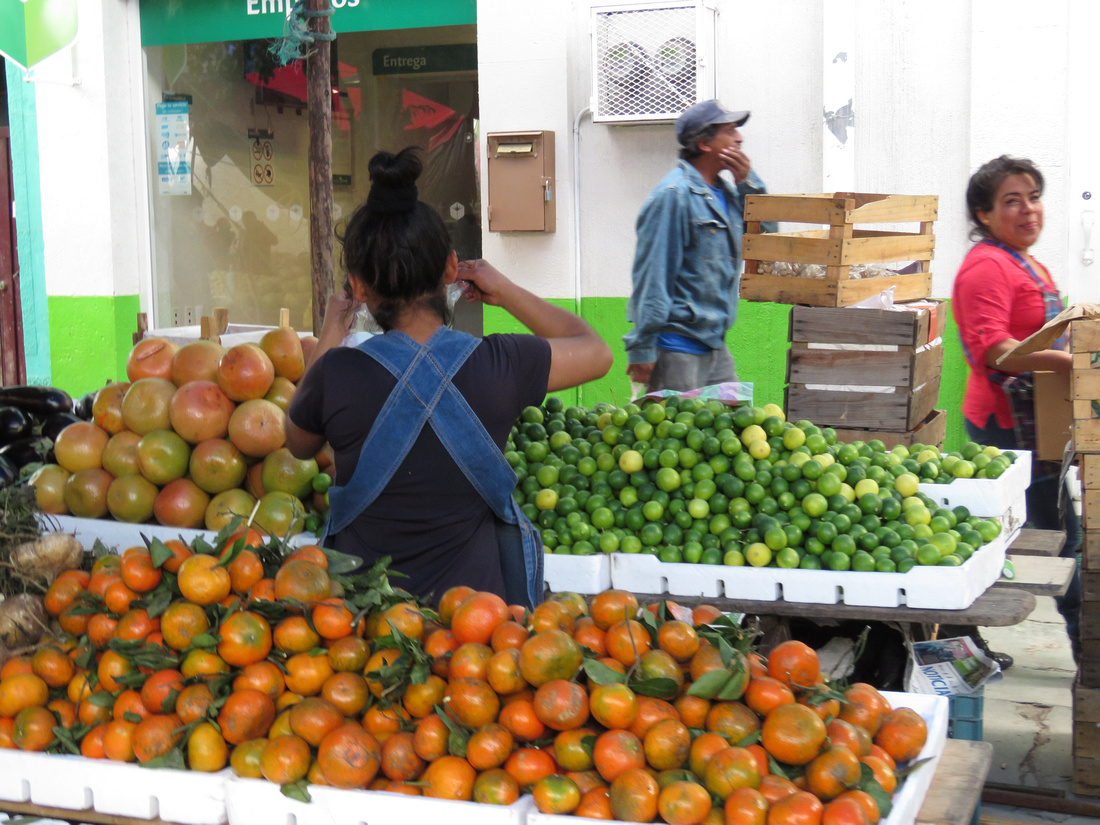

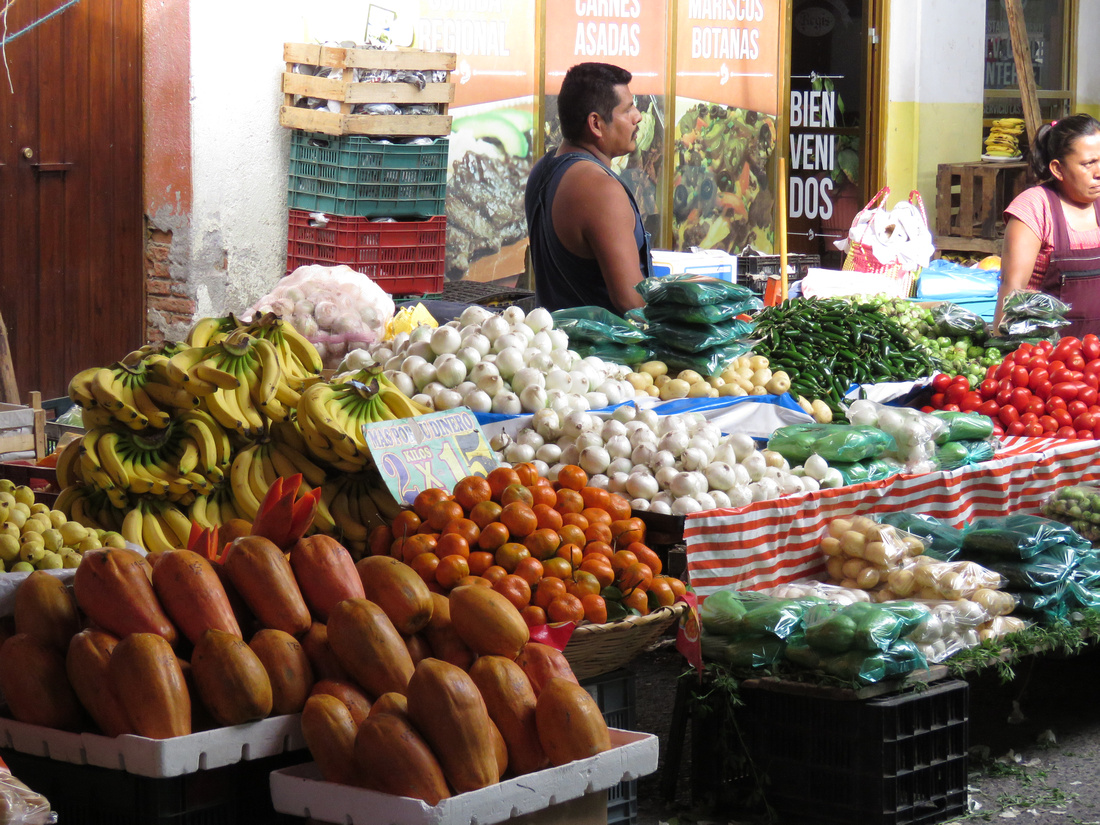

We buy a lot from this young man. Like many other vendors, he makes his living traveling around the valley selling on each villages' market day.
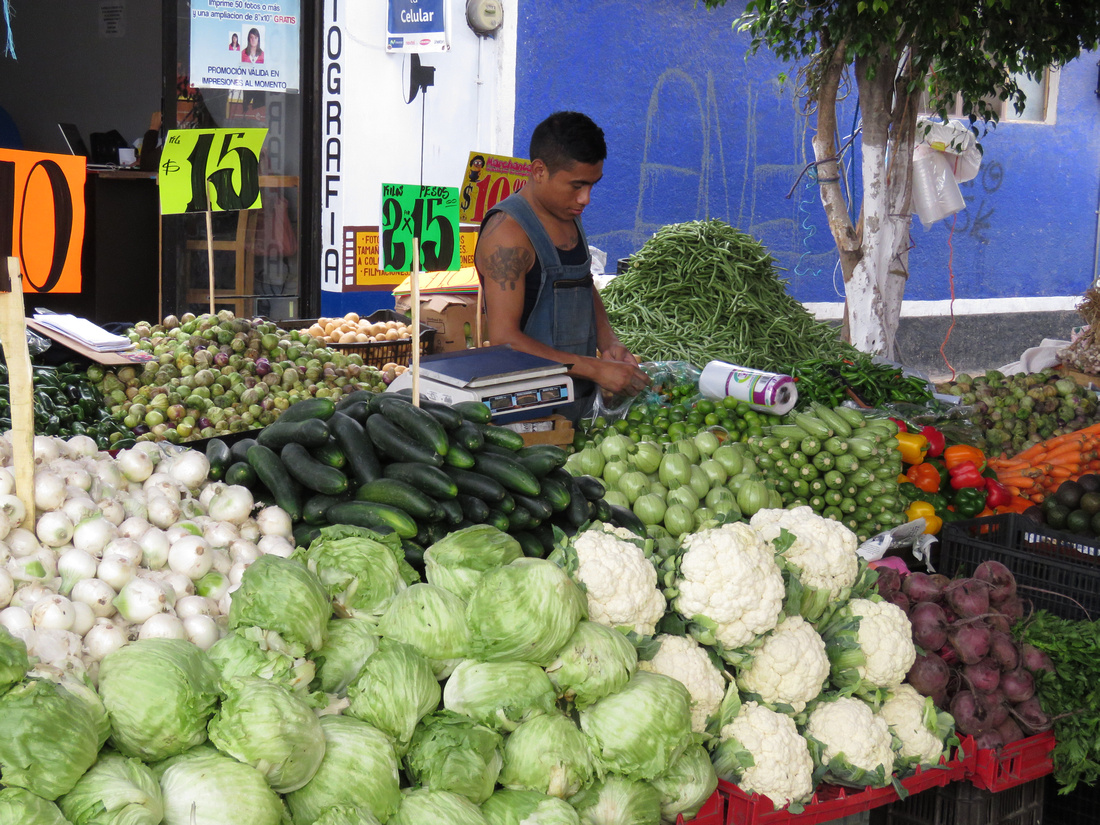

There are about eight cellphone stores on the main street alone. The last few months I noticed that many new stores were opening in Tlacolula. Then I read that more Mexicans are returning rather than traveling to the US. I would guess that most of the new stores are opened by those that have returned with their saved money from working in America.


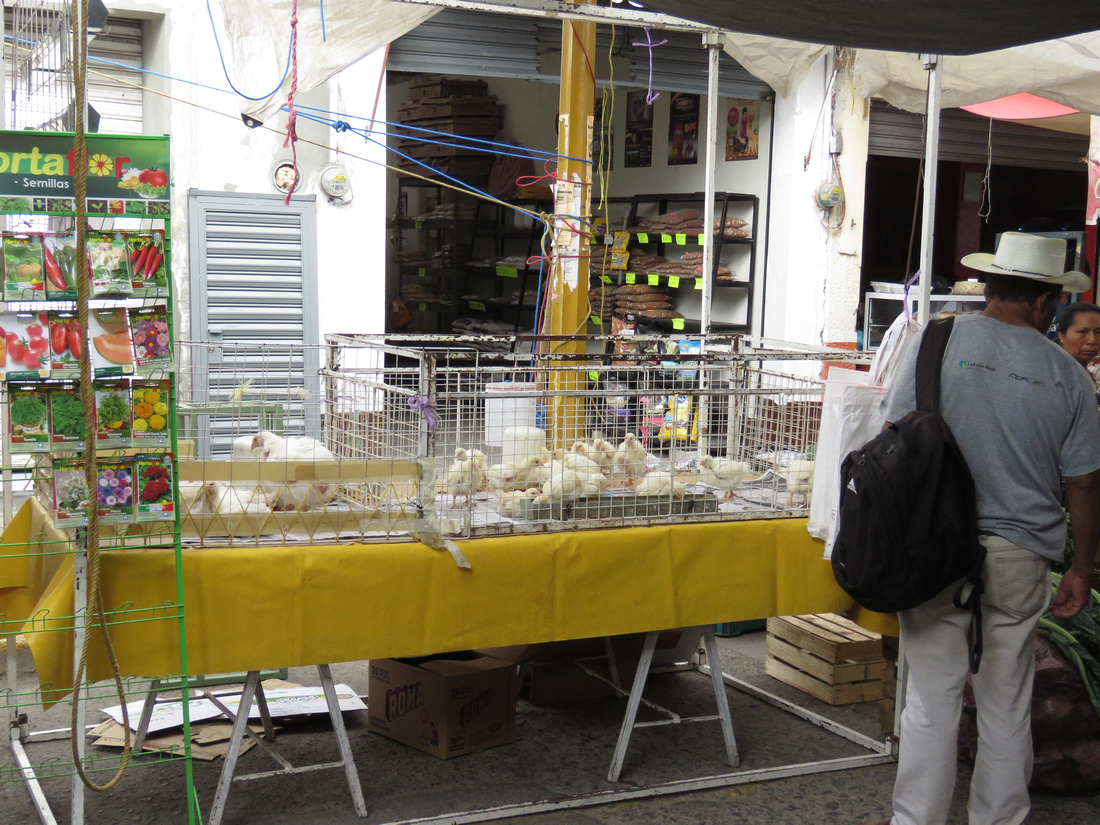

Locally made furniture is for sale on Sundays.
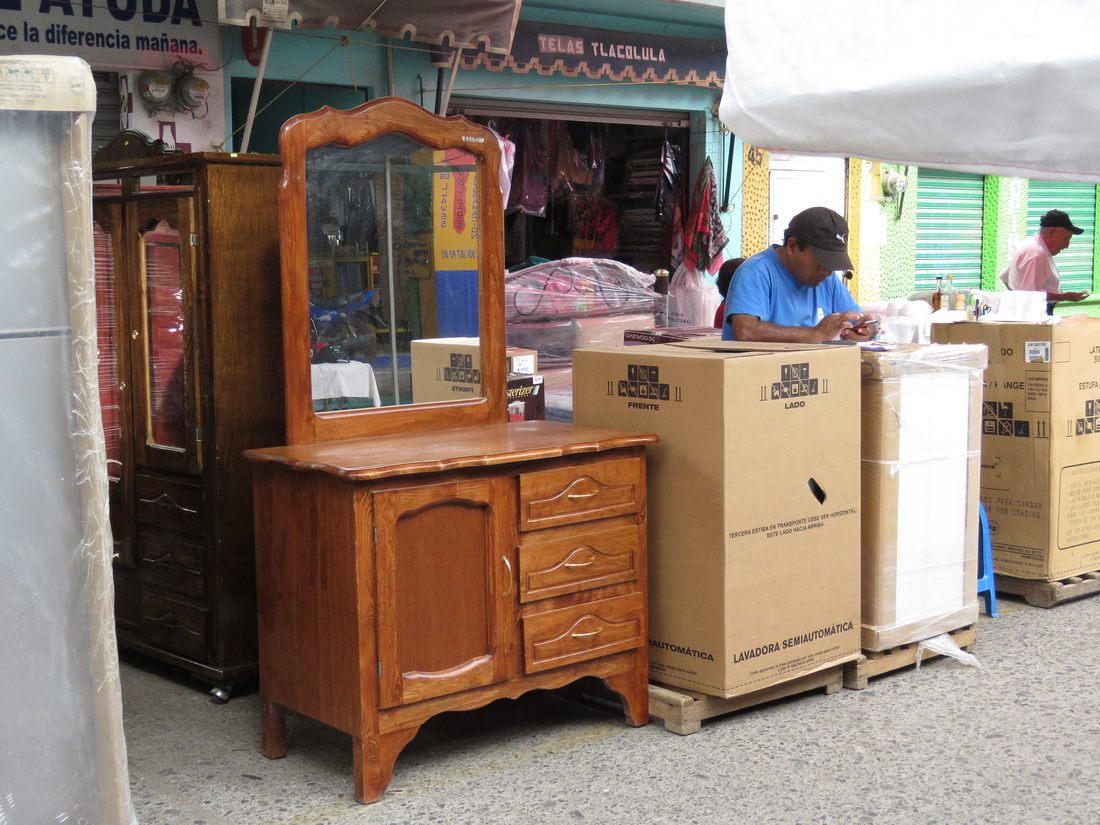

We don't often buy pork rinds but these are fresh and tasty.


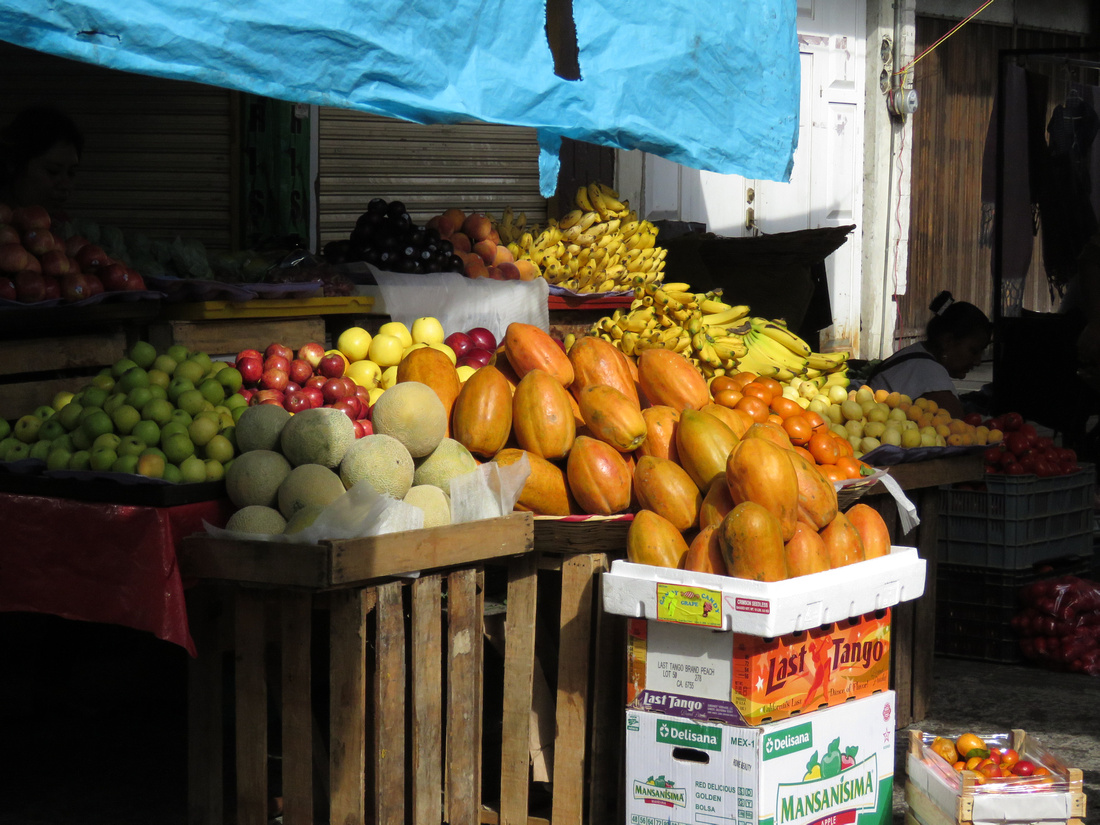

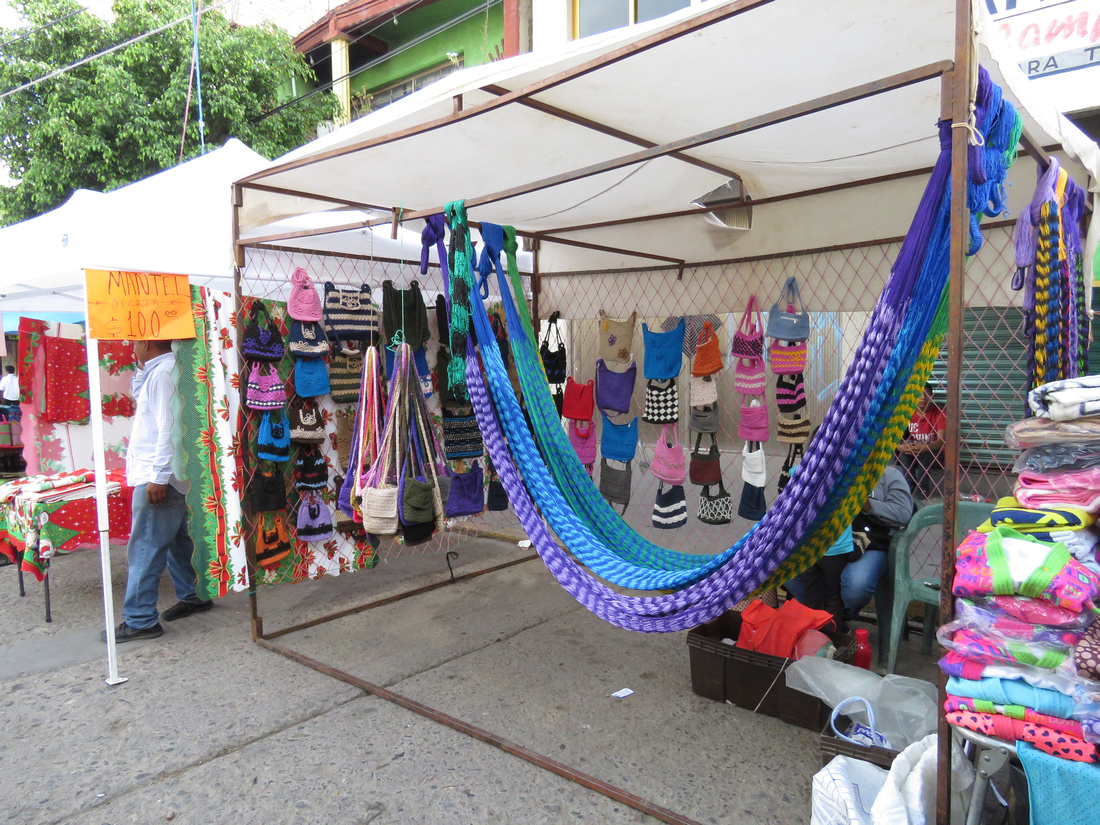

We consistently buy our watermelons from these folks. They are always sweet and firm. We also buy their oranges and pineapples.
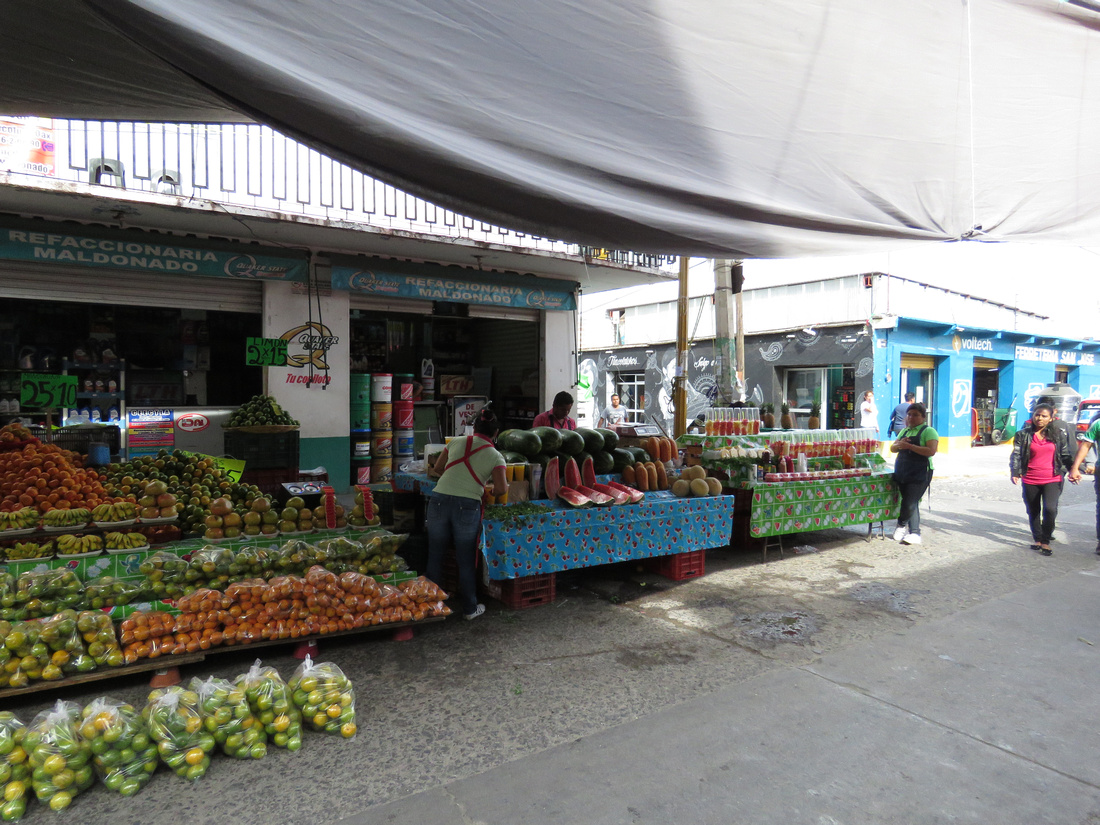

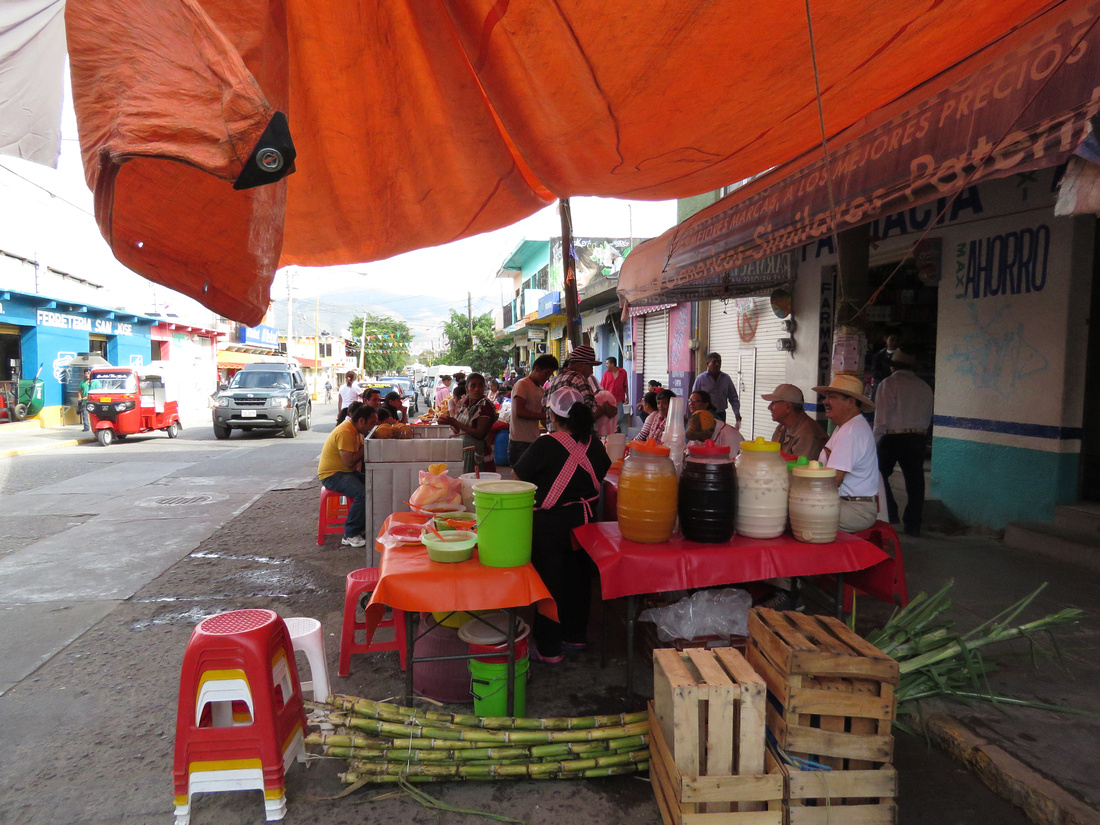

This is the first stall as you enter the market. They sell pork prepared different ways. I'm not sure which is worse, the smell or looking into the open tubs of cooked product.
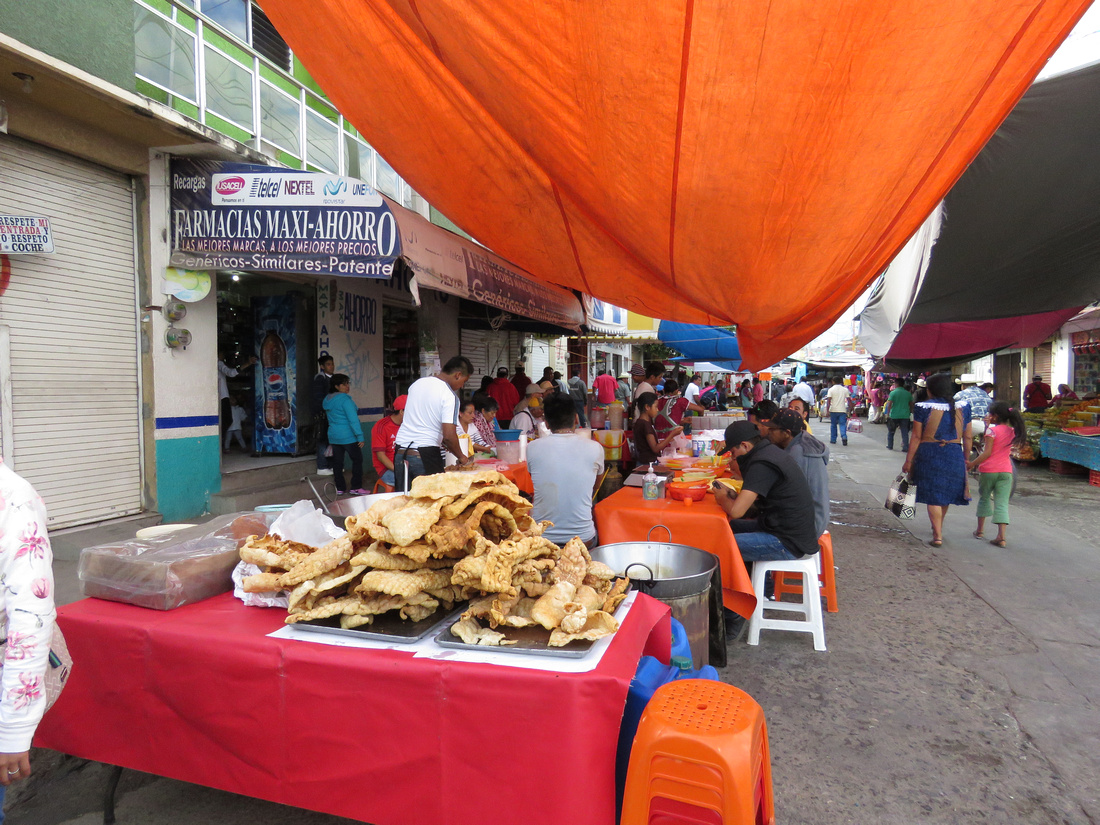

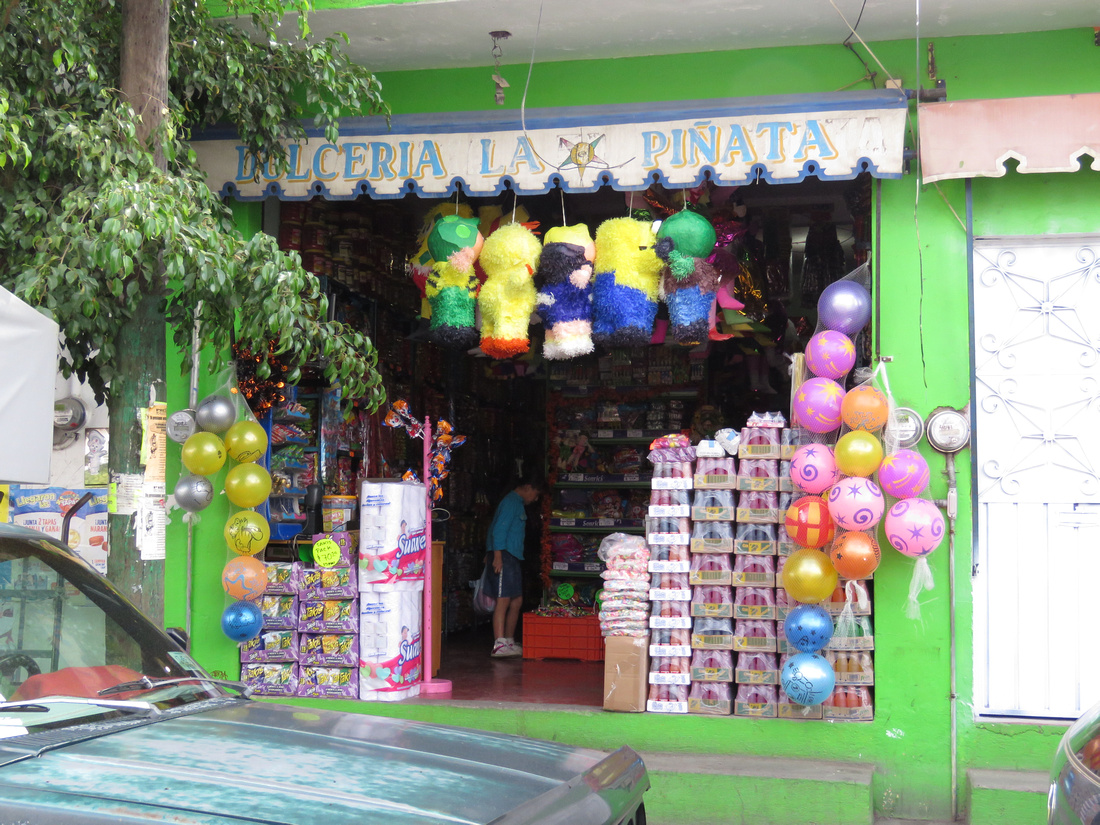

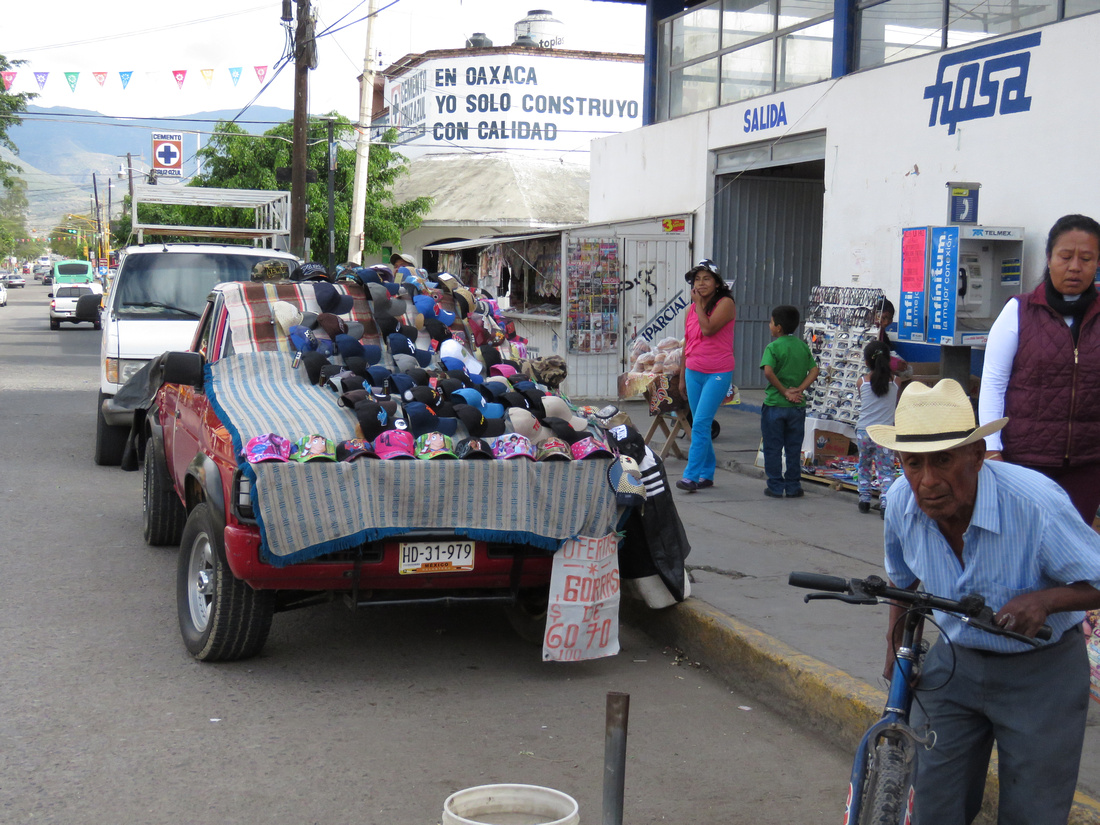

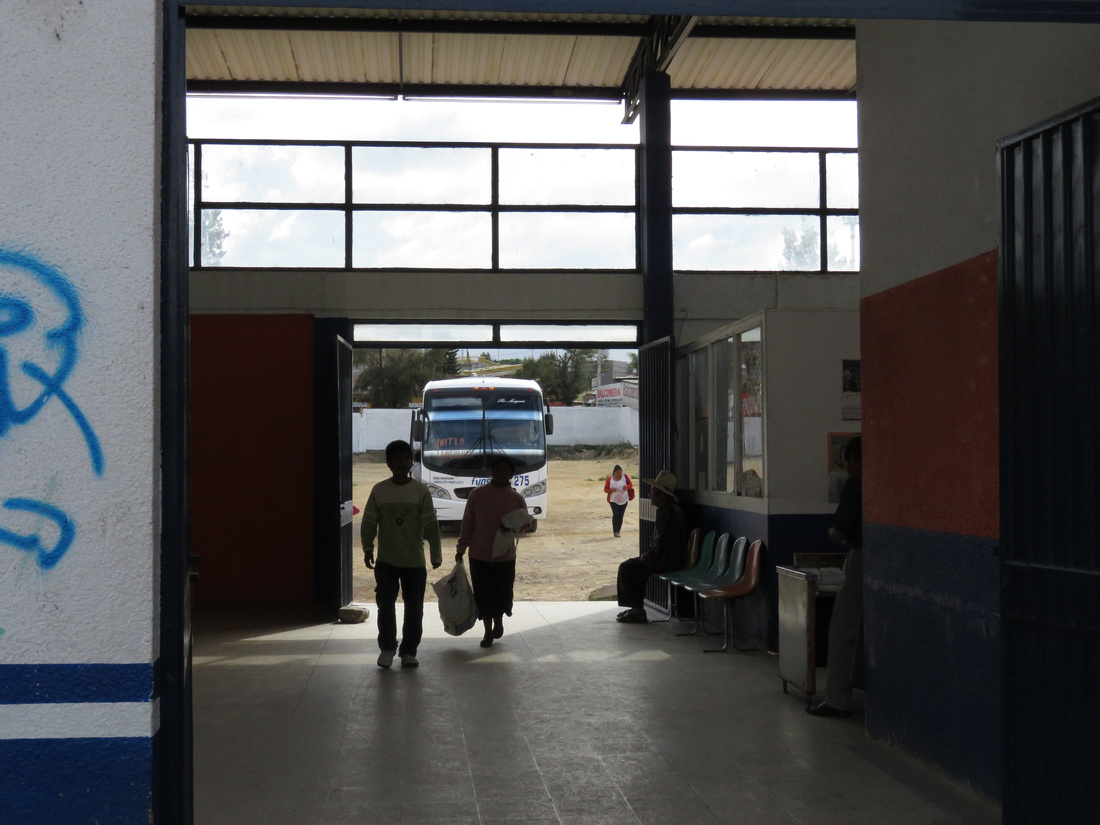

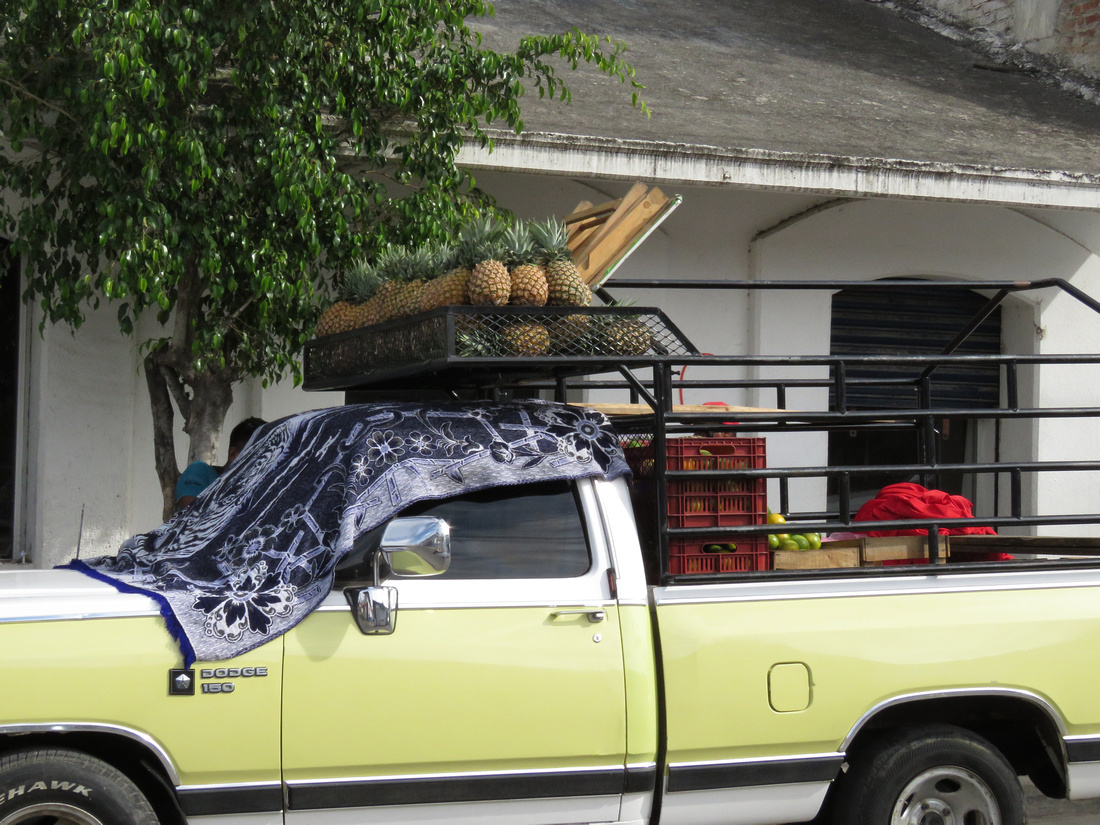

Many stands don't have running water, so water containers are used to wash your hands.
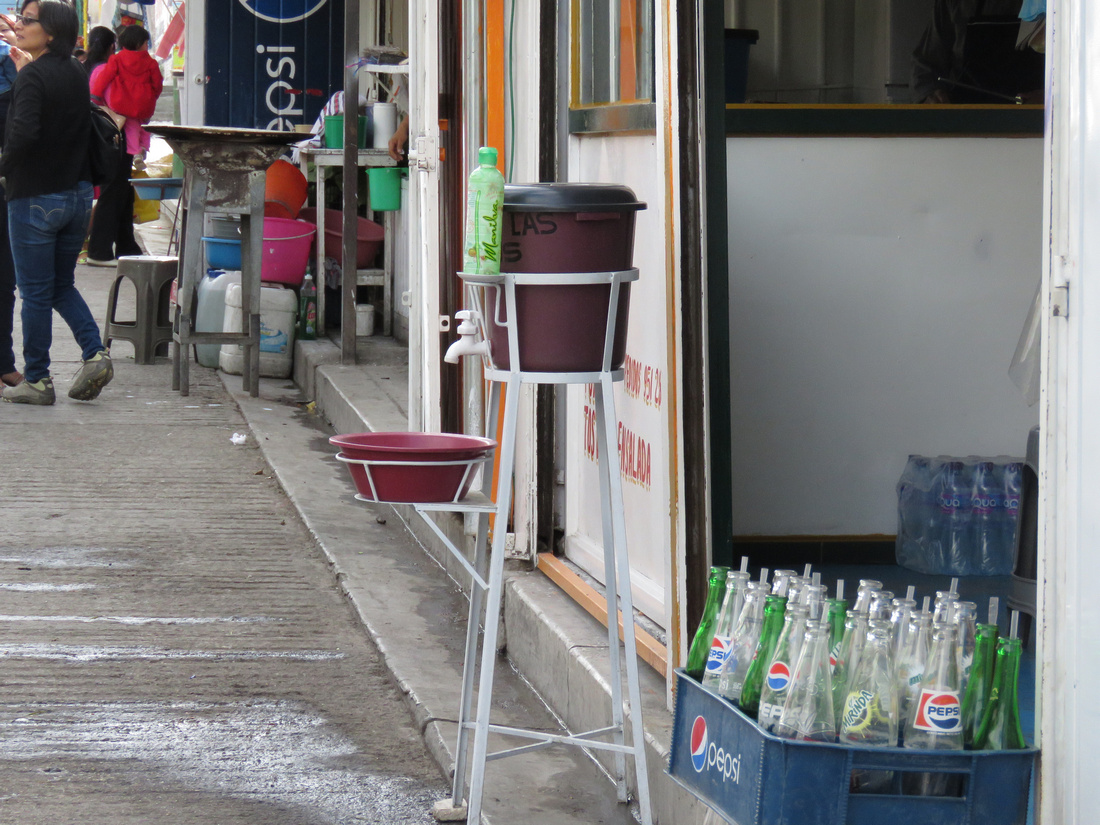

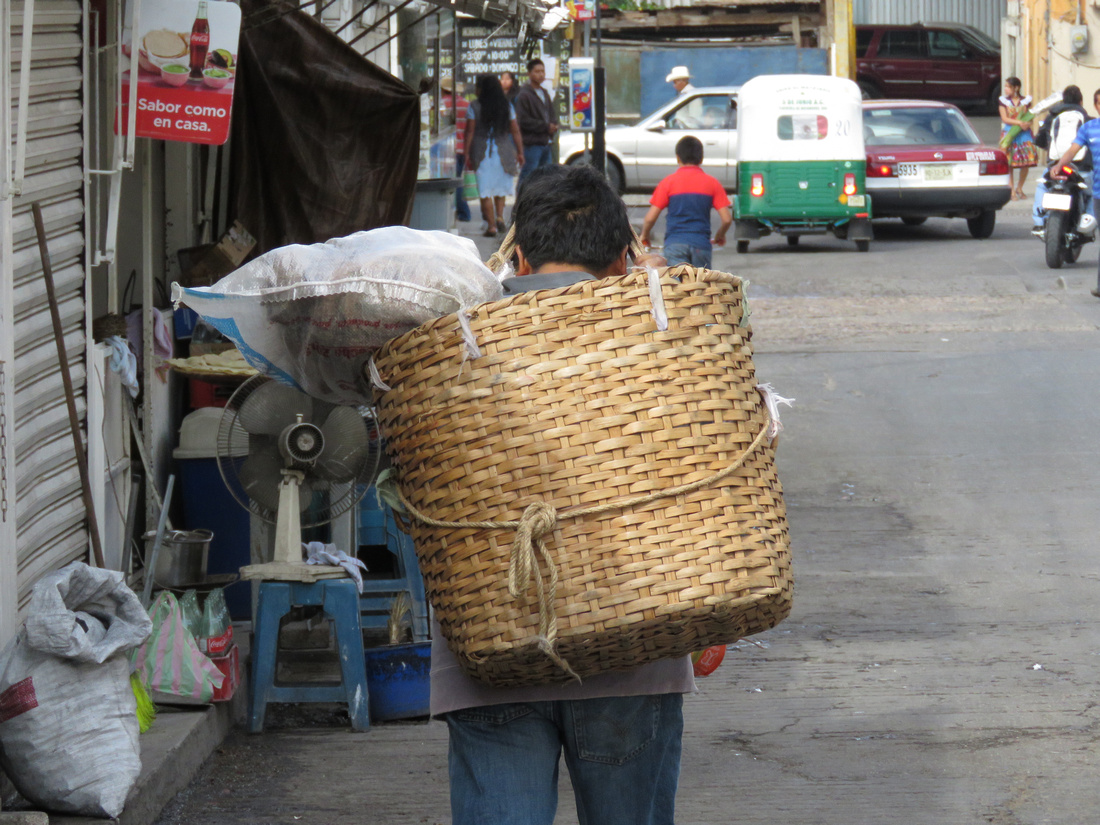

This family-ran hardware store has a little bit of everything. They have gone out of their way many times to procure what we were looking for.
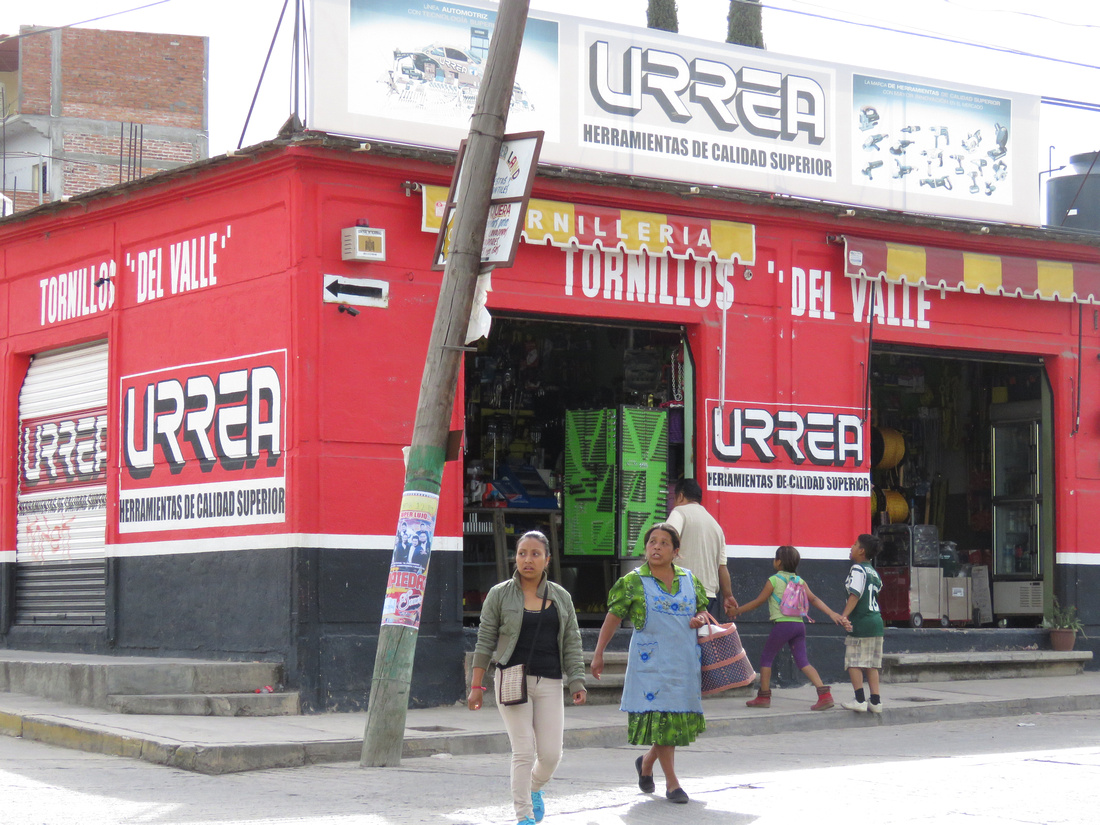

We celebrated Beth's 65th birthday with just a few friends.
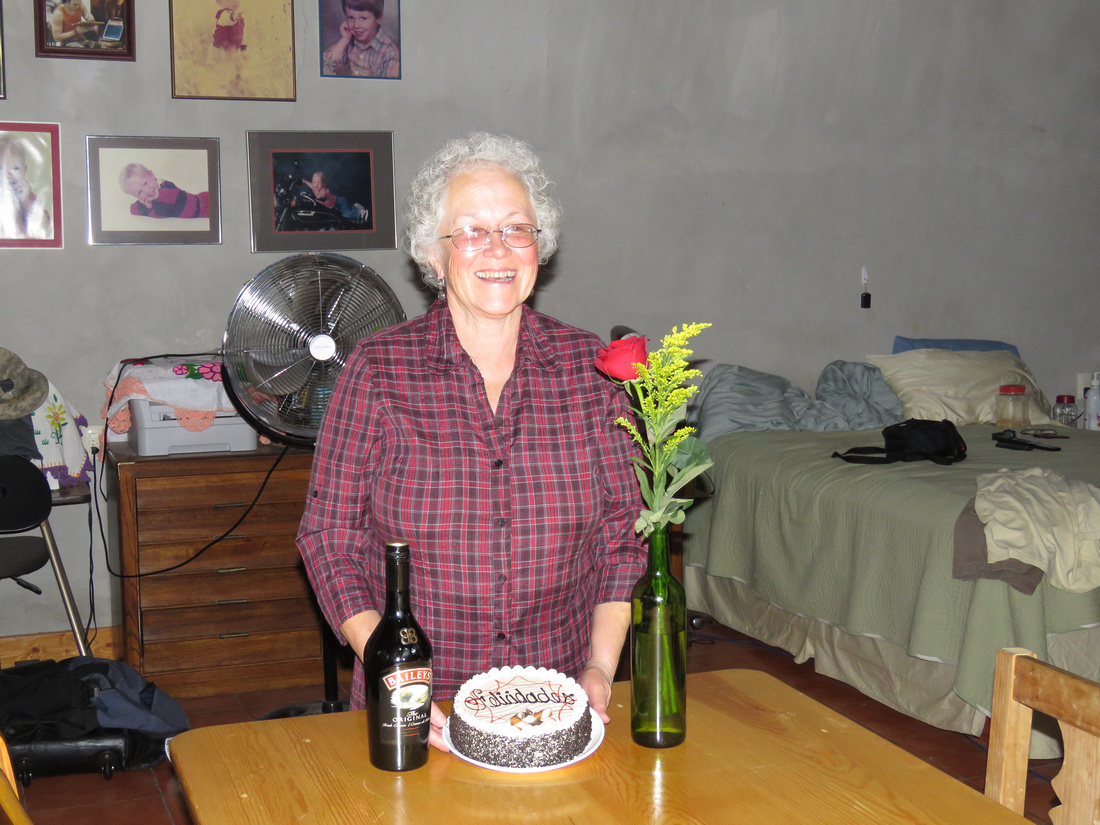

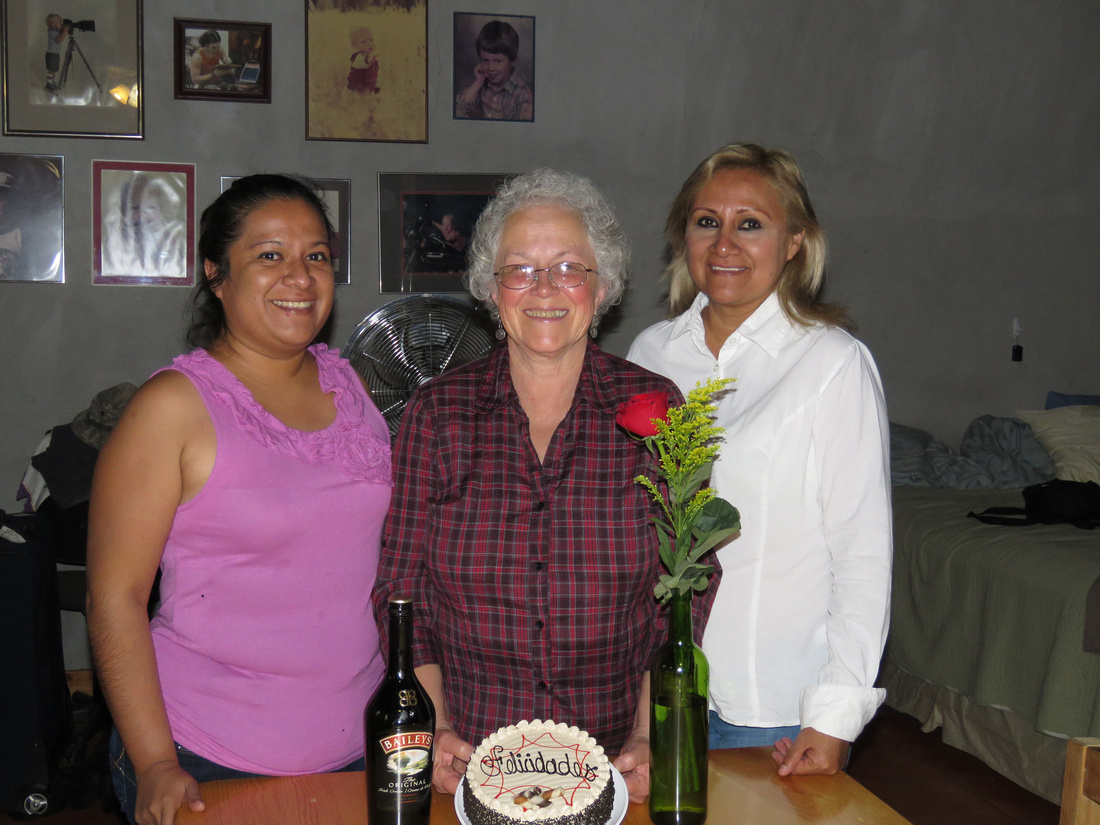

On our trips to the immigration office, we often stop at the Zocolo (town square). We found a restaurant that caters to Americans. I had the best omelette that I've had in Mexico. It's fun to eat and enjoy the bustling movement at the same time.


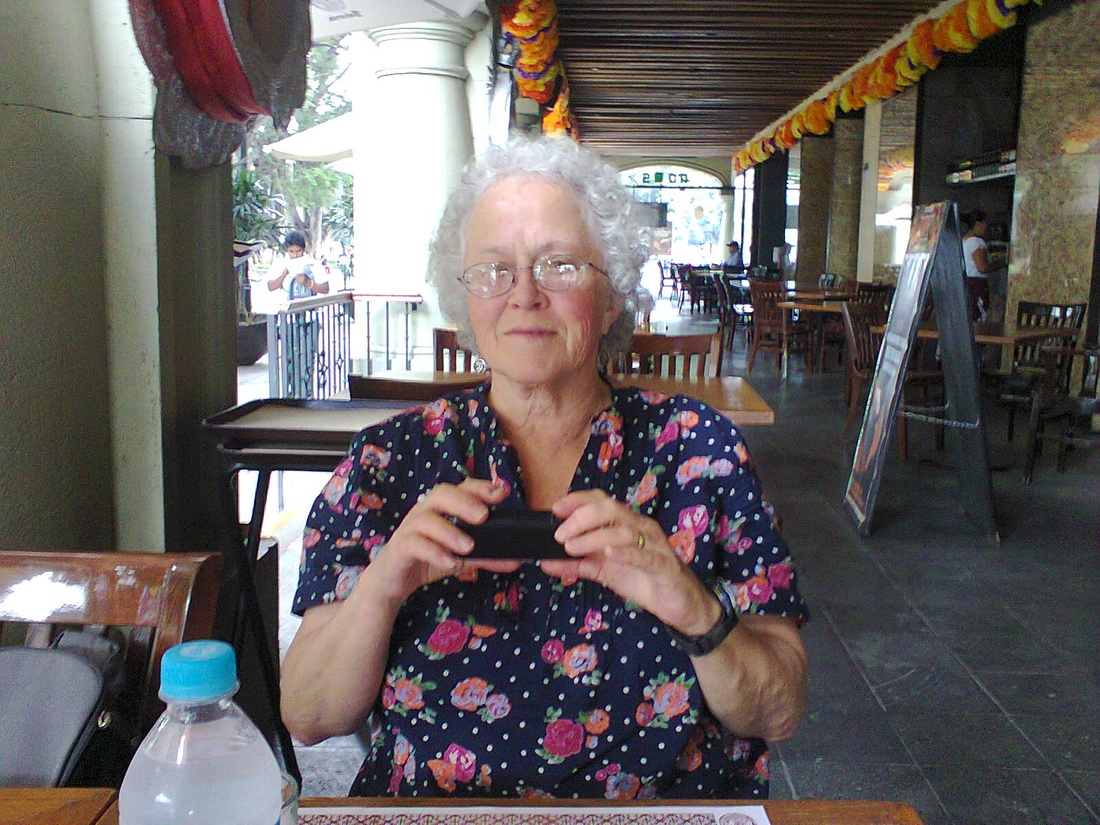



This waiter prepared Beth's dressing for a caesar salad at the table.


This is a great place to listen to street musicians. Peruvian music is very popular.
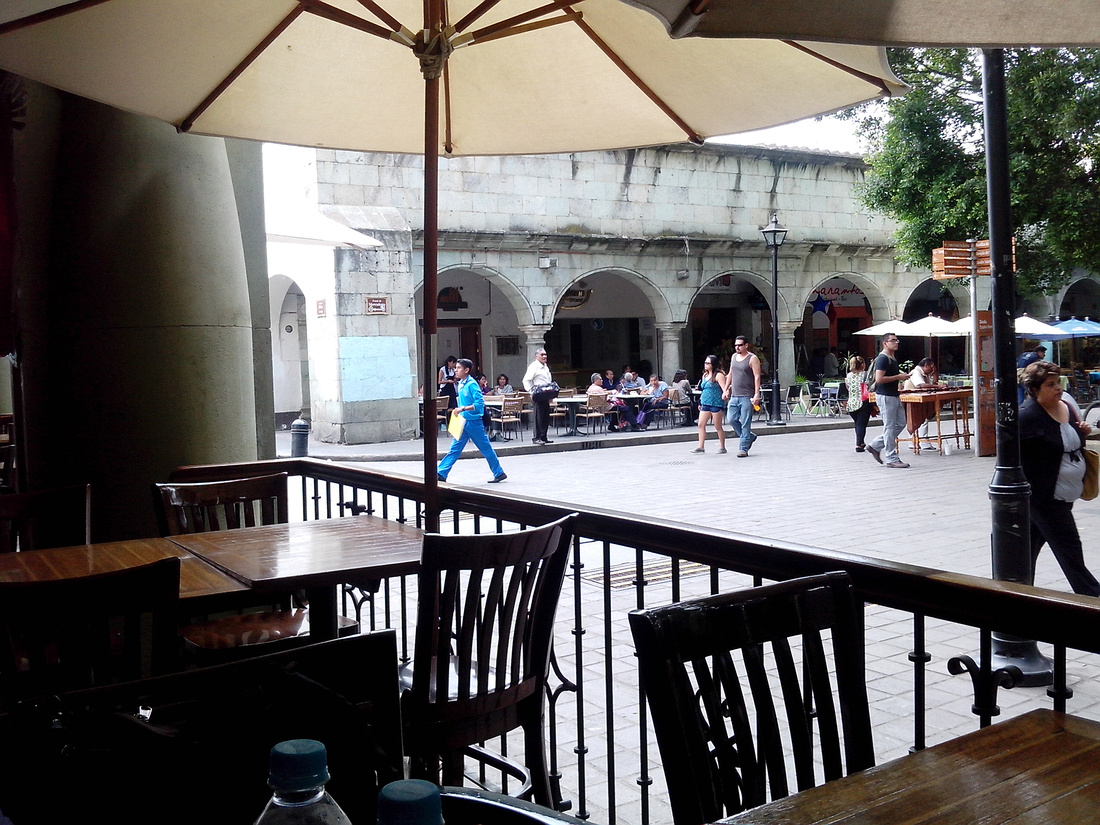

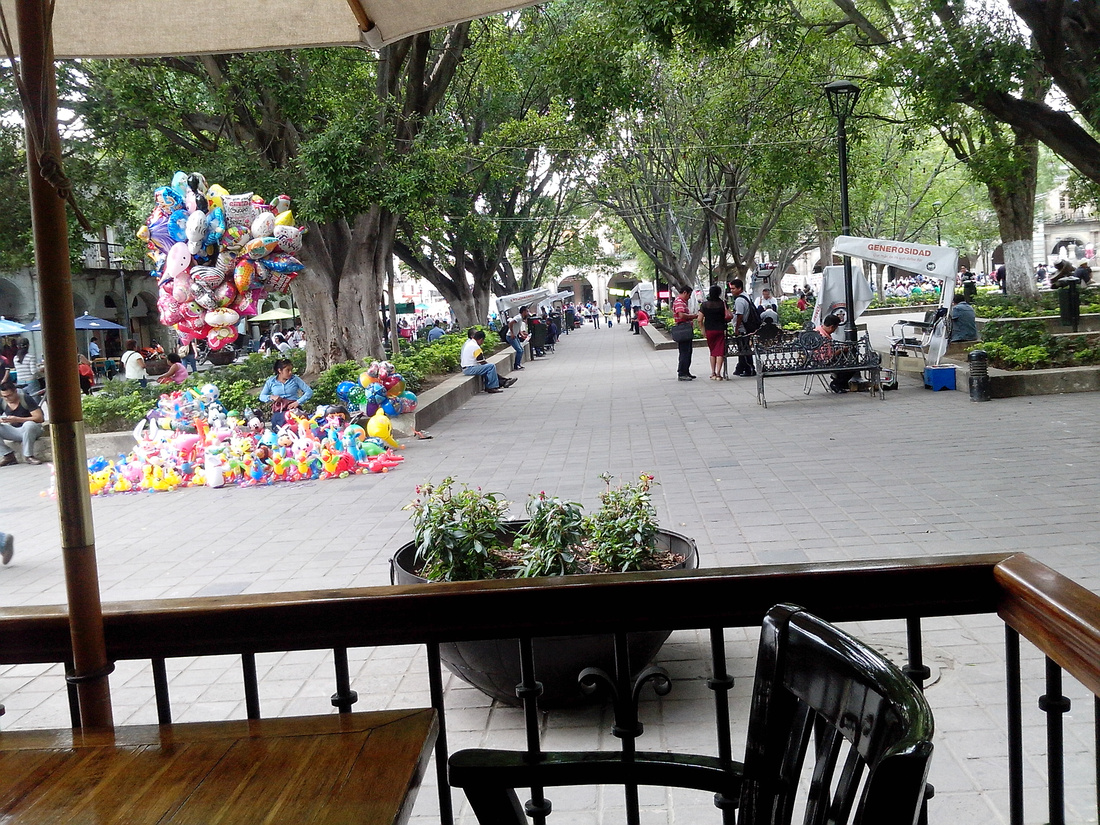

A maguey plant as a Christmas tree?
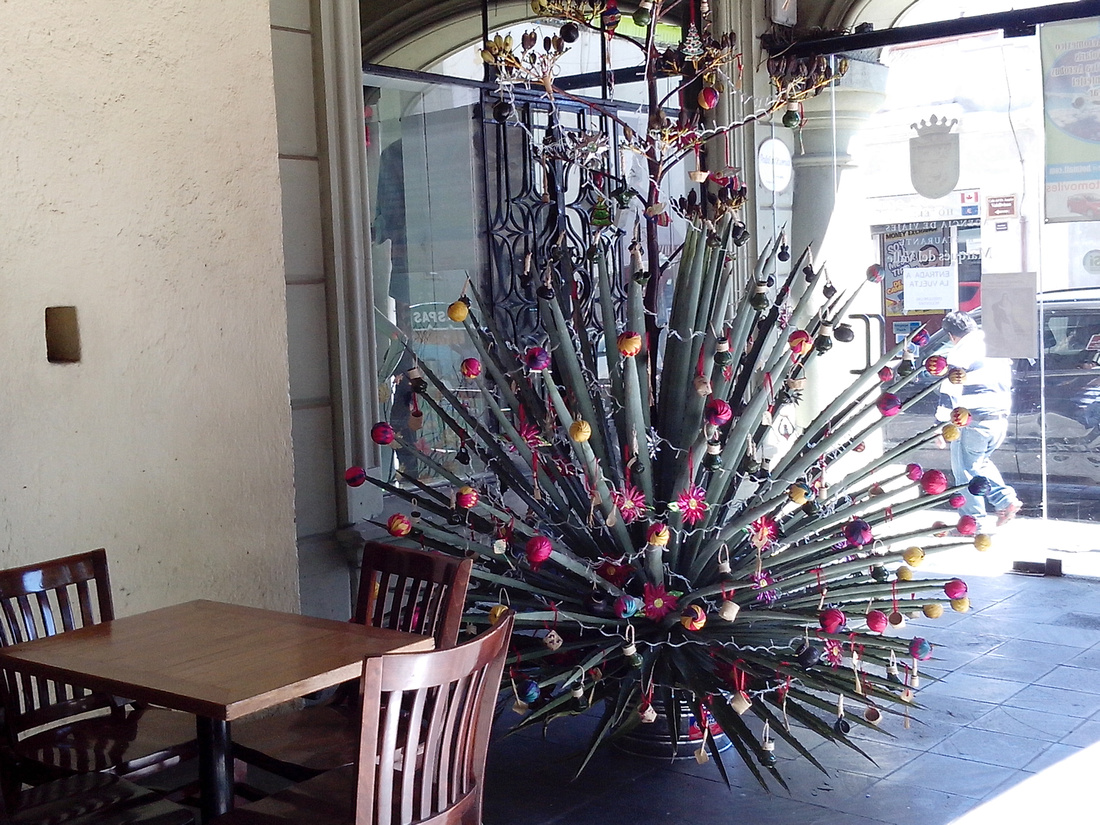

A Little exploration
I think most of the pueblos in the eastern part of the valley where we reside reflect the mainly agrarian lifestyle lived by the majority of the population here. There aren't a whole lot of niceties. As you travel west towards Oaxaca de Juarez that changes. Beth and I visited a few areas towards Oaxaca this month and were surprised at the difference a few miles can make.
Teotitlan is a pueblo about fifteen minutes away from our home. Some historians believe it was the first settlement of the Zapotecas. Teotitlan is famous for its wool rugs. Natural dyes made from insects and plants are used to add color. Many of the rugs have Zapotec designs, but I have seen more and more modern designs. I have been told that there are many American expats in Teotitlan. The sign below shows the importance of the tourist trade in this town.
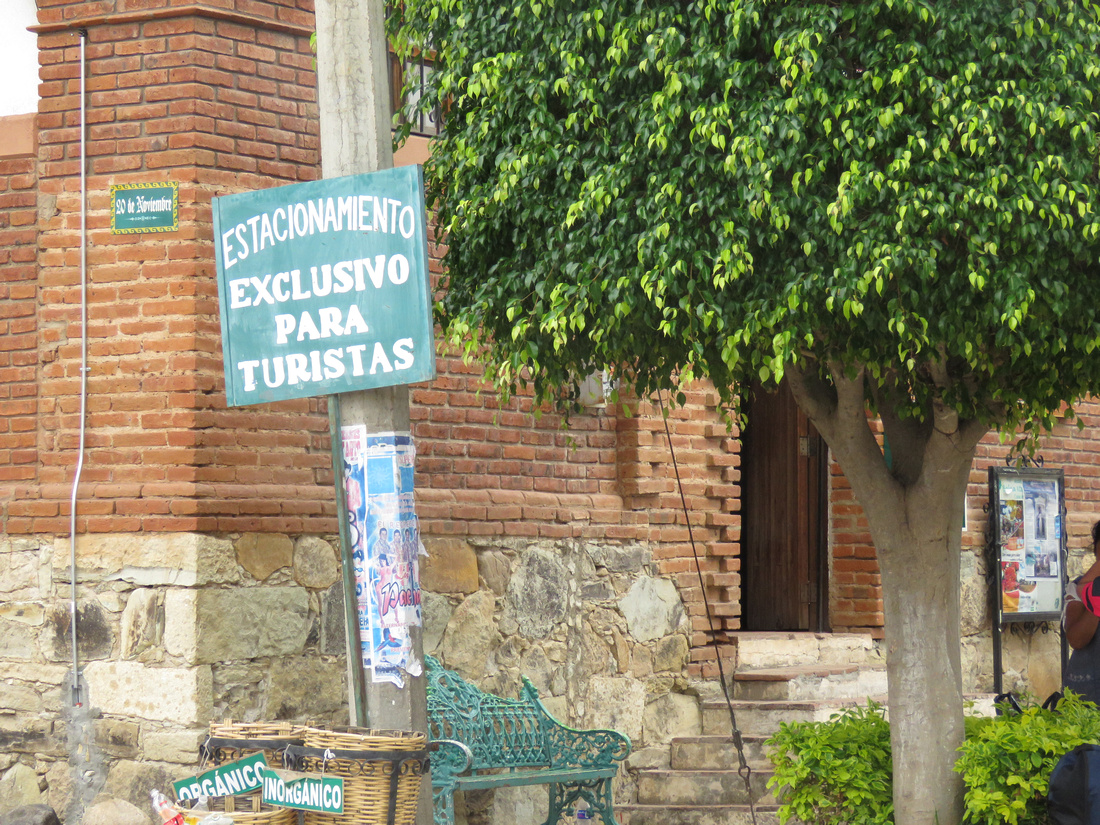

We visited a museum that displayed archeological pieces from the Zapotec era. When the Spanish came to Mexico, they often built their churches on top of Zapotec temples which were therefore destroyed.
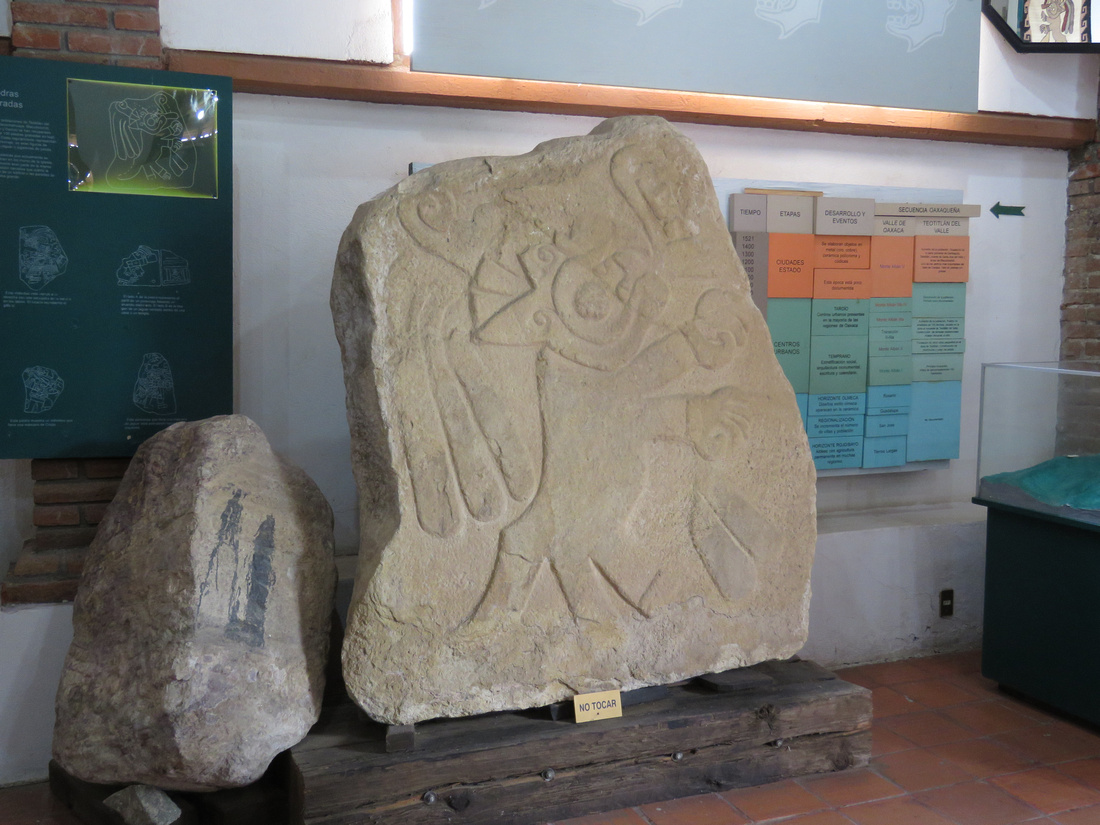

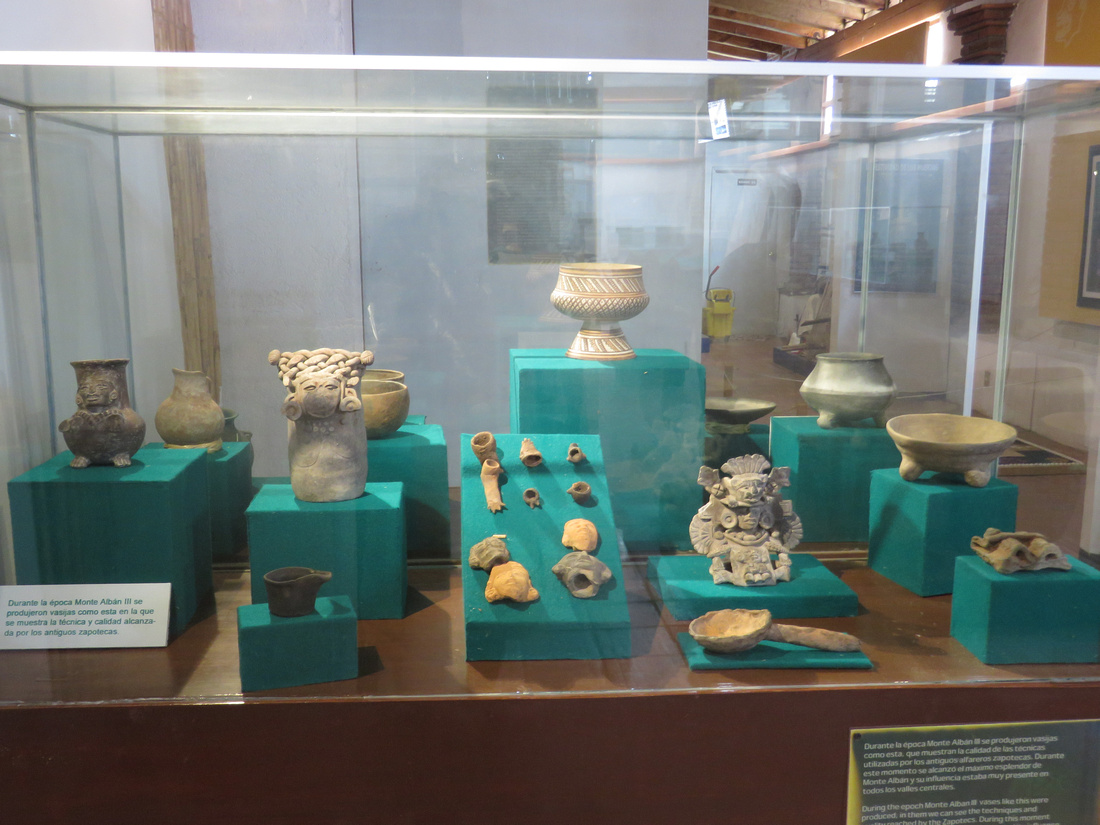

Before the arrival of the Spanish, the Zapotecs wove with cotton. The Spanish brought sheep which provided the wool which now dominates this market.
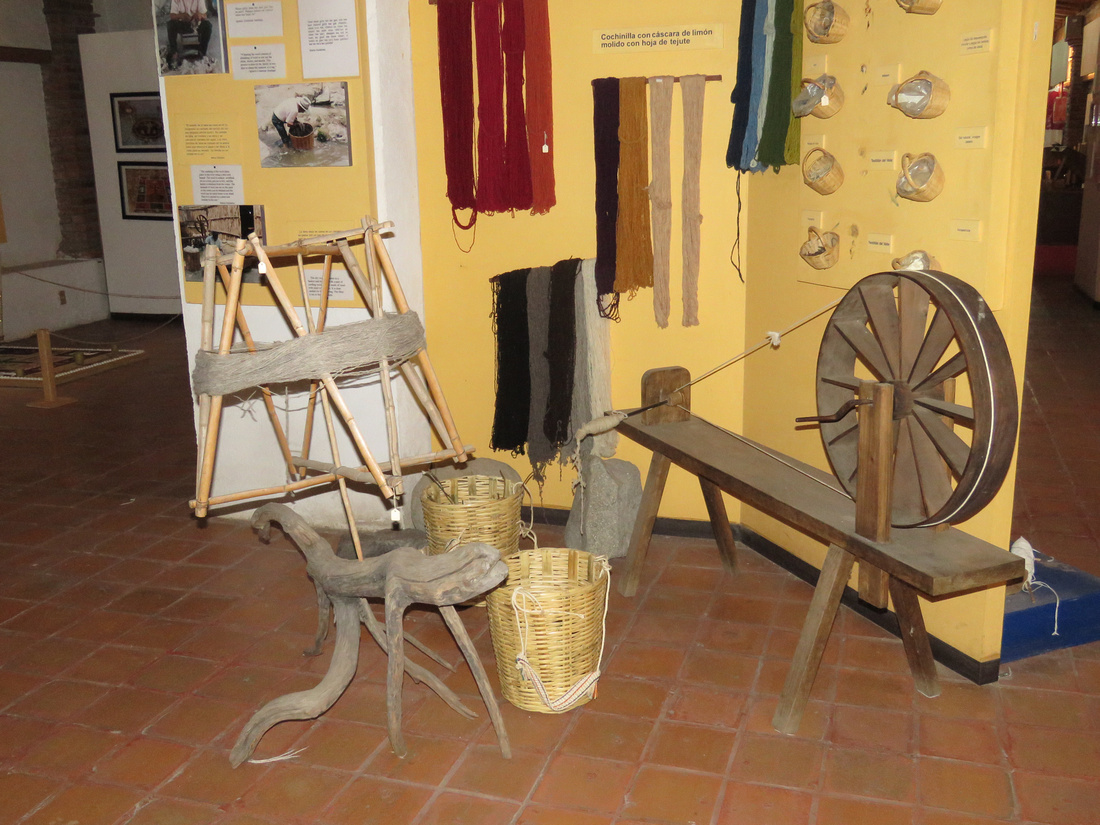



This picture shows some of the ancient designs of the Zapotec temple ruins.


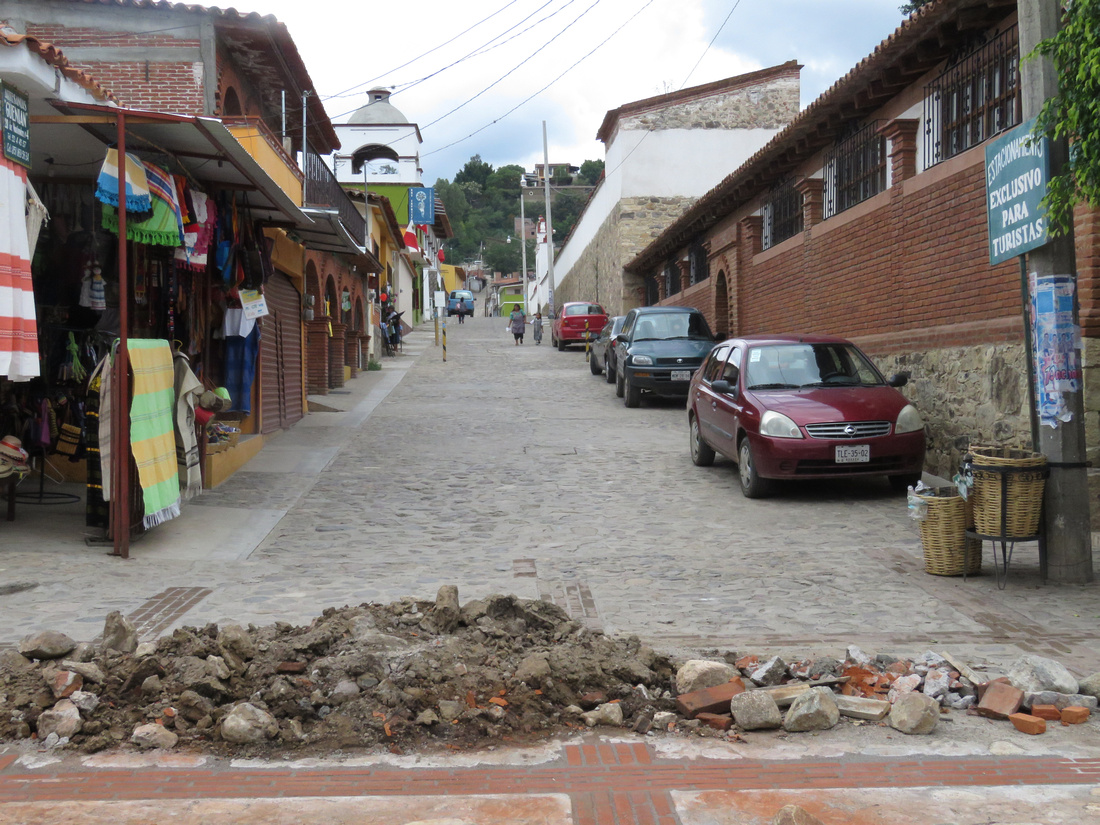

I have included photos of these little motorized taxis before. They are made in India and cost about five thousand dollars. Some towns like Tlacolula are overrun by these vehicles. There are about 500 in Tlacolula alone. Normal fare is ten pesos. Many of the drivers are young adults that have had little or no training of the rules of the road. You definitely have to keep an eye out for them.
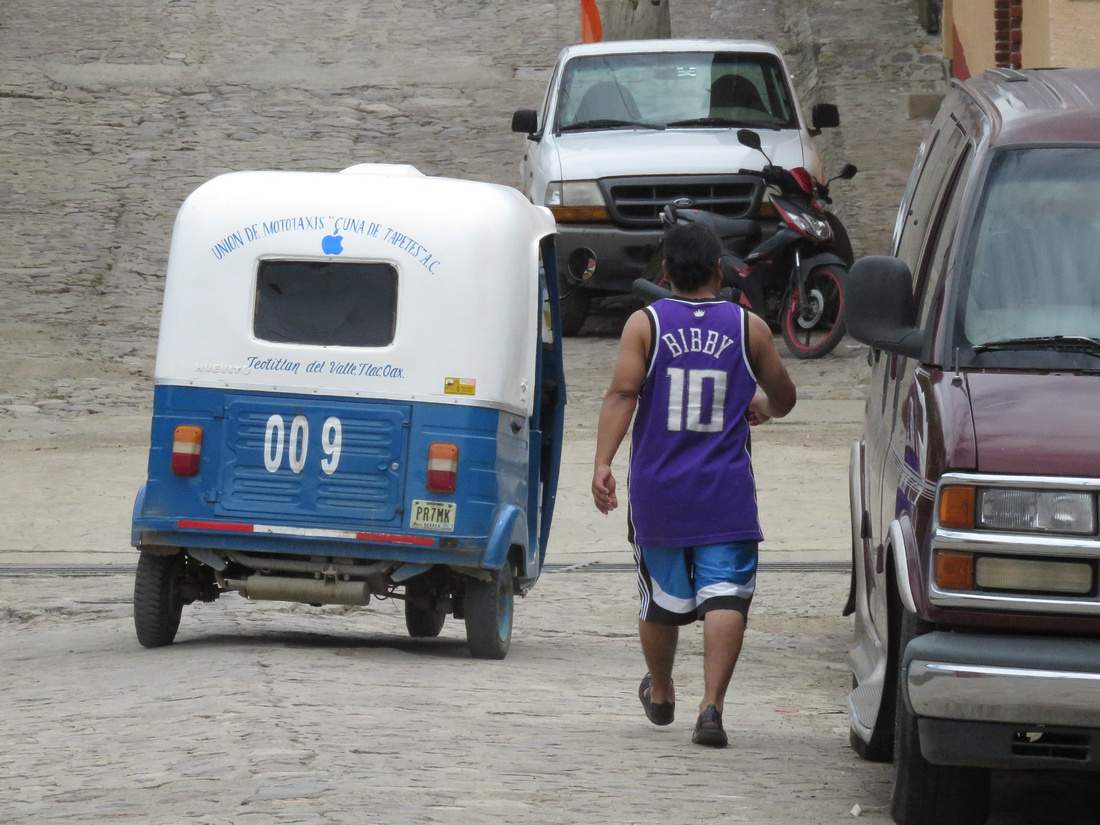

Again, Zapotec ruins at the base of the Catholic church.
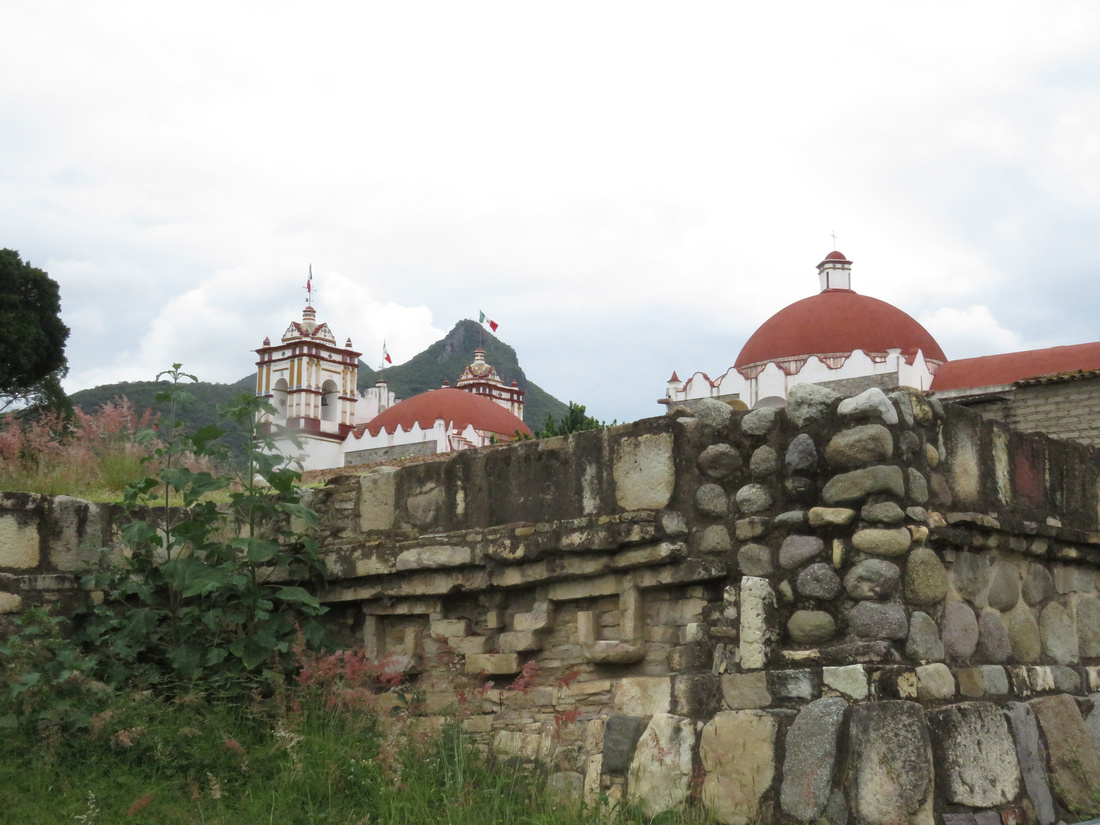

This empty market booms in the mornings and especially on Fridays.


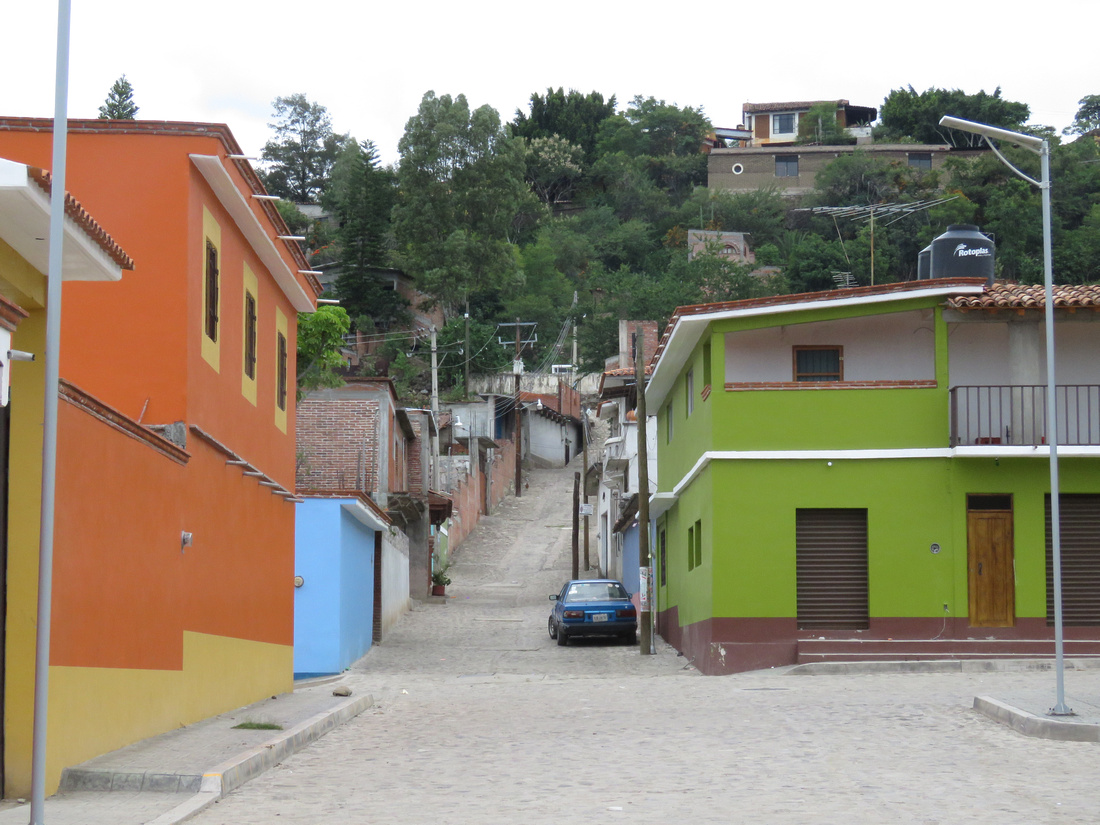

This is a typical small store. They carry a little bit of everything.
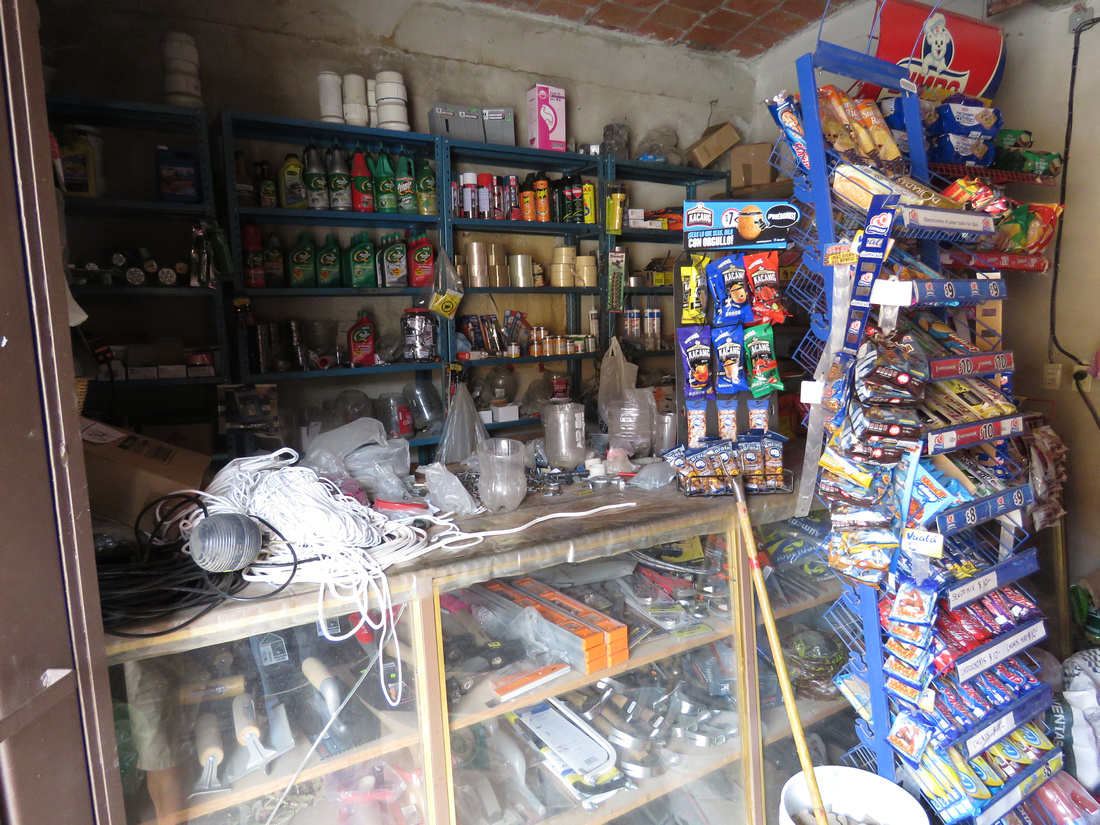

I do not remember every visiting a pueblo that did not have a Catholic church or a capilla. Some pueblos often also have other denominations, but the Catholic church dominates. A friend was over the other day expressing his concern about all the new Christian sects coming to Mexico. They literally tear villages and families apart as Catholicism is their culture, as well as their religion.


I had never seen one of these vehicles before, but it sure looks practical.
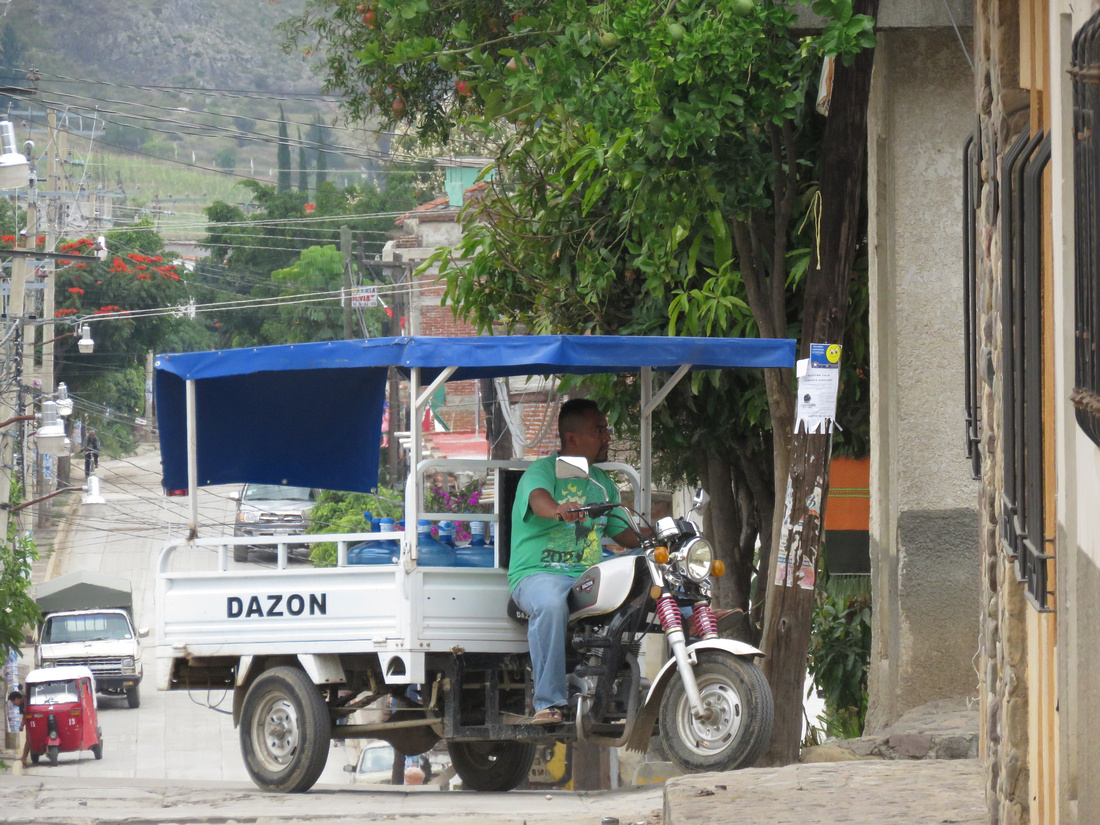

Many women bring their corn to be ground for tortillas every morning . They soak the corn kernels in lime water over night to soften them. If you go to a village early in the morning, there is often a line of women waiting to have their corn ground into masa. like mix to make tortillas. These machines also grind coffee and cocoa beans.


This sign shows how locals cater to Americans.
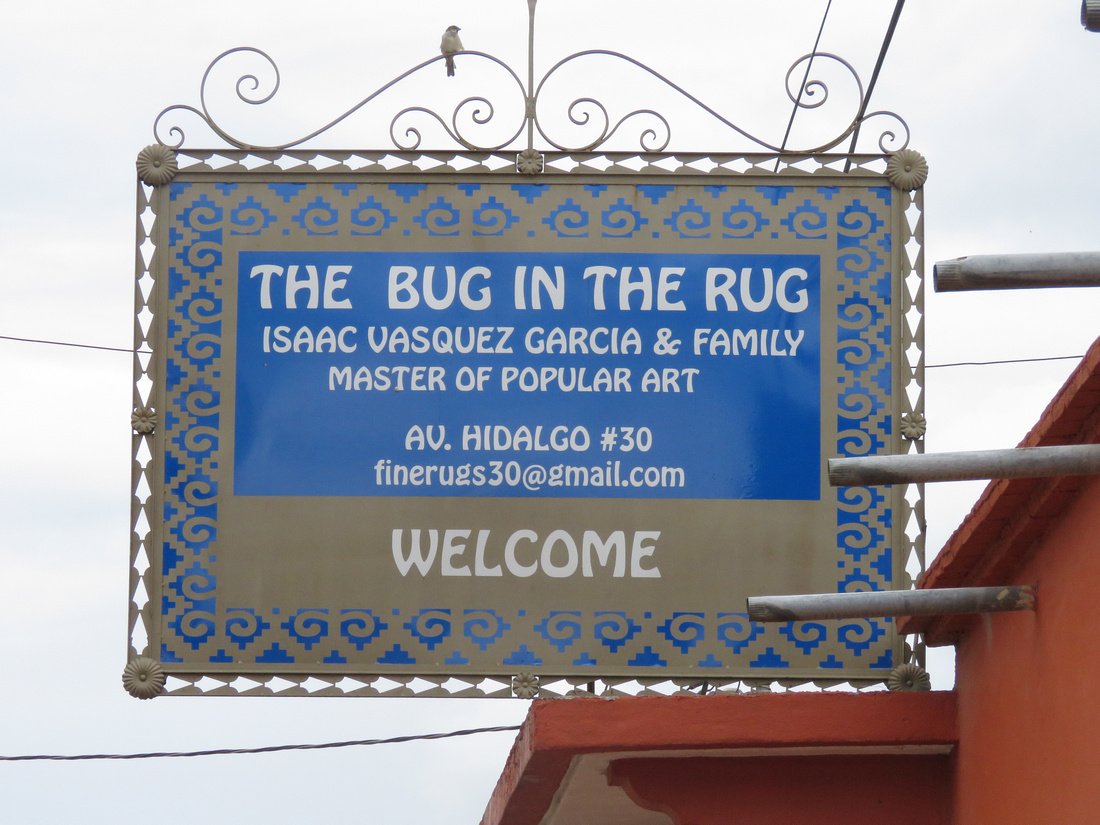

I cannot imagine how this owner has managed to keep an old Colorado plated car without having it confiscated. He probably does not drive it outside the pueblo.


By Teotitlan standards, this store is pretty basic. Many store owners have large, extravagant stores.
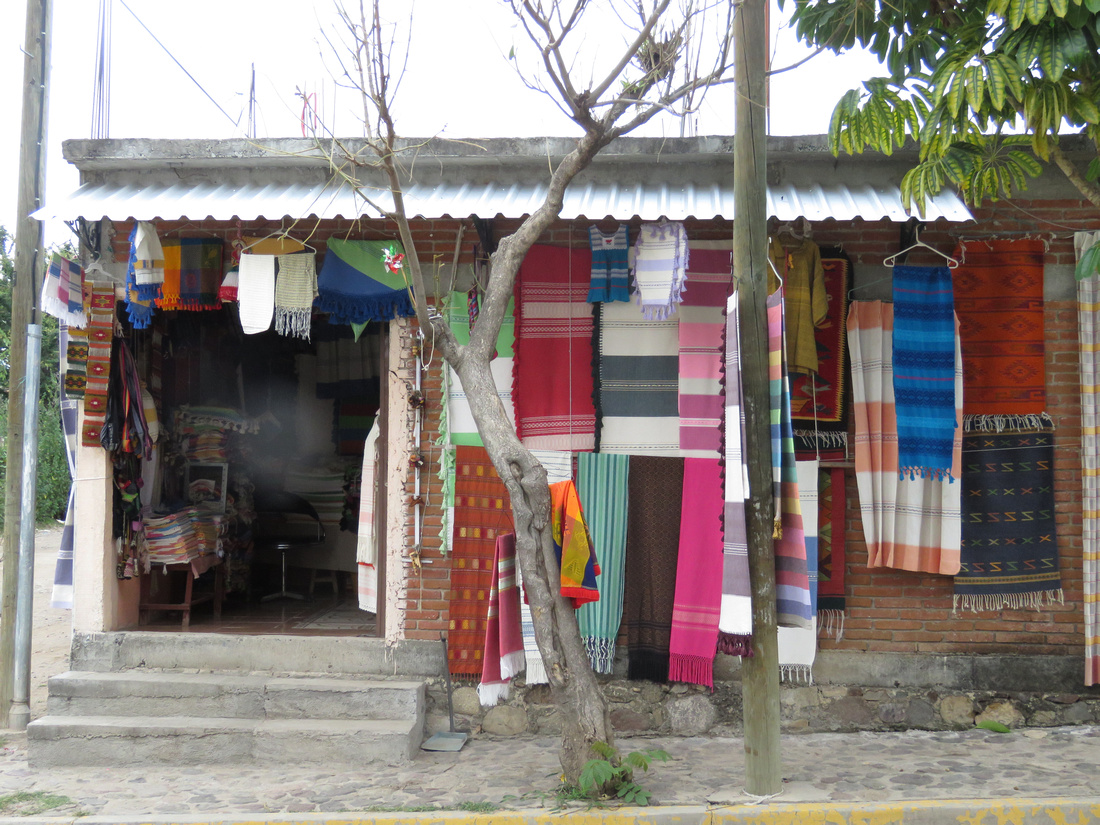

Leaving Teotitlan and heading towards Oaxaca, there is a restaurant/swimming pool/park. We have passed it many times on our way into Oaxaca de Juarez but its walls prevented our view. Looking for a new place to eat, we decided to give it a try. We were immediately amazed. We were later told by workers that the owner took fourteen years to create this park-like setting. This must certainly have been a labor of love for him.
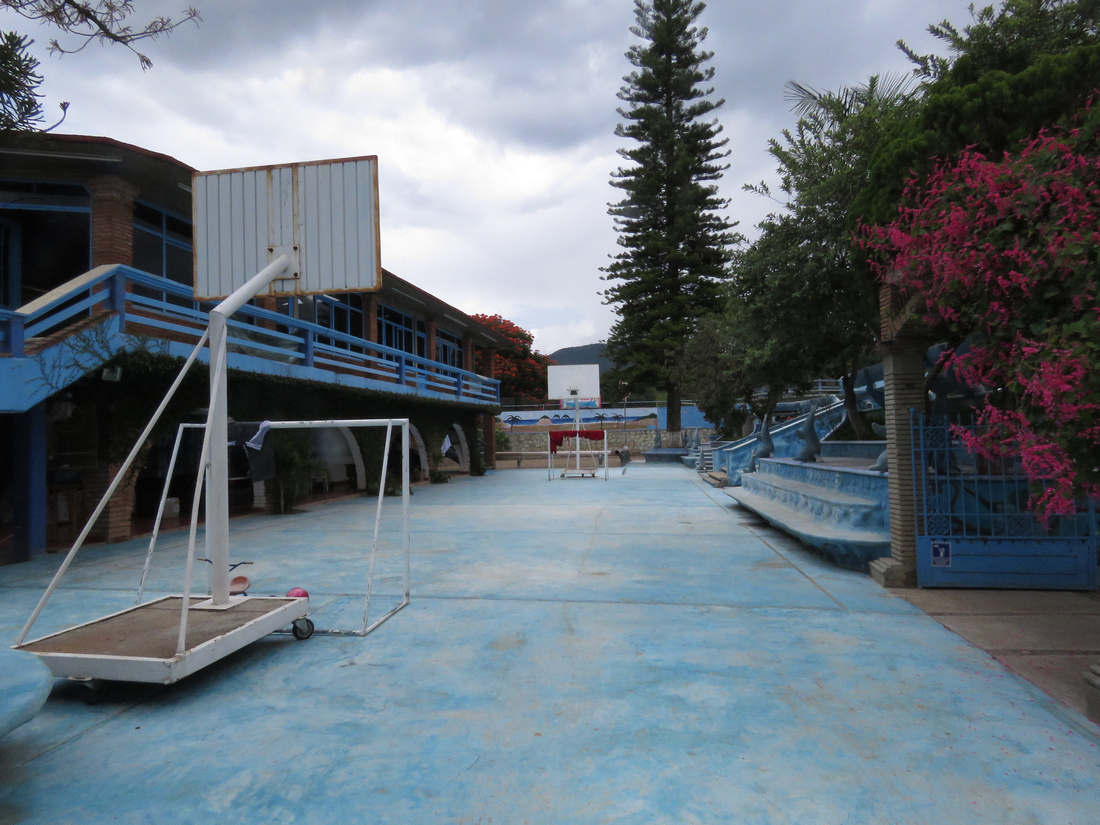



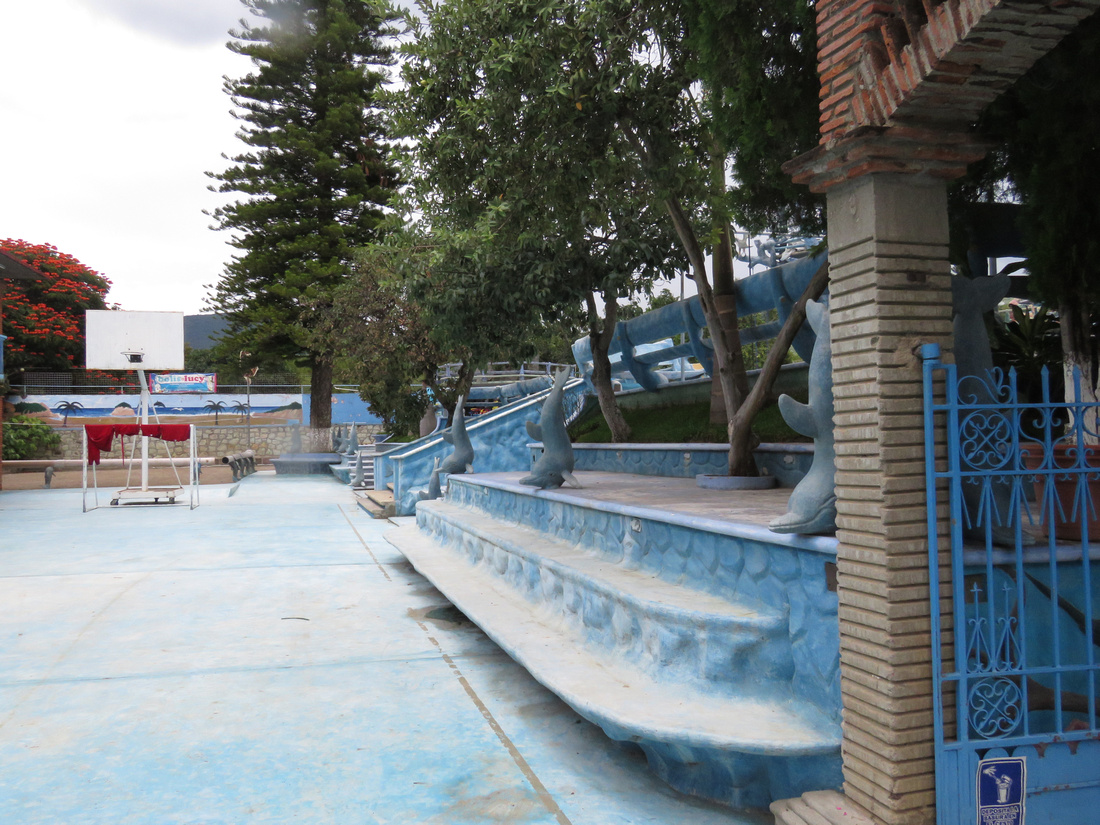



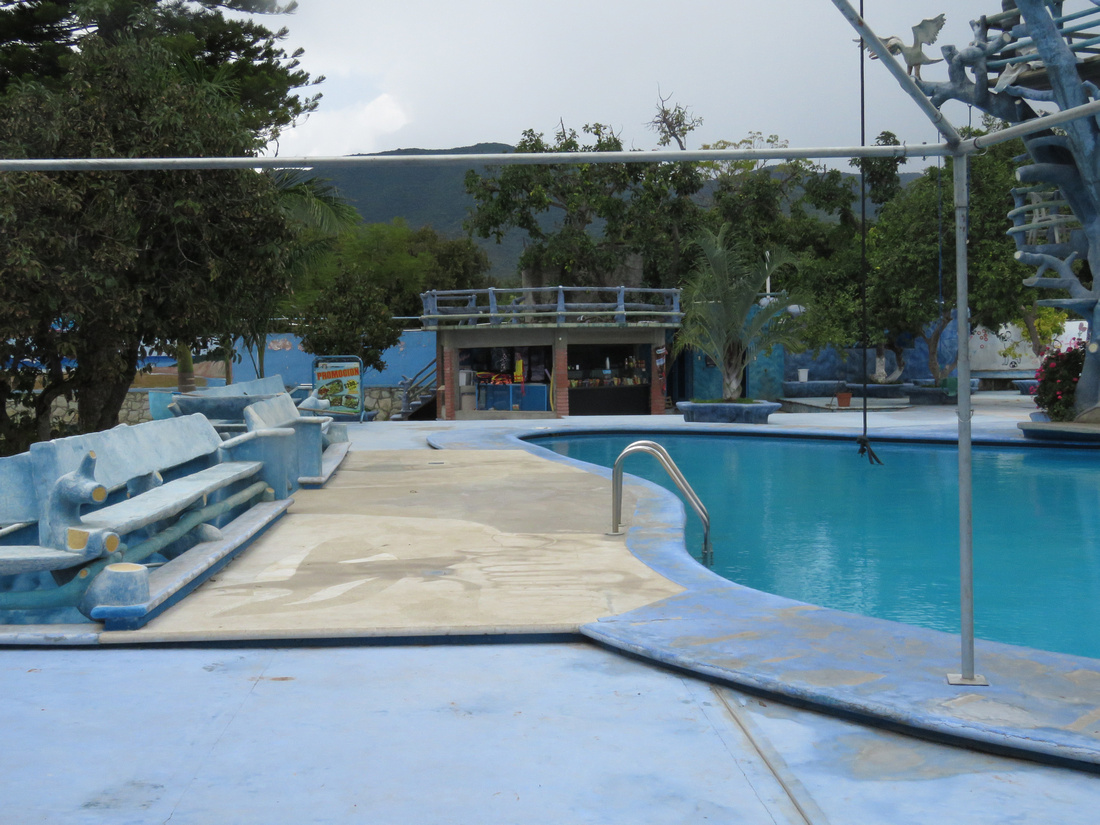

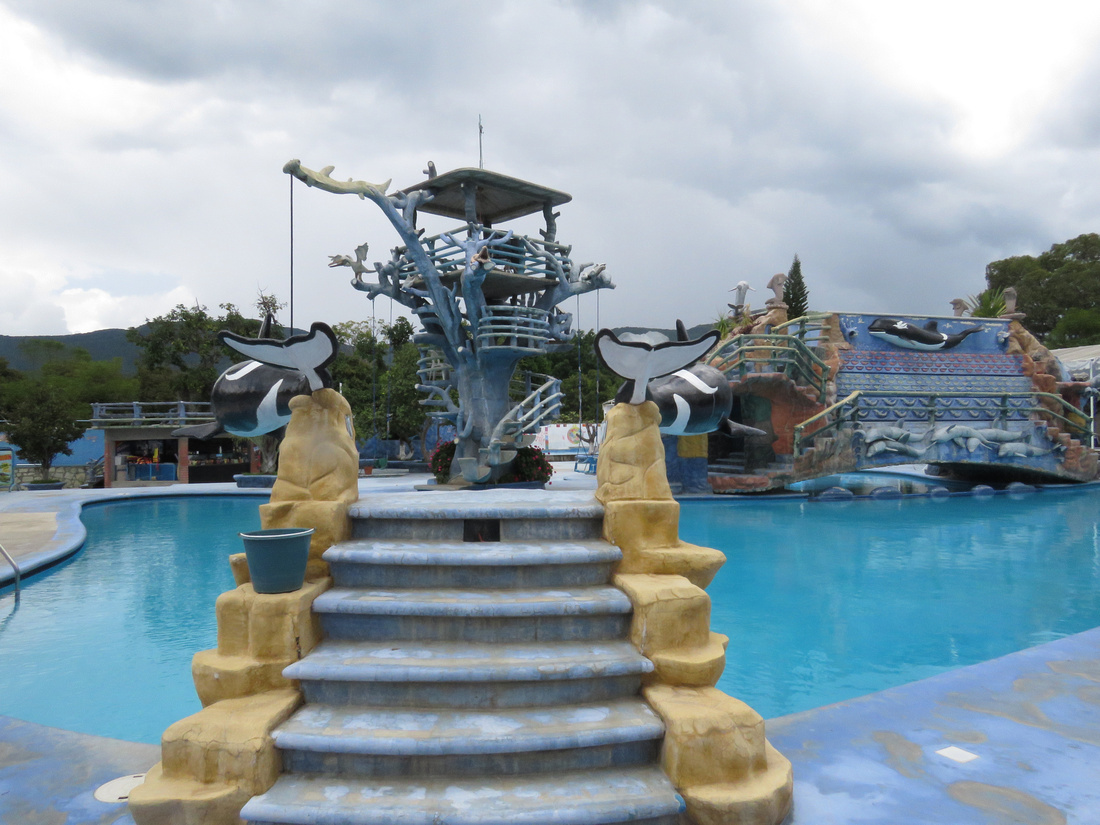







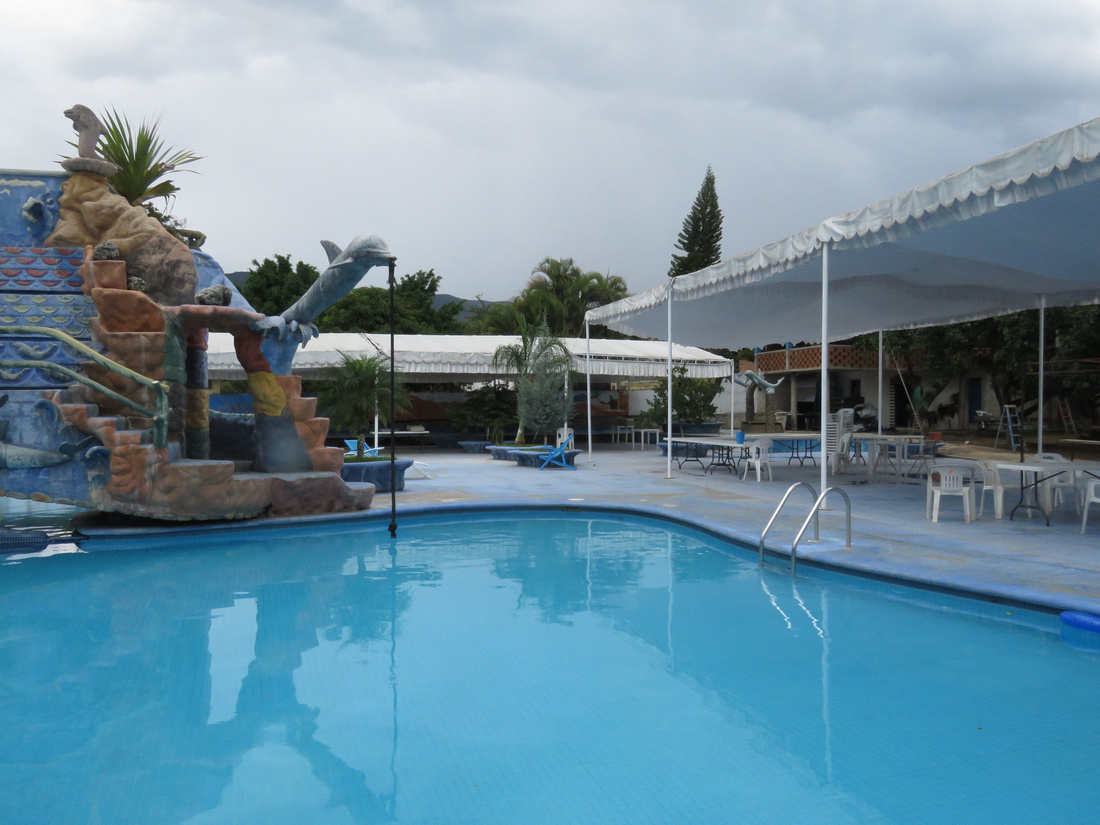

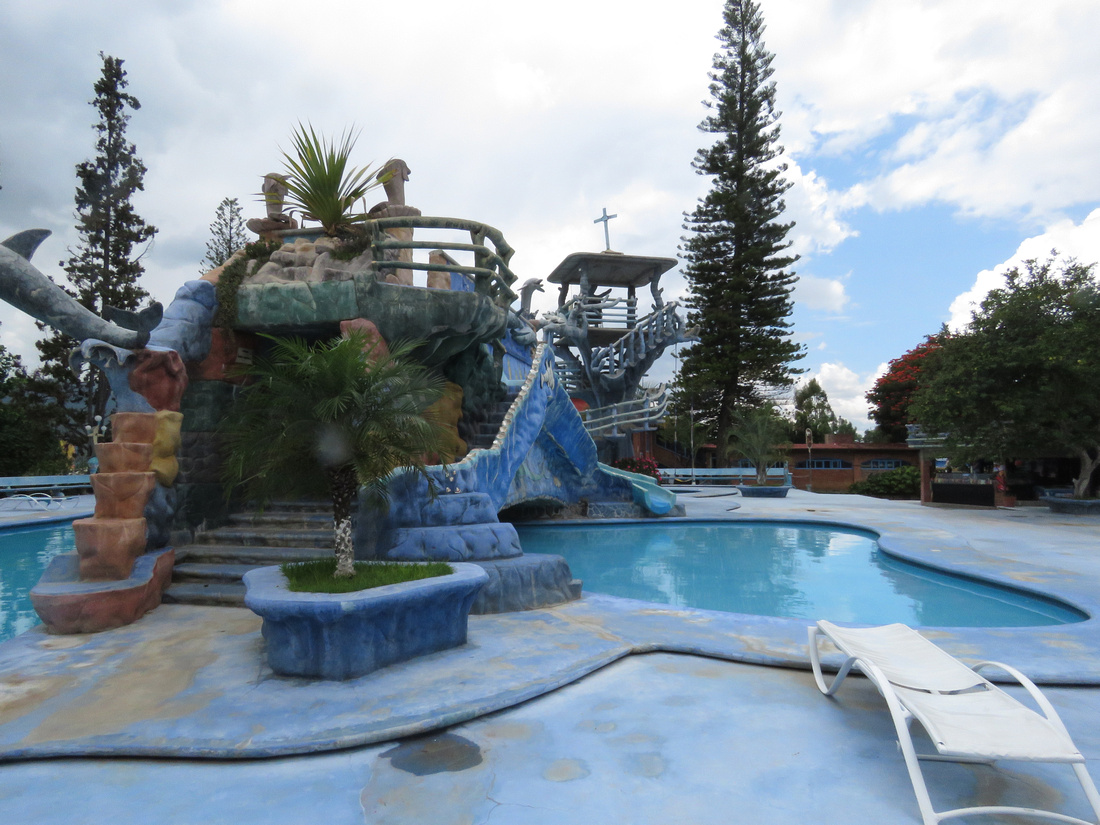

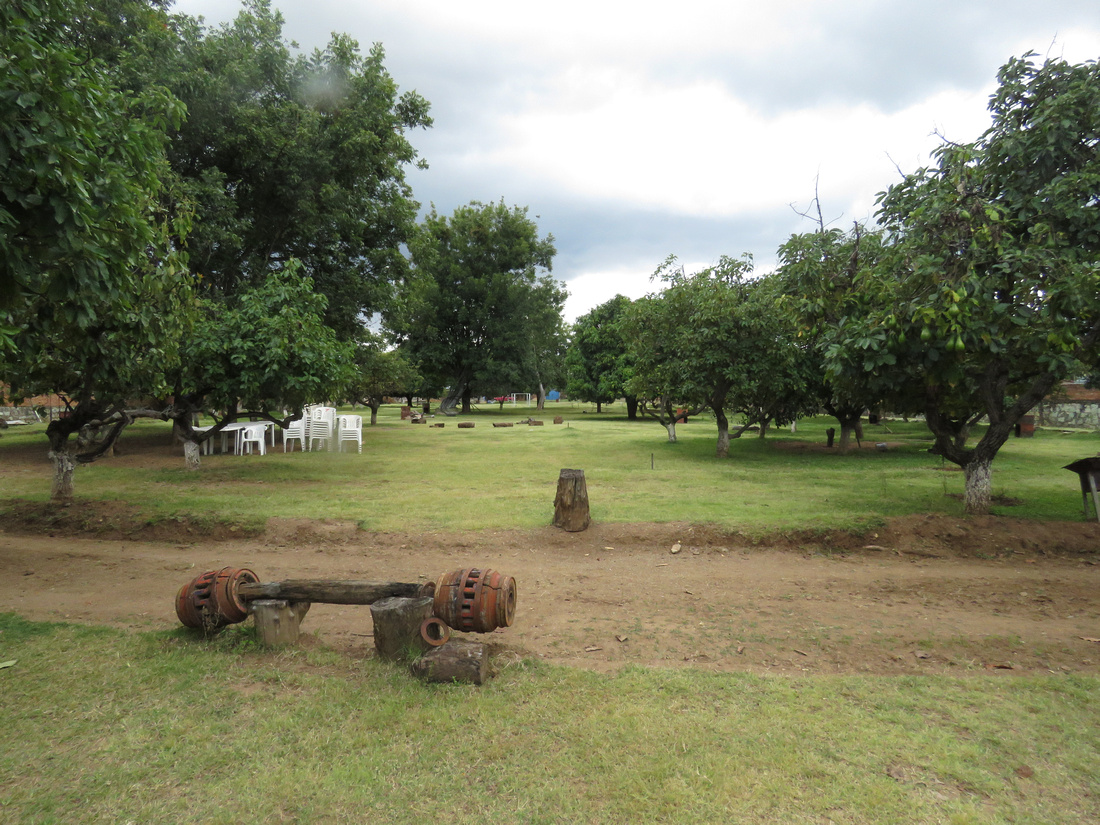

These avocados were larger than softball size and some weighed about 1 kilo.
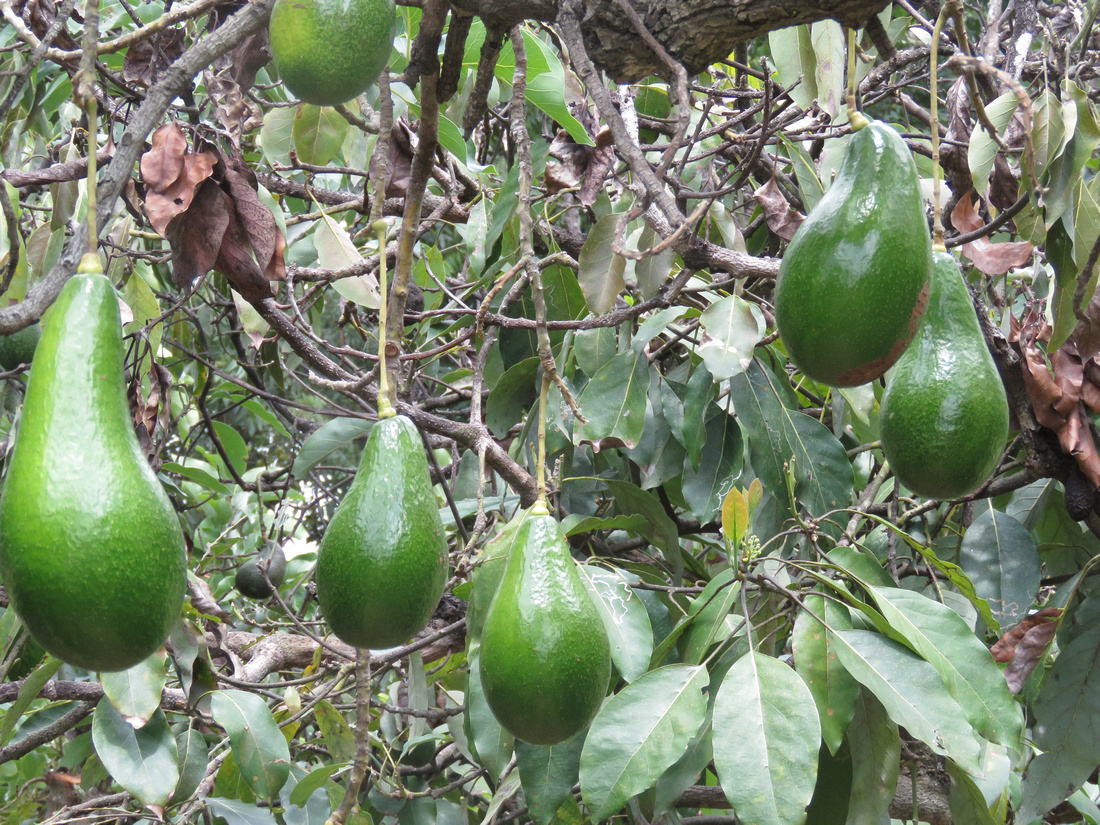

This emu was very curious. He examined me for at least five minutes and often bumped into me.
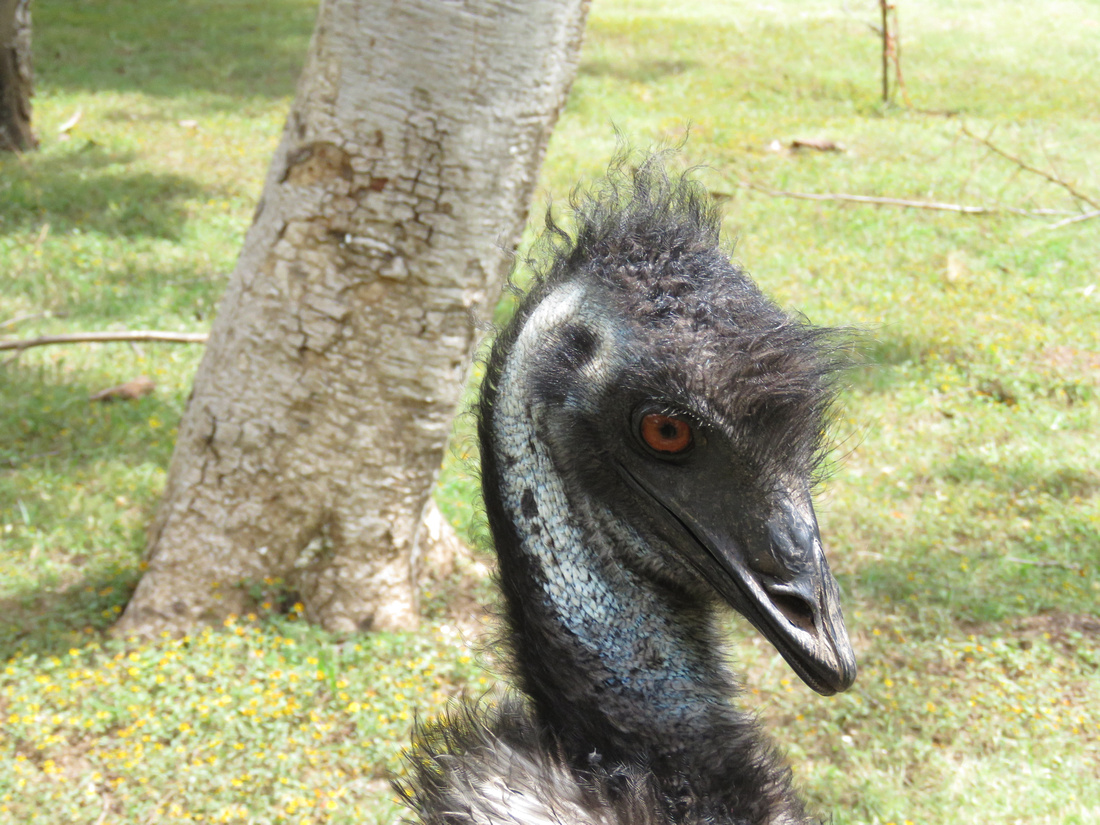

Luckily we ate under a tarp since it began to rain before we were finished.
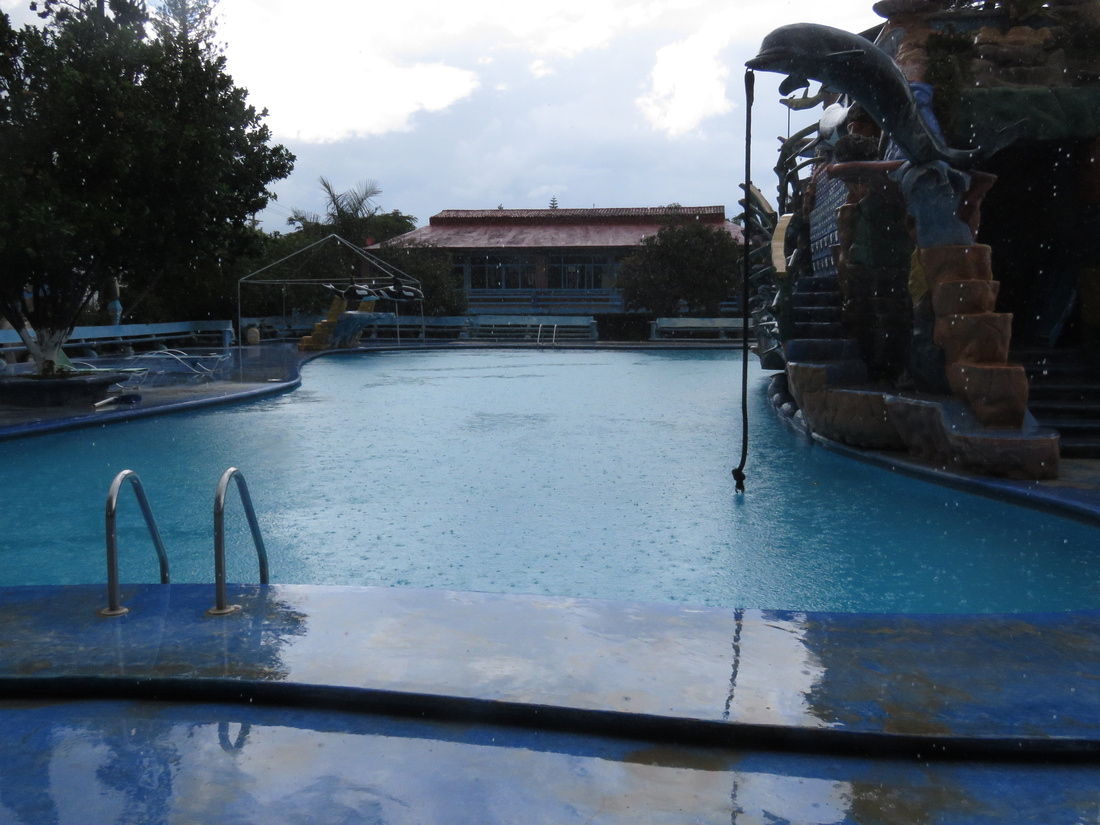

This is the entrance to Rancho Alegre.


A little further up the road is Tlacochahuaya (Tlah-co-cha-why-a). It's about half way from our home to Oaxaca.

 We sure have not seen many parks like this on our end of the valley.
We sure have not seen many parks like this on our end of the valley.
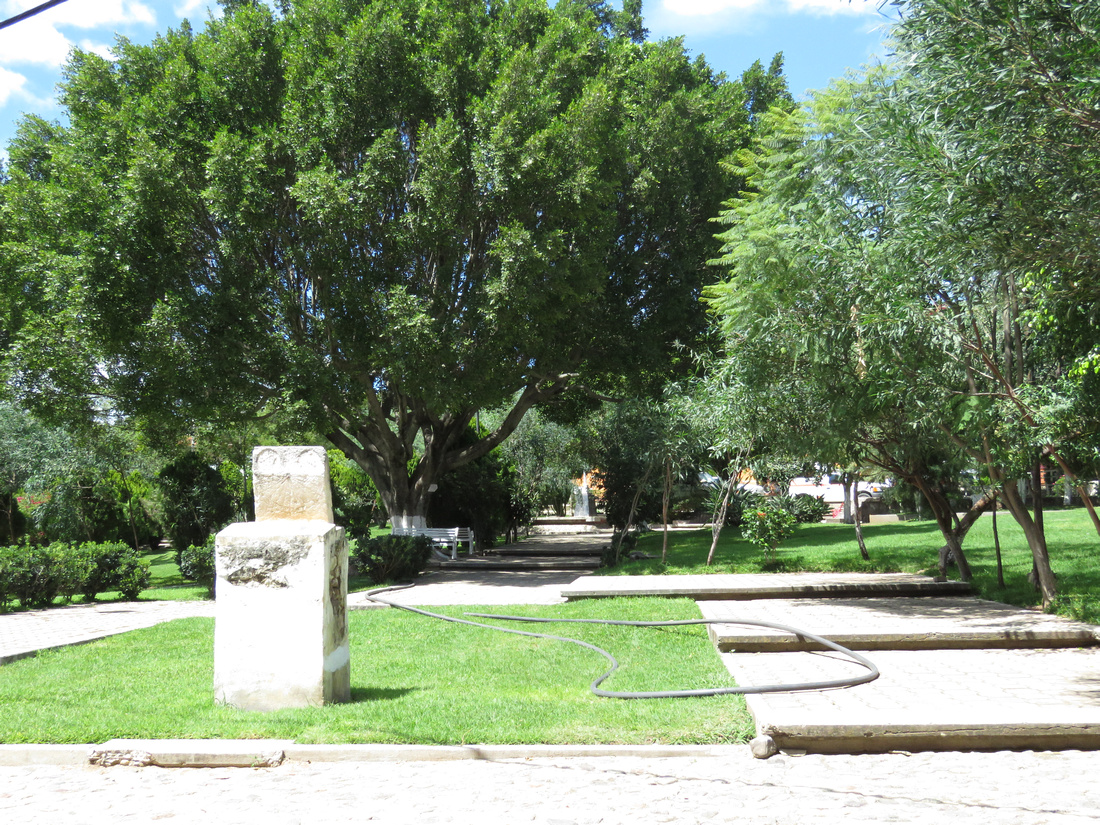



This uncompleted market is the nicest we have seen here in the valley of Oaxaca.
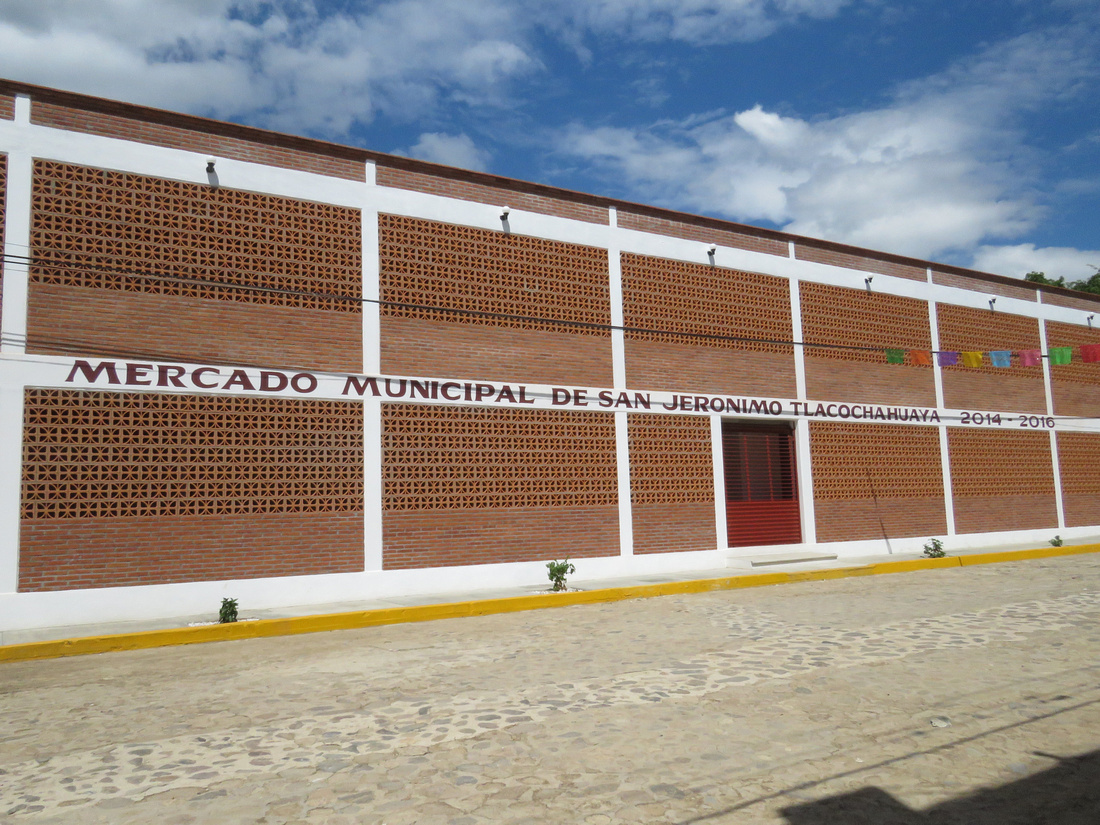

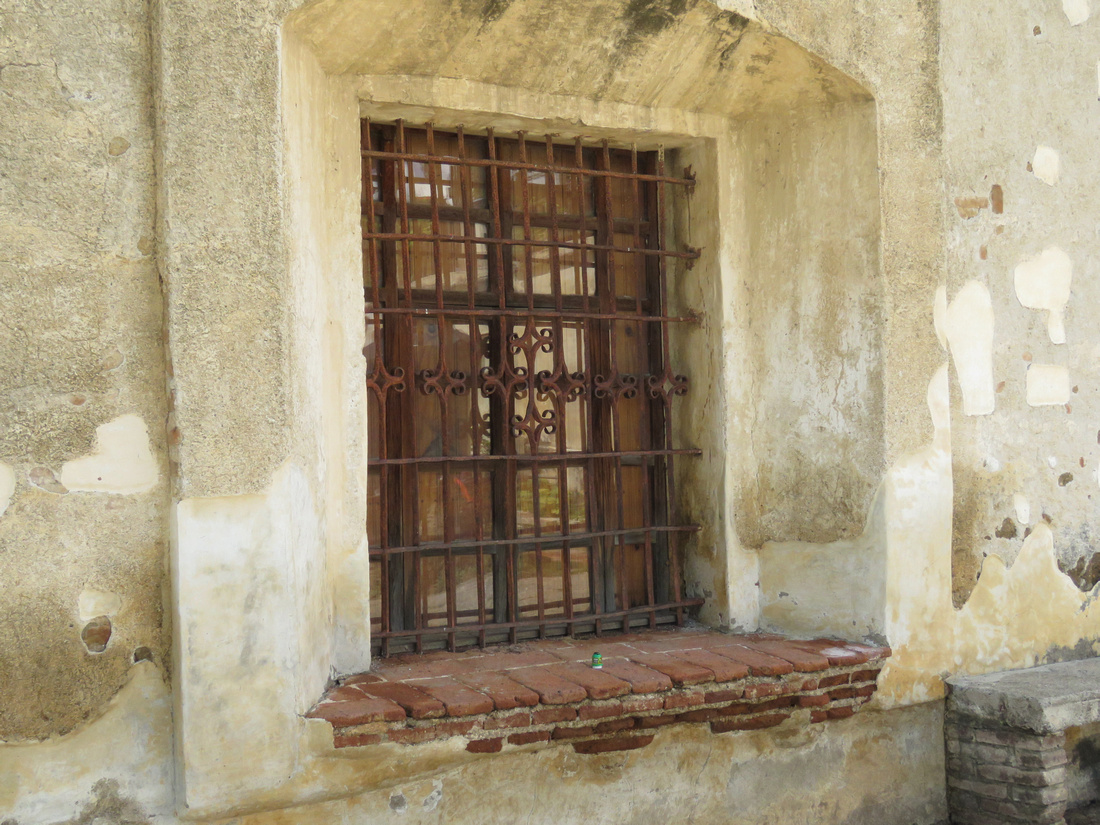



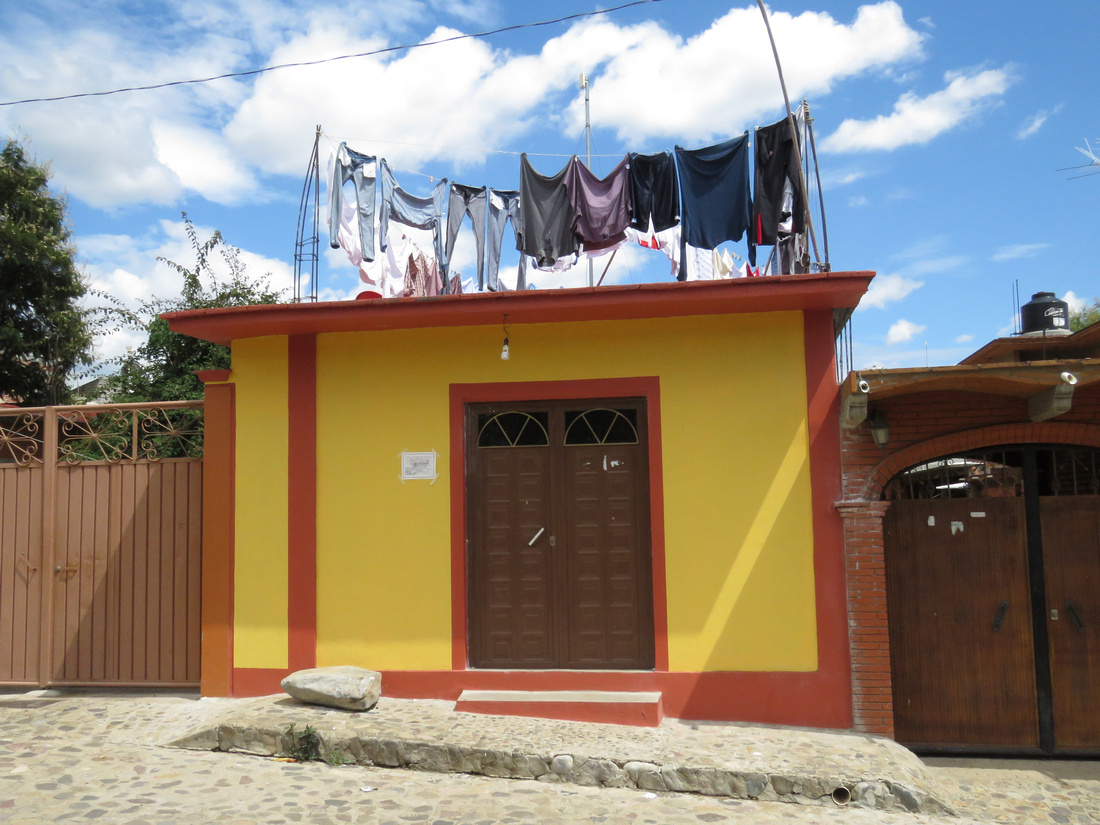

Something we have noticed here in the valley is that many people live behind walls. We are not sure if this is a security or privacy issue, but we found it odd coming from a country where homes are open to view.
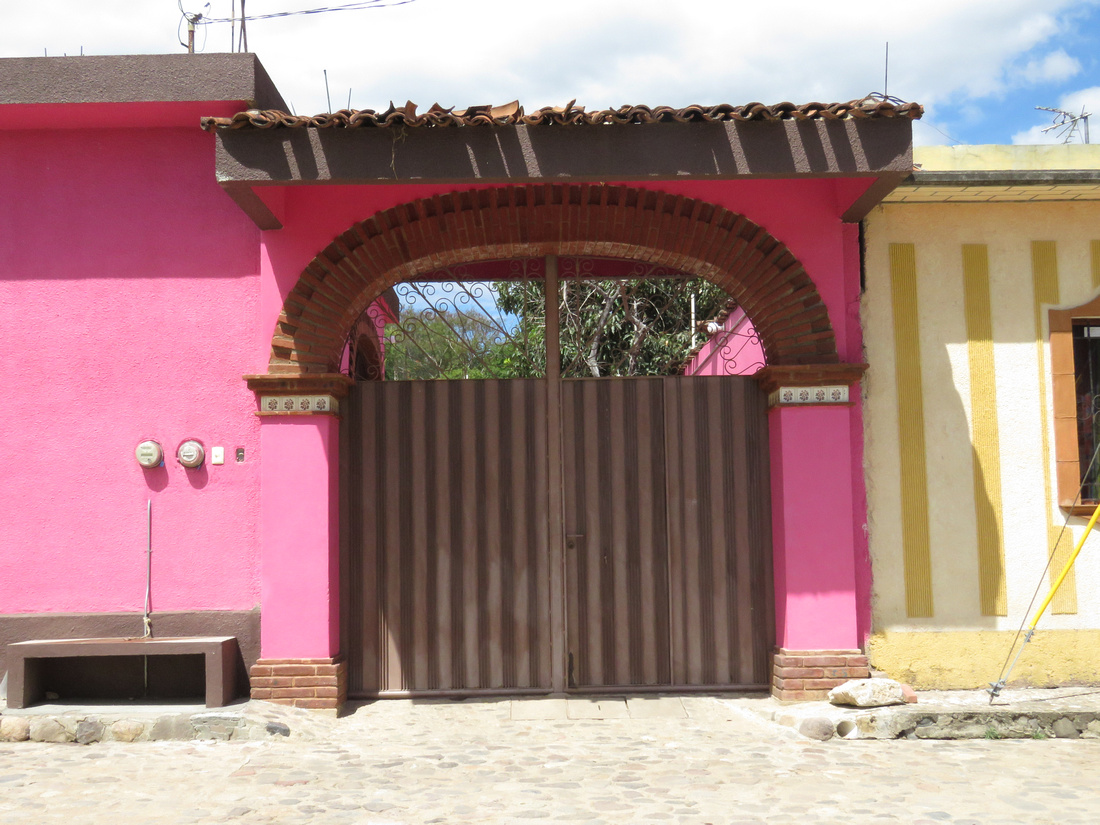

I would suppose this wooden support is hundreds of years old.
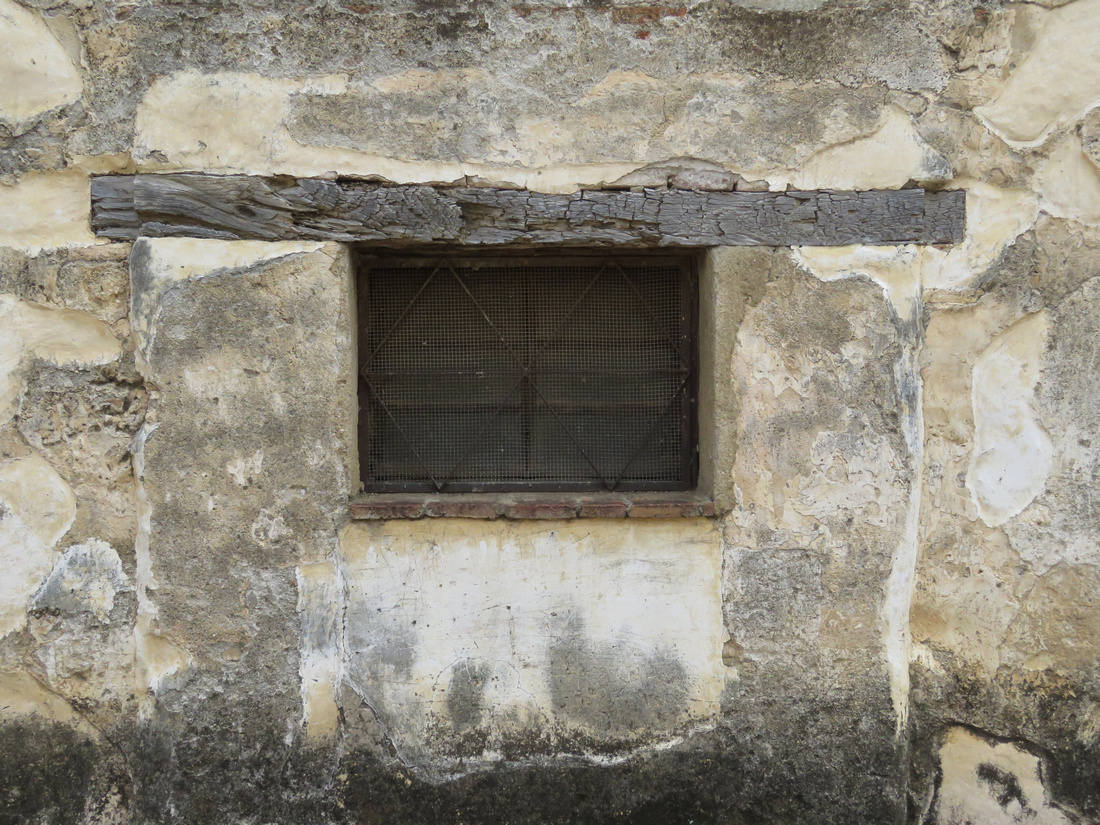

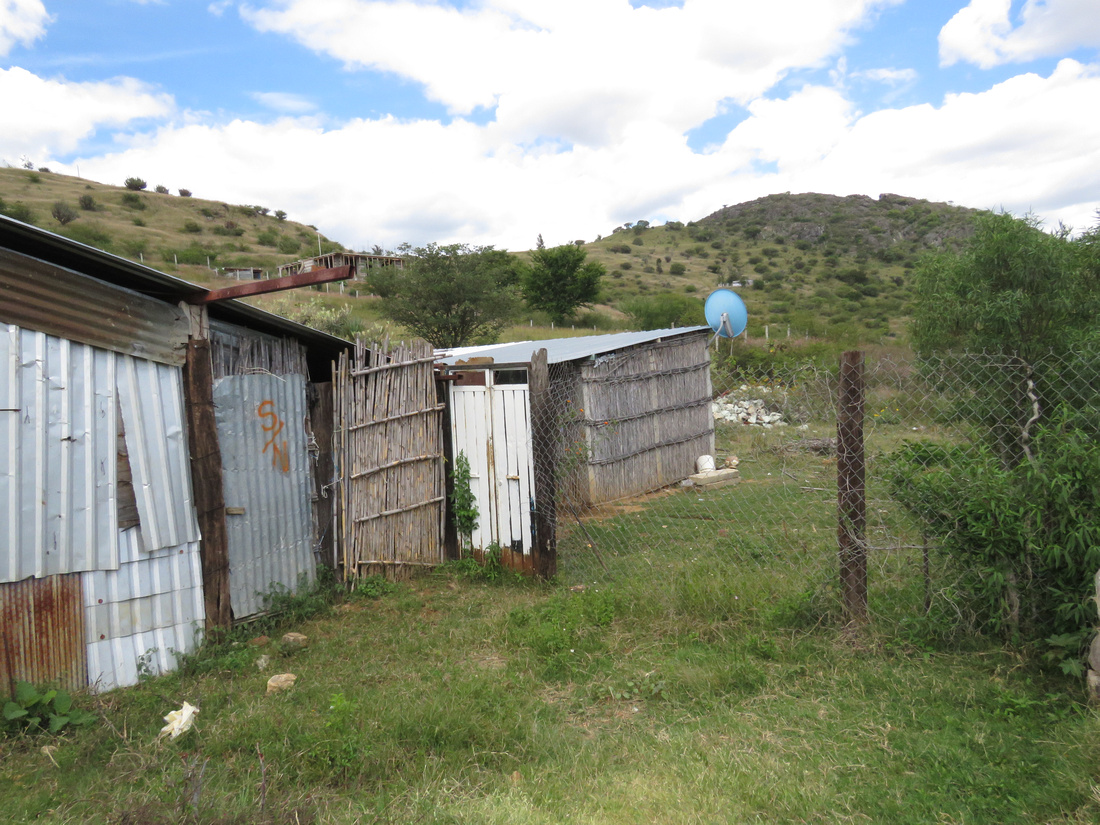



For several years we have driven by a sign along the highway advertising La Quinta. We were a little surprised that a small town like Tlacochahuaya would have an international chain hotel. Well, we were wrong. This Quinta is a salon for events. The manager informed us that rent for the building for one day was $2,000 US. That is just to rent the building and grounds. Everything else is extra. We sure do not know any people who could afford this, so we assume clients must come from the city of Oaxaca. Tlacochahuaya is the most progressive village we have visited. We could immediately sense the difference. Of course, we had to know why. After asking several people, the consensus was that Tlacochahuaya has a long history of its residents working in the US so money has been sent back for years. There is also a river that flows year round. That means crops can be planted without fear of the lack of rainfall. The consistent ability to successfully raise crops makes Tlacochahuaya unique.


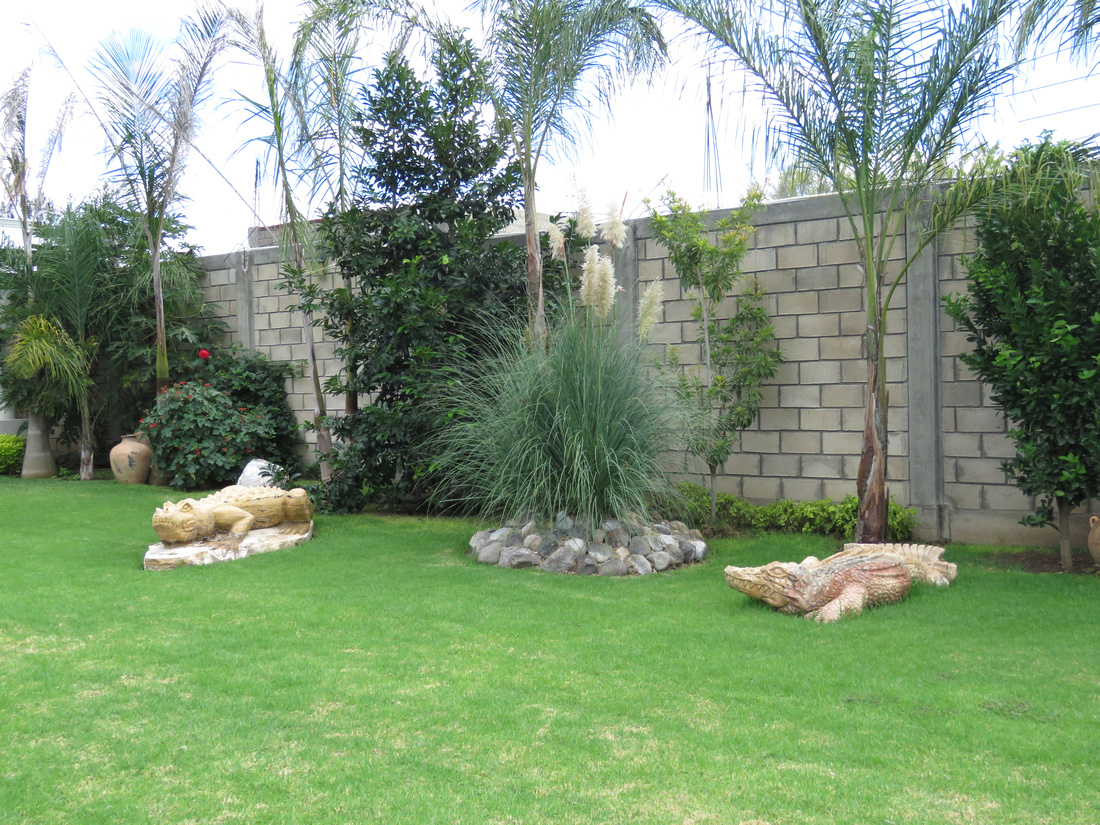
 These stone carvings were incredible. This bear shows an incredible amount of detail.
These stone carvings were incredible. This bear shows an incredible amount of detail.
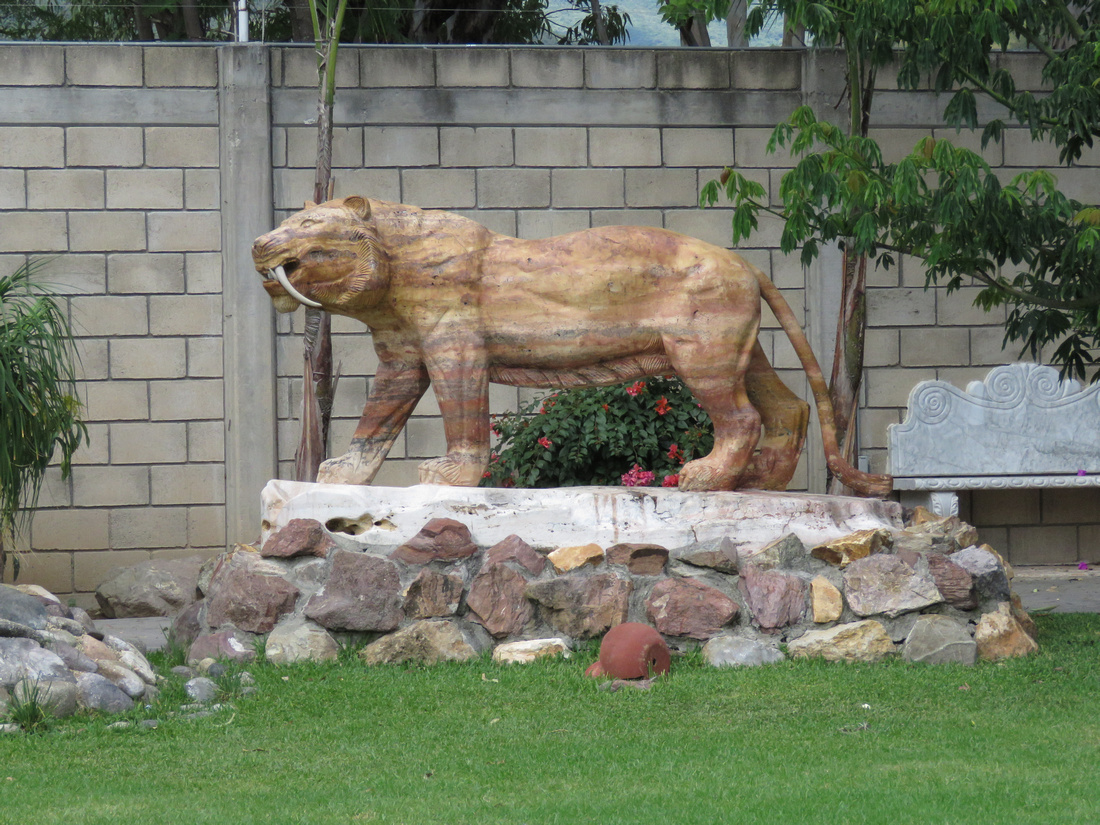

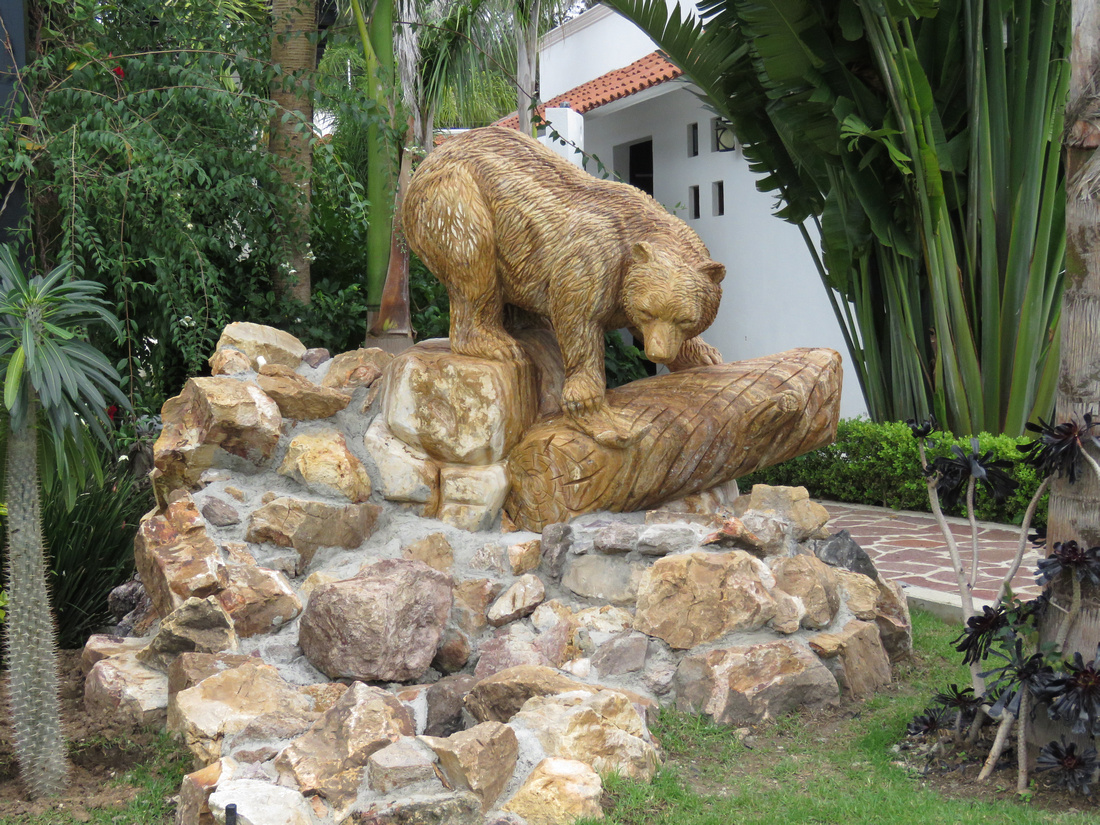

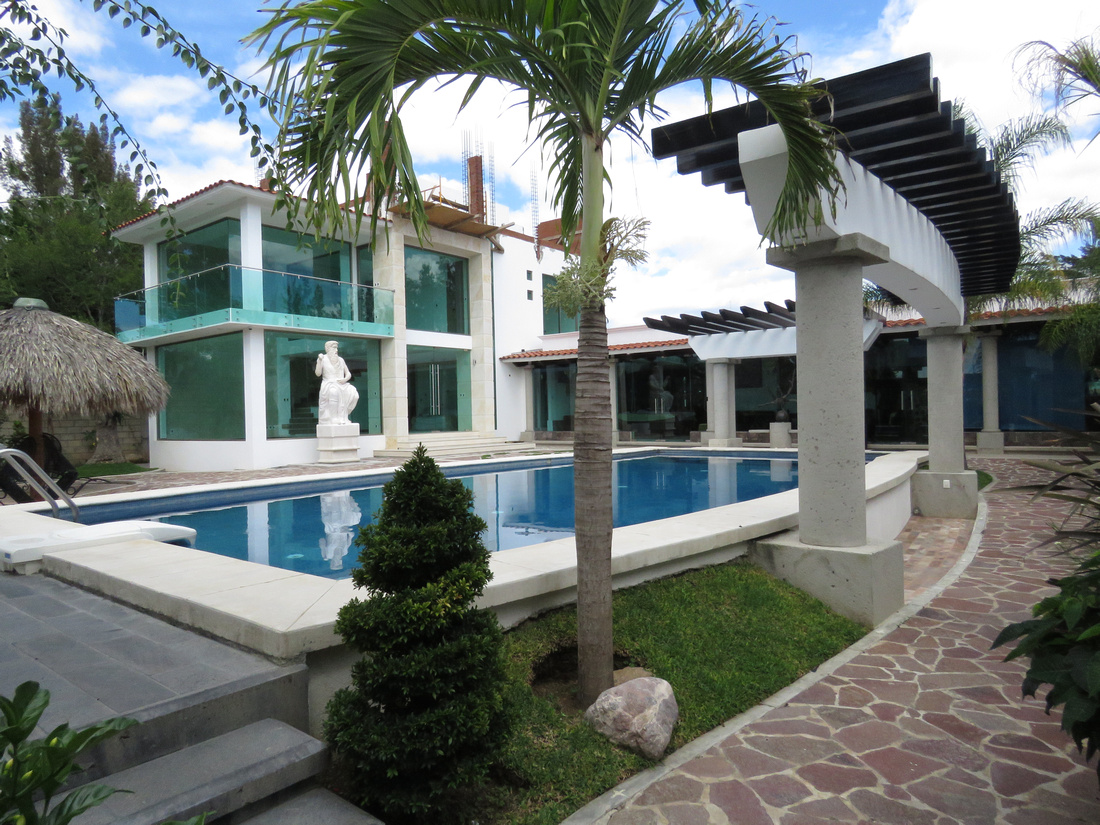

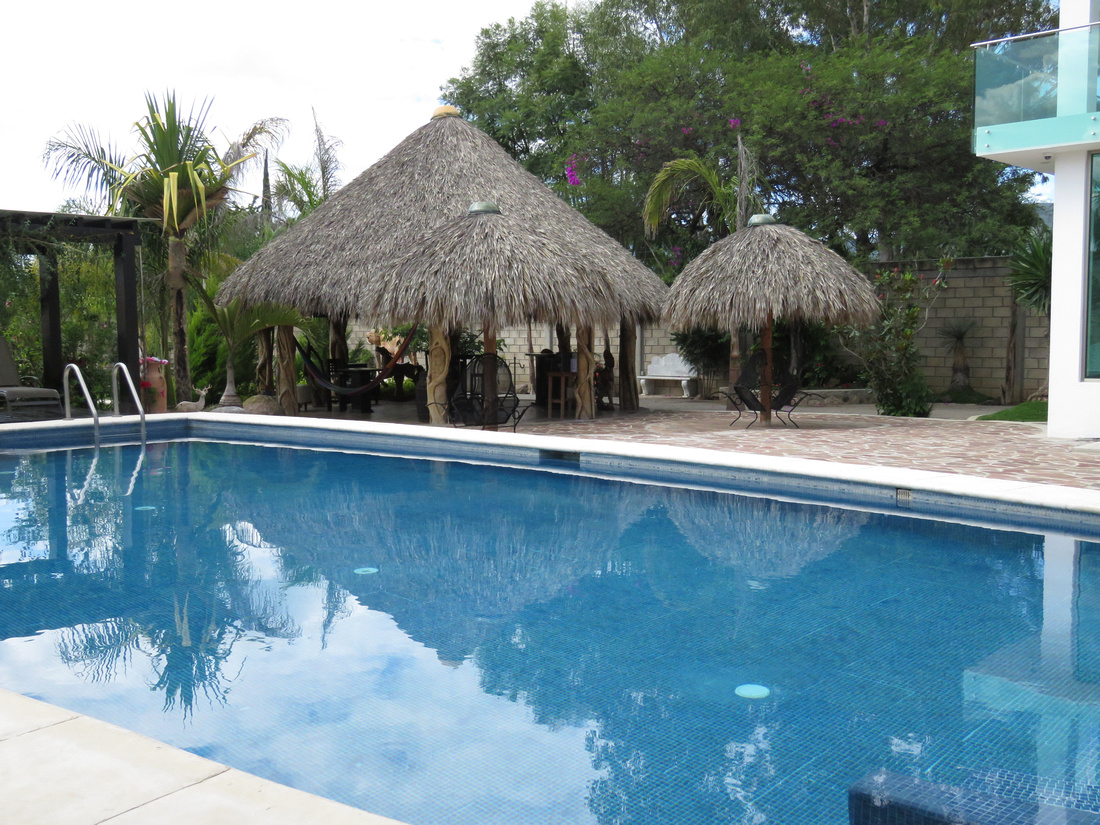

The mixture of rich and poor buildings and homes existing side by side is interesting. This home is not far from La Quinta. I have mentioned before the wide gap between the rich and poor here. There are schools with extremely rich students mixed with others who barely have enough to eat. I have also mentioned before how my perception of poor has changed since living here. I thought I had seen poverty in the US, but my definition has changed immensely.
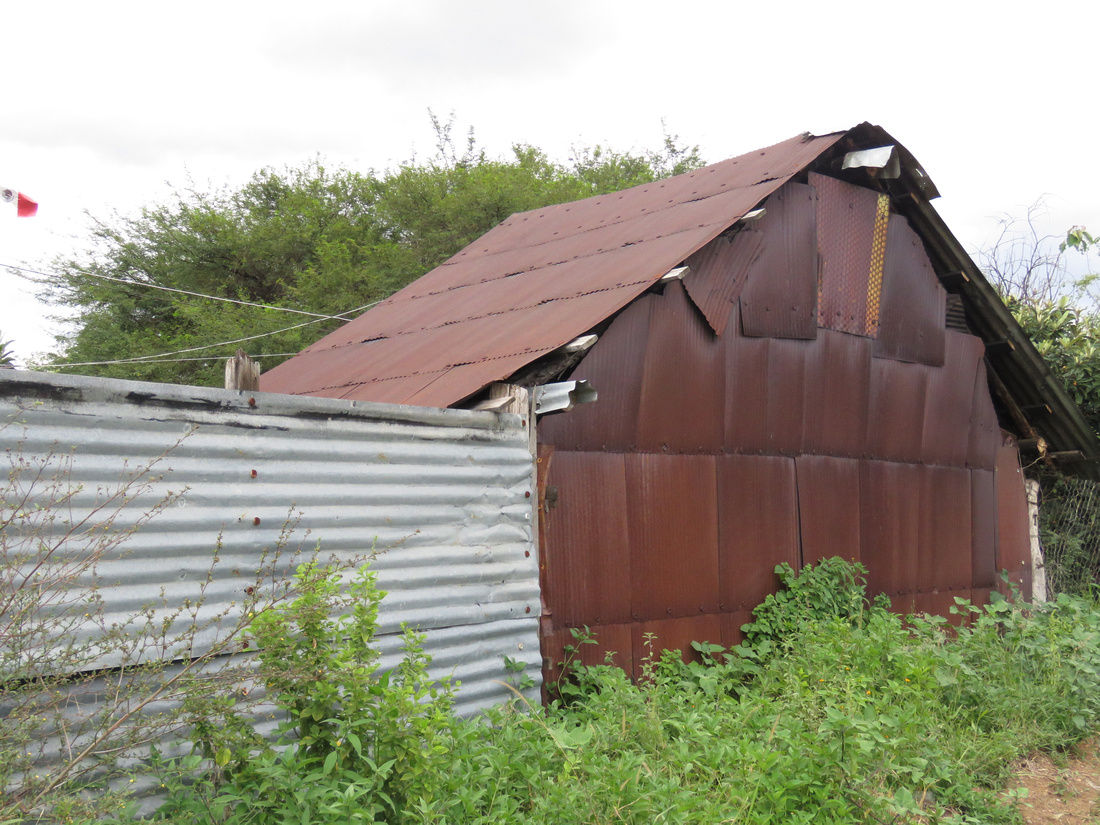

It is rare to see a wooden home here.
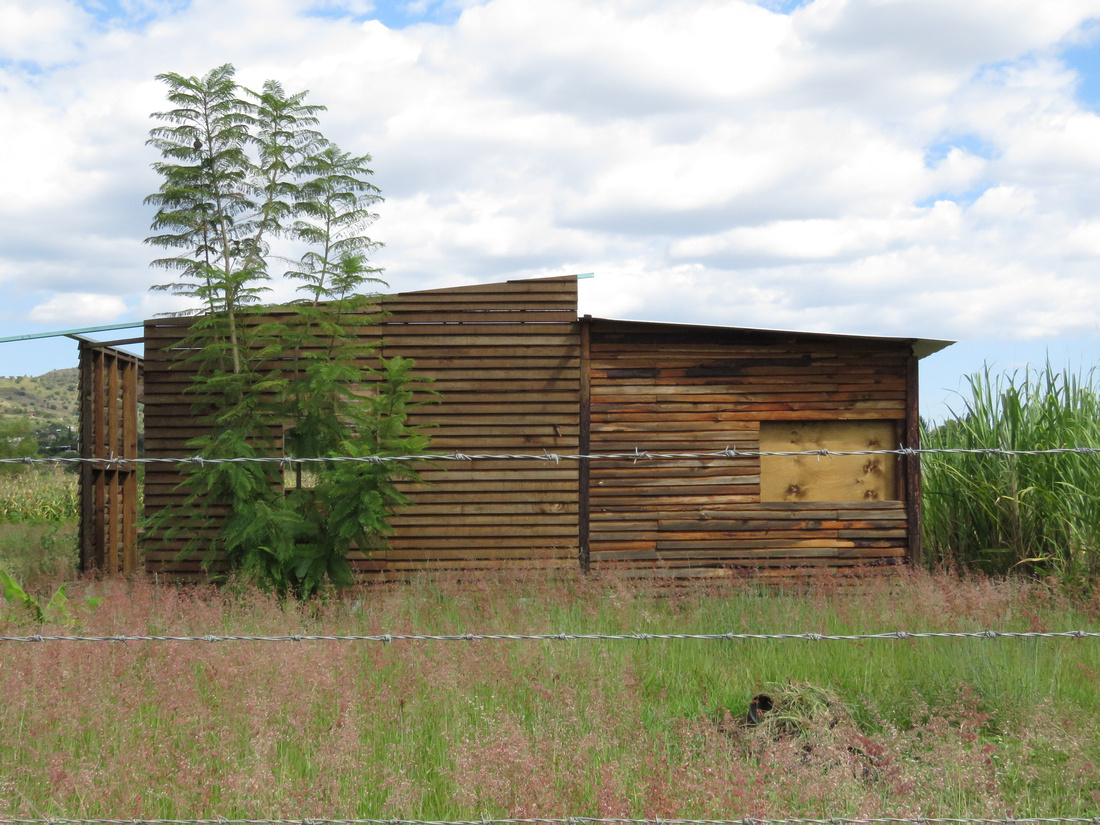

I got a kick out of this little guy guarding his home.
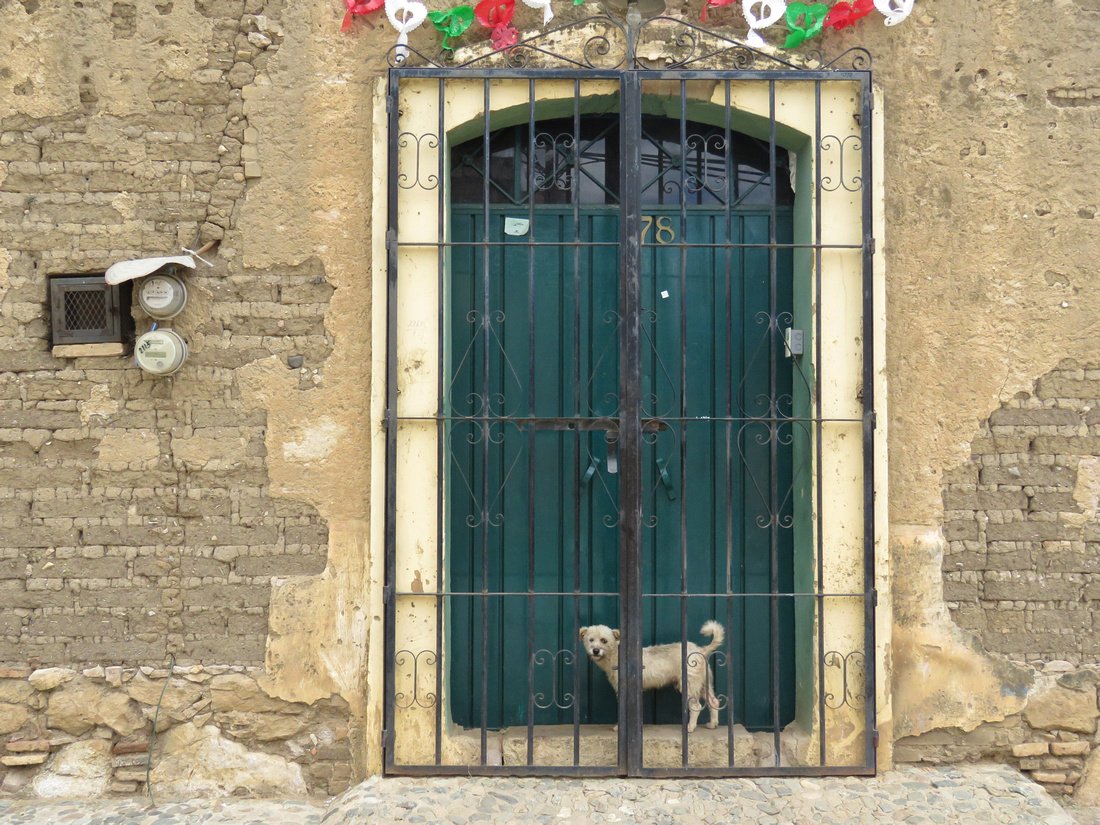

Around the house
Our hen Goldie no sooner separated herself from her first brood of chicks when she hatched another brood. The first brood she kept inside a fence. We only caught glimpses of the chicks because of the tall grass. This time she's parading them around the yard during the day. I was going to give the chicks to a friend, but we are enjoying watching them so much I'm going to wait. They are a blast to watch and our dogs are leaving them alone.
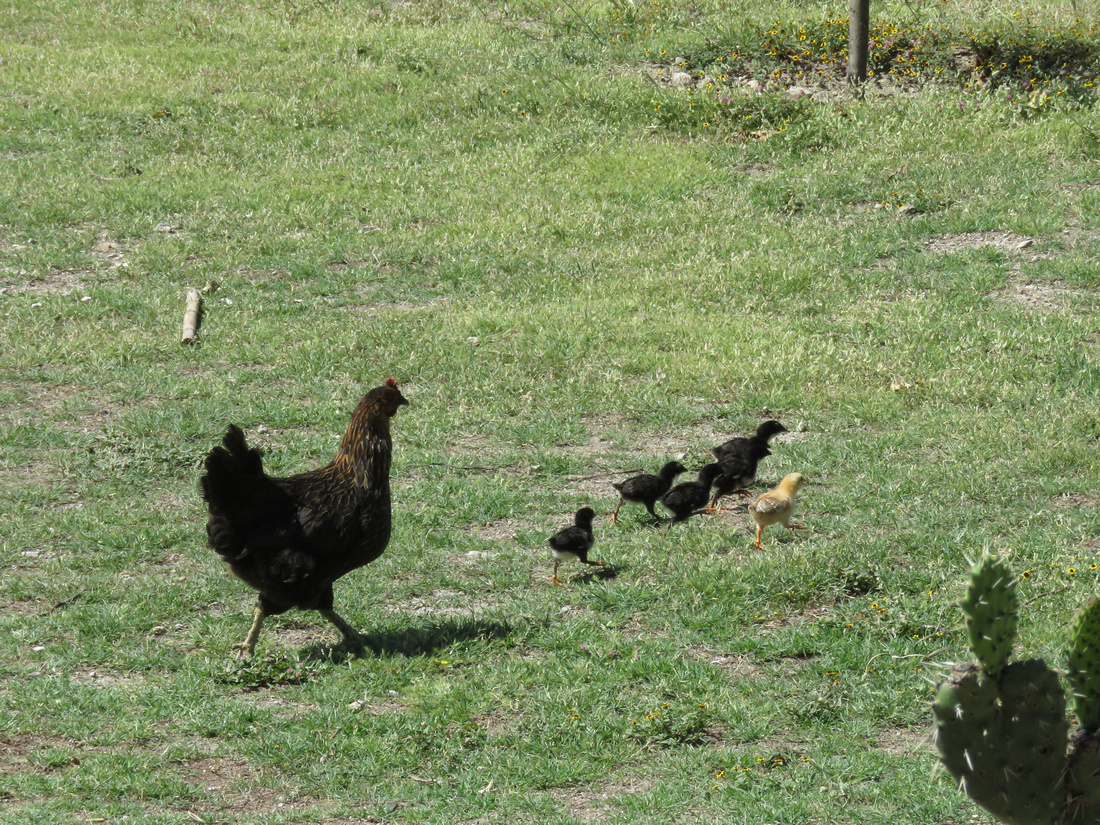

This farm is along our walking route. The owner has acres and acres of alfalfa.
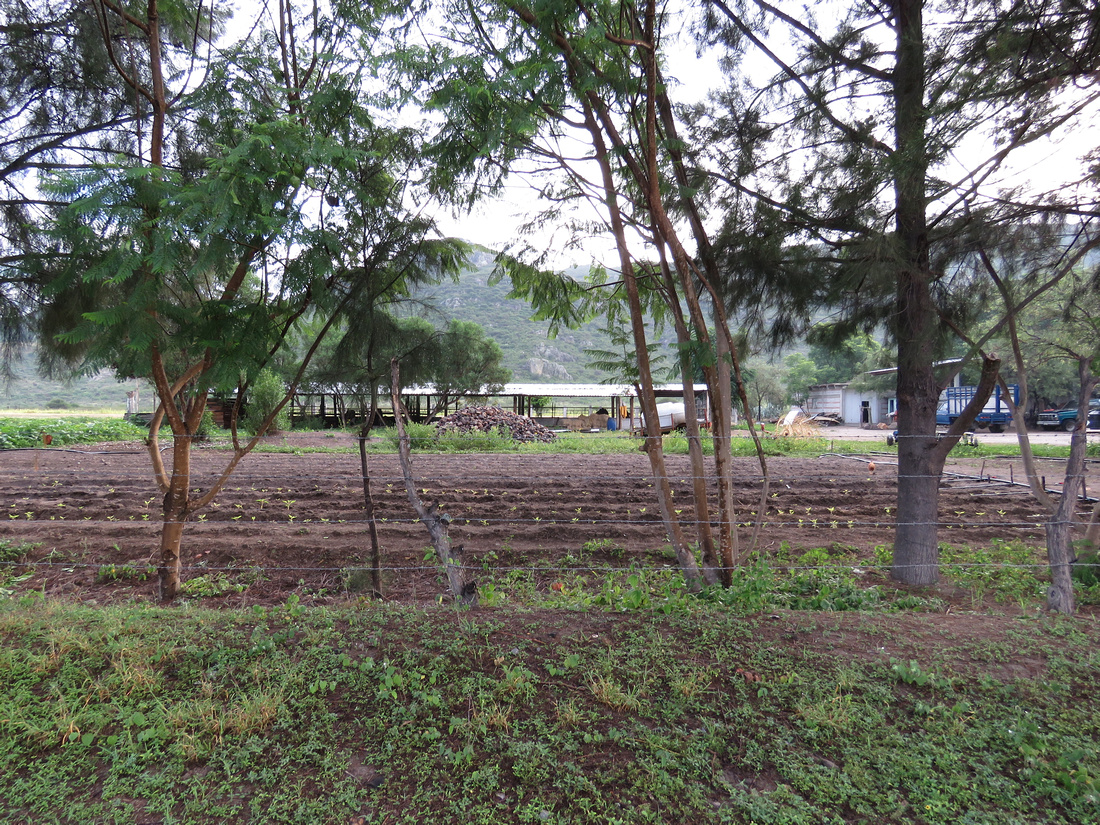

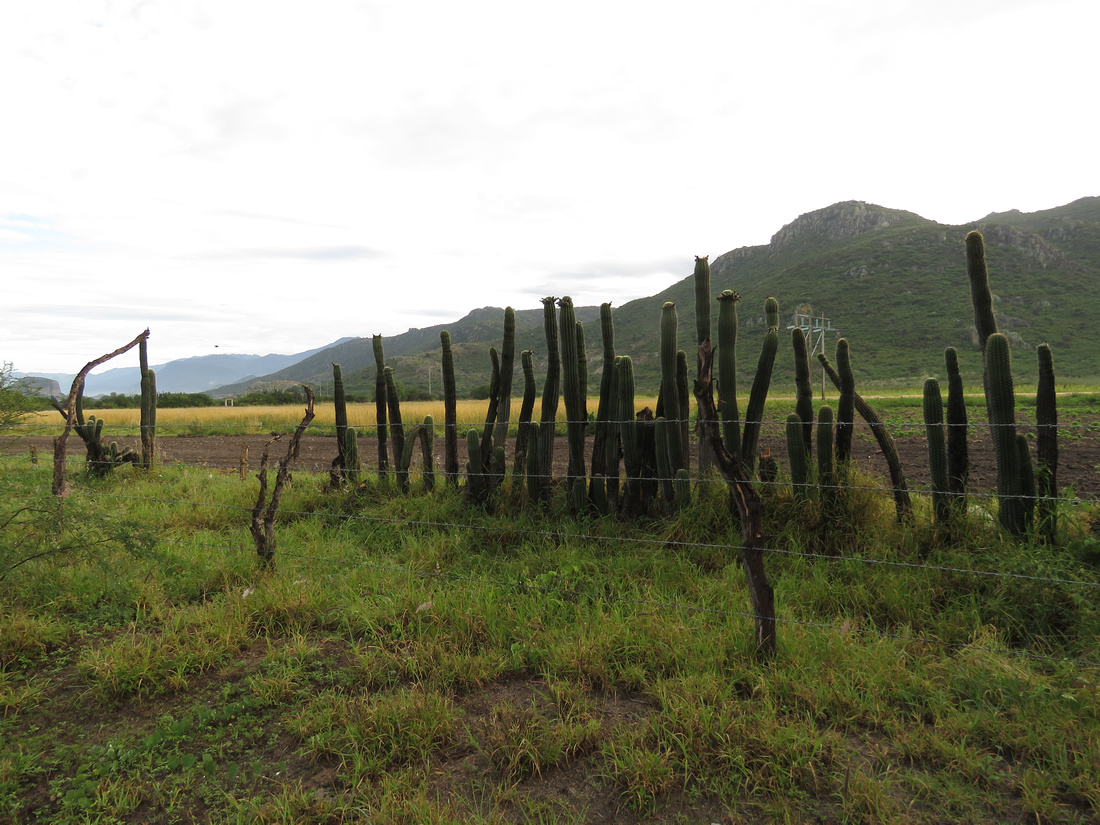





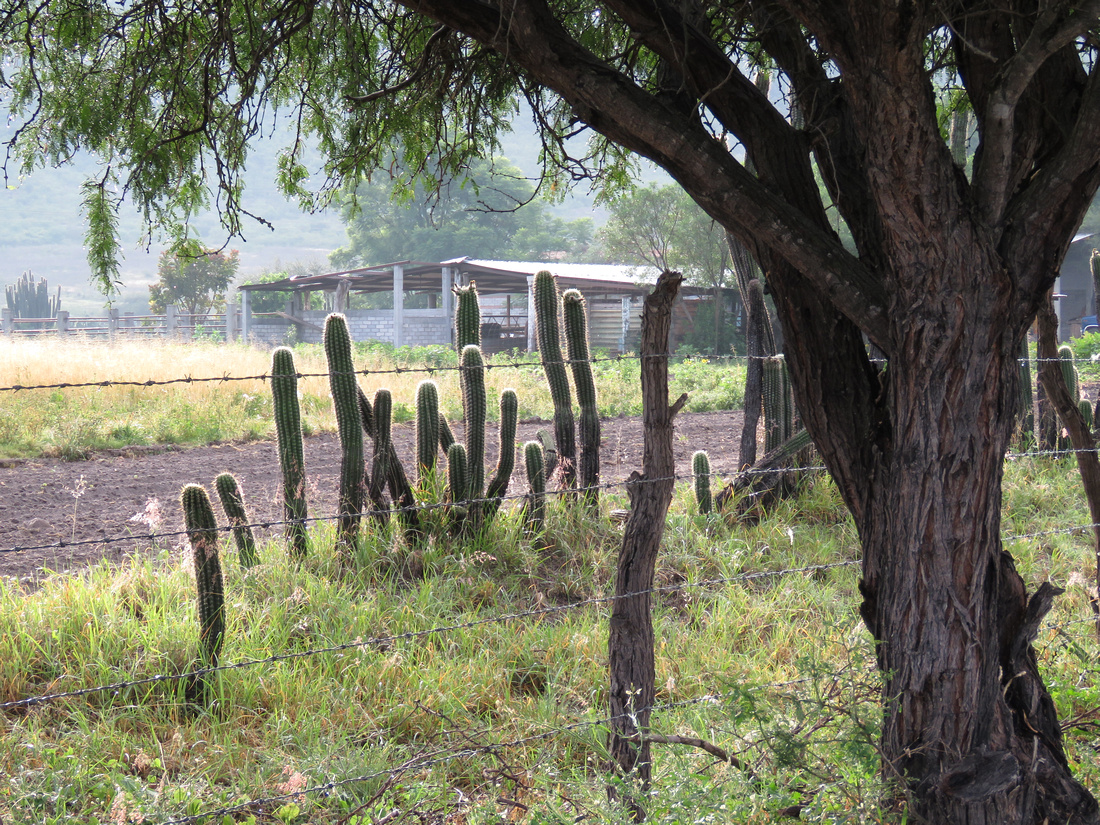

These anthills sometime have a ten foot diameter.
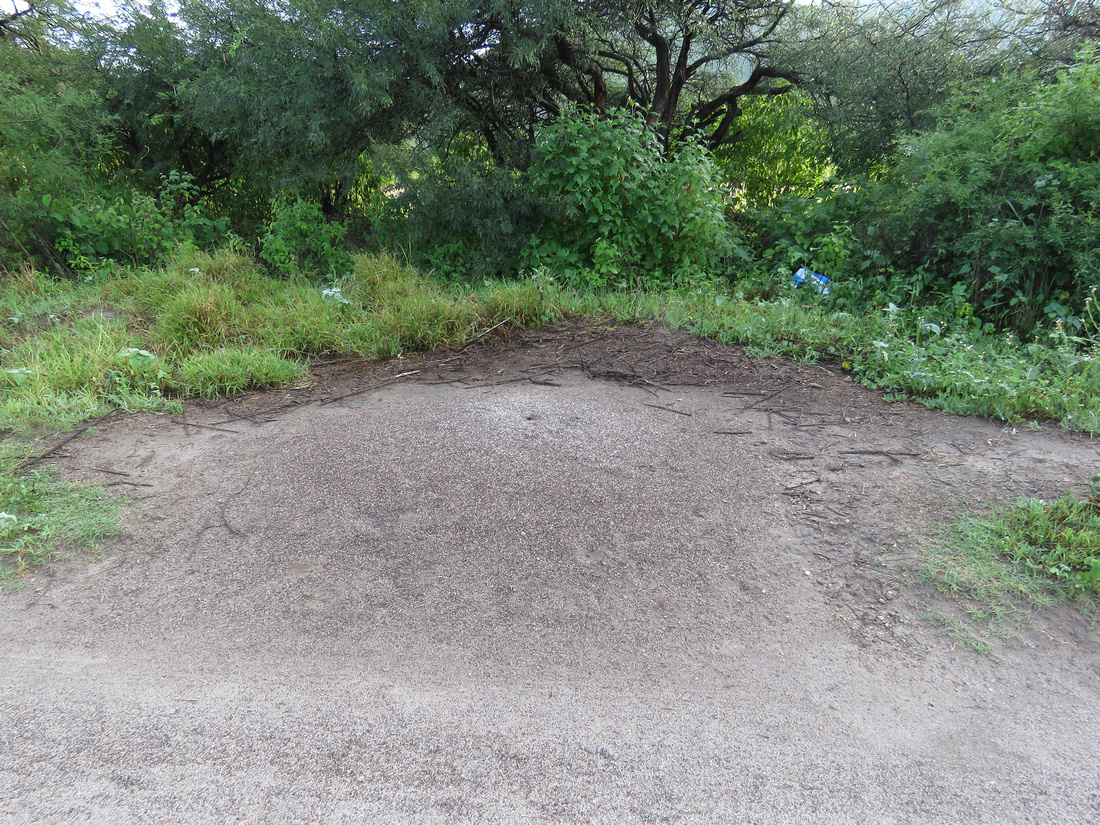

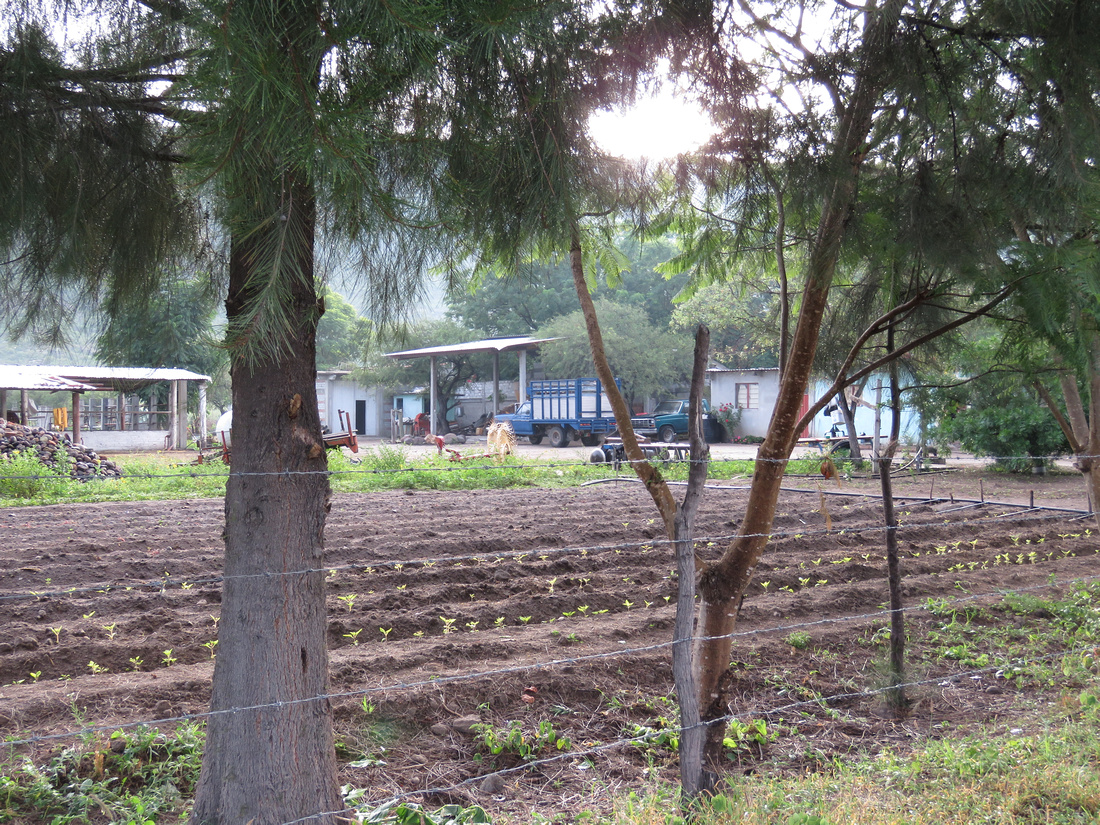

We are glad to see the Federal government cracking down on one of the corrupt teacher's unions. Hopefully their days of wreaking civil havoc is over.
Now that we have our property in our names we are going to travel to Brownsville to acquire our immigration visa. We also plan to nationalize our pickup. It's always a little spooky traveling through the northern states where the cartel violence is so prevalent.
We continue to enjoy Facebook as it is our primary lifeline to friends and family. We especially delight in posts by nieces and nephews. It is wonderful to see them making their way in the world and we celebrate their successes.
We are looking forward to sharing our trip to the US next month.
Monica and Aldelfo's wedding
While living in Sedro Woolley, Beth and I photographed hundreds of weddings. We’ve also photographed a few here in Oaxaca. On August 15th we photographed our most memorable wedding for Adelfo and Monica in Matatlan. It was a large wedding. I estimate about five hundred guests. Adelfo is from Matatlan. Their wedding customs are still very traditional. Mixed with their customs were the traditions of Mitla, Monica’s home town. I had to stay on my toes as I was often unaware of what was going to happen next.
We were invited to the groom’s house the day before the wedding for lunch. I couldn’t believe all the preparation. There were at least fifty people performing different tasks. And they were very organized. Everything was made from scratch so preparing meals was labor intensive. A cow, two pigs, eight large turkeys, and two chickens were butchered.
Later in the day I began a conversation with a man from Matalan. After we chatted for a while he told me that when Beth and I first arrived he and his friends thought we were lost and just kinda wandered into Juan's yard. He didn't say so, but they must have been a little annoyed when I immediately began taking photos. It was a little embarrassing realizing we were perceived as dumb gringos that had lost their way or that maybe we were trying to buy some mezcal. Once it had been explained that we were friends, everyone became very friendly. We've often heard people speak Zapotec, but this was the first time we'd been around so many Zapotec speakers. It reminded me of when we first started coming down to Oaxaca and did not understand what folks were saying in Spanish.
We were invited back the day of the wedding for breakfast. After breakfast we walked with the bride and groom, along with a band and several people from the groom’s house, to the church about a kilometer away. The ceremony was similar to any Catholic wedding except the bride and groom had their son baptized as well. Adelfo and Monica were married civilly three years ago and now wanted to have a church wedding. I believe this was so their son could be baptized. After the wedding we marched backed to the groom’s home and were served a bowl of noodle vegetable soup after which guests received a serving of ice cream. Later the full meal was served. A whole lot of food was consumed along with eighty cases of beer and twenty bottles of mezcal.
I happened to be near when the fireworks were set off. I was across the road when they were lit but was hit twice hard enough that I still have bruises. I’m sure if the fireworks had been encased in metal, the shrapnel would have penetrated my body. I believe the ground actually shook! This was not the place for any veteran suffering from PTSD to be.
Preparing a tub with carizzo. Meat was later stacked on the carizzo. Water and spices were used to steam the meat. The tub was eventually buried in a large hole with several hot rocks on the bottom. The tub was covered with aluminum foil and sheets of cardboard and tin, then covered with dirt. Cooking time was about five hours.
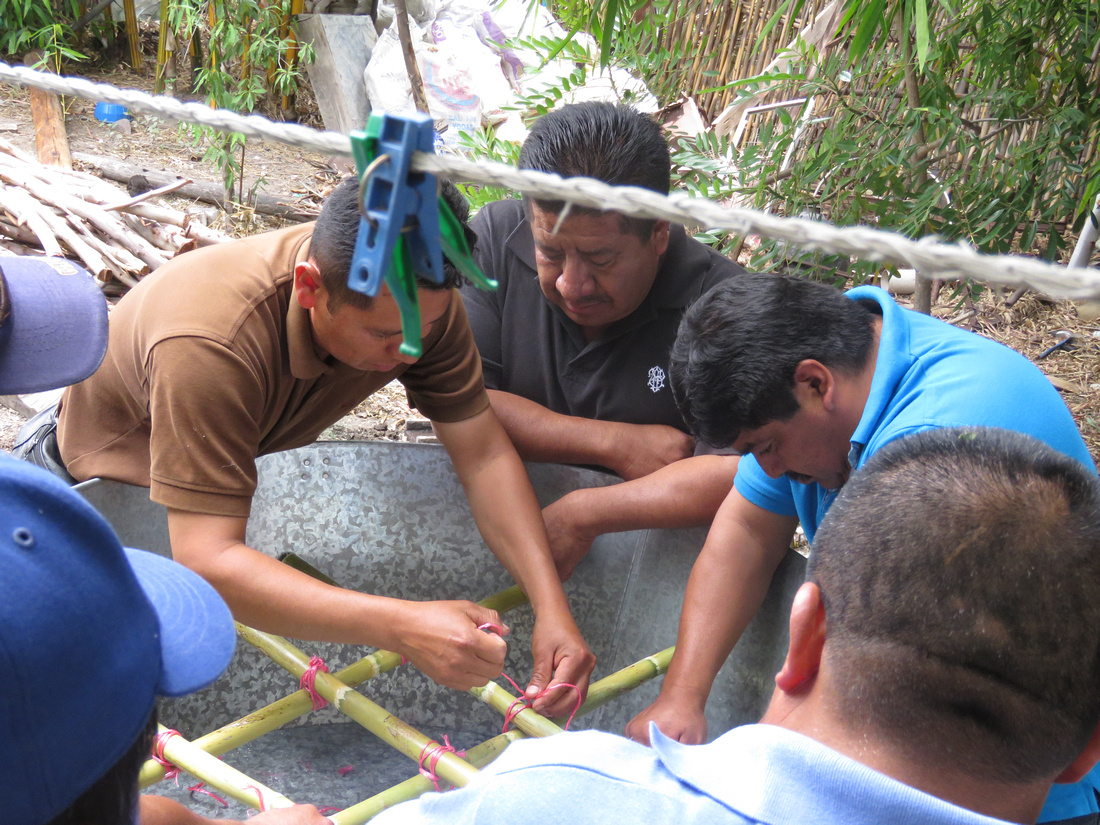

Many pots of either water or oil were heated outdoors over fires.
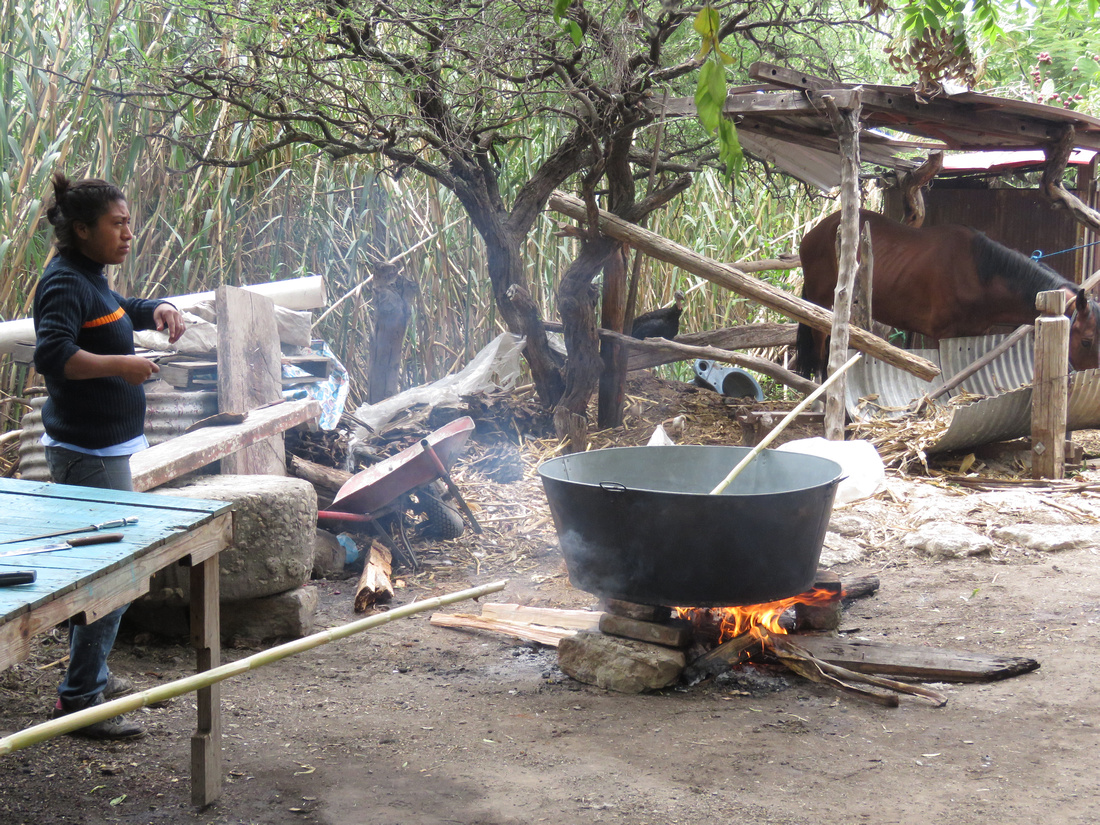

And the hens and their chicks were often underfoot.
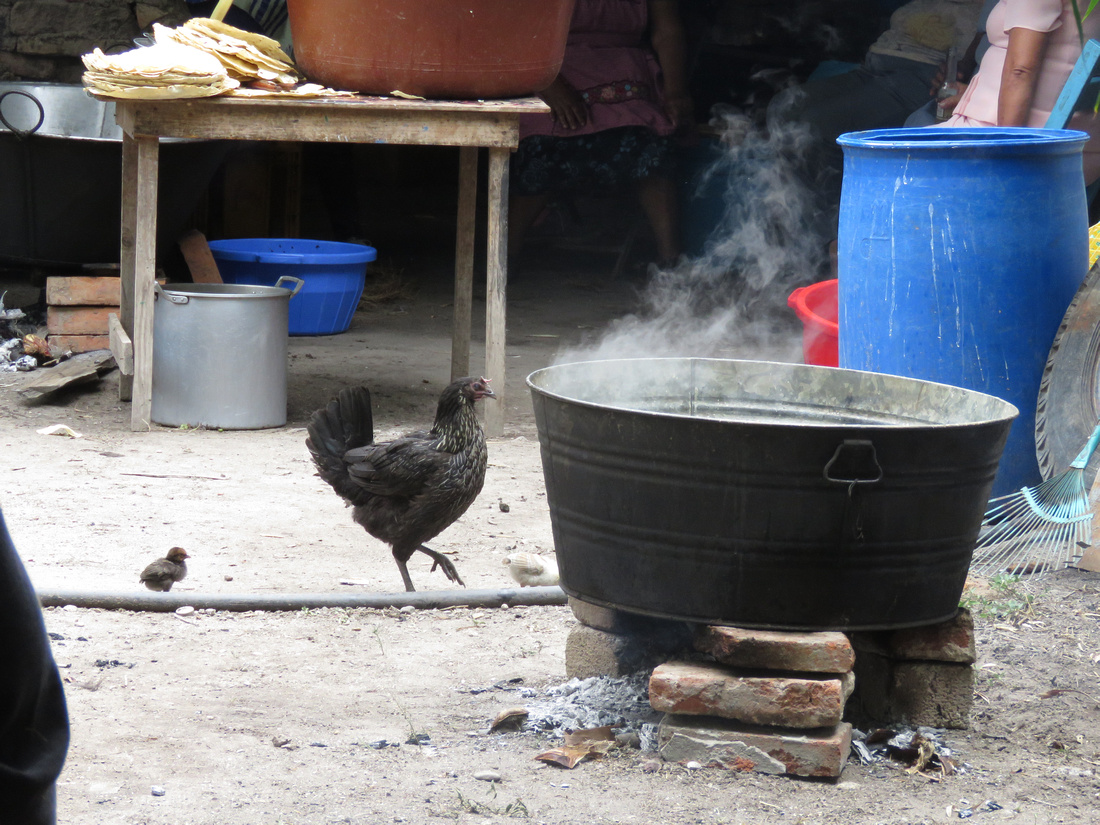

Pork rinds were made and were part of the prep day meal.
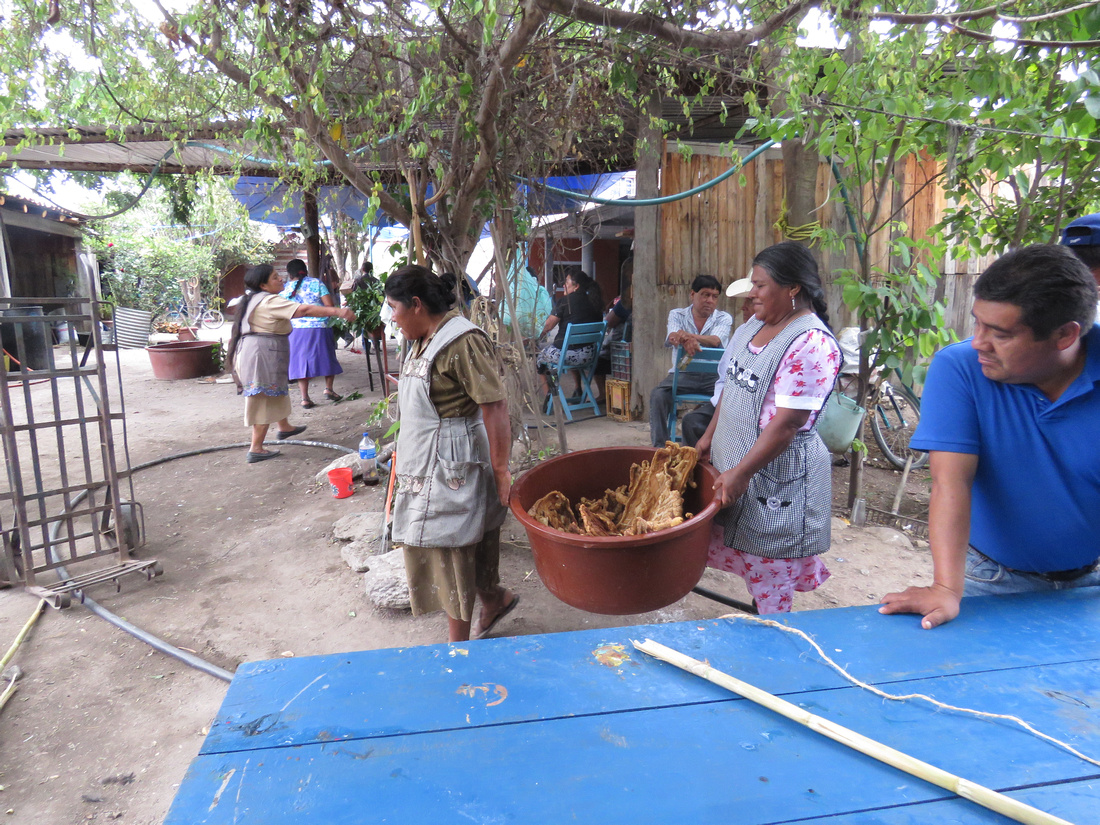

I'm not exactly sure where this pork ended up.
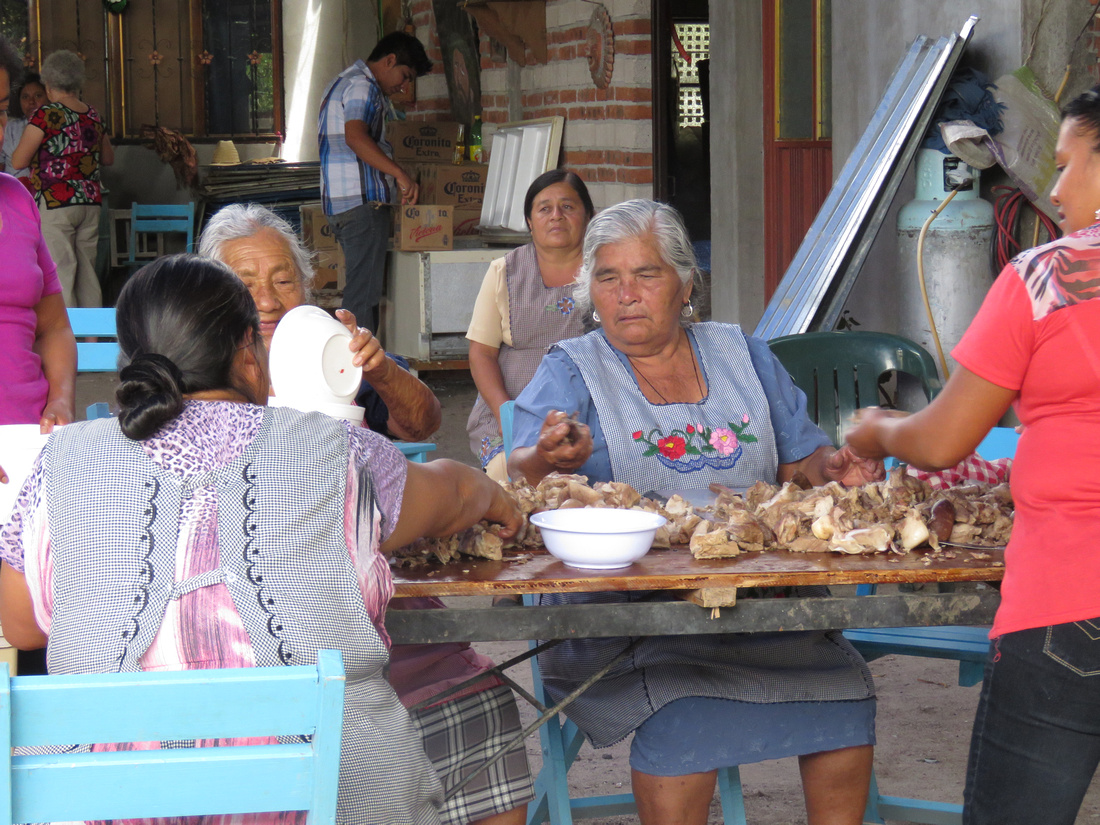

The women work well together.
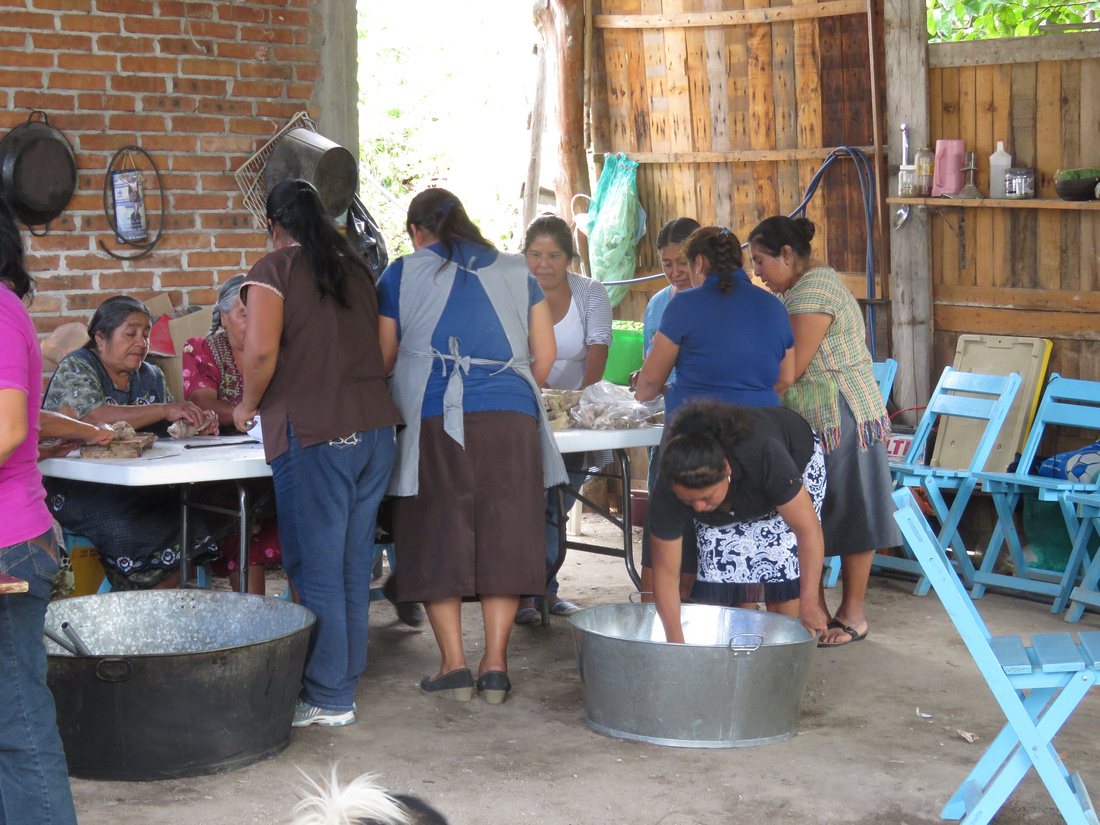

This is the outdoor kitchen Juan completed in preparation for this huge event.
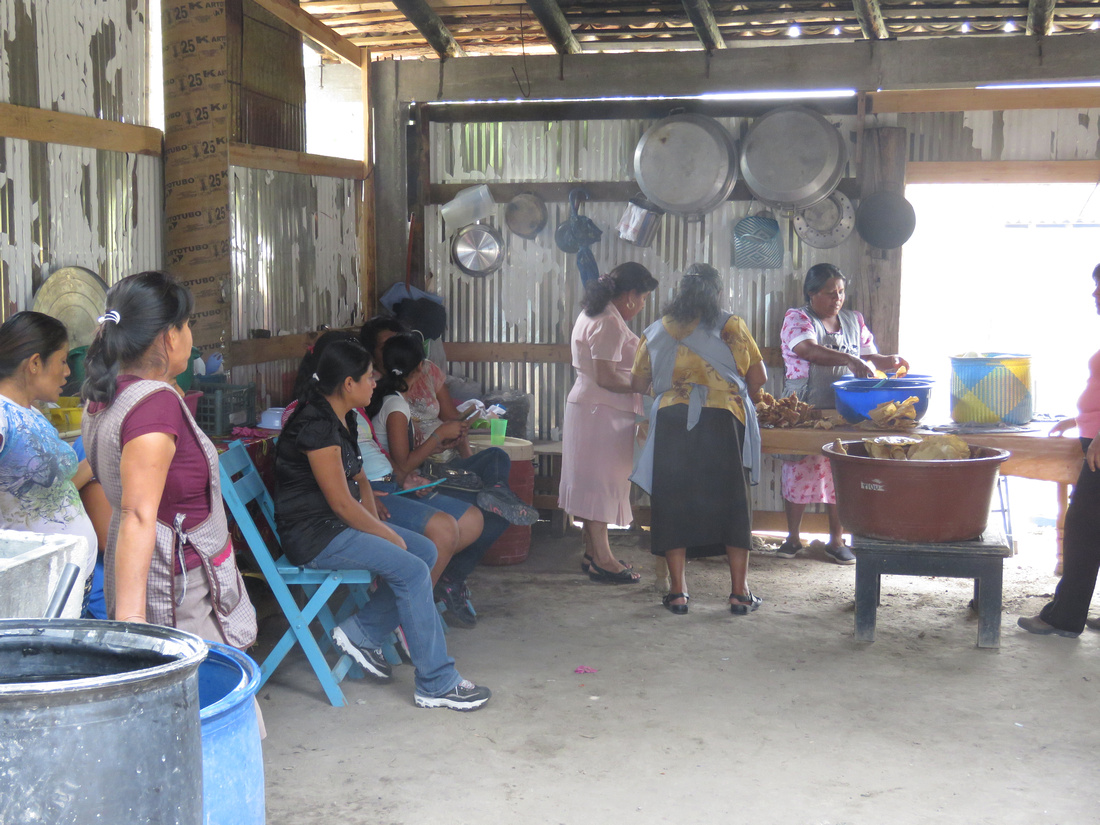

There were several cooking fires scattered around the yard.


Naturally, cold beer was served to help cool every one down.
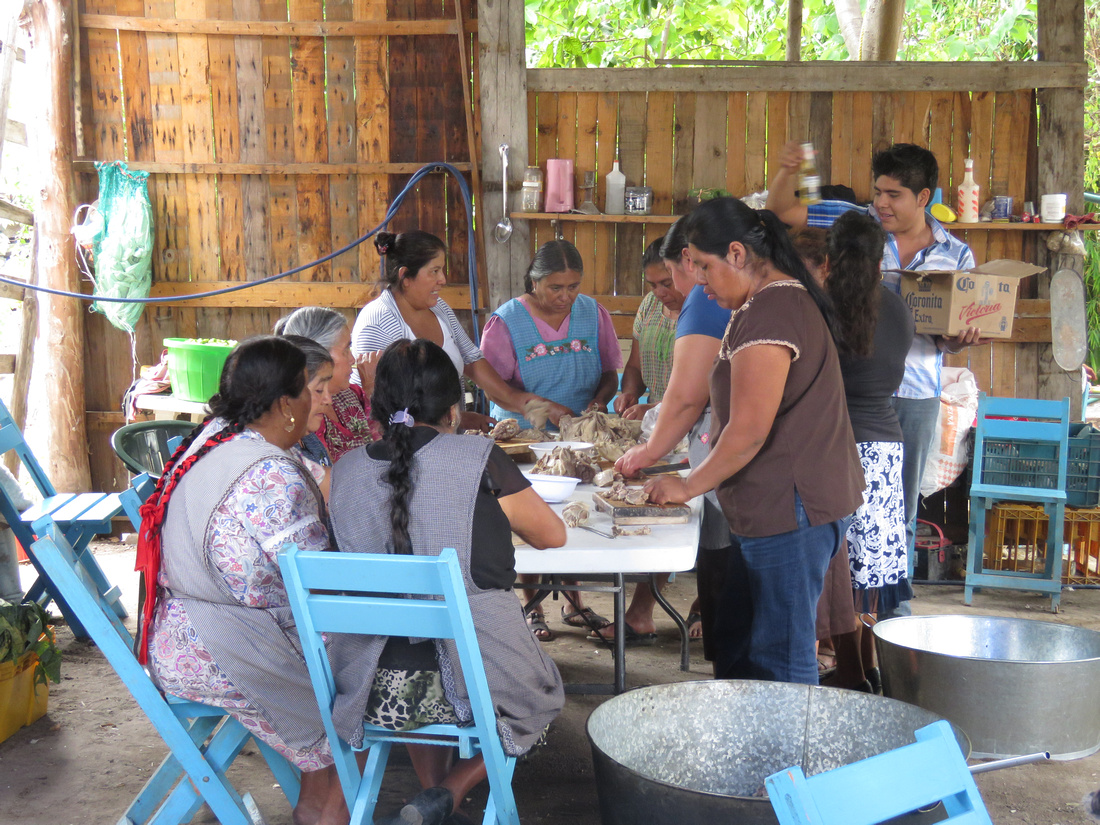

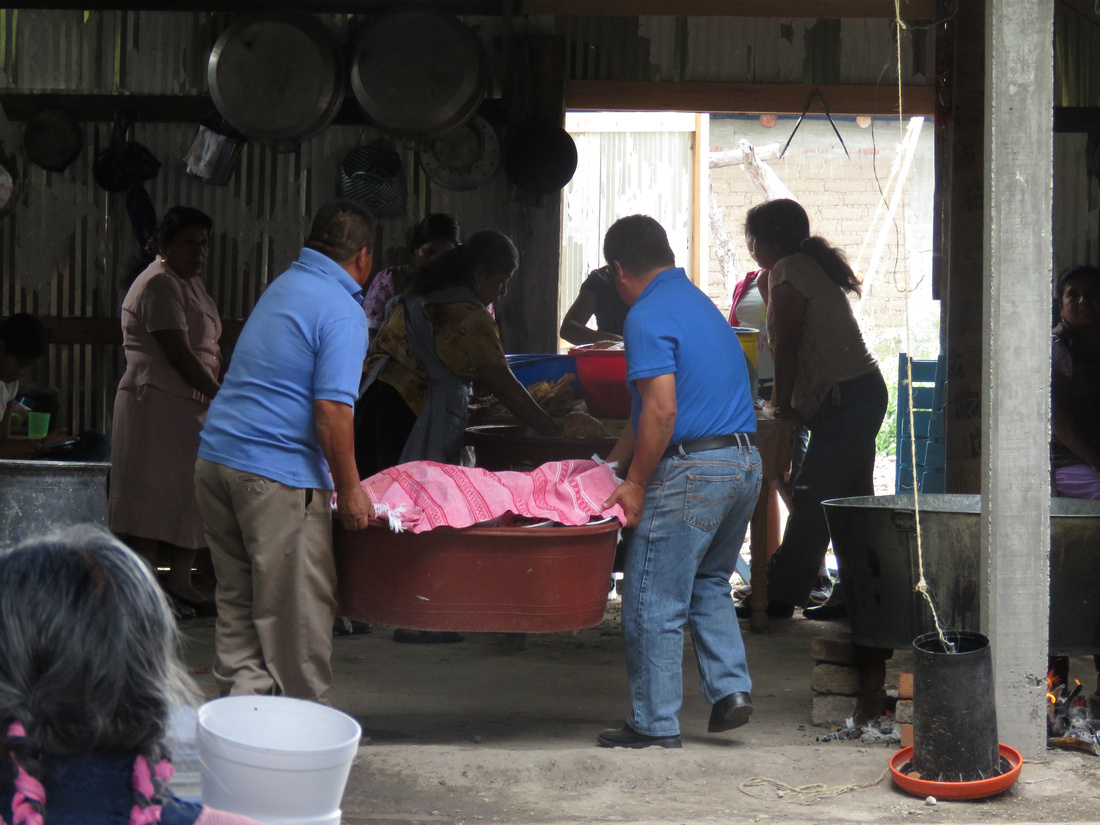

All the workers were served lunch which included horchata and handmade tortillas.
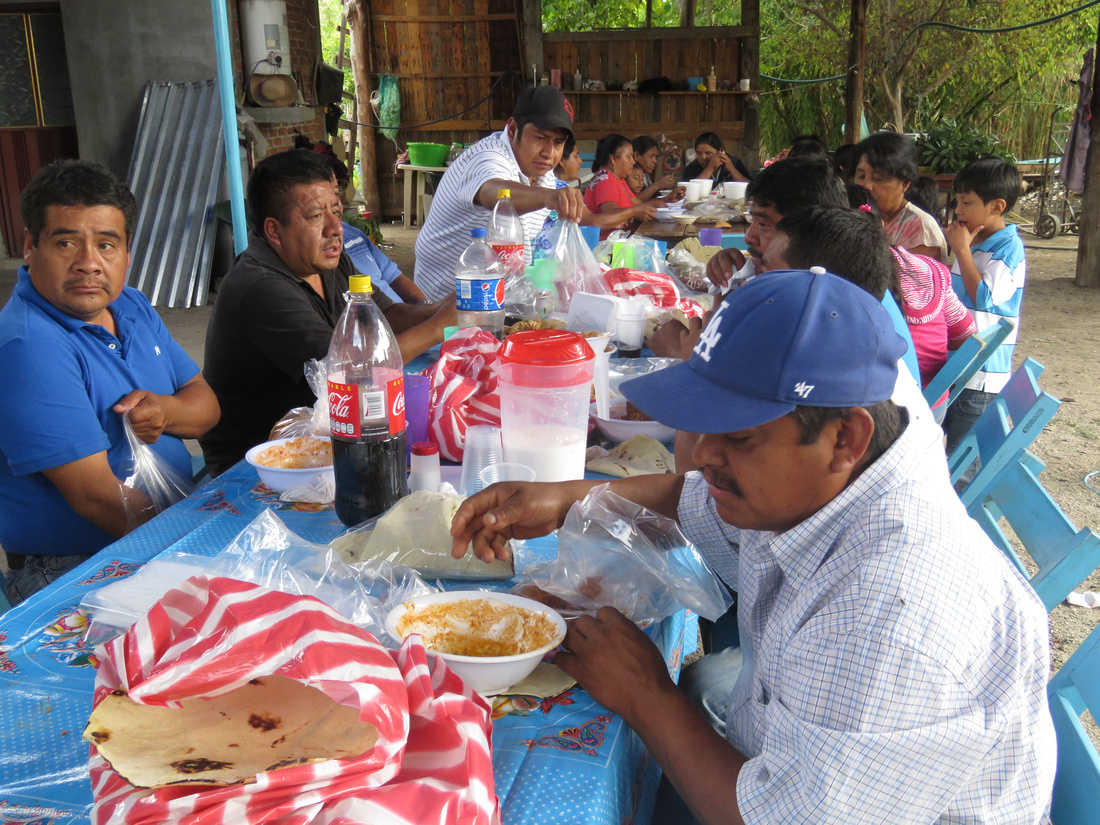

Most every one had a hearty appetite after all the hours of prep.


Monica the bride.
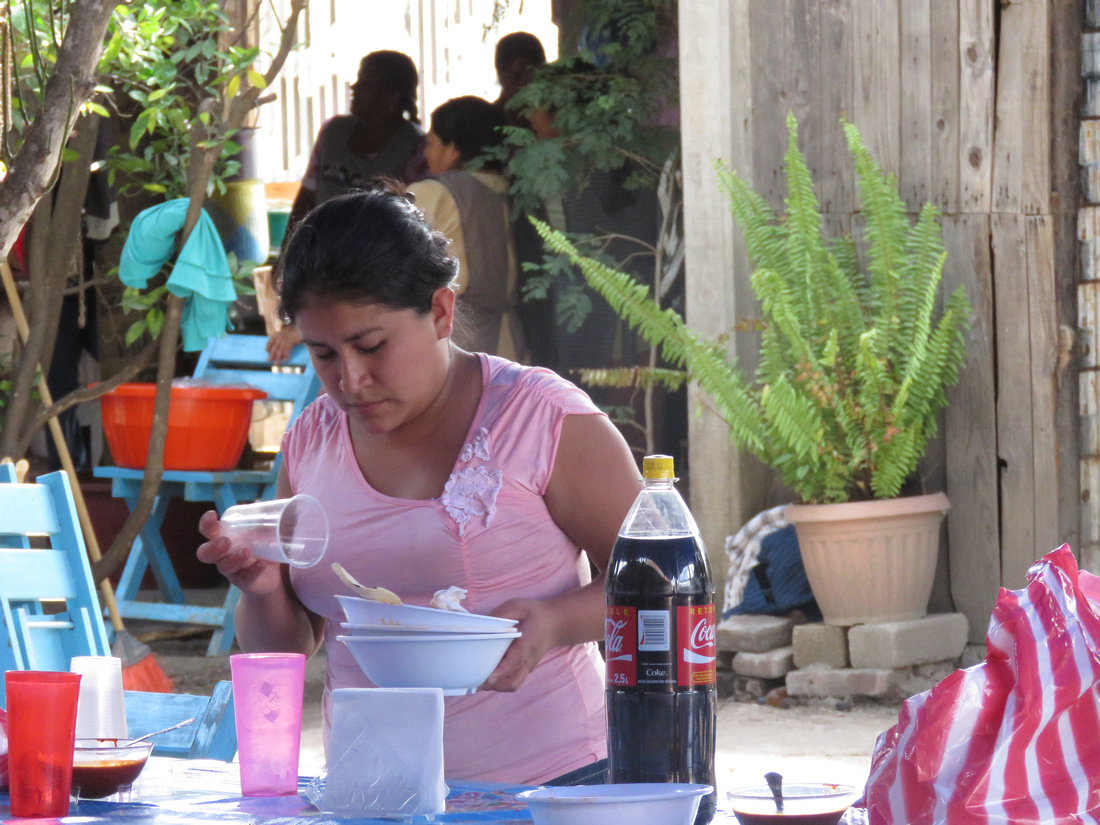

These women are preparing the leftovers for others to take home.
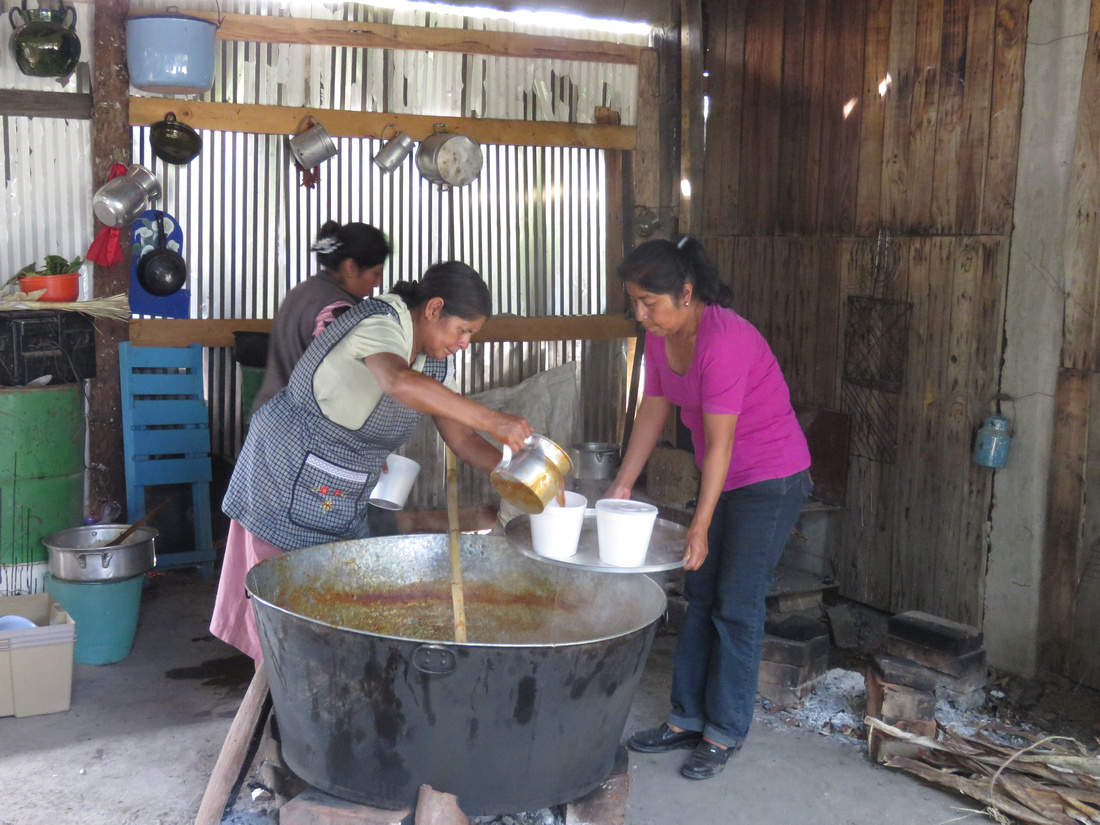

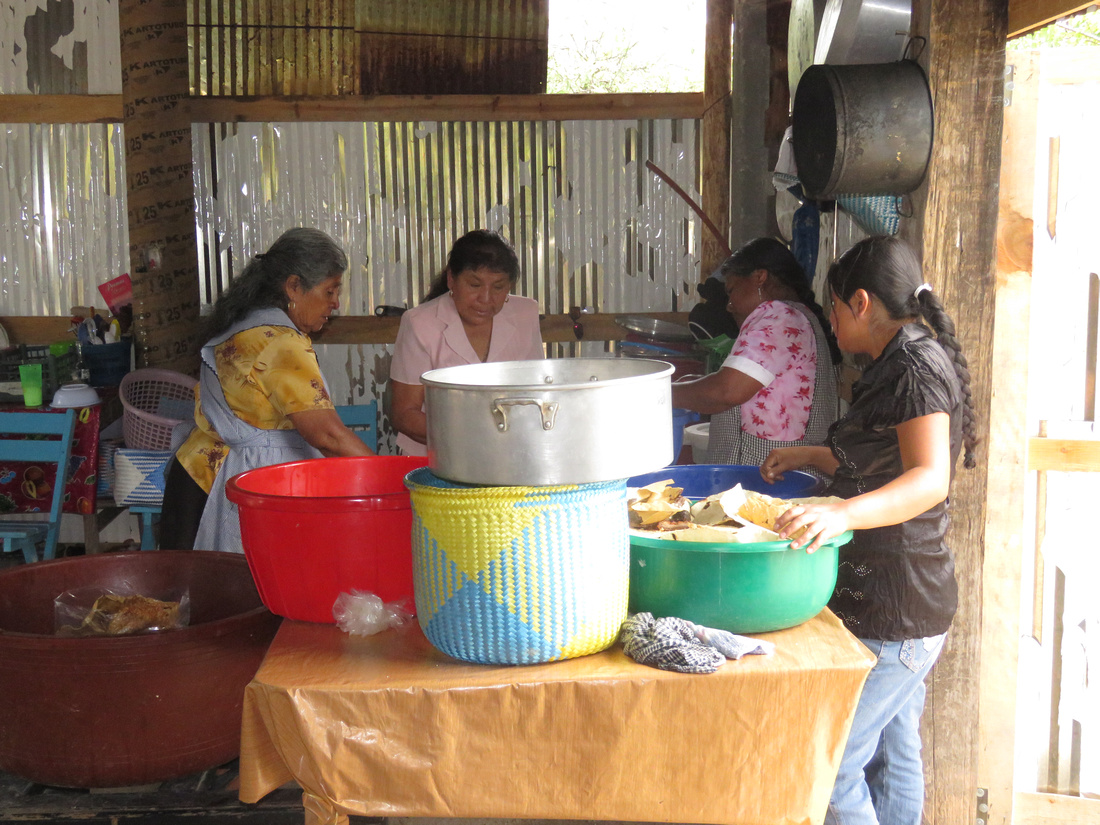

Aldelfo the groom.
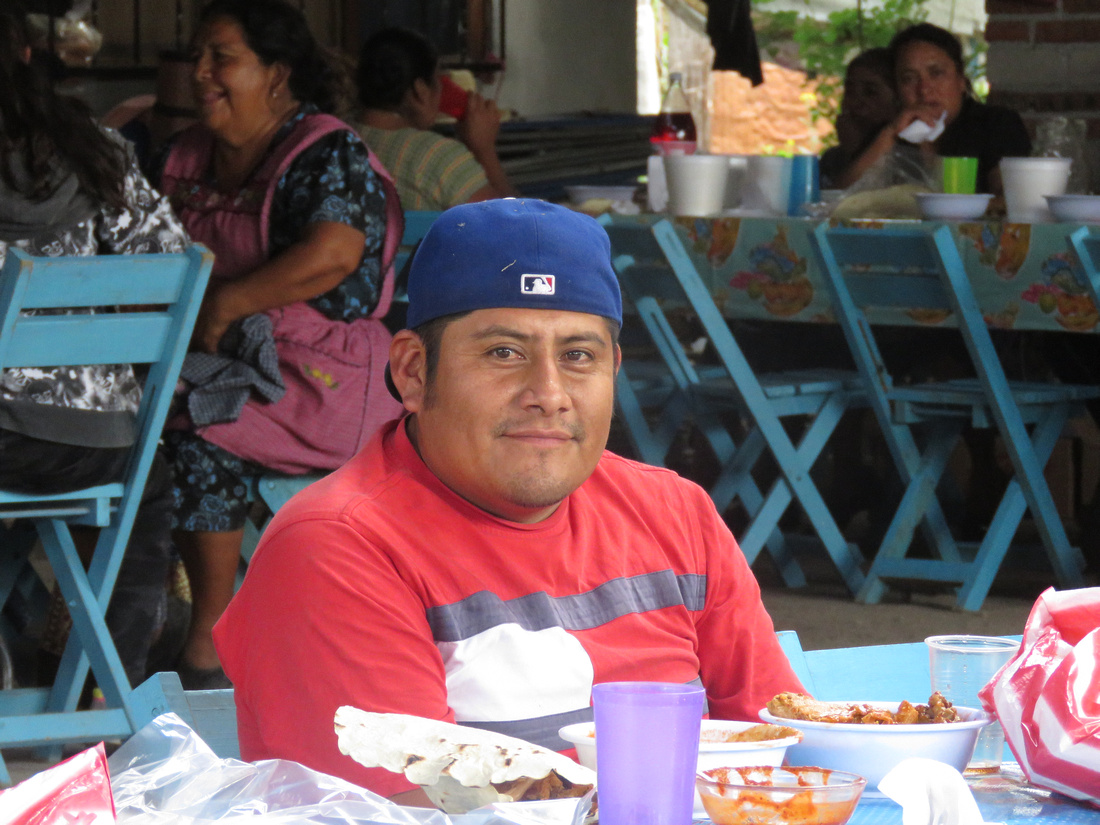

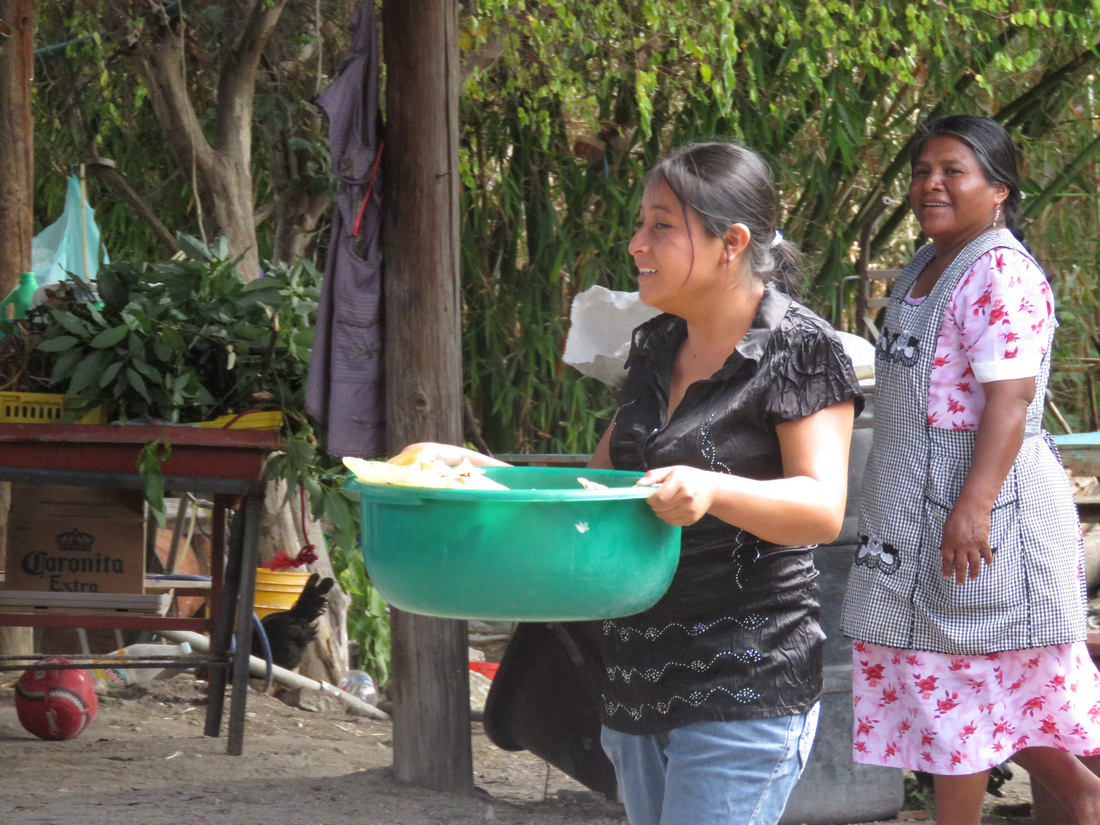

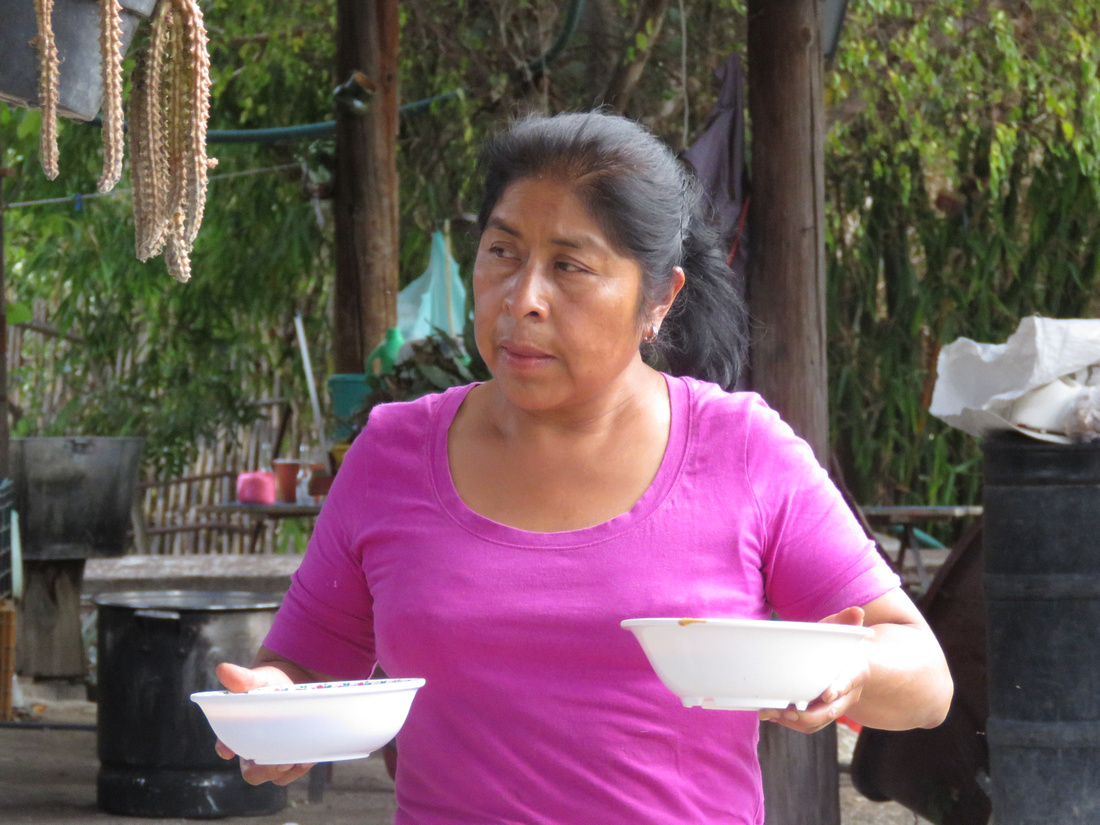

Butchering the cow.
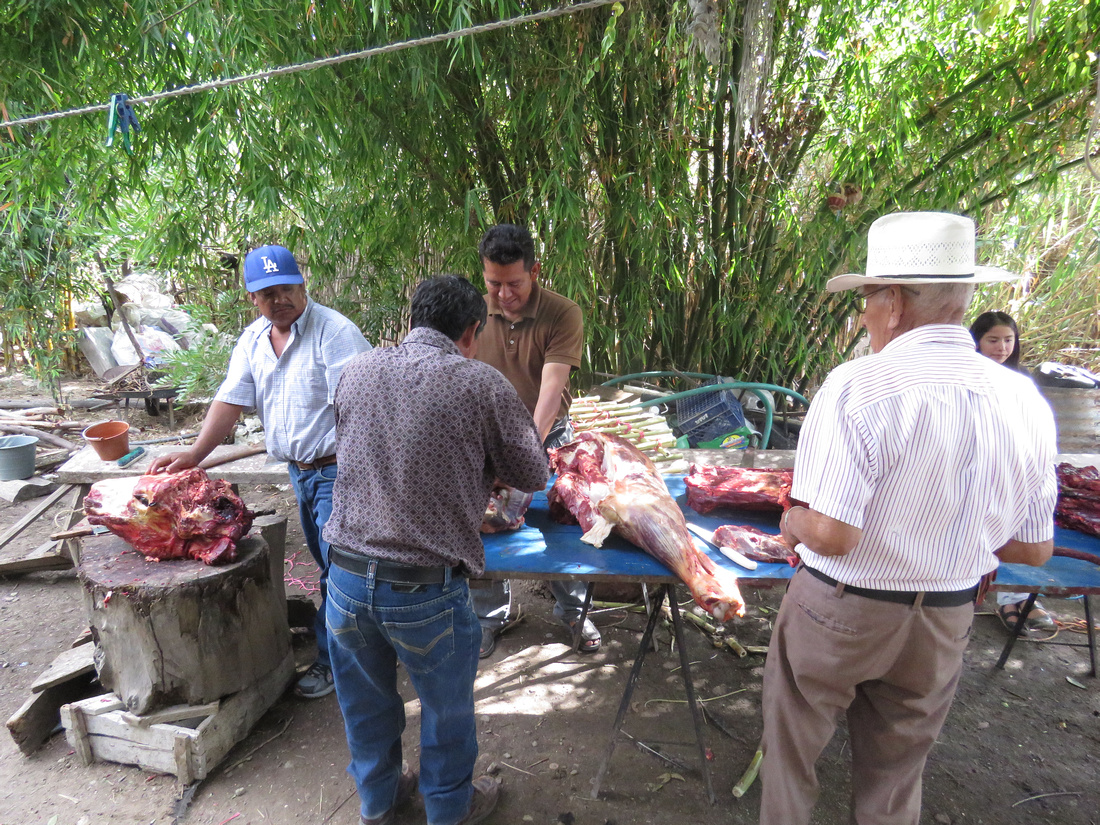

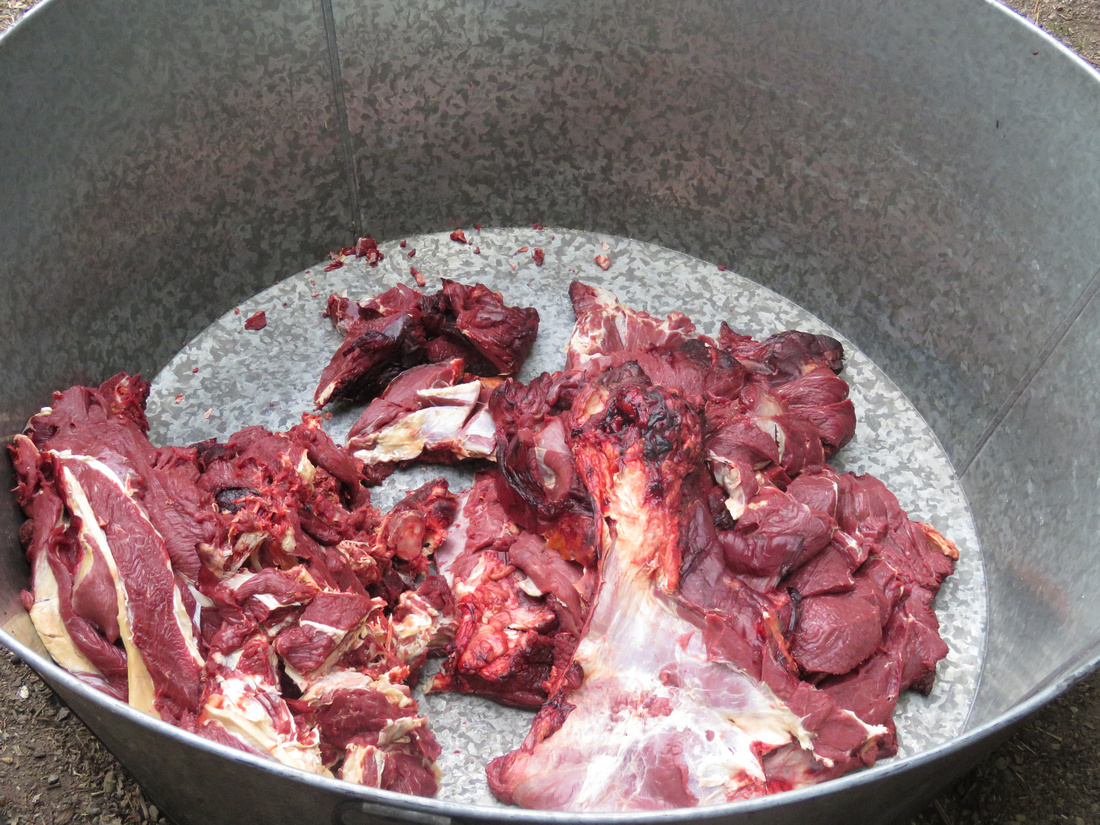

This was a little tough to watch. Removing the brains.
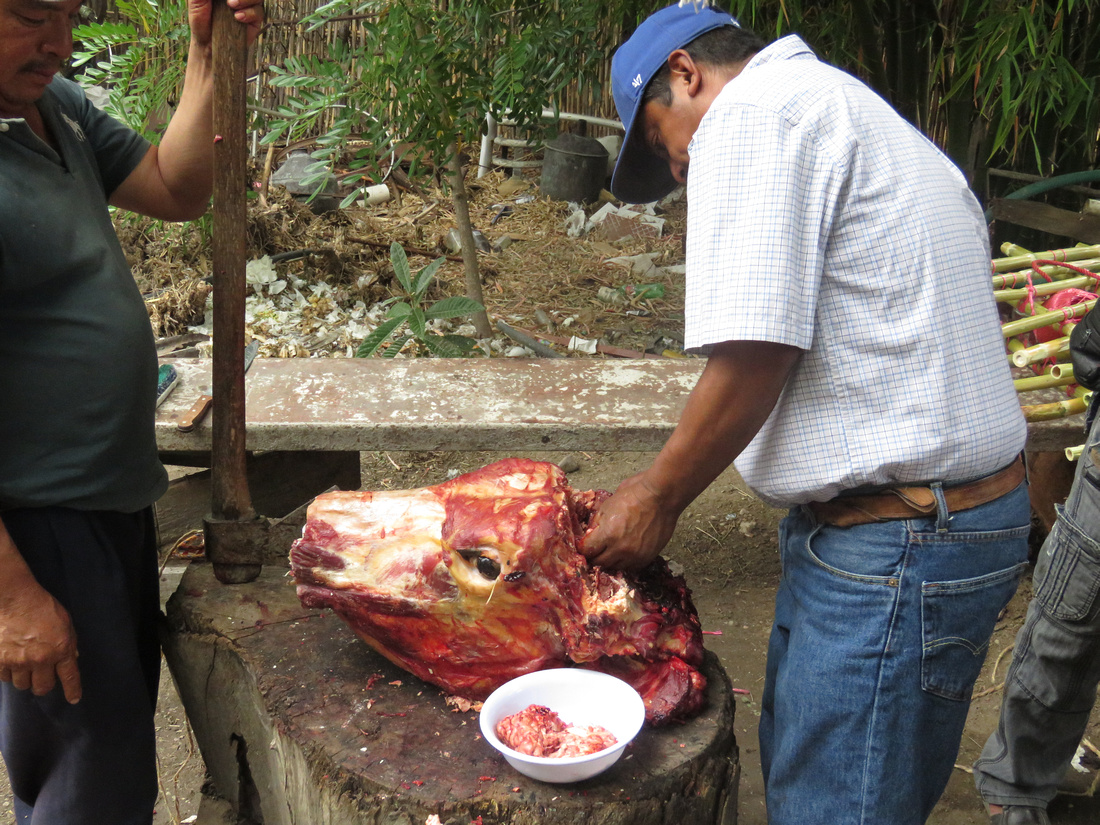

Here the head is split open and small pieces of meat are being cut off. Here in Oaxaca there is not much from an animal that is not eaten.
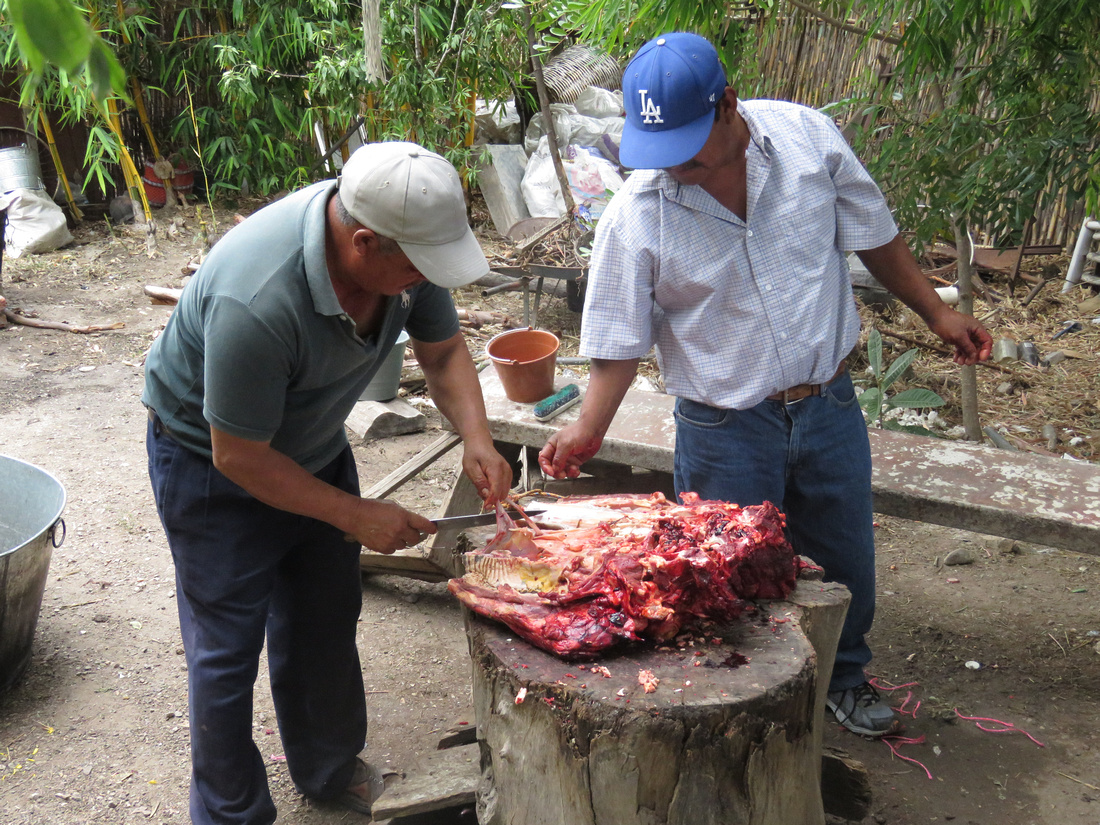

Before the actual wedding ceremony, guest were served breakfast. Here the women are almost ready to start serving the chocolate and breads.
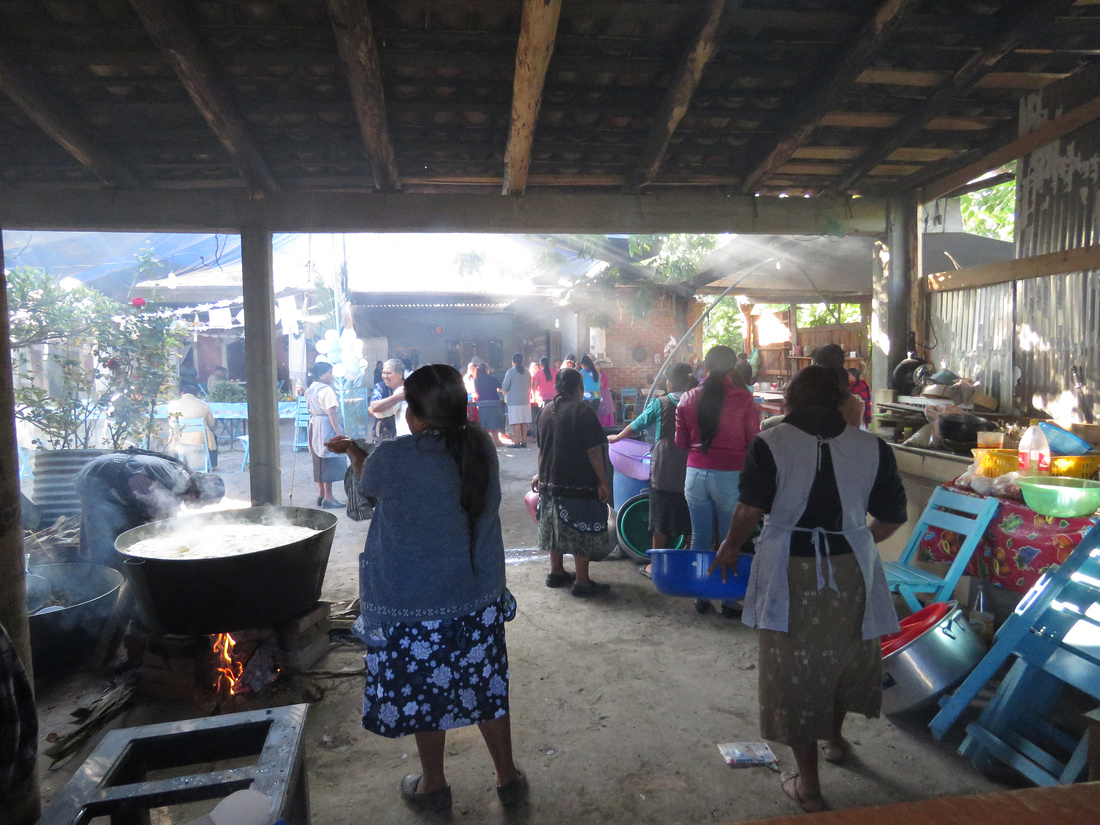

Washing dishes was a monumental task. They were constantly being washed and rewashed. All the women pitch in to help.
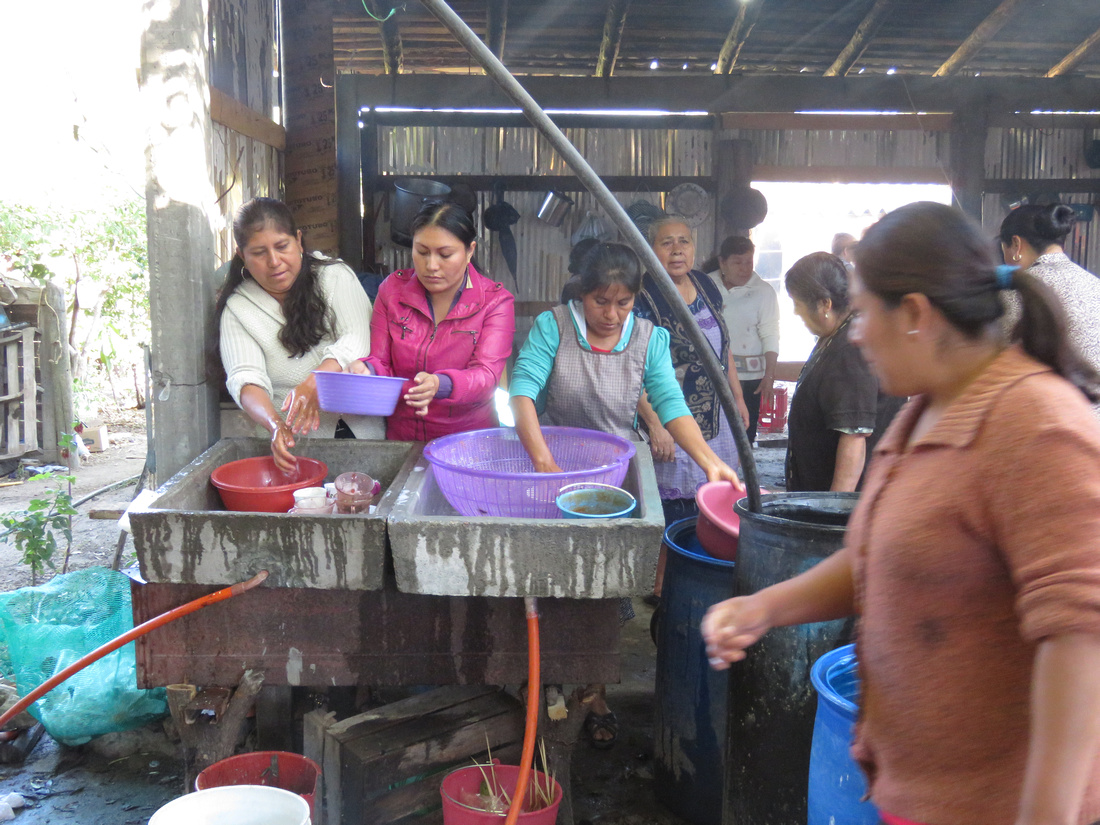

Women preparing chocolate that they call espuma.
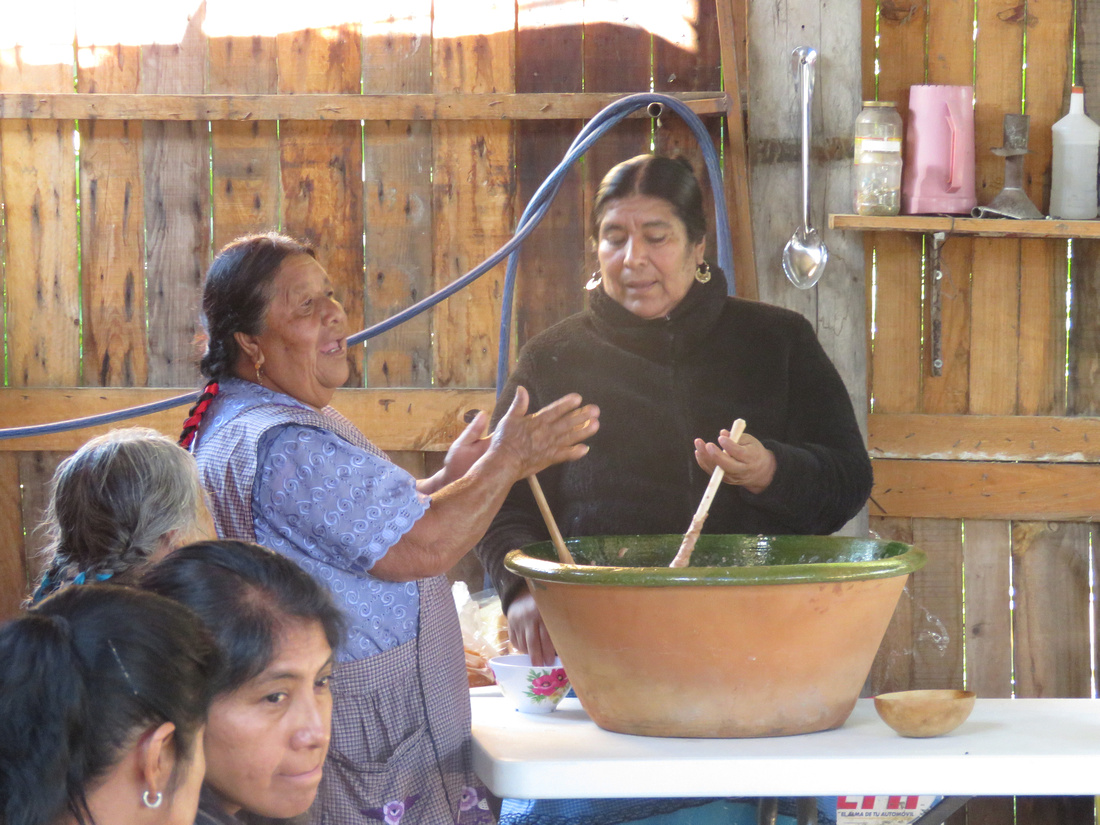

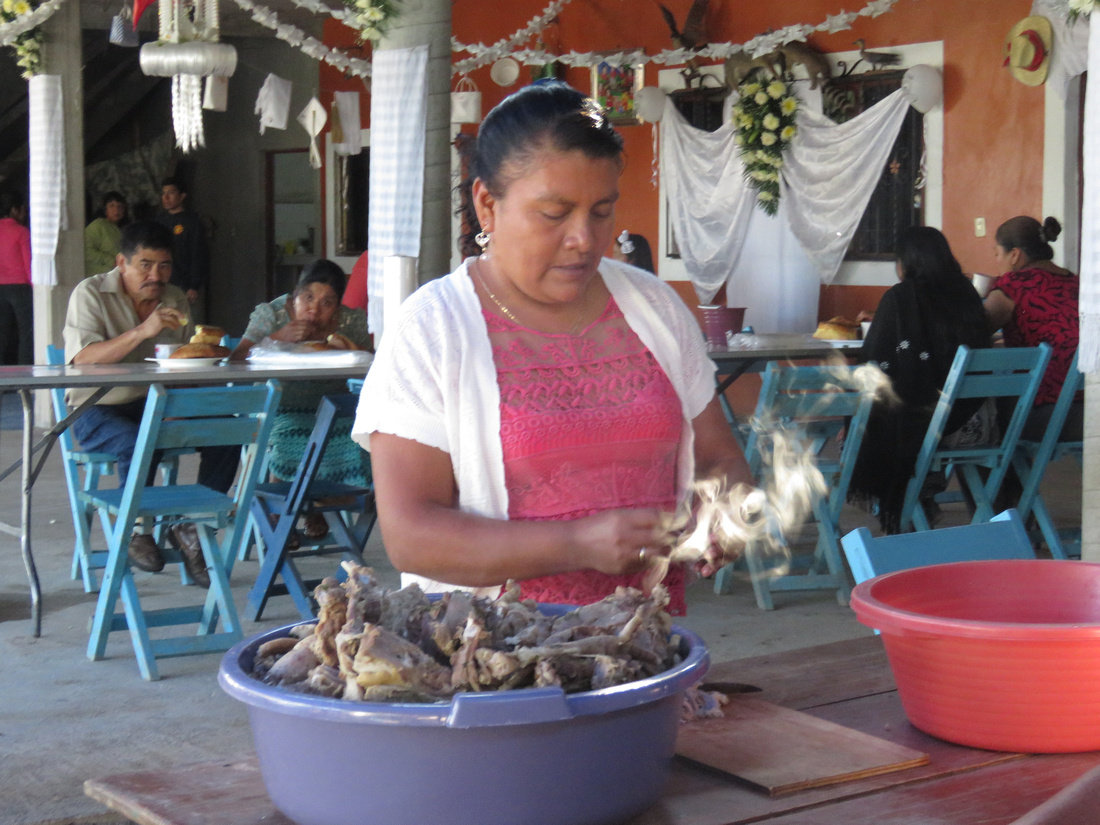

All guests received three pieces of bread to eat with their chocolate.
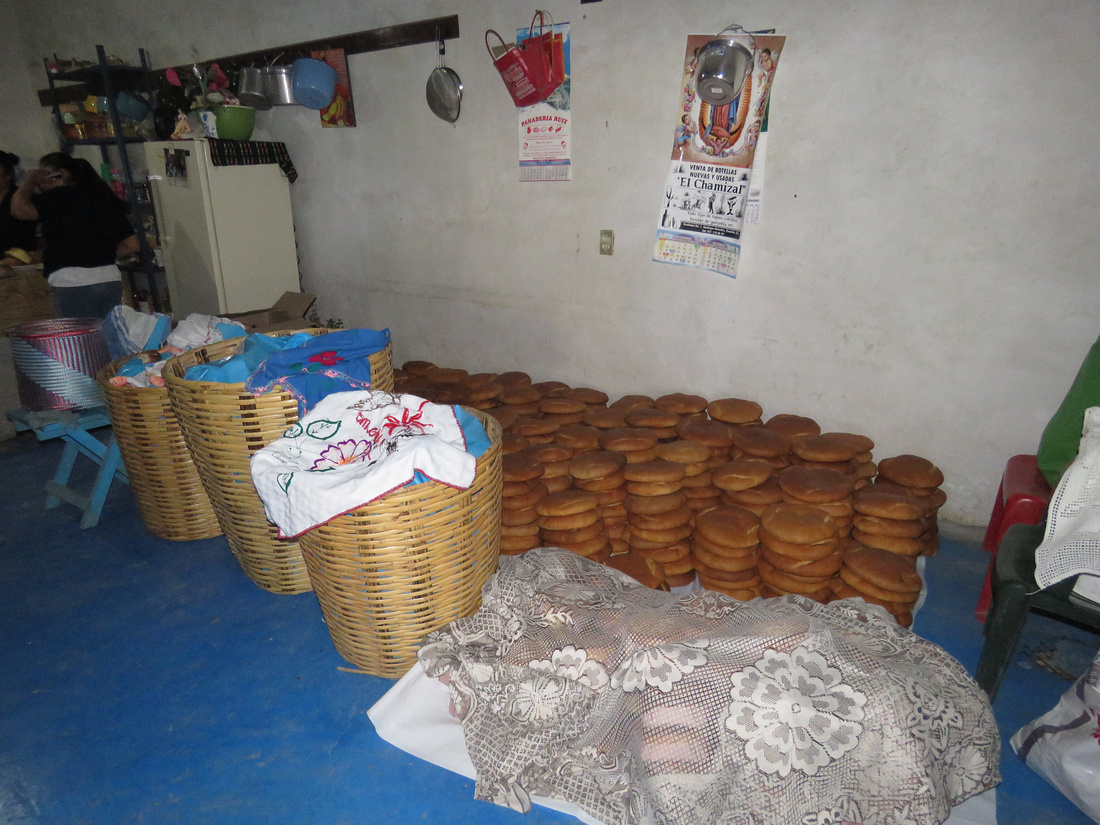

Dolores indoor kitchen is large and great for preparing chocolate and sweet bread ready to be served to guests.
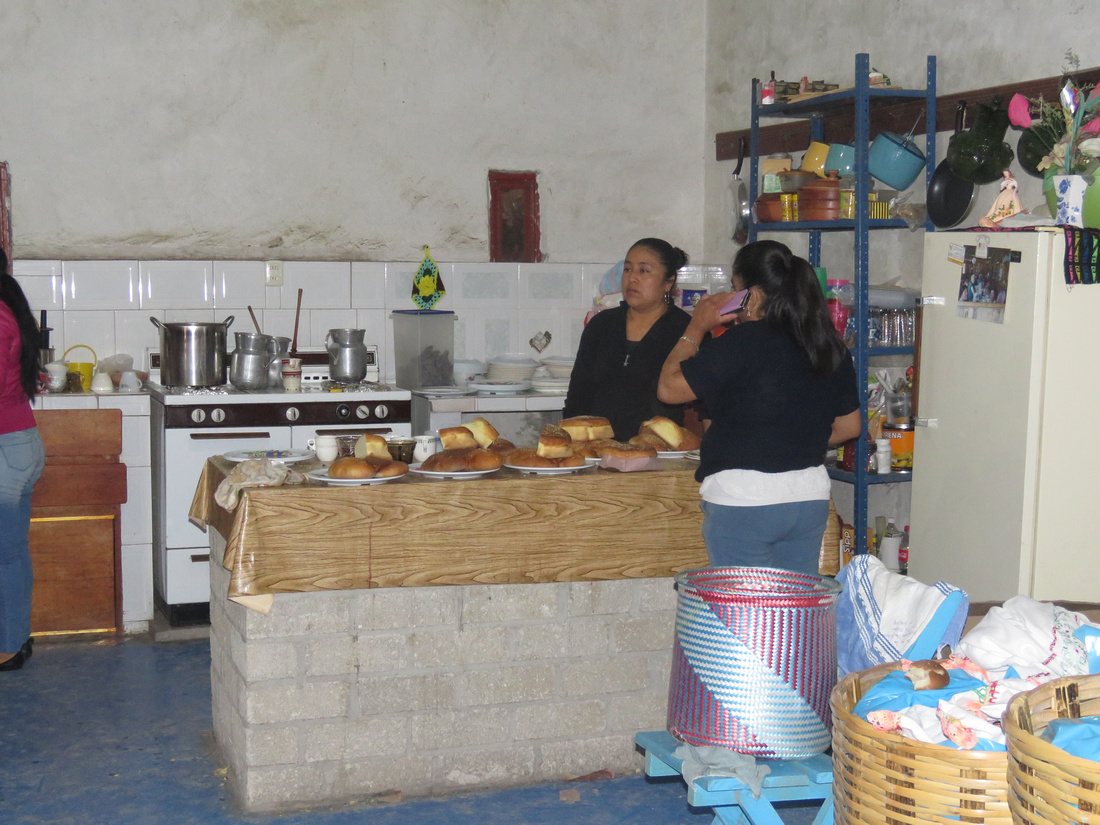

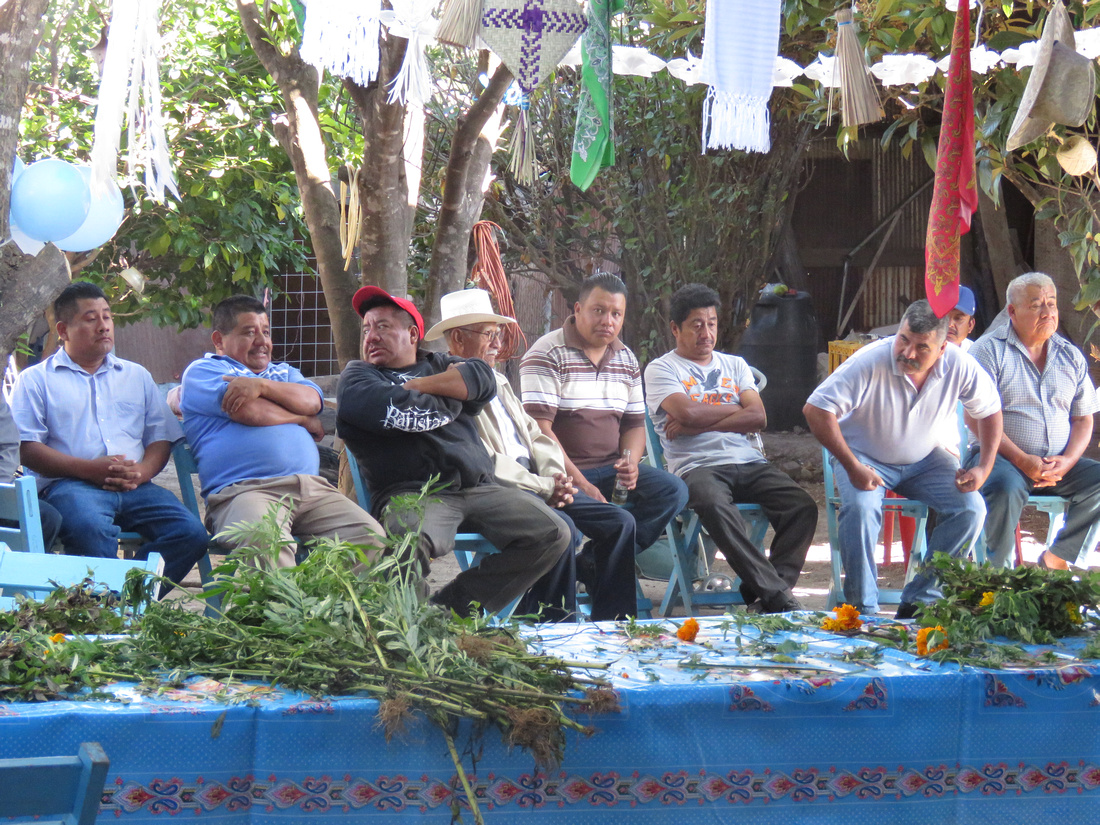

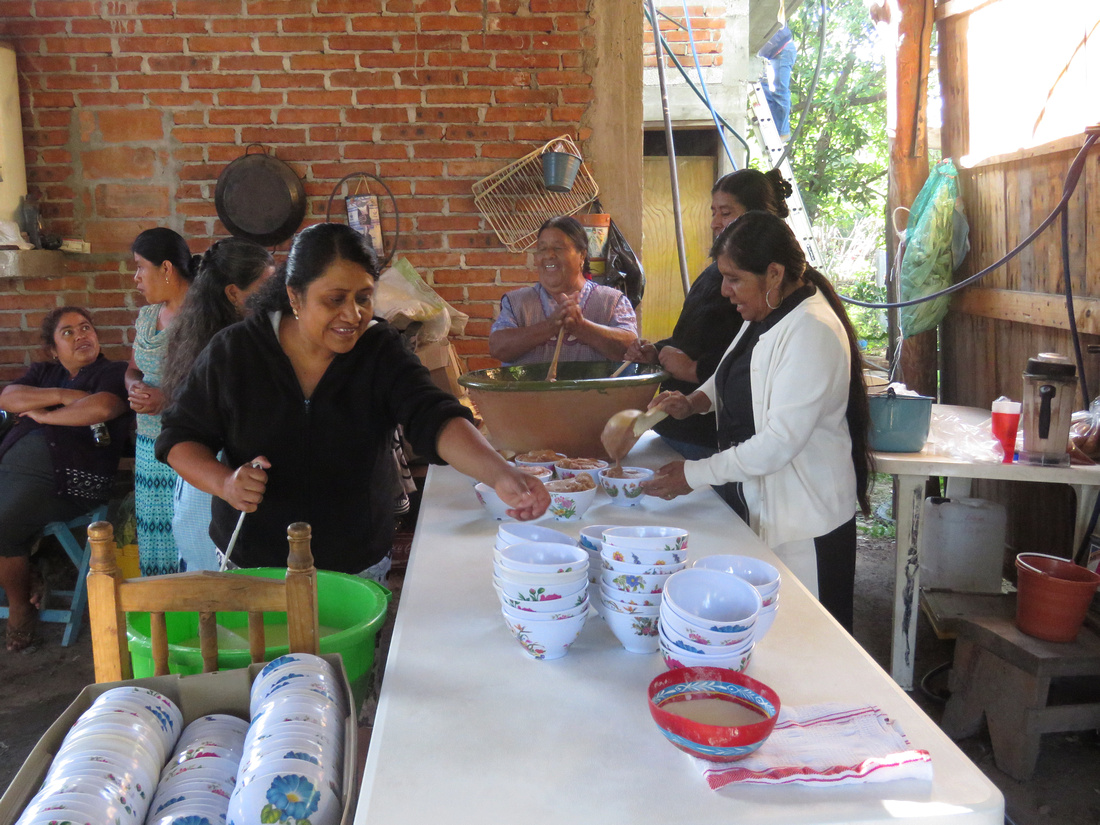

I have no idea how many tortillas were made but it had to be in the hundreds. Two women were assigned to the task.
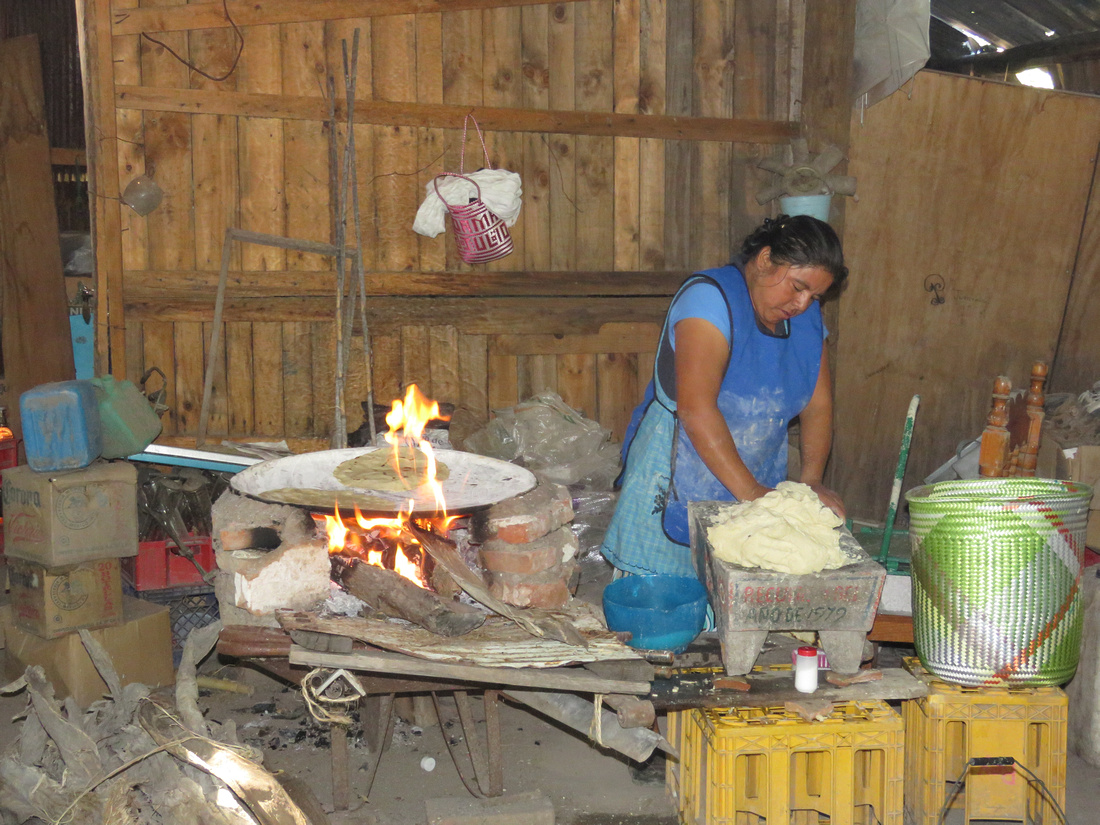



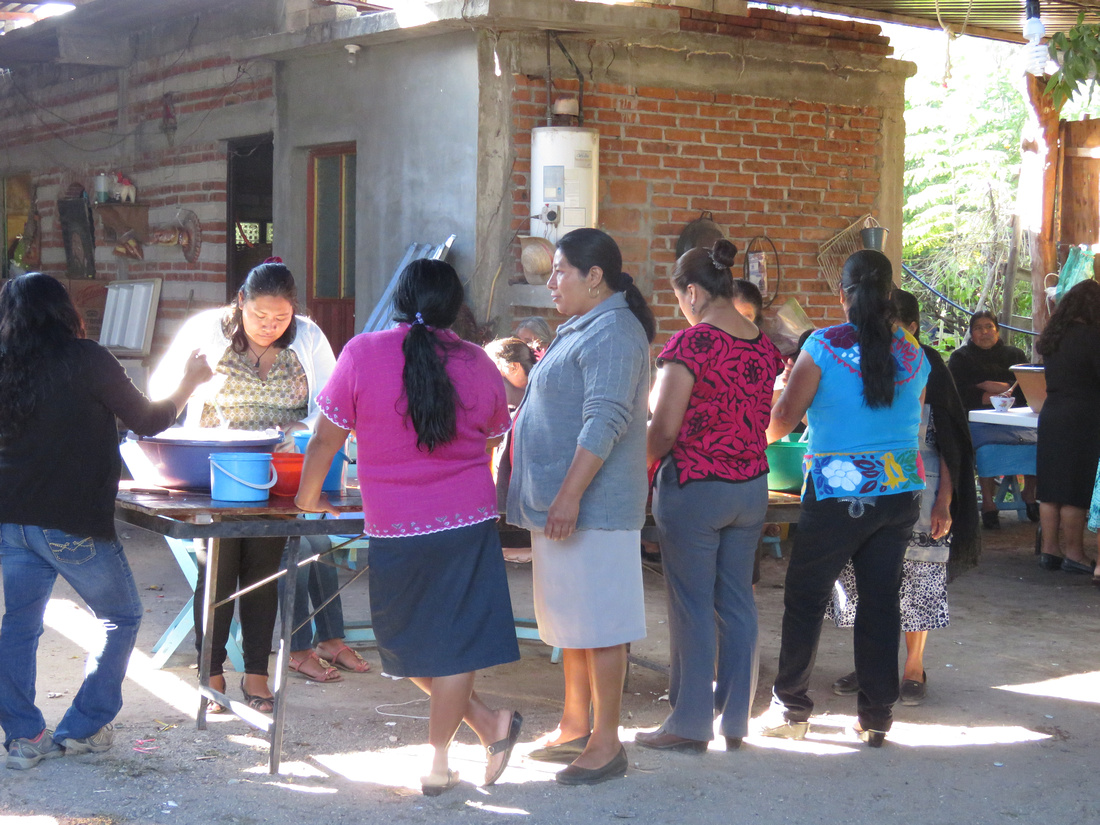

The morning of the wedding a local band of young men showed up. A lot of their music reminded me of marching songs.
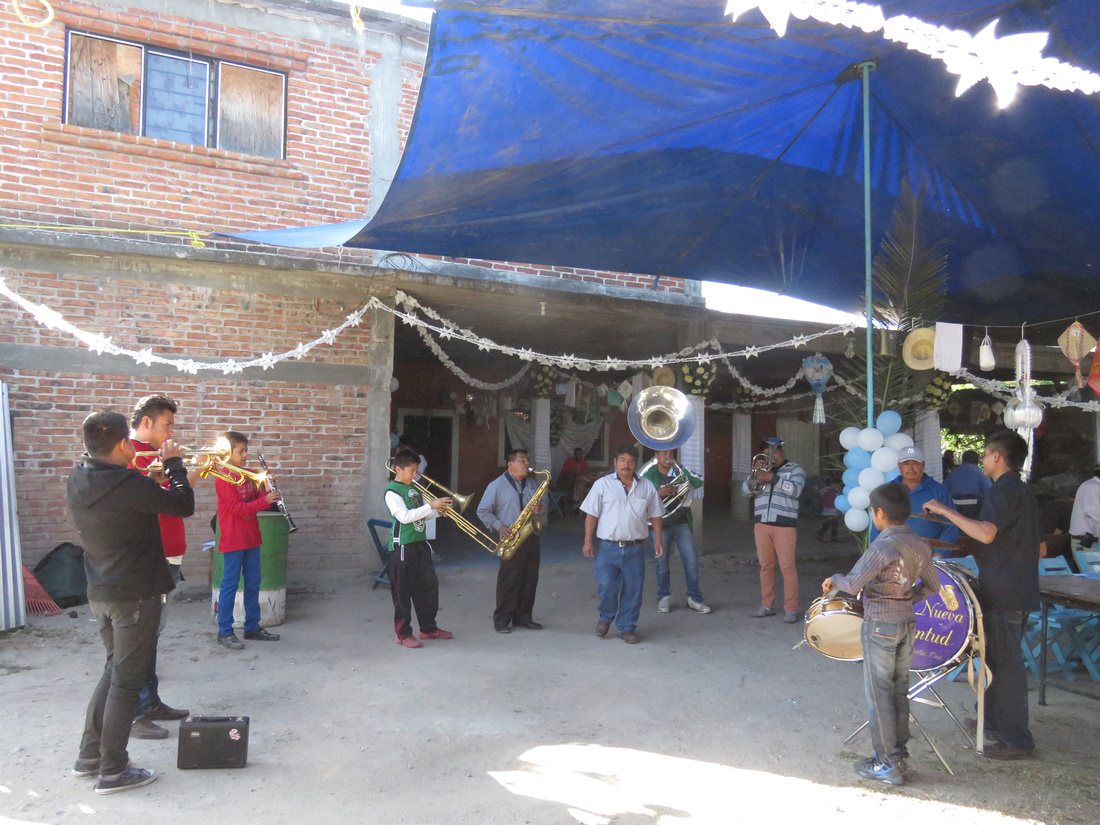

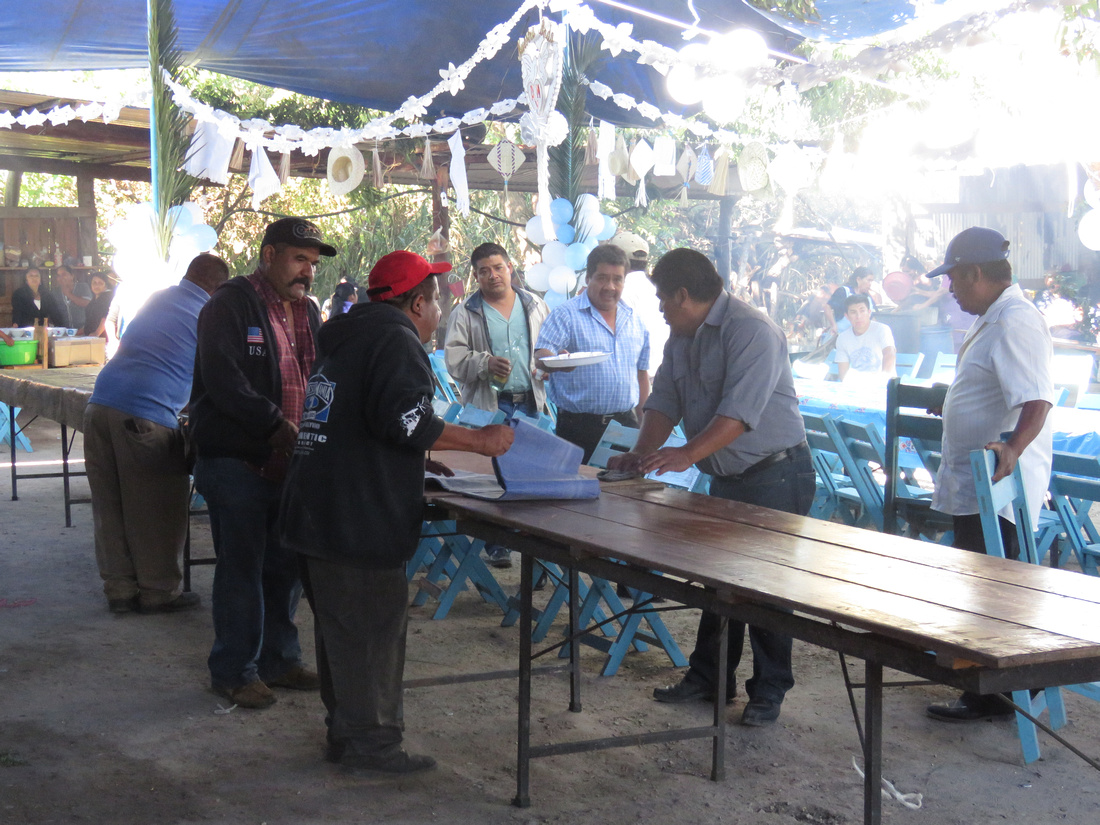

Beto receiving his first cup of mezcal.
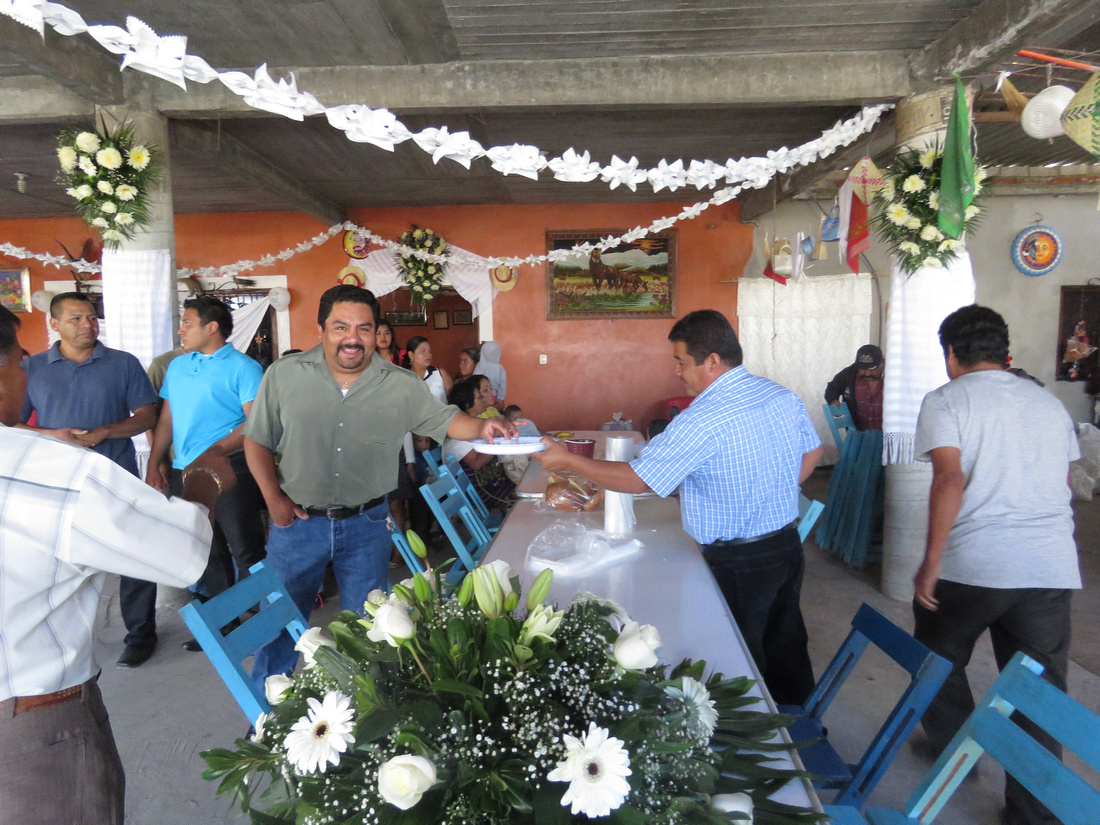

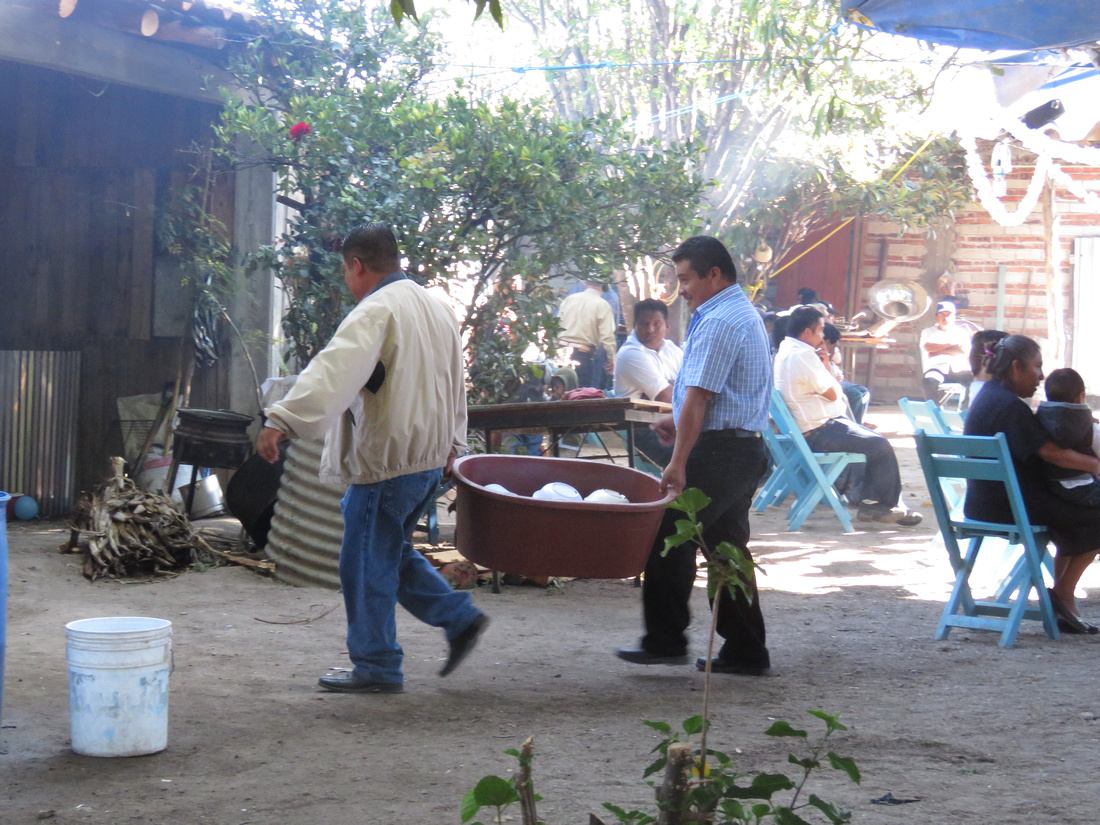

Breakfast was higaditos (a type of scrambled eggs with chicken and spices in broth).
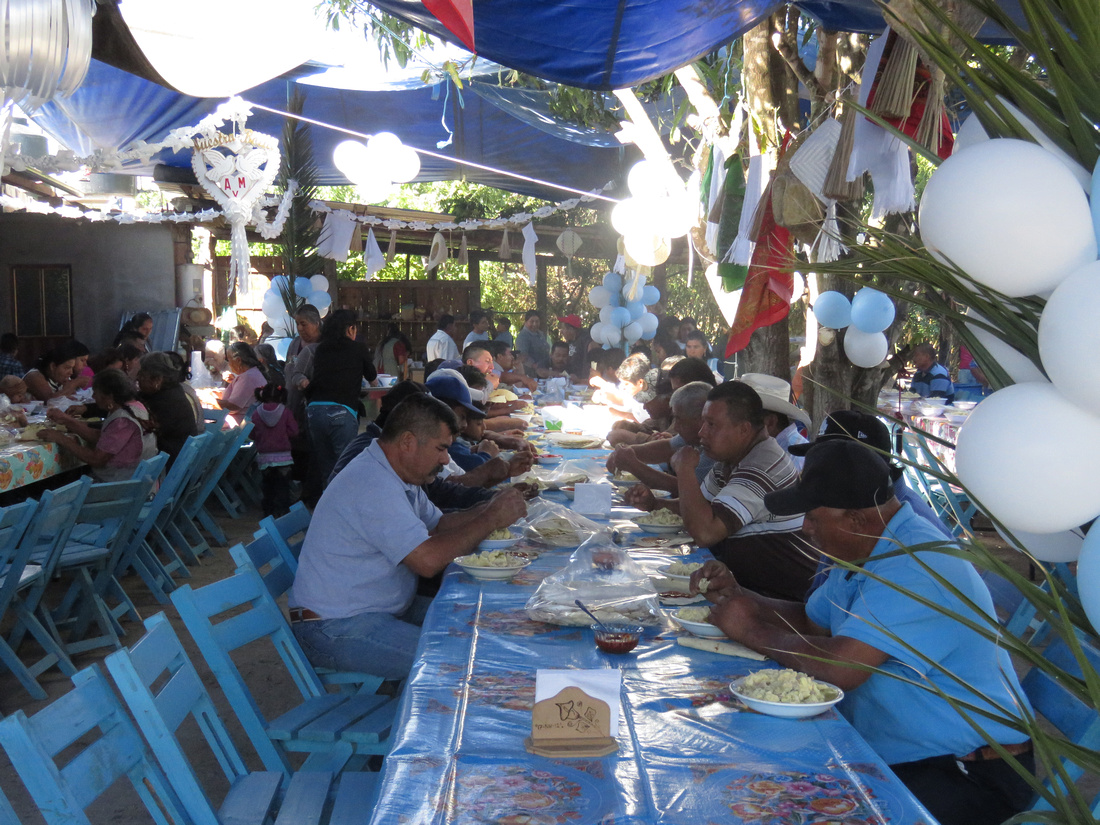

Beth is wiping down the rental chairs while breakfast is ready to be served.
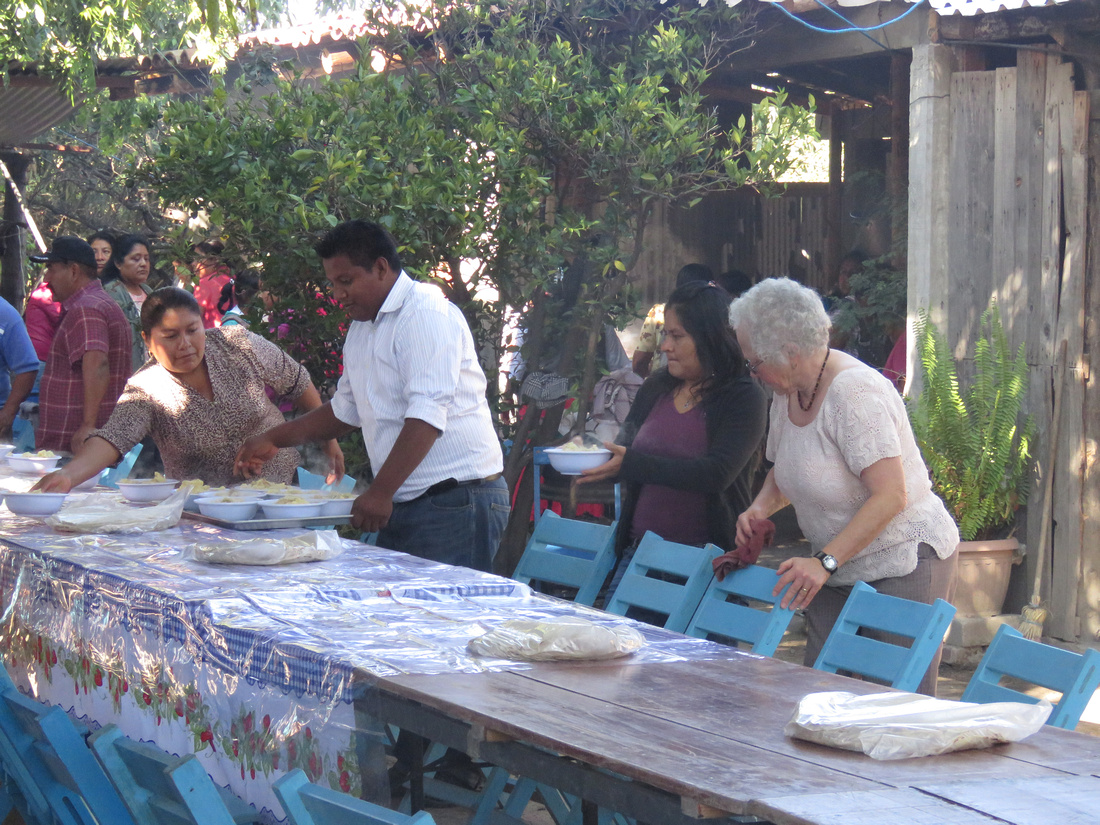

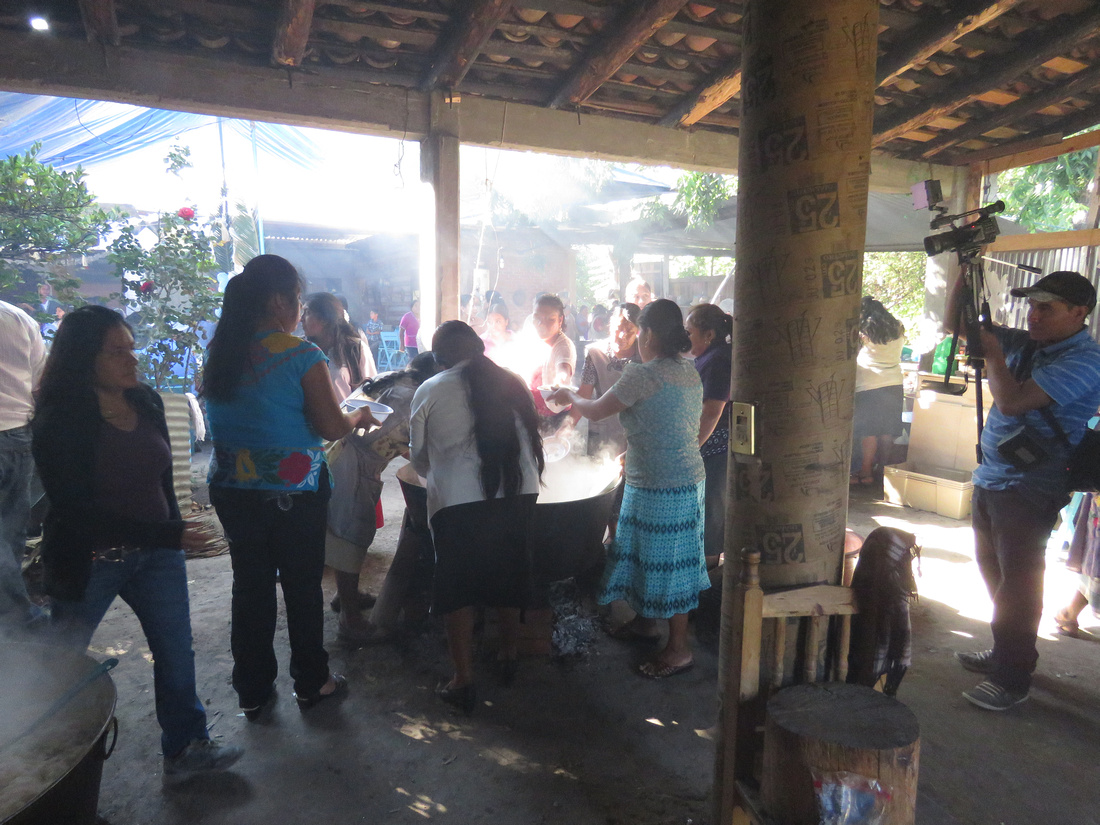

Beto and his extended family.
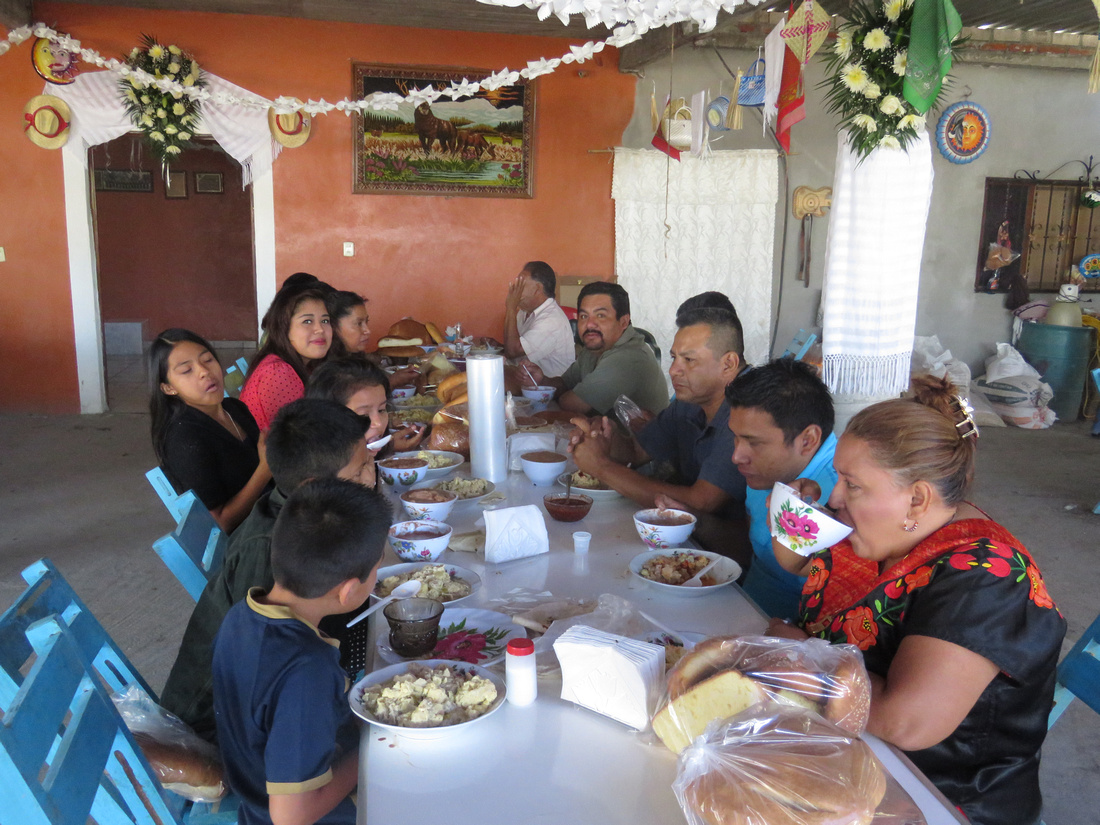

These things really make a noise.
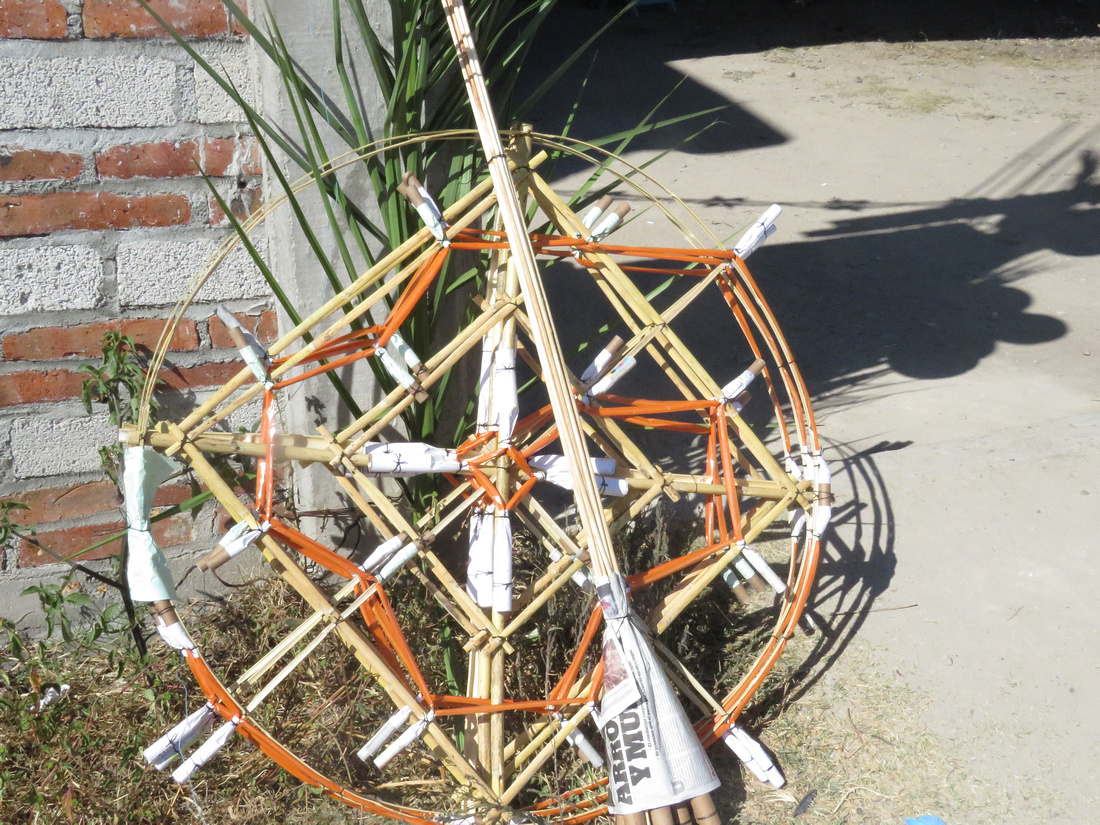

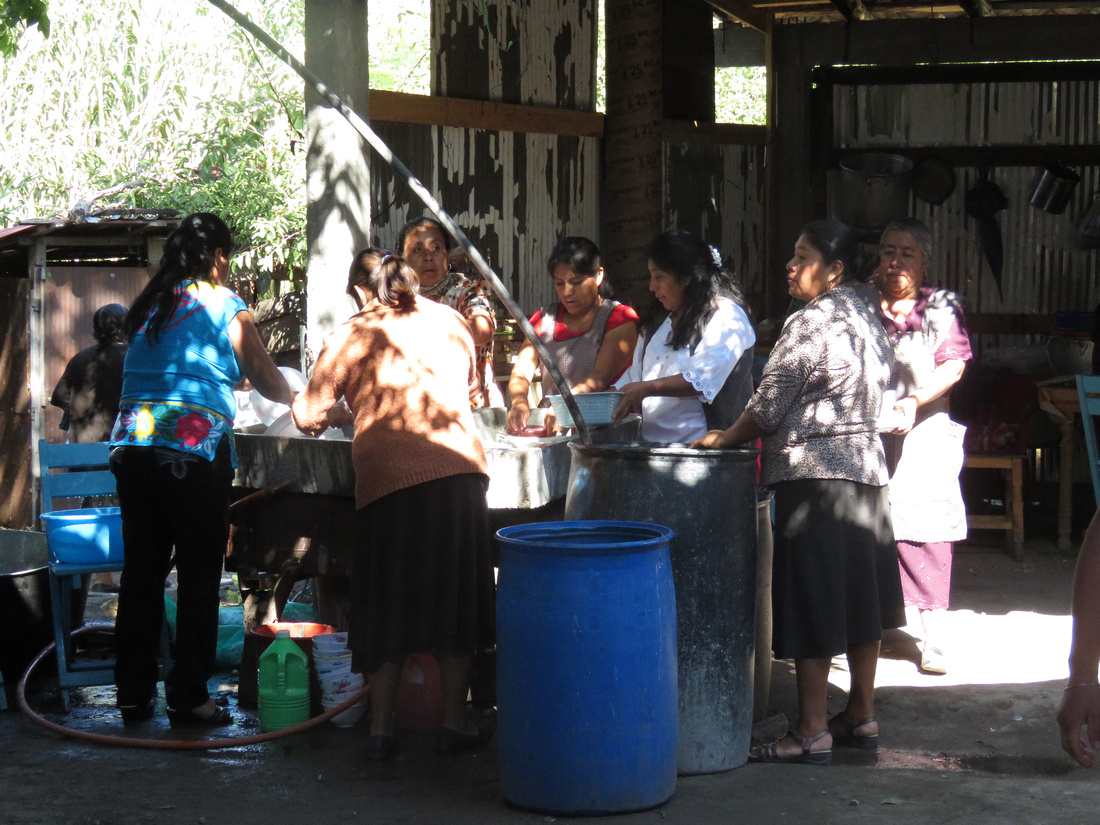

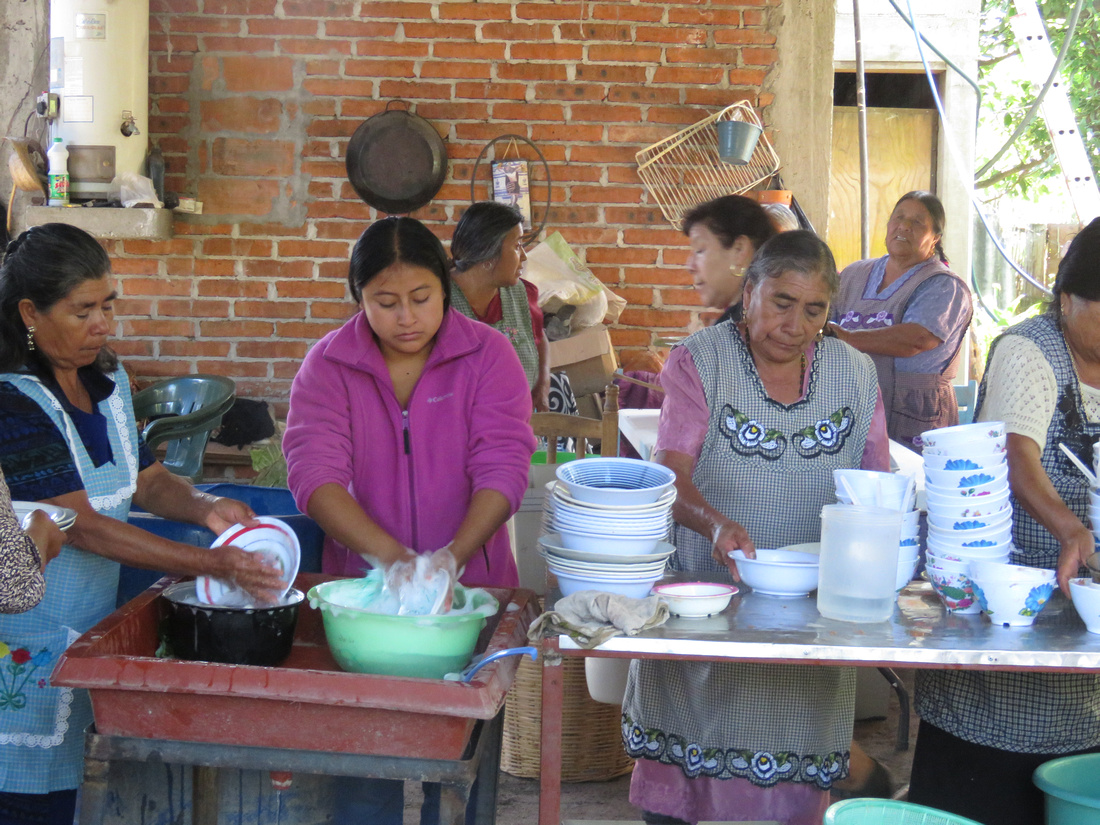

The young man on the left videoed the wedding.
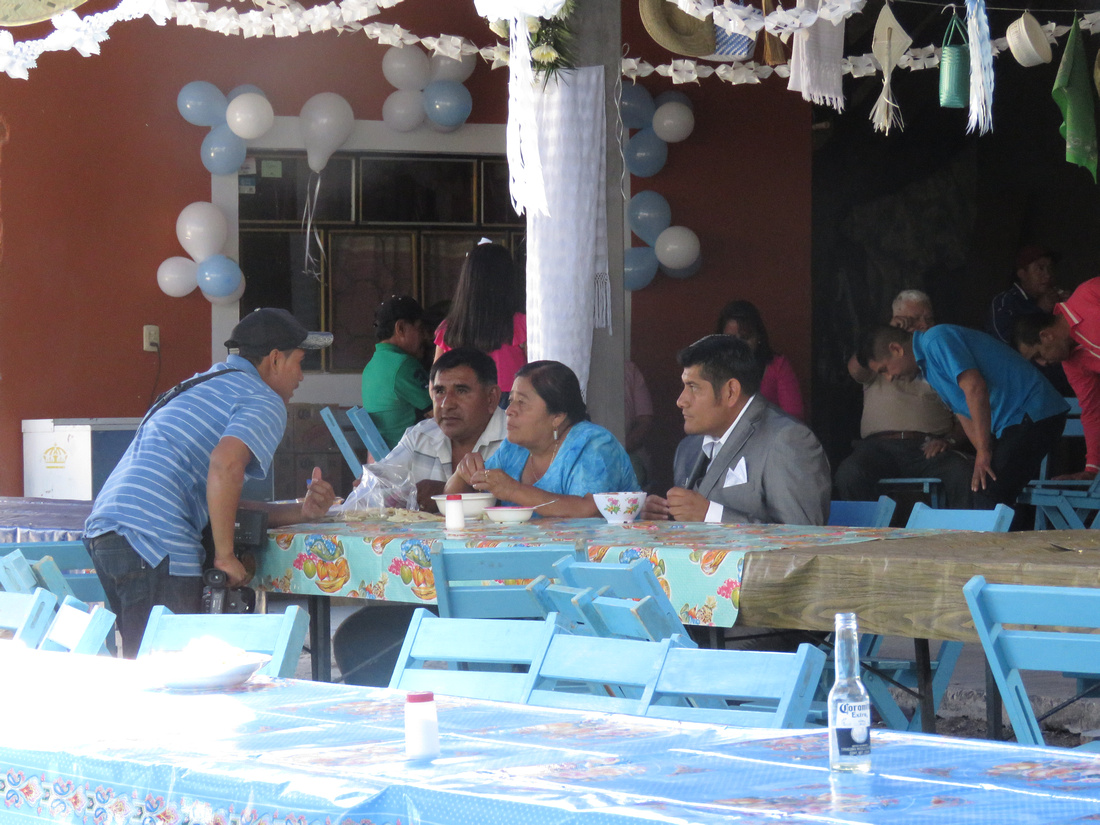

Walking to the church. People came out of their houses to watch the procession.


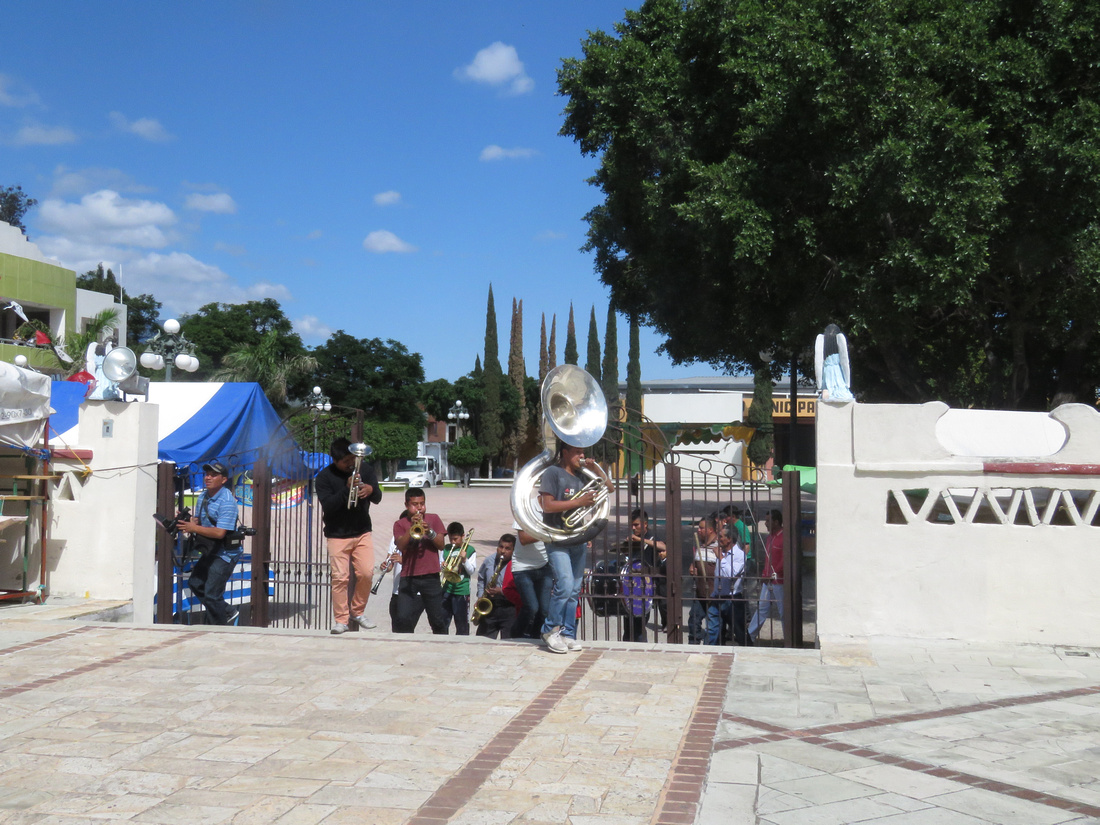

Typical Beto on his cell phone.


Monica came to the church by auto. She's waiting to enter the church.
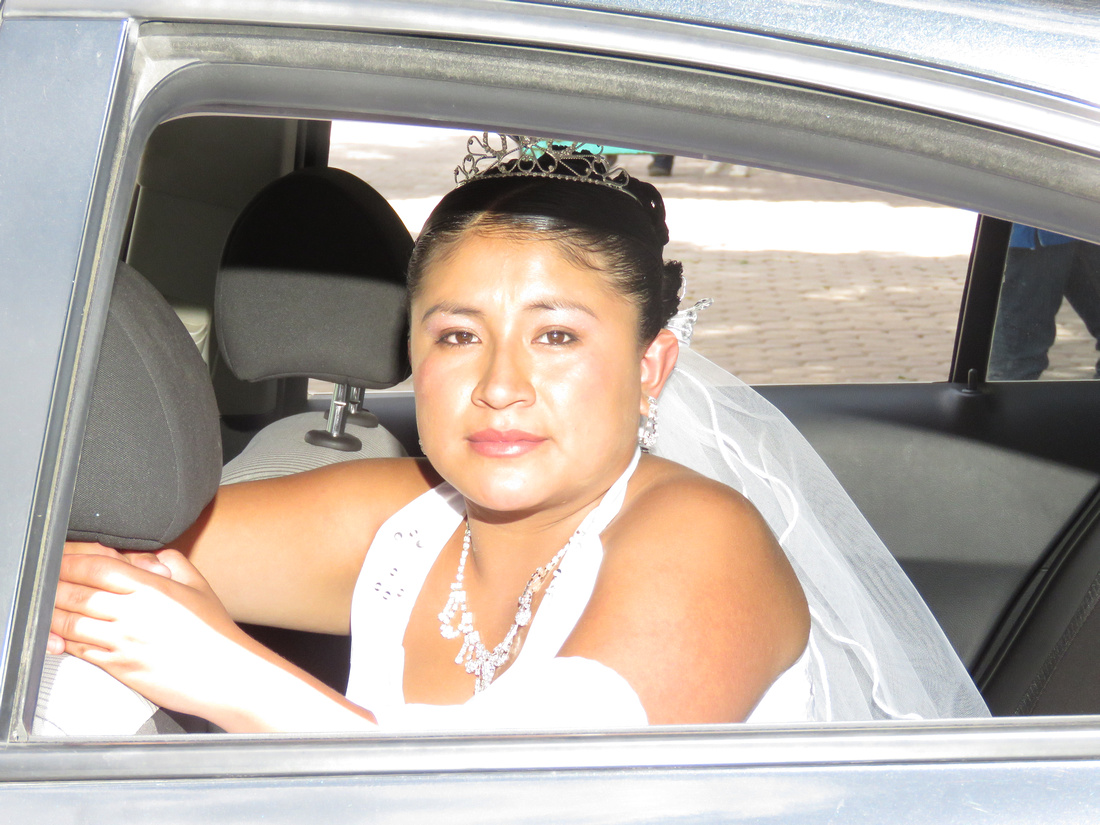

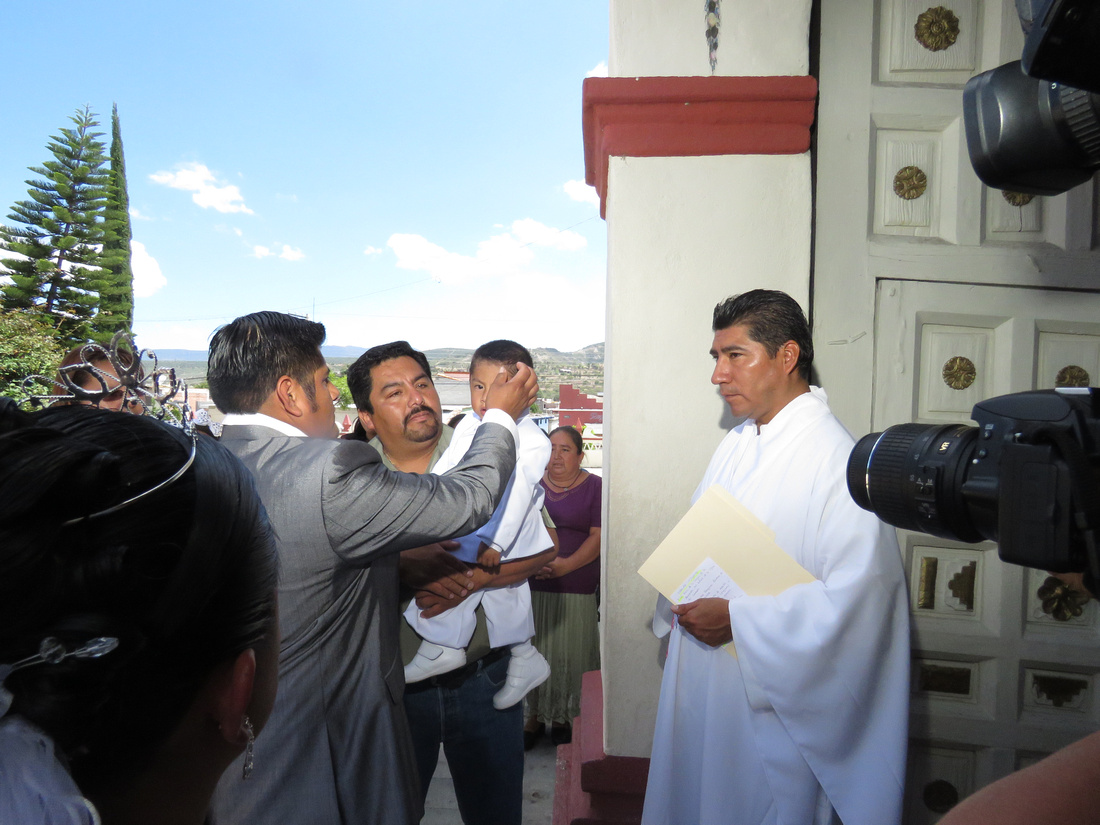

Giobanni being baptized.
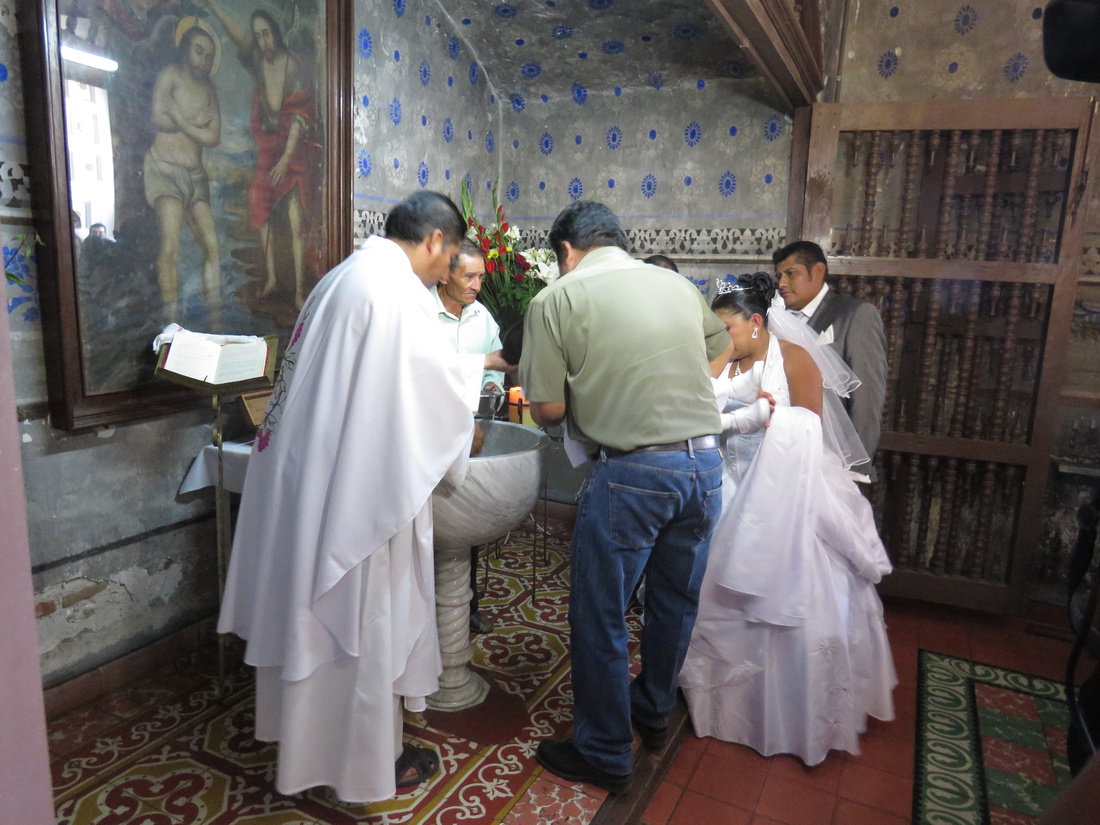

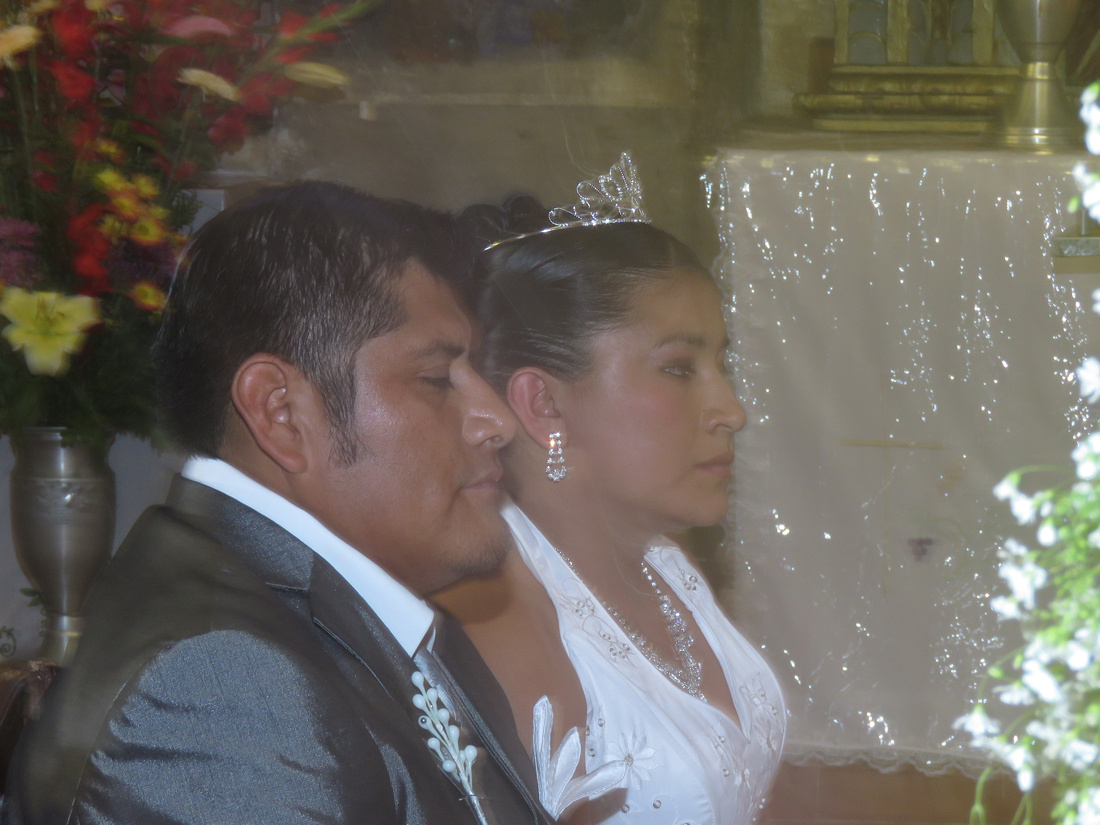

I believe the significance of the chain is to bind the couple together.
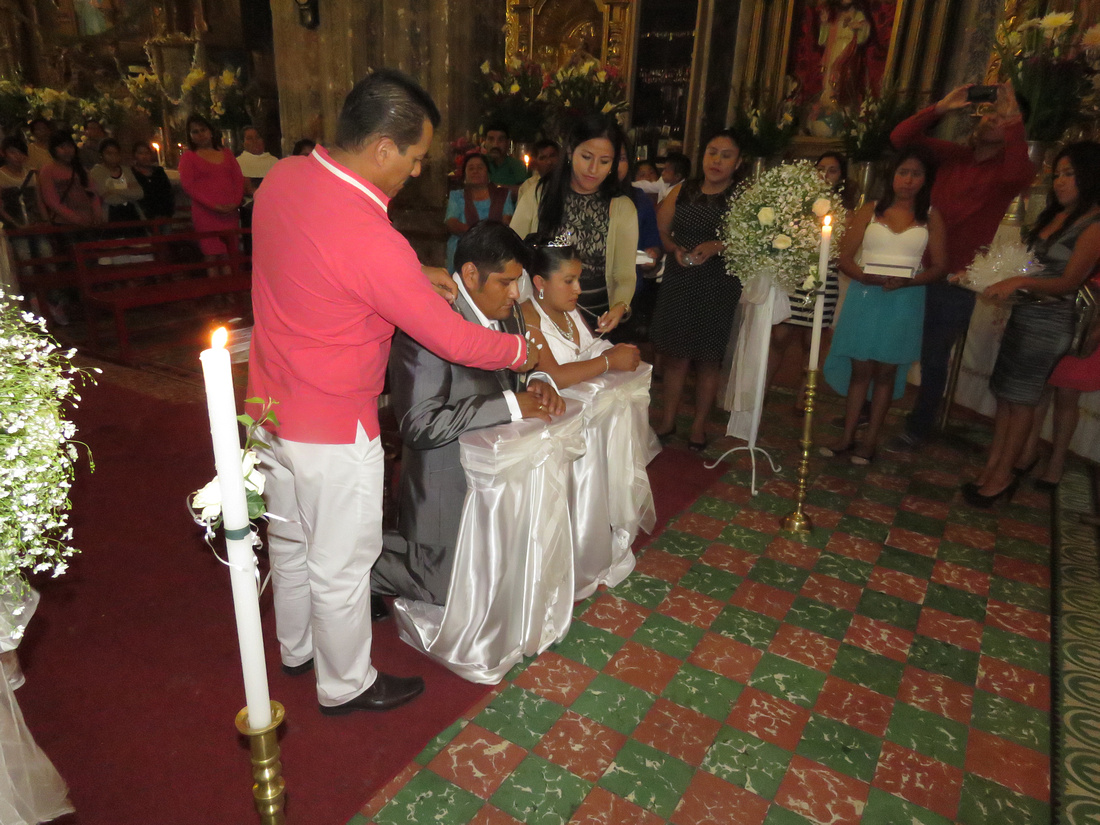



Exiting the church. My favorite photo of the day.
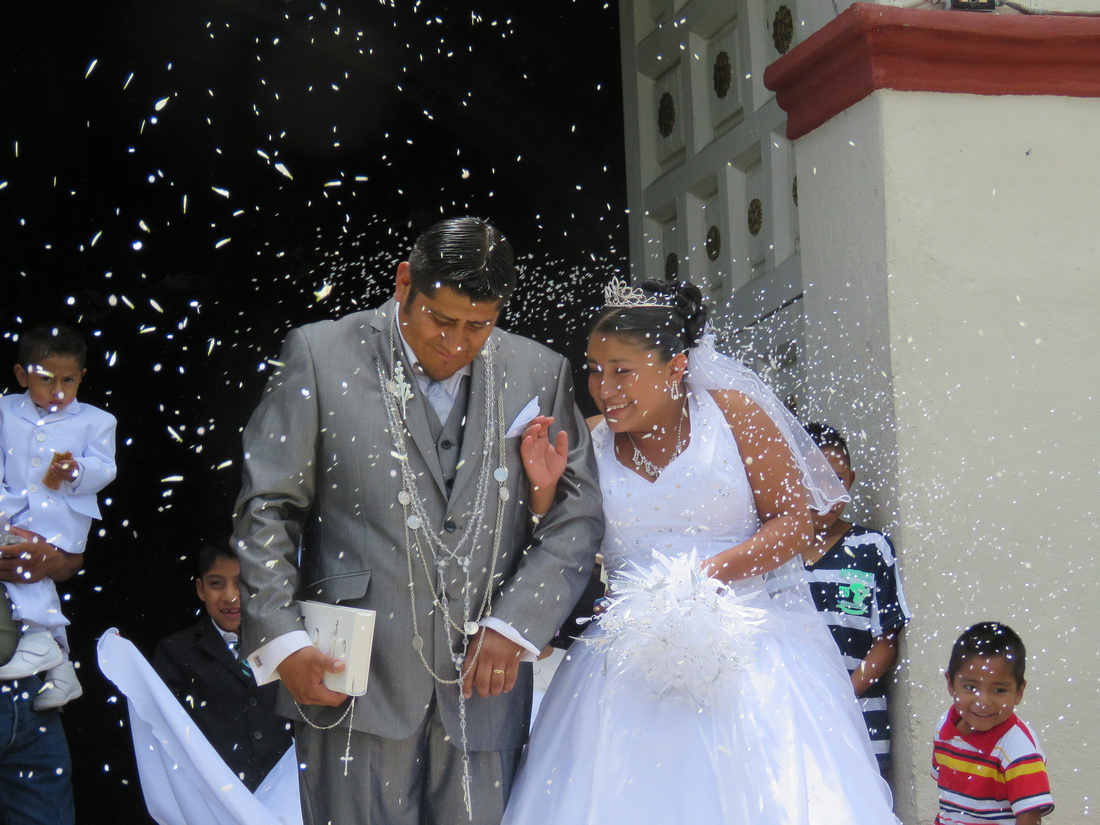



Returning home.


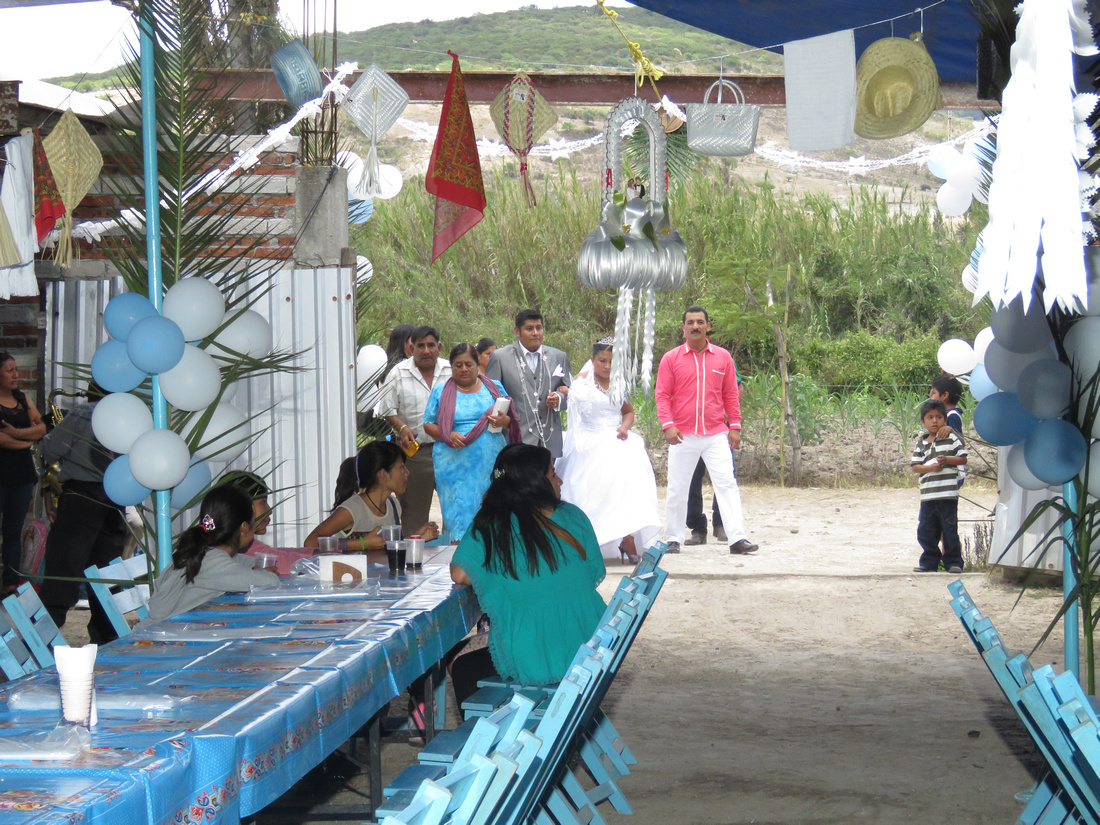

This is when I got hit.
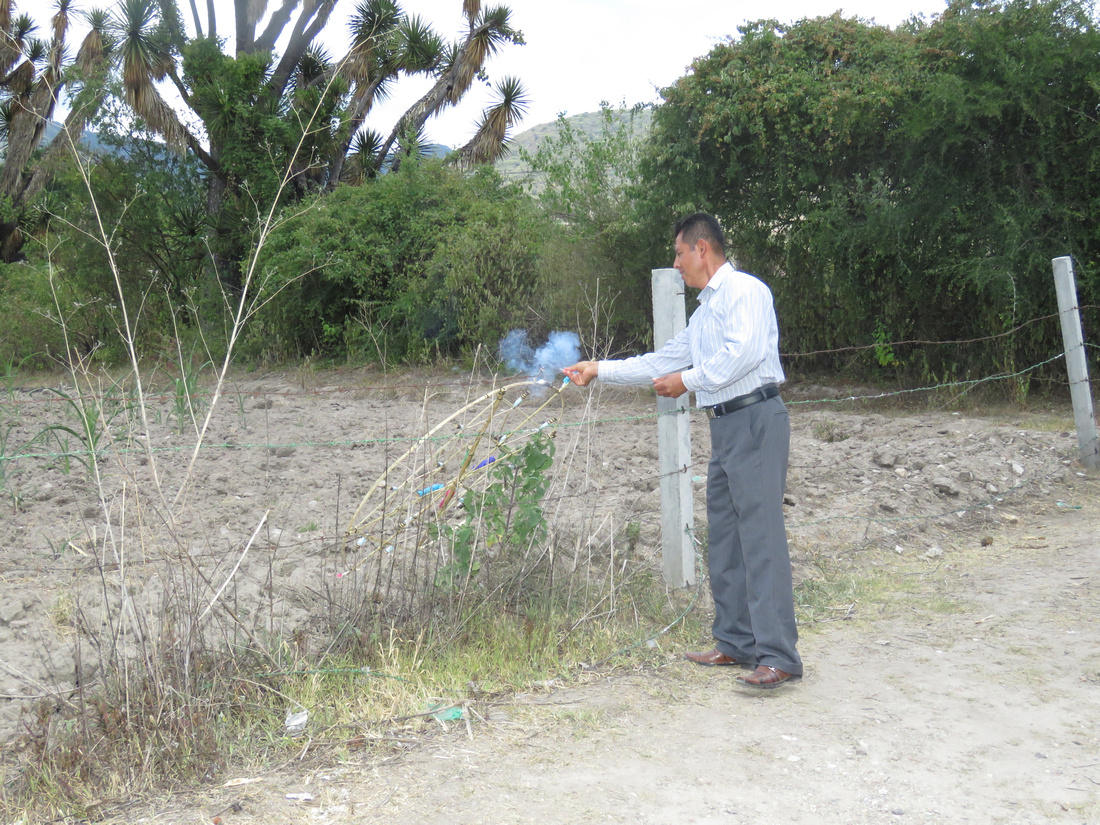

Nothing wrong with my camera. The incense created a lot of smoke.
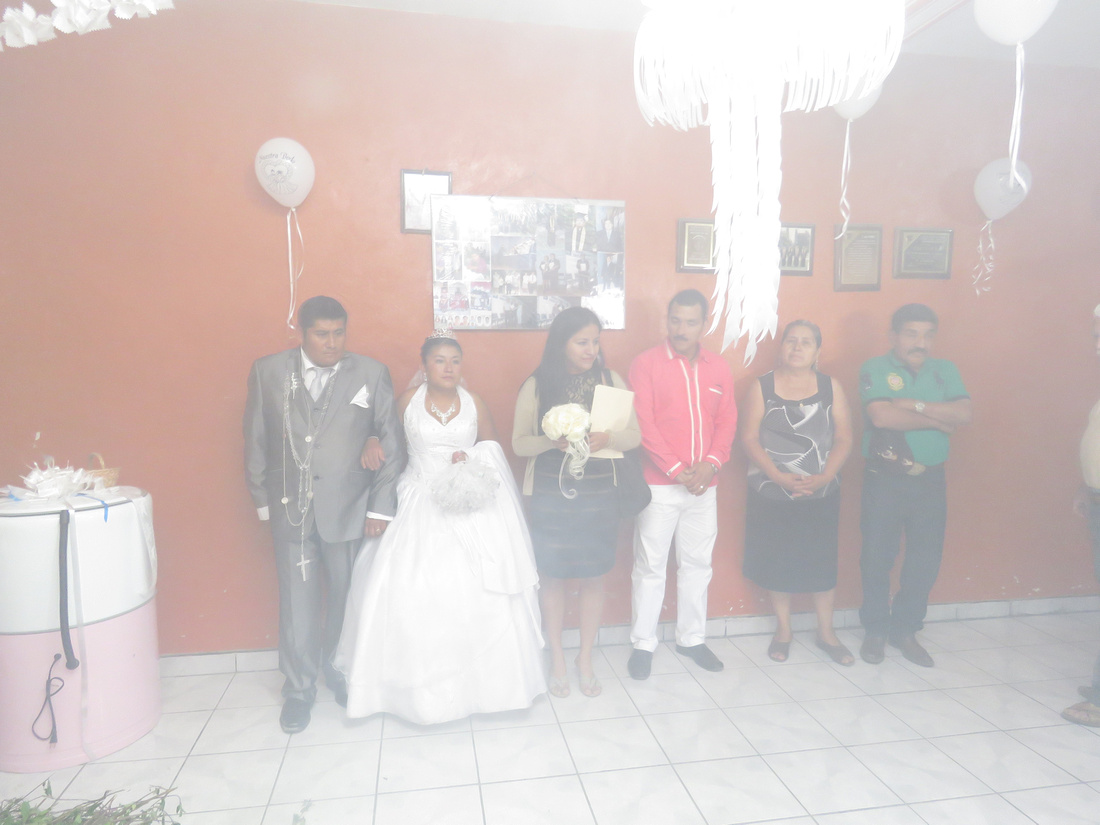

One thing I noticed is that people were not always eating the same thing at the same time. If you arrived late, you still began with chocolate and bread, and then breakfast.
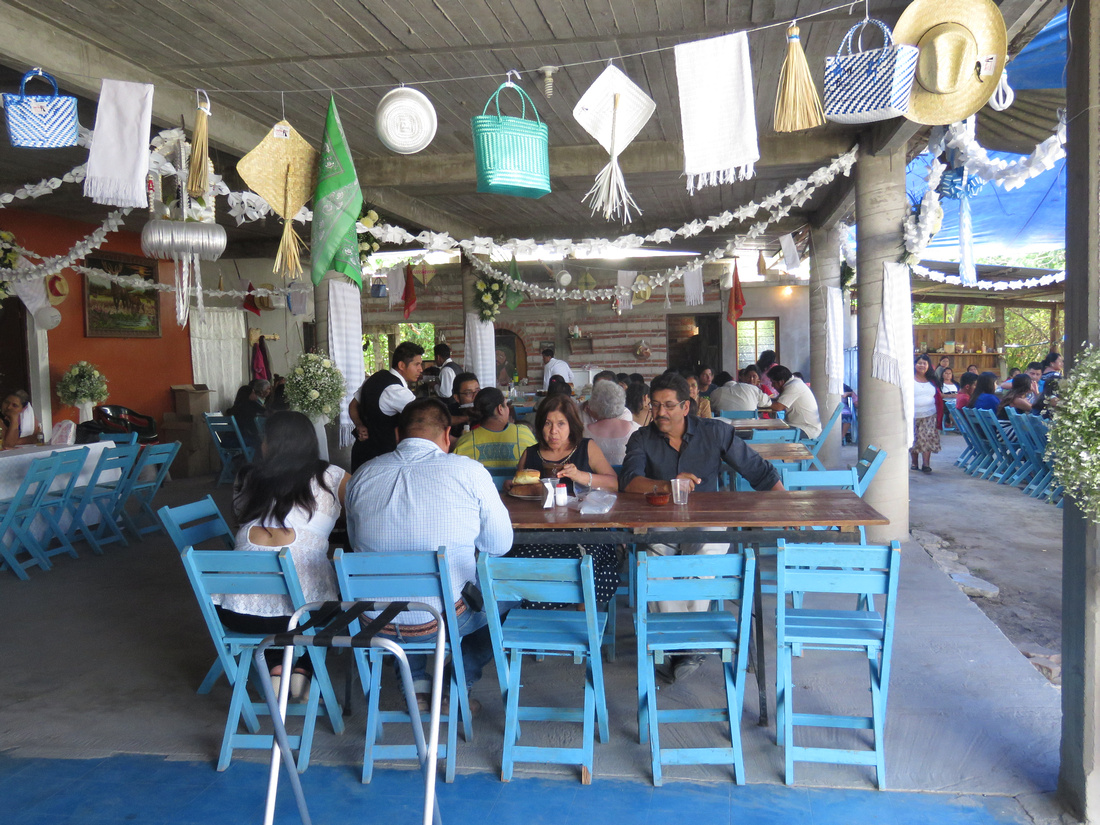

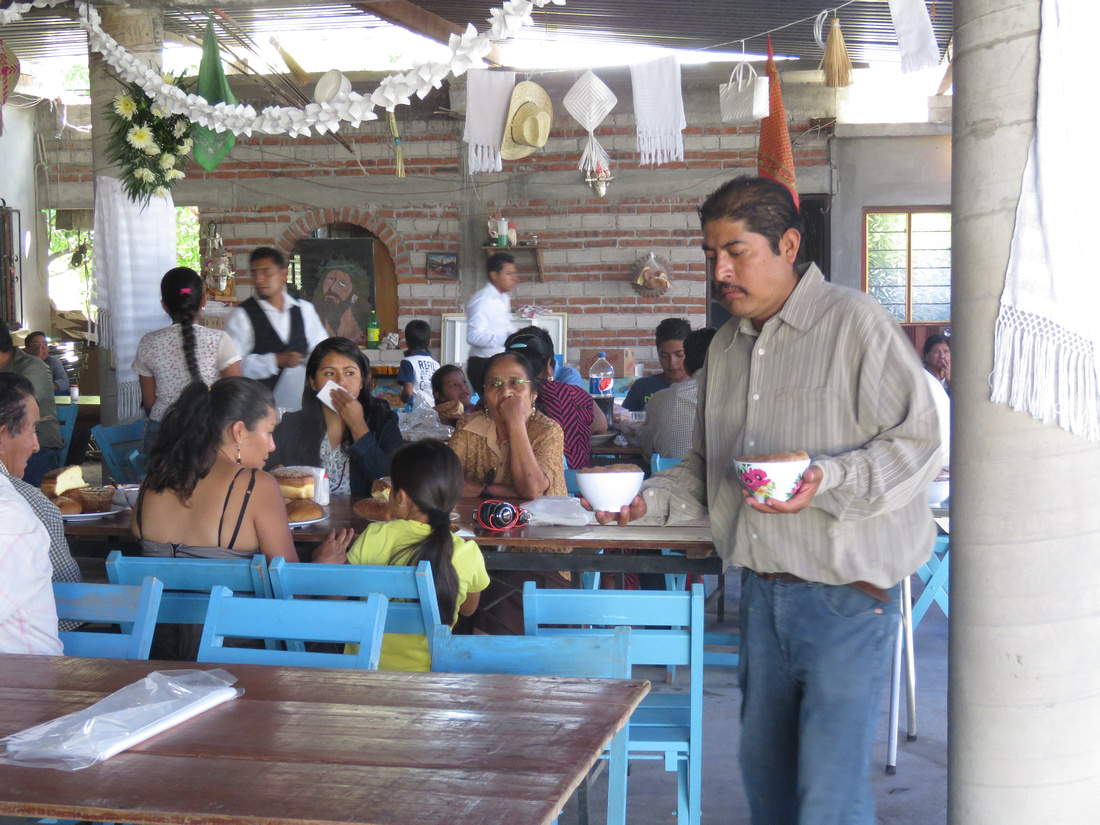

Again the vast majority of folks in the photos were Zapotec speakers. Juan hired waiters to help serve food and drinks.
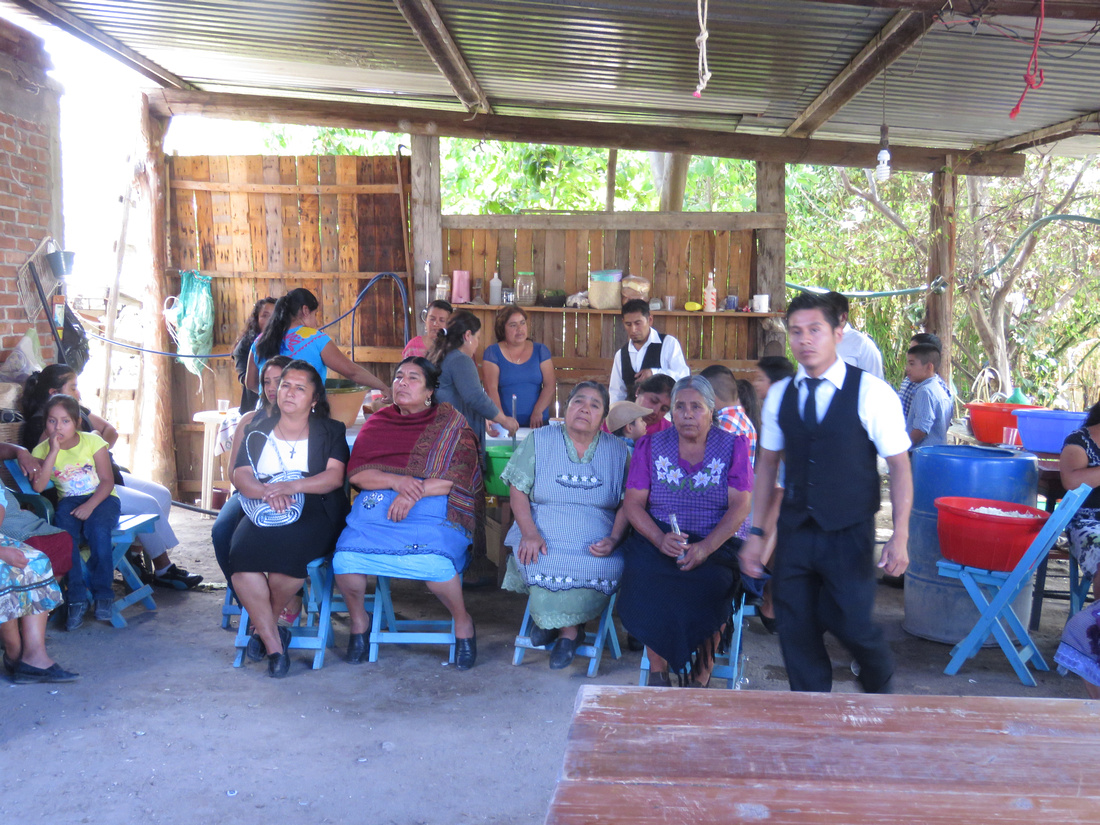

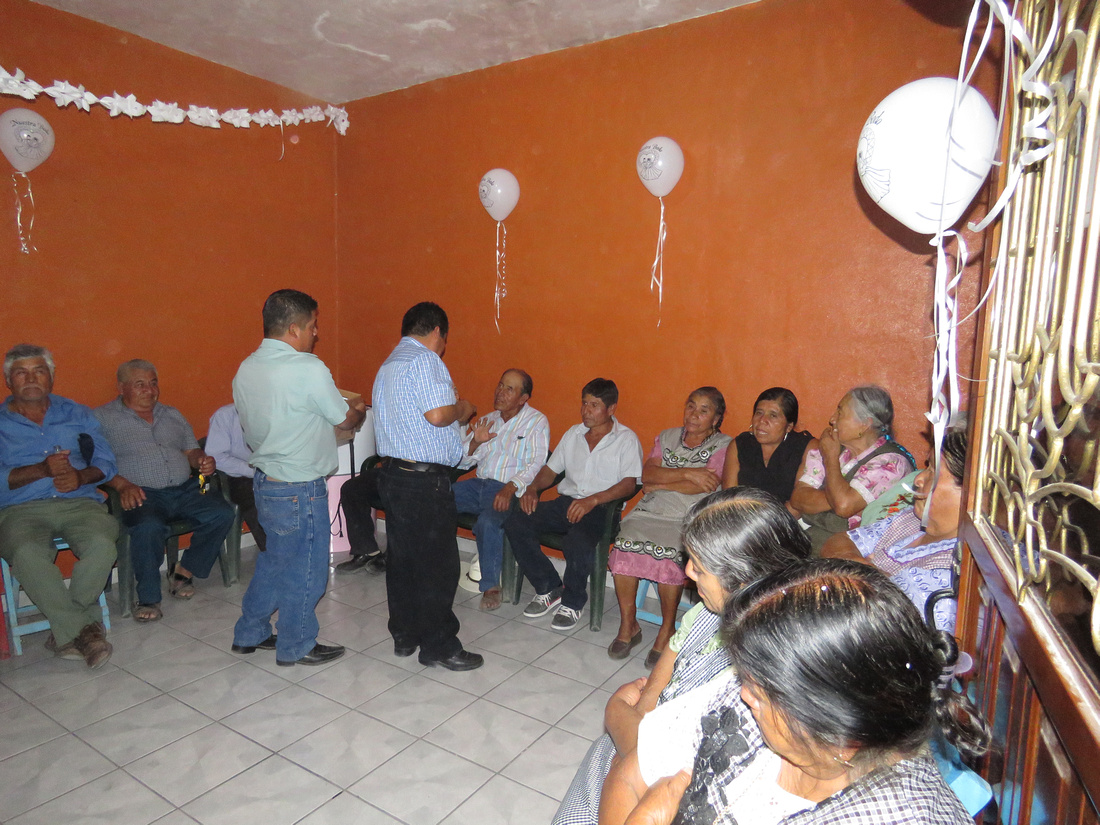

Uncovering the cow being cooked.
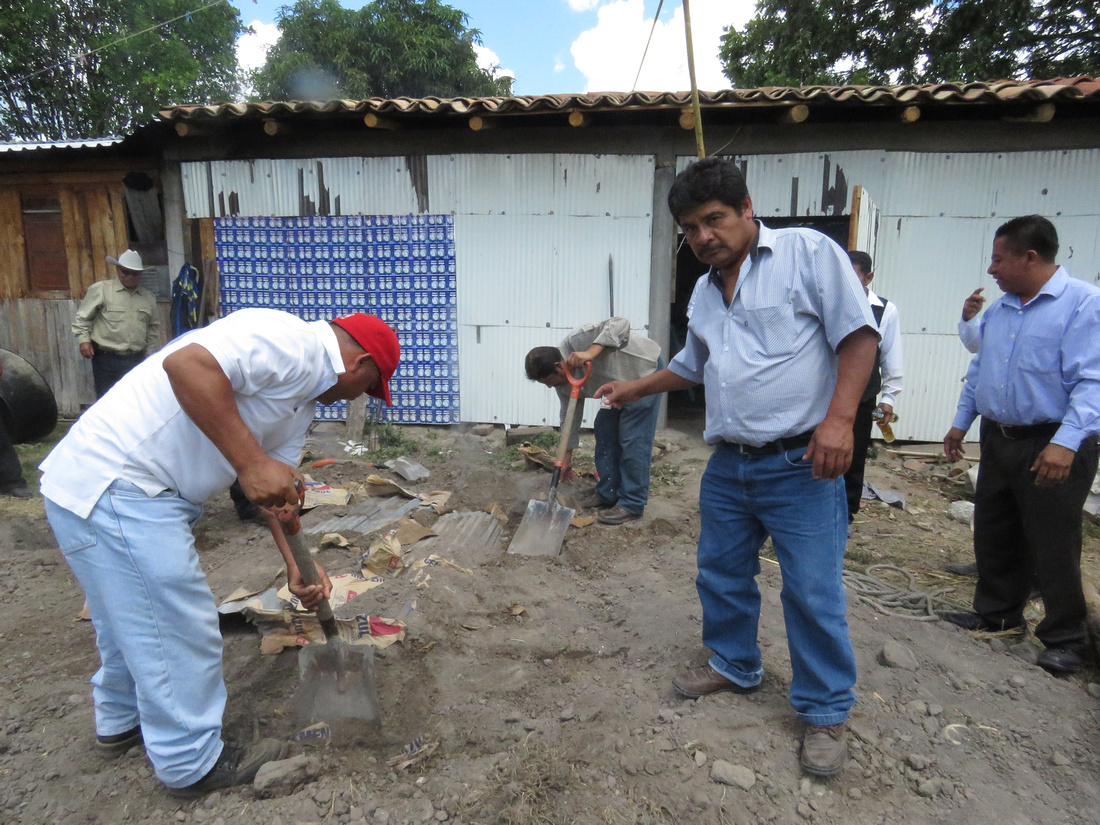

That tub weighed hundreds of pounds.
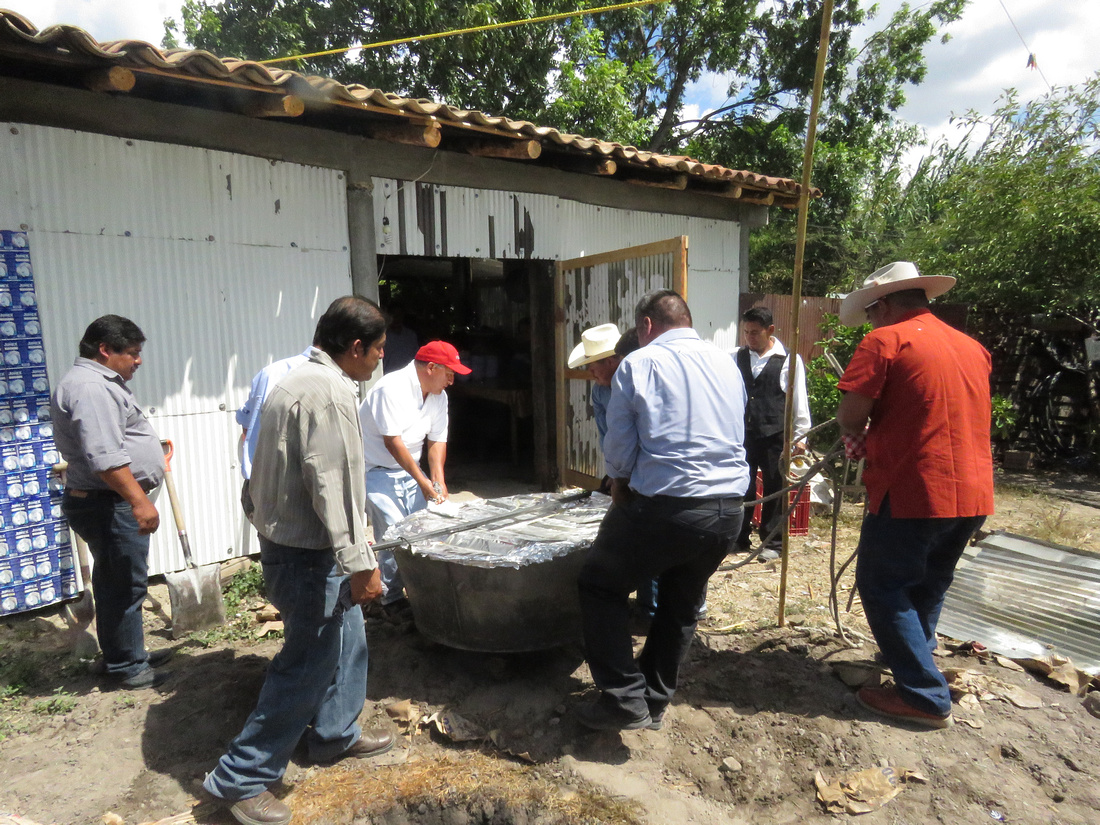

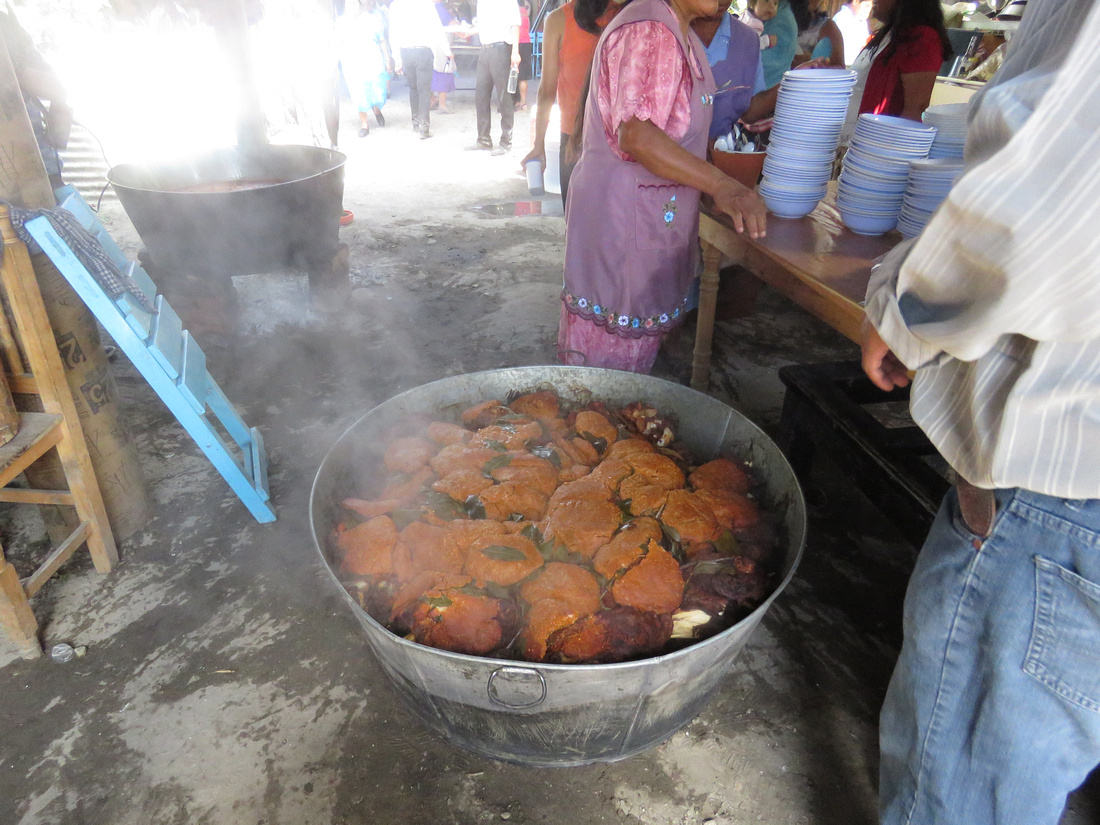

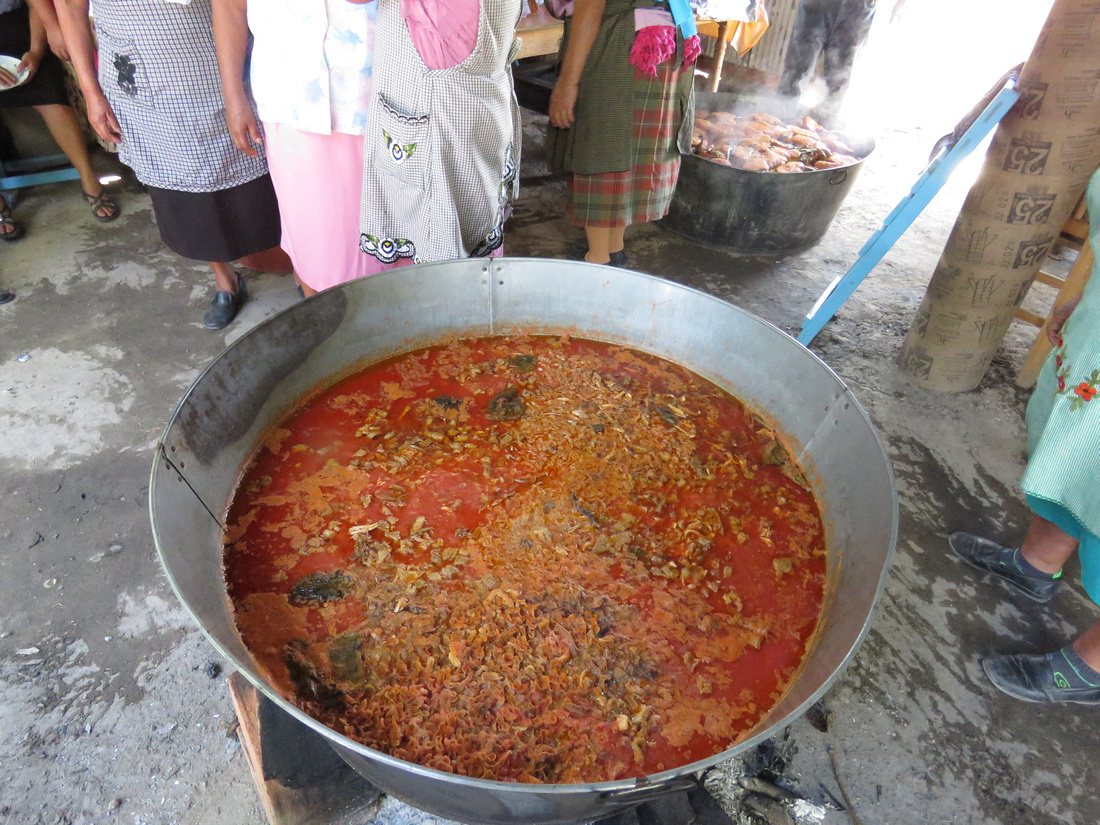

Monica with Beto's daughter, Yesenia.


Making and wearing these "coronas" of flowers and greens is another wedding tradition here in Matatlan.
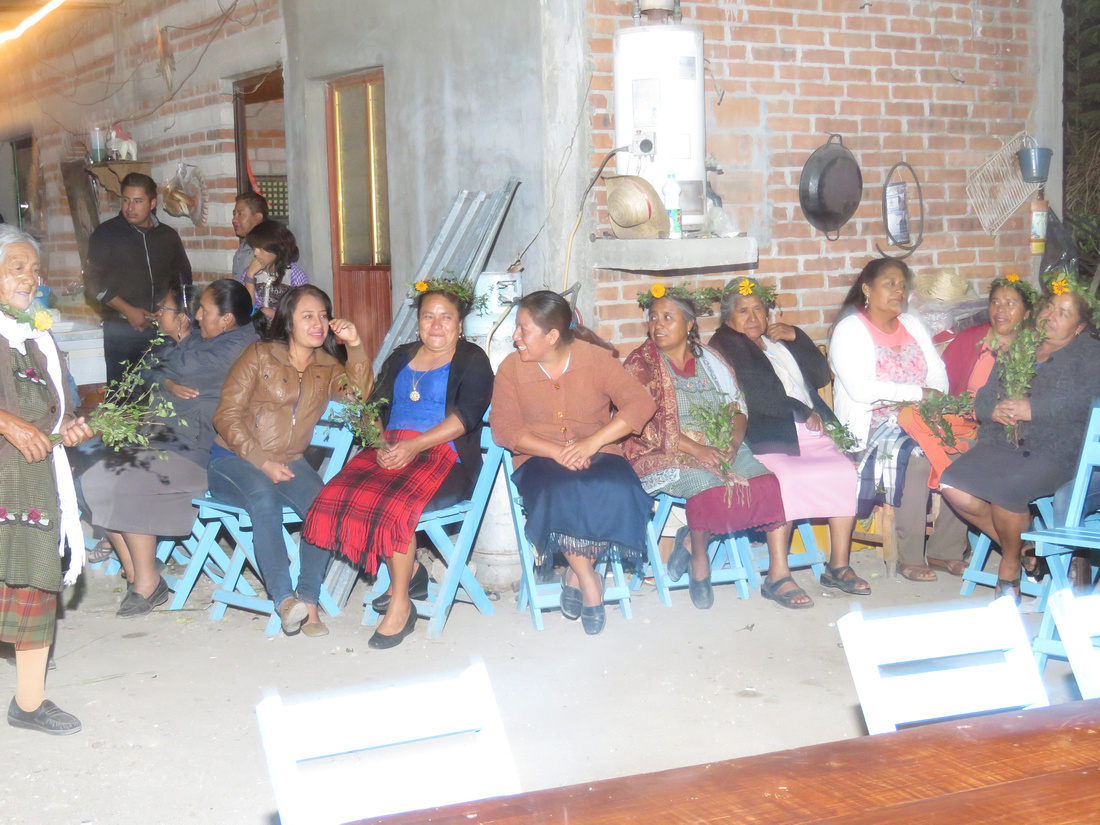



The baptism cake. The financial obligations of the padrinos are pretty significiant.
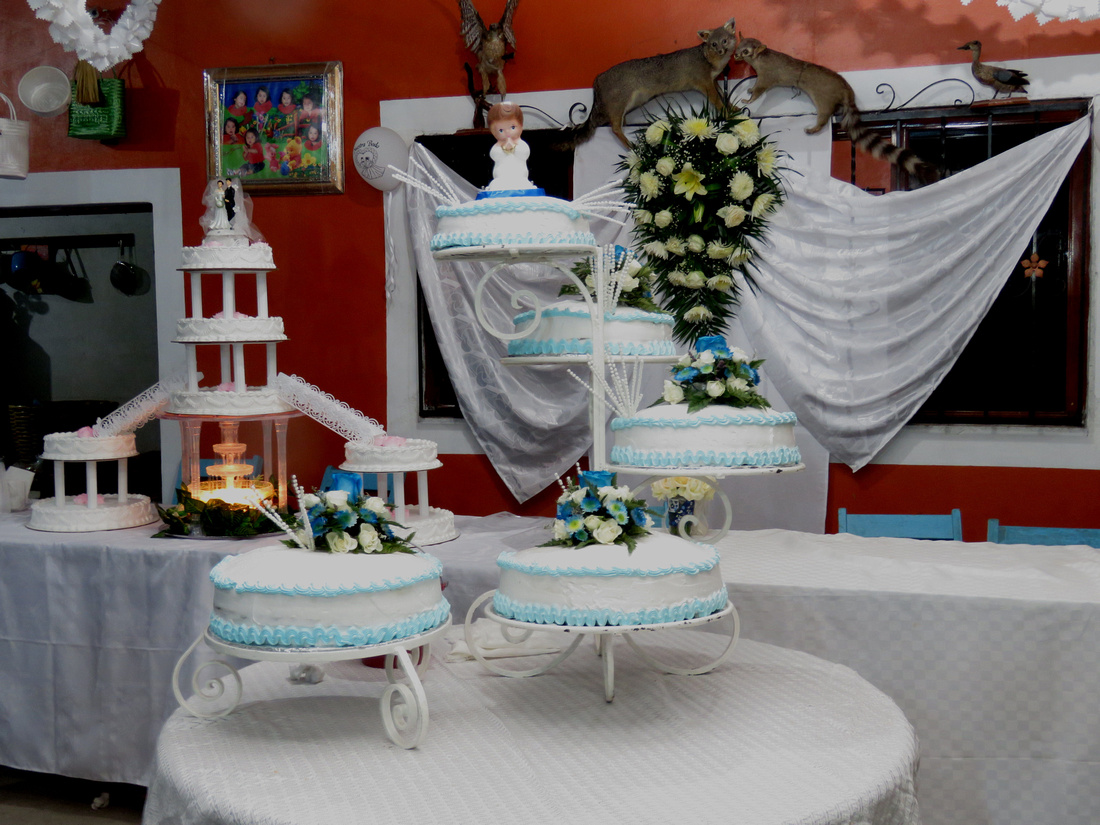

Wedding cake.


This family wanted a photo but insisted Beth was in it.




Ready to serve dinner to those who have arrived from Mitla.
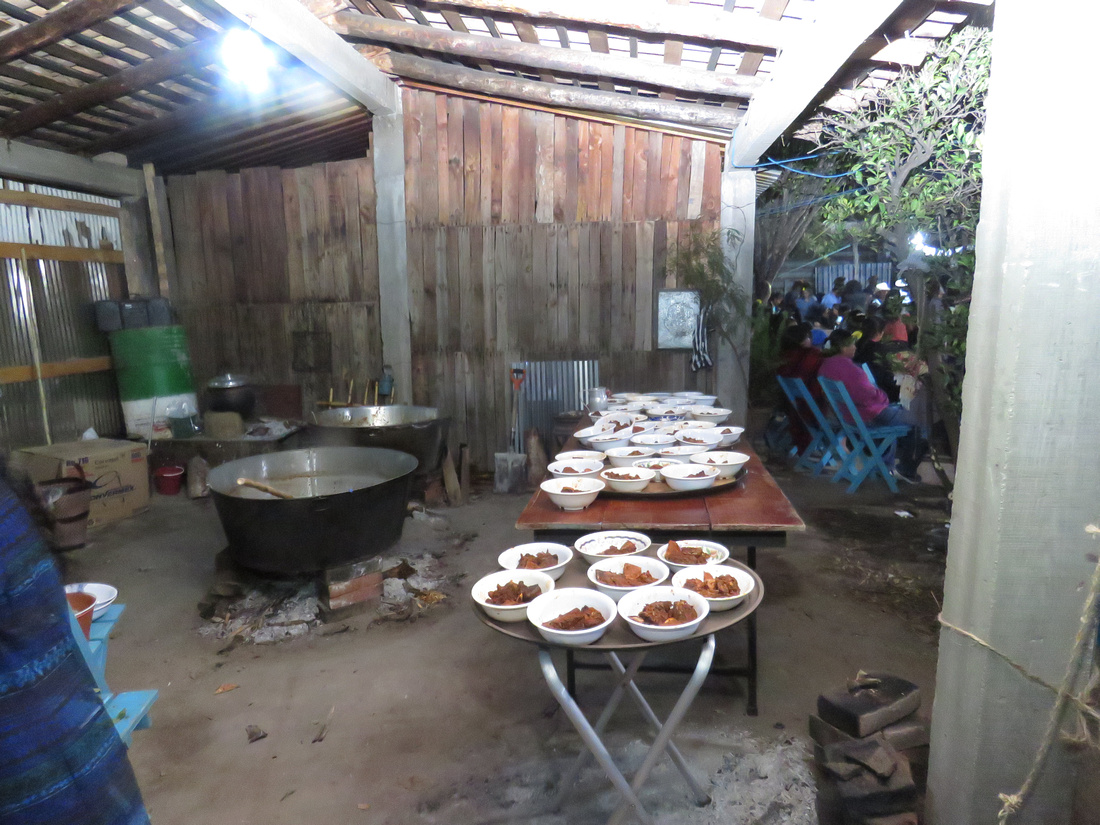

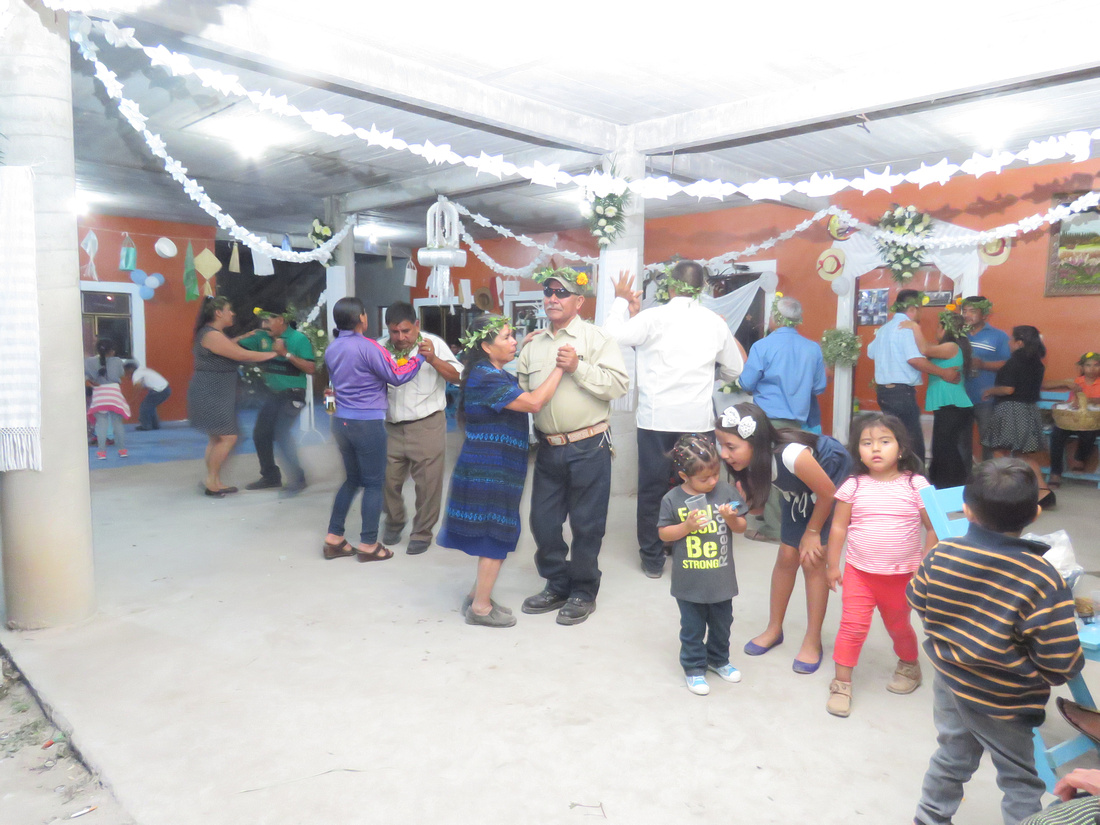

Juan with one of the madrinas.
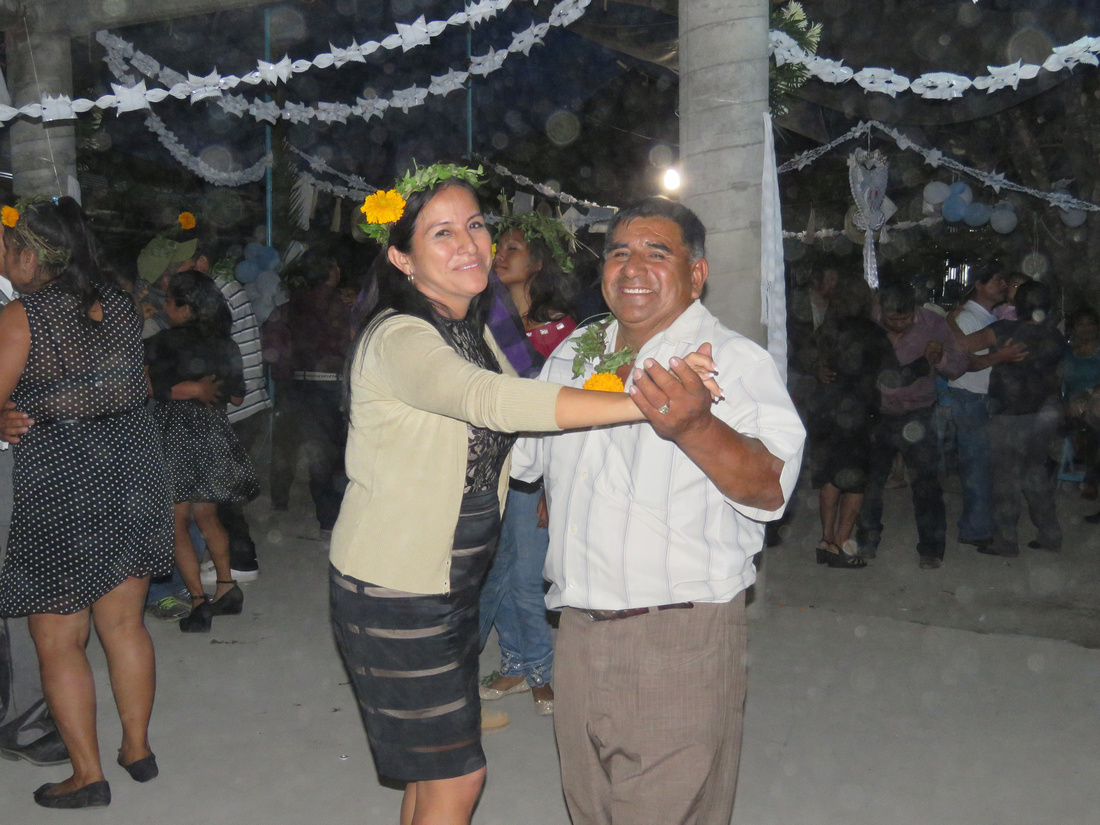

The guests from Mitla didn't arrive until nine. It was immediately obvious that they were from another village. Here you see women from Mitla dancing with the gifts they brought.
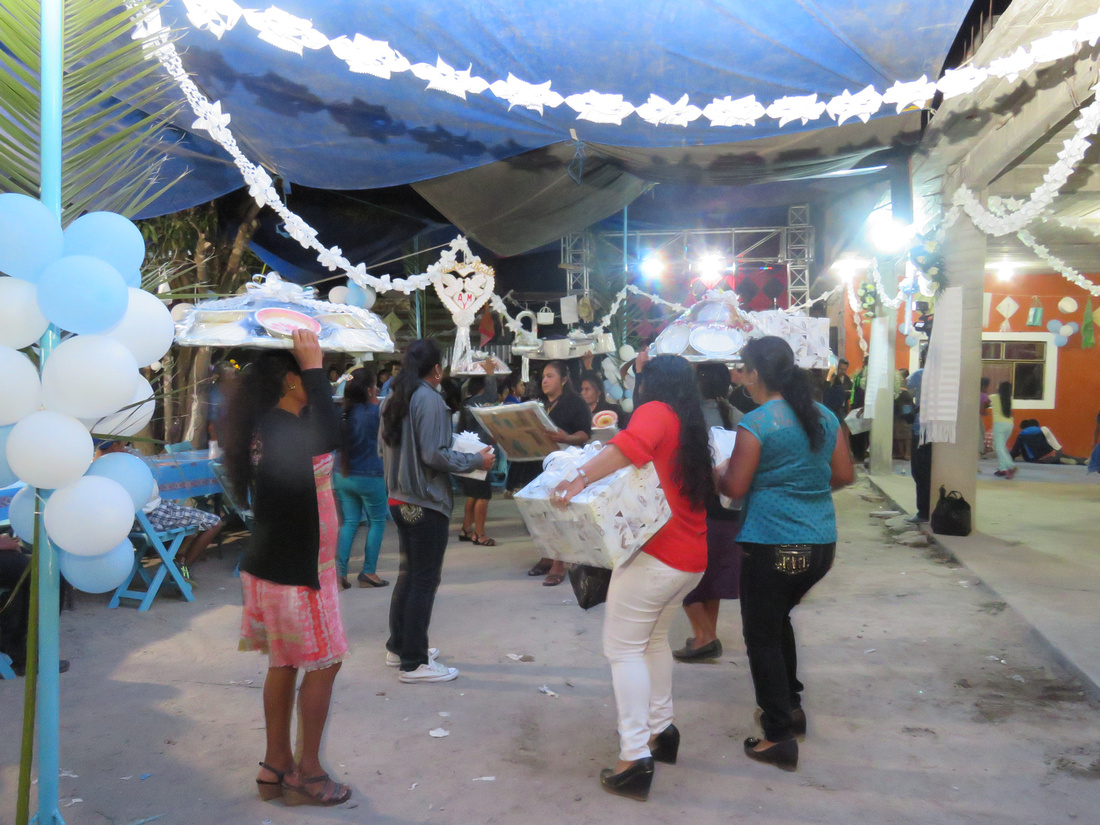

Two days after the wedding Beto and his family came to visit us. I asked Beto if he had gotten drunk. He claimed he hadn't but I believe this photo removes all doubt.


Late dinner being served to the folks from Mitla.
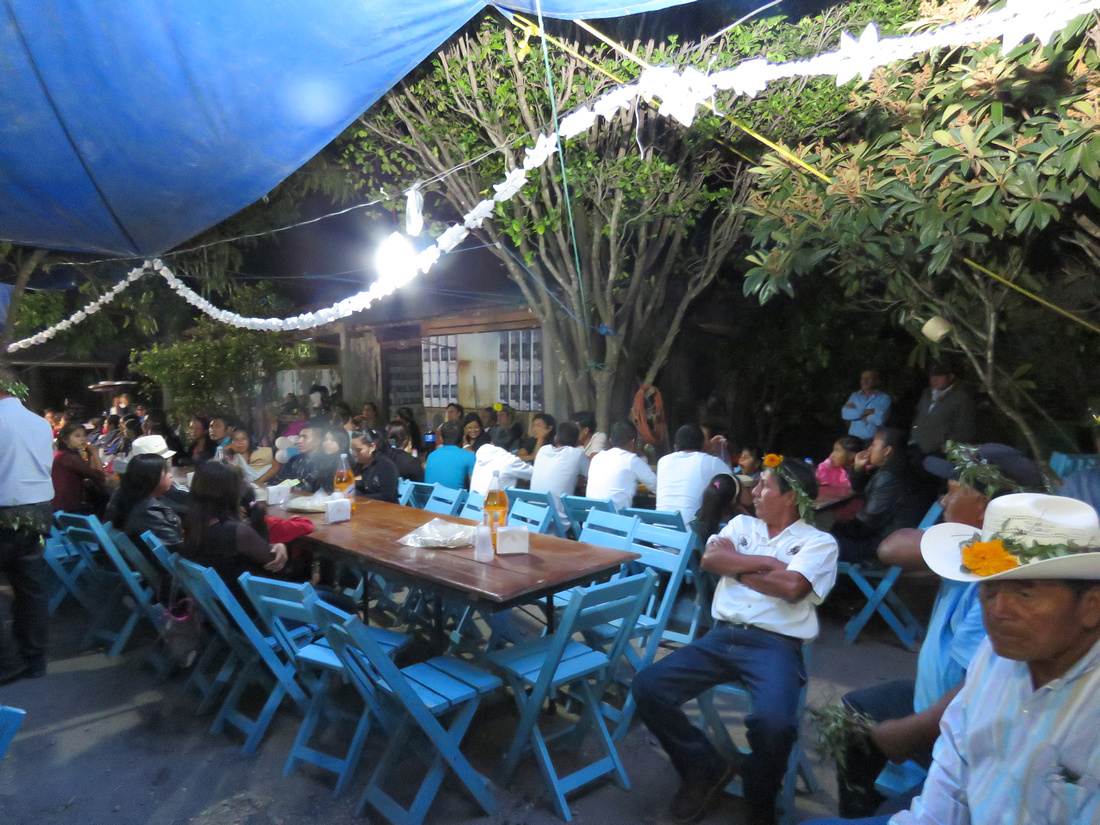

This padrino is playing the role of a bull.
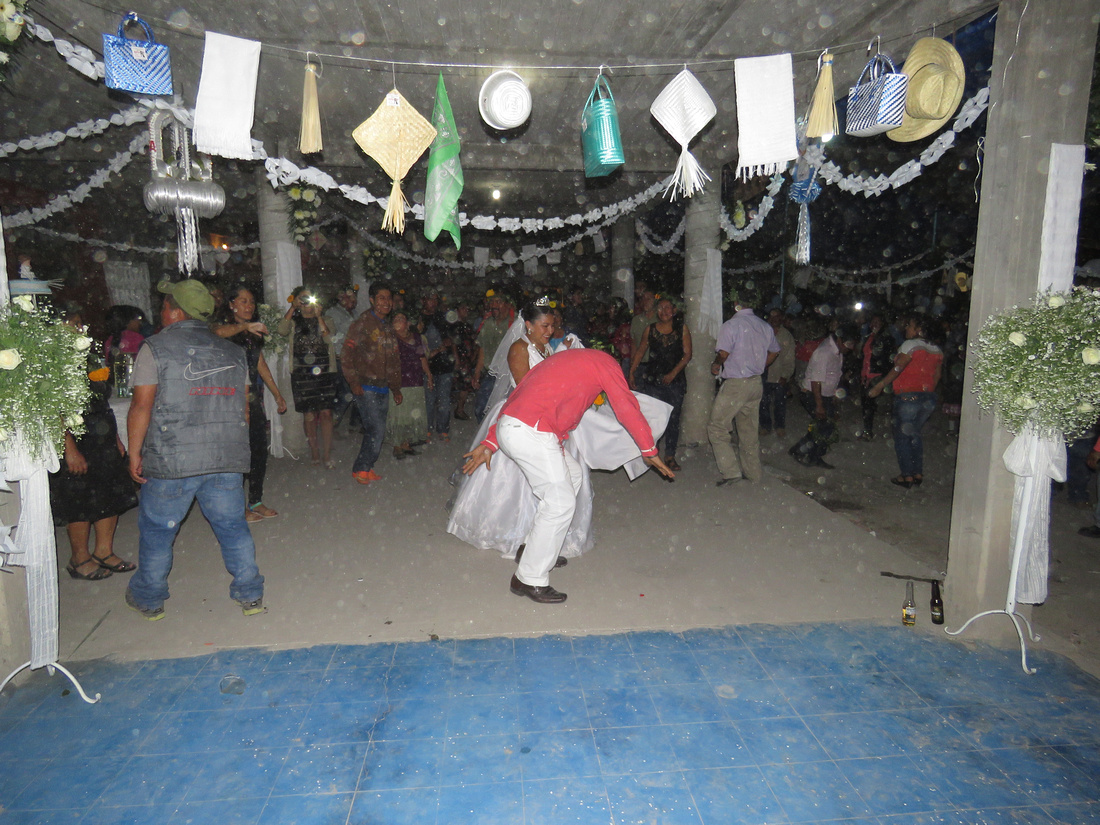

Aldelfo's mother Dolores and her brother cutting the rug.
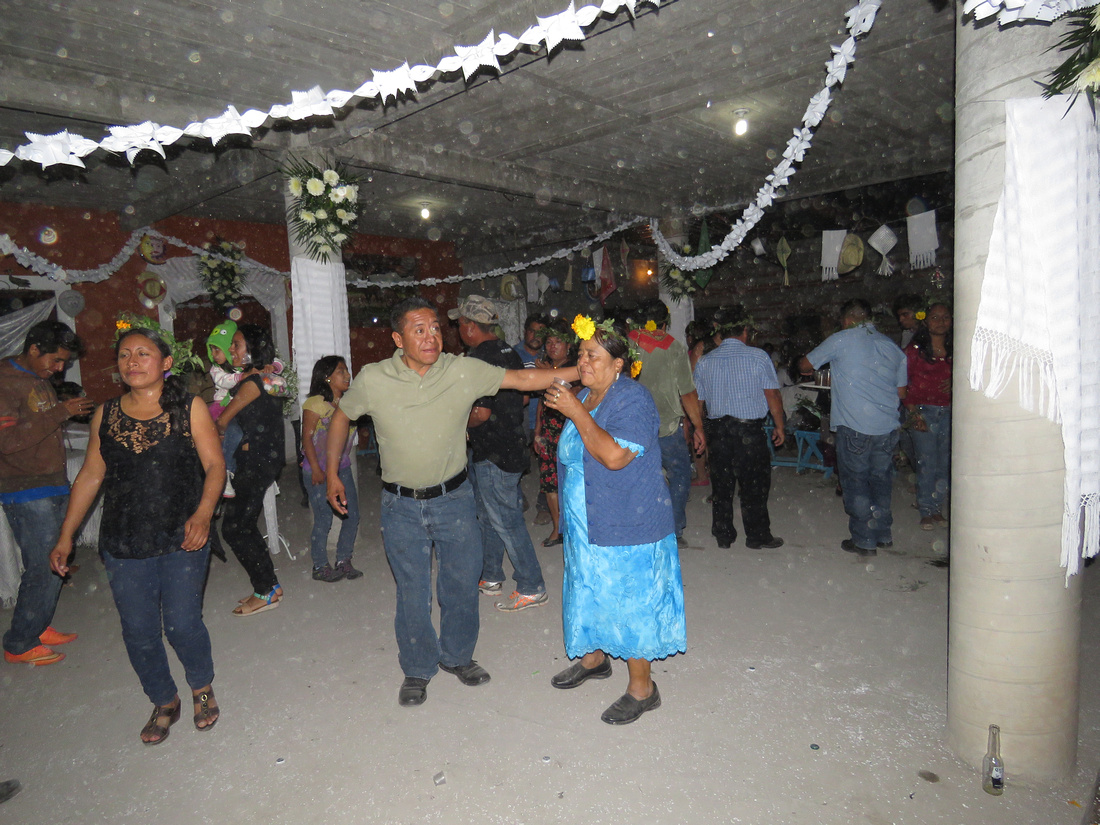

Mother and father of Monica along with spokseman and a few others ask Aldelfo's parents to receive their daughter and their gifts.
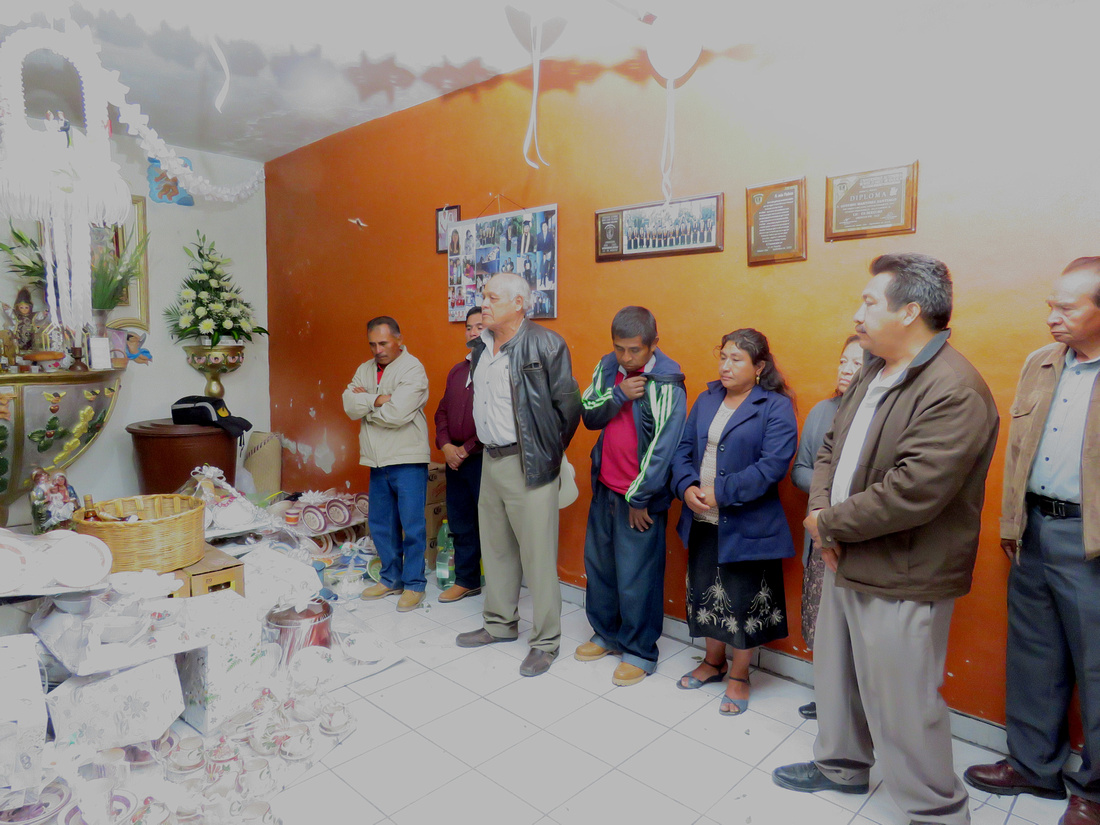

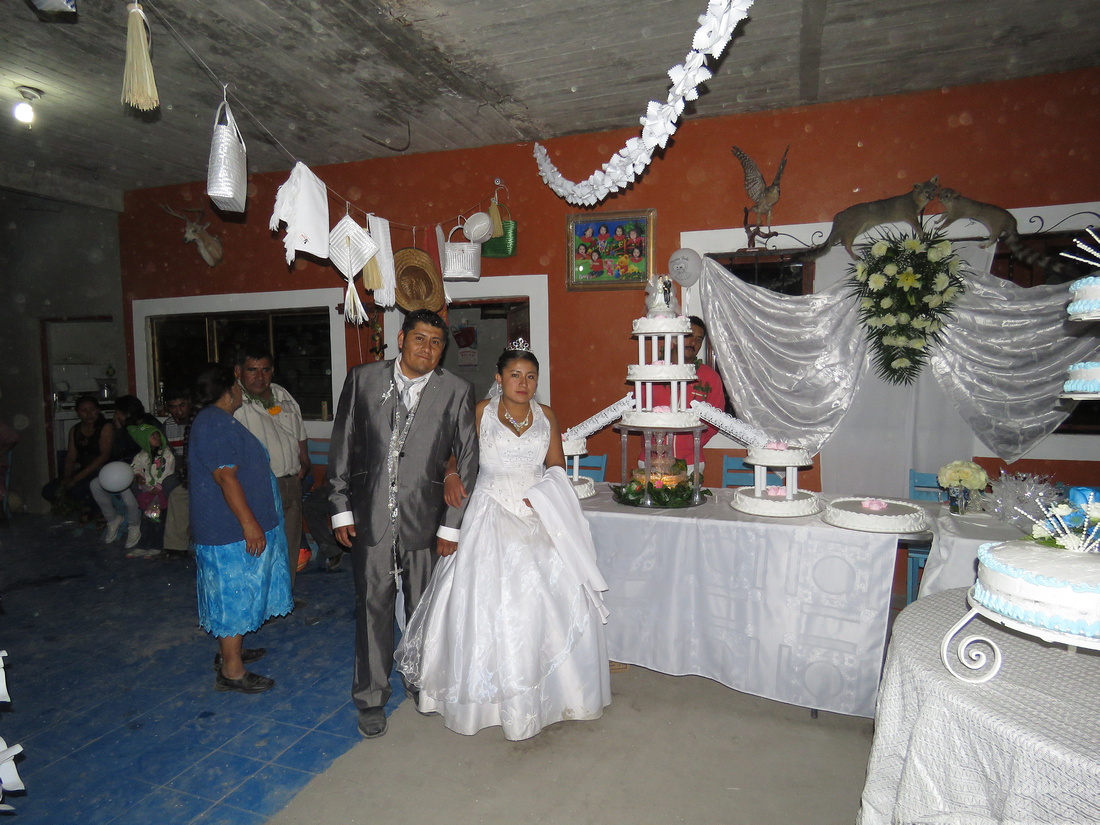

Giobanni wasn't into the mordida.
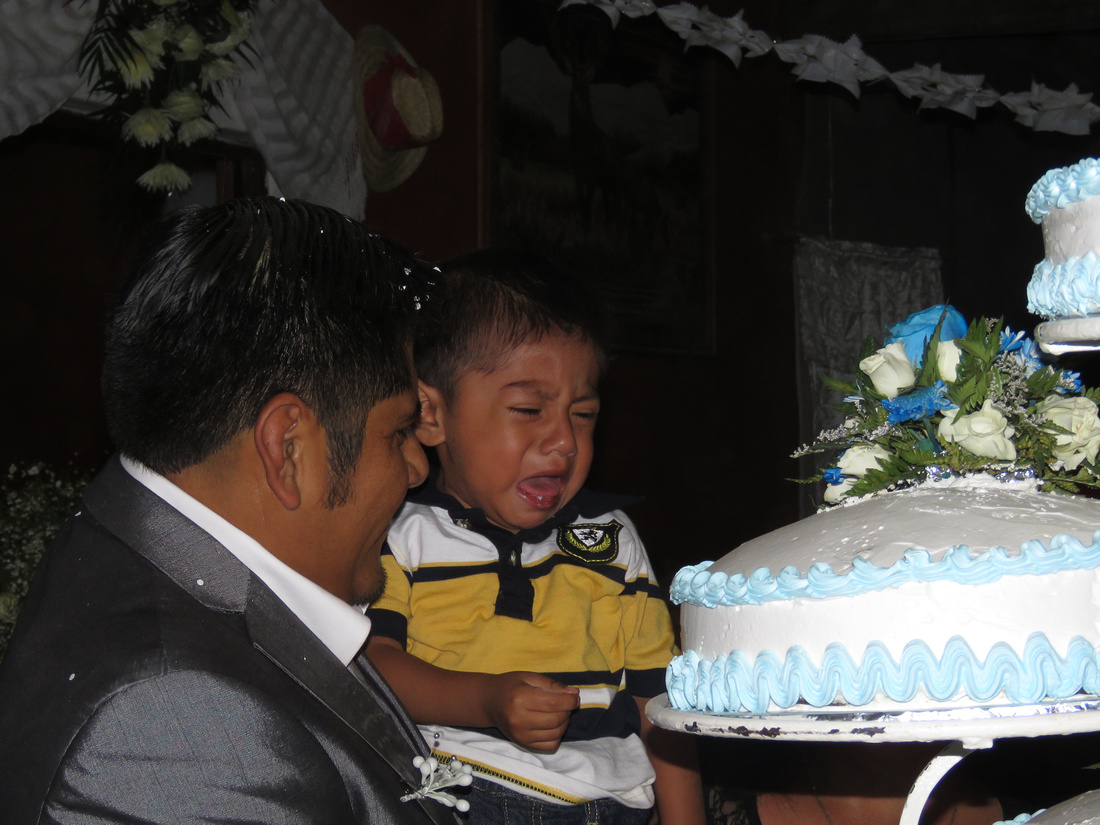

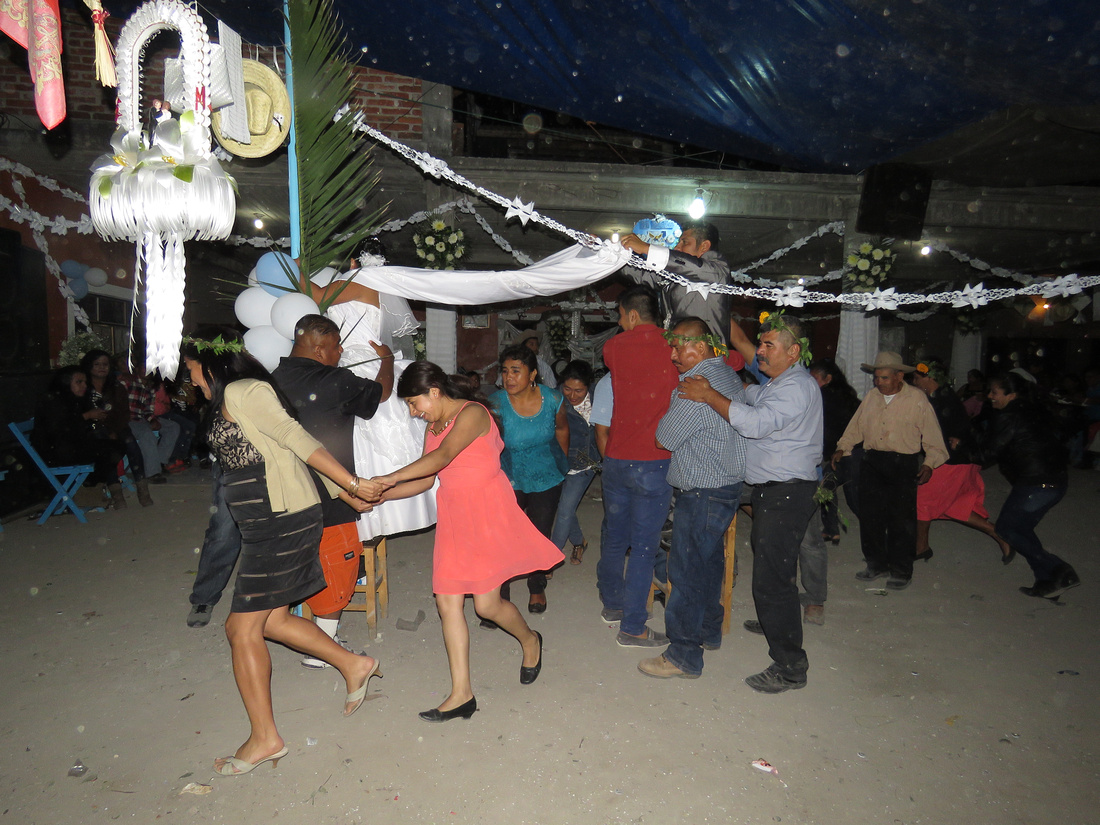

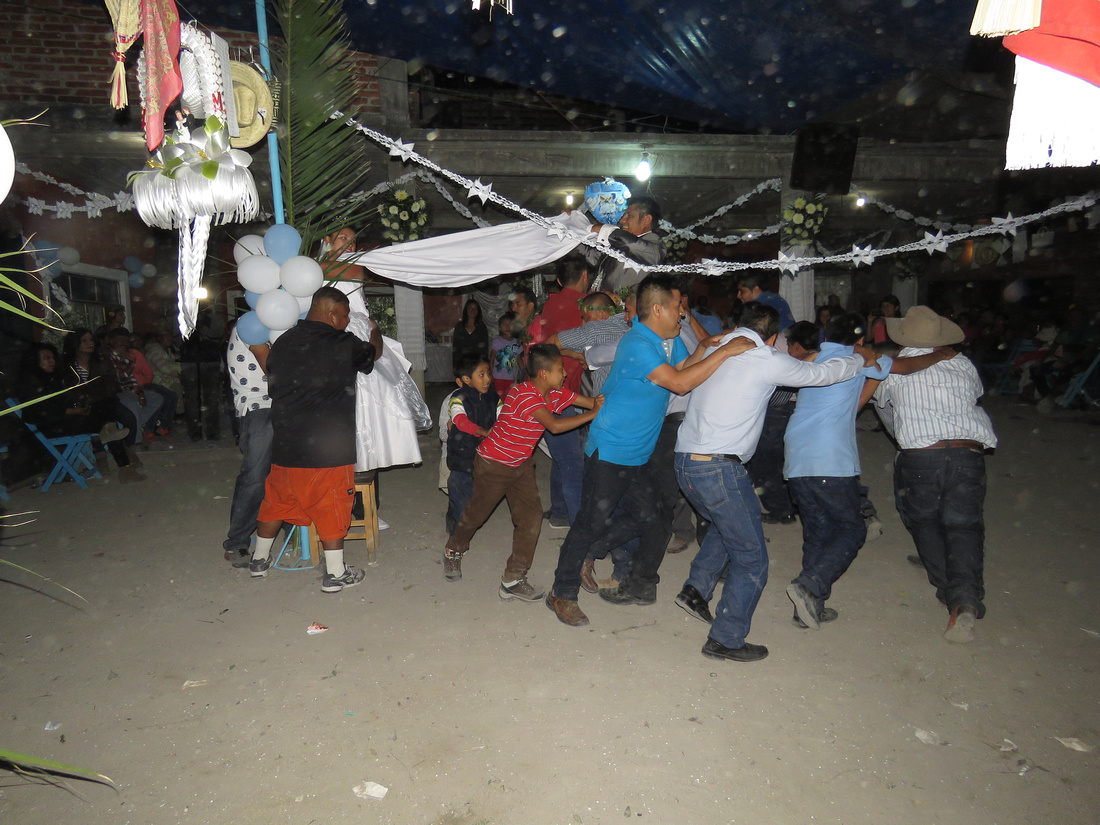

This was an incredible event for Beth and I. I began taking photos at nine. We left at twelve thirty AM. We were exhausted! Later we were told that many guests didn't leave until four in the morning. We wish much happiness to Aldelfo and Monica and thank them for allowing us to be part of their celebration.
July 2015
In over twenty years of traveling down here to the Oaxaca valley we’ve seen only three houses of adobe being constructed. Houses here are made from regular or a cement based brick. I think it's because an adobe house has the stigma of being Indio or less than. Too bad. Adobe does have its limitations. It’s harder to hang heavy items on the wall, rain can eventually wear the adobe down, a structure can only be one story, and for security an adobe wall can be destroyed easier. But for climate control, there is no contest. An adobe structure provides much more insulation. Inside our home the adobe walls consistently remain cool. Selvario is constructing an adobe home in Union Zapata. He invited me to take some photos the other day. Selvario told me that adobe bricks are more expensive than other bricks but they are larger in size. An adobe brick is about 15” x 10” x 3”. Building is also much faster with adobe bricks. The home being built in the photos will be completed in just three weeks. That’s for walls only. The owner hasn’t decided on a roof style yet. Cement roofs are the most popular. With proper drainage a cement roof will last almost an indefinite period. The Spanish tile (teja) could need replacement in twenty years but is much cooler than cement.
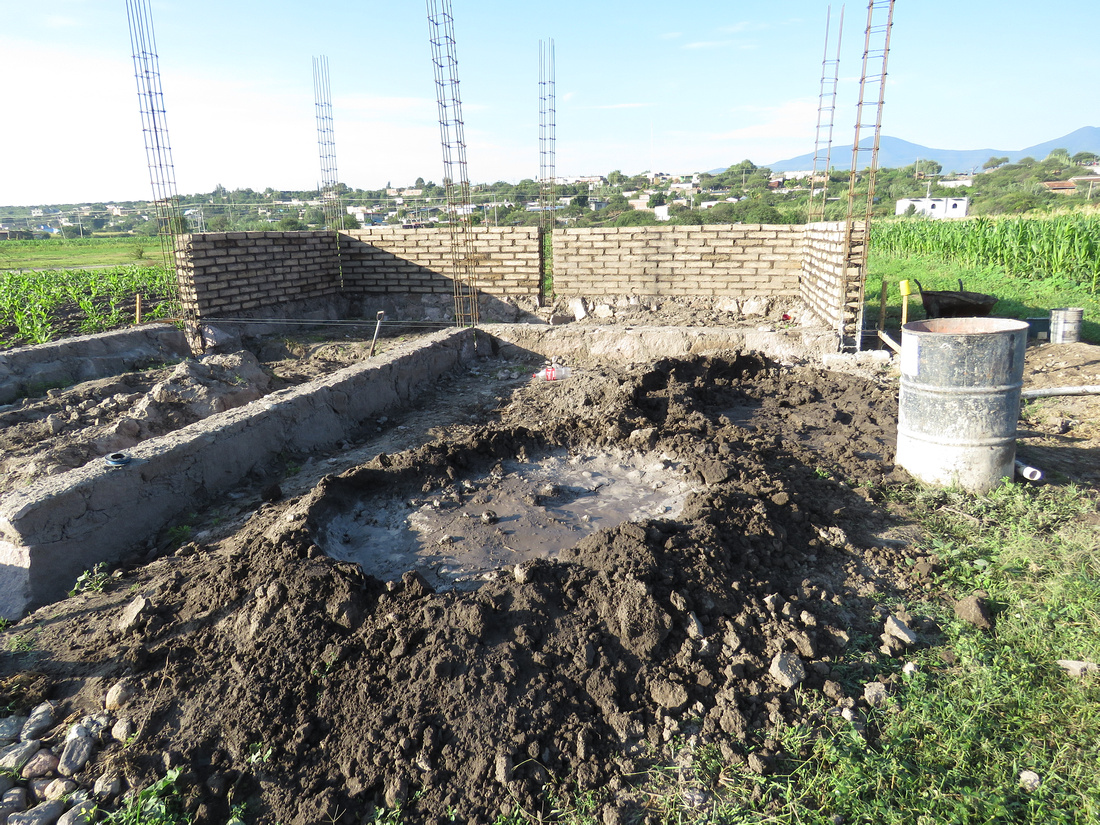

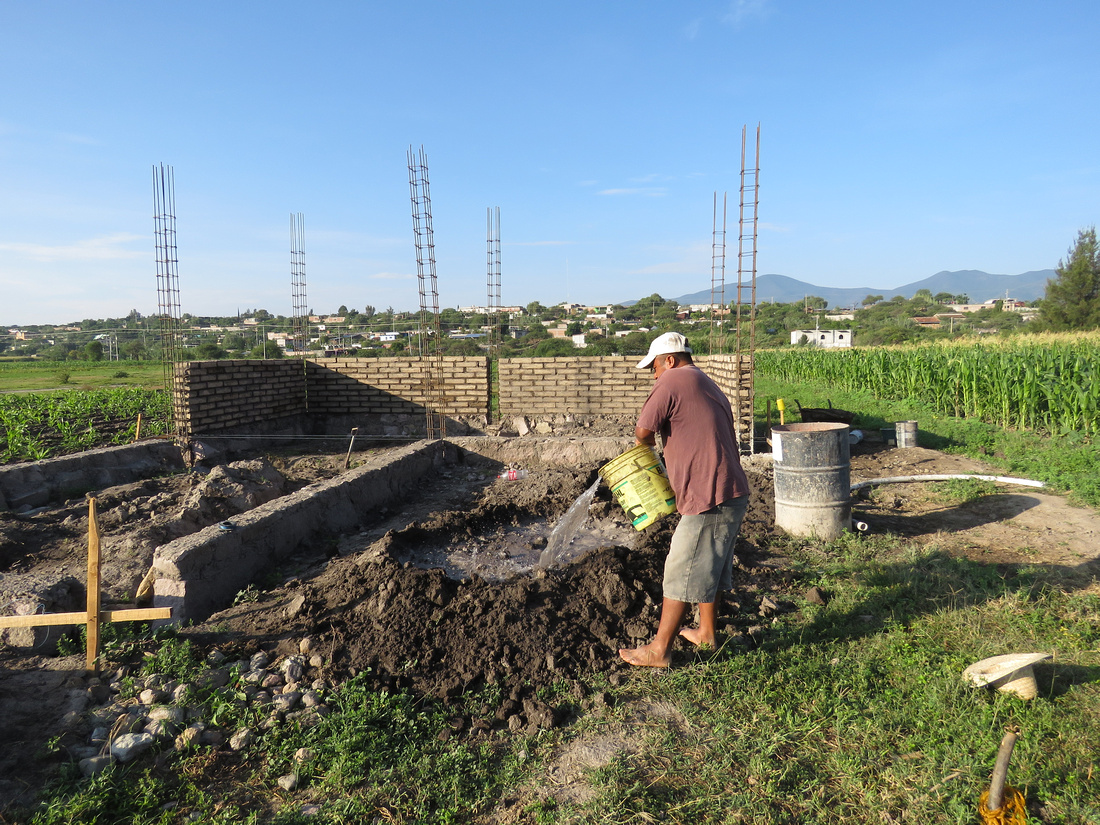

Selvario mixing up mud for the adobe bricks.
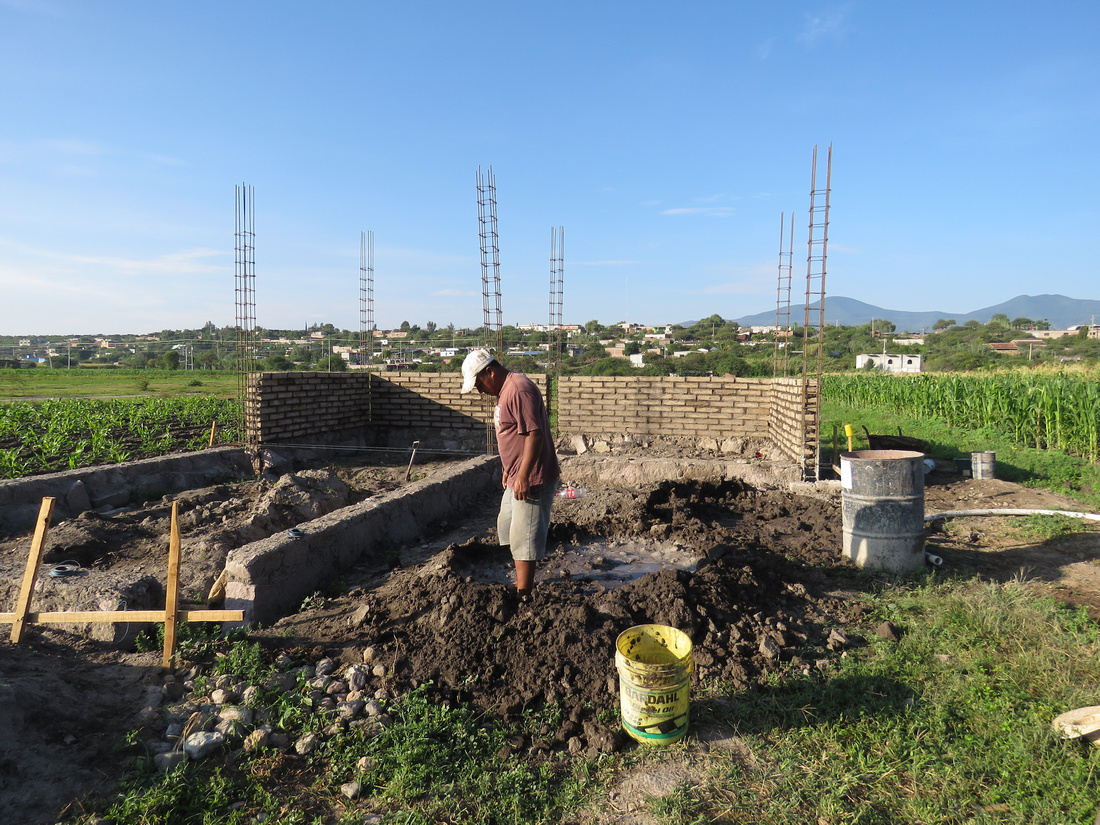

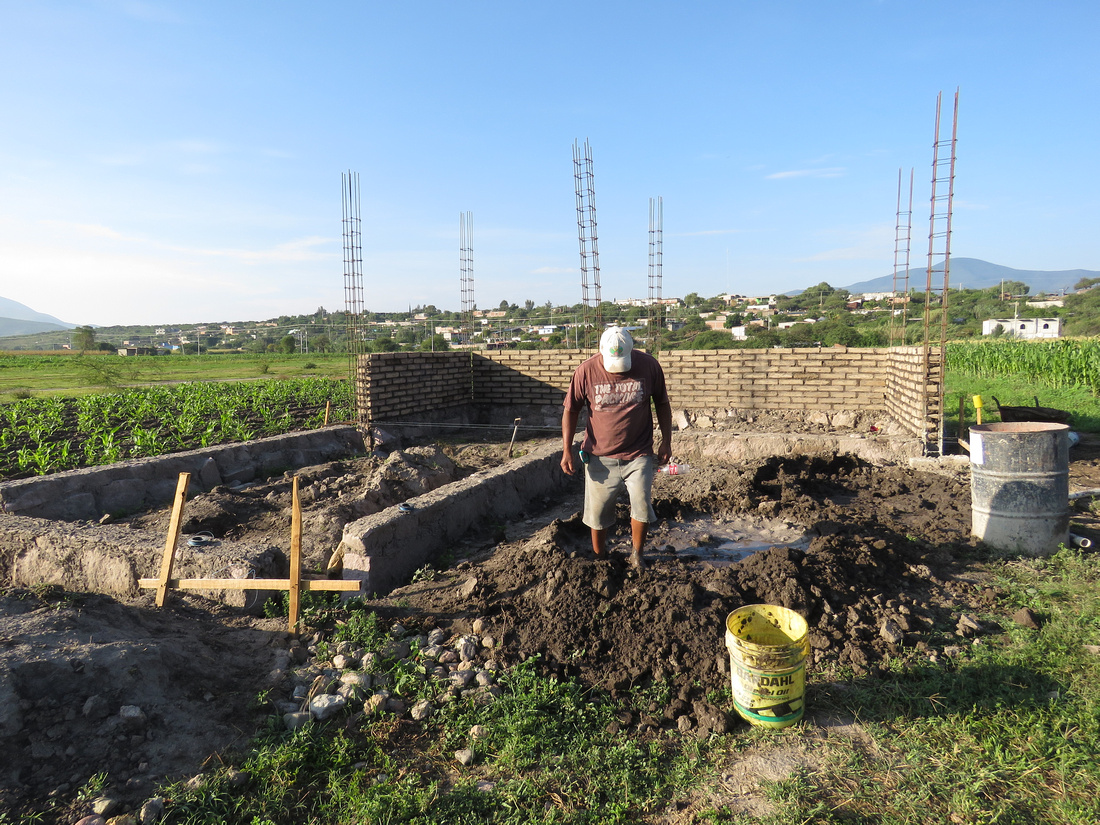

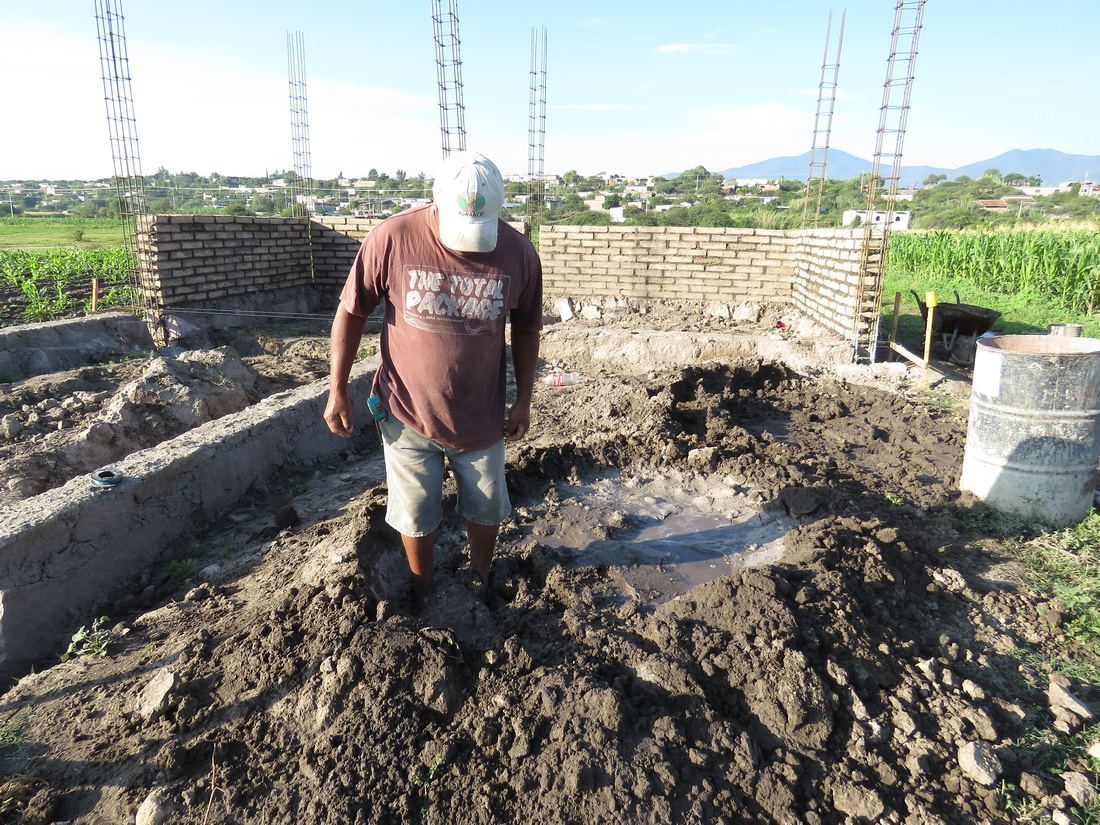

Cement columns are poured in the corners and in the middle of long walls for reenforcement.




The inside walls will be covered with stucco.
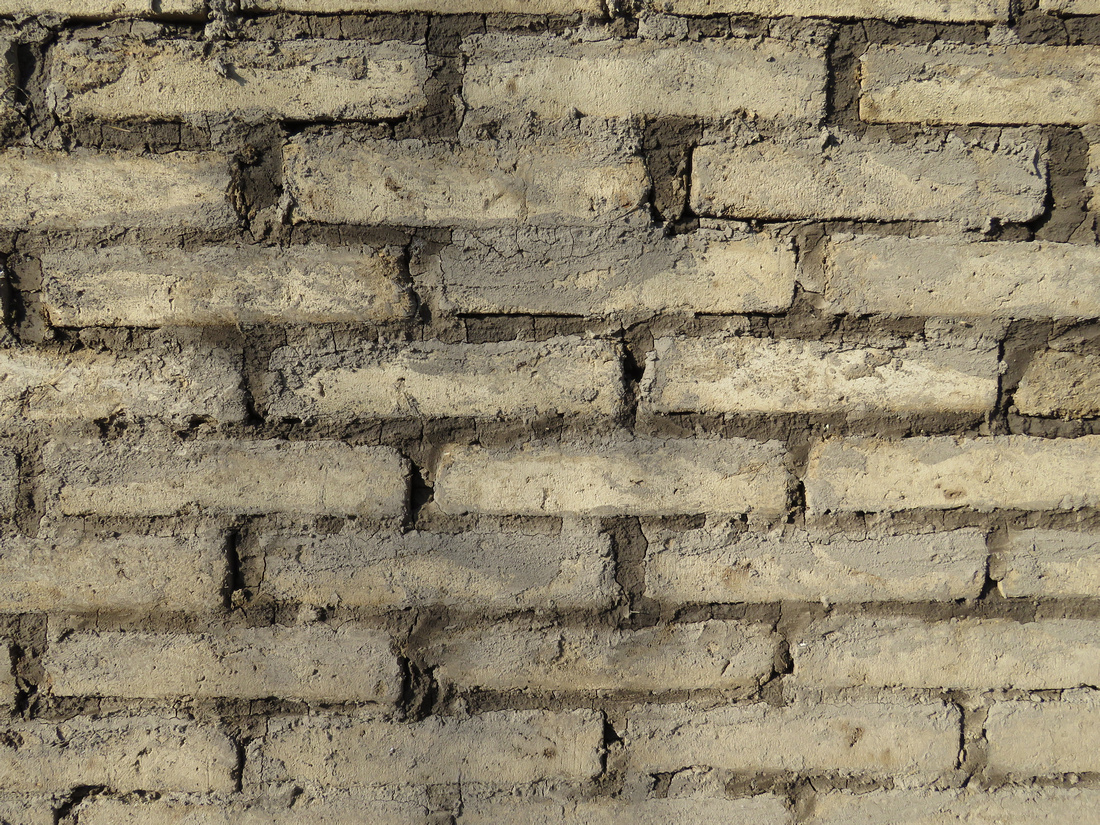

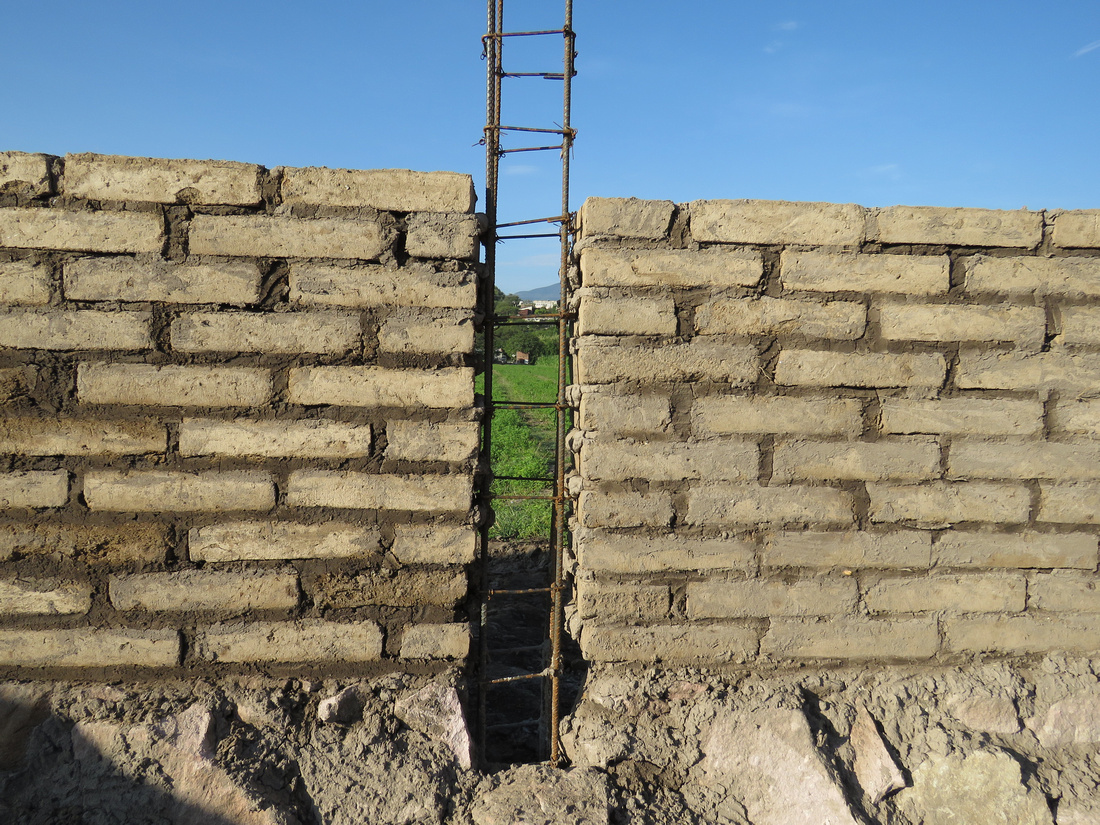
 Selvario told me a little trick they use is mixing sand with the mud to avoid mud sticking to their hands.
Selvario told me a little trick they use is mixing sand with the mud to avoid mud sticking to their hands.
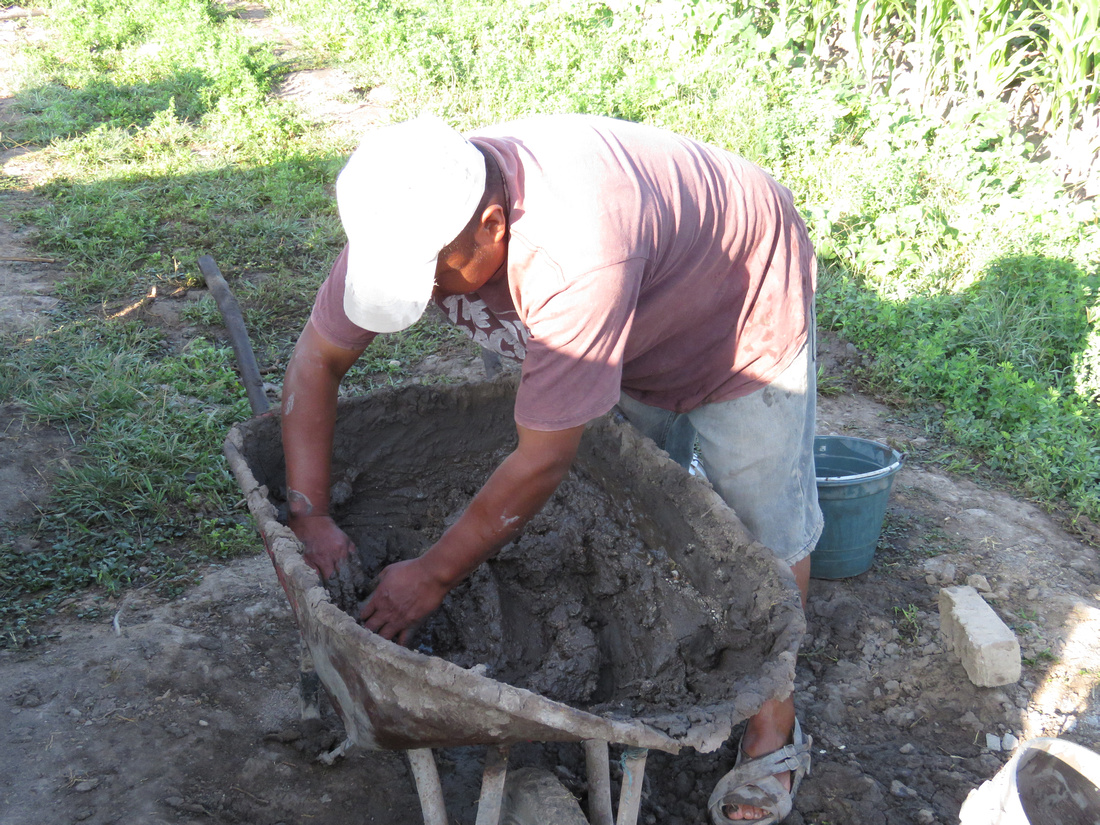

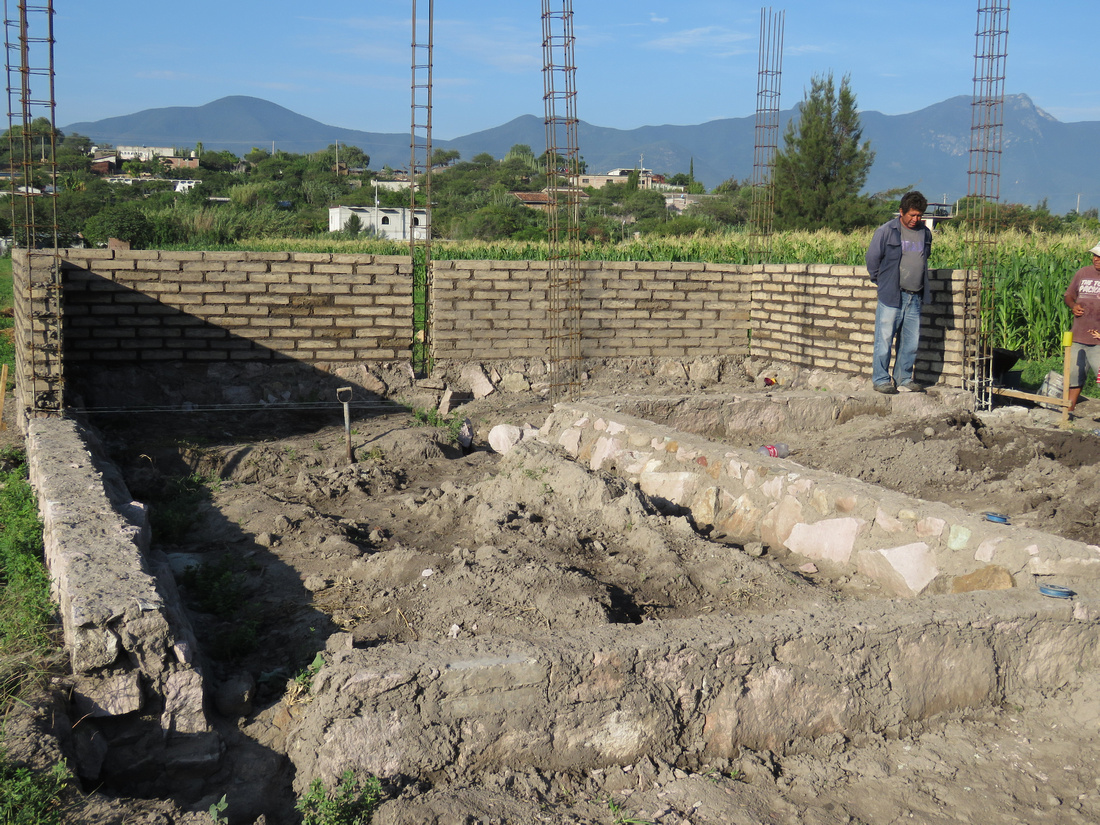
 The owner is a young man that's never been to the States. It's pretty rare when homes are built in UZ without US dollars.
The owner is a young man that's never been to the States. It's pretty rare when homes are built in UZ without US dollars.
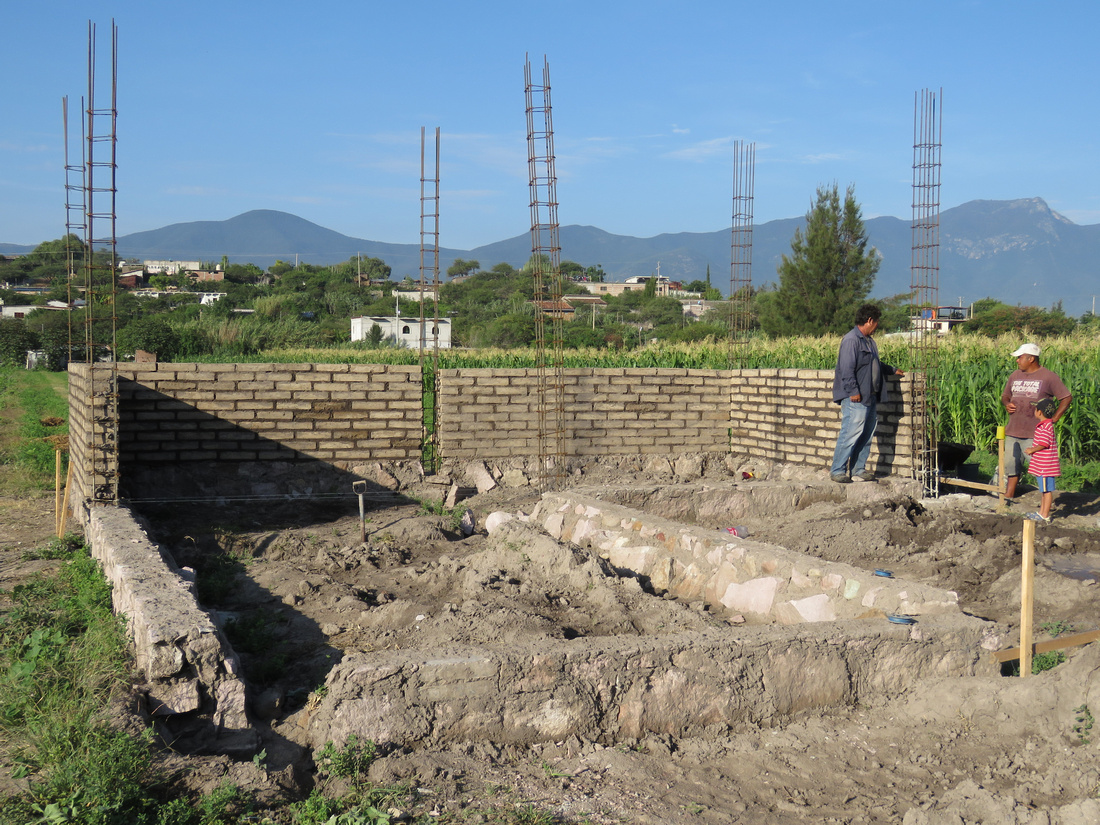

We bought two more hens. Their colors are beautiful. Our rooster Ganzo now rules over all the hens. Poor Big Boy hides over in the neighbor’s yard. Ganzo doesn’t even like Big Boy to come close to the fence. Every once in a while our neighbor’s rooster wanders over to our yard but Ganzo quickly runs him off. Goldie had eight chicks but only four have survived. For the first month Goldie and the chicks were locked up for safety but they now forage in the yard. They still sleep in a fenced area for safety. We’re not sure what happened to the lost four. Could have been rats or maybe even Scooter. Scooter has proven himself to be a killer of chicks. I’ve had to pay for a few that he killed. I added another nest to our hen house. It too is made from a five gallon bucket but I attached this one from the outside so it didn’t take up space in the hen house. It took a couple of days for the hens to used it, but now they use it daily. We bought our last two hens from Felipe’s daughter Leticia. I wasn’t looking forward to catching them but it turned out to be quite simple. Felipe has a couple of young hound dogs. One of them is trained to catch chickens. He doesn’t harm them. When a chicken is cornered is just sits down and submits. Felipe just picks them up. Incredible!
Scooter checking out Goldie's chicks. Yummy!!!!
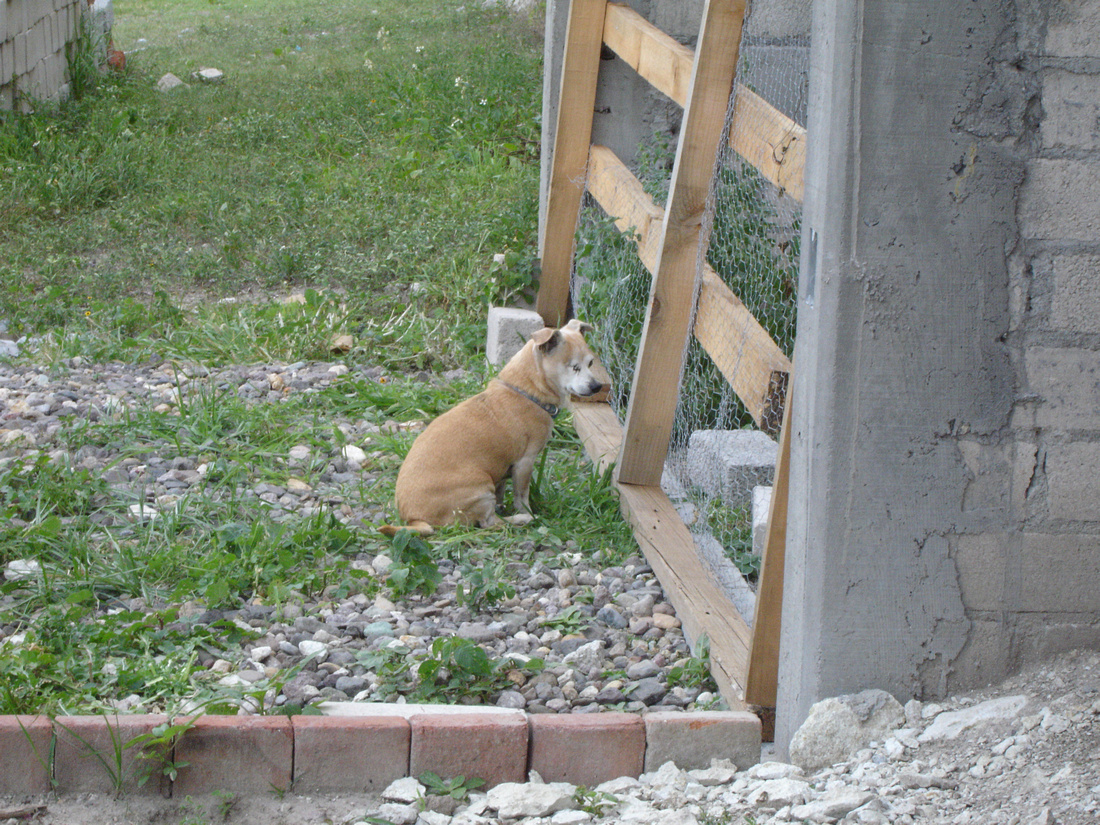

The nest I added to the outside of the coop.
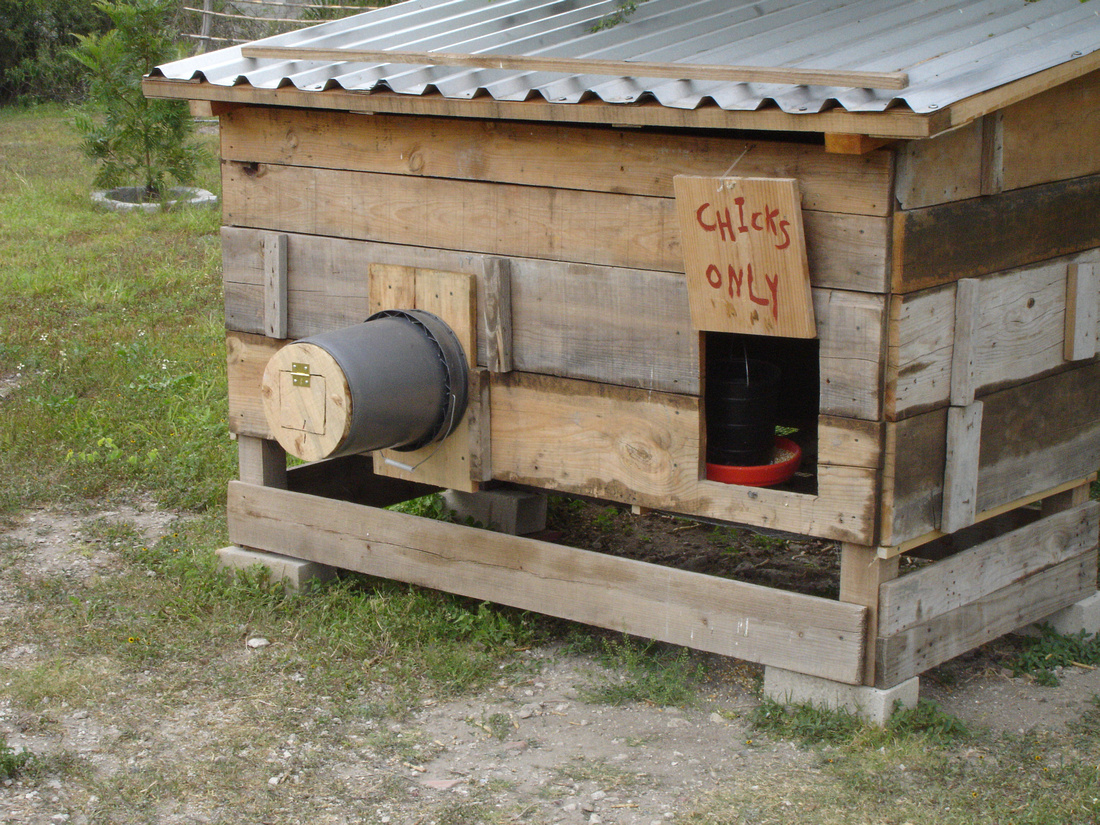

Goldie in the brush with her chicks.


Goldie now roams the yard with her rapidly growing chicks. We were going to give the chicks away but have decided to keep them for now.
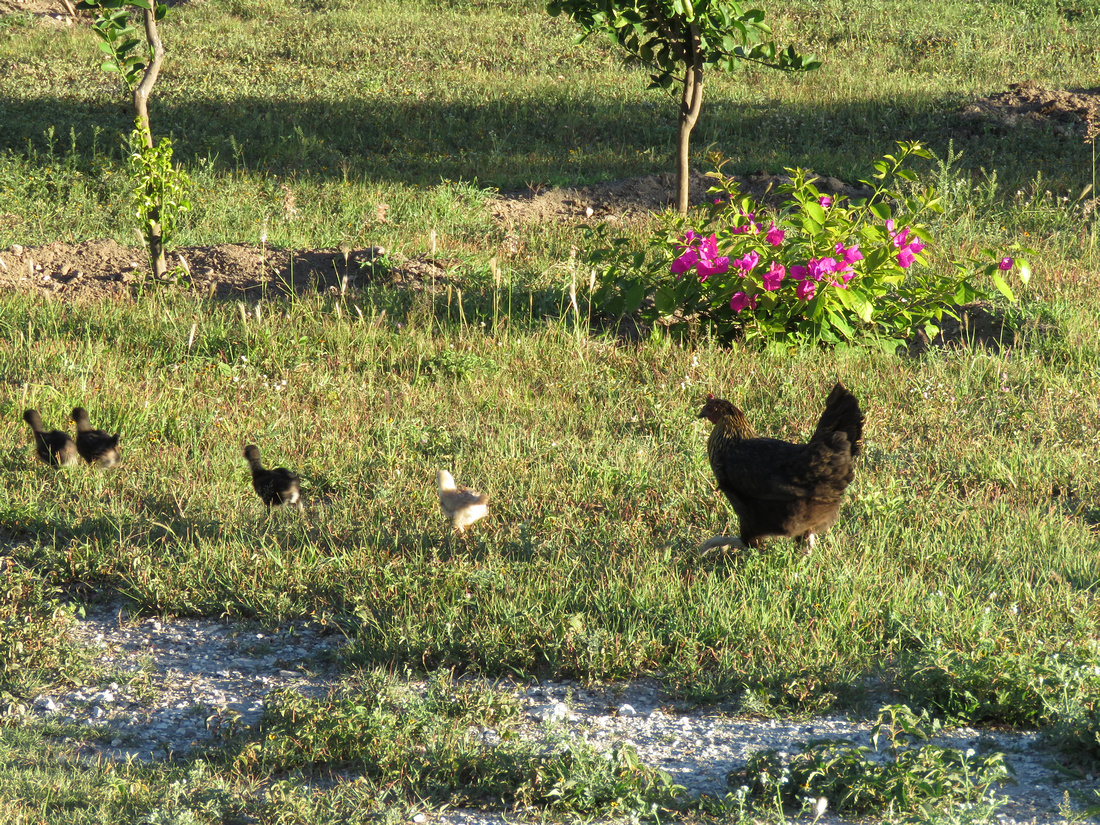

Our two new hens Sandy and Ashley
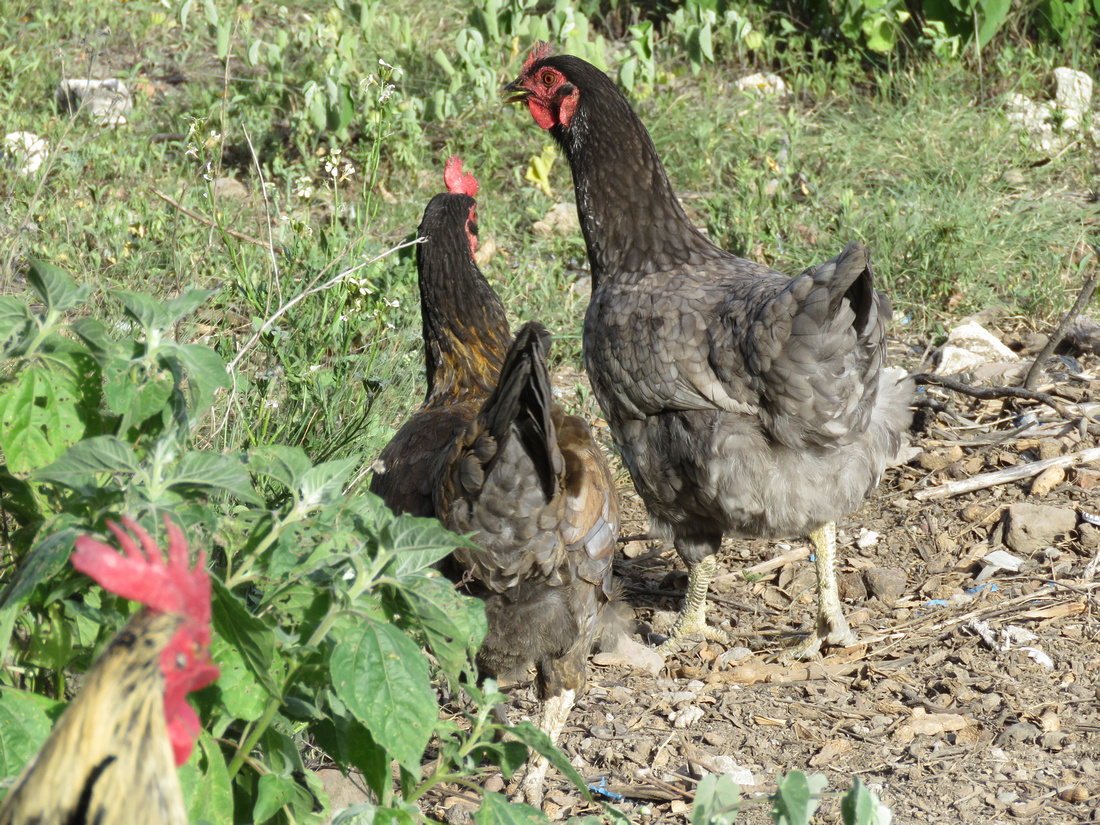

We became compadres again. A friend’s daughter graduated from kinder and we were her padrinos. We are limited to nonreligious events for becoming compadres. Weddings and baptisms are out. We watched Denia receive her diploma then went home until three. We then returned to Marino’s for the fiesta. We ate, drank, and danced until ten. It was a great night. Most of the guests were family members. We swapped experiences and thoughts about Mexico and the United States. Of course, Mr. Trump came up in our conversation as it has with many of our friends. Chapo Guzman is also a lively topic right now. Many people view him as a kind of Robin Hood.



 Marino's daughter Denia at her graduation from kinder.
Marino's daughter Denia at her graduation from kinder.
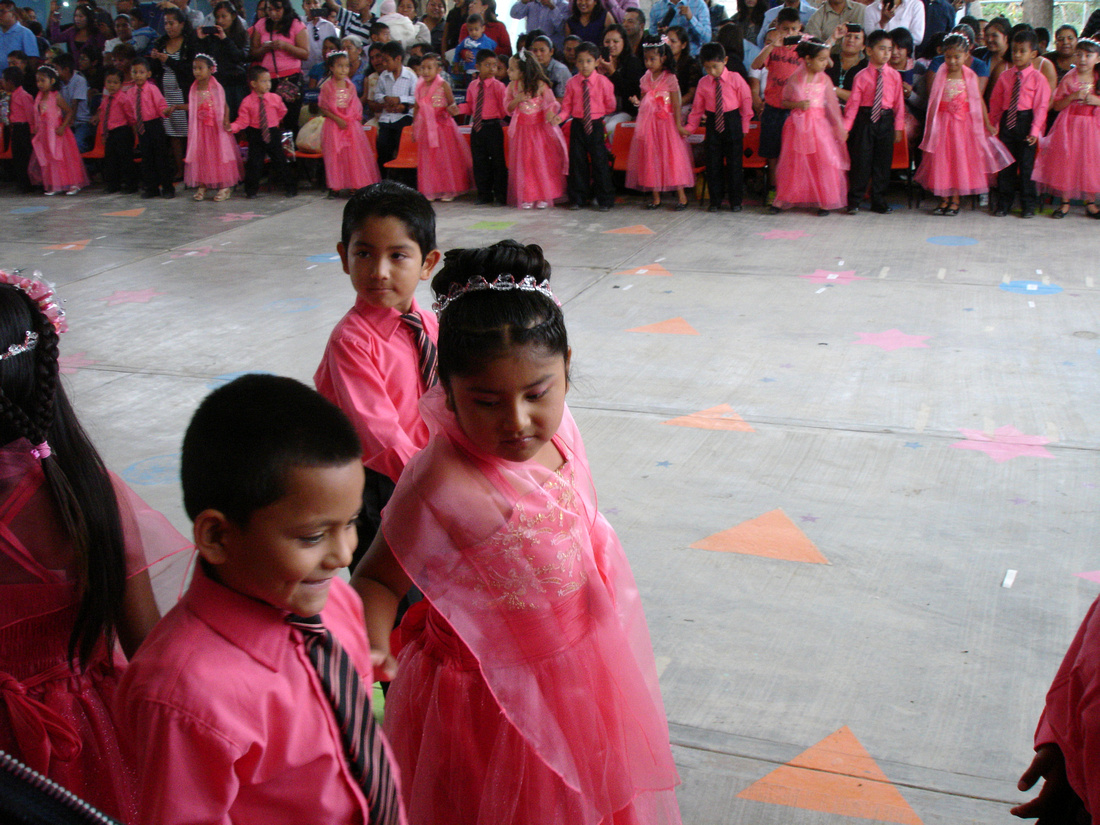
 I believe the theme for their dances was the fifties.
I believe the theme for their dances was the fifties.


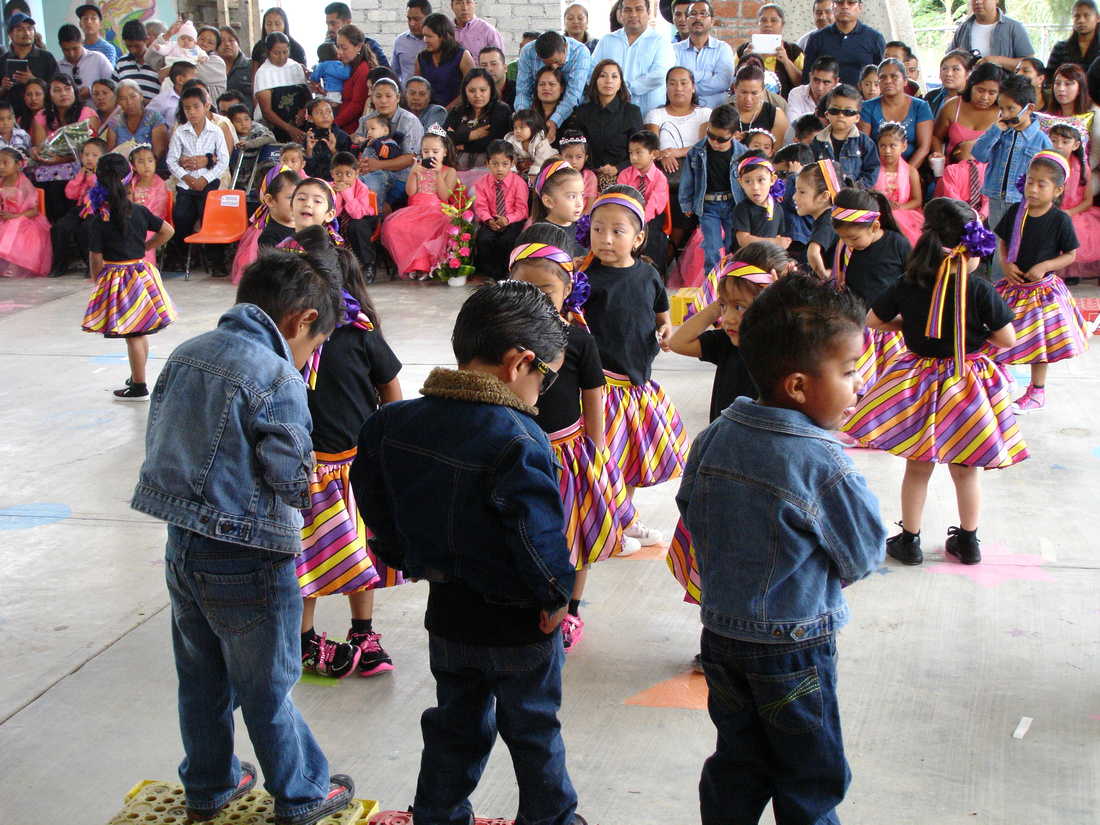

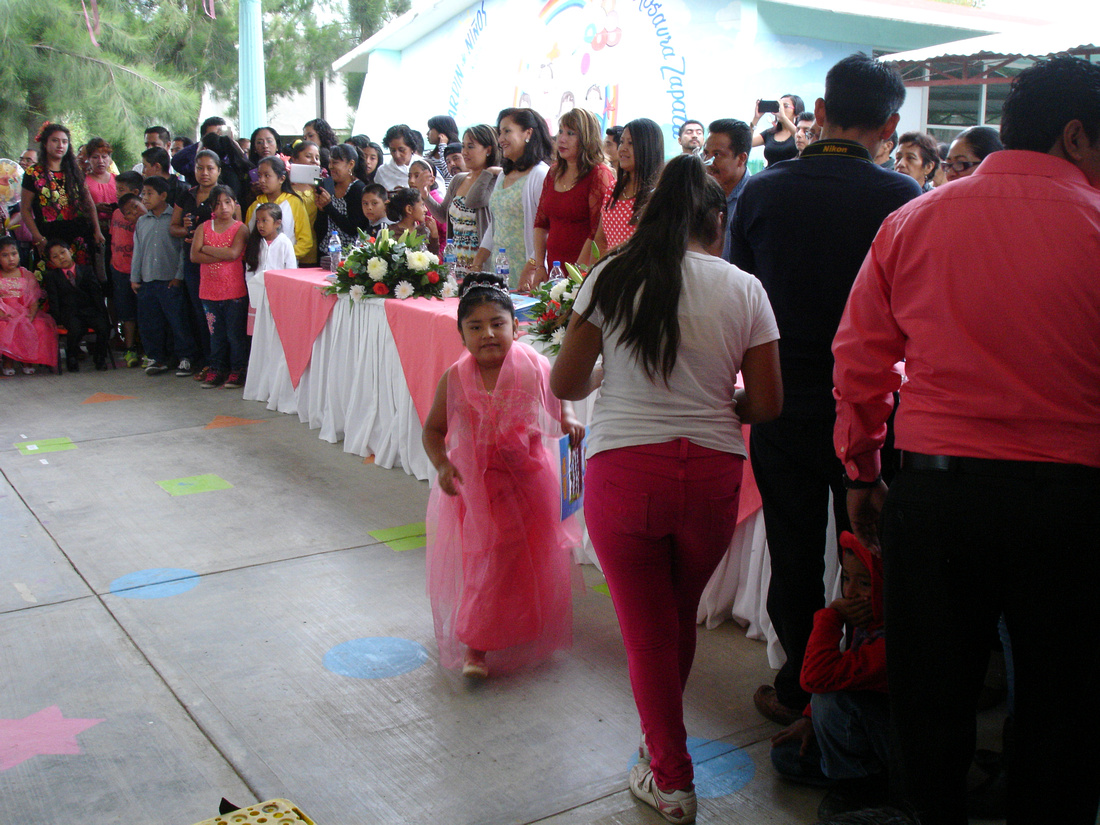
 Excellent food.
Excellent food.
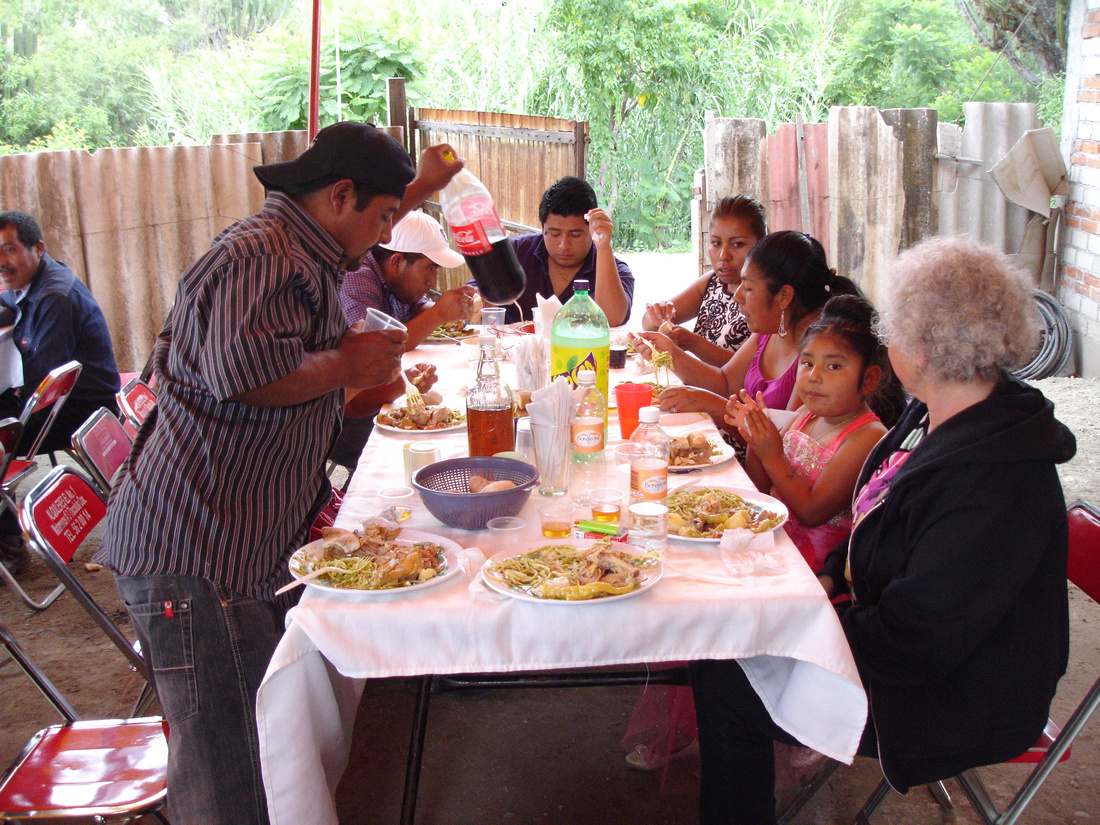

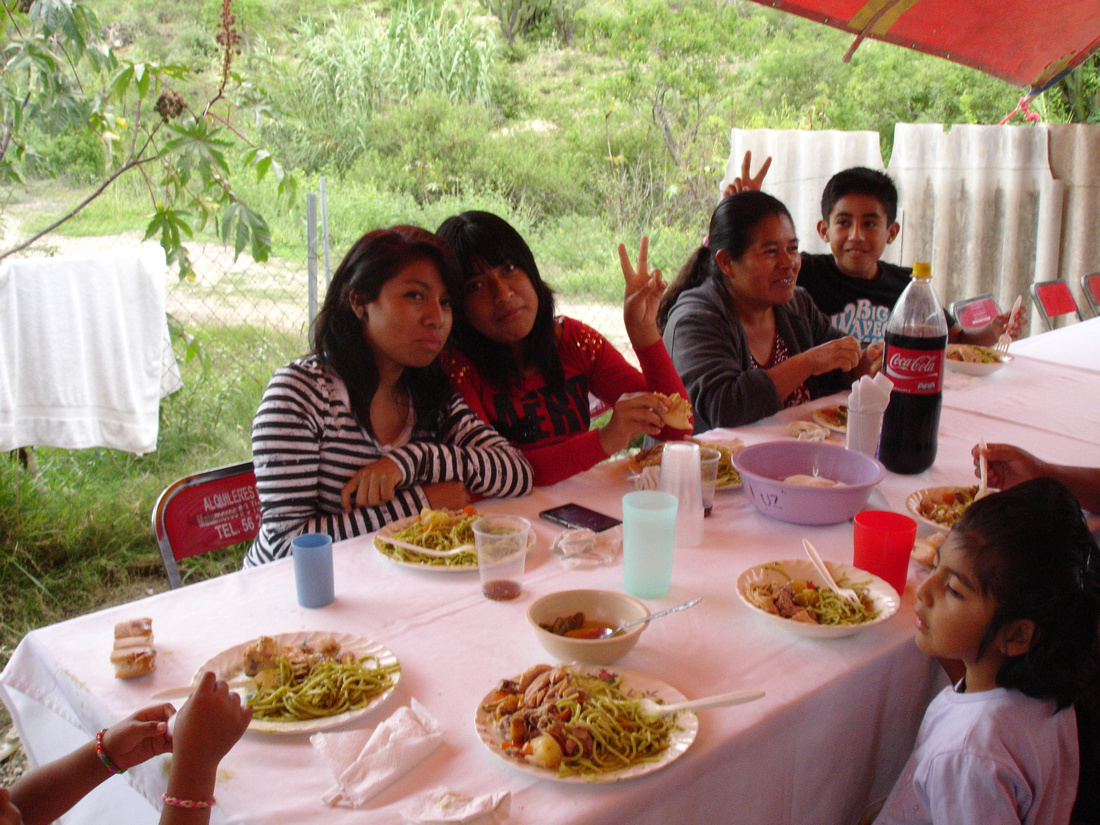

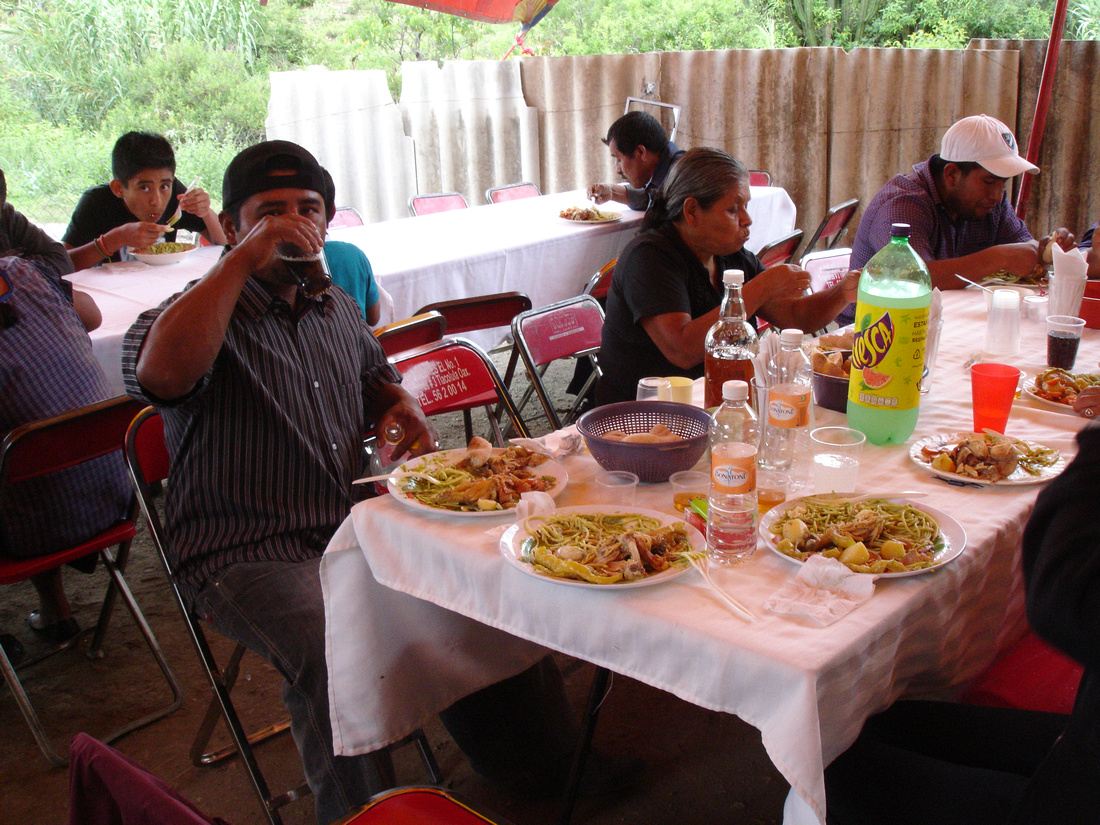

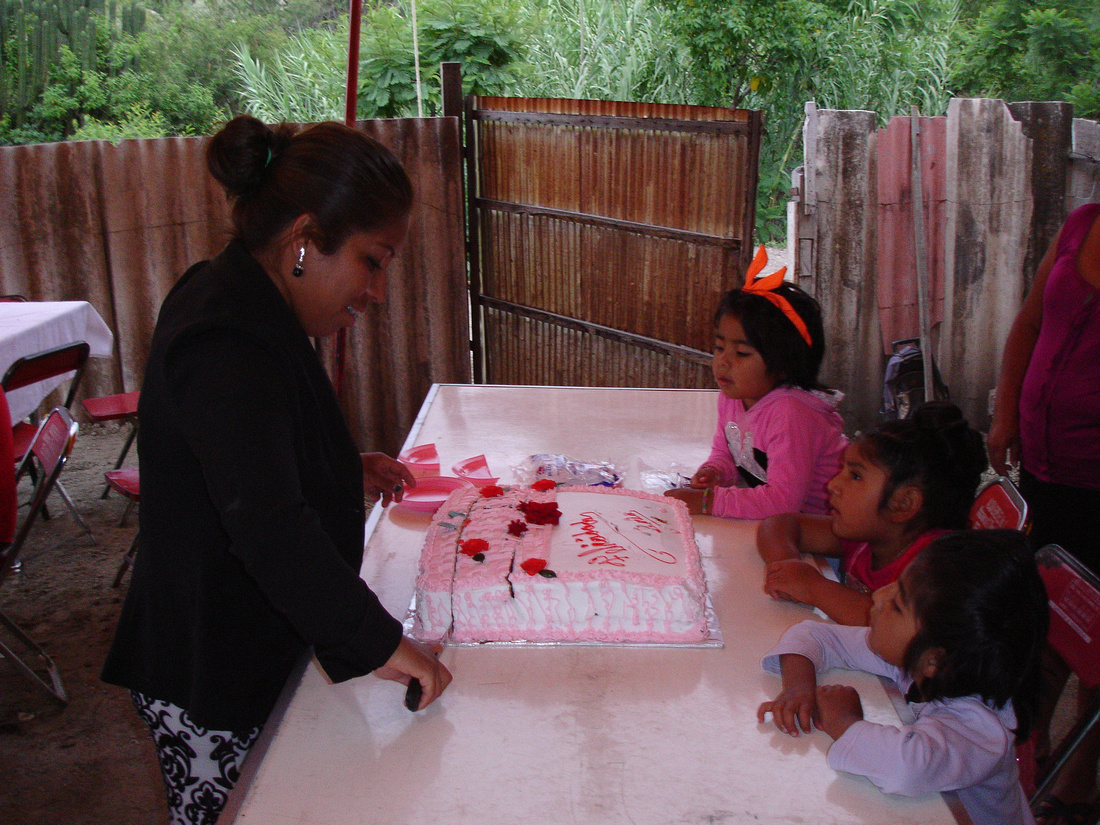
 Don't remember what made us laugh but it must of been a good one.
Don't remember what made us laugh but it must of been a good one.
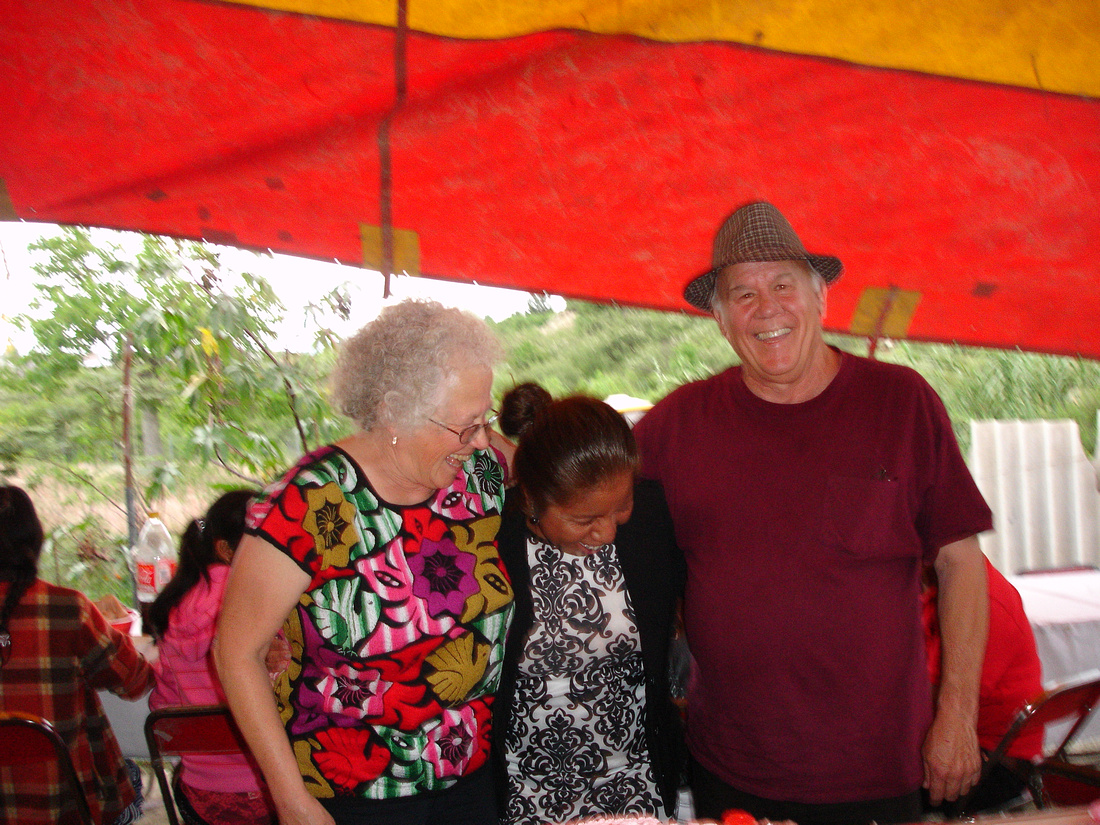

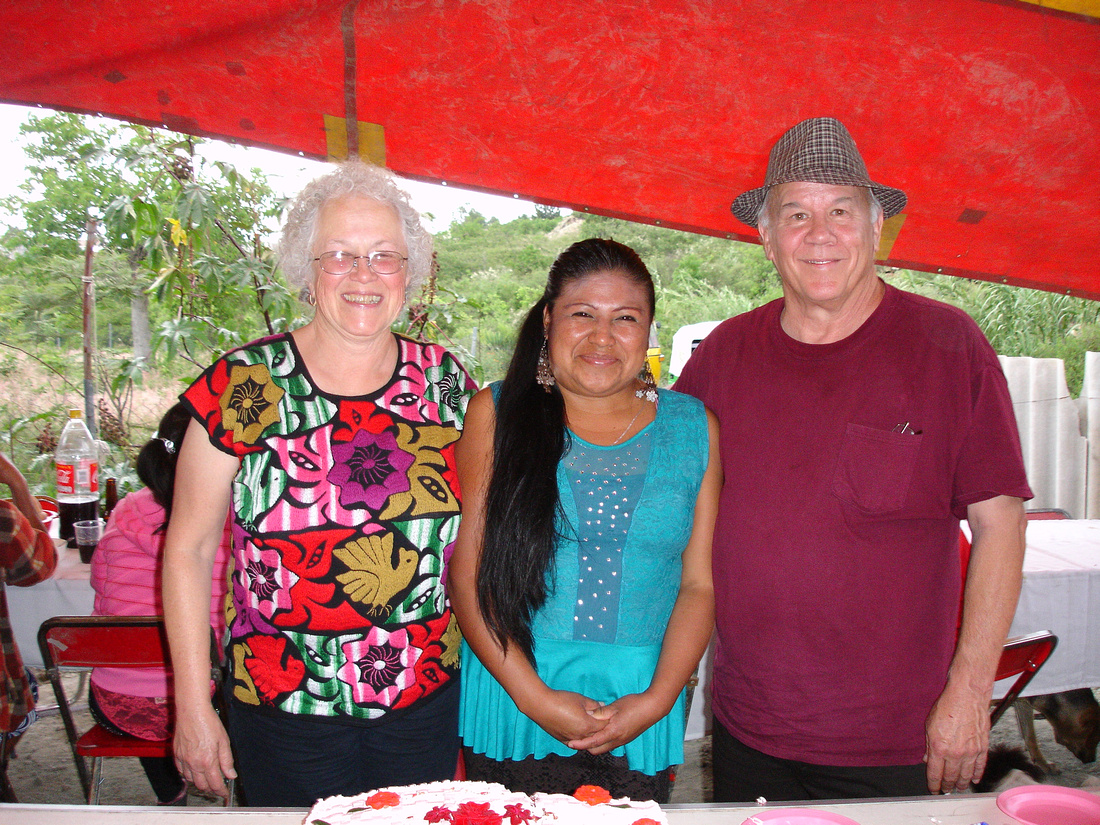
 Our compadre and comadre.
Our compadre and comadre.
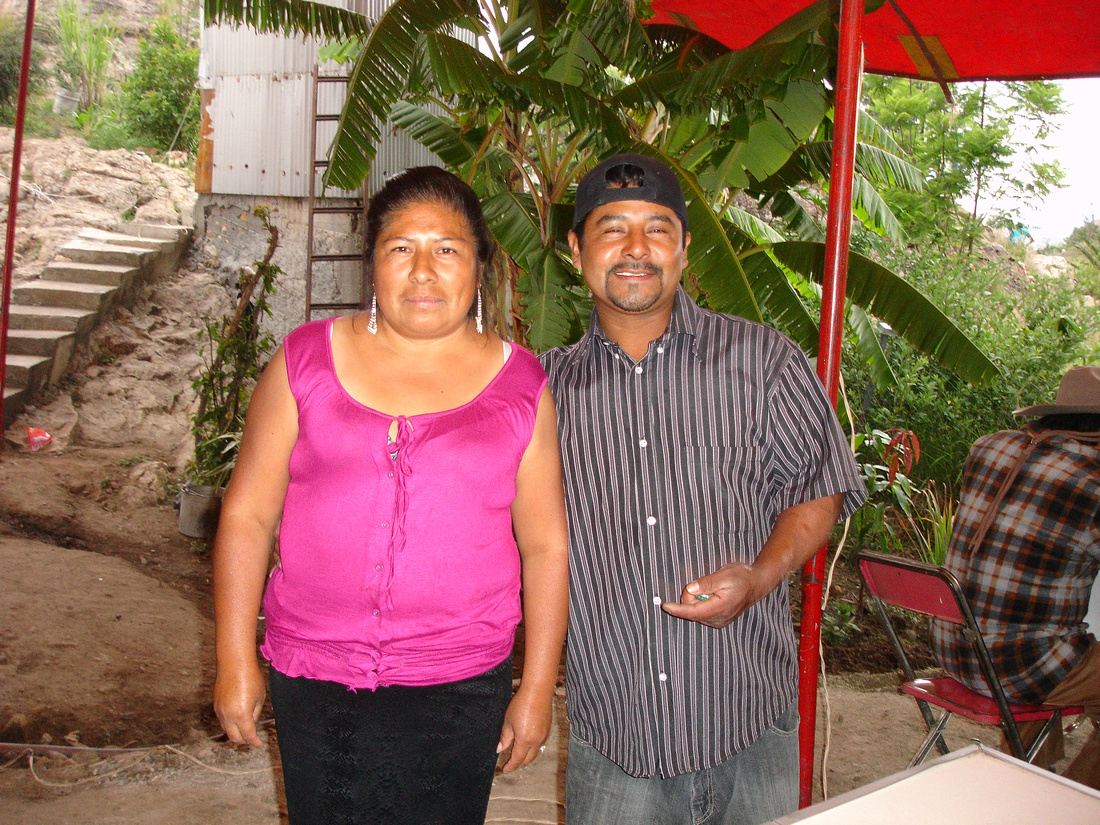

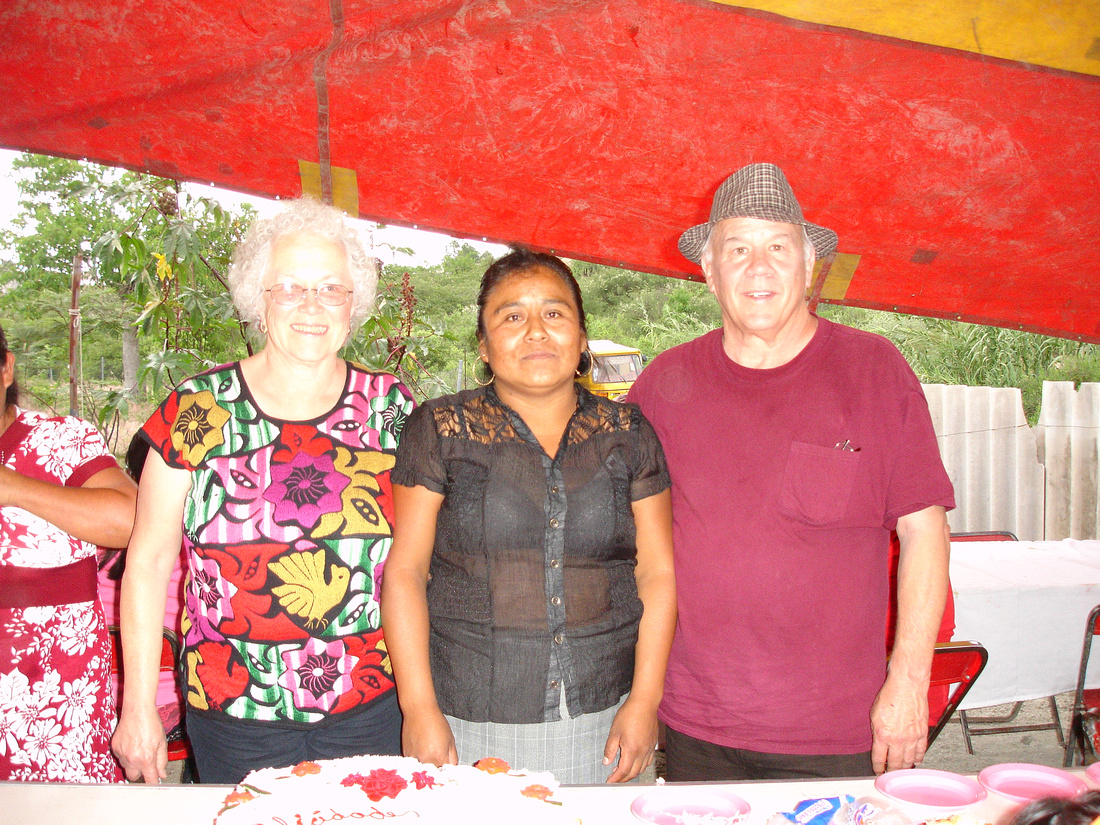

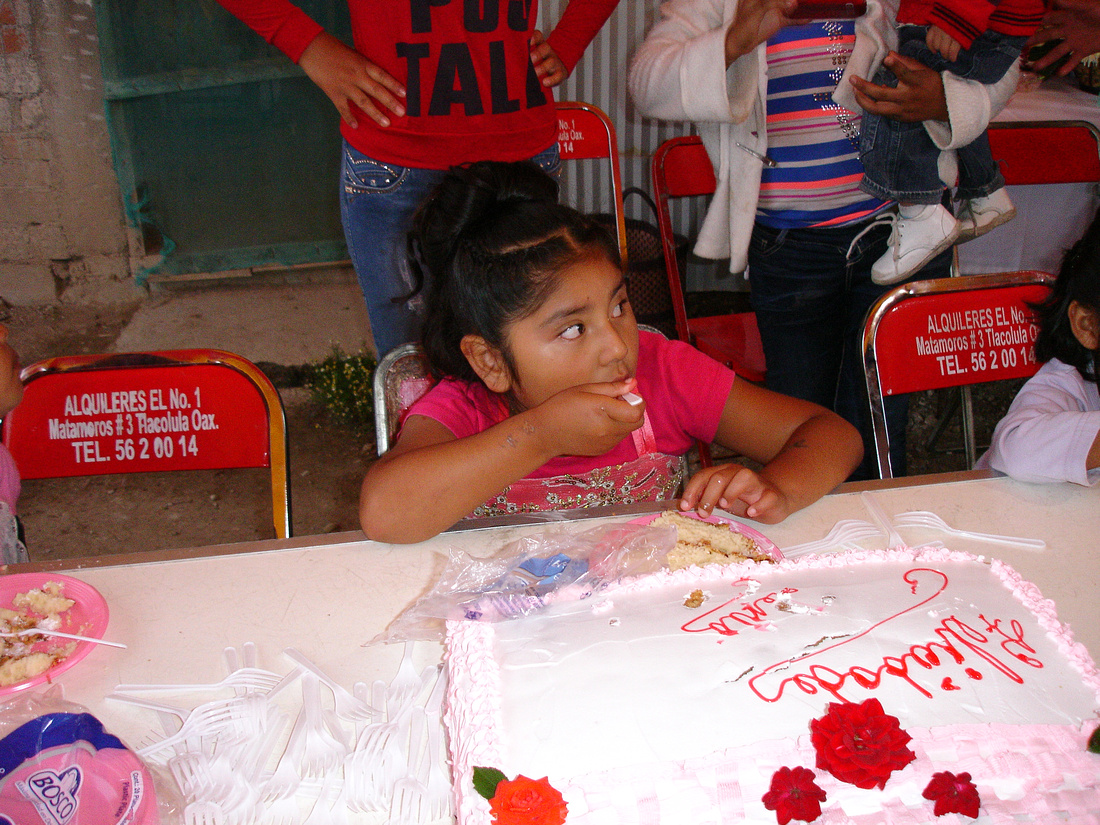
 We danced until about 10:30.
We danced until about 10:30.


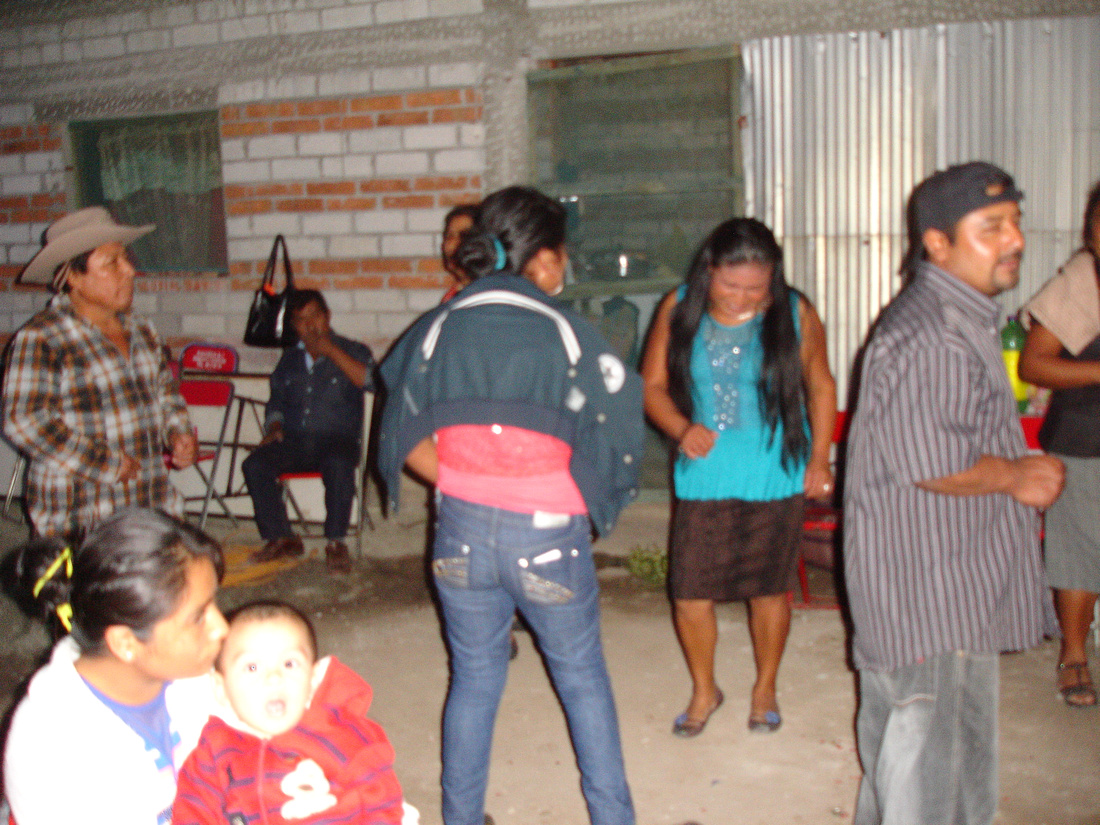



The end of June we celebrated the 3rd birthday of Ali (Felipe’s granddaughter), Margarita’s visit here (also Felipe’s granddaughter), and our third year here in Oaxaca. We had the fiesta here at our home with about fifty guests. Felipe’s daughter Leticia made tamales, Beth and I bought a cake, friends and family brought drinks (mezcal, beer, and soft drinks). It was a fun day with piñatas, games, and dancing. Fiestas are special to us when they involve Felipe’s family.
Ali trying to break a pinata.
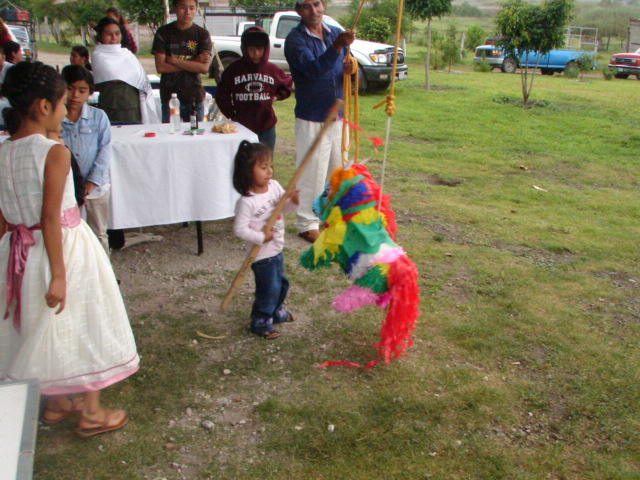

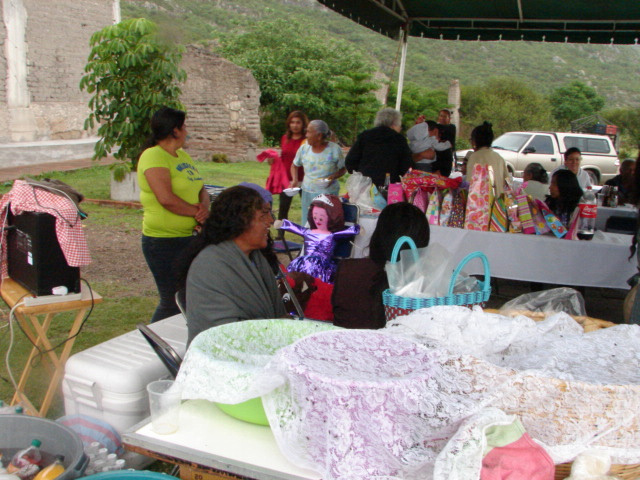

Margarita with a friend. She'll be going back to North Carolina the middle of August.
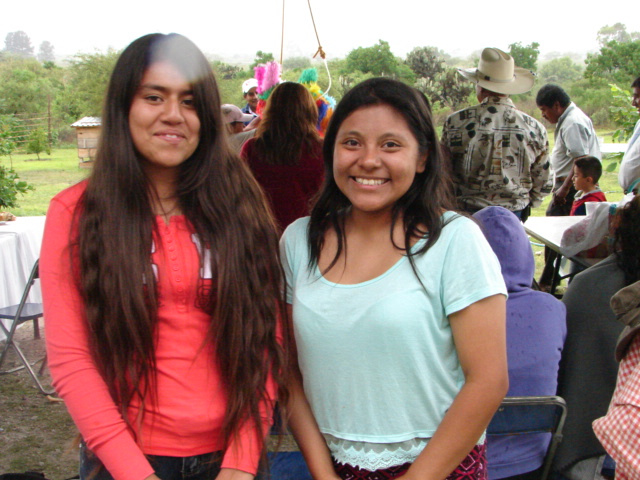

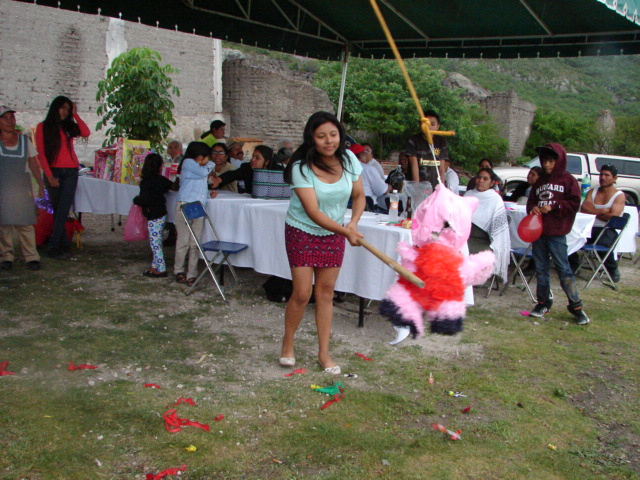

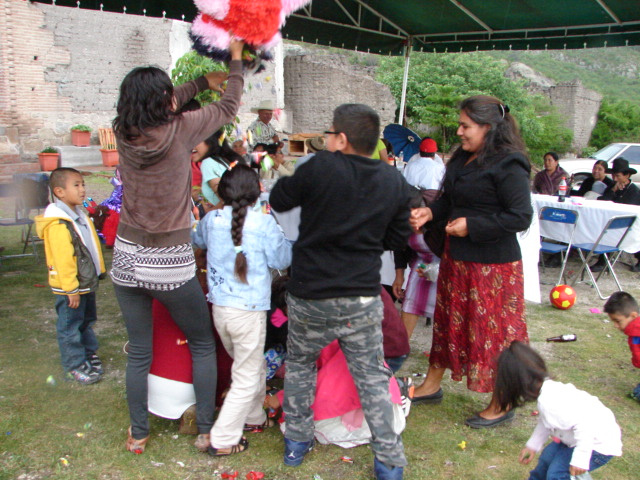

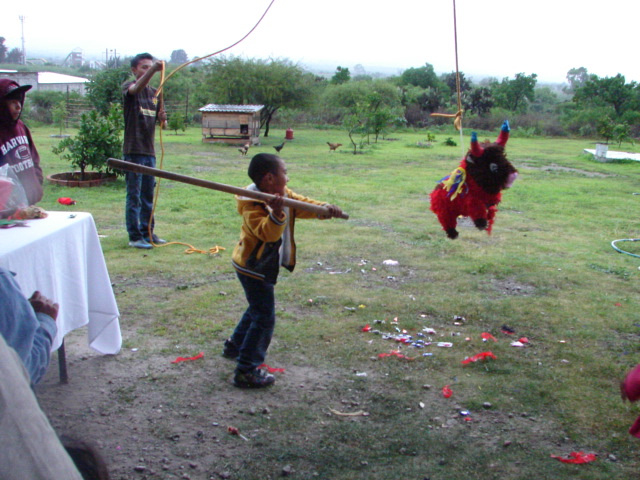

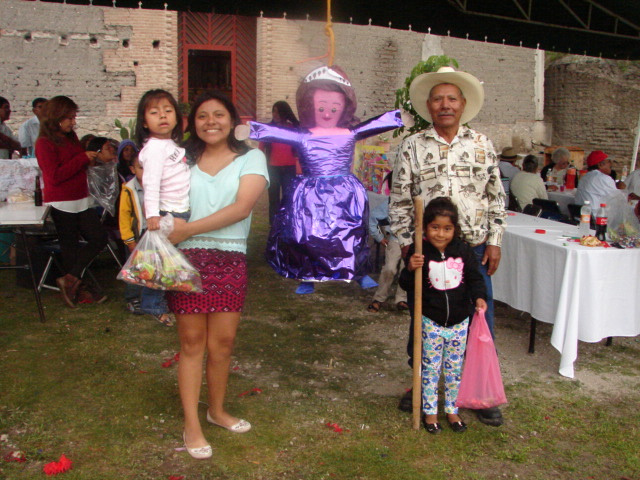



This bag of balloons was broken like a pinata. Some of the balloons have peso bills inside of them.
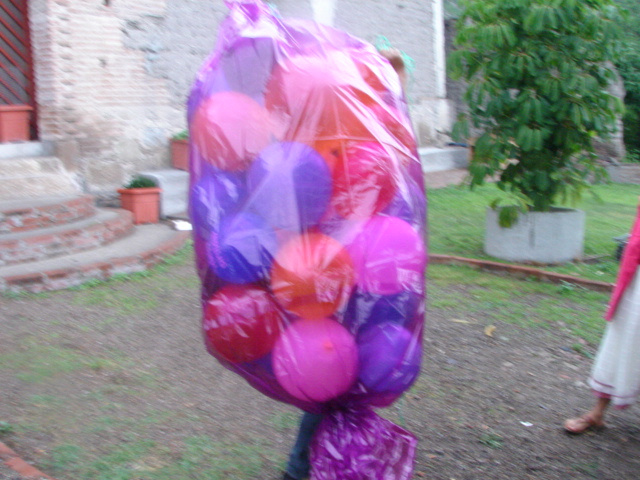



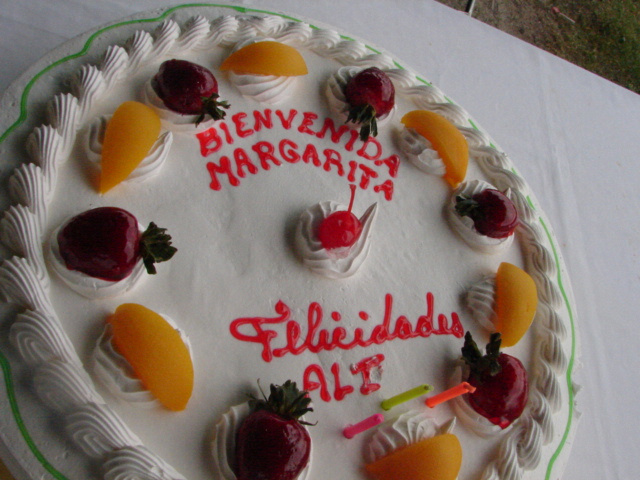

We bought trick candles that don't blow out.
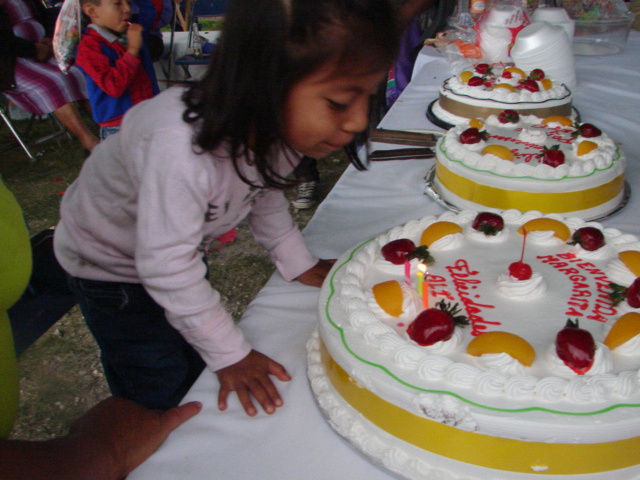

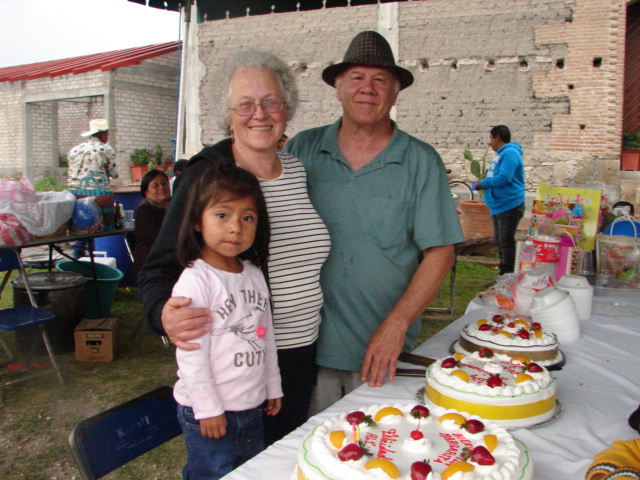

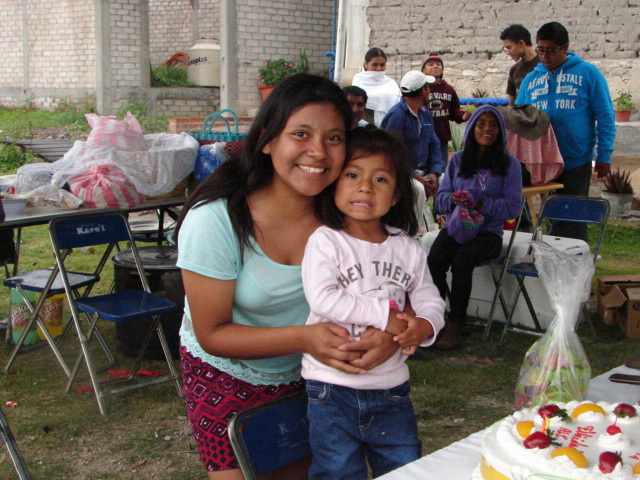

Cups of tapioca.
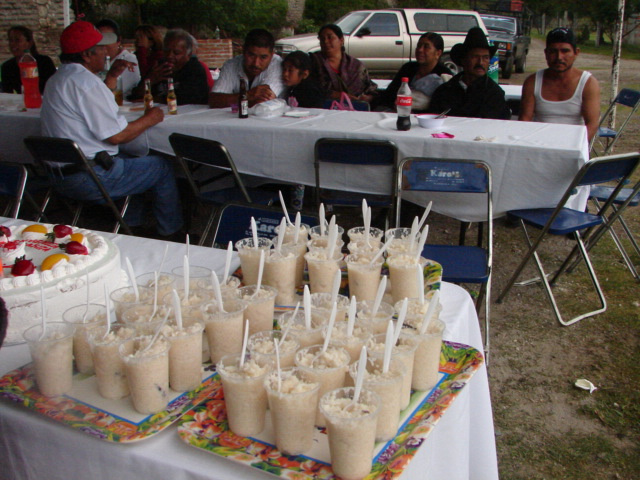

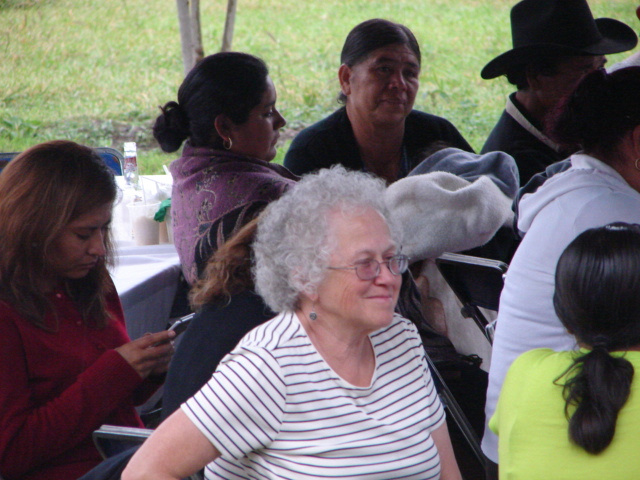

Me, Mr. Morga, and another neighbor. I think those were mezcal induced smiles!!
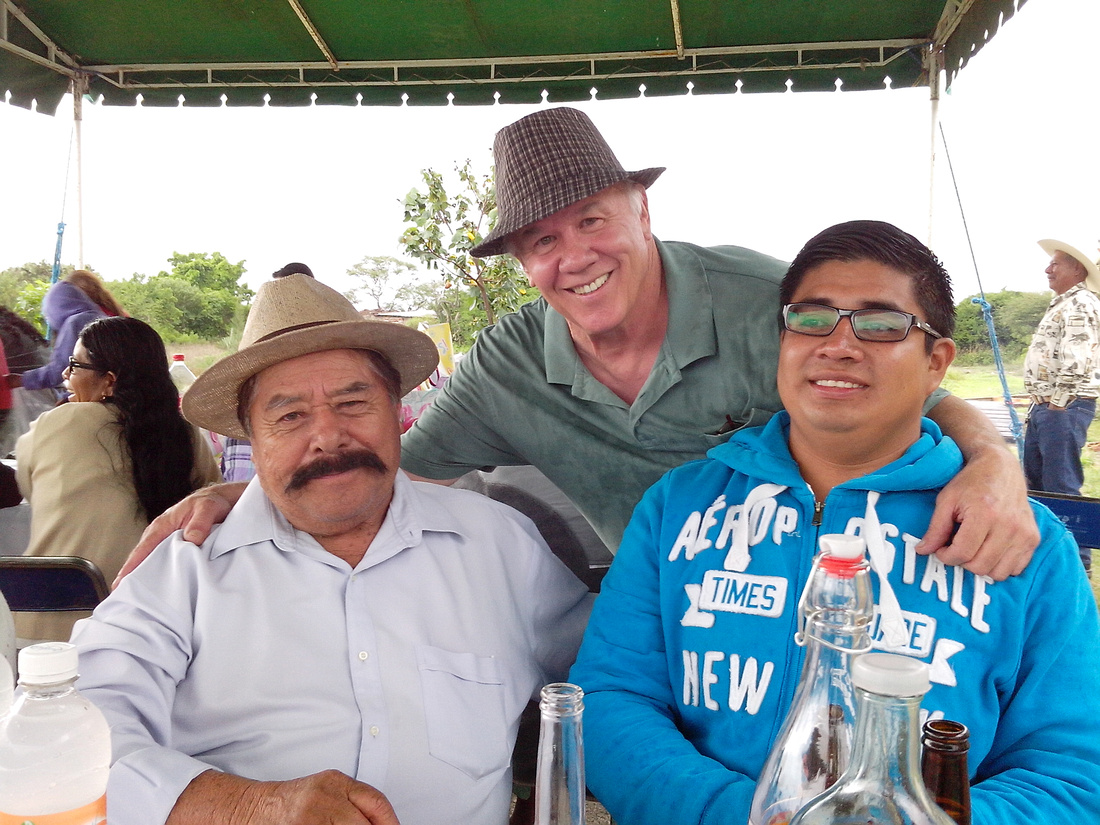

It hasn’t been a good year for rain. It started out well but good hard rains have been rare. Farmers in Union Zapata are beginning to feel desperate. Even farmers with wells are feeling the lack of rain. Wells are drying up which makes it more difficult to get to well water as the levels drop. We are lucky; our well remains at a steady six meters or higher. I measured the other day and our level was seven meters of water. We’ve heard of wells drying up. That means having to pay to have water brought to homes. We bought water for a while. You certainly live differently when you’re buying it. Being able to take a hot shower is a luxury here. Most bathe in cold water. The idea of getting ready for work in the morning and taking a cold shower is not the least bit appealing to us. There are people that prefer a cold shower. We think they’re crazy!
Our friend Felix who sometimes lives next door just celebrated his fifty-second birthday. He invited a few friends to help celebrate. Leticia made tamales. I usually have a few drinks at parties but decided to drink only water. The guys razzed me a little but I stuck to my guns. As I’ve said before you have to be careful with the mezcal. It’s not uncommon to attend six or seven events in a month. That is way too much drinking for me. It’s always a temptation though. Mr. Morga who lives by the highway in front of our house called us the other day to invite us to a comida. He had family visiting from California. It’s pretty rare when we get to have conversations in English at a fiesta or comida. We ended up staying there late. Some of the family had never been to Oaxaca. It was interesting listening to their perceptions of the valley. Following Spanish conversations at a fiesta can be tiresome. Sometimes I zone out and take a break. Mr. Morga did have some good mezcal which I had a little too much of. An interesting occurrence here is that many men when they get up in age drink only mezcal at events. Good mezcal without any chemicals tastes good and leaves no after effects. Many younger men throw caution to the wind and drink anything offered to them. Whopping hangovers! A welcome change here is that it’s very rare when someone becomes aggressive from drink. Back in the nineties is was pretty common. It might be because of the circle of friends we now have. We are also selective about the fiestas we attend.
For Felix's birthday Letty made tamales before hand and just needed to steam them a little to warm them up.
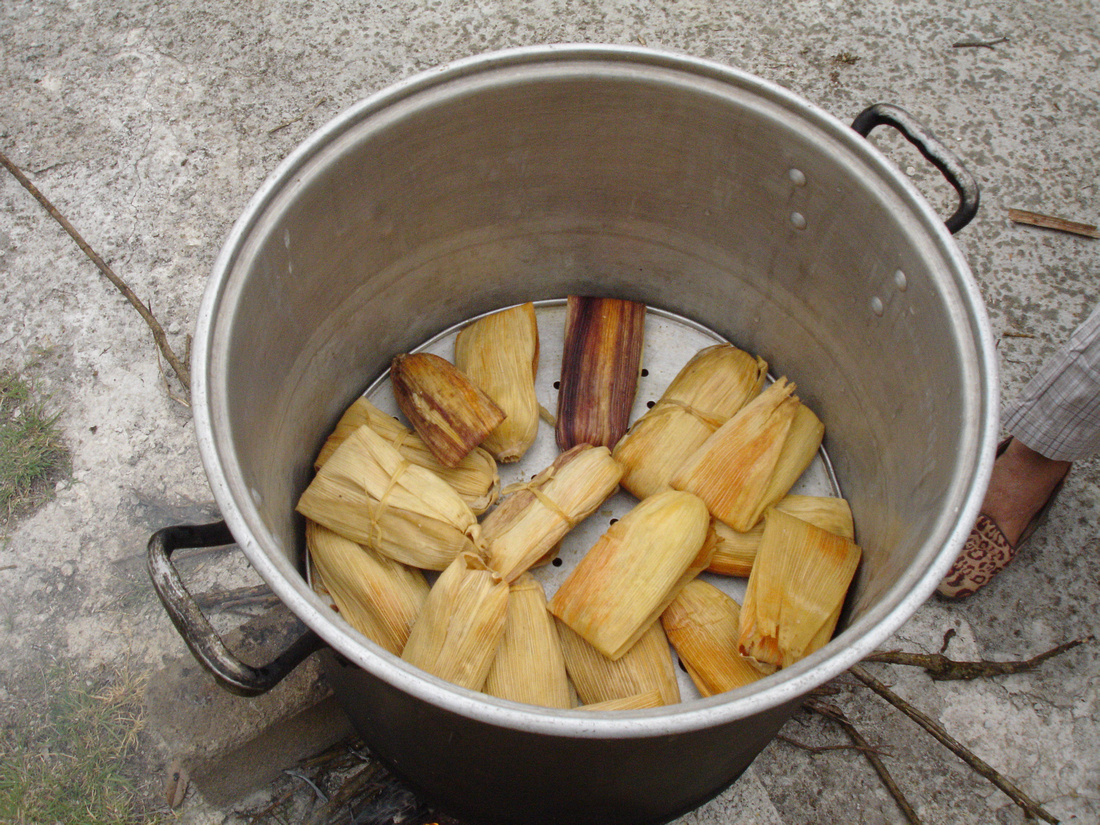

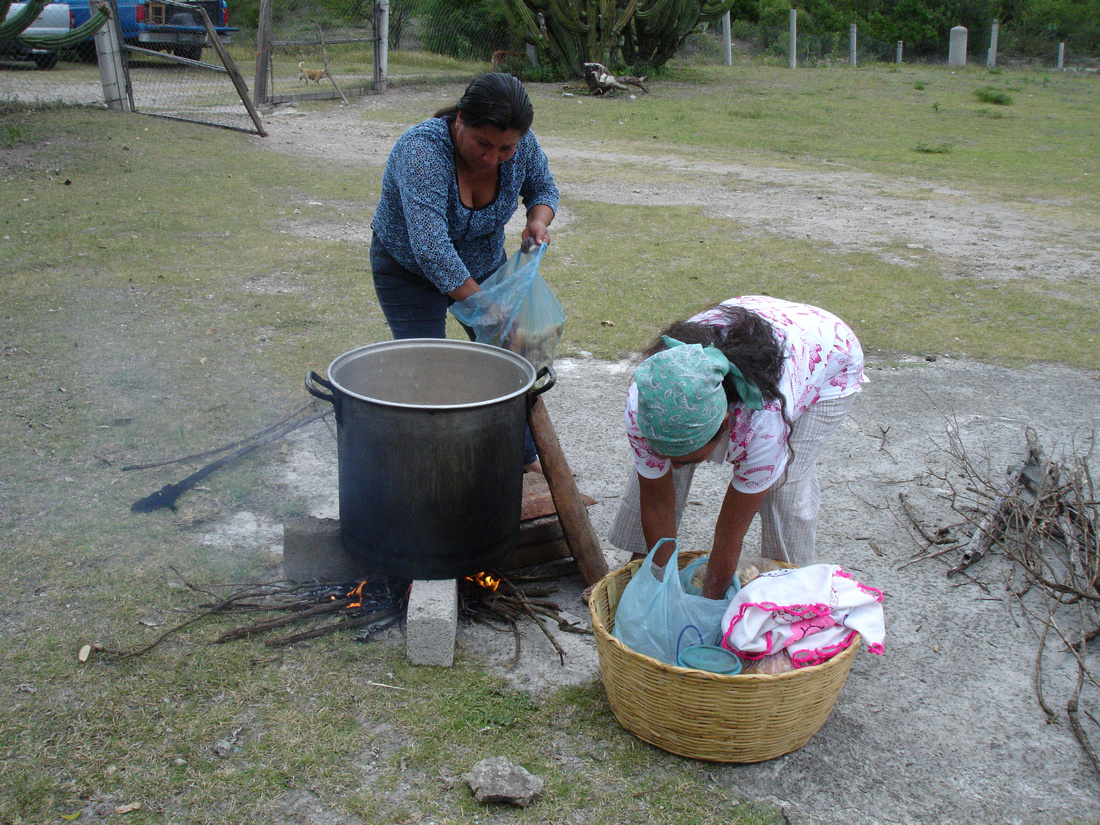

The gentleman in the middle is a retired physical education teacher.
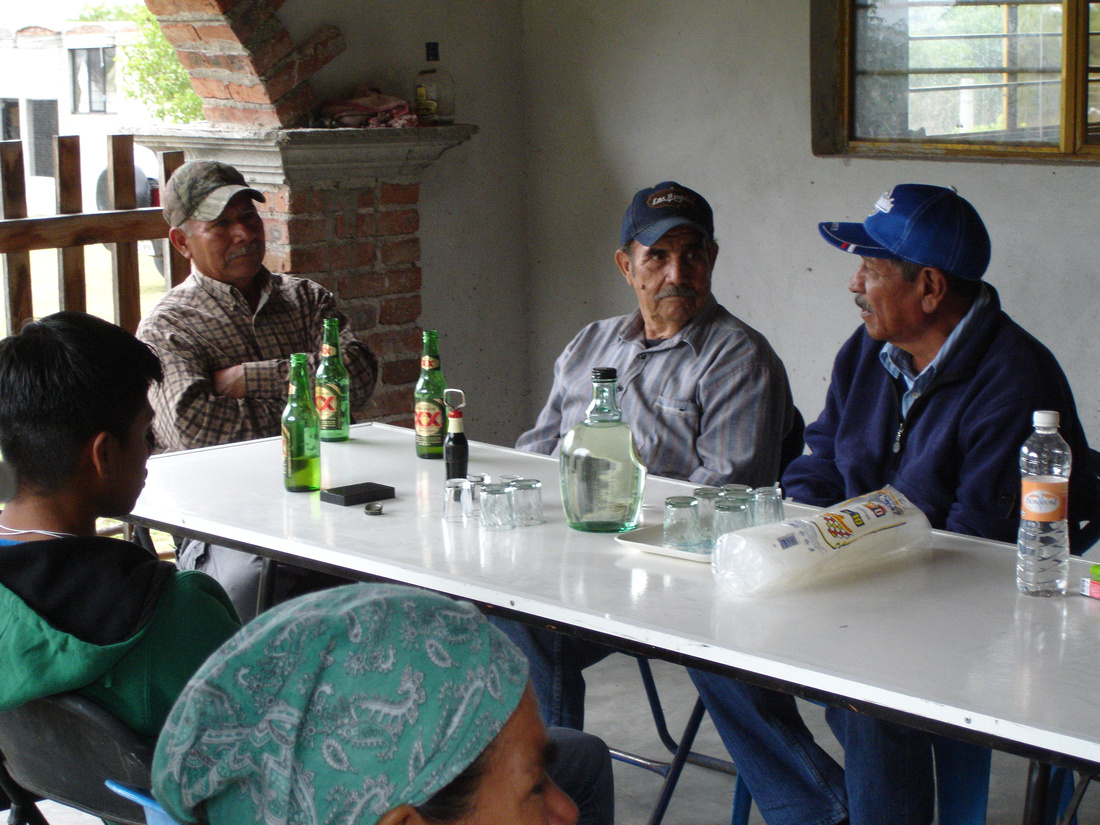

Manuel's grandson.
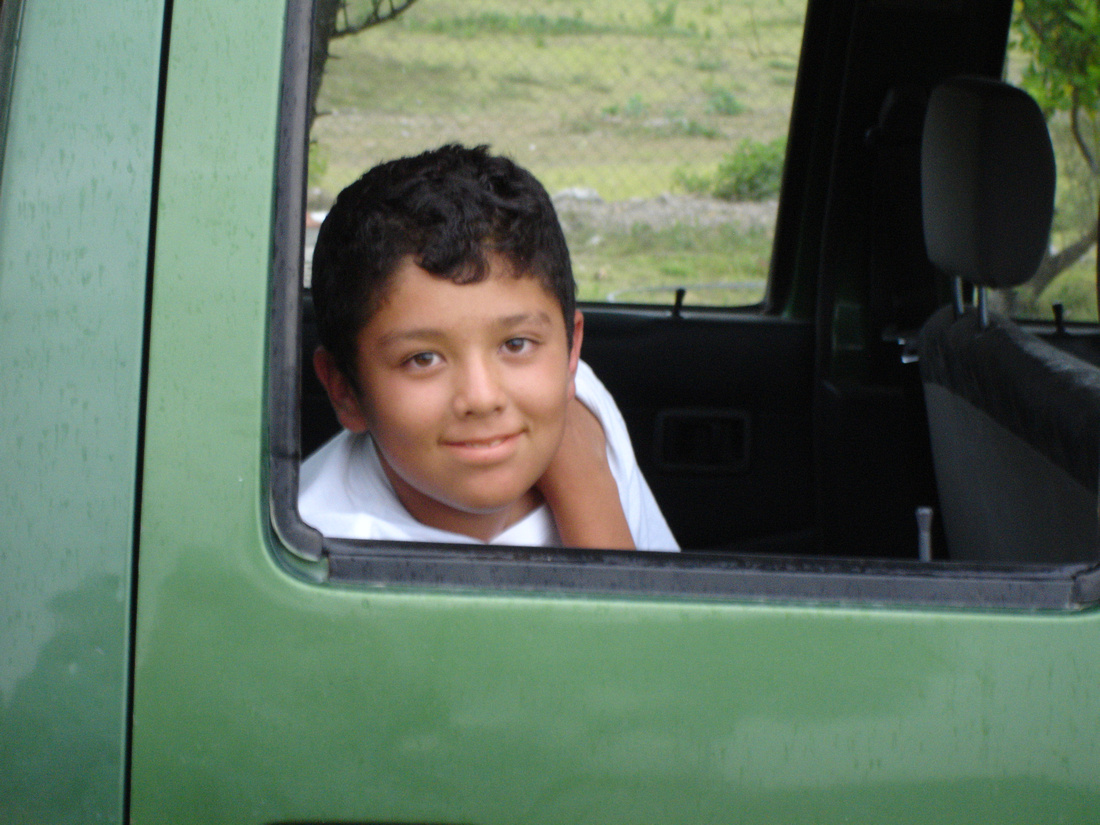

Felipe and Beto.
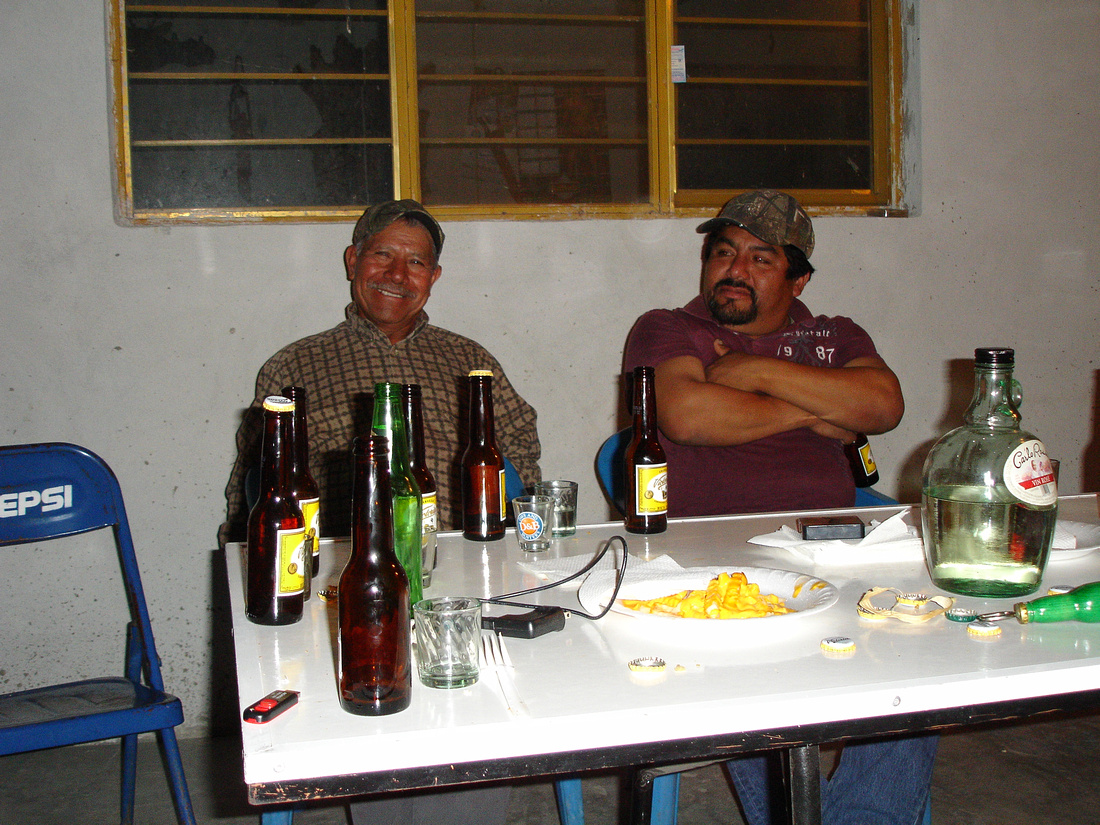

Felix and his son who just graduated from high school.
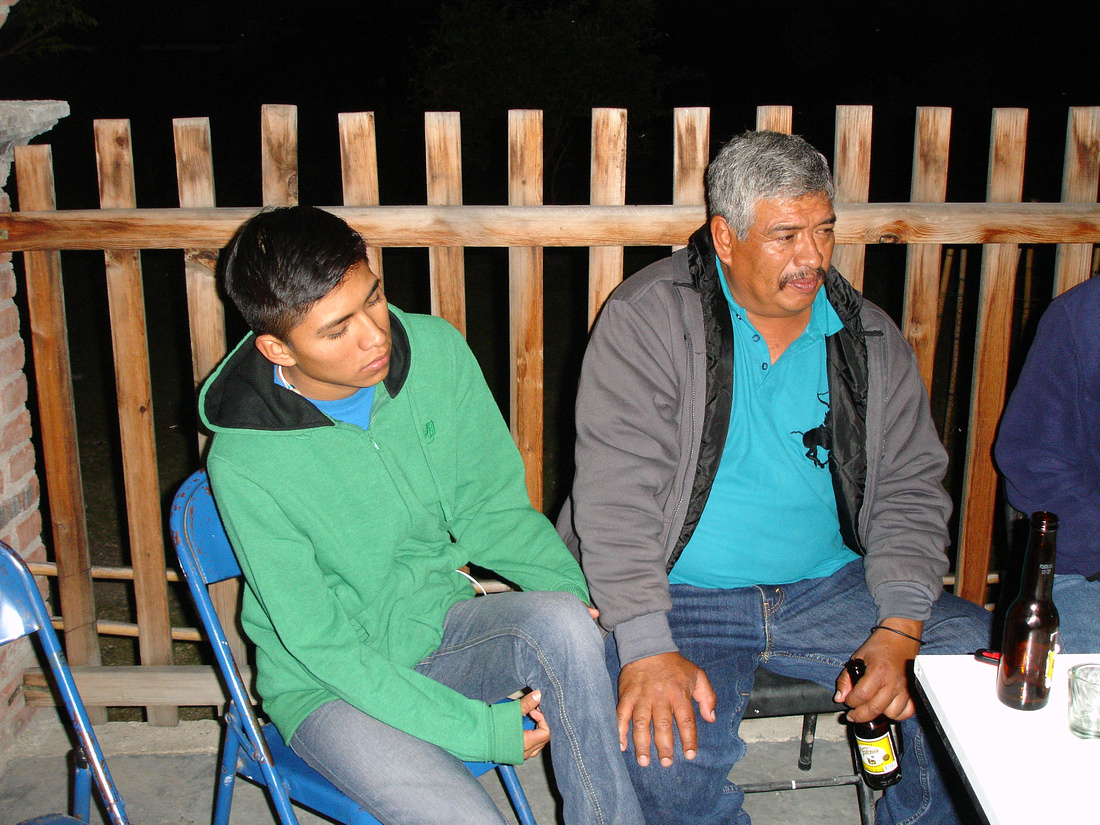
 Scooter looking for hand outs.
Scooter looking for hand outs.
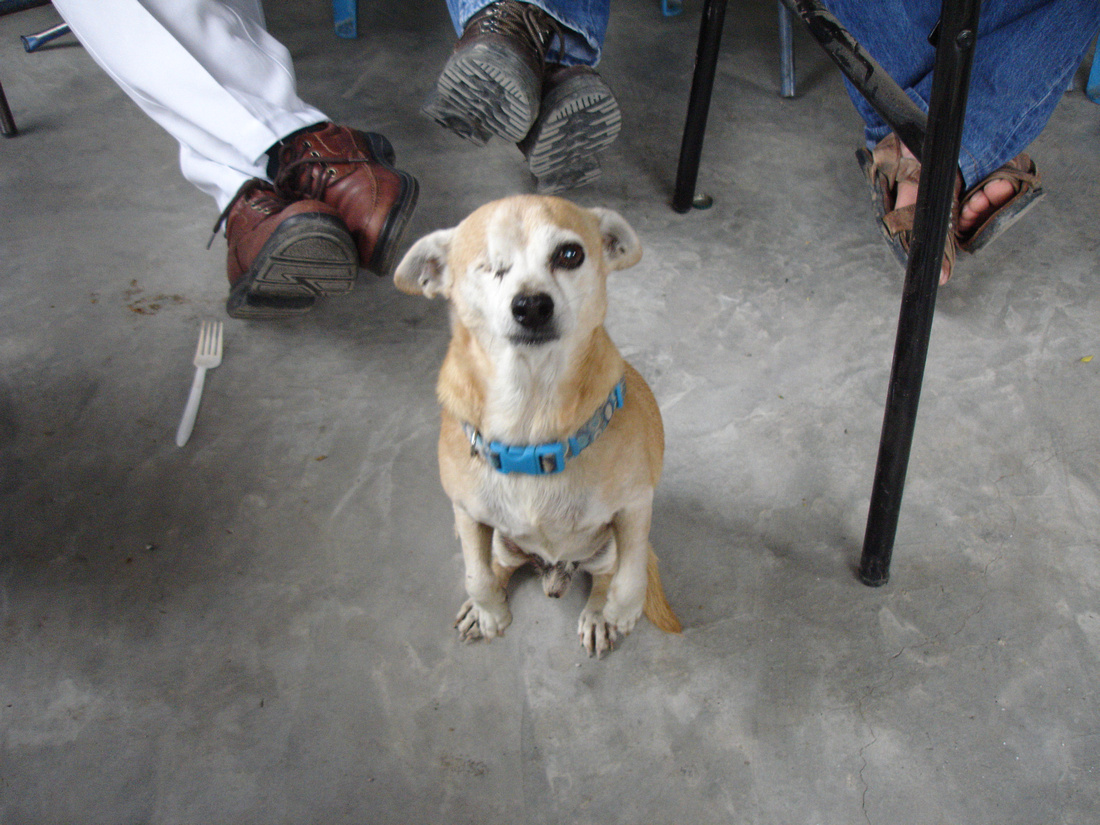

At Mr. Morga's birthday party his son in law played and sang. It was touching to see Mr. Morga surrounded by family and friends.
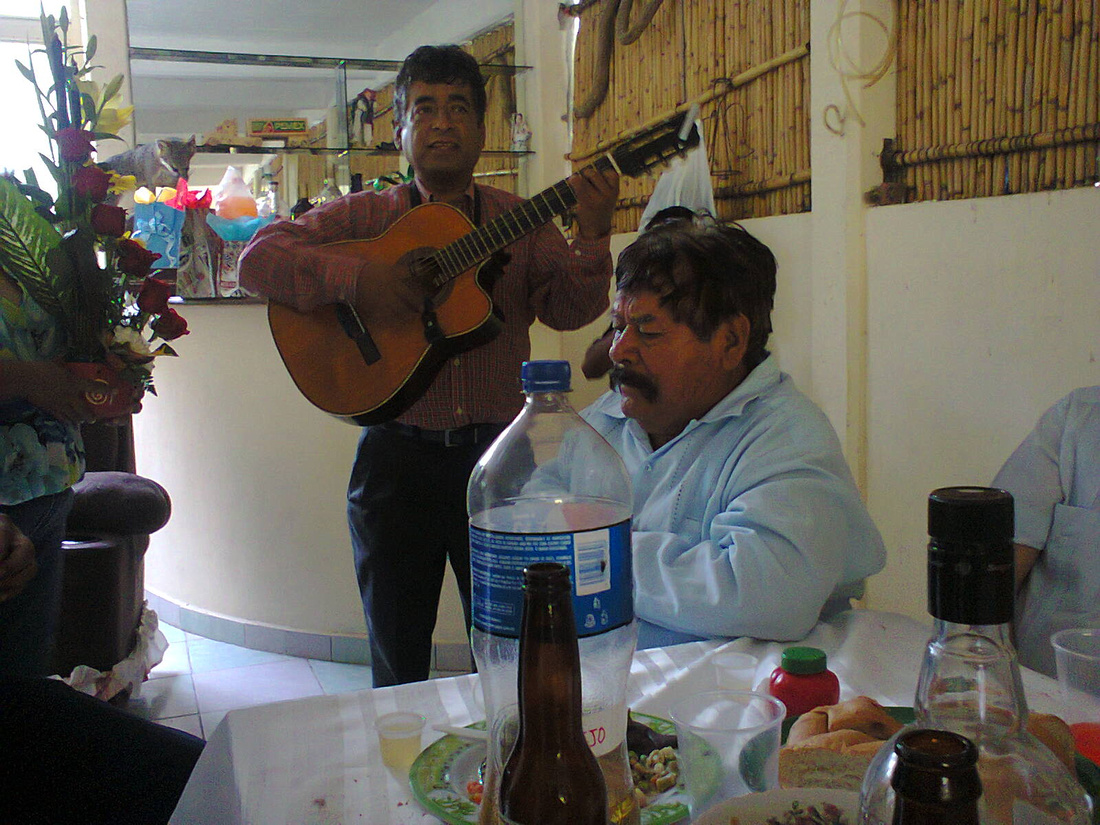

We’ve had to say goodbye to Vic Jimenez who is leaving Oaxaca to work in Puebla. We wish him all the luck. He’s been a good friend and has added to our life here immensely. Vic’s a fine young man with a great work ethic. Beth and I both would be proud to have him as our son. Best wishes to you Vic. We will stay in contact.
We wish a belated happy birthday to my cousin Dan Self who resides in Washington State. We love Dan and what he stands for. I would love to get a visit from he and his wife Cindy. Maybe one day!
Felipe is making a little lean-to on his property in front of our house. He cleared a large area which opens up our view. He lives in Union Zapata so I’m guessing this will be his getaway from the village. Eucalyptus trees are the preferred tree for the four posts that will hold the roof. I believe it is because they don’t crack or split. It’s a real solid, heavy tree.
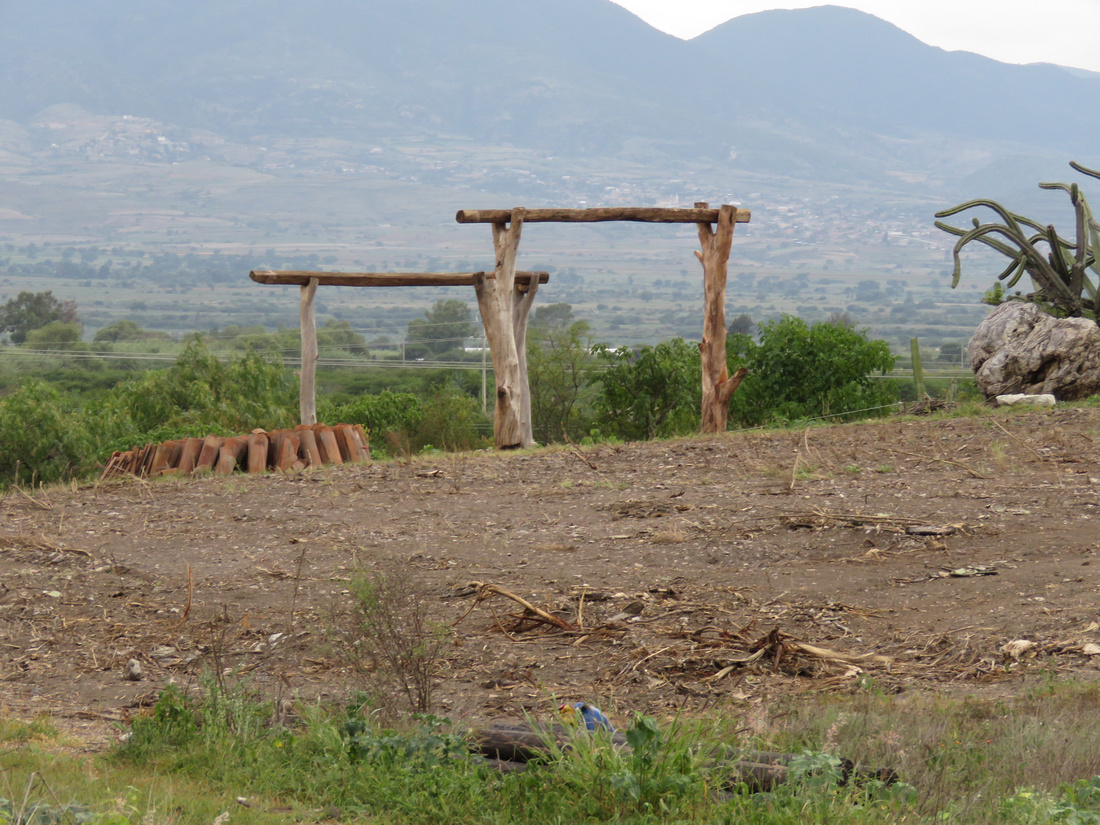



This view of our house is new because Felipe cleared a lot of the woods away for planting. It really shows how close we are to the mountains.
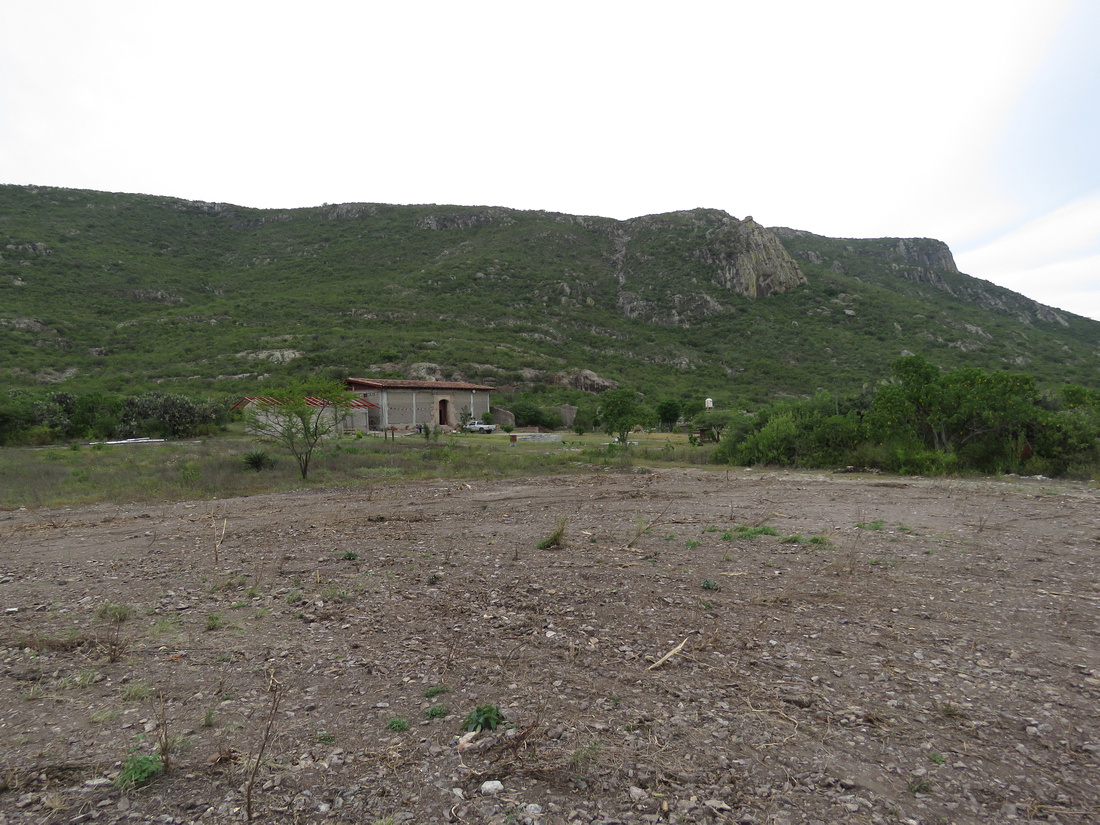

While clearing away brush Felipe found this large rat snake. It was well over a meter long and quite thick. he eventually wandered into the brush.
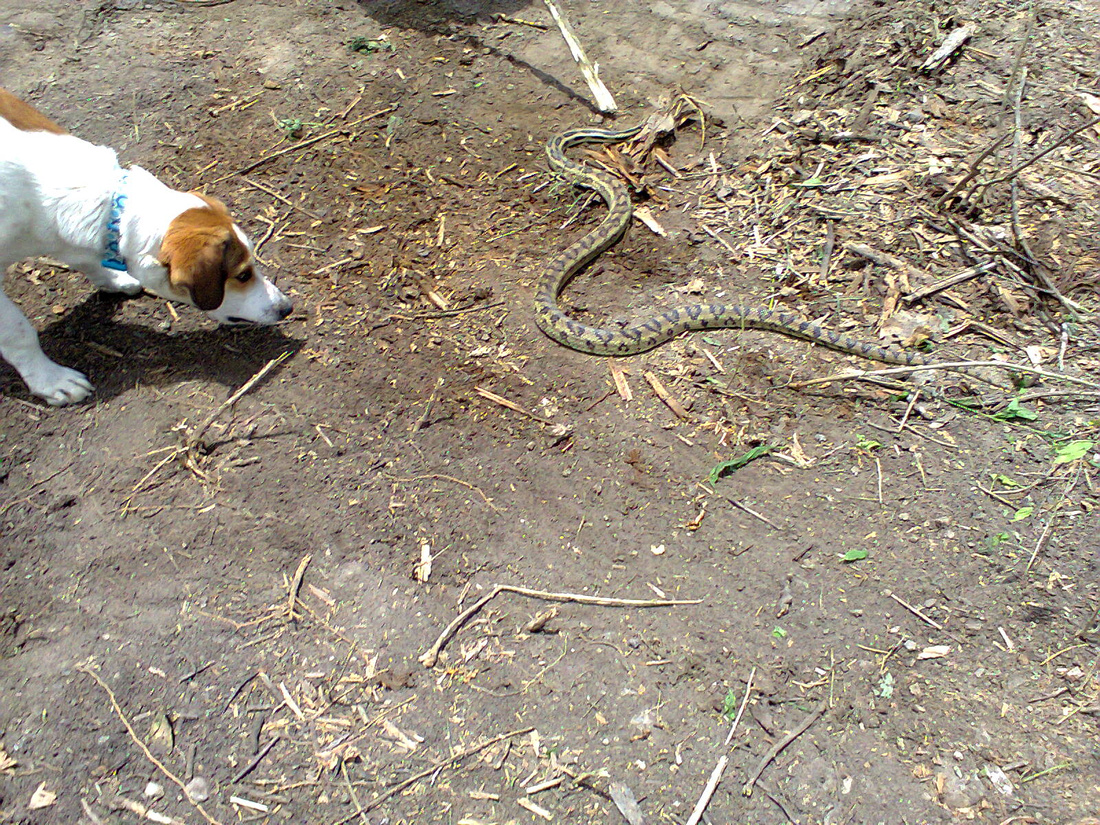

The way electricity works down here is that the less electricity you use the more subsidy you receive. There are several levels according to usage. If you go over 500 KW of usage you lose subsidy and are put in the highest bracket. We were using many electrical items and went over 500 KW of usage. Our bill more than doubled. I found out if we stay below 500 KW of usage for three pay periods (that’s six months), our bracket will drop again. We’ve reduced our consumption and are on our last pay period. October should bring us back to thirty dollars a month.
We have a new puppy. Harley is a six week old Beagle. His first night he cried off and on all night. It was pitiful listening to him. We could do nothing to comfort him. He missed his mommy terribly. Never in my life had I considered having four dogs. But we have the time to spend with them and are able to provide food. They are such wonderful companions.
This is Harley, our new pup. Whether inside or out he runs around with his nose to the ground.


We celebrated my birthday in San Dionisio. Actually we received a call from Augustin to come for lunch. When we got there in addition to lunch they'd bought a cake. We'd decided that we weren't going to have a big party. It was perfect celebrating with Augustin, Dalia, and Iris.
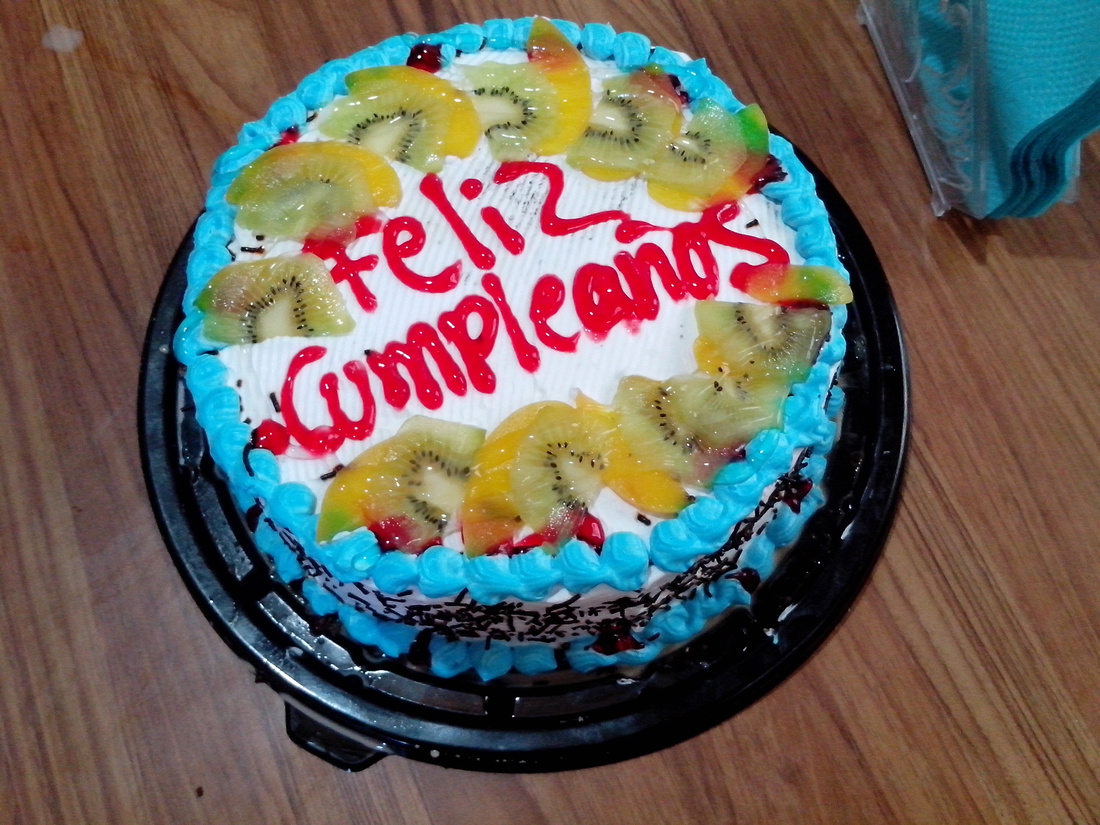

We are padrinos to Iris. She surprised me with flowers.
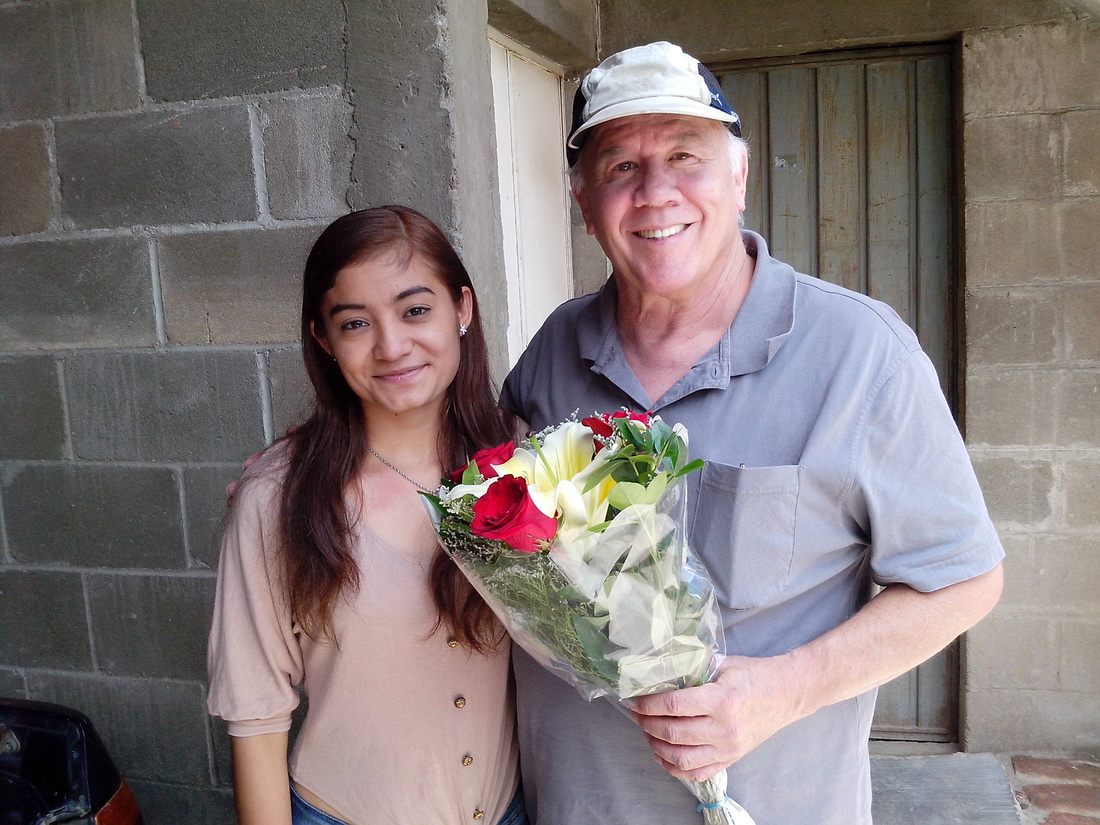

Sometimes Felipe hunts for rabbits around the house. He and a friend are skinning a couple. I hope all those nut jobs don't come after Felipe like they have that dentist who killed the lion. Sorry about that Felipe.
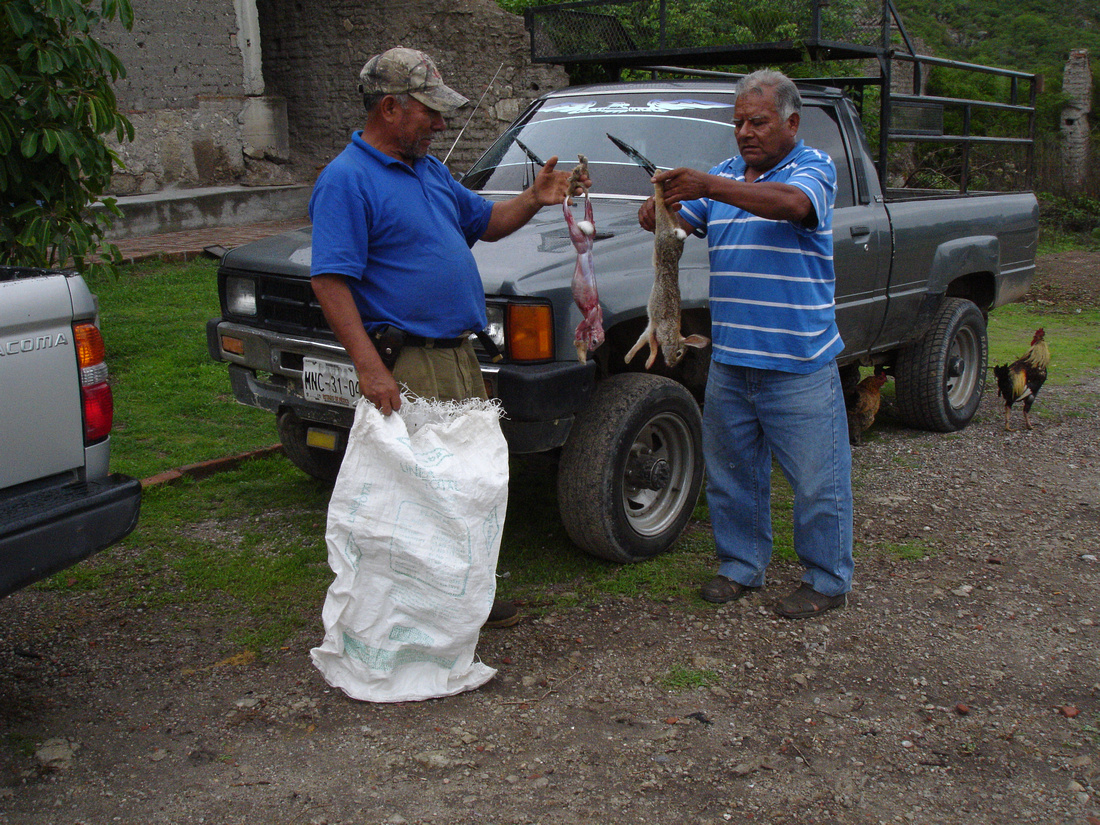

Our friend Beto's daughter Shela just graduated from fifth grade. Because of her high grades she was picked to be in a group that will present the flag during next years events.
Shela's group accepting the flag from the present sixth graders.
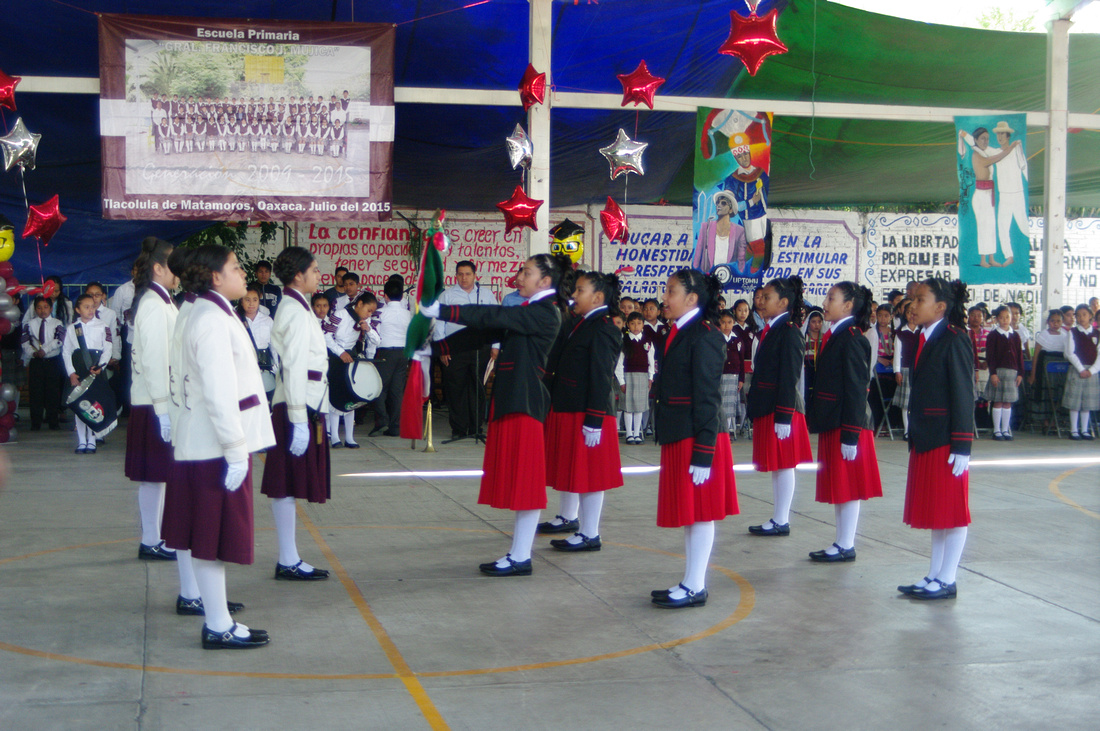

That's Shela far right.
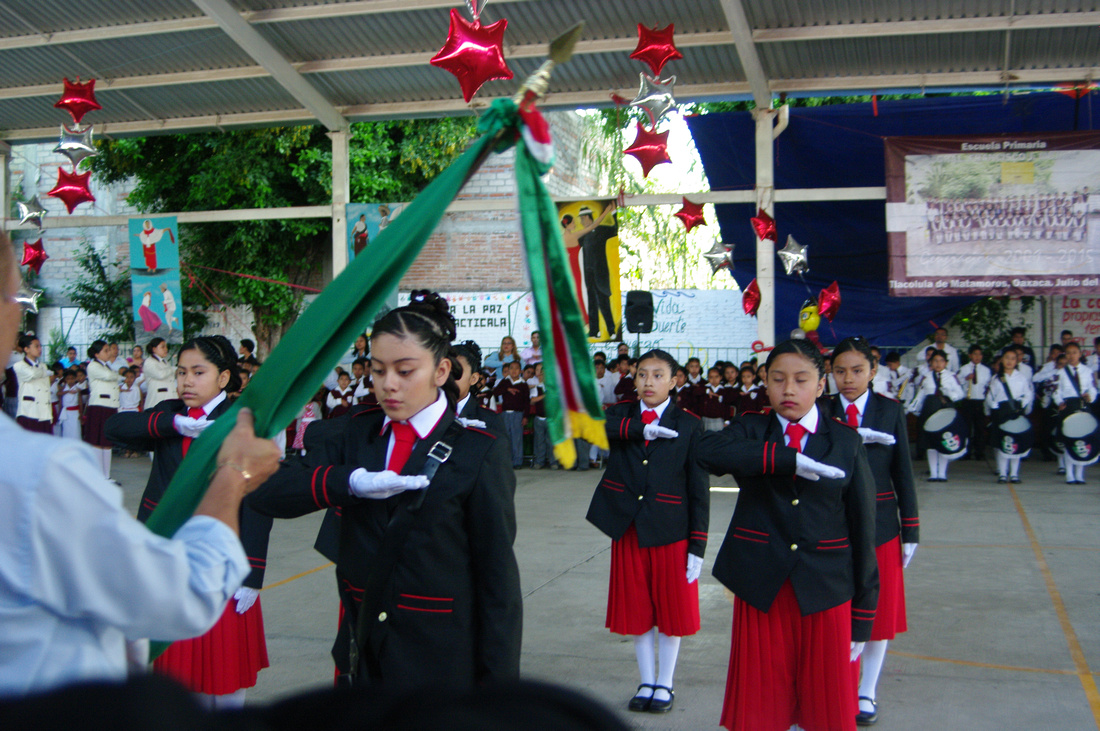

Congratulations to Beto and Lucy!!
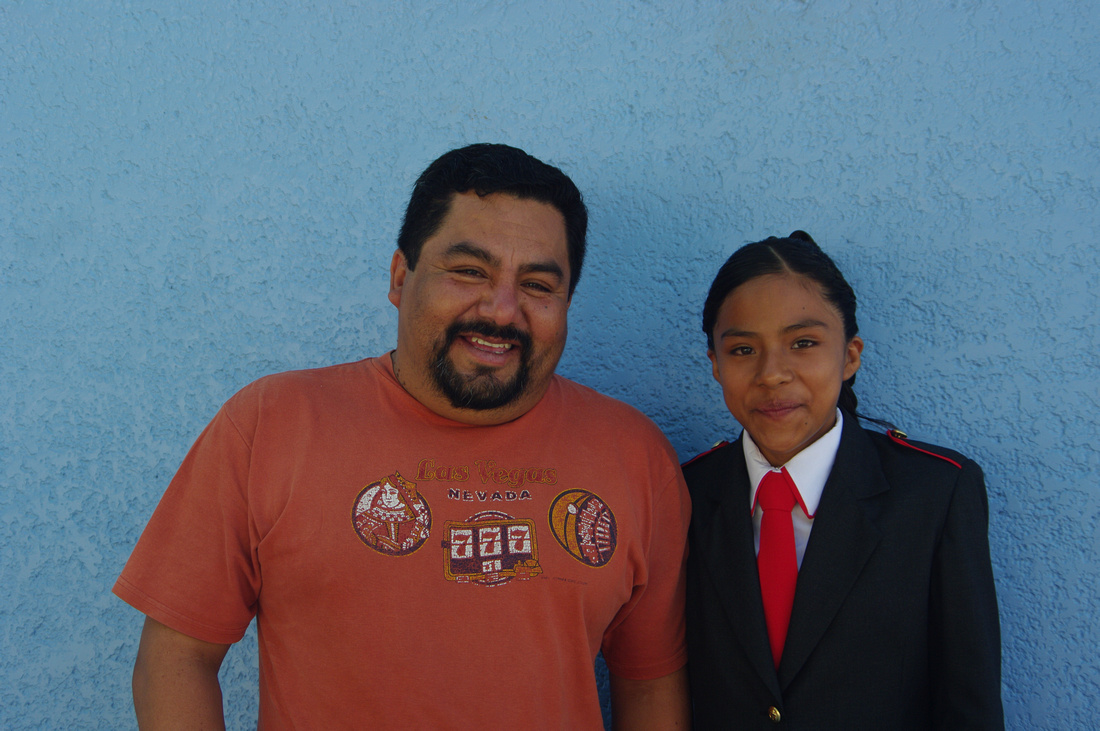

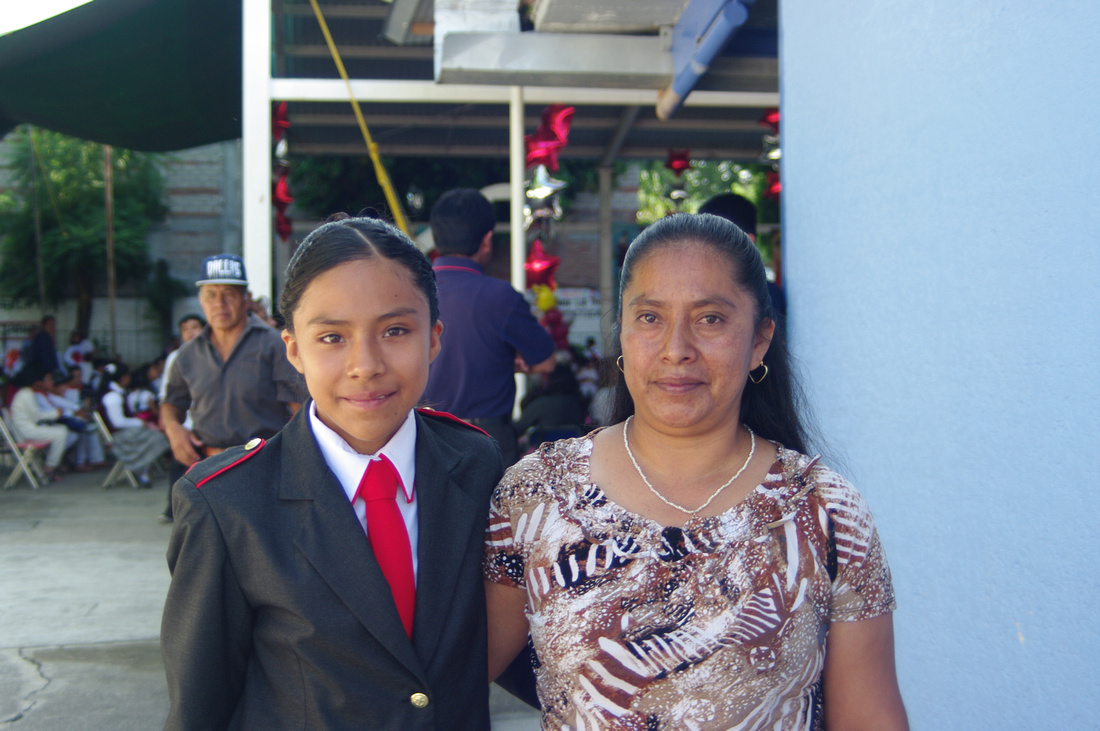

June 2015
Sitting here this morning beginning our new blog, I am smiling as I hear our two roosters calling back and forth. It sounds like a verbal macho battle. Our new rooster (Ganzo), like two of our dogs, has only one eye. His crow is also a bit pathetic as if he’d damaged his vocal cords but that doesn’t stop him from crowing back. Lucky’s four puppies can also be heard fighting and playing with each other. For some reason Lucky had her pups down on the river bank under some carizzo. After about a week she carried them up to the old abandoned house next to ours. One evening it poured. I checked on the pups and they were wet and trembling terribly from the cold. We brought them into the patio for the night and dried them good. The next morning I moved them into the dog house. They now like to sleep on the porch behind a big planter. Lucky’s been a great mom and Coby is now Tio Coby. He’s very patient with them even when they are biting his tail with their little sharp teeth. For the last few days the pups are venturing out into the yard. They play with the big dogs for a while then return to sleep. Of course Scooter wants nothing to do with the little bastards. If they touch him he growls and snaps at them. Lucky is now trying to wean the pups so she's gone for long periods and rarely allows the pups to suckle. I guess she figures she's done her time. Coby diligently keeps them company. The four pups have evolved into quite a challenge. It's a bit like caring for four one year olds. Some of my outside chores have to be done when the pups are asleep. They gather around my feet and make it very difficult to maneuver safely.
Feeding time is a zoo. The pups want what the dogs have. Dogs want what the pups have. Chickens want what the dogs have. Dogs want what the chickens have. Dogs want what the other dog has. Chickens want what the other chickens have. We truly have to be referees. Everything has to be planned and timed.
Lucky feeding her pups.

Tio Coby was very nervous when the pups began to leave the house. He even tried to push them back in.

One of our hens disappeared for a couple of days. She returned then went missing again. This went on for a while and we finally figured out she had a nest somewhere in the brush. We are anxious for the day she returns with her pollitos. I’ll have to put a ramp in the doorway of the coop so they’ll be safe at night. The crowing continues and the two roosters maybe working up to a physical battle (probably not since Ganzo is a coward).
This is Gonzo our new rooster. The photo doesn't do him justice. He's very pretty.


Here's something you don't see every day!! Betty is our most domesticated hen.

From just a few rains everything is green again. It’s amazing how fast it goes from a dismal looking brown to a rich green color. The downside of the rain is that the bugs are back. We are constantly discovering new varieties. Some of the bugs like our plants and trees so we’ll be battling it out with them again. Some of the color schemes of the bugs are fascinating. Many are multicolored with strong colors and spectacular patterns. We are constantly reading about and trying natural repellents. The worst by far are the chiggers. The itching lasts for days.
You can see how green the grass is from just two or three rains.


A while back a friend asked if I could drive to Oaxaca to the bus station and pick up his nephew the next day. His nephew was flying to Mexico City then coming to Oaxaca by bus. The next day my friend and his wife got a call from their nephew. He’d tried to bring thirty thousand dollars into Mexico without declaring it. For a mordida (bribe) the officer was willing to let the nephew go. My friend didn’t have the money so they asked if I’d help. I wired the money from Banamex here to Mexico City to the account I was given. The whole thing ended up being a scam. My friend called their nephew who was still in California and had no plans of returning. It was a hard learned lesson. Bummer!! We were told later that most of these scams originate from prisoners who have cell phones.
Our last (and hopefully final) trip to Guatemala was our smoothest ever. The only problem was that about four hours from the border a village had blocked the freeway. The blockage was on a narrow strip of the highway in the middle of nowhere. I stopped behind a line of semi trucks. I got out and spoke to some drivers. They’d been there for twenty-four hours. The road was too narrow for them to turn around so they were stuck. They did give me directions though to bypass the blockage. We traveled through some interesting villages and lost about an hour and a half. One of the interesting things we noticed was that a few villages don’t use the little motorized taxis. They still use bicycles with a large rack on the front. Maybe it is because of the pollution factor? The blockade was still there when we returned so we had to go around again. The next day on our way home an official told me that the road was still blocked. Poor truck drivers. I was told the village had blocked the highway because the government had pulled the accreditation from a school. It seems that so many students were unable to pass their final exams that the government decided the school just wasn’t working.
The next three photos are of the actual blockade. With all that time on their hands you'd think they could pick up their garbage.
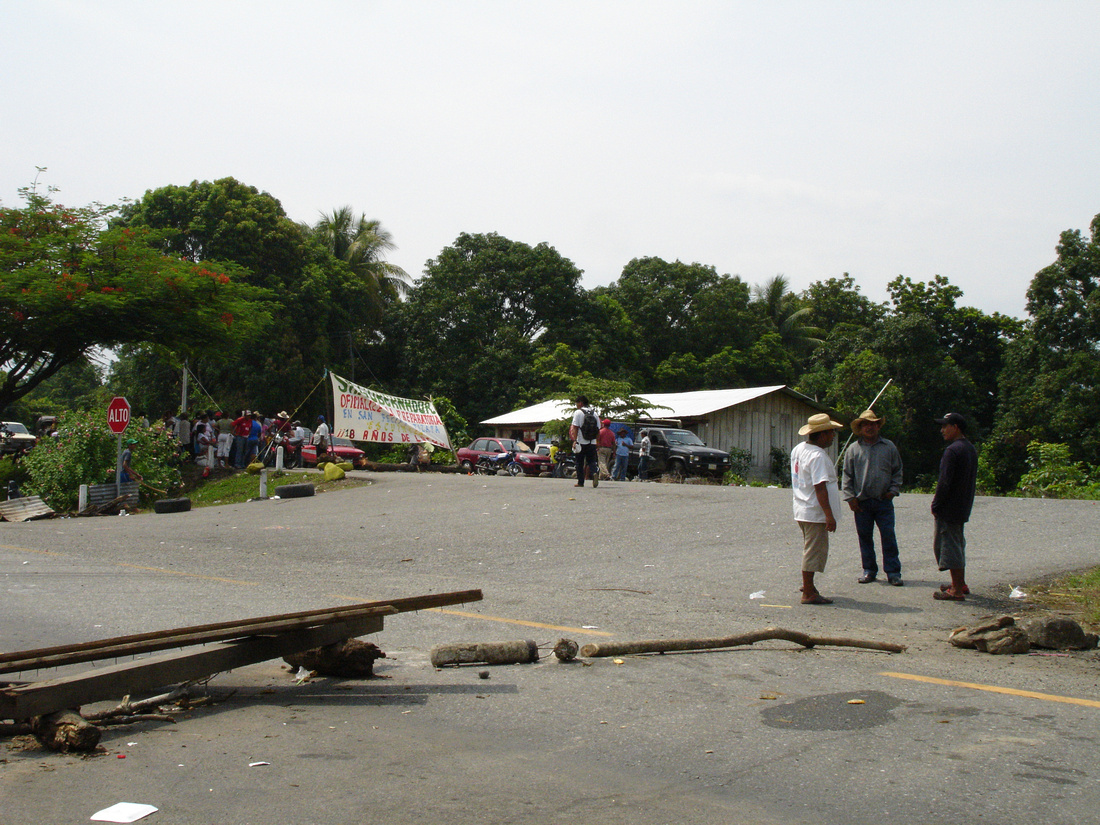

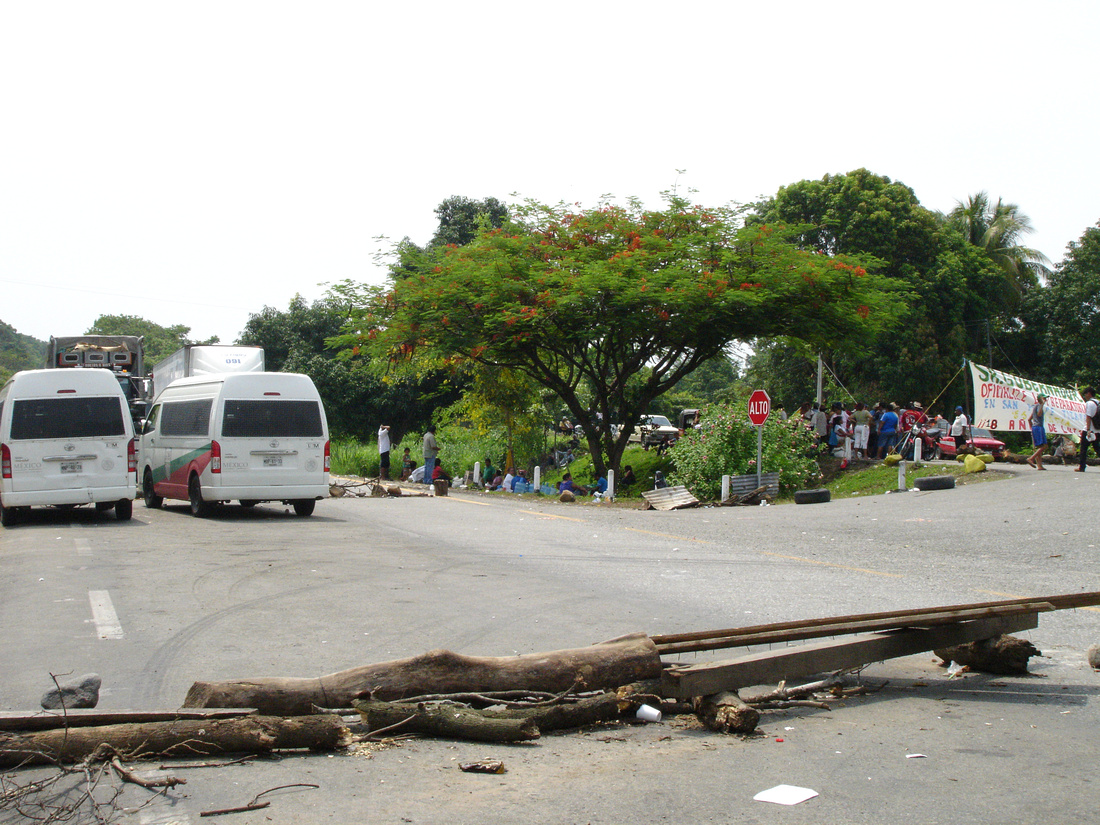



Beth snapped these photos of the detour out of the truck window. The vegetation here is very dense. The two following shots show the bicycle taxis. I've mentioned before that Chiapas is very beautiful but it's extremely hot and humid.
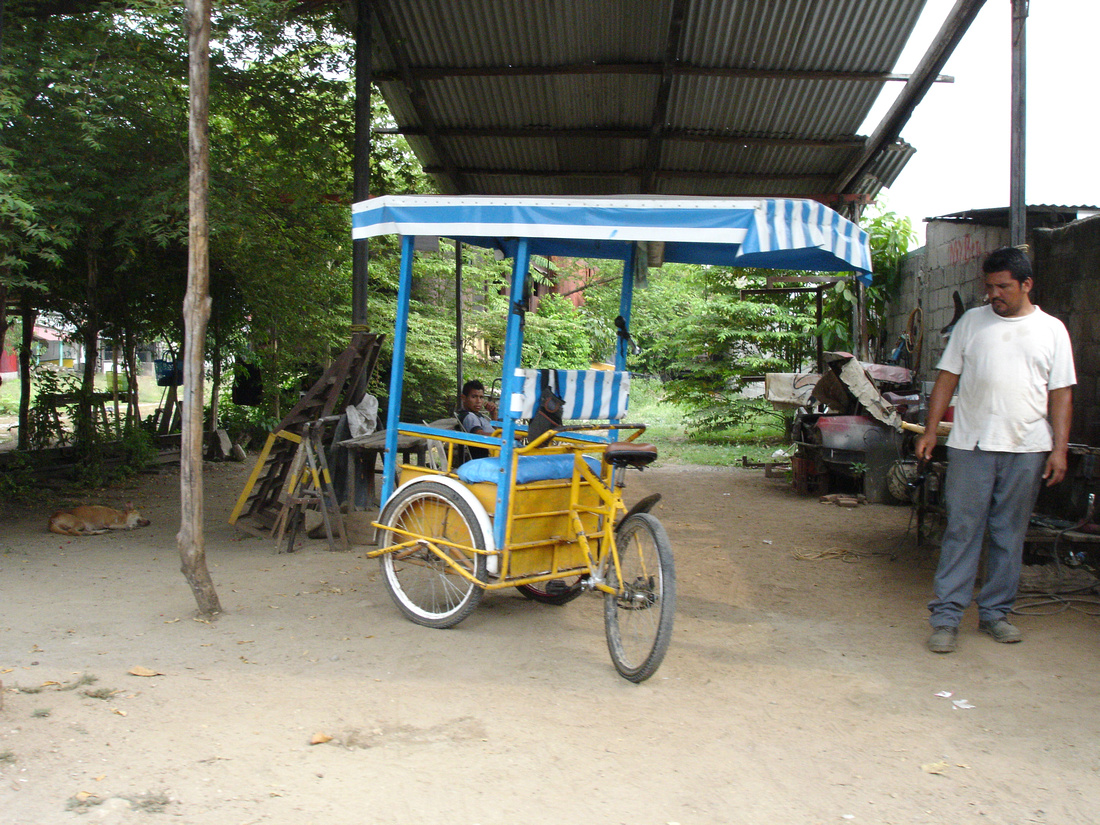

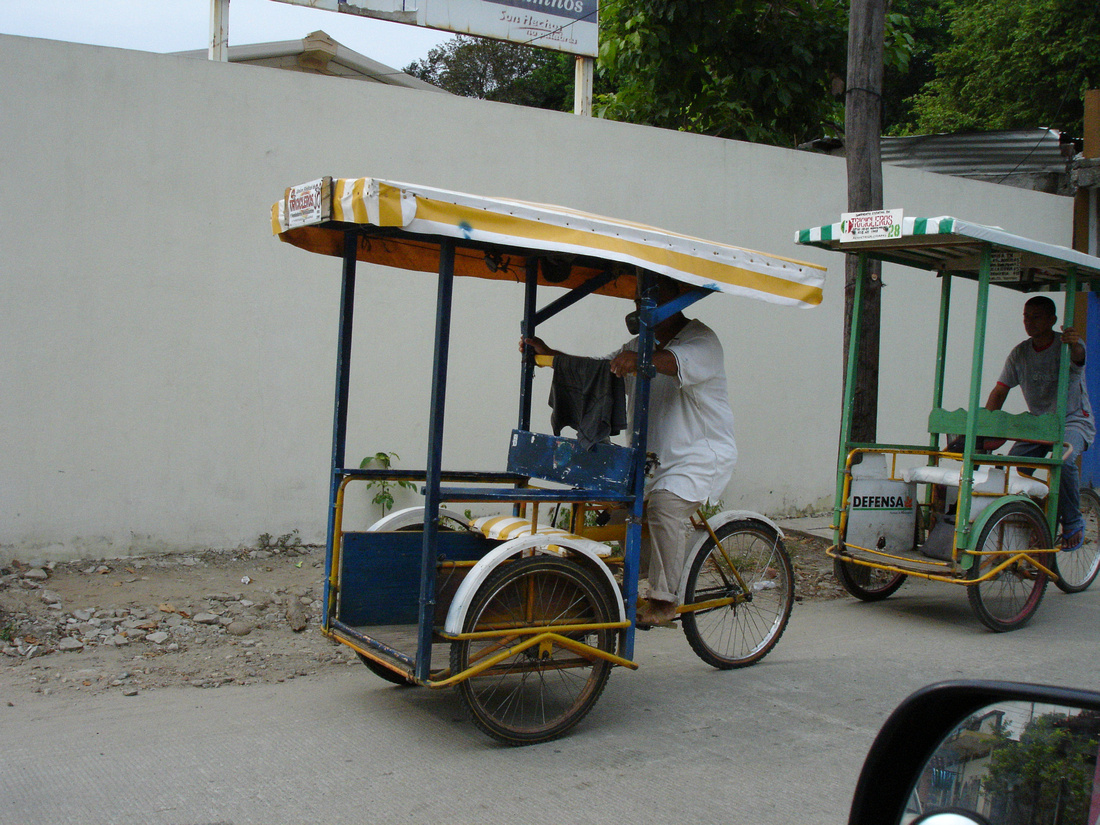

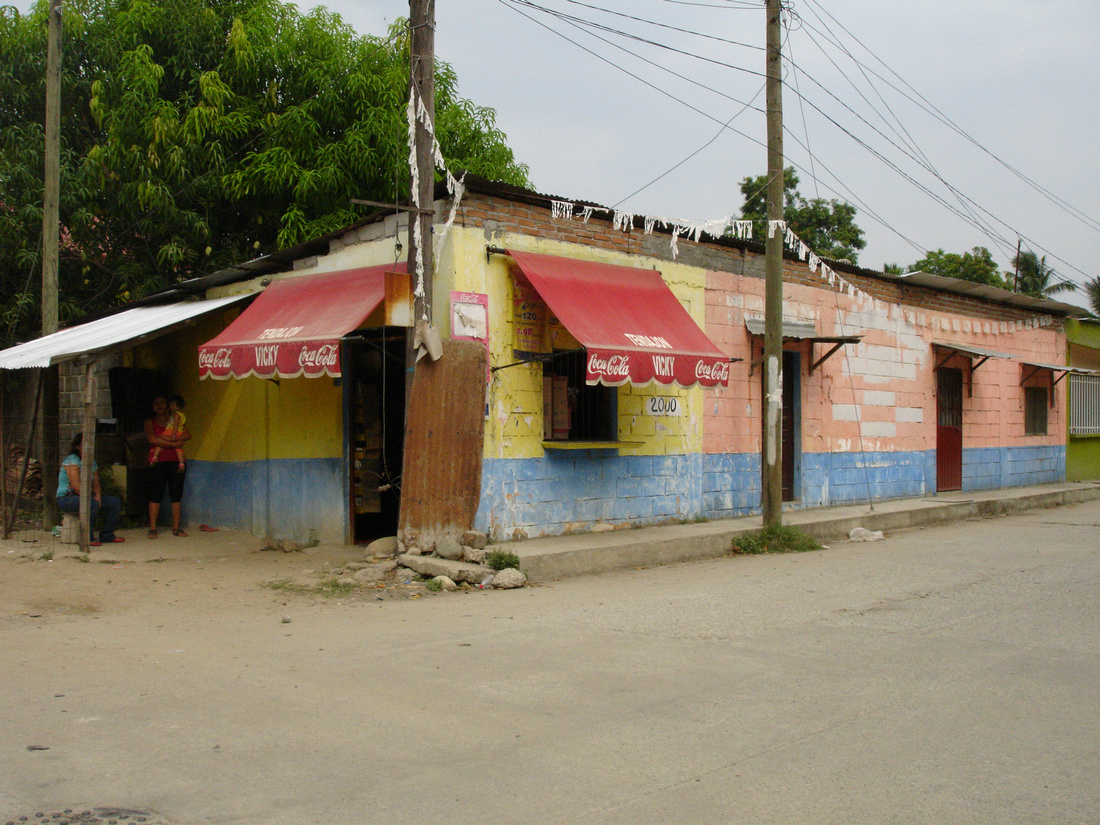

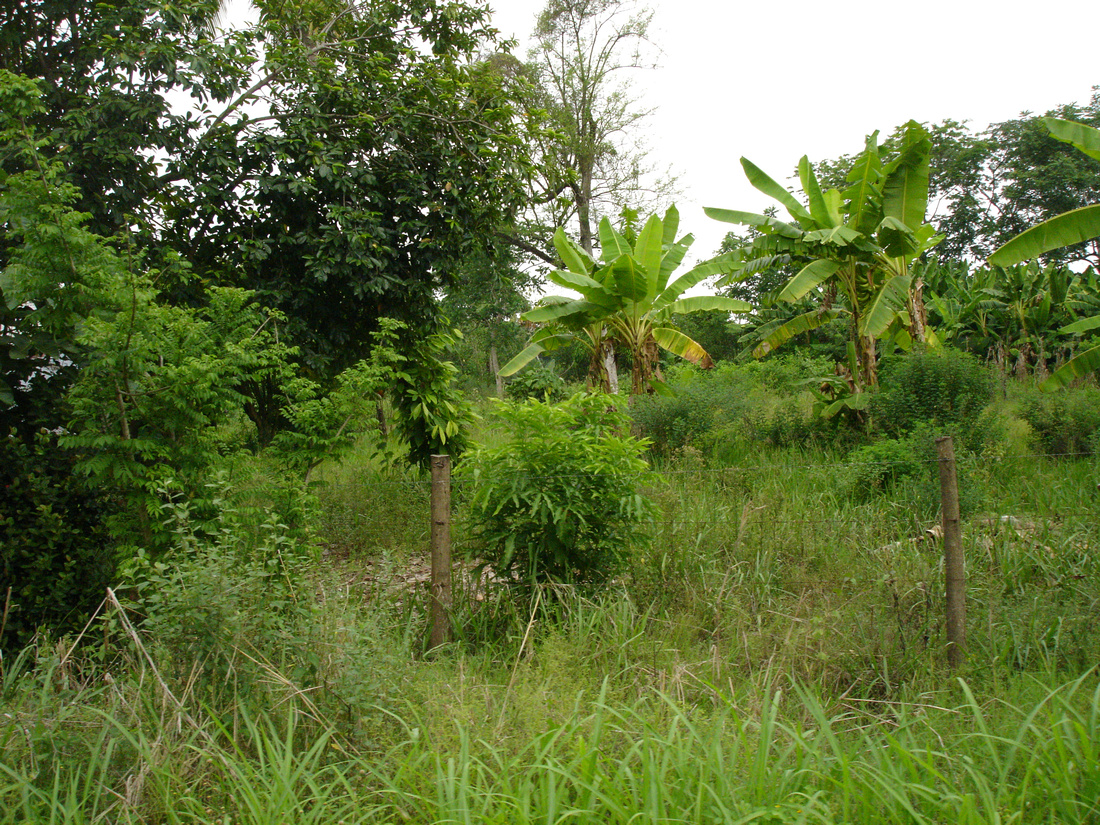

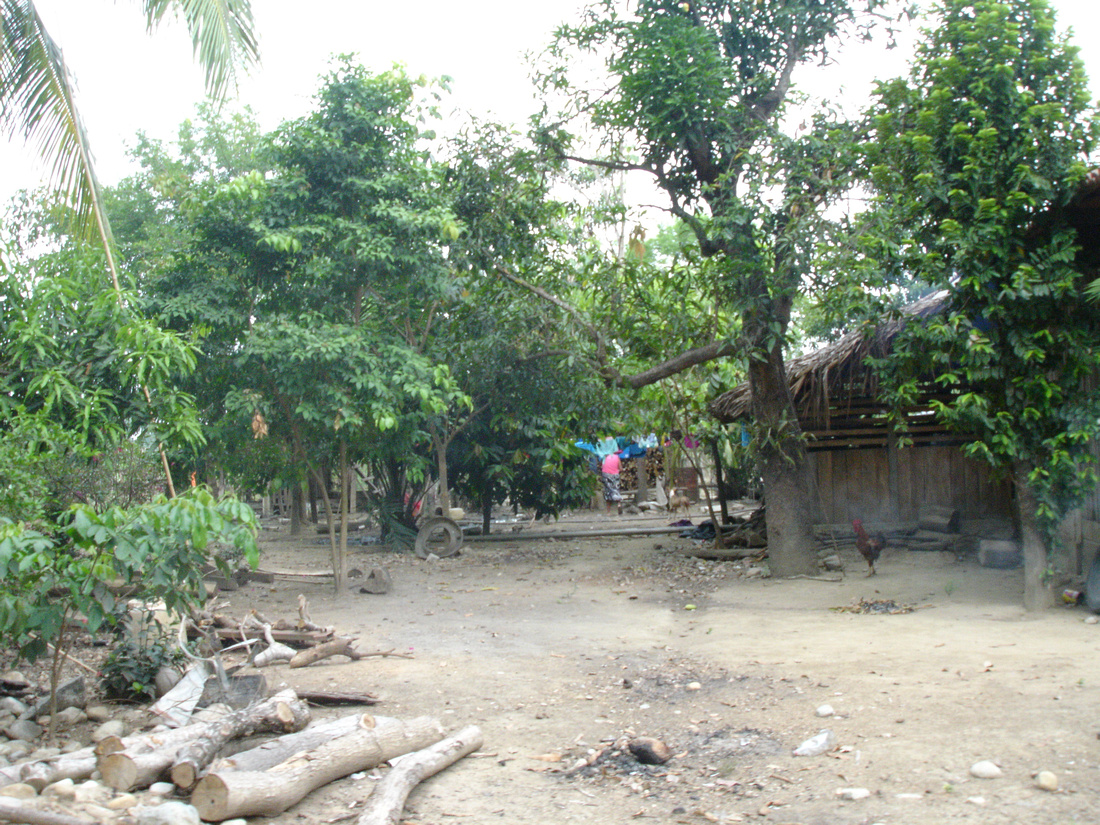

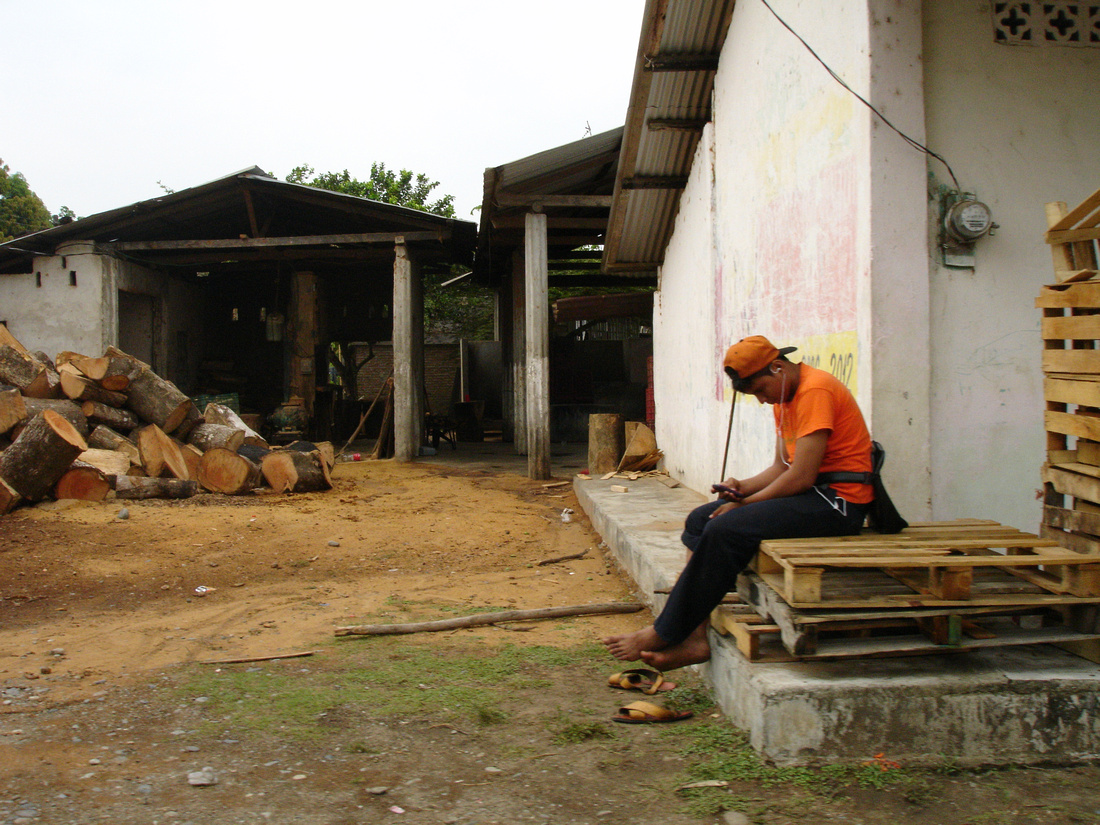

We kind of fell into a caravan. Good thing because the detour was pretty complicated.
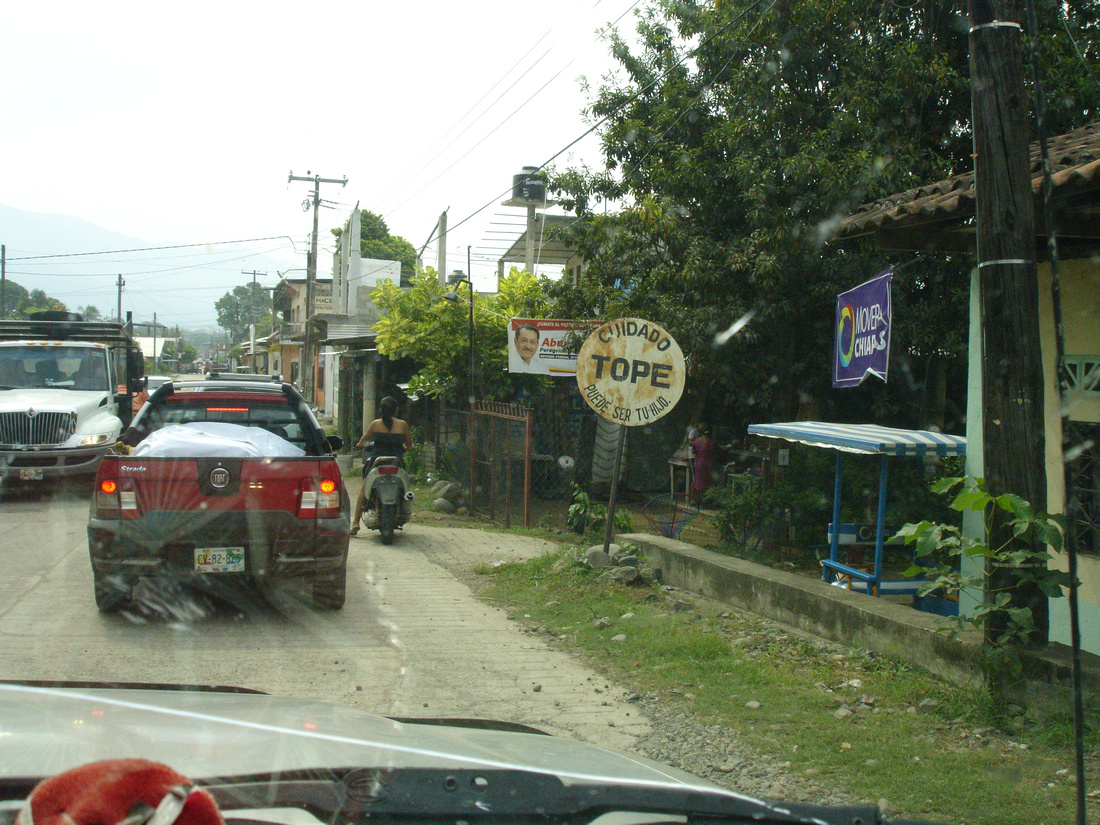

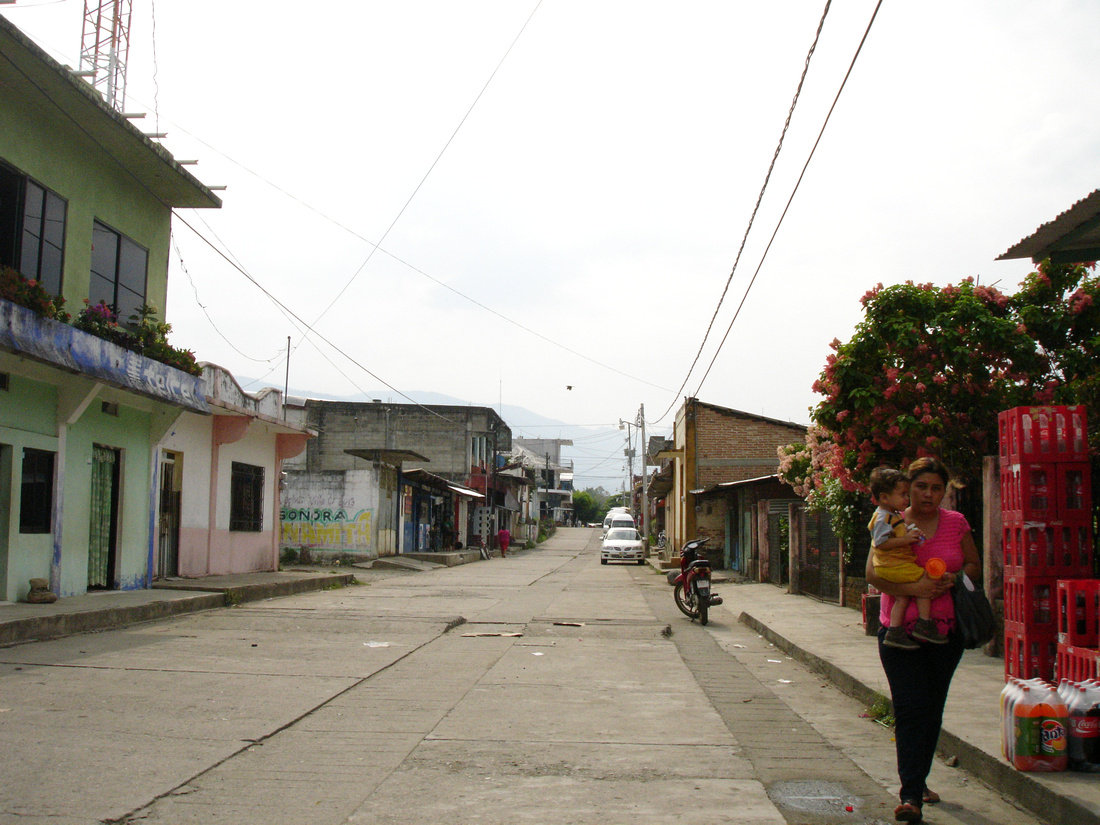

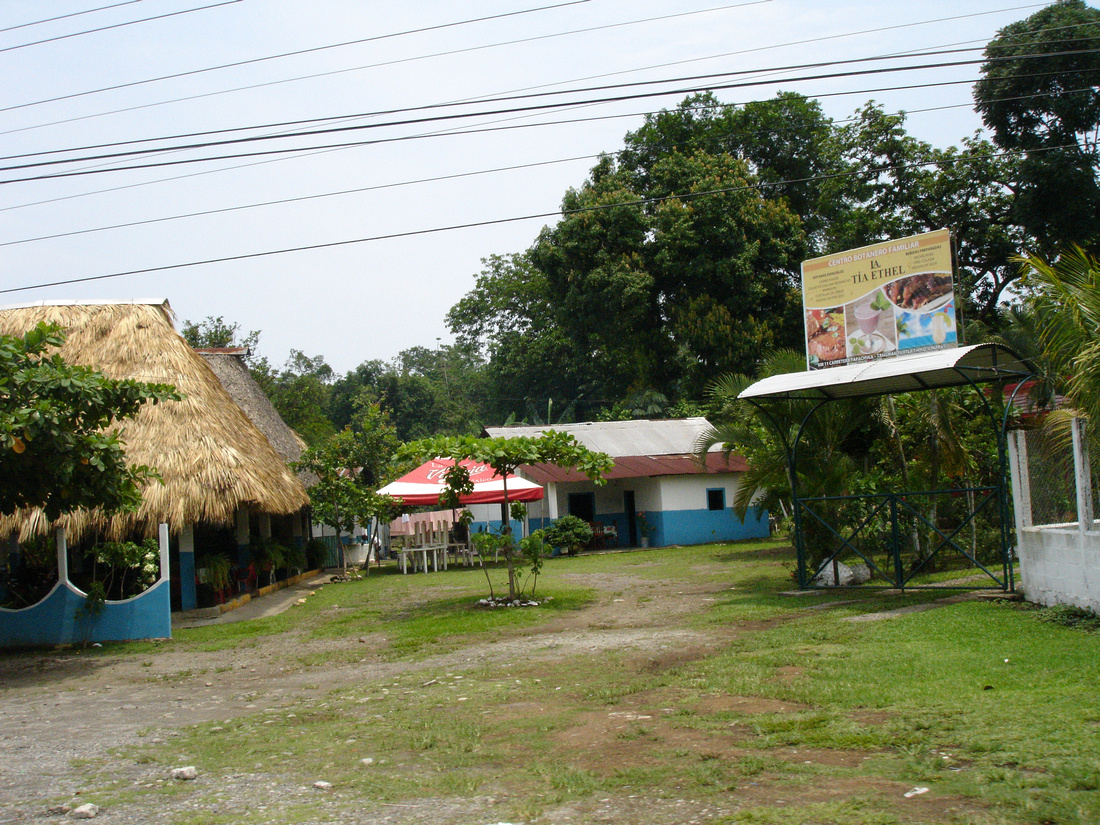



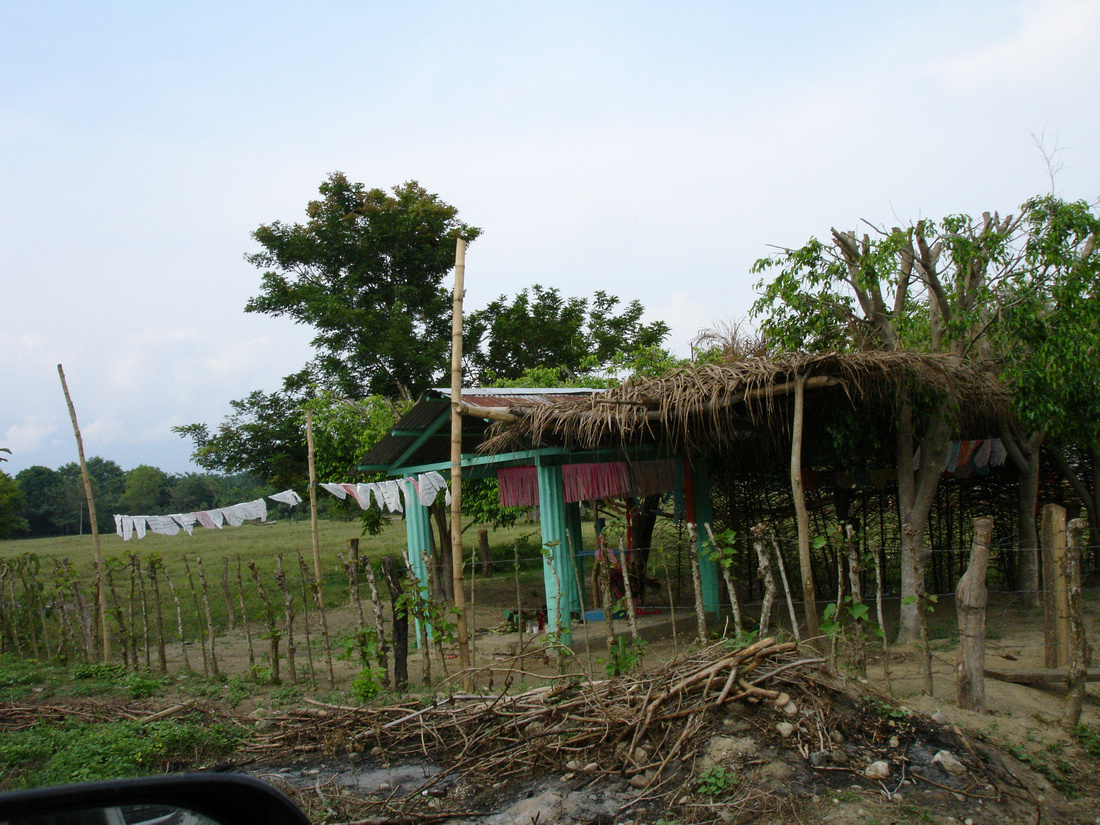

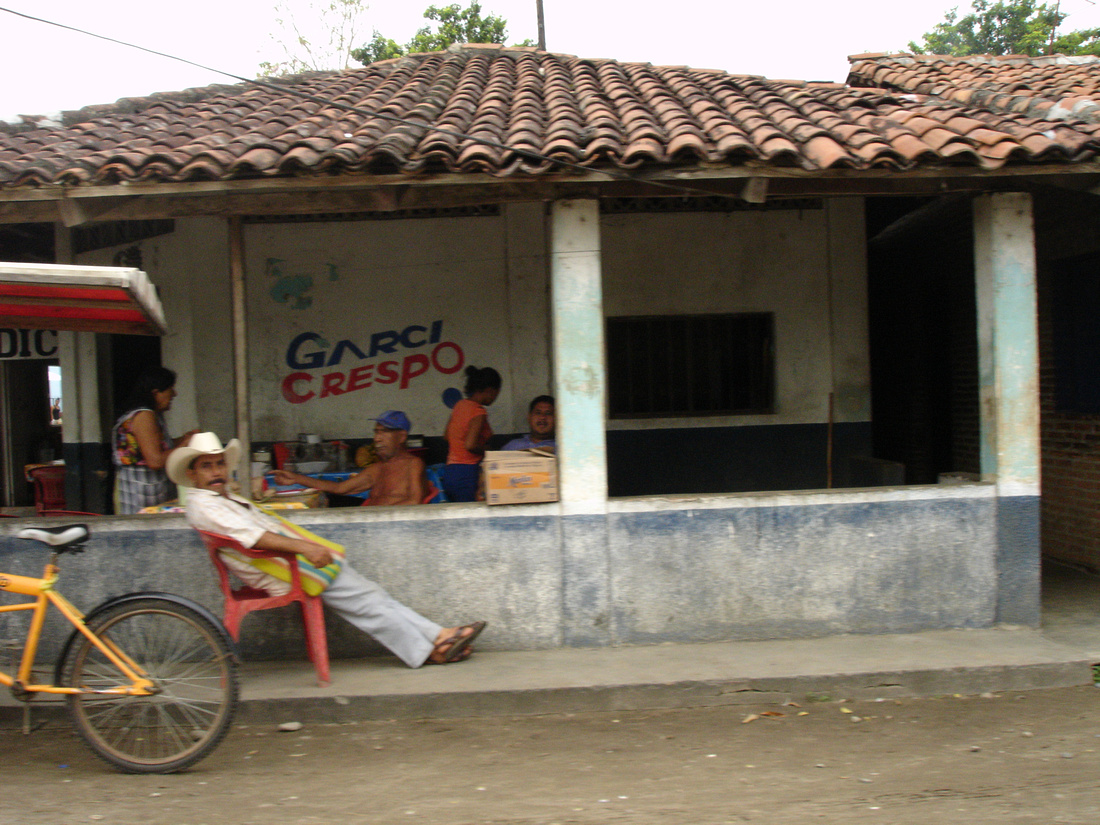

Some of the teachers here in Oaxaca are striking again. I read that a lot of the fuss is over the teachers having to pass tests in their content area. Blocking roadways wasn’t enough so they decided to block the Pemex factory that distributes gasoline throughout the valley. Stations quickly ran out of gas so traffic was greatly reduced. Many people were out of work because they couldn’t get any products. Here in Tlacolula they also blocked a voting location. The Federal police finally came and removed the teachers. I did read that one of the conditions the teachers were asking for was a hundred percent pay raise. You’ll see in the videos as we passed the two blocked areas that most of the cars are newer. Folks that are farmers cannot afford such cars. In fact we have only one friend that drives a newer model. He works for the electric company. There are a couple of nearby villages that told their teachers that if they leave school to protest, don't come back. The teachers stayed. Wish all towns and villages would do that. The kids ended up missing about two and a half weeks of school. The teachers stipulated that if they caught anyone taking pictures of their protest, they would confiscate either cell phone or camera. We ignored the warning and took these videos. We figured as were were on the highway, it was safe.
This video is passing the Pemex distribution center outside of Tule. Under the tarps are the protesters.

This video shows the teachers blocking a voting station in Tlacolula. Again mostly new cars.

Yesterday we signed papers to transfer our land into our names. It was quite a process getting to this point. We should have our title well before our trip to the US in November.
Felipe's grand daughter is here from North Carolina for the summer. Her sister's 3rd birthday was back in April and June18th marked our third year here. On the 27th of June we are going to have a fiesta celebrating the three events. We are going to provide the location, tables and chairs, and the cake. Margarita's family is going to provide tamales. Yummy!! Photos to follow in our blog next month........
Memorial Day and American exceptionalism
A while back an acquaintance wrote me that he didn’t believe that America was an exceptional country. I was shocked to hear an adult that grew up in the US make that statement. It immediately reminded me of a few students I’d had through the years. These students refused to understand that their parents were exceptional. Their parents had worked hard to give their children a better life, had made sacrifices, found ways to better themselves and to be better providers. But the parents were not perfect and maybe that was the problem of the students. The students had expected perfection.
America wasn’t the first exceptional nation. Throughout history there have been several, and it is an insult to not recognize that these great nations contributed so much to civilization. Possibly my acquaintance doesn’t understand that it’s not specifically governments that make a country exceptional. It’s the people that make a country exceptional. A government has to provide an atmosphere that makes it possible for its citizens to dream and experiment. America has done that very thing. From the beginning Americans used the fertile intellectual environment to grow and create. Our mistakes distract from our greatness but they do not distract from our being an exceptional nation. There’s a difference. If a family with five siblings of modest means produces a surgeon, a mathematician, and an educator, the fact that the two remaining siblings wasted their lives does not distract from the exceptionalism of the other three.
Perhaps it’s because I’ve resided in a country that doesn’t provide the same foundation for exceptionalism as America that our exceptionalism stands out so much to me. There certainly are many exceptional Mexicans. Their ideas and contributions are changing their country. But their numbers pale compared to the United States.
I’ve wondered if my acquaintance is aware of the exceptional nature of our Constitution, a long standing document that changed the lives of those living in the US and eventually had its effect on the entire world. Again the faults of our founding fathers might distract from their greatness but does not erase their exceptionalism.
Unfortunately the mindset of my acquaintance is all too prevalent in America today. Many children are poisoned by the rhetoric that success in the US has become unattainable for many especially for minorities. The results of that message have been catastrophic. Should we be surprised that we have an abundance of our population taking what they believe should be rightly theirs.
I am proud to have come from an exceptional nation. I marvel at the accomplishments of many of my fellow Americans. My children now have the opportunity to become exceptional. Whatever they endeavor to do; it’s my wish they strive to be their best.
As Memorial Day approaches I give thanks to our leaders both past and present. I also give thanks to those who unselfishly served and gave their lives in the military even when our goals were confusing. American exceptionalism both in and out of the military are directly tied to the greatness of the United States. Celebrating exceptionalism isn’t ethnocentric and excuses don’t have to be made where exceptionalism exists.